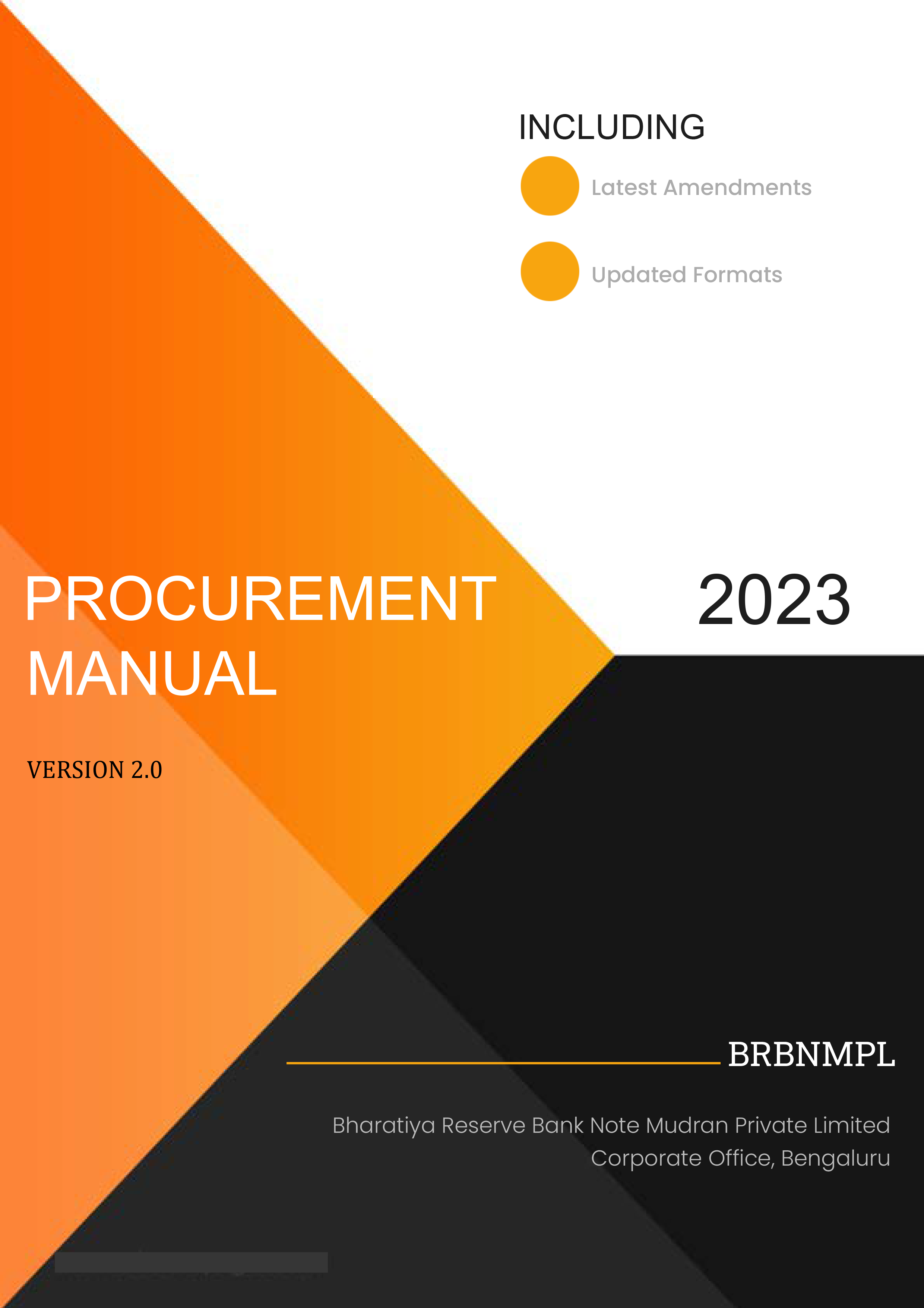

P a g e | 1
Index……………………………………………………………………………………..
1
Abbreviations……………………………………………………………………………
18
PART A: CHAPTERS………………………………………………………………….
22
1
Chapter 1: Introduction……………………………………………………..
23
1.1
About this Manual……………………………………………………………..
23
1.2
Intent of the Manual……………………………………………………….......
23
1.3
Applicability, Deviations, Amendments and Revisions ……………………
24
1.3.1
Applicability and Deviations .…………………………………….
24
1.3.2
Amendments and Revisions……………………………………..
24
1.4
Definitions……………………………………………………………………...
25
1.4.1
Goods …….……………………………………………………….
25
1.4.2
Works……………………………………………………………….
25
1.4.3
Services…………………………………………………………….
26
1.4.4
Consultancy Services…………………………………………….
26
1.4.5
Other Services…………………………………………………….
26
1.4.6
Outsourcing of Services……..…………………………………...
27
1.4.7
Bid…………………………………………………………………..
27
1.4.8
Procurement…..…………………………………………………...
27
1.4.9
e-Procurement…………………………………………………….….
27
1.4.10
Bidder………….……………………………………………………
27
1.4.11
Contract…………………………………………………………….
27
1.4.12
Contractor………………………………………………………….
28
1.4.13
Stores………………………………………………………………
28
1.4.14
Competent Financial Authority…………………………………..
28
1.4.15
Financial Powers…………………………………………………..
29
1.4.16
Purchase Indent……………………………………………………
29
1.4.17
Tender Committee (TC) / Tender Evaluation Committee (TEC)
29
1.4.18
Head of Division……………………………………………………
29
2
Chapter 2: Procurement – Principles and Policies…………………….
30
2.1
Canons of Financial Propriety………………………………………………..
30
2.2
Code of Ethics…………………………………………………………………
30
2.2.1
Obligations for Proactive Disclosures…………………………..
31
2.2.2
Punitive Provisions………………………………………………..
31
2.2.3
Integrity Pact (IP) …………………………………………………
32
2.3
Basic Aim of the Procurement Function…………………………………….
34
2.3.1
Refined Concepts of Cost and Value – Value for Money……..
35
2.4
Laws / Guidelines governing Procurement…………………………………
35
2.5
Special obligations of Public Procurement………………………………….
36
2.5.1
Equality for Bidders………………………………………………..
36
2.5.2
Transparency and Disclosures of Procurement Decisions……
37
2.5.3
External Accountability……………………………………………
37
2.6
Fundamental Principles of Public Buying……………………………………
37
2.7
Purchase Policy………………………………………………………………...
38

P a g e | 2
2.7.1
Public Procurement Policy for Micro and Small Enterprises …
38
2.7.2
Public Procurement Policy (Preference to Make in India)…….
38
2.8
Total cost of Ownership - Life Cycle Cost……………………………..……
39
2.9
Value for Money……………………………………………………………….
39
2.10
Restrictions on Public Procurement from countries sharing a land border
with India……………………………………………………………………….
40
3
Chapter 3: Procurement – Roles and Responsibilities…………………
42
3.1
Introduction……………………………………………………………………..
42
3.1.1
Strengthening of Materials Management Division (MMD)…….
42
3.1.2
Centralized Procurement…………………………………………
42
3.1.3
Common Procurement for BRBNMPL and SPMCIL Presses..
42
3.1.4
Procurement by Materials Management Division………………
43
3.1.5
Procurement by User Department……………………………….
43
3.2
Organization Structure……………………………………………………......
44
3.2.1
CGM/SGM/O-I-C……………………………...........................
44
3.2.2
GM - Materials Management Division [GM (MMD)]…………..
44
3.2.3
GM/DGM - Finance and Accounts [GM/DGM (F & A)]……….
45
3.2.4
GM - Prod. [GM (P)] and GM – Maint. [GM (M)]…….…………
45
3.2.5
DGM - Materials Management Division [DGM (MMD)]………..
45
3.3
Committees…………………………………………………………………….
46
3.3.1
Bid Opening Committee (BOC) ………………………………….
46
3.3.2
Tender Evaluation Committee (TEC) ………………………......
46
3.3.3
Special Tender Evaluation Committee (STEC)…………………
47
3.3.4
Condemnation Committee (CC) …………………………………
47
3.3.5
Scrap Disposal Committee (SDC) ……………………………….
48
3.4
Market Intelligence Cell……………………………………………………….
49
3.5
Time Limit for procurement & Accountability……………………………….
49
3.6
Work & Responsibility Sharing when Higher Authority is CFA……………
49
3.6.1
Introduction………………………………………………………...
49
3.6.2
Techno-Economic Decisions……………………………………..
50
3.6.3
Committee Decisions…………………………………………......
50
3.6.4
Contract Management Decisions……………………………......
50
3.6.5
Higher Level Decisions……………………………………………
51
3.6.6
Stages at which approval of Higher-Level CFA shall be
required ……………………………………………………………
51
4
Chapter 4: Types and Modes of Procurement………………………….
52
Section I: Types of Procurement………………………………………….
52
4.1
Capital Procurement……………………………………………………….....
52
4.2
Revenue Procurement………………………………………………………..
52
4.3A
Indigenous Procurement……………………………………………………..
52
4.3B
Foreign procurement (Import) ……………………………………………….
52
Section II: Modes of Procurement………………………………………..
52
4.4
Classification of various modes of procurement……………………………
52

P a g e | 3
4.5
Proprietary Article Purchase (PAP) …………………………………………
53
4.6
Single Tender Enquiry (STE) without a PAC……………………………….
54
4.7
Global Tender Enquiry (GTE)/International Competitive Bidding (ICB)…
54
4.8
Open Tender Enquiry (OTE)/National Competitive Bidding (NCB)………
56
4.9
Limited Tender Enquiry (LTE) ……………………………………………….
57
4.9.1
Special Limited Tender Enquiry (SLTE) ……………………….
58
4.9.2
Limited Enquiry by inviting sealed quotations for purchases
below ₹2.5 lakh…………………………………………………….
58
4.10
Express Tenders………………………………………………………………
58
4.11
Direct Procurement: Purchase of Goods without Quotation……………...
59
4.12
Direct Procurement: Purchase of Goods by Local Purchase Committee
59
4.13
Direct Procurement: Purchase of Goods by Spot Purchase Committee
(SPC) …………………………………………………………………………..
60
4.14
Rate Contracts (RC) ………………………………………………………....
61
4.15
Repeat Orders…………………………………………………………………
62
4.16
Procurement through Government e-Marketplace (GeM)…………………
64
Section III – Other Procurements with special features………………
65
4.17
Handling Procurement in urgencies / Emergencies and Disaster
Management……………………………………………………………………
65
4.18
Buy Back offer…………………………………………………………………
65
4.19
Turnkey Contract………………………………………………………………
65
4.20
Capital Goods/Equipment (Machinery and Plant – M&P)…………………
66
4.21
Annual Maintenance Contract (AMC) ………………………………………
68
5
Chapter 5: Procurement Planning and Indenting Materials………….
70
Section I: Procurement Planning………………………………………….
70
5.1
Procurement Planning………………………………………………………..
70
5.2
Finalization of annual requirements…………………………………………
70
5.3
Review of the procurement plan……………………………………………..
71
5.4
Deciding on Mode of Procurement………………………………………….
71
Section II: Indenting Materials…………………………………………….
71
5.5
ABC categories of Items - Pareto principle…………………………………
71
5.6
Indenting of Material…………………………………………………………..
71
5.7
Preparation of Indent: Quantity………………………………………………
71
5.8
Units of Quantity……………………………………………………………….
72
5.9
Specifications……………………………………………………………….....
72
5.9.1
PAC Specifications………………………………………………..
72
5.9.2
Branded Product…………………………………………………..
72
5.9.3
Industrial Specification……………………………………………
72
5.9.4
Ad-hoc Specifications………………………………………….....
73
5.9.5
As per Sample……………………………………………………..
73
5.9.6
Common Use Items……………………………………………….
73
5.9.7
Specifications of Integrated v/s Sub-systems of Production
Lines………………………………………………………………..
73
5.9.8
Guidelines on Preparation of Technical Specifications……….
73

P a g e | 4
5.9.9
Technical Advisory Group………………………………………...
74
5.10
Approval of Indent (Purchase Proposal) ……………………………………
75
5.11
Estimated Rate………………………………………………………………...
75
5.12
Products Requiring Security Clearance…………………………………….
75
5.12.1
Criteria of classifying Security sensitive and Non-Security non-
sensitive machinery / items……………………………………….
75
5.12.2
Precautions in Procurement……………………………………...
75
5.12.3
Precautions in Disposal…………………………………………..
76
Section III: Categorisation of Goods for Procurement…………………
76
5.13
Stock Categorisation…………………………………………………………..
76
5.13.1
Stock Items…………………………………………………………
76
5.13.2
Non-Stock Items…………………………………………………...
77
5.14
Source Categorisation…………………………………………………………
77
5.14.1
Open Market Items………………………………………………..
77
5.14.2
Restricted Sources Items…………………………………………
77
5.14.3
Single Source Items……………………………………………….
77
5.15
Categorisation based on Value or Importance of the item…………………
78
5.15.1
ABC Categories of Items - Pareto principle…………………….
78
6
Chapter 6: Sourcing and Supplier Appraisal…………………………….
79
6.1
Empanelment of vendors………………………………………………………
79
6.1.1
Procedure for Registration of vendors…………………………...
79
6.2
Invitation of Expression of Interest……………………………………………
82
6.3
Shortlist of Suppliers………………………………………………………......
82
6.4
Debarment of Suppliers ….……………………………………………………
83
6.4.1
Grades of Debarment of Suppliers………………………………
83
6.5
Holiday Listing (Temporary Debarment - suspension)……………………..
84
6.6
Removal from List of Registered Suppliers………………………………….
84
6.7
Banning of Firms………………………………………………………………..
85
A
Debarment limited to BRBNMPL and its subsidiaries………….
86
B
Debarment to be extended beyond BRBNMPL and its
subsidiaries………………………………………………………...
87
6.8
Debarment Procedures………………………………………………………..
89
6.9
Safeguarding Procuring Entity’s Interests during debarment of suppliers
89
7
Chapter 7: Tendering Systems……………………………………………..
90
Section I: Bidding System…………………………………………………...
90
7.1
Single Stage Bidding System ……..………………………………………….
90
7.1.1
Single Stage Single Envelop System……………………………
90
7.1.2
Single Stage Two Envelops System (Two Bid System)……….
90
7.1.3
Single Stage Multiple Envelops System with pre-qualification..
91
Section II: Pre-Qualification Bidding (PQB)……………………………..
91
7.2
Pre-Qualification Bidding (PQB).…………………………………………….
91
7.3
Pre-Qualification Bidding (PQB) contd..…………………………………….
91
7.4
Pre-qualification Criteria ..…………………………………………………….
92

P a g e | 5
7.5
Categories of procurement Where PQB is Desirable or Undesirable……
92
7.5.1
Desirable categories………………………………………………
92
7.5.2
Undesirable Categories……….……….……….……….………..
92
7.6
Post-qualification criteria…………………………………………….………...
93
7.7
PQB Procedures……….……….……….……….……….……….………......
93
7.7.1
Advertisement and Notification……….……….……….………...
93
7.7.2
Evaluation……….……….……….……….……….……….……...
93
7.7.3
Subsequent Procurement tender……….……….……………….
94
7.7.4
PQB Procedures for procurement of CWBN paper and Ink…..
94
7.8
PQC Summary Table……….……….……….……….……….……………...
96
Section III: Tenders Involving Samples…………………………………..
97
7.9
Existing Guidelines……….……….……….……….……….…………………
97
7.10
Indeterminable Characteristics……….……….……….……….……………
97
7.11
Specifications Not Known……….……….……….……….……….…………
97
7.12
Indigenization and Development tenders……….……….……….…………
97
7.13
Purchaser's Sample……….……….……….……….……….……………….
98
7.14
Pre-production sample……….……….……….……….……….…………….
98
7.15
Testing of Samples……….……….……….……….……….……….…….....
98
7.15.1
Testing Procedures and Declarations……….……….…………
98
7.15.2
Validation / Prolonged Trials……….……….……….…………..
99
7.15.3
Testing Laboratories……….……….……….……….…………...
99
7.15.4
Failure of samples……….……….……….……….……………..
99
7.16
Handling and Preservation of Samples……….……….……….……………
99
Section IV: Indigenization and Development Tenders……….……….
100
7.17
Indigenization and Development tenders……….……….……….…………
100
Section V: Expression of Interest Tenders (EOI) – Two Stage
Bidding…………………………………………………………………………
100
7.18
Expression of Interest Tenders – Market Exploration – Two Stage Bidding
100
Section VI: Tenders for Disposal of Scrap……….……….……………..
102
7.19
Tenders for Disposal of Scrap……….……….……….……….…………….
102
Section VII: eProcurement………………………………………………….
102
7.20
eProcurement………………………………………………………………….
102
8
Chapter 8: Pre-Tender Stage and Bid Opening…………………………
104
8.1
Introduction……………………………………………………………….........
104
8.1.1
Tender Fee…………………………………………………………
105
8.2
Standard Bidding Documents (SBD) ……………………………………….
105
8.3
Invitation for Bids / Notice Inviting Tender (NIT) …………………………..
106
8.4
General and Special instructions -to Tenderers (GIT and SIT)…………..
106
8.4.1
Eligibility…………………………………………………………….
107
8.4.2
Clarification of Bidding Documents………………………………
108
8.4.3
Pre-Bid conference………………………………………………..
108
8.4.4
Amendment of Bidding Documents……………………………..
108
8.4.5
Bid Validity………………………………………………………….
108
8.4.6
Late Bids……………………………………………………………
109

P a g e | 6
8.4.7
Modification, Alteration and Withdrawal of Bids………………..
109
8.4.8
Authorized Dealer/Distributor/Representative of supplier….....
109
8.4.9
Conflict of Interest among Bidders………………………………
110
8.5
Forms of bid & qualification information…………………………………….
110
8.6
Terms & Conditions of the Contract…………………………………………
111
8.7
Forms of Security………………………………………………………………
111
8.7.1
Earnest Money Deposit…………………………………………..
111
8.7.2
Performance Security………………………………………….....
113
8.7.2.1
Non-receipt of Performance Security and
Contract by BRBNMPL……………………………..
114
8.7.2.2
Verification of Bank Guarantees…………………...
114
8.7.2.3
No Claim Certificate and Release of Contract
Securities…………………………………………….
115
8.8
Publication of Tenders…………………………………………………………
115
8.8.1
Media for Publicities……………………………………………….
115
8.8.2
Guidelines for Publicity……………………………………………
116
8.8.3
Economy in Publicity………………………………………………
117
8.9
Tender Submission & Bid Opening……………………………………….....
117
8.9.1
Receipt & Custody of Tenders……………………………………
117
8.9.2
Procedures to be followed during Bid Opening…………………
118
9
Chapter 9: Payment Terms and Price Variations……………………….
120
9.1
Payment Terms and Price Variations……………………………………….
120
9.2
Firm Price vis-à-vis Variable Price…………………………………………..
121
9.3
Exchange Rate Variation (ERV) …………………………………………….
122
9.3.1
Documents for claiming ERV…………………………………….
122
9.4
Statutory Duties and Taxes on Domestic Goods…………………………..
123
9.5
Duties, taxes and other levies of Local bodies……………………………..
123
9.6
Custom Duty on Imported Goods……………………………………………
124
9.7
Duties / Taxes on raw materials……….……….……….……….…………..
124
9.8
Terms of payment for Domestic Goods……….……….……….…………..
124
9.9
Modes of payment for Domestic Goods……….……….……….………….
125
9.10
Terms of payment for Imported Goods……….……….……….……………
125
9.11
Modes of Payment for Imported Goods……….……….……….…………..
125
A. Letter of Credit (LC)………………………………………………………
126
9.11.1
What is an LC……….……….……….……….……….…………..
126
9.11.2
Reasons for using LC……….……….……….……….……….....
126
9.11.3
Forms of LC used in BRBNMPL……….……….……….……….
126
9.11.3.1
Irrevocable letter of credit……….……….…………
126
9.11.3.2
Revolving letter of credit……….……….…………..
127
9.11.3.3
Revocable letter of credit…………………………..
127
9.11.3.4
Confirmed letter of credit…………………………..
127
9.11.4
Payment through letter of credit……….……….……….…….....
127
9.11.5
Essential Elements of LC……….……….……….……………….
128
9.11.6
Documents to be provided by the Seller……….………………..
128

P a g e | 7
9.11.7
Extension of LC……….……….……….……….……….………...
129
9.11.8
Amount of LC……….……….……….……….……….…………..
129
B. Direct Bank Transfer (DBT)……………………………………………..
129
9.11.9
Documents Needed for DBT……….……….……….…………...
129
9.11.10
Specified time limit and delivery Schedule for Imports………..
130
9.11.11
Payment of Air Freight Charges……….……….……….…….....
130
9.12
Advance payment to Suppliers……….……….……….……….……………
130
9.13
Intermediate Payments……….……….……….……….……….……………
131
9.14
Proforma Invoice Payments………………………………………………….
131
9.15
Documents for Payment……….……….……….……….……….…………..
132
10
Chapter 10: Tender Evaluation and Award of Contract……………….
133
10.1
Tender Evaluation……….……….……….……….……….……….………...
133
10.2
Preliminary Examination……….……….……….……….……….……….....
133
10.3
Conditions under which Tenders can be declared Unresponsive………..
133
10.4
Non-conformities between Figures and Words……….……….……………
134
10.5
Discrepancies between original and additional copies of a Tender……….
135
10.6
Minor Infirmity / irregularity / Non-Conformity……….……….……………..
135
10.7
Clarification of Bids/Shortfall Documents……….……….……….…………
135
10.8
Tenderers Contacting BRBNMPL during Evaluation……….……………...
136
10.9
Evaluation of Responsive Bids and Decision on Award of Contract……..
136
10.9.1
Evaluation of Techno-commercial Bid…………………………..
136
10.10
Evaluation of Financial Bids and Ranking of Tenders……………………...
138
A
General
138
B
ICB/GTE Tenders
140
10.11
Consideration of Unsolicited offers in LTE……….……….……….………..
141
10.12
Consideration of Lack of Competition in OTE/GTE and LTE .……………..
142
10.13
Reasonableness of Prices……….……….……….……….……….………..
142
10.13.1
Price evaluation……….……….……….……….……….………..
142
A
Estimation of Cost…………………………………..
142
B
Comparison with Last Purchase Price (LPP)…….
144
10.13.2
Consideration of Abnormally Low Bids ….…….……….……….
145
10.14
Cartel Formation / Pool Rates……….……….……….……….……….…….
145
10.15
Handling Dissent……….……….……….……….……….……….……….....
145
10.15.1
Dissent among Tender Evaluation Committee……….………...
145
10.15.2
Dissent among CFA……….……….……….……….……………
146
10.16
Negotiations……….……….……….……….……….……….……………….
146
10.16.1
Only as a rare exception……….……….……….……….……….
146
10.16.2
On CFA's Approval……….……….……….……….……………..
147
10.16.3
Counter-offers are Negotiations by other means……….………
147
10.16.4
Whom to Negotiate with……….……….……….……….………..
147
10.16.5
Procedure for Negotiation……….……….……….………………
147
10.17
Award of Contract, Contract Execution and Disclosure……….…………..
148
10.17.1
Recommendations for Award of Contract……….……….……..
148
10.17.2
Variation of Quantities at the Time of Award……….…………..
149

P a g e | 8
10.17.3
Splitting of Contracts/Parallel Contracts……….……….…….....
149
10.17.4
Notification for Award of contract (LoI) to Successful
Bidder……………………………………………………………….
150
10.17.5
Signing of Agreement / issue of Supply Order / Framing of
Contract ………………………………………...……….…………
151
10.17.6
Performance Security……….……….……….……….………….
152
10.17.7
Acknowledgement of Contract by Successful Bidder………….
153
10.17.8
Safe Custody & Monitoring of EMD, Performance Security…..
153
10.18
Cancellation of Procurement Process/Rejection of All Bids/Re-tender….
154
11
Chapter 11: Contract Management……………………………………….
155
Section I: Contract Management………………………………………….
155
11.1
Contract management……….……….……….……….……….…………….
155
11.2
Amendment to Contract……….……….……….……….……….…………..
155
11.3
Safeguards for handing over BRBNMPL Materials / Equipment to
Contractors……….……….……….……….……….……….……….……….
155
11.4
Payment to the Supplier……….……….……….……….……….…………..
156
11.4.1
Payment for Works contracts……………………………………..
156
11.4.2
Payment for contracts for Goods and Services…………………
156
11.5
Safe Custody, Monitoring and Return of Securities and Other
Instruments……….……….……….……….……….……….……….……….
157
11.6
Closure of Purchase File……….……….……….……….……….………….
157
11.7
Contract Enforcement……….……….……….……….……….……………..
157
11.8
Imposition of sanctions……….……….……….……….……….……….…...
157
11.9
Vendor performance Monitoring……….……….……….……….…………..
157
11.10
Risk in Goods - The Concept of "Passing of Title of Goods"……………..
158
Section II: Liquidated Damages……………………………………………
159
11.11
Liquidated Damages……….……….……….……….……….……………....
159
11.12
Force majeure Clause (FM) ……….……….……….……….………………
159
11.13
Quantum of LD……….……….……….……….……….……….…………….
159
11.14
Waiver of LD and Levy of Token LD……….……….……….………………
160
11.15
Denial Clause (DC) ……….……….……….……….……….……………….
161
Section III: Delivery Schedules and Extension of Delivery……………
161
11.16
Period of Delivery……….……….……….……….……….……….………....
162
11.17
Delivery Schedule……….……….……….……….……….……….………...
162
11.18
Terms of Delivery……….……….……….……….……….……….…………
162
11.19
Acceptance of the stores dispatched after the expiry of delivery period…
162
11.20
Extension of Delivery……….……….……….……….……….……………...
163
11.21
Extension of delivery period in entire/severable contracts……….……….
164
Section IV: Option Clause…………………………………………………..
164
11.22
Option Clause……….……….……….……….……….……….……………..
164
11.23
Conditions governing option Clause……….……….……….……………....
165
Section V: Breach of Contract, Remedies and Termination of
Contract ……………………………………………………………………….
166
11.24
Termination of Contract for Default ……….……….……….……………….
166

P a g e | 9
11.24.1
Options in Terminating Contracts………………………………..
166
11.24.2
Risk Purchase……………………………………………………...
167
11.24.3
Alternative remedies to Risk Purchase Clause…………………
167
11.24.4
Limitation of Liability……………………………………………….
168
11.25
Termination of Contract for Insolvency……….……….……….……………
168
11.26
Termination of Contract for Convenience……….……….……….…………
168
Section VI: Escrow Arrangement……….……….……….……………….
168
11.27
Escrow Arrangement……….……….……….……….……….……………...
169
Section VII: Change Management/Change Request (CR) in IT
applications……………………………………………………………………
169
11.28
Standard Operating Procedure (SoP) for Change Management/Change
Request (CR) in IT applications/modules……………………………………
169
12
Chapter 12: Goods Receiving and Quality Assurance………………..
171
12.1
Introduction……….……….……….……….……….……….………………...
171
12.2
Pre-requisite for goods inspections……….……….……….………………..
171
12.3
Receipt of consignment……….……….……….……….……….……………
171
12.4
Preliminary Inspection……….……….……….……….……….……………..
171
12.5
Detailed Inspection……….……….……….……….……….……….………..
171
12.5.1
Scheduling detailed inspection……….……….……….…………
172
12.5.2
Various Modes of inspection……………………………………...
172
12.6
General Considerations for Inspections……………………………………..
172
12.6.1
Deciding Sample-size……………………………………………..
172
12.6.2
Selecting a representative sample……………………………….
173
12.6.3
Verification of well-defined criteria……………………………….
173
12.6.4
Checking goods packages………………………………………..
173
12.6.5
Other Considerations during Inspection………………………...
174
12.7
Inspection Authorities………………………………………………………....
174
12.7.1
Internal Inspection Authorities……………………………………
174
12.7.2
External Inspecting Authorities…………………………………...
174
12.7.3
Joint Inspection on Complaint……………………………………
175
12.8
Approval of Acceptable deviations…………………………………………..
175
12.9
Storage and Issue of Inspected goods………………………………………
176
12.9.1
Storage of goods…………………………………………………..
176
12.9.2
Issue of goods……………………………………………………..
177
12.10
Documentation of inspection………………………………………………....
177
12.10.1
Inspection Documents…………………………………………….
177
12.10.2
Handling of inspection stamps / inspection documents……….
178
12.11
Guidelines on Pre-Dispatch Inspection Schedule………………………….
179
12.11.1
General Guidelines………………………………………………..
179
12.11.2
Franking clause on Acceptance………………………………….
179
12.11.3
Franking clause on Rejection…………………………………….
179
12.12
Waiver of inspection and acceptance of goods under firm's quality self-
certification……………………………………………………………………..
180
12.13
Warranty clause………………………………………………………………..
180

P a g e | 10
13
Chapter 13: Record Keeping and Reporting…………………………….
183
13.1
Introduction…………………………………………………………………….
183
13.2
Procurement Audit…………………………………………………………….
183
13.3
Procurement Record-keeping………………………………………………..
183
13.4
Procurement Register (PR) ………………………………………………….
184
13.5
Filing Structure…………………………………………………………………
184
13.6
Filing Folders…………………………………………………………………..
185
13.6.1
General Folders……………………………………………………
185
13.6.2
Specific folders for goods…………………………………………
185
13.7
Management Reporting……………………………………………………….
186
14
Chapter 14: Disposal………………………………………………………...
188
14.1
Introduction……………………………………………………………………..
188
14.2
Classification and Categorization…………………………………………….
188
14.3
Segregation and Strong Room……………………………………………….
189
14.4
Marking and Cutting……………………………………………………………
189
14.5
Composition and Description………………………………………………....
190
14.6
Process of Disposal – Survey of scrap by CC ……………………………...
190
14.7
Modes of Disposal……………………………………………………………..
192
14.7.1
Disposal through Tender………………………………………….
192
14.7.2
Disposal through Auction………………………………………....
194
14.7.3
Disposal through eAuction ………………….……………………
195
14.7.4
Disposal at Scrap Value or by other Modes…………………….
198
14.8
Disposal of Security Items…………………………………………………….
199
14.9
Reserve Price Considerations………………………………………………..
200
14.9.1
Drivers of Scrap Prices…………………………………………....
200
14.9.2
Methods of determining Reserve Price………………………….
200
14.10
Repeated Failure to get Reserve price……………………………………....
201
14.11
Conditions of Disposal Applicable to all Modes of Disposal……………….
201
14.11.1
‘As-Is-Where-Is’ basis……………………………………………..
201
14.11.2
Sale of Items / Lots Comprising Hazardous Waste…………….
201
15
Chapter 15: Losses; Write-offs; Grievance/Dispute Resolution;
Audit and Investigations……………………………………………………
203
15.1
Powers to Write Off……………………………………………………………
203
15.2
Losses due to depreciation…………………………………………………...
203
15.3
Losses not due to depreciation………………………………………………
203
15.4
Grievance/Dispute Resolution………………………………………………..
203
15.5
Mechanisms for Grievance Redressal………………………………………
204
15.6
Mode of Settlement of Disputes………………………………………………
205
15.6.1
Adjudication………………………………………………………...
205
15.6.2
Conciliation through Expert Settlement Committee (ESC)……
205
15.6.3
Arbitration ………………………………………………………….
208
15.6.4
Jurisdiction …………………………………………………………
209

P a g e | 11
15.6.5
Governing Law……………………………………………………..
209
15.6.6
Changes introduced by the Arbitration and Conciliation
(Amendment) Act, 2015…………………………………………..
209
15.6.6.1
Independence, Disqualification and Obligations of
arbitrators at the time of appointment……………..
209
15.6.6.2
Fast-tracking Arbitration in India…………………..
210
15.6.6.3
Procedural and Jurisprudence simplified…………
211
15.6.6.4
Proactive Information Disclosures…………………
212
15.6.7
Appealing against arbitration/court award………………………
213
15.6.8
Foreign Arbitration…………………………………………………
214
15.7
Offences Relating to Procurement…………………………………………..
215
15.8
Procurement Investigation…………………………………………………....
215
15.8.1
Procedures on Completion of Investigation…………………….
215
16
Chapter 16: Indigenization and Development Contracts; Make in
India initiatives and Collaborative R&D ………………….……………...
216
16.1
Indigenization and Development Contracts ….…………………………….
216
16.2
Stages in Vendor Development / Indigenization……………………………
216
16.3
Stage I - Selection of Items…………………………………………………
216
16.3.1
Vendor Development……………………………………………..
217
16.3.2
Indigenization……………………………………………………...
217
16.4
Stage II - Development of Engineering aspects of the Item…………..
218
16.4.1
Models of Development of Engineering Aspects of the Item…
218
16.4.2
Acquiring Manufacturing Drawings………………………………
218
16.5
Stage III - EOI Tenders and Development / Indigenization Tenders…
218
16.5.1
Identification of Target Vendor Group……………………………
218
16.5.2
Floating EOI and Development / Indigenization Tenders……..
219
16.5.3
General Principles for Development / Indigenization Contracts
220
16.6
Stage IV - Contract Management………………………………………….
222
16.6.1
Inspections………………………………………………………....
222
16.6.2
Helping hand to New Entrants……………………………………
222
16.6.3
Incentives in Development Contract Management…………….
223
16.7
Stage V - Post development Actions……………………………………..
223
16.7.1
Quantity for Development Commitment…………………………
223
16.7.2
Period of Development Commitment……………………………
223
16.7.3
Further Development Orders……………………………………..
223
16.8
Stage VI - Retention of Reliable & Efficient Established Vendors…..
224
16.9
Applicability of Other Chapters……………………………………………….
224
16.10
Development/Indigenization through Make in India Initiatives…………….
224
16.11
Research and Development (R&D) Activities……………………………….
226
16.12
Collaborative R&D……………………………………………………………..
227
16.12.1
Introduction…………………………………………………………
227
16.12.2
Collaborative R&D Procedure……………………………………
227
16.12.3
Evaluation procedure……………………………………………...
228
16.12.4
Evaluation of technical proposal………………………………….
228

P a g e | 12
16.12.5
Technical Evaluation Scoring Matrix…………………………….
229
16.12.6
Quality & Cost Based Selection (QCBS)……………………….
229
16.13
Types of Technical Collaboration Agreements……………………………..
230
16.13.1
Firm-Fixed-Price Contract………………………………………...
230
16.13.2
Fixed Price Contract with Price Variation Clause………………
231
16.13.3
Fixed Price Contract Providing for Re-determination of Price…
231
16.13.4
Fixed Price Incentive Contract……………………………………
231
16.13.5
Cost Plus Contract…………………………………………………
231
16.14
Cost & Time Estimation of R&D Projects……………………………………
232
17
Chapter 17: Works and Other Services…………………………………..
233
17.1
Scope…………………………………………………………………………...
233
17.2
Functions and Responsibilities of Technical Division / Maintenance
Division…………………………………………………………………………
233
17.2.1
Maintenance (CIVIL) ……………………………………………..
233
17.2.2
Maintenance (Utility, Plant and Machineries) ………………….
235
17.3
Works…………………………………………………………………………...
236
17.3.1
Classification of Works……………………………………………
236
17.3.2
Project works………………………………………………………
236
17.3.3
Maintenance and Repair work……………………………………
236
17.4
Project Works………………………………………………………………….
237
17.4.1
Stages of departmental projects…………………………………
237
17.4.2
Planning…………………………………………………………….
237
17.4.3
Assessment of space requirement……………………………….
237
17.4.4
Selection of Architects…………………………………………….
238
17.4.5
Appointment of Architects………………………………………...
240
17.4.6
Services to be rendered by the Architects………………………
240
17.4.6.1
Architects' Services (When supervision of the
project is entrusted to them) ……………………....
240
17.4.6.2
Architects' services (When supervision of the
project is not entrusted to them) ………………….
243
17.4.7
Selection / Empanelment / Appointment of Consultants /
Interior Designer etc. ……………………………………………..
244
17.4.8
Preparation of sketch plans………………………………………
247
17.4.9
Scrutiny and approval of sketch plans………………………….
247
17.4.10
Submission of plans to Local Controlling Authority…………….
248
17.4.11
Preparation of detailed working drawings and Draft tender
documents………………………………………………………….
248
17.5
Contracts……………………………………………………………………….
249
17.5.1
Classifications……………………………………………………...
249
17.5.2
Invitation of tenders……………………………………………….
249
17.5.3
Pre-qualification criteria…………………………………………..
249
17.5.4
Empanelment of tenderers by pre-screening for large works /
contracts……………………………………………………………
250
17.5.5
Execution of contracts (Civil, Plant & Machineries and Repair

P a g e | 13
& Maintenance contracts) ……………………………………….
251
17.6
Execution of project works…………………………………………………...
252
17.6.1
Surveying of plot…………………………………………………..
253
17.6.2
Soil investigation…………………………………………………..
253
17.6.3
Office accommodation at project site……………………………
253
17.6.4
Company's engineers at site (Site Engineer) ………………….
258
17.6.5
Commencement of work………………………………………….
258
17.6.6
Contract Labour (Regulation & Abolition) Act, 1970…………..
259
17.6.7
Programme charts and progress reports……………………….
261
17.6.8
Co-ordination & Monitoring……………………………………….
262
17.6.9
Testing of materials……………………………………………….
262
17.6.10
Approval of materials/fitting………………………………………
263
17.6.11
Variation/Extra Items of work…………………………………….
263
17.6.12
Site Order Book……………………………………………………
264
17.6.13
Hindrance Register………………………………………………..
265
17.6.14
Site registers……………………………………………………….
265
17.6.15
Extension of time………………………………………………….
265
17.6.16
Sub-standard work and materials……………………………….
266
17.6.17
Safety Code………………………………………………………..
267
17.6.18
Insurance…………………………………………………………..
267
17.6.19
Service connections………………………………………………
267
17.6.20
Revised estimates of cost………………………………………..
268
17.6.21
Occupation Certificate…………………………………………….
268
17.6.22
Completion of work………………………………………………..
268
17.6.23
Performance Guarantees / Manufacturers' test certificates…...
269
17.6.24
As-built drawings/Operating instruction manuals………………
269
17.7
Detailed procedure for payment of bills……………………………………..
269
17.7.1
Measurements……………………………………………………..
270
17.7.1.1
For all works where Architects / Consultants are
not involved in supervision of the work……………
270
17.7.1.2
For works where the Architects/consultants are
involved in supervision of the work………………..
272
17.7.2
Contractor’s On-account bills (RA Bills) ……………………….
274
17.7.3
Contractor’s final Bills-Projects…………………………………..
278
17.7.4
Bills for Maintenance / repair works / minor additions and
alterations…………………………………………………………..
279
17.7.5
Architect’s or Consultants’ bills for professional fees …………
280
17.8
Maintenance and Repair Works……………………………………………..
280
17.8.1
Classification of Company's properties…………………………
280
17.8.2
Nature and extent of maintenance responsibility………………
280
17.8.3
General instructions on maintenance and repairs……………..
381
17.8.4
Norms for maintenance expenditure…………………………….
281
17.8.5
Authority for sanctioning expenditure on maintenance and
repair works………………………………………………………...
281
17.8.6
Periodic maintenance/repairs…………………………………….
282

P a g e | 14
17.8.6.1
Service Contracts…………………………………...
282
17.8.7
Assessment of additions/alterations and new works…………..
282
17.8.8
Execution of works………………………………………………...
283
17.8.8.1
Schedule of quantities/sketch plans………………
283
17.8.8.2
Invitation of quotations/Tenders and awarding of
works………………………………………………...
283
17.8.8.3
Execution of work…………………………………..
285
17.8.8.4
Finalization of bills………………………………….
285
17.8.9
Insurance…………………………………………………………..
286
17.8.10
Vault Inspection……………………………………………………
286
17.9
Miscellaneous………………………………………………………………….
287
17.9.1
Lapses Register of Architects/Consultants……………………..
287
17.9.2
Lapses Register of Contractors………………………………….
287
17.9.3
Records, Drawings and Documents…………………………….
288
17.10
Awarding of contracts in stalled projects……………………………………
288
17.11
Quality-cum-Cost based Selection (QCBS) for Works…………………….
288
18
Chapter 18: Procurement of Consultancy and other Services……….
291
18.1
Services - Consultancy services……………………………………………..
291
18.2
Services - Other services………………….………………………………….
291
18.3
Services - Outsourcing of Services……………………………………….…
291
18.4
Services - contd………………………………………………………………..
292
18.5
Services - contd………………………………………………………………..
292
18.6
When is Procurement of Services justified………………………………….
292
18.6.1
Consultancy Services……………………………………………..
292
18.6.2
Other (Non-consultancy) Services……………………………….
292
18.7
Principles for Procurement of services………………………………………
293
18.8
The Law of Agency – Applicable to Procurement of Consultancy and
Other Services………………………………………………………………….
293
18.9
Types of Consultants/Service Providers…………………………………….
294
18.10
Conflict of Interest in case of Consultants…………………………………..
296
18.11
Types of Contracts…………………………………………………………….
296
18.11.1
Lump-sum (Firm Fixed Price) Contract………………………….
297
18.11.2
Time-Based (Retainer-ship) Contract……………………………
298
18.11.3
Percentage (Success/Contingency Fee) Contract……………..
298
18.11.4
Retainer and Success (Contingency) Fee Contract……………
299
18.11.5
Indefinite Delivery Contract (Price Agreement)…………………
299
18.12
Systems of Selection of Service Providers………………………………….
301
18.12.1
Price based System - Least Cost Selection (LCS)……………..
302
18.12.2
Quality and Cost Based Selection (QCBS)……………………..
303
18.12.3
Direct Selection: Single Source Selection (SSS)……………….
304
18.12.4
Fixed Budget based Selection (FBS)…………………………….
305
18.13
Procurement Cycle…………………………………………………………….
306
18.14
Preparation of Procurement Proposal/Concept Paper…………………….
306
18.15
Preparation of Terms of Reference (ToR)…………………………………..
307

P a g e | 15
18.16
Estimation of Costs…………………………………………………………….
309
18.17
Shortlisting of qualified consultants – Expression of Interest (EoI)……….
310
18.18
Short List of Consultants………………………………………………………
312
18.19
Preparation and Issuance of the Request for Proposals (RfP)……………
314
18.20
Simplified Technical Proposal………………………………………………..
315
18.21
Important Provisions of RfP/Contracts………………………………………
316
18.22
Evaluation Procedure………………………………………………………….
317
18.23
Evaluation of the Quality – Technical Proposals……………………………
318
18.24
Evaluation of Cost……………………………………………………………...
323
18.25
LCS Selection…………………………………………………………………..
323
18.26
QCBS Selection………………………………………………………………..
324
18.27
SSS selection…………………………………………………………………..
325
18.28
FBS selection…………………………………………………………………..
326
18.29
Negotiations and Award of Contract…………………………………………
326
18.30
Rejection of All Proposals and Re-invitation………………………………..
326
18.31
Risks associated with RfP, Evaluation and Award of contract…………….
327
18.32
Special Types of Engagements………………………………………………
327
18.32.1
Single Source Selection (SSS)…………………………………...
327
18.32.2
Selection of Individual Consultants/Service Providers…………
328
18.32.3
Selection of Specialized Agencies/Institutions………………….
329
18.32.4
Selection of Non-Governmental Organizations (NGO)………..
330
18.32.5
Procurement Agents………………………………………………
330
18.32.6
Inspection Agents………………………………………………….
331
18.32.7
Financial Advisors…………………………………………………
331
18.32.8
Auditors……………………………………………………………..
332
18.32.9
Public competition for Design of symbols/logos………………..
332
18.33
Monitoring of the Contract…………………………………………………….
333
18.34
Issuing Contract Variations……………………………………………………
335
18.35
Procurement (Outsourcing) of Other (Non-consultancy) Services………..
335
18.35.1
Types of Contracts in Other (Non-consultancy) Services……..
335
18.35.2
System of Selection in Other (Non-consultancy) Services…….
336
18.35.2.1
Casual hiring of cars at RBI centres………..……..
336
18.35.3
Quality-cum-Cost based Selection (QCBS) for Other (Non-
Consultancy) Services…………………………………………….
336
18.35.4
Procurement through One Stop Government e-Marketplace
(GeM)……………………………………………………………….
339
18.35.5
Procurement Proposal (Concept Paper) for Other (Non-
consultancy) Services……………………………………………..
340
18.35.6
Activity Schedule and Other Requirements……………………..
340
18.35.7
Estimating Costs…………………………………………………...
342
18.35.8
Procedure for Single Source Selection (SSS)………………….
342
18.35.9
Procedure for Small Value and Emergency Procurements of
Other (Non-consultancy) Services……………………………….
343
18.35.10
Procedure for Procurements below ₹10 (Rupees Ten) lakh….
343
18.35.11
Procedure for Higher Value of Procurements…………………..
343

P a g e | 16
18.35.12
Preparation of the Request for Proposals (RfP)………………..
343
18.35.13
Eligibility Criteria…………………………………………………...
344
18.35.14
Qualifying criteria…………………………………………………..
345
18.35.15
Qualification Documents to be submitted……………………….
346
18.35.16
Restrictions regarding Personnel Deployed…………………….
346
18.35.17
Workmen Safety and Insurance………………………………….
347
18.35.18
Evaluation of Bids………………………………………………….
347
18.35.19
Service Level Agreement (SLA)………………………………….
348
PART B: ANNEXURES………………………………………………………………..
349
Annexure 1 :
Time Frame for procurement……………………………………..
350
Annexure 2 :
Purchase without Quotation Format……………………………..
351
Annexure 3 :
Purchase Certificate Format……………………………………...
352
Annexure 4 :
Bid Security Declaration…………………………………………..
353
Annexure 5 :
Terms and Conditions - Compliance ………………….…………
354
Annexure 6 :
Delivery Schedule…………………………………………………
355
Annexure 7 :
Letter of Authority for attending a Bid Opening…………………
356
Annexure 8 :
Bid Opening Attendance Sheet…………………………………..
357
Annexure 9 :
Checklist for Preliminary Examination…………………………..
358
Annexure 10 :
Statement of Financial Standing…………………………………
359
Annexure 11 :
Notification of Award of Contract (LoI)……………..……………
360
Annexure 12 :
Invitation for submission of EOI………………………………….
361
Annexure 13 :
Application for Empanelment…………………………………….
362
Annexure 14 :
Template for assessment of capability of Bidder ………………
375
Annexure 15 :
Performance Statement ………………………………………….
376
Annexure 16 :
NEFT Mandate Form …..…………………………………………
377
Annexure 17 :
Vendor Evaluation………………………………………………....
378
Annexure 18 :
Templates for Management Reports…………………………….
379
Annexure 19 :
Survey Report of Condemnation Committee…………………...
383
Annexure 20 :
Check-List for Bidders …………………………………………….
384
Annexure 21 :
Certificate for proprietary Article Item……………………………
386
Annexure 22 :
Inspection Note…………………………………………………….
387
Annexure 23 :
Check points for Tender Enquiry…………………………………
388
Annexure 24 :
Change Request Form……………………………………………
390
Annexure 25 :
Incoterm…………………………………………………………….
391
Annexure 26 :
Format for Extension of Delivery Period…………………………
395
Annexure 27 :
Formula for Price Variation Clause………………………………
396
Annexure 28 :
Composition of Bid Opening, Tender Evaluation and other
Committees………………………………………………………...
399
Annexure 29 :
Prequalification Criteria Summary……………………………….
401
A :
For Plant and machinery / equipment……………………………
401
B :
For items other than Plant and Machinery / equipment………..
402
C :
For Procurement of Works………………………………………..
403
D :
For Procurement of Services……………………………………..
404
Annexure 30a :
Format of Invitation and declaration for Negotiations………….
412

P a g e | 17
Annexure 30b :
Format of Revised Offer in Negotiations………………………..
413
Annexure 31 :
No Claim Certificate
414
Annexure 32 :
Invitation for Limited Enquiry (for estimated value up to ₹2.5
lakhs) ……………………………………………………………….
415
Annexure 33a :
Public Procurement Policy for Micro and Small Enterprises
(MSEs) Order, 2012……………………………………………….
416
Annexure 33b :
List of items reserved for purchase from Small Scale Industrial
units including Handicraft sector…………………………………
421
Annexure 34 :
Public Procurement (Preference to Make in India) Order, 2017
amendment dated 16.09.2020
426
Annexure 35 :
Explanatory Note for Make in India Order 2017; MSEs Order
2012 and Start-ups………………………………………………..
435
Annexure 36 :
Restrictions on Public Procurement from countries sharing
land border with India……………………………………………..
454
Annexure 37 :
Format of Procurement Proposal………………………………..
457
Annexure 38 :
Template for Terms of Reference (ToR)………………………..
459
Annexure 39 :
Template for Activity and Other Schedule for Other (Non-
consultancy) Services……………………………………………..
460
Annexure 40 :
Change Request (CR) in IT applications………………………..
462
PART C: STANDARD BIDDING DOCUMENT (SBD)……………………………...
463
Section I :
Notice Inviting Tender (NIT) ……………………………………..
466
Section II :
General Instructions to tenderers (GIT) ………………………..
472
Section III :
Special Instructions to Tenderers (SIT) …………………………
509
Section IV :
General Conditions of Contract (GCC) …………………………
511
Section V :
Special Conditions of Contract (SCC) ………………………….
550
Section VI :
List of Requirements………………………………………………
551
Section VII :
Technical Specifications………………………………………….
552
Section VIII :
Quality Control Requirements……………………………………
553
Section IX :
Qualification Criteria……………………………………………….
554
Section X :
Tender Form……………………………………………………….
555
Section XI :
Price Schedule…………………………………………………….
558
Section XII :
Bidder information….……………………………………………...
559
Section XIII :
Bank Guarantee Form for EMD………………………………….
561
Section XIV :
Manufacturer's Authorization Form………………………………
564
Section XV :
Bank Guarantee Form for Performance Security………………
565
Section XVI :
Contract Form……………………………………………………...
568
Section XVII :
Letter of Authority for attending a Bid Opening…………………
570
Section XVIII :
Eligibility Declarations……………………..……………………...
571
Section XIX :
Proforma of Bills for Payments…………………………………..
575
Section XX :
Integrity Pact (IP) ………………………………………………….
576
-
Annexures
577

P a g e | 18
List of Abbreviations used in this Manual
Note: For the purpose of this Manual, some designations wherever mentioned, would
also include/cover some equivalent designations as mentioned in this chart.
Abbreviation
Term
AAEC
Appreciable Adverse Effect on Competition - as defined by
Competition Act 2005 to identify anti-competition tactics
AGM
Assistant General Manager
AGM (F&A)
Assistant General Manager (Finance and Accounts)
AGM (MMD)
Assistant General Manager (Materials Management Division)
AM/DM (F)
Assistant Manager/ Deputy Manager (Finance)
BG
Bank Guarantee
BIS
Bureau of Indian Standards, earlier known as ISI
B/L
Bill of lading
BOC
Bid Opening Committee
BRBNMPL
Bharatiya Reserve Bank Note Mudran Private Limited
C&AG
Comptroller and Auditor General of India
CA
Competent Authority (used interchangeably with CFA at some
places)
CBI
Central Bureau of Investigation
CC
Condemnation Committee
CEO
Chief Executive Officer
CFA
Competent Financial Authority (used interchangeably with CA at
some places)
CIF
Cost, Insurance and Freight Included
CMIE
Centre for Monitoring Indian Economy
COTS
Commercially Off The Shelf (Stores)
CPA
Certified Public Account
CPSE
Central Public Sector Enterprises, see PSU also
CPWD
Central Public Works Department
CST
Comparative Statement of Tenders
CVC
Central Vigilance Commission
DACR
Deposit at Call Receipt
DBT
Direct Bank Transfer (Payment)
DC
Denial Clause
DD
Demand Draft
DGM
Deputy General Manager
DGM (P)
Deputy General Manager (Production) or equivalent officer of
concerned department
DGS&D
Director General Supplies and Disposals
DoC
Directorate of Currency
DOP
Delegation of Power
DP
Delivery Period
ECS
Electronic Clearing System
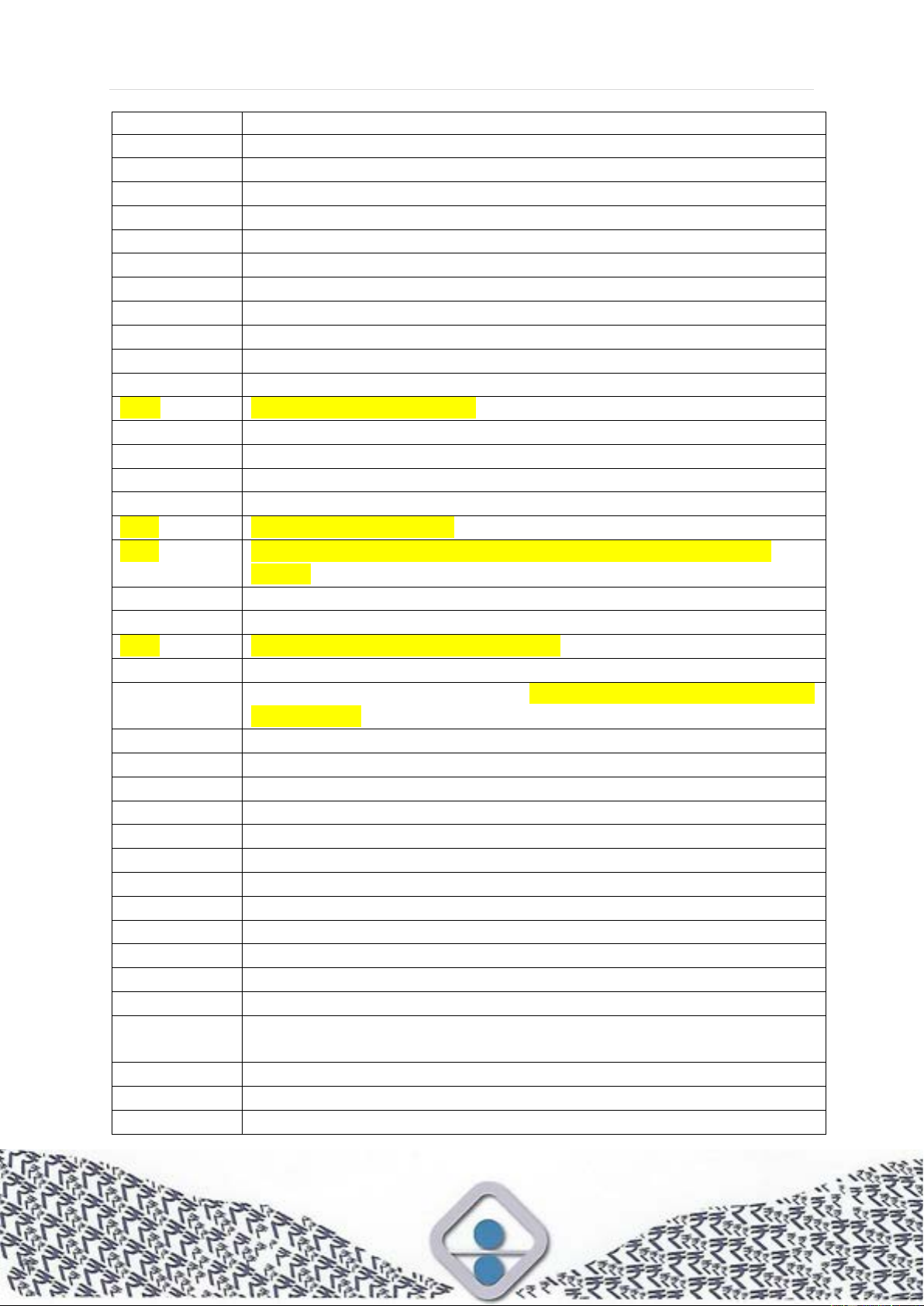
P a g e | 19
Abbreviation
Term
EMD
Earnest Money Deposit
EOI
Expression of Interest (Tendering System)
ERV
Exchange Rate variations
FAS
Free Alongside Shipment
FEMA
Foreign Exchange Management Act
FOB
Free on Board
FOR
Free on Rail
FOT
Free on Truck / Transport
FPS
Foot Pound Second - British System of measurements
GC
Grievance Committee
GCC
General Conditions of Contract
GeM
Government e-Marketplace
GFR
General Financial Rules (Current Edition is of 2017)
GIT
General Instructions to Tenderers
GM
General Manager
GRN
Goods Receipt Note
GST
Goods and Services Tax
GTE
Global Tender Enquiry (used interchangeably with ICB at some
places)
H1, H2 etc.
First Highest, Second Highest Offers etc. in Disposal Tenders
H1, H2
First Half Year and Second half year in Procurement Planning
HSN
Harmonized System of Nomenclature
IATA
International Air Transport Association
ICB
International Competitive Bidding (used interchangeably with GTE at
some places)
ICC
International Chamber of Commerce
IEEMA
Indian Electrical Equipment Manufacturers Association
Incoterms
International Commercial Terms, 2000 (of ICC)
INR
Indian Rupees
IS
Indian Standard (Presently Called BIS standards)
ISI
Indian Standards Institute, now known as BIS
ISO
International Standards organization
ITJ
Indian Trade Journal
L1, L2 etc.
First or Second Lowest Offer etc.
LC
Letter of Credit
LME
London Metal Exchange (Indices / rates)
LOI
Letter of intent
LPP
Last Purchase Price, sometimes also called LPR-Last Purchase
Rate
LTE
Limited Tender Enquiry
MD
Managing Director
MEA
Ministry of External Affairs
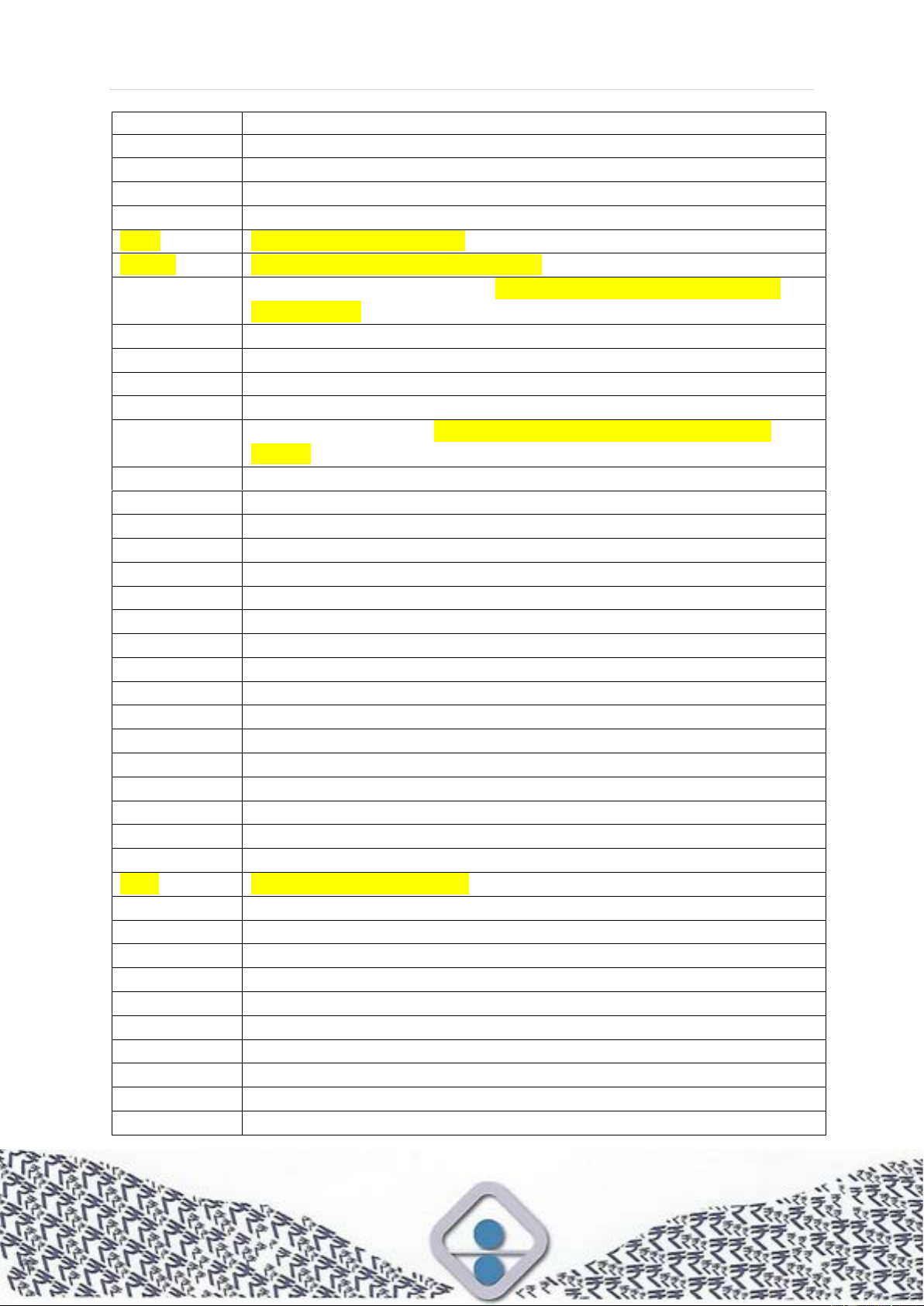
P a g e | 20
Abbreviation
Term
MGR (F)
Manager (Finance)
MHA
Ministry of Home Affairs
MIC
Marketing Intelligence Cell
MRN
Material Requisition Note (Indent)
MSE
Micro & Small Enterprises
MSME
Micro, Small & Medium Enterprises
NCB
National Competitive Bidding (used interchangeably with OTE at
some places)
NIT
Notice Inviting Tender
NOC
No Objection Certificate
NSIC
National Small Industries Corporation
OEM
Original Equipment Manufacturer
OTE
Open Tender Enquiry (used interchangeably with NCB at some
places)
P&F
Packing and Forwarding (charges)
PAC
Proprietary Article Certificate
PBG
Performance Bank Guarantee (Also see SD)
PO
Purchase Order
PQB
Pre-qualification Bidding
PQC
Pre-qualification Criteria
PR
Procurement Register
PSU
Public Sector Undertaking
PVC
Price Variation Clause
QAP
Quality Assurance Plan
RJR
Railway Receipt
RBI
Reserve Bank of India
RC
Rate Contract
RFI
Request for Information
RFP
Request for Proposal
RFQ
Request for Qualification
RTI
Right to Information Act, 2005
SAC
Services Accounting Code
SBD
Standard Bidding Document
SCC
Special Conditions of Contract
SD
Security Deposit (also see PBG)
SDC
Scrap Disposal Committee
SIT
Special instructions to Tenderers
SLTE
Special Limited Tender Enquiry
SO
Supply Order
SPC
Spot Purchase Committee
SPMCIL
Security Printing and Minting Corporation of India Limited
SSI
Small Scale Industry

P a g e | 21
Abbreviation
Term
STE
Single Tender Enquiry
STEC
Special Tender Evaluation Committee
TC
Tender Committee (used interchangeably with TEC at some places)
TEC
Tender Evaluation Committee (Used interchangeably with TC at
some places)
TLD
Token Liquidated Damages
UCPDC
Uniform Customs and Practices for Documentary Credits
UNCITRAL
United Nations Commission for International Trade Law
YTD
(consumption in the) Year to Date

P a g e | 22
PART A: CHAPTERS

P a g e | 23
Chapter 1: Introduction
1.1 About This Manual
Bharatiya Reserve Bank Note Mudran Private Limited (BRBNMPL), an ISO 9001-2015
and ISO 14001-2015 Company, is a wholly owned subsidiary of Reserve Bank of India
and is currently engaged in the business of printing bank notes for the Reserve Bank
of India. The Corporate Office of the Company is at Bangalore and its printing units
are at Mysore (Karnataka) and Salboni (West Bengal).
The Purchase functions in BRBNMPL are partly centralized at Corporate Office with
respect to procurement of plant, machinery, tools and major raw materials required for
production of notes like paper, ink, machine spares etc. Each unit procures all other
materials as per the delegation of power given by the Board of Directors from time to
time. Each unit is having a Materials Management Division, which is responsible for
procuring the materials.
Public institution of BRBNMPL's magnitude have an overall responsibility to exercise
their financial powers for making procurements in all stake holders' interest and also
a wider accountability not only to bring in efficiency, economy, and transparency in its
processes but also, to be fair and equitable in its treatment to suppliers by promotion
of transparency in public procurement. To achieve these objectives and also to
eliminate arbitrariness in a public procurement system, it is essential that the officials
engaged in purchase be provided with all the required rules, regulations, instructions,
directives, etc. in the form of a Manual. This Manual has been prepared keeping the
same in view.
This procurement manual elaborates the principles of segregation of responsibilities
between requisitioning and procurement entities by specifying several of such
separate and distinct functions within the overall procurement system. The
procurement manual underlines the best practices available to help the organization
to procure goods and services that meet the specifications at best value for money
and within the required time frame. This manual should be used as the definitive guide
for procurement rules, and should be followed in letter and spirit. The CGM/SGM/O-I-
C in the corporate office and Units are responsible for distribution of manual and the
amendments.
1.2 Intent of the Manual
The intent / objective of the manual can be summarized as follows:
(i) To attain best value for money taking into account principles of efficiency,
economy and transparency. Best value for money implies the use of optimum
criteria which incorporates total cost of ownership of the goods necessary to
satisfy the long term goals of BRBNMPL, along with satisfactory performance in
use.
(ii) Robust contract monitoring and control mechanisms to ensure effective

P a g e | 24
assessment of all the options in specified circumstances throughout the life of
the contract.
(iii) Transparent and fair Procurement process, facilitating optimum competition
possible in procurement of goods.
(iv) Providing sufficient notice & opportunity to bidders and hence provide equal
opportunity to market players to do business with the Company.
(v) Ensuring proper diligence and accountability in all procurement decisions.
(vi) Achieving a uniform, systematic, efficient and cost-effective procurement
process. The process should also be in accordance with the applicable rules &
regulations of the Government.
1.3 Applicability, Deviations, Amendments and Revisions
This manual shall be referred for all procurements to be done in BRBNMPL. The
authority for amendment to this manual shall be the Managing Director.
1.3.1 Applicability and Deviations
This manual should be used as the definitive guide for procurement rules and
should be followed in letter and spirit for all Procurement of Goods, Works and
Services (with exceptions and deviations mentioned below) in BRBNMPL.
A Procurement Manual, like this, is a living/evolving document which matures
with time, based on the collective experiences of the organization. No Manual
can cater to all the complexities of procurement in actual practice. There may be
certain complex situations, where there may be no other way than to deviate in
certain aspects from the stricter provisions of this Manual. In such cases, the
bare essential minor deviations from specific provisions of this manual along with
proper justification for such deviations may be recorded and approval of one level
above the CFA may be taken with concurrence of finance on case-to-case basis.
Periodic review of such deviations may be undertaken and based on such review,
it may be decided whether any permanent change in the provisions of Manual
are called for.
Complexity of procedure of procurement has to be commensurate with the
interplay of value of procurement and the risks involved in the type of
procurement. This Manual would therefore not be strictly applicable to low risk,
low value procurements below Rupees one Lakh (₹1 lakh) in each case of
procurement. For such procurement, this manual may only be followed in spirit
but not necessarily to the letter.
1.3.2 Amendments and Revisions
Amendment shall be effected by adopting the following procedures:

P a g e | 25
(i) Amendment can be suggested by any Division / Section at the presses and
shall be forwarded to Materials Management Division.
(ii) This shall be examined by the Materials Management Division who shall
put up the proposal to CGM/SGM/O-I-C with its views. In case the
CGM/SGM/O-I-C is satisfied with the suggestion, this will be forwarded to
the Managing Director for consideration along with recommendations. In
doing so, due consideration shall be given to the relevant procedures of
EQMS Manual and CVC guidelines.
(iii) The proposals (refer Annexure 24: Change Request Form) received from
one press will be sent to the other presses for their views on the proposed
amendments. On receipt of the views the proposed suggestions will be put
up to Managing Director for approval by the dealing officer at Corporate
Office.
(iv) Copy of the approved amendment will be forwarded to the presses.
(v) The amendment slip shall be inserted appropriately in the manual.
(vi) The dealing officer at the Corporate Office and the GM / DGM (MMD) at the
presses will be responsible to update the manual as per the amendments
issued from CO.
(vii) The manuals are verified every quarter by the auditing officer at the presses
nominated by the CGM/SGM/O-I-C and certificate issued by the auditing
officer.
(viii) The CGM/SGM/O-I-C will send a statement to Corporate Office that all the
amendments of procurement manual are updated in all available copies of
the manual at the Press.
1.4 Definitions
1.4.1 Goods
“Goods” includes all articles, material, commodity, medicines, furniture, fixtures,
raw material, consumables, spare parts, instruments, machinery, equipment,
industrial plant, vehicles, sub-assemblies, accessories, a group of machines
comprising an integrated production process or such other categories of goods
or intangible, products like technology transfer, licenses, patents or other
intellectual properties (but excludes books, publications, periodicals, etc., for a
library), procured or otherwise acquired by a Procuring Entity. Procurement of
goods may include certain small work or some services, which are incidental or
consequential to the supply of such goods, such as transportation, insurance,
installation, commissioning, training and maintenance.
1.4.2 Works
“Works” refer to any activity, sufficient in itself to fulfil an economic or technical
function, involving construction, fabrication, repair, overhaul, renovation,
decoration, installation, erection, excavation, dredging, and so on, which make
use of a combination of one or more of engineering design, architectural design,

P a g e | 26
material and technology, labour, machinery and equipment. Supply of some
materials or certain services may be incidental or consequential to and part of
such works. The term “Works” includes (i) civil works for the purposes of roads,
railway, bridges, buildings, irrigation systems, water supply, sewerage facilities,
dams, tunnels and earthworks; and so on, and (ii) mechanical and electrical
works involving fabrication, installation, erection, repair and maintenance of a
mechanical or electrical nature relating to machinery and plants.
1.4.3 Services
“Services” is defined by exception as any subject matter of procurement other
than goods or works, except those incidental or consequential to the service, and
includes physical, maintenance, professional, intellectual, training, consultancy
and advisory services or any other service classified or declared as such by a
Procuring Entity but does not include appointment of an individual made under
any law, rules, regulations or order issued in this behalf. It includes ‘Consultancy
Services’ and ‘Other (Non-consultancy) Services’.
1.4.4 Consultancy services
“Consultancy services” means a one-off (that is, not repetitive and not routine)
services, involving project specific intellectual and procedural processes using
established technologies and methodologies but the outcomes – which are
primarily of non-physical nature – may not be standardised and would vary from
one consultant to another.
Consultancy services covers a range of services that are of an advisory or
professional nature and are provided by consultants. These Services typically
involve providing expert or strategic advice e.g., Management Consultants,
Policy Consultants or Communications Consultants. Advisory and project related
Consultancy Services which include, for example: feasibility studies, project
management, engineering services, Architectural Services, finance accounting
and taxation services, training and development.
It may include small works or supply of goods which are incidental or
consequential to such services.
1.4.5 Other Services
“Other services” (including the term ‘Non-consultancy services’ in certain
contexts) are defined by exclusion as services that cannot be classified as
Consultancy Services. Other services includes services of routine repetitive
physical and procedural non-intellectual nature and are bid and contracted on
the basis of performance of a measurable physical output, and for which
performance standards can be clearly identified and consistently applied. It may
include small works, supply of goods or consultancy service, which are incidental
or consequential to such services. Other services may include transport services;
logistics; clearing and Forwarding; courier services; upkeep and maintenance of
office/buildings/Estates (other than Civil & Electrical Works etc.); drilling, aerial
photography, satellite imagery, mapping and similar operations etc.

P a g e | 28
writing relating to the subject matter of procurement, entered into between the
Procuring Entity and the contractor on mutually acceptable terms and conditions
and which are in compliance with all the relevant provisions of the laws of the
country.
1.4.12 Contractor
“Contractor” (including the terms ‘Supplier’ or ‘Service Provider’ or ‘Consultant’
or ‘Firm’ or ‘Vendor’ or ‘Manufacturer’ or ‘Successful Bidder’ under specific
contexts) means the person, firm, company, or a Joint Venture with whom the
contract is entered into and shall be deemed to include the contractor's
successors (approved by the Procuring Entity), agents, subcontractor,
representatives, heirs, executors, and administrators as the case may be unless
excluded by the terms of the contract.
1.4.13 Stores
The term "stores" applies generally to all articles and materials purchased or
otherwise acquired including not only expendable, consumable, and issuable
articles in use or accumulated for specific purposes, but also articles of dead
stock of the nature of plant, machinery, tools and machinery spares, instruments,
furniture, equipment, fixtures etc. Other homologous terms are: goods, materials
etc.
1.4.14 Competent Financial Authority
The Competent Financial Authority (CFA) is an authority duly empowered by the
Board of BRBNMPL through Delegation of Powers (DoP) to sanction and
approve expenditure from company accounts to a specified limit in terms of
amount of such expenditure and availability of funds.
For purpose of this manual, a CFA is defined as the person/body authorized to
sanction purchase of goods and incur expenditure. It is also the responsibility of
the CFA to monitor that a demand is not split into small quantities for the sole
purpose of avoiding the necessity of taking approval of the higher authority
required for sanctioning the purchase of the original demand. Sometimes,
"Competent Authority" may also be used for CFA.
In case of amendment in Delegation of Powers (DoP) during tender processing/
tender finalization/contract management, the CFA for approval and sanction of
expenditure will be as per the prevailing DoP provision at the time of approval/
sanction.
Officers who have been granted the benefit of personal promotion to the ranks
of AGM (PP) / DGM (PP) / GM (PP) / SGM (PP) shall also be empowered through
Delegation of Powers (DoP) to sanction and approve expenditure from company
accounts up to the same limits as a regular AGM / DGM / GM / SGM respectively
as Competent Financial Authority (CFA).

P a g e | 29
1.4.15 Financial Powers
Financial power is the power vested in an authority by BRBNMPL Board or
delegated to an authority to approve expenditure from the funds placed at the
disposal of that authority. The CFA may authorize staff officers to sign the
financial document on his behalf with the clear understanding that the
accountability for the correctness of such documents remains with the CFA. No
CFA can approve an expenditure involving amounts beyond his financial powers.
1.4.16 Purchase Indent
Purchase Indent (PI) is the basic document required by Materials Management
Division for initiating procurement action. The PI is raised by the indenting or
User Division furnishing, inter-alia, the details of material specification,
description, quality, quantity, delivery schedule, reasons for procurement,
probable sources of availability, details of last Purchase order number, rate, etc.
The quantity and the delivery schedule should be suitably linked to rate of
consumption and the production programme and taking into account the lead-
time to procure.
1.4.17 Tender Committee (TC) / Tender Evaluation Committee (TEC)
These two terms are used interchangeably sometimes in this Manual, though the
terminology prevalent in BRBNMPL is TEC.
1.4.18 Head of Division
Any officer in charge of any Division / Section or Department e.g. GM / DGM.

P a g e | 30
Chapter 2: Procurement – Principles and Policies
2.1 Canons of Financial Propriety
There are fundamental canons of Financial Propriety for competent financial
authorities (CFA) in Government and Public Sector that they must pay due regard to
the following principles, while sanctioning financial expenditure: -
(i) The expenditure should not prima facie be more than the occasion demands,
and that every CFA should exercise the same vigilance in respect of expenditure
incurred from public money as a person of ordinary prudence would exercise in
respect of his own money.
(ii) No authority should exercise its powers of sanctioning expenditure to pass an
order, which will be directly or indirectly to its own advantage.
(iii) Public money should not be utilised for the benefit of a particular person or
section of the community unless: -
a. The amount of expenditure involved is insignificant; or
b. A claim for the amount could be enforced in a Court of Law;
c. The expenditure is in pursuance of a recognised policy or custom;
(iv) The amount of allowances, such as travelling allowances, granted to meet
expenditure of a particular type, should be so regulated that the allowances are
not on the whole, a sources of profit to the recipients.
2.2 Code of Ethics
BRBNMPL as well as Bidders, Suppliers, Contractors, and Consultants under
BRBNMPL contracts shall observe the highest standard of ethics and shall not indulge
in any corrupt, fraudulent, collusive or coercive practice during the procurement or
execution of such contracts. In pursuit of this policy, for the purposes of this provision,
the terms set forth below are defined as follows:
(i) “Corrupt practice”: making offers, solicitation or acceptance of bribe, rewards
or gifts or any material benefit, in exchange for an unfair advantage in the
procurement process or to otherwise influence the procurement process or
contract execution;
(ii) “Fraudulent practice”: any omission or misrepresentation that may mislead or
attempt to mislead so that financial or other benefits may be obtained or an
obligation avoided. This includes making false declaration or providing false
information for participation in a tender process or to secure a contract or in
execution of the contract;
(iii) “Anti-competitive practice”: any collusion, bid rigging or anti-competitive
arrangement, or any other practice coming under the purview of The Competition
Act, 2002, between two or more bidders, with or without the knowledge of the

P a g e | 31
Procuring Entity, that may impair the transparency, fairness and the progress of
the procurement process or to establish bid prices at artificial, non-competitive
levels;
(iv) “Coercive practice”: harming or threatening to harm, persons or their property
to influence their participation in the procurement process or affect the execution
of a contract;
(v) “Conflict of interest”: participation by a bidding firm or any of its affiliates that
are either involved in the consultancy contract to which this procurement is linked;
or if they are part of more than one bid in the procurement; or if the bidding firm
or their personnel have relationships or financial or business transactions with
any official of Procuring Entity who are directly or indirectly related to tender or
execution process of contract; or improper use of information obtained by the
(prospective) bidder from the Procuring Entity with an intent to gain unfair
advantage in the procurement process or for personal gain; and
(vi) “Obstructive practice”: materially impede the Procuring Entity’s investigation
into allegations of one or more of the above mentioned prohibited practices either
by deliberately destroying, falsifying, altering; or by concealing of evidence
material to the investigation; or by making false statements to investigators
and/or by threatening, harassing or intimidating any party to prevent it from
disclosing its knowledge of matters relevant to the investigation or from pursuing
the investigation; or by impeding the Procuring Entity’s rights of audit or access
to information.
2.2.1 Obligations for Proactive Disclosures
(i) Procuring authorities as well as bidders, suppliers, contractors and
consultants, are obliged under Code of Integrity for Public Procurement to
suo-moto proactively declare any conflicts of interest (coming under the
definition mentioned above – pre-existing or as and as soon as these arise
at any stage) in any procurement process or execution of contract. Failure
to do so would amount to violation of this code of integrity; and
(ii) Any bidder must declare, whether asked or not in a bid document, any
previous transgressions of such a code of integrity with any entity in any
country during the last three years or of being debarred by any other
Procuring Entity. Failure to do so would amount to violation of this code of
integrity;
(iii) To encourage voluntary disclosures, such declarations would not mean
automatic disqualification for the bidder making such declarations. The
declared conflict of interest may be evaluated and mitigation steps, if
possible, may be taken by the Procuring Entity. Similarly voluntary reporting
of previous transgressions of Code of Integrity elsewhere may be evaluated
and barring cases of various grades of debarment, an alert watch may be
kept on the bidder’s actions in the tender and subsequent contract.
2.2.2 Punitive Provisions

P a g e | 32
Without prejudice to and in addition to the rights of BRBNMPL to other penal
provisions as per the bid documents or contract, if BRBNMPL comes to a
conclusion that a (prospective) bidder/supplier, directly or through an agent, has
violated this code of ethics in competing for the contract or in executing a contract,
BRBNMPL may take appropriate measures including one or more of the
following:
(i) If his bids are under consideration in any procurement
a) Forfeiture or encashment of bid security;
b) Calling off of any pre-contract negotiations; and
c) Rejection and exclusion of the bidder from the procurement process.
(ii) If a contract has already been awarded
a) Cancellation of the relevant contract and recovery of compensation
for loss incurred by BRBNMPL;
b) Forfeiture or encashment of any other security or bond relating to the
procurement;
c) Recovery of payments including advance payments, if any, made by
BRBNMPL along with interest thereon at the prevailing rate.
(iii) Provisions in addition to above: -
a) Removal from the list of registered suppliers and banning/debarment
of the bidder from participation in future procurements of BRBNMPL
for a period not less than one year;
b) Initiation of suitable disciplinary or criminal proceedings against any
individual or staff found responsible.
2.2.3 Integrity Pact (IP)
The Pre-bid Integrity Pact is a tool to help Governments, businesses and civil
society to fight corruption in public contracting. It binds both buyers and sellers
to ethical conduct and transparency in all activities from pre-selection of bidders,
bidding and contracting, implementation, completion and operation related to the
contract. This removes insecurity of bidders, that while they themselves may
abjure bribery, but their competitors may resort to it and win contract by unfair
means. The Government have mandated to incorporate Integrity Pact,
depending on the nature of procurements/contracts, above a threshold value.
The pact essentially envisages an agreement between the prospective vendors/
bidders and the buyer, committing the persons/officials of both sides, not to resort
to any corrupt practices in any aspect/stage of the contract. Only those vendors/
bidders, who commit themselves to such a Pact with the buyer, would be
considered competent to participate in the bidding process. In other words,
entering into this Pact would be a preliminary qualification.

P a g e | 33
Integrity Pact (IP) would be implemented through an Independent External
Monitor (IEM): IEM shall be appointed by BRBNMPL as per the guidelines and
Standard Operating Procedure issued by Central Vigilance Commission. The
IEM would review independently and objectively, whether and to what extent
parties have complied with their obligations under the Pact. Name and contact
details of the Independent External Monitor should be listed in Notice Inviting
Tender (NIT).
In tenders meeting the criteria of threshold value / nature of procurement:
Integrity Pact clause and format shall be included in the Bid Document as Section
XX. Each page of such Integrity pact proforma would have to be duly signed by
Purchaser’s competent signatory. All pages of the Integrity Pact will have to be
duly signed by the same signatory who is duly authorized to sign the bid and to
make binding commitments on behalf of his company and to be submitted along
with the technical bid. Any bid not accompanied by Integrity Pact duly signed by
the bidder shall be considered to be a non-responsive bid and shall be rejected
straightway.
Role/Functions of IEM: The Monitor would not be subject to instructions by the
representatives of the parties and should perform his/her functions neutrally and
independently. He/she would review independently and objectively, whether and
to what extent parties have complied with their obligations under the Integrity
Pact. For this purpose, he/she would have access to all contract
documents/books of accounts of the bidders in case of any allegation of violation
of any provisions of the Integrity Pact or payment of commission, whenever
required. The IEM will have the option to participate in such meetings among the
parties related to the project provided such meetings could have an impact on
the contractual relations between the parties. Ideally, IEM should meet once
every quarter to take stock of ongoing tendering process. The IEM would
examine all complaints received by him/her and give his/her recommendations/
views to BRBNMPL, at the earliest. The Monitor would also inform BRBNMPL, if
he/she notices or have reason to believe, a violation of the Integrity Pact. He/she
may also send his/her report directly to the Central Vigilance Commission, in
case of suspicion of serious irregularities requiring legal/administrative action.
IEM should be invariably cited in the NIT.
However, for ensuring the desired transparency and objectivity in dealing with
the complaints arising out of any tendering process, the matter should be
examined by the IEM, who would look into the records, conduct an investigation,
and submit his/her recommendations. The recommendations of IEM would be in
the nature of advice and would not be legally binding. IEM may not be equated
with consultants. His/her role is independent in nature and the advice once
tendered would not be subject to review. The role of the Chief Vigilance Officer
(CVO) of BRBNMPL shall remain unaffected by the presence of IEM. A matter
being examined by the IEM can be separately investigated by the CVO, if a
complaint is received by him or directed to him by the CVC.

P a g e | 34
2.3 Basic Aim of the Procurement Function
In every procurement, public or private, the basic aim is to achieve just the right
balance between costs and requirements concerning the following five parameters
called the Five R’s of procurement. The entire process of procurement (from the time
the need for an item, facility or services is identified till the need is satisfied) is designed
to achieve such a right balance. The word ‘right’ is used in the sense of ‘optimal
balance’.
(i) Right quality
Procurement aims to buy just the right quality that will suit the needs – no more and
no less – with clear specification of the Procuring Entity’s requirements, proper
understanding of functional value and cost, understanding of the bidder’s quality
system and quality awareness. The concept of the right balance of quality can be
further refined to the concept of utility/value. For the Right Quality, Technical
Specification is the most vital ingredient. In public procurement, it is essential to give
due consideration to Value for Money while benchmarking the specification.
(ii) Right quantity
There are extra costs and systemic overheads involved with both procuring a
requirement too frequently in small quantities or with buying large quantities for
prolonged use. Hence, the right quantity should be procured (in appropriate size of
contract) which balances extra costs associated with larger and smaller quantities.
(iii) Right 'Price & Value' for money
It is not correct to aim at the cheapest materials/facilities/services available. The price
should be just right for the quality, quantity and other factors involved (or should not
be abnormally low for a facilities/works/services which could lead to a situation of
nonperformance or failure of contract). The concept of price can be refined further to
take into account not only the initial price paid for the requirement but also other costs
such as maintenance costs, operational costs and disposal costs (Also termed as life
cycle costing).
(iv) Right ‘Time & Place' of delivery
If the material (or facility or services) is needed by an organisation in three months’
time, it will be costly to procure it too late or too early. Similarly, if the vendor delivers
the materials/facilities/services in another city, extra time and money would be
involved in logistics. An unrealistic time schedule for completion of a facility may lead
to delays, claims and disputes.
(v) Right source of supply
Similarly, the source of delivery of Goods, Works and Services of the requirement must
have just right financial capacity and technical capability for our needs (demonstrated
through satisfactory past performance of contracts of same or similar nature). Buying
a few packets of printer paper directly from a large manufacturer may not be the right
strategy. On the other hand, if our requirements are very large, buying such
requirements through dealers or middlemen may also not be right.

P a g e | 35
2.3.1 Refined Concepts of Cost and Value – Value for Money
The concept of price or cost has been further refined into Total Cost Of
Ownership (TCO) or Life Cycle Cost (LCC) or Whole-of-Life (WOL) to take into
account not only the initial acquisition cost but also cost of operation,
maintenance and disposal during the lifetime of the external resource procured.
Similarly, the concept of quality is linked to the need and is refined into the
concept of utility/value. These two, taken together, are used to develop the
concept of Value for Money (VfM, also called Best Value for Money in certain
contexts). VfM means the effective, efficient, and economic use of resources,
which may involve the evaluation of relevant costs and benefits, along with an
assessment of risks, non-price attributes (e.g. in goods and/or services that
contain recyclable content, are recyclable, minimise waste and greenhouse gas
emissions, conserve energy and water and minimize habitat destruction and
environmental degradation, are nontoxic etc.) and/or life cycle costs, as
appropriate. Price alone may not necessarily represent VfM. In public
procurement, VfM is achieved by attracting the widest competition by way of
optimal description of need; development of value-engineered specifications/
Terms of Reference (ToR); appropriate packaging/slicing of requirement;
selection of an appropriate mode of procurement and bidding system.
2.4 Laws / Guidelines governing Procurement
While India has no separate legislation for the specific purpose of public procurement,
there exist various rules, legislations & directives which guide public procurement
process, key among them being:
(i) The Constitution of India
(ii) General Financial Rules (GFR) 2017, Government of India (GOI) and Delegation
of Financial Powers Rules, 1978
(iii) Ministry of Finance, GOI, Manual for Procurement of Goods, 2017
(iv) Ministry of Finance, GOI, Manual for Procurement of Consultancy and Other
Services, 2017
(v) Indian Contracts Act, 1872
(vi) Sale of Goods Act, 1930
(vii) The Central Goods and Services Tax Act, 2017; The Integrated Goods and
Services Tax Act, 2017; The Union Territory Goods and Services Tax Act, 2017
(viii) Arbitration and Conciliation Act, 1996 read with the Arbitration and Conciliation
(Amendment) Act, 2015
(ix) Competition Act, 2002 as amended with Competition (Amendment) Act, 2007
(x) The Information Technology Act, 2000 (IT Act, regarding e-Procurement and e-
Auction, popularly called the Cyber Law), The Information Technology
(Amendment) Act, 2008 and subsequent amendments
(xi) The Foreign Trade (Development and Regulation) Act, 1992 and the Foreign
Trade Policy (EXIM Policy), 2015
(xii) Foreign Exchange Management Act (FEMA), 1999 and FEMA (Current Account
Transactions) Rules, 2000

P a g e | 36
(xiii) Central Vigilance Commission Act, 2003 and CVC guidelines related to public
procurement
(xiv) Right to Information (RTI) Act 2005
(xv) Micro, Small and Medium Enterprises Development (MSME Development) Act,
2006
(xvi) Prevention of Corruption Act, 1988
(xvii) Indian Companies Act, 2013
(xviii) Insolvency and Bankruptcy Code, 2016
(xix) CPWD Works Manual 2019
(xx) Standard Operating Procedures for CPWD Works Manual 2019
These guidelines and directives have been appropriately incorporated into this manual.
2.5 Special obligations of Public Procurement
Over and above the principles of Procurement, Public Procurement places onerous
obligations on the Public Procurement Organizations which distinguish Public
procurement from Procurements done by Private Organizations.
2.5.1 Equality for Bidders
Right of equality before law (Art. 14) and the Right to carry out any profession
(Art. 19 (1) g), are as follows: -
"FUNDAMENTAL RIGHTS
Right to Equality
§14. Equality before law: The State shall not deny to any person equality before
the law or the equal protection of the laws within the territory of India.
§19. Protection of certain rights regarding freedom of speech, etc., -
1) All citizens shall have the right: -
(i) to freedom of speech and expression;
(ii) to assemble peaceably and without arms;
(iii) to form associations or unions;
(iv) to move freely throughout the territory of India;
(v) to reside and settle in any part of the territory of India;
(vi) to practice any profession, or to carry on any occupation, trade or
business."
These have been interpreted by Courts in such a way, so as to ensure that every
citizen of India has a right to get equal opportunity to bid for and be considered
for a government/public contract. However, this provision does not debar the
organization from laying down reasonable eligibility or prequalification criteria for
selection of successful bidders in a contract. Thus a Public Procurement

P a g e | 37
Organization should be ready to prove in court that no bidder has been denied
equal opportunity to bid and be considered for the concerned contract.
2.5.2 Transparency and Disclosures of Procurement Decisions
Under the Right to Information Act, 2005 (RTI Act); every citizen has the right to
demand transparency and information in Public Dealings including Procurements.
Thus, a Public Procurement Organization should be ready to provide
Documented Record of its Procurement Decisions to general public who may not
be conversant with intricacies of Public Procurement.
2.5.3 External Accountability
Apart from internal accountability to which even Private Sector Procurements are
subject to, Public Procurements are answerable and accountable to a number of
external organizations, like Parliament and Parliamentary Committees, CVC, CBI,
C&AG, Concerned Ministries etc. Thus, a Public Procurement Organization has
to conduct its procurements and keep records in such a way that the decisions
can be explained to Organizations who may not be fully conversant with
peculiarities of its operations.
2.6 Fundamental Principles of Public Buying
Every authority delegated with the financial powers of procuring goods in public
interest shall have the responsibility and accountability to bring efficiency, economy
and transparency in matters relating to public procurement and for fair and equitable
treatment of suppliers and promotion of competition in public procurement.
The procedure to be followed in making procurement must conform to the following
yardsticks: -
(i) The specifications in terms of quality, type etc., as also quantity of goods to be
procured, should be clearly spelt out keeping in view the specific needs without
including superfluous and non-essential features, which may result in
unwarranted expenditure. Care should also be taken to avoid purchasing
quantities in excess of requirement to avoid inventory carrying costs;
(ii) Offers should be invited following a fair, transparent and reasonable procedure;
(iii) The procuring authority should be satisfied that the selected offer adequately
meets the requirement in all respects;
(iv) The procuring authority should satisfy itself that the price of the selected offer is
reasonable and consistent with the quality required;
(v) At each stage of procurement, the concerned procuring authority must place on
record, in precise terms, the considerations which weighed with it while taking
the procurement decision.
(vi) Government of India may, by order in writing, impose restrictions, including prior
registration and/or screening, on procurement from bidders from a country or
countries, or a class of countries, on grounds of defence of India, or matters

P a g e | 38
directly or indirectly related thereto including national security; no procurement
shall be made in violation of such restrictions.
2.7 Purchase Policy
2.7.1 Public Procurement Policy for Micro and Small Enterprises (MSEs)
In order to help promote inclusive national economic growth by providing long-
term support to small and medium enterprises and disadvantaged sections of
society and to address environmental concerns, BRBNMPL shall follow the
Public Procurement Policy for Micro and Small Enterprises (MSEs) Order, 2012
(as amended and revised till date), or any other procurement policy laid down by
Government of India from time to time. (Copy of the order along with
amendments enclosed as Annexure 33a)
Micro and Small Enterprises (MSE) must, along with their offer, provide proof of
their being registered as MSE (indicating the terminal validity date of their
registration) for the item tendered, with any agency mentioned in the notification
of the Ministry of Micro, Small and Medium Enterprises (Ministry of MSME),
indicated below:
(a) District Industries Centres;
(b) Khadi and Village Industries Commission;
(c) Khadi and Village Industries Board;
(d) Coir Board;
(e) National Small Industries Corporation;
(f) Directorate of Handicraft and Handloom; and
(g) Any other body specified by the Ministry of MSME for authentication such
as Udyog Aadhaar Memorandum/Acknowledgment
(h) Udyam Registration
To enable wider dispersal of enterprises in the country, particularly in rural areas,
BRBNMPL shall procure items reserved for procurement exclusively from MSEs.
Presently 358 (three hundred and fifty-eight) items have been reserved for
exclusive purchase from Micro and Small Enterprises (Annexure 33b).
Product Reservation/Purchase Preference provision shall invariably be part of
the Notice Inviting Tender (NIT) and General Instructions to Tenderers (GIT)
Refer Annexure 35: Explanatory Note on Make in India Order 2017 and MSEs
Order 2012.
2.7.2 Public Procurement Policy (Preference to Make in India)
In order to encourage 'Make in India' and promote manufacturing and production
of goods and services in India with a view to enhance income and employment,
BRBNMPL shall follow the Public Procurement (Preference to Make in India)

P a g e | 39
Order, 2017 (as amended and revised till date) and related notifications from the
relevant Nodal Ministry/Department. (Copy of the amended order as on
16.09.2020 enclosed as Annexure 34)
The minimum Local Content, the Margin of Purchase Preference and the
procedure for preference to Make in India shall be specified in the Notice Inviting
Tender (NIT) or other form of procurement solicitation and shall not be varied
during a particular procurement transaction.
Refer Annexure 35: Explanatory Note on Make in India Order 2017 and MSEs
Order 2012.
2.8 Total Cost of Ownership or Life Cycle Cost
While the value of a product covers all components of value over the “Whole-Of-Life”
(WOL), the costs incurred on the product should also take into consideration the total
of various elements of costs incurred over WOL of the product. For this purpose, future
costs are discounted to present value. For example, it would not be prudent to buy a
cheap car, which has a very high cost of operating. This is called variously as WOL or
“Total Cost of Ownership” (TCO) or “Life-Cycle-Cost” (LCC). The last is a preferred
nomenclature in procurement and is defined as the total of all costs associated with a
product, service, or capital equipment that are incurred over its expected life. Typically,
these costs can be broken into four broad categories:
(i) Procurement price: The amount paid to the vendor/contractor for the product,
service, or capital equipment;
(ii) Acquisition costs: All costs associated with bringing the product, service, or
capital equipment into operation at the customer’s location. Examples of
acquisition costs are sourcing, administration, freight, taxes, and so on;
(iii) Usage costs: In the case of a product, all costs associated with converting the
procured part/material into the finished product and supporting it through its
usable life. In the case of a service, all costs associated with the performance of
the service that is not included in the procurement price. In the case of capital
equipment, all costs associated with operating the equipment through its life.
Examples of usage costs are inventory, conversion, wastage, lost productivity,
lost sales, warranty, installation, training, downtime, and so on; and
(iv) End-of-life costs: All costs incurred when a product, service, or capital
equipment reaches the end of its usable life, net of amounts received from the
sale of the remaining product or the equipment (disposal value) as the case may
be. Examples of end-of-life costs are obsolescence, disposal, clean-up, and
project termination costs.
2.9 Value for Money
In procurement, Total Cost of Ownership is taken to evaluate value for money. Given
the limited resources available to the Government, ensuring VfM in procurement is the
key to ensuring the optimum utilisation of scarce budgetary resources. It usually

P a g e | 40
means buying the product or service with the lowest WOL costs that is ‘fit for purpose’
and just meets the specification. VfM also incorporates affordability; clearly, goods or
services that are unaffordable cannot be bought. This should be addressed as soon
as possible within the process, ideally at the need assessment stage before
procurement commences. In order to address this issue, a change in the procurement
approach, specification or business strategy may be required.
Where an alternative is chosen that does not have the lowest WOL costs, then the
additional ‘value added’ benefit must be proportional and objectively justifiable.
Assessment of bids should be conducted only in relation to a published set of
evaluation criteria (which should be relevant to the subject of the contract), and any
‘added value’ that justifies a higher price must flow from these defined criteria.
In public procurement, VfM is often primarily established through the competitive
process. A strong competition from a vibrant market will generally deliver a VfM
outcome. However, where competition is limited, or even absent, other routes may
have to be used to establish VfM. These can include benchmarking, construction of
theoretical cost models or ‘shadow’ bids by the procurement agency. For major
contracts, this can require considerable financial expertise and external support. A
VfM assessment, based on the published conditions for participation and evaluation,
may include consideration of some factors such as:
(i) Fitness for purpose;
(ii) Potential vendor/contractor’s experience and performance history;
(iii) Flexibility (including innovation and adaptability over the lifecycle of the
procurement);
(iv) Environmental sustainability (such as energy efficiency and environmental
impact); and
(v) Total cost of ownership
But due to uncertainties in estimates of various components of TCO (and actual costs
over the life-cycle) and intangibles of Value, some element of subjectivity may become
unavoidable, and hence is not normally useable in routine Public Procurement cases.
Therefore, preference is given to alternative means for ensuring VfM by way of optimal
description of needs; development of value-engineered specifications/Terms of
Reference and appropriate packaging/slicing of requirements and selection of
appropriate mode/bidding systems of procurement etc.
2.10 Restrictions on Public Procurement from countries sharing a land border
with India
(i) The Government of India, by a detailed Order on public procurement, have
imposed certain restrictions on bidders from countries which share a land border
with India on grounds of defence of India, or matters directly or indirectly related
thereto including national security.
(ii) Any bidder from such countries sharing a land border with India will be eligible to
bid in any procurement whether of goods, services (including consultancy

P a g e | 41
services and non-consultancy services) or works (including turnkey projects)
only if the bidder is registered with the Competent Authority. The Competent
Authority for registration will be the Registration Committee constituted by the
Department for Promotion of Industry and Internal Trade (DPIIT). Political and
security clearance from the Ministries of External and Home Affairs respectively
will be mandatory for registration.
(iii) In works contracts, including turnkey contracts, contractors shall not be allowed
to sub-contract works to any contractor from a country which shares a land
border with India unless such contractor is registered with the Competent
Authority.
(iv) A bidder is permitted to procure raw material, components, subassemblies etc.
from the vendors from countries which share a land border with India. Such
vendors will not be required to be registered with the Competent Authority as it
is not regarded as "sub-contracting"
(v) However, in case a bidder has proposed to supply finished goods procured
directly / indirectly from the vendors from the countries sharing land border with
India, such vendor will be required to be registered with the Competent Authority.
(vi) A certificate shall be obtained from bidders regarding their compliance with the
Order. If such certificate given by a bidder whose bid is accepted is found to be
false, this would be a ground for immediate termination and further legal action
in accordance with law.
(vii) In respect of tenders, registration should be valid at the time of submission of
bids and at the time of acceptance of bids. In respect of supply otherwise than
by tender, registration should be valid at the time of placement of order. If the
bidder was validly registered at the time of acceptance / placement of order,
registration shall not be a relevant consideration during contract execution.
(viii) Bidders from those countries (even if sharing a land border with India) to which
Government of India have extended lines of credit or in which Government of
India is engaged in development projects have been exempted from the
requirement of prior registration. Updated list of countries to which lines of credit
have been extended or in which development projects have been undertaken are
available in the website in the Ministry of External Affairs.
(ix) The provisions of the Order shall not apply to bona fide small procurements made
without knowing the country of the bidder.
(x) Procurement of spare parts and other essential service support like Annual
Maintenance Contract (AMC) / Comprehensive maintenance Contract (CMC),
including consumables for closed systems, from Original Equipment
Manufacturers (OEMs) or their authorized agents, shall also be exempted from
the requirement of registration as mandated under this Order.
(xi) Model Clauses and Model Certificates which may be inserted in tenders /
obtained from Bidders are enclosed as Annexure 36.

P a g e | 42
Chapter 3: Procurement – Roles and Responsibilities
3.1 Introduction
The current Chapter outlines the roles of various departments and key officials
involved in the procurement of goods at BRBNMPL and its Units. It also details the
functions of the committees in the context of procurement.
3.1.1 Strengthening of Materials Management Division (MMD)
The MMD should be strengthened by taking the following steps:
(i) Preferably one DGM or equivalent officer should be deputed to Materials
Management Division. This should be done on a rotation basis periodically.
(ii) A market intelligence cell should be incorporated in the Materials
Management Division as elaborated in Para 3.4.
(iii) GM (MMD) shall remain the head of the procurement section. DGM (MMD)
/ GM (MMD) shall be the member Secretary of all relevant Committees. He
will discharge all functions to get the committee meeting convened, minutes
issued and follow up etc.
3.1.2 Centralized Procurement
Centralized Procurement should be done for items of critical requirement for
more than one unit identified by CGM/SGM/O-I-C at CO and CGM/SGM/O-I-C
of units concerned. The demand for these items should be estimated and tenders
for such planned procurement should be finalized preferably by January of the
previous financial year. These items include paper and ink for printing. Other
materials can be included as and when required in this list and CO will decide
the inclusion of such items. The list of items to be procured centrally will be
released by CO, BRBNMPL.
3.1.3 Common Procurement for BRBNMPL and SPMCIL Presses
Joint Procurement Committee (JPC) of BRBNMPL and SPMCIL decides the
quantity of raw materials like CWBN Paper, Colour-Shift Intaglio Ink etc. to be
procured for BRBNMPL and SPMCIL based on the prospective indent of RBI and
directives from RBI/GoI. Based on the decision taken by JPC, common tender
shall be floated either by BRBNMPL or SPMCIL following their respective
manuals. However, separate agreements shall be entered into by BRBNMPL
and SPMCIL with the suppliers. The JPC also approves items identified by the
Presses for common procurement by designated Presses.

P a g e | 43
3.1.4 Procurement by Materials Management Division
Ideally the Materials Management Division should consolidate requirements of
all user departments and then float tender for annual procurement. Annual
procurement should be done by the Materials Management Division for the
following types of items: -
(i) Items used by more than one department
(ii) Regularly consumed throughout the year and procured in large quantities
requiring large storage facilities or storage at different locations.
However, for goods which are not covered in annual tender, Materials
Management Division should do need based procurements of such goods
through appropriate mode of procurement subject to financial limits specified for
such modes of procurements. These procurements may be done by the
Materials Management Division generally for the following types of items:
(i) Items not covered in annual tender.
(ii) Items for which requirements are not commonly encountered and hence
not planned in annual tender.
(iii) Items for which future demand could not be anticipated at the time of annual
tender.
3.1.5 Procurement by User department:
In situations when emergency procurement is absolutely necessary to address
specific requirement of goods, user department should procure such goods
through emergency procurements through LTE / Spot Purchase subject to
financial limits specified for such modes of procurements - duly keeping GM
(MMD) informed about the reasons of such purchase at their level.
Materials Management Division should do the following as a precautionary
measure to avoid emergency procurement: -
(i) At the beginning of the year, the Materials Management Division will ask all
the user departments, through a written inquiry, to submit a list of goods
required for operations.
(ii) The Materials Management Division should update the list for annual
procurement by adding goods that have been procured through emergency
procurement in the past three years.
(iii) Possibility of execution of suitable rate contract should be explored to avoid
any requirement of making emergency purchases at User department.

P a g e | 44
3.2 Organization Structure
1
:
Please refer to abbreviations portion to view equivalent authority under the generic
Designation.
3.2.1 Chief General Manager (CGM) / Sr. General Manager (SGM) / Officer-
in-Charge (O-I-C)
(i) The CGM/SGM/O-I-C is the Principal Executive Officer or the Unit Head of
the unit/division and shall oversee the day-to-day operations of the unit/
division of BRBNMPL. Both terms i.e., Unit Head and CGM/SGM/O-I-C are
used interchangeably in this manual.
(ii) O-I-C shall have the administrative authority of Unit Head. However, he
shall draw financial powers from DoP as per his actual rank.
(iii) CGM/SGM/O-I-C is the final administrative approving authority for all
procurements up to the limit as per DOP decided by the Board and is
member representative in Tender Evaluation Committee.
(iv) CGM/SGM/O-I-C are responsible for reviewing the list of empanelled
bidders.
(v) Deviations to General Terms and Conditions and any deviation in GIT and
GCC of the SBD, if any, should be approved by him for procurements
requiring approval up to his level. SIT and SCC of the SBD shall invariably
be approved by the CGM/SGM/O-I-C for procurements requiring approval
up to his level.
(vi) CGM/SGM/O-I-C is over all responsible for ensuring compliance of
instructions regarding security items as per para 5.12.
(vii) CGM/SGM/O-I-C should supervise the administrative actions of
procurement officials and staff.
(viii) He is responsible for taking certain procurement decision on behalf of
higher level CFAs with concurrence of GM/DGM (F& A), as laid down in
Para 3.6.4.
(ix) In all proposals in connection with Procurement going to CO, BRBNMPL,
he should record his approval with the concurrence of GM/DGM (F & A)
and ensure harmonization of divergence in views between Departments
before the proposal is put up to CFA. All proposals sent to CO should come
with his specific recommendations.
3.2.2 General Manager [GM (MMD)]
(i) GM is the administrative approving authority for all procurements up to the
limit as delegated through this manual as per DOP.
(ii) He is responsible for periodic review of indents, plan for procurement and
updating ARS.
1
Please refer to abbreviations to view equivalent authority

P a g e | 45
(iii) He is member of the relevant Tender Evaluation Committees.
(iv) He is responsible for the entire activity of procurement.
3.2.3 General Manager / Deputy General Manager [GM / DGM (F & A)]
(i) He should supervise all financial approvals and payments of contractor/
supplier bills in time.
(ii) He is member of the Tender Evaluation Committee.
(iii) He should concur any deviation in the GIT and GCC of the SBD and
specifically record his observations on SIT and SCC.
(iv) He should vet all agreements before their release.
(v) He should ensure availability of all important documents and contract
compliance (e.g. inspection reports, purchase order) before release of
payment to suppliers.
(vi) As laid down in Para 3.6.4, certain Post Contract decision are taken by
CGM/SGM on behalf of higher-level CFAs, with his concurrence.
(vii) In all proposals in connection with Procurement going to CO, BRBNMPL,
he should give his concurrence, before the proposal leaves the Unit.
(viii) Responsible for Safe custody of EMD, SD and ensure their validity as per
contract
3.2.4 General Manager - Production - GM (P) and General Manager -
Maintenance - GM (M)
(i) He would be responsible for approving annual procurement plan for his
department.
(ii) He participates in various committees. He delegates subordinates’
responsibility for technical evaluation of tender and inspection of goods for
certain items as mentioned in this manual.
(iii) He would be responsible to make available inspection reports on time.
(iv) He is responsible for timely preparation and submission of Indents of
Materials in his jurisdiction.
(v) He is responsible for procurement for the items within his capacity as CFA
as per DOP.
3.2.5 Deputy General Manager [DGM (MMD)]
The functions and responsibilities of DGM (MMD) described here and elsewhere
in this manual are in fact shared between DGM (MMD) and Stores-in-Charge as
per the functional requirement and convenience of the presses and as such,
beyond the scope of this manual. Hence, the functions and responsibilities of
DGM (MMD) described below and elsewhere in this manual should be cross-
referenced with actual allocation and distribution of work at the presses.

P a g e | 46
(i) DGM (MMD) is responsible for planning, aggregating and procuring goods
required for functioning of BRBNMPL unit.
(ii) He supervises the administrative actions of all officers and staff of the
Stores and Purchase functions.
(iii) He is also responsible for exercising administrative power on issues like
finalization of procurement plan, initiate timely procurement, monitoring of
stages of tenders, compliance to timelines stipulated in the tender, ensuring
validity of tender offer, amendment of contract, and acceptance of deviation
after seeking approval of competent authority
(iv) He is also a member secretary in BOC and TEC as mentioned in Para 3.3.1
and 3.3.2.
(v) He should ensure availability of material as and when required and avoid
stock out situations.
(vi) In case of procurement of goods, DGM (MMD) shall be responsible for the
execution of the contract with the successful bidder.
(vii) He is responsible for all aspects of contract management, taking
appropriate approval wherever required as per Para 3.6 and Chapter 11 &
12.
(viii) He is responsible for ensuring compliance of all laid down procedures in all
procurements.
(ix) On completion of contractual obligations, initiate action for release of
EMD/SD.
3.3 Committees
3.3.1 Bid Opening Committee (BOC)
Role & Mandate: The key role and mandate of the Bid Opening Committee (BOC)
has been detailed at para 8.9.2.
Composition: The Bid Opening Committee shall comprise of one officer from
MMD, one officer from the Finance department and one officer from User section
(as per Annexure 28). A standing committee may be constituted for opening of
bids and any particular day or days of the week (e.g. Wednesday, Friday etc.)
shall be fixed for opening of bids. The committee approved for a particular day
shall open the bid due to be opened on that day. Committee may be constituted
for every quarter with the approval of CGM/SGM/O-I-C.
3.3.2 Tender Evaluation Committee (TEC)
Role and Mandate: Tender Evaluation Committee (TEC) members, wherever
required shall be approved by CGM/SGM/O-I-C or higher authority. Approval
shall be accorded on the recommendation of DGM (MMD). The key role and
mandate of the TEC will be as follows:
(i) The TEC will check whether the participating bidders satisfy the eligibility
criteria in respect of the Tender Notice and declare the eligible parties

P a g e | 47
(responsive tenders). Price Bids of only the eligible bidders shall be
processed for evaluation thereafter. The evaluation criteria for evaluating
the tender should be predetermined and included in the tender documents.
(ii) To evaluate the techno-commercial responses of the bidders and ensure
that they meet user requirements in a comprehensive manner, in cases
where two bid system is used.
(iii) To mark the scores of the bidders as per the tender terms and conditions.
(iv) To rank the bids by scores / marks awarded on prices and identify the
preferred bidder to be considered for approval by the competent authority.
(v) Make comparative statement in case of price/Financial Bid. Price Bid
Evaluation committee shall record the following in their report: -
a) As to whether the rates are reasonable;
b) As to whether the rates are higher/lower from the last purchase price;
c) Deliberate and suggest further course of action.
(vi) The TEC shall have the mandate to carry out the evaluation of all eligible
tenders and select the preferred bidder, duly monitoring compliance of laid
down purchase procedures in all stages of the tender, reasonability of
estimates and bids (e.g. ascertaining whether rates are fair or not) and, if
required, associated technical details of the tender.
(vii) To prepare a report and forward its findings to the competent authority.
(viii) To handle, scrutinize and review any complaints received against the
tender and give suitable recommendation in their report.
Composition: Composition of Tender Evaluation Committee shall be as per
Annexure 28: Composition of Bid Opening, Tender Evaluation and other
Committees (Item A)
DGM (MMD) should be member secretary of the committee. The specific
composition of the committee will be value-based as well as depend upon the
nature of procurement.
3.3.3 Special Tender Evaluation Committee (STEC)
In case of joint procurement which needs approval of Board of Directors of
BRBNMPL or in cases where procurement involves non-BRBNMPL units, a
Special Tender Evaluation Committee (STEC) may be constituted by MD,
BRBNMPL in consultation with SPMCIL. For the joint procurement of goods and
services for BRBNMPL and SPMCIL, the committee will evaluate and do the
necessary processing.
3.3.4 Condemnation Committee (CC)
CC members wherever required shall be approved by CGM/SGM/O-I-C.
Approval shall be accorded on the recommendation of GM / DGM (MMD).

P a g e | 48
Condemnation Committee shall decide whether the goods recommended for
disposal by competent authority or inventory audit, should be disposed of, or
retained in inventory, and categorize disposable items as scrap/surplus/
obsolete/condemned/unserviceable/unusable items with reasons for disposal
and condemn capital and security items. Also refer para 14.6 Process of Disposal
– Survey of scrap by CC.
Role & Mandate: The key role and mandate of the Condemnation Committee
(CC) are as follows.
(i) Evaluate users' request for disposal against available data on book value.
(ii) Decide whether the goods recommended for disposal by competent
authority or inventory audit, should be disposed of, or retained in inventory,
and categorize disposable goods into surplus/unserviceable/condemned/
obsolete/unusable/scrap with reasons for disposal.
(iii) The Committee will recommend condemnation of capital and security items
and CFA, on the basis of recommendation of the committee, shall issue
Condemnation Certificate as acceptance to the condemnation report. In
case of Security/sensitive items/machinery, CC shall ensure that such
scrap is properly cut/destroyed and then issue a 'Fit for Disposal Certificate'.
(iv) The capital items identified by Modernization / Performance Review
committee or any other committee as fit for buy-back, need not come under
the Role & Mandate of CC.
Composition: Composition of Condemnation Committee is given at Annexure
28: Composition of Bid Opening, Tender Evaluation and other Committees (Item
B)
3.3.5 Scrap Disposal Committee (SDC)
SDC members, wherever required shall be approved by CFA or CGM/SGM/O-I-
C. Approval shall be accorded on the recommendation of DGM (MMD). Scrap
Disposal Committee shall recommend disposal of items categorised as scrap /
condemned / surplus/ obsolete / unusable / unserviceable items and the disposal
process.
Role & Mandate: The key role and mandate of the SDC are as follows: -
(i) Prioritize disposal of surplus/scrap/condemned/obsolete/unserviceable/
unusable items across the Unit and advice appropriate write down from
books of A/c
(ii) Consider and approve recommendations of the TEC in selecting preferred
bidder for disposal tenders.
Composition: Composition of Scrap Disposal Committee would be as per
Annexure 28: Composition of Bid Opening, Tender Evaluation and other
Committees (Item D)

P a g e | 49
3.4 Market Intelligence Cell
Market Intelligence Cell (MIC) should be created under the DGM (MMD) and it shall
be assigned with following tasks:
(i) To gather and compile information on the prices of end products and input raw
materials.
(ii) In relation to the existing items on rate contracts and empanelment for new
products proposed to be brought, MIC will collect the names of possible sources
with a view to improve participation by the industry in BRBNMPL purchases;
(iii) To maintain data base on past contracts showing details of items procured, their
essential spec(s), unit rate, quantity, total value, mode of procurement, number
of tenders received, number of tenders considered acceptable, reasons for
exclusion of overlooked tenders, un-negotiated rates of L1 and contract rates in
order to help in ascertaining reasonability of prices of future procurements.
(iv) Data on price trends and price indices for various items will also be compiled to
the extent feasible.
(v) They will ensure inter-unit sharing of price indices and price database as
indicated in Para 10.13.4
(vi) To consider suggesting new items for inclusion of the rate contracts;
(vii) To search and identify market developments in existing products so that
improvements in quality are also factored into the NIT.
(viii) Any other related functions.
3.5 Time Limit for Procurement & Accountability
The ill-effects of delay in processing and clearance of various procurement activities
needs no emphasis. The decentralization of decision-making mechanism and
delegation of financial powers are aimed at facilitating faster decision making and
obtaining best value for money. However, the delegation of powers also implies
"authority with accountability". Every individual in the chain of the procurement process
is accountable for taking action in a specified time period so that the requirements are
met on time. The timelines for procurement are given in Annexure 1: Time Frame for
Procurement.
3.6 Work & Responsibility Sharing when Higher authority is CFA
3.6.1 Introduction
In a multi-unit organization like BRBNMPL, sometimes Competent Financial
Authority (CFA) has to be delegated at higher levels (or Special Tender
Evaluation Committee referred in Para 3.3.3). Since the main functions of higher
levels are Direction, Management, and Supervision across the matrix of different
departments - these levels cannot be expected to go into nitty-gritty of the facts
of the proposal, but have to approve the decisions based on logical rigor/
consistency, taking into account the Factual / Technical issues brought out by

P a g e | 50
expert at lower levels. A check list as well as certificates shall be submitted by
TEC to CFA as part of proposal giving and confirming all relevant details of the
proposal which are essential for informed decision making.
3.6.2 Techno-Economic Decisions
Therefore as far as Techno-Economic decisions are concerned, the basic work
and fundamental responsibility for factual, technical and logical rigor/
Consistency would still remain with the concerned officials of the Unit, despite a
concurrence / approval by the CFA at higher level - except when the CFA has
enforced a suo moto (without referring such changes back to the concerned
officials of the unit for reconsideration) alteration / deletion / addition in the
Techno-economic submission of the concerned officials of the Unit. CFA at
Higher levels would have supervisory responsibility for logical rigor/ consistency
only in such matters. Within the responsible Unit there would be internal sharing
of such work and responsibility depending on the internal preparation, review and
approval of such decisions.
Common use items of BRBNMPL and SPMCIL such as currency paper, security
inks, etc. shall be handled by JPC (Joint Procurement Committee) comprising of
members from both BRBNMPL and SPMCIL. As and when equipment and
machinery of similar usage is to be procured by BRBNMPL or SPMCIL, both
organizations may consult each other and decide about procurement after giving
due cognisance to the requirements and inputs of the other. Concerned Unit, in
case of processing of common requirement of more than one unit of BRBNMPL
(or SPMCIL/RBI) would be the nodal unit nominated by CO, BRBNMPL for the
item. The nodal unit will associate other concerned units in such decisions or
processing of the case. STEC will be the committee for review/evaluation of such
tenders
3.6.3 Committee Decisions
However, in case of Tender Evaluation Committee (TEC) Decisions, all TEC
members and CFA / constituents of CFA will have collective responsibility for
decisions taken by them, except for dissent, in which case it will be as per Para
10.15.
3.6.4 Contract Management Decisions
At post-contract stage also, the responsibility would be shared jointly between
the proposal initiating Department and the CFA (including associated Finance
and other constituents) on the line similar to TEC / TC decisions.
In case of drafting / issue of contract / Amendments, the responsibility would be
shared by the drafting / signing / financial vetting officials.
All contract management actions shall be done with the approval of CFA. Where
CFA is MD or Board, such actions and contract management in general will be
done by the CGM/SGM/O-I-C of the concerned unit with the concurrence of CFO
- keeping in mind para 3.6.6.

P a g e | 51
3.6.5 Higher Level Decisions
All proposals to CO, BRBNMPL should be sent only with the concurrence of
DGM/GM (F & A) and approval of CGM/SGM/O-I-C of the concerned unit.
CGM/SGM/O-I-C of the unit should record his approval with comments and
ensure harmonization of divergence in views between Departments of his unit as
far as feasible before the proposal leaves the Unit. In case CFA is MD or Board
of Directors, the proposal shall be recommended by CGM/SGM/O-I-C for
approval of Corporate Office. For the procurement of CO, proposals shall be
submitted to CGM/SGM/O-I-C, MD or Board as the case may be.
3.6.6 Stages at which approval of Higher-Level CFA shall be required
Stages at which approval of higher CFA may be taken: Approval of CFA at higher
level may be taken at following stages, to avoid discovery of an anomaly at a
very late stage:
(i) At Specification finalization stage, in case of Machinery / Plant and in case
of change of regular specification for other raw material / consumable /
security items
(ii) At PQC formulation stage in case of deviation from standard documents
(iii) Special Limited Tender Enquiry (SLTE) for estimated values above ₹25
Lakhs
(iv) Purchases through Single Tender Enquiry (STE) without PAC
(v) At tender Document stage if there is a change/deviation from standard
Bidding Documents / GCC / SCC used in past.
(vi) Awarding of Contracts in stalled Projects
All aspects of Contract Management are to be done by DGM (MMD) taking
approvals of appropriate CFA in accordance with Chapters 11 and 12. However
approval of next higher authority than CFAs for approval of procurement may be
taken for following decisions:
(i) Termination of Contract
(ii) Amendment to Contract other than Extension of DP.
(iii) Waiver or change of modality or Agency of Inspection.
In the cases where CFA is Board of Directors /MD, MD's approval shall be taken
for the above.

P a g e | 52
Chapter 4: Types and Modes of Procurement
Section I - Types of Procurement
At BRBNMPL procurements can be categorized into following types from budgetary
point of view:
4.1 Capital Procurement
Expenditure of a capital nature shall be an expenditure with the object of increasing
assets of material and it should include charges for first construction and equipment
of a project as well as charges for immediate maintenance of the work while not yet
open for service.
4.2 Revenue Procurement
Revenue procurement should bear all subsequent charges for maintenance and all
working expenses; these include all expenditure on working and upkeep of operations.
The revenue procurement, therefore, is for items and equipment including
replacement equipment (functionally similar) assemblies/sub-assemblies and
components to maintain and operate already sanctioned assets in the service, the
necessity of which have been established and accepted.
4.3A Indigenous Procurement
Procurement from indigenous sources is called indigenous procurement. Proper
loading criteria for all taxes, duties and other expenses involved in procurement of an
item need to be applied to provide level playing field to the indigenous manufacturers.
Payments against indigenous procurement are normally made in Rupee terms.
4.3B Foreign Procurement (Import)
For such equipment and assets, which are of foreign origin, items required to maintain
and operate the equipment also need to be procured from suppliers abroad. Payment
against foreign procurement is made in foreign currency through a Letter of Credit (LC)
or Direct Bank Transfer (DBT)
Section II - Modes of Procurement
4.4 Classification of various modes of Procurement: -
(i) Open Tenders
(a) Open Tender Enquiry (OTE) / National Competitive Bidding (NCB); and
(b) Global Tender Enquiry (GTE) / International Competitive Bidding (ICB)
(ii) Procurement through Selected Suppliers
(a) Limited Tender Enquiry - LTE (up to ₹25 lakh); and
(b) Special Limited Tender Enquiry (SLTE above ₹25 lakh under special
circumstances)
(c) Limited Enquiry by inviting sealed quotations for purchases below ₹2.5 lakh
(iii) Nomination Basis Tenders

P a g e | 53
(a) Proprietary Article Certificate (PAC); and
(b) Single Tender Enquiry (STE) without PAC
(iv) Procurements without Calling Tenders
(a) Withdrawal/off-take against Rate Contracts (RC);
(b) Direct Procurement without Quotation;
(c) Direct Procurement by Local Purchase Committee;
(d) Direct Procurement by Spot Purchase Committee; and
(v) Procurement through Government e-Marketplace (GeM)
Details of various mode of procurement are given below: -
4.5 Proprietary Article Purchase
4.5.1 Certain items, particularly equipment and spares, are the Proprietary
product of a manufacturing firm. Such items are only available with that
firm or their dealers, stockists or distributors as the detailed specifications
are not available for others to manufacture the item. In such situations, a
Proprietary Article Certificate (PAC) is issued by an officer one level above
the CFA or by CGM/SGM/O-I-C of the concerned Unit, whichever is lower,
in favour of the original equipment manufacturer (OEM) and the items are
procured on PAC basis from that particular firm or their authorized dealers
or distributors. Once a PAC is signed, the powers of procurement are the
same as in normal conditions as per the delegation of powers (DoP). While
PAC is issued only in respect of the concerned OEM, the item may be
bought from any supplier listed in that particular PAC provided supplies
are accompanied by a proper manufacturer certification. PAC once issued
will be valid for one year from the date of issue unless cancelled earlier.
Certification to be issued for PAC procurement is given in Annexure 21:
Certificate for Proprietary Article Item.
4.5.2 PAC bestows monopoly and obviates competition. Hence, PAC status
must be granted after careful consideration of all factors like fitness,
availability, standardization and value for money. Even if last procurement
was on PAC basis, the next PAC certificate may not be signed without a
fresh review.
4.5.3 It is clear that PAC certificate will be given only when this item is
manufactured only by the recommended firm (clause 6(a) of the PAC
certificate) but there are two different circumstances:
(i) There may be no other firm who manufactures similar or alternative
items (Clause 6(b) in PAC certificate).
(ii) There may be other firms manufacturing similar or alternative items
but no other make / brand is considered to be suitable for reasons that
may be recorded. This also can be for two types of reasons:
a. There could be tangible reasons (Clause 6(c1) in PAC certificate)
- like in case of spares for specialized Machines, it is necessary
to buy spares from OEM only for reasons of warranty and so as
not to endanger the functioning of the machine.

P a g e | 54
b. There could be other reasons which may not be tangible (Clause
6(c2) in PAC certificate).
4.5.4 In situations like Clauses 6(b) and 6(c1) in the PAC certificate, which are
PAC situations beyond any doubt, the powers of purchase at all level
would be same as their maximum purchase powers under normal
circumstances.
4.5.5 Situation like clause 6(c2) in the PAC certificate is prima-facie a PAC
situation but research and exploration of market may be necessary before
next procurement cycle. In such cases powers of Purchase would be
same as in case of STE. For such items if two consecutive purchases
have been done on PAC basis, the third procurement must be done by
normal tender route to explore the market.
4.5.6 In certain unavoidable cases, there may be no alternative but to waive off
payment of SD for procurement on a proprietary basis at the level of
CGM/SGM/O-I-C with reasons being recorded.
4.6 Single Tender Enquiry (STE) without PAC
A tender invitation to one firm only without a PAC certificate is called a single tender.
This mode should be resorted to only under following conditions:
(i) On the grounds of existing or prospective emergency relating to operational or
technical requirements, to be certified by the indenter, the required goods are
necessarily to be purchased from a particular source subject to the reason for
such decision being recorded and approval of the competent authority obtained.
(ii) For standardization of machinery or components or spare parts to be compatible
to the existing sets of machinery / equipment (on the advice of Maintenance Dept.
and approved by the competent authority), the required goods are to be
purchased only from a selected firm.
(iii) The reasons for single tender enquiry (STE) and selection of a particular firm
must be recorded and approved by an officer one level above the CFA or by
CGM/SGM/O-I-C of the concerned unit, whichever is lower, prior to single
tendering. In case MD or Board is the CFA, approval is accorded by MD.
Purchases on STE basis should be made from reputed firms after determining
reasonableness of rates. A quarterly report of all such purchases finalized during
the quarter shall be prepared and sent to CO for submission to MD.
4.7 Global Tender Enquiry (GTE) / International Competitive Bidding (ICB)
ICB/GTE is similar to open tendering but involves participation of foreign firms in the
bidding process. ICB/GTE procedures should be adopted in following situations if any
of the conditions mentioned below is true:

P a g e | 55
(i) Non-existence of a local branch of the global principal of the manufacturer /
supplier.
(ii) Requirement for compliance of specific international standards in technical
specifications.
(iii) Absence of sufficient number of competent domestic bidders likely to comply with
the required technical specifications.
(iv) Goods contracts exceeding the threshold of ₹25 (Twenty-Five) Crore.
Terms & Conditions
(i) ICB/GTE tenders shall be openly advertised and copy of the NIT should be sent
to commercial attachés in foreign embassies of the prospective bidders in India
and/or to Indian embassies in relevant foreign countries and posted on
BRBNMPL website and online edition of Indian Trade Journal (ITJ) (refer para
8.8.1).
(ii) All interested bidders shall be allowed to submit bids and pre-qualification criteria
shall be used to determine responsive tenders
(iii) ICB/GTE tender documents must be in English and the price should be asked in
Indian Rupees or in any freely convertible currency.
(iv) ICB/GTE tender documents must contain technical specifications which are in
accordance with national requirements which are also based on an international
trade standard.
(v) The bidding period shall not be less than four (04) weeks from the date of tender.
(vi) Relevant INCOTERMS should be included in the tender.
(vii) No Global Tender Enquiry (GTE) shall be invited for tenders up to ₹200 crore or
such limit as may be prescribed by the Dept. of Expenditure, Ministry of Finance,
Govt. of India from time to time. Provided that, for tenders below such limit, in
exceptional cases, where BRBNMPL feels that there are special reasons for GTE,
it may record its detailed justification and seek prior approval for relaxation to the
above rule from the Competent Authority specified by the Dept. of Expenditure.
(viii) The Secretary (Coordination), Cabinet Secretariat shall be the Competent
Authority as specified by the Dept. of Expenditure.
(ix) Only well-reasoned proposals shall be forwarded through MoF in prescribed
format if it is felt there are special reasons to float GTE for any Goods, Services
or Works below ₹200 crore.
(x) Restrictions on Global Tenders will be applicable on all procurements including
Goods, Non-Consulting Services, Consultancy Services and Works including
turnkey projects.
(xi) Before sending proposals, domestic open tender must be floated to identify the
domestic manufacturers/service providers for the items/services for which
approval is being sought for issuance of global tenders.
(xii) The proposal must contain the details of deliberations with DPIIT/relevant
industrial bodies for identification of domestic manufacturers/service providers.

P a g e | 56
(xiii) The 3/5 year procurement plan as mandated by Public Procurement (preference
to Make in India) Order issued by DPIIT must be published on website, before
forwarding proposals for procurement through GTE.
(xiv) For procurement of specialised equipment required for research purposes, and
spares and consumables, for such equipment up to ₹200 crore for the use of
Educational and Research Institutes, Secretary of Ministry/Department
concerned shall be the competent authority to approve issue of Global Tender
Enquiries for such requirements. The equipment should be of specialized nature
required for research purposes and not the routine equipment used in offices.
(xv) The above restriction on issuance of GTE shall not be applicable on procurement
of spare parts of equipment/Plant & Machinery etc. on nomination basis from
Original Equipment Manufacturers (OEMs) or Original Equipment Suppliers
(OES) or original Parts Manufacturers (OPMs) as no competitive tenders are
invited in such cases.
(xvi) The above restriction on issuance of GTE shall not be applicable on procurement
of services like AMC and auxiliary/add-on components for existing equipment/
Plant & Machinery etc. on nomination basis from OEM/OES/OEM as no
competitive tenders are invited in such cases.
4.8 Open Tender Enquiry (OTE) / National Competitive Bidding (NCB)
NCB/OTE procedures should normally be adopted for all annual tenders in any of the
following situations:
(i) All common use items with clear technical specifications.
(ii) Items which are ordinarily available in open market but is found necessary to
evaluate competitive offers to decide the most suitable and economical option
available.
(iii) Goods contracts exceeding the threshold of ₹25 (Twenty-Five) Lakhs.
Bidders already registered with BRBNMPL are also free to participate in NCB. NCB is
normally a two-stage bidding, first stage of which evaluates credential of bidders.
Terms & Conditions
(i) All interested parties should be allowed to bid for the tender and pre-qualification
criteria shall be used to determine responsive tenders.
(ii) Invitations to bid shall be advertised in at least one widely circulated national
(amongst top 5 newspapers by circulation) and local newspaper of wide
publication (with circulation of over 2 Lakh copies), on BRBNMPL website and
online edition of ITJ (refer para 8.8.1).
(iii) Deadline for submission of bids shall be at least thirty (30) days from the date of
tender. Extension of deadline of submission shall not be allowed without prior
concurrence of CGM/SGM/O-I-C when:

P a g e | 57
(a) for the first request from the bidders for extension if it is longer than eight
(8) weeks; and
(b) for all subsequent requests from the bidders for extension irrespective of
the period;
(c) Re-tendering shall not be carried out without the prior concurrence of the
CGM/SGM/O-I-C.
4.9 Limited Tender Enquiry (LTE)
LTE procedures should be adopted, for procurements when estimated value of
procurement is above Rupees Two lakh fifty thousand (₹2,50,000) and up to Rupees
Twenty-Five Lakhs (₹25,00,000).
Prospective bidders for LTE should be selected in a non-discriminatory manner from
its registered bidders' data-base and it should also select a sufficient number of
suppliers or contractors (at least six) to ensure effective competition.
Terms & Conditions
(i) The minimum number of registered suppliers to whom LTE should be sent is six.
In case less than six registered suppliers are available, LTE may be sent to the
available registered suppliers along with prospective non-registered suppliers
with the approval of the competent authority duly recording the reasons.
(ii) In case it is proposed to exclude any registered / approved supplier, detailed
reasons like failure in supply should be duly recorded and approval of competent
authority be taken before exclusion.
(iii) Adequate time should be given for submission of quotes, which should not be
less than three weeks. Longer period (six weeks) could be given in case of import
of the materials and in complex cases, if justifications are given and approved by
CFA.
(iv) In limited tendering, suppliers or contractors should be selected from whom to
solicit tenders in a non-discriminatory manner and it shall select a sufficient
number of suppliers or contractors to ensure effective competition.
(v) Before resorting to limited tendering, it would be essential to ensure that the
demand is not split into small quantities for the sole purpose of avoiding the
necessity of taking approval of the competent authority required for sanctioning
the purchase of the original demand or for avoiding NCB mode of Procurement.
(vi) Upon finalization of LTE, if the discovered price is found to be exceeding the
threshold limit of ₹25 lakh and the estimated price by more than 10% then the
LTE shall normally be cancelled and an OTE floated instead, unless there exists
an urgency to carry out the work immediately. In that case, LTE may be finalized
on the discovered price with proper justification and approval of one level above
CFA.

P a g e | 58
4.9.1 Special cases when Estimated Value of Procurement is more than ₹25
Lakhs [Special Limited Tender Enquiry (SLTE)]
Limited Tender enquiry may also be adopted for Estimated Value of Procurement
above ₹25 (Twenty-Five) Lakhs in following special cases: -
(i) Existing or prospective urgency for operational or technical requirements
certified by the officers designated in Annexure 28 (Item C).
OR
Government policy designates procurement from specific agencies.
OR
There is a delay in getting required security clearance from Government.
OR
It is not in the public interest to procure goods through advertised tender
enquiry.
AND
(ii) There are no eligible vendors apart from the existing vendors or the sources
of supply are definitely known and are limited.
The tendering process would be exactly same as in case of normal LTE
described above. Powers to sanction processing procurement on LTE basis in
such special cases would be as laid down in Annexure 28 (Item C) based on a
certificate of urgency signed by the officers designated therein since the
development of panel of suppliers and consolidation of panels is likely to take
some time and it is likely that there would be an urgent requirement to procure
goods. In such cases, purchase may be done by sending enquiries/bidding
documents to the known firms which are established and who have been security
cleared, wherever applicable.
4.9.2 Limited Enquiry by inviting sealed quotations for purchases below
₹2.5 lakh
The Procurement of goods / services in which the estimated value is up to
Rupees Two lakh fifty thousand (₹2,50,000), may be done as Limited Enquiry by
inviting Sealed Quotations from Registered and/or Prospective Bidders with due
approval of the CGM/SGM/O-I-C. However, it can be adopted for one-time
delivery only (and not staggered delivery). A prescribed format for Invitation for
such Limited Enquiry is specified in Annexure 32: Invitation for Limited Enquiry.
4.10 Express Tenders
In the case of urgencies of operational or technical reasons, a Tender needs to be
floated with short opening time. In such case tenders may be floated giving not less

P a g e | 59
than 10 working days for tender opening. However tender issuing officer should ensure
that tenders reach all the target group of Tenderers. The reason for calling this type of
tender should be recorded and approval should be taken from CGM/SGM/O-I-C if the
value of the procurement is within the approving limit of CGM/SGM/O-I-C, otherwise
from the Managing Director (MD).
4.11 Direct Procurement: Purchase of Goods without Quotation
This procedure should be adopted, for procurements in any or all of the following
situations: -
(i) Requirement is urgent but was not covered in annual tender.
(ii) Requirement is for off-the-shelf goods of simple and standard specifications.
(iii) Goods contracts not exceeding the threshold (for each requirement) of ₹25,000
(Rupees Twenty-Five Thousand) for each case
(iv) To keep a better control, an annual ceiling of ₹15 lakh may be fixed for each
Division/Cost centre (such as Administration, Printing, Pre-Printing, Finishing,
Maintenance – Plant/Utility/Civil, etc.) for such a mode of procurement. Each
Division/Cost centre should maintain records to monitor such limits.
Examples of procurement are Bearings, nuts and bolts etc.
DGM / GM of user section can initiate and complete this purchase after filling Annexure
2: Purchase without Quotation Format. As far as practically possible, cash payment
should be made for amount up to ₹5000 (five thousand) and above ₹5000, payment
should be made by cheque/Online Bank Transfer.
Terms & Conditions
(i) In cases of urgent need for the goods (less than seven days’ notice period), the
reasons for urgency shall be documented and approval sought from competent
authorities before initiating direct contracting.
(ii) The procurement officer shall prepare a list of items for proprietary procurement
that may be procured through direct contracting and this list shall be approved
by competent authority.
(iii) Reputed internet shopping portals may also be explored. Procuring entities may
register under business registration with reputed e-commerce portals.
(iv) This mode of procurement is described in parlance of procurement of goods;
however, in principle, it is equally applicable to contingency expenditure on small
works/services also.
4.12 Direct Procurement: Purchase of Goods by Local Purchase Committee
Purchase of goods valued above ₹25,000 (Rupees Twenty-Five thousand) and up to
₹2,50,000 (Rupees Two lakh fifty thousand) only on each occasion may be made on
the recommendations of duly constituted local purchase committee consisting of three
members as follows:

P a g e | 60
One member from the user department / administration / technical / engineering, one
member from finance and accounts department and one member from purchase.
Materials Management Division representative shall act as member secretary of the
committee. Different committees shall be constituted at unit level for different types of
purchases. Such purchases shall be approved by concerned CFA as per DoP.
Before recommending placement of purchase order, the members of the committee
will jointly record the certificate given in Annexure 3: Purchase Certificate Format.
For specific types of items from PSUs, like oil sector PSUs, there is no cap on the
amount of purchase which can be made using this mode.
Terms & Conditions
(i) The committee will survey the market to ascertain the reasonableness of rate,
quality and specifications and identify the appropriate supplier. Reputed
shopping malls may also be included in the market survey.
(ii) Reputed internet shopping portals may also be explored. Procuring entities may
register under business registration with reputed e-commerce portals.
(iii) Summary Quotations shall be solicited from as many different suppliers as
possible but in any case, not less than three.
(iv) Depending on circumstances, quotations may be submitted via email, telex or
fax, if so specified.
(v) Before resorting to local procurement, it would be essential to ensure that the
demand is not split into small quantities for the sole purpose of avoiding the
necessity of taking approval of the higher authority required for sanctioning the
purchase of the original demand or for avoiding LTE or NCB mode of
Procurement.
(vi) Annual review of such procurement shall be done to ensure that in future
procurements are done by following normal tender.
(vii) This mode of procurement is described in parlance of procurement of goods;
however, in principle, it is equally applicable to contingency expenditure on small
works/services also.
4.13 Direct Procurement: Purchase of Goods by Spot Purchase Committee
(SPC)
Items requiring aesthetic evaluation like items for furnishing / décor, works of Art,
cutlery / fine china etc. or items requiring evaluation by sense of taste, touch and feel
etc. or electronic items for household / kitchen / hospitality / home or office use or items
required for corporate use etc., for which specifications cannot be drawn and thus,
cannot be effectively purchased through tendering process. Such items may be
procured (above ₹25,000 and up to ₹15 lakhs* in each case) as a very special case
by a Special Purchase Committee known as the Spot Purchase Committee (SPC) who
will physically go to the known showrooms / dealers / shopping malls in appropriate
markets for such items and identify models / part numbers that will suit from three or

P a g e | 61
more vendors. These vendors will be asked to submit sealed quotations for such
identified products on the spot / by hand at a later time. Reputed internet shopping
portals may also be explored. Procuring entities may register under business
registration with reputed e-commerce portals. Thereafter the SPC would finalize and
place Purchase orders on the selected vendor for the selected model of item. SPC
would be nominated by concerned CGM/SGM/O-I-C. SPC should, inter alia, include
officers of level competent to procure items of this value, besides the GM / DGM (MMD)
& Finance Officers, any one or more of the Technical Officers as per need & nature of
item under purchase.
* However, for specific type of items such as uniforms, corporate gifts, festival gifts
(like sweets & savoury) etc., wherein, the limit per employee has been fixed by
Corporate Office, there would be no cap on the amount of purchase which can be
made using this mode.
Before recommending placement of purchase order, the members of the committee
will jointly record the certificate given in Annexure 3: Purchase Certificate Format.
4.14 Rate Contracts (RC)
RC procedures should be adopted for procurements in following situations:
(i) Commonly used goods of low value needed on recurring basis by various user
departments.
(ii) Goods for which Rate Contract is convenient to operate economically.
However, RC should not be operated in following situations:
(i) In case of goods of low value and which are required by the users in very small
quantities, rate contracts should not be concluded.
(ii) Rate Contract may not be resorted to for the scarce / critical / goods in perpetual
short supply.
Examples of RC based procurement are Auto spares, Towels, Brooms etc.
Rate contract of DGS&D or any other agency approved by Government such as
Kendriya Bhandar and NCCF may also be operated. In case items are not covered in
such RCs or if it is decided to have own RC then it should be finalized through open
tendering adopting NCB procedures. As far as feasible termination period of different
RC should be fixed in such a way so that tax rate changes during annual budget of
the Government are avoided since any adverse effect may frustrate the RC. Moreover,
termination period of RCs of different items should be staggered so that work load is
evened out during the year. RC essentially is an agreement with the supplier at a
specified price and terms & conditions (as incorporated in the agreement) during the
period covered by the Rate Contract. No quantity is mentioned nor is any minimum
commitment guaranteed in the Rate Contract. The Rate Contract is in the nature of a
standing offer from the supplier firm. BRBNMPL is entitled to withdraw/cancel the Rate
Contract by serving an appropriate notice to supplier. Additional General Instructions

P a g e | 62
to Tenderers (GIT) and Special Conditions of Contract (SCC) for Tenders for RC are
laid out in the SBD.
Terms & Conditions
(i) Rate Contracts shall be awarded to the firms who are registered for the goods in
question and fulfil the laid down eligibility and qualification criteria including
availability of ISI mark, service centres across the country etc., Suitable
stipulations are to be incorporated in the tender enquiry documents to this effect,
(ii) In respect of new items being brought on rate contract for the first time where
there is no registered supplier (for the subject items), the requirement of
registration can be relaxed with the approval of competent authority. The award
of such rate contracts will, however, be subject to the suppliers' satisfactory
technical and financial capability.
(iii) Some of the bidders (who are otherwise registered for the subject goods) may
also be holding current rate contracts and / or held past rate contracts for the
required goods. Their performance against such earlier/current rate contracts
shall be critically reviewed before they are considered for award of new rate
contracts.
(iv) Specific performance and achievement criteria as on a selected cut-off date is to
be evolved for this purpose and incorporated in the tender enquiry document.
The bidders will be asked to furnish the relevant details (along with their tenders).
Their performance and achievement should be judged against the past/ current
rate contracts. These criteria are to be evolved and decided by the purchasing
department during procurement planning stage for incorporation in the
corresponding tender documents.
(v) The Materials Management Division should post the descriptions, specifications
and other salient details of all the rate contracted goods, appropriately updated,
on its web site and forward a paper copy for use by the procuring user
departments
4.15 Repeat Orders
Repeat Order is an extraordinary exceptional process and is not normally resorted to.
Repeat orders against a previous order may be considered for approval by the
respective CFA under exceptional circumstances subject to the following stipulation.
(CFA in this case would be as per the delegation of power for STE for the value of
additional Repeat order quantity.): -
(i) It should be exercised only in extra-ordinary unforeseeable cases of existing and
prospective emergency for which there is not enough time to procure the material
by processing the procurement case in the normal manner
(ii) In case of security items, if there is a delay in finalizing a tender due to non-
receipt of security clearance from relevant Govt. Department, a Repeat Order
may be exercised.
(iii) Items ordered have been delivered successfully, in the original contract.

P a g e | 63
(iv) Original order did not cover urgent/emergent demand.
(v) It is not placed to split requirement to avoid sanction of the next CFA.
(vi) That there is no falling trend in prices for this item as evidenced from the fact that
in the intervening period neither orders have been placed at rates lower than this
contract nor any tender has been opened where such rates have been received
even though tender is not yet decided. If no tender has been handled in the
intervening period, then other means of price evaluation may be used as detailed
in Para 10.13.1.
(vii) The firm is prepared to hold the same prices terms and condition including
delivery schedule as per requirement.
(viii) The requirement is for stores of identical nature/specification, nomenclature etc.
Minor improvements in spec(s) or phasing out of products due to obsolescence
should not be precluded from purview of repeat order.
(ix) It is placed within 6 months from the date of last supply against previous order
and only once.
(x) Repeat order quantity is to be normally restricted to a maximum of 50% of last
order quantity, both in case of indigenous procurement and import orders. In case
of SO/Contract where option clause has been availed of, total of both option and
repeat order quantity should not exceed 50% of the originally ordered quantity.
However only in case of Existing or prospective urgency for operational or
technical requirements certified by the officers designated in Annexure 28 (Item
C) repeat orders beyond 50% of the last ordered quantity can be placed.
(xi) The original order placed should be on the basis of lowest (negotiated) price and
was not on delivery preference.
(xii) Repeat Order should not be exercised in case of Development orders.
(xiii) This provision could be exercised in case of PAC/Single Vendor OEM case.
(xiv) However, where multiple vendors are available, necessary care should be taken
in exercising Repeat Order so that the original tender decision of splitting
quantities and differential pricing is not upset or vitiated. Other things being equal,
repeat order should first be considered on the vendor with lower rate.
Exercise of Repeat Order provision should be a rare occasion. Since the
circumstances of operation of Repeat Order are unforeseeable, provision for
repeat order should not be made as a matter of course in the Tender as these
clauses have an impact on price. In the absence of a clause in the Tender, repeat
order exercise may be treated as procurement under Single Tender basis.
(xv) Terms and Conditions for placement of repeat orders beyond 50% of the
previous contract.
• The orders shall be placed only under emergency situation as provided in
Clause 4.9.1, and to prevent the loss of production or to prevent any severe
impact on the performance of the Company created due to factors beyond
the control of the Company.
AND

P a g e | 64
• In such cases the approval of MD shall be taken before placement of such
orders.
AND
• A quarterly report of all such purchases finalized during the quarter shall be
prepared and sent to CO for submission to MD.
AND
• A quarterly report of all such purchases finalized during the quarter shall be
prepared and submitted to the Board in the ensuing meeting for information.
4.16 Procurement through Government e-Marketplace (GeM)
The procurement of Goods and Services can be done using the Government e-
Marketplace (GeM) portal. The procuring authorities will certify the reasonability of
rates. The GeM portal may be utilized for direct on-line purchases as per the applicable
provisions. It is mandatory to make procurement of all goods and services that are
available on GeM only through GeM portal. However, exceptions can be approved by
the Unit Head with justification recorded for such deviation.
(i) Up to ₹25,000/- (Rupees Twenty-five thousand) through any of the available
suppliers on the GeM, meeting the requisite quality, specification and delivery
period;
(ii) Above ₹25,000/- (Rupees Twenty-five thousand) and up to ₹5,00,000/- (Rupees
Five lakh) through the GeM Seller having lowest price amongst the available
sellers (excluding Automobiles where there is no ceiling limit), of at least three
different manufacturers, on GeM, meeting the requisite quality, specification and
delivery period. The tools for online bidding and online reverse auction available
on GeM can be utilised even for procurements less than 5 lakh;
(iii) Above ₹5,00,000/- (Rupees Five Lakh) through the supplier having lowest price
meeting the requisite quality, specification and delivery period after mandatorily
obtaining bids, using online bidding or reverse auction tool provided on GeM
(excluding Automobiles where there is no ceiling limit);
(iv) The above mentioned monetary ceiling is applicable only for purchases made
through GeM;
(v) The reasonableness of prices may be ascertained before placement of order
using the Business Analytics (BA) tools available on GeM including the Last
Purchase Price on GeM, BRBNMPL’s own Last Purchase Price; etc.
(vi) A demand for goods shall not be divided into small quantities to make piecemeal
purchases to avoid procurement through L-1 Buying/bidding/reverse auction on
GeM or the necessity of obtaining the sanction of higher authorities required with
reference to the estimated value of the total demand.
(vii) It may be noted that unlike Rate Contracts, the responsibility of reasonableness
of rate for procurements from GeM portal does not lie with DGS&D. It is the
responsibility of the Procuring Entity to do due diligence for ensuring
reasonableness of rates.

P a g e | 65
Section III – Other Procurements with special features
4.17 Handling Procurement in urgencies / Emergencies and Disaster
Management
(i) Any unforeseen event such as war, hostilities, acts of the public enemy, civil
commotion, sabotage, fires, explosions, epidemics, quarantine restrictions,
strikes, lockouts, general breakdown in administration and/or law & order,
national emergencies declared by Govt., unforeseen situations (like
demonetization) where there are no precedents in the recent past, natural
calamities or acts of God such as floods, earthquakes, cyclones etc., can be
broadly classified as Urgent/emergent and Disaster Management situations.
(ii) For the provisions of this clause to take effect, such situations have to be
necessarily declared as an “Emergency Situation” by the MD by a written decree.
(iii) Once 'Emergency' is declared by a written decree, full authority will vest with the
Unit Heads/person in charge to take suitable decisions.
(iv) Under Disaster Management situations, threshold limits of modes of
procurement may be increased for higher level of officers, with the sanction of
MD. In such situations, the following modes of procurement may be resorted to
in order of speed: -
a) Direct Procurement Without Quotation
b) Direct Procurement by Purchase Committee
c) Limited Enquiry by inviting quotations via email/fax
d) SLTE/Limited/Single Tender Enquiry, with reduced time for submission of
Bids
4.18 Buy Back offer
When it is decided to replace an existing old item(s) with a new/better version, the
existing old item may be traded while purchasing the new one by issuing suitable
bidding documents for this purpose. The condition of the old item, its location and the
mode of its handing over to the successful bidder are also to be incorporated in the
bidding document. For Security-Sensitive machines, handing over may be done as
per Para 14.8 (vii) and the same should be incorporated in the tender. Further, the
bidder should be asked to quote the prices for the item which will be taken into account
for L1 determination. The capital items identified by Modernization committee /
Performance Review committee or any other committee as fit for buy back need not
again go through the condemnation process as per clause 3.3.4.
4.19 Turnkey Contract
In case the Plant and Equipment consists of a number of machines which work in
tandem or if it includes services/works to be done by third party, an all-encompassing
Turnkey contract may be a better alternative. In the context of procurement of goods,
a turnkey contract may include the manufacture, supply, assembly, installation /
commissioning of equipment (or a group of plant and machines working in tandem –

P a g e | 66
even though some of the machines may not be manufactured by the supplier himself)
and some incidental works or services. Generally, in the tender enquiry documents for
a turnkey contract, the purchase organization specifies the performance and output
required from the plant proposed to be set up and broadly outlines the various
parameters it visualizes for the desired plant. The inputs and other facilities, which the
purchase organization will provide to the contractor, are also indicated in the tender
enquiry document. The contractor is to design the plant and quote accordingly. The
responsibility of the contractor will include supplying the required goods, machinery,
equipment etc. needed for the plant; assembling, installing and erecting the same at
site as needed; commissioning the plant to meet the required output etc., as specified
in the tender enquiry documents.
4.20 Capital Goods/Equipment (Machinery and Plant – M&P)
Capital Goods are Machinery and Plant (M&P) which create new Fixed Assets/utility/
functionality or benefit to the organisation and has a long useful life. Special features
of procurement of Capital Goods are:
(i) Since the cost is generally high, there are detailed procedures for approval of
technical, administrative and budgetary provisions–before an indent is generated.
Unlike consumable items (which are procured if a non-specific budgetary
provision is there), Capital Goods are procured after an item specific Budgetary
provision is included in the budget. Thus, the acquisition of Capital Goods is also
an Investment decision and may require some form of Investment Justification.
Some of the higher value Capital Goods may be accounted in the Capital Block
of the Organization. However, these features may not apply to Capital goods
procurement of smaller threshold values, say below ₹5 lakh;
(ii) There are also alternative to outright purchasing/owning such equipment like
hiring/hire-purchase/leasing or acquiring the functionality as a service;
(iii) The procurement involves elements of Works and Services like Installation,
Commissioning, Training, prolonged trials, Warranty, After Sales Services like
post-warranty Maintenance and assured availability of spares. All such elements
have costs may be quoted explicitly or implicitly. A suitable warranty clause
should indicate the period of warranty and service levels as well as penalties for
delays in restoration of defects. Clauses for including essential initial spares for
two years’ maintenance to be supplied along with equipment may be provided. If
necessary appropriate number of years’ (say three to five or more years
depending on the lifespan of the equipment) AMC may be included in the
procurement detailing its conditions;
(iv) The cost of operations, maintenance and disposal of the equipment over its life
cycle may far outweigh the initial procurement cost over the life cycle of the
capital equipment. Hence value for money becomes an important consideration
– which can be addressed in Public Procurement by way of appropriate
Description, specification, Contract conditions like inclusion of cost of supply of
initial essential spares and total present value (as per DCF technique) of Annual
Maintenance Contracts (AMC) for specified number of years within the estimated
cost and also the evaluation criteria of procurement contract.

P a g e | 67
(v) In the case of procurement of Capital Items having distinct cost benefits over a
period of time, wherever applicable, a suitable normalization process which takes
into account the efficiency of the machine in respect of productivity, consumption
of major consumables, major spare parts, power consumption and such other
factors etc. vis-a-vis the cost quoted by the bidder shall be taken into account to
ensure the procurement of machineries with the most efficient system and latest
technologies. The normalization process proposed for evaluation will be
specified upfront in the tender document. The bidders would be first ranked
according to their Savings-to-Investment Ratio (SIR) relative to the L1 bidder
over the life cycle of the machine (taken as 10 years). Where the SIR is more
than one, the price quoted would be considered for calculation of Life Cycle Cost
(LCC). The bidders with SIR more than one would then be ranked according to
their LCC and the contract will be awarded to the bidder with the lowest LCC.
Any of the parameters mentioned below, if applicable, can be used for calculation
of LCC depending upon the type of machinery / equipment to be procured:
a) Ink consumption
b) Power consumption
c) Spares Consumption
d) Consumables
(vi) Any proposal for purchase of new machinery or replacement of existing
machinery should, inter-alia, be evaluated on the following parameters: -
a) Percentage of utilization;
b) Frequency of breakdowns;
c) Major repair-works undertaken for the upkeep of the machines;
d) Life cycle of old machines;
e) Benefit of replacement of old machines;
f) Justification for replacement;
g) Cost benefit analysis.
(vii) In case the Plant and Equipment consists of a number of machines which work
in tandem or if it includes services/works to be done by third party, an all-
encompassing Turnkey contract may be better alternative;
(viii) Because of complexity of specification evaluation of Technical suitability of offers
in procurement of Capital Goods involves complex issues about acceptance of
alternatives, deviations and compliance with various particulars of specification.
Acceptance or otherwise of alternatives should be made explicit. A statement of
deviation including detailed justification for the deviations from each clause of
specification should be asked for from the bidder in the Bid documents. A
schedule of Guaranteed Particulars of specification indicating the values of each
parameter may be included in the Specification, where the bidder can quote the
offered value of the Parameters. In complex cases Prebid conference may help
in reducing disputes and complexity at the time of evaluation;
(ix) Past experience, Capacity and Financial strength of a supplier is an important
determinant of quality, after sales support of the Capital Goods; such
procurements are a fit case for Pre-Qualification bidding.

P a g e | 68
4.21 Annual Maintenance Contract (AMC)
(i) Some goods, especially sophisticated equipment and machinery need proper
maintenance for trouble-free service. For this purpose, the purchase organisation
may enter into a maintenance contract. It must, however, be kept in mind that
maintenance contract is to start after the expiry of the warranty period, during
which period the goods are to be maintained free of cost by the supplier;
(ii) The maintenance contract may be entered into either with the manufacturer /
supplier of the goods or with a competent and eligible firm, not necessarily the
manufacturer / supplier of the goods in question. The purchase organisation
should decide this aspect on case to case basis on merit;
(iii) If the maintenance contract is to be entered into with the supplier of the goods,
then suitable clauses for this purpose are to be incorporated in the tender enquiry
document itself and while evaluating the offers, the cost component towards
maintenance of the goods for specified number of years is also to be added in
the evaluated tender value on overall basis to decide the inter se ranking of the
responsive tenderers. Equipment with a lower quoted price may carry a higher
maintenance liability. Therefore, the total cost on purchase and maintenance of
the equipment over the period of the maintenance contract should be assessed
to consider its suitability for purchase. While evaluating the tenderers for
maintenance of goods covering a longer period (say, five or more years
depending on the life-span of the equipment), the quoted prices pertaining to
maintenance in future years are to be discounted (as per DCF technique) to the
net present value as appropriate for comparing the tenders on an equitable basis
and deciding the lowest evaluated responsive tender;
A typical example of DCF technique applied for 10 years considering a discount
factor of 8% is given below: -
Year
1
2
3
4
5
Discount factor
1.00
0.92593
0.85734
0.79383
0.73503
Year
6
7
8
9
10
Discount factor
0.68058
0.63017
0.58349
0.54027
0.50025
(iv) However, if the maintenance contract is to be entered into with a competent and
eligible supplier separately, then a separate tender enquiry is to be floated for
this purpose and tenders evaluated and ranked accordingly for placement of the
maintenance contract. Here, the supplier of the goods may also quote and his
quotation, if received, is to be considered along with other quotations received;
(v) The details of the services required for maintenance of the goods, the required
period of maintenance and other relevant terms and conditions, including
payment terms, are to be incorporated in the tender enquiry document. The terms
of payment for the maintenance service will depend on the nature of the goods
to be maintained as well as the nature of the services desired. Generally,
payment for maintenance is made on a half-yearly or quarterly basis;

P a g e | 69
(vi) A Service Level Agreement (SLA) may be incorporated in complex and large
maintenance contracts. SLA should indicate guaranteed levels of service
parameters like - %age uptime to be ensured; Performance output levels to be
ensured from the equipment; channel of registering service request; response
time for resolving the request, Channel for escalation of service request in case
of delay or unsatisfactory resolution of request, monitoring of Service Levels etc.
This would include provision of help lines, complaint registration and escalation
procedures, response time, percentage of uptime and availability of equipment,
non-degradation in performance levels after maintenance, maintenance of an
inventory of common spares, use of genuine spares, and so on. The
maintenance contract may also include penalties (liquidated Damages) for
unacceptable delays in responses and degradation in performance output of
machines, including provisions for terminations;
(vii) It should be indicated in the bid documents, whether the maintenance charges
would be inclusive of visiting charges, price of spares (many times, consumables
such as rubber gasket, bulbs, and so on, are not included, even though major
parts may be included), price of consumables (fuel, lubricants, cartridges, and so
on). If costs of spares are to be borne by the Procuring Entity, then a guaranteed
price list should be asked for along with the bids. It should also be clarified,
whether room/space, electricity, water connection, and so on, would be provided
free of cost to the contractor. The bidding document should also lay down a
service level agreement to ensure proper service during the maintenance period;
(viii) A suitable provision should be incorporated in the tender enquiry document and
in the resultant maintenance contract indicating that the prices charged by the
maintenance contractor should not exceed the prevailing rates charged by him
from others for similar services. While claiming payment, the contractor is also to
give a certificate to this effect in his bill;
(ix) If the goods to be maintained are sophisticated and costly, the tender enquiry
document should also have a provision for obtaining performance security. The
amount of performance security will depend on the nature of the goods, period
of maintenance, and so on. It generally varies from two and a half to five per cent
of the value of the equipment to be maintained;
(x) Sometimes, during the tenure of a maintenance contract, especially with a longer
tenure, it may become necessary for the purchase organisation to withdraw the
maintenance contract due to some unforeseen reasons. To take care of this,
there should be a suitable provision in the tender document and in the resultant
contract. Depending on the cost and nature of the goods to be maintained, a
suitable notice period (say one to three months) for such cancellation to come
into effect is to be provided in the documents. A model clause to this effect is
provided below:
“The purchaser reserves its right to terminate the maintenance contract at any
time after giving due notice without assigning any reason. The contractor will not
be entitled to claim any compensation against such termination. However, while
terminating the contract, if any payment is due to the contractor for maintenance
services already performed in terms of the contract, these would be paid to it/him
as per the contract terms”.

P a g e | 70
Chapter 5: Procurement Planning and Indenting materials
Section I Procurement planning
5.1 Procurement Planning:
Procurement planning should include the following activities:
(i) Finalization of annual requirements
(ii) Deciding on the mode of procurement
(iii) Review of the procurement plan at pre-defined intervals
For items such as paper and ink for which multiyear contract is entered into, planning
for multi years (3-5 years) should be undertaken in the final year of the existing contract.
5.2 Finalization of annual requirements
The first step in procurement planning is the finalization of the annual requirements.
Annual requirement is finalized at the beginning of the year considering following
parameters:
(i) Production target of the year
(ii) Analysis of past consumption data of last 3 years.
(iii) Consolidation of requirements raised by all user departments.
(iv) Estimation of requirement based on new projects
(v) Current stock level.
(vi) Inclusion of new items for procurement
Based on the above analysis a procurement plan is prepared for incorporation in
BRBNMPL budget. The activities for the plan of current year that should be undertaken
as a part of procurement planning:
(a) Store sends consumption related figures for the last three years to all the user
departments by first week of August of the previous year.
(b) In reply, each user department then forwards its time-linked requirements for the
following year (with at least half yearly requirements break-up) to the Purchase
Section by first week of September of the previous year
(c) The DGM (MMD) collates all the data and compiles the aggregate requirements
and submits them for approval to the competent authority by second week of
October of the previous year.
(d) After approval, the Materials Management Division finalizes the procurement
plan by last week of October of the previous year.
(e) Finance department can use this data for budgeting purposes.
(f) It is desirable that order should be placed with the vendor clearly defining the

P a g e | 71
requirements for two half-year blocks. After a mid-year review, the quantity for
the second block may be revised within a range of +5%. Further deviations would
require competent authority's approval.
5.3 Review of the procurement plan
A mid-year review of the annual procurement plan should be undertaken. In this review,
the quantities procured should be compared to the actual consumption during the
period. Purchase/Store department should send the consumption data for the last six
months to the user departments asking them to re-look at the proposed requirement
for the next six months. This modified demand is then sent back to the Materials
Management Division, Necessary adjustments in contract execution may be made
based on the modified requirements plan furnished by user departments.
Advancement and postponement of delivery period if thus called for may be negotiated
with the Vendors, without levy of LD or Denial Clause. If review so indicates Option
clause may also be exercised.
5.4 Deciding on Mode of Procurement
After finalization of procurement plan, the mode of procurement for goods / services
should be decided. Any one of the modes of procurement outlined in Chapter 4 above
may be resorted to depending on nature and expected value of procurement of the
item and/ or type of requirement. A onetime exercise should be carried out by a
taskforce comprising user department officials, stores and finance officials for
classification of all existing items procured annually in any one of the categories given
in chapter 4, subject to the approval from competent authority. On addition of any new
item to the list of procurement, DGM (MMD) shall decide the mode of procurement for
the same with approval from competent authority.
Section II Indenting of material
5.5 ABC Categories of Items
Explained at para 5.15.1
5.6 Indenting of Material
User Department may initiate a Material Requisition (Purchase Indent). The process
starts with filling up the Material Requisition Form. If the information provided is not
adequate, the requisition will be returned to originator. The Material Requisition Form
should be signed by the originator and must include a work order number and/or an
account number. In case of ARS (Automatic Recoupment Store) items the indent is
raised by Stores Division.
5.7 Preparation of Indent: Quantity
The quantity of requisition should be mentioned on the requisition form. It should be
noted that one-time exercise should be undertaken to determine reorder level and lot
size for all materials. The requisition sought should be verified against the procurement
planning as discussed in Paras above.

P a g e | 72
5.8 Units of Quantity
Units of quantity are a very important parameter of an Item. Some items may be
manufactured in Metric Tons but may be used in units of numbers or units of lengths
(for example Steel Sheets/ structural). It is important to buy an item in units, which has
transparency. For example, it's more transparent to buy steel structural in Units of
weight, since they have a tolerance in weight per unit of length, which works normally
to the disadvantage of buyer, if these are bought in units of length. The Buying and
issuing units of an item may be different but should be standardized.
It is also necessary to round off calculated quantity to nearest Wagon Load / Truck
load to economize on transportation. It is important to gather information in regard to
Transportation Loads of every item
5.9 Specifications
The specifications are the detailed qualitative requirements of the item being procured
and should indicate the material composition, physical, dimensional and performance
parameters, tolerances if any, manufacturing process where applicable, test schedule,
preservation and packing etc. Under the Standards of Weight and Measures Act, 1956,
the metric system of weights and measures was introduced. Accordingly, no contract
should be concluded in FPS system in respect of the description of stores, drawings,
specifications, or rate per unit since such an action would contravene the provisions
of law and the resultant contract would be liable to be held as void.
Normally, the following types of specifications are relevant to items: -
5.9.1 PAC Specifications
These are available only with the PAC firm and are protected by the intellectual
property right. Hence, PAC specifications are normally not available with
BRBNMPL and firm's certificate of quality is accepted. However, essential
characteristics required for inspection should be made available.
5.9.2 Branded Product
The specification for branded commercial product is not available with
BRBNMPL or the inspecting agency and these are to be accepted at the firm’s
guarantee. In specifying branded products, CVC recommends to use the clause
'or substantially equivalent'. Eg. XYZ bulbs or substantially equivalent. However,
procurement of low value Common-Off-The-Shelf (COTS) goods (say up to ₹5
Lakh in each case), may be done by specifying at least 3-4 brands/models of
different manufacturers of approximately equivalent quality and MRP, without
mentioning “or substantially equivalent”.
5.9.3 Industrial Specification
There are standard industrial specifications like the IS, BS, available for sale in

P a g e | 73
the market. Every purchase agency and the inspection authority should acquire
such specifications and hold with them for reference to ensure quality standards
of the product being procured.
5.9.4 Ad-hoc Specifications
There are items for which industrial specification is not available. In such cases,
the indenter must indicate the general parameters, normally the dimensional and
performance parameters to enable procurement and inspection. Such ad-hoc
specifications must be broad enough to permit wider participation by the
suppliers and should not be restrictive so that adequate competition is not
obviated.
5.9.5 As per Sample
Refer Para 7.9 and 7.14
5.9.6 Common Use items
There are a large number of items used, which are common use items freely
available in open market. However, as the quality of products of various
manufacturers vary widely. Such items should be procured from reputed
manufacturers capable of meeting quality standards of the items.
5.9.7 Specifications of Integrated Vs Sub-systems of Production Lines:
The decision to purchase complete production lines, having several work
stations/ machines/ sub-systems, or sub-systems separately should be vested in
the specifications Committee to be constituted by the competent authority in
BRBNMPL, comprising of members representing different departments in the
relevant fields. The specifications to be drawn by Specifications Committee
should be broad based and vendor neutral. Before recommendations of the
specifications are tendered, they have to receive the approval of the competent
authority according to the delegation of powers.
5.9.8 Guidelines on Preparation of Technical Specifications
The user should prepare the detailed Technical Specifications (TS) taking the
following guidelines into account:
(i) Make use of best practices. Samples of specifications from successful
similar procurements in the same country or sector may provide a sound
basis for drafting the TS.
(ii) The TS shall have a clause that all goods and materials be new, unused
and of the most recent or current models, and that they incorporate all
recent improvements in design and materials, unless provided for otherwise
in the contract.

P a g e | 74
(iii) Standardising technical specifications may be advantageous, depending on
the complexity of the goods and repetitiveness of the type of procurement.
Best value for money can be obtained if recognised Indian and international
standards are specified as far as possible.
(iv) Technical specifications should be broad enough to avoid restrictions on
workmanship, materials and equipment commonly used in manufacturing
similar kinds of goods. Standards for equipment, materials and
workmanship specified in the bidding documents shall not be restrictive.
Reference to brand names, catalogue numbers or other details that limit
any materials or items to a specific manufacturer should be avoided as far
as possible. Where unavoidable, such item descriptions should always be
followed by the words “or substantially equivalent”. However, procurement
of low value Commercially-Off-The-Shelf (COTS) goods (say up to ₹5 Lakh
in each case), may be done by specifying at least 3-4 brands/models of
different manufacturers of approximately equivalent quality and MRP,
without mentioning “or substantially equivalent”.
(v) The TS shall be fully descriptive of the requirements in respect of, but not
limited to, the following:
a) Standards of materials and workmanship required for the production
and manufacturing of the goods.
b) Detailed tests required (type and number).
c) Other additional work and/or related services required to achieve full
delivery/ completion.
d) Detailed activities to be performed by the supplier, and participation of
the purchaser thereon; and
e) A list of detailed functional guarantees covered by the warranty.
f) The TS shall specify all essential technical and performance
characteristics and requirements, including guaranteed or acceptable
maximum or minimum values, as appropriate. Whenever necessary,
the user may include an additional format for guaranteed technical
parameters, where the bidder shall provide detailed information on
such technical performance characteristics in reference to the
corresponding acceptable or guaranteed values.
5.9.9 Technical Advisory Group
For high value (beyond the financial powers of MD) procurements of capital
works / capital equipment and for procurements of new / unique / novel etc. works
or systems, a Technical Advisory Group, composed of in-house experts from the
Units, may be formed with the approval of MD. If required, outside experts on the
relevant fields may also be co-opted into the group. The Technical Advisory
Group shall review the technical aspects of the requirement, tender terms and
conditions, specifications and suggest suitable solutions for implementation and
also advice on appointment of consultant, if required.

P a g e | 75
5.10 Approval of Indent (Purchase Proposal)
All Purchase Indents shall have to be approved by an officer one level above the CFA
or by CGM/SGM/O-I-C of the concerned Unit, whichever is lower. Administrative
approval and expenditure sanction should be accorded by the CFA as per the amount/
value of the proposal as per DoP.
5.11 Estimated Rate
Estimated rate in the indent is a vital element in various procurement processes,
approvals and establishing the reasonableness of prices at the time of evaluation of
the bids and therefore, should be worked out in realistic and objective manner on the
basis of methods described at Para 10.13.1, including taxes and duties etc. wherever
applicable based on the tender terms.
5.12 Products Requiring Security Clearance
5.12.1 Criteria of classifying security/sensitive and non-security/non-
sensitive machinery / items:
General guidelines:
(i) Non-Security, Non-Sensitive machines / equipment: These machines /
Equipment are available in open market. They don't have any special
features or special arrangements, permanent or temporary for printing /
manufacturing security documents / items. Such machines may be
classified as 'Non-security, Non-Sensitive Machinery'.
(ii) Security Sensitive machines / equipment: These machines / equipment
are specially designed and manufactured for printing / manufacturing
security documents / security products. They will have permanent or
temporary arrangements for printing / producing (intermediate or final)
security Products. Such machine may be classified as 'Security Sensitive
Machinery'.
(iii) Security Sensitive Items: The material or substrate itself or the material
on which or by which the security features are being printed are to be
considered as 'Security Sensitive Items'.
Items requiring security clearance and not requiring security clearance are
communicated by MoF as and when the list is updated and our procurement
action is guided by the same.
5.12.2 Precautions in Procurement
(i) Whenever a proposal is prepared, the Security Clearance Status and the
period of its validity may be brought out therein.
(ii) Utmost secrecy should be maintained about any information pertaining to

P a g e | 76
these items. The specifications, drawing etc. of these items should never
be publicly published in any form including News Paper or on the Web. Only
controlled number of copies of such documents would be prepared. Each
copy should carry the copy number.
(iii) During the process of procurement, Tender Documents and the
specifications/ drawings of such items would be issued only to Vendors
having security clearance within the validity of such clearance. The tender
documents / specifications thus issued should be prominently marked with
the name of the recipient, so that it shows if any copies are made thereof.
More sophisticated methods like watermarking the name of the recipient
may be used to the extent feasible.
(iv) Results of the Pre-Qualification Bids would not be disclosed to even the
successful bidders unless the security clearances are received.
5.12.3 Precautions in Disposal:
Precautions to be taken in segregation, marking, cutting and disposal of such
items are detailed in Chapter 14 of this manual which may be strictly followed.
Section III: Categorisation of Goods for Procurement
5.13 Stock Categorisation
Proper categorisation of goods to be procured lies at the very heart of an efficient and
economical procurement system. The basic categorisation is between stock items and
non-stock items.
5.13.1 Stock Items
There are extra costs involved in keeping stocks in inventory. An item is
categorised as a stock item depending on the frequency and annual value of
demand, lead-time of procurement, shelf life and importance of the item for
operations, etc.
(i) Ordinary Stock Items: Items, which are perpetually stored in the stores
warehouses to ensure ready availability, are called stock-items. Most stock
items are of regular consumption and are called ordinary stock items.
(ii) Insurance stock items: Some items are treated as stock items even
though their regular consumption is unlikely. However, due to long lead-
time or high criticality of the item, it is worth keeping these in stock despite
the extra cost involved in maintaining an inventory without regular
consumption. These are called insurance stock items (also called
emergency stock).
(iii) Unit exchange assemblies: Certain assemblies of the main equipment,
which are not replacement spares, are also kept in stock as unit exchange
assemblies. These are assemblies which require periodical overhaul but

P a g e | 77
have long overhauling time. Extra sets of ready repaired assemblies are
kept in stock, so that the main equipment is pressed back into service
quickly by exchanging the repairable assembly with the ready repaired unit
exchange assembly from stock.
5.13.2 Non-Stock Items
Non-Stock items are those where the requirement cannot be anticipated or is so
infrequent that the categorisation of the item as a stock item is unjustified. Non-
stock items are procured as and when required, against Material Requisition
Note (MRN), generated by the user department.
5.14 Source Categorisation
Another type of categorisation important for procurement is based on the source from
which the goods can be procured.
5.14.1 Open Market Items
Many items have a large number of suppliers in the open market. Some of these
items may be available commonly off the shelf in the market (COTS –
Commercially Off The Shelf items). Generally, such items would conform to
Industrial Specifications. There is no need to mention sources in the MRN in such
cases.
5.14.2 Restricted Sources Items
Some items are available from only limited number of sources. These may
conform to Industrial Specifications or Ad-hoc specifications of the user. It is
necessary to indicate likely sources in the MRN.
5.14.3 Single Source Items
Some items are procured from a nominated source. This can be based either on
Proprietary Article Certificate or for non-PAC reasons.
(i) Proprietary Articles Certificate (PAC) Items: As explained in Chapter 4,
these items are available only with the PAC firm and are protected by
intellectual property rights. Hence, PAC specifications are usually not
available with the buyer and the firm’s certificate of quality is accepted.
(ii) OEM parts: An OEM is a firm that originally manufactures the part, sub-
assembly, or final equipment. The term, therefore, refers to a final
equipment manufacturer and equally well to a part or sub-assembly
manufacturer and sometimes to these two together in contrast to other
third-party manufacturers of parts or sub-assemblies.
(iii) OPM parts: Parts supplied directly by the actual third-party manufacturer
of a genuine part or sub-assembly would be called OPM – which may not
carry the part number specified in the operation/maintenance manual. It
may be more cost-effective to buy from an OPM of a part or sub-assembly

P a g e | 78
(if its identity can be ascertained) than from an OEM of final equipment.
OEM/OPM manufacturers may not supply these items directly but supply
them through their local or regional authorised dealers.
(iv) After-Market Spares (Will-fit-parts): The equivalent of OEM or OPM items
may be manufactured by other third party manufacturers and are called
aftermarket spares or will-fit-parts. Procurement of tried and tested
aftermarket spares may be more cost-effective but, for technical reasons
such as under warranty or due to the criticality of the item for the operation
of the equipment or due to the uncertainty of the quality of third-party
manufacturer, the user may justify the purchase of the item from the OEM
or OPM, even after the warranty period is over.
5.15 Categorisation based on Value or Importance of the item
5.15.1 ABC Categories of Items - Pareto principle
The Pareto principle (also known as the 80-20 rule) states that, for inventory /
procurement, roughly 80% of the value of inventory/ procurement comes from
20% of the items stocked / purchased. Based on this, items are normally
classified into A, B and C categories as follows: -
1. "A Category Items" inventory/ procurement will typically contain items which
are 20% of total items but account for 80% of total value, and
2. "B Category Items" inventory/ procurement will typically contain items which
are 30% of total items but account for next 15% (81% - 95%) of total value,
and
3. "C Category Items" inventory/ procurement will typically contain items which
are 50% of total items but account for next 5% (96% - 100%) of total value.
Normally buffer levels, permitted inventory levels and types / modes of
procurement are decided based on such categorization. A onetime exercise may
be done for common items by BRBNMPL, CO and for local items by the
concerned units to categorize items in such categories.

P a g e | 79
Chapter 6: Sourcing and Supplier Appraisal
6.1 Empanelment of vendors
(i) It is recommended to have an empanelled vendor's database for all procurement
of work/services valued up to ₹25 Lakhs or for emergency/calamity situation.
Once a vendor is registered with one Unit, he shall be considered as registered
with other Units also. For this, the vendor registration database may be shared
among Units or a common database may be maintained. The vendors registered
with the Central Purchase Organization such as GeM as “Registered Suppliers”
may also be considered as registered suppliers for BRBNMPL. The list of
empanelment may be referred to while floating limited tender / local purchases /
direct contracting / rate contracts. For such tenders, it may be possible to skip
bidder qualification so as to avoid unnecessary repetition/duplication of records
thereby saving time, especially in case of emergency procurement.
(ii) All empanelled vendors should be allocated a unique registration number. This
registration number can also be the basis for sub-classification of vendors into A
/ B / C categories based on technical and financial capabilities. The Category A
suppliers may be engaged for supplies of higher value.
a) Grade A: ₹25 Lakh and above (to be used for SLTE)
b) Grade B: ₹5 Lakh to ₹25 Lakh
c) Grade C: ₹5 Lakh and below
(iii) Annual review of empanelled vendors should be done to eliminate vendors
whose performance is not satisfactory. Potential new vendors may also be added
to empanelment list every year based on their satisfying the eligibility criteria.
(iv) Empanelment of vendors should be undertaken through EOI. The stages to be
followed together with applicable guidelines have been detailed in Para 6.2 to
6.7.
6.1.1 Procedure for Registration of vendors
(i) Registration of the suppliers should be done following a fair, transparent
and reasonable procedure and after giving due publicity. Details of the
procedure for registration of new firms may be uploaded on the website and
also published in the form of a booklet for information of the suppliers.
Timeframes and criteria for registration of new suppliers may be clearly
indicated;
(ii) Possible sources for any category/group of requirements can be identified
based on internal and external references. Data of new suppliers can be
obtained from the response received from suppliers, open tender
advertisements, pre-qualification bids, Expression of Interest (EoI), against
various enquiries on the website, dedicated websites, exhibitions, buyer-
seller meets, various publications of NSIC, DGS&D, Development
Commissioner of the Small Industries Service Institute, BIS, trade journals,
and so on.

P a g e | 80
(iii) New supplier(s) may be considered for registration at any time, provided
they fulfil all the required conditions. For any larger scale or critical
registration or development of new suppliers, Procuring Entity should call
for EoI by publicising its need for development of sources.
(iv) While registering the firms, an undertaking may be obtained from them that
they will abide by the code of ethics enclosed with the application with a
clear warning that, in case of transgression of the code of ethics, their
names are likely to be deleted from the list of registered suppliers, besides
any other penalty or more severe action as deemed fit; and
(v) Along with the new/renewal application for registration, the suppliers should
also be asked to declare that, if awarded a contract in any LTE in which
they participate, they bind themselves to abide by the Procuring Entity’s
General Conditions of Contract (GCC). Such GCC should be part of the
application.
(vi) Eligibility
a) Any firm, situated in India or abroad, which is in the business of
providing goods/works/services of specified categories of interest,
shall be eligible for registration;
b) Where registration is granted based on partly outsourced
arrangements/agreements, it shall be the responsibility of the
registered unit, to keep such arrangements/agreements renewed/
alive at all times, to keep their registration valid for the period for which
it has been granted. Any failure in this regard may make the
registration null and void ineffective retrospectively from any such
dates as considered appropriate;
c) Firm, against whom punitive action has been taken, shall not be
eligible for re-registration during the currency of punitive action.
Registration requests may not be entertained from such firms,
stakeholders of whom have any interest in deregistered/banned firms;
d) The application form, complete in all respects and accompanied with
the requisite processing fee and prescribed documents shall be
submitted by the firms to the registering authority. The registration
application form, duly filled-in, when received from the firms shall be
scrutinised carefully for assessing the capacity and capability of the
firms including credentials, manufacturing capability, quality control
system, past performance, after-sales service facilities, financial
background, and so on, of the applicant. References shall be made to
other firms of standing of whom the applicant firm claims to be a
supplier/contractor. Likewise, the applicant firm’s bankers may also be
requested to advice about the financial standing of the firm.
Registration of suppliers should be done with the approval of
CGM/SGM/O-I-C;
e) In cases where the firm is not considered capable and registration
cannot be granted, the concerned authority shall communicate the

P a g e | 81
deficiencies and shortcomings direct to the firms under intimation to
the appellate authority. Where a request for re-verification and review
is made by the firm, along with any fee as prescribed and within the
period prescribed by the procuring entity, review shall be undertaken.
Requests for re-verification after expiry of the said period would be
treated as a fresh application and processing fee, if any prescribed,
charged accordingly;
f) Registration should be for specific trade groups of goods/works/
services. For this purpose, all goods/works/services should be divided
into trade groups and the information published on the relevant
portals/websites;
g) It should be mentioned in the letter of registration that the registration
is valid for a period of one to three years and would be considered for
extension based (on application by the supplier/contractor/service
provider) on satisfactory performance of the firm. The extension of
validity of registration is not a matter of right and Procuring Entity
reserves the right not to extend such registration without assigning
any reason. New supplier(s) may also be considered for registration
at any time, provided they fulfil all the required conditions;
h) All registered suppliers should be allocated a unique registration
number. Once the firms are registered, a circular shall be issued by
the registration authority indicating the names and addresses of the
registered suppliers with details of the requirements and monetary
value they will supply as well as the validity period, and so on, for
which they are registered. The list of registered suppliers for the
subject matter of procurement be exhibited on the websites of the
Procuring Entity;
i) Within the monetary limits so prescribed, as also for the category of
registration, the registered firm may be exempted from depositing the
Earnest Money Deposit (EMD). In other categories and higher
monetary limits, the supplier would be treated as any unregistered
supplier and not be entitled to the privileges of a registered supplier.
The monetary limit or category, so laid down, does not, however,
debar a firm from getting orders in excess of the monetary limit or for
other categories, provided the Procuring Entity is satisfied about the
capacity and capability of the firm but a requisite security deposit
should be obtained, as is being done in the case of unregistered firms;
j) Performance and conduct of every registered supplier is to be
watched by the concerned procuring entity. Procuring Entity should
also reserve the right to remove firms who do not perform satisfactorily,
even during the validity of registration (after giving due opportunity to
the supplier to make a representation) if they fail to abide by the terms
and conditions of the registration or fail to execute contracts on time
or supply substandard goods or make any false declaration or for any
ground which, in the opinion of the procuring entity, is not in public
interest;

P a g e | 82
k) Procuring Entity shall retain its option to reassess firms already
registered, at any later date, to satisfy itself about the current financial
soundness/credit worthiness, facilities available, and so on.
Thereafter, Procuring Entity may decide to retain them as registered
suppliers for the requirements and monetary limit earlier considered
or with necessary changes as deemed fit. In case of adverse reports
after reassessing the firm, Procuring Entity shall delete such firm from
the registered suppliers list.
6.2 Invitation of Expression of Interest
In keeping with the main objective of procuring the right material from the right source,
the Materials Management Division shall organise registration of suppliers with a
planned market survey for source selection. Advertisement in leading newspapers for
registration of suppliers will be resorted to with a broad based approach to develop
alternative potential sources. New sources are tried out for performance with trial /
development orders placed and proven sources should be included in the list of
approved sources. It is imperative to ensure that more than one source is established
for each item. The validity of vendor registration shall be reviewed every 3 years from
the date of registration.
The first process for empanelment of vendor is invitation for Expression of Interest
(EOI). An advertisement calling "Invitation for Expression of Interest" should be
published. A prescribed format for Invitation for Expression of Interest is specified in
Annexure 12: Invitation for submission of EOI.
The invitation to EOI document shall contain following information:
(i) Copy of the advertisement
(ii) Objectives and scope of requirement: This may include brief description about
objectives and broad scope of the requirement. This may also include the validity
period of empanelment.
(iii) Instructions to the Suppliers: It may include instructions regarding nature of
supply, fees for empanelment (if any), last date of submission, place of
submission and any other related instructions.
(iv) Eligibility Criteria: Invitation to EOI should clearly lay down the eligibility criteria
which shall be applied for short listing. Supporting documents required to
establish eligibility need to be clearly mentioned.
(v) Formats for submission: This section shall specify the format in which the
suppliers are expected to submit their EOI.
The copies of the EOI document should be made available to the interested supplier
in hard copy form as well as on the website. A prescribed format for Application for
Empanelment is specified in Annexure 13: Application for Empanelment.
6.3 Short List of Suppliers
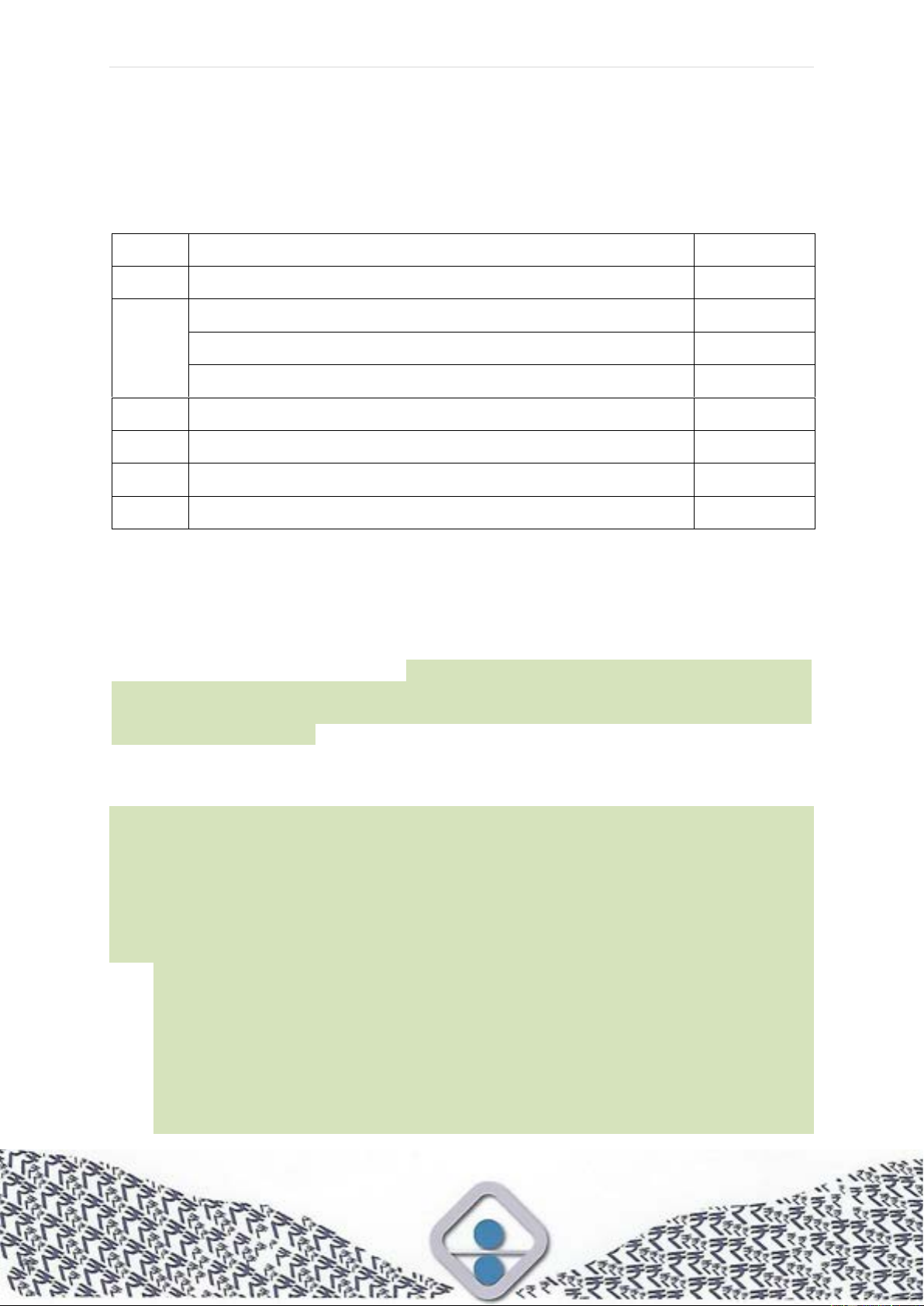
P a g e | 83
The suppliers shall be evaluated for short listing, inter-alia, based on their past
experience of supplying goods in similar context, financial strength, technical
capabilities etc. Each supplier will be assigned scores based on weightages assigned
to each of the criteria in EOI.
Sl. No.
Criteria
Weightage*
1
Past Experience of the firm of supplying goods
aaa*
2
Financial Strength of the Bidder
aaa*
Turnover figures of last three years
aaa*
Net Profit figures of last three years
aaa*
3
Quality Accreditations
aaa*
4
Manufacturing capabilities/ tie-ups
aaa*
5
After Sales Support Infrastructure
aaa*
6
Product Support
aaa*
* Weightages shall be conveyed separately after assessment of requirement and profile of the potential suppliers.
All suppliers who secure the minimum required marks (normally 50%) should be short
listed. The minimum qualifying requirement shall be specified in the EOI document.
Alternatively, EOI document may specify minimum qualifying requirement for each of
the criteria i.e., minimum years of experience, minimum number of assignments
executed, minimum turnover etc. Suppliers applying as Class-I & Class-II local
suppliers, MSEs and Start-ups (whether MSEs or otherwise) shall be eligible for
relaxation of norms with regard to prior experience and prior turnover as per
government guidelines. Under such circumstances, all suppliers who meet the
minimum requirement, as specified, will be short listed. The short lists shall normally
comprise at least four firms.
6.4 Debarment of Suppliers
Registration of suppliers and their eligibility to participate in BRBNMPL’s procurements
is subject to compliance with Code of Ethics (Para 2.2) and good performance in
contracts.
The terms “Banning of firms”, ‘Suspension’, ‘Blacklisting’ etc. convey the same
meaning as that of “Debarment”.
6.4.1 Grades of Debarment of Suppliers
Following grades of debarment from registration and participation in BRBNMPL’s
procurements can be considered against delinquent bidders/suppliers:
(i) Holiday listing (Temporary debarment or suspension): In less serious
cases, a supplier (including their related/allied entities) may be temporarily
debarred from BRBNMPL’s procurements for short periods up to 12 (twelve)

P a g e | 84
months, without the firm’s name being removed from the list of registered
vendors;
(ii) Removal from list of registered vendors: Debarment of a delinquent
supplier (including their related/allied entities) for a period of time (one to
two years) from BRBNMPL’s procurements with the removal of name from
the list of registered vendors, due to severe deficiencies in performance or
other serious transgressions; and
(iii) Banning from procurements: For serious transgression, a delinquent
supplier (including their related/allied entities) may be banned/debarred
from participation in the procurement process of BRBNMPL and its
subsidiaries or beyond for a period not exceeding three years commencing
from the date of debarment.
The list of all the debarred suppliers should be displayed on the website of BRBNMPL.
6.5 Holiday Listing (Temporary Debarment - suspension)
Whenever a supplier is found lacking in performance, in case of less frequent and less
serious misdemeanours, the suppliers may be put on a holiday listing (temporary
debarment) for a period up to 12 (twelve) months after following the debarment
procedures. When a supplier is on the holiday listing, he is neither invited to bid nor
are his bids considered for evaluation during the period of the holiday. The supplier is,
however, not removed from the list of registered suppliers. The supplier automatically
stands removed from the holiday listing on expiry of the holiday period. Performance
issues which may justify holiday listing of the vendor are:
(i) Vendors who have not responded to requests for quotation/tenders
consecutively three times without furnishing valid reasons or as decided by the
functional manager with the approval of competent authority;
(ii) Repeated non-performance or performance below specified standards (including
after sales services and maintenance services);
(iii) Suppliers undergoing process for Removal from Registration or banning/
debarment may also be put on a holiday listing during such proceedings, if so
recommended by the competent authority.
6.6 Removal from List of Registered Suppliers
In cases of deficiencies in any of the performance issues listed below, such suppliers
may be removed from the list of registered suppliers after following due process. The
vendors removed from the list of registered vendors are neither invited to bid nor are
their bids considered for evaluation. Whenever a firm is removed from the list of
registered suppliers, its registration stands cancelled but the supplier data should not
be deleted from the (computer) system. Such removal must be promulgated to all units
so that no unit of BRBNMPL conducts further business relation with such firms.
Suppliers removed from the list of registered vendors or their related entities may be
allowed to apply afresh for registration after the expiry of the period of removal.
Performance issues which may justify removal of the supplier from the list of registered
suppliers are:

P a g e | 85
(i) The supplier fails to abide by the terms and conditions or to maintain the required
technical/operational staff/equipment or there is change in its production/service
line affecting its performance adversely, or fails to cooperate or qualify in the
review for registration;
(ii) Non-performance or performance below specified standards such as repeated
delays in delivery (more than once during a contract period), low quality of goods
(rejection of goods more than two times during a contract period), non-delivery
etc. during the period of delivery specified in the purchase order;
(iii) In case liquidated damages have been claimed against the supplier more than
twice, during a contract period;
(iv) If the firm ceases to exist or is acquired by or merged with another firm, or ceases
to operate in the category of requirements for which it is registered;
(v) Bankruptcy or insolvency on the part of the supplier as declared by a court of law;
or
(vi) Banning by any Ministry/Department of Govt., PSU or any other Government
agency;
(vii) Other than in situations of force majeure, after opening of financial bids, the
supplier withdraws from the procurement process or after being declared as
successful bidder: (i) withdraws from the process; (ii) fails to enter into a
procurement contract; or (iii) fails to provide performance security or any other
document or security required in terms of the bidding documents;
(viii) If the CBI/CVC/C&AG or Vigilance Department of Procuring Entity or any other
investigating agency recommends such a course in respect of a case under
investigation;
(ix) Employs an Ex Company-official within two years of his retirement, who has had
business dealings with him in an official capacity before retirement; or
(x) Any other ground, based on which the registering authority considers, that
continuation of registration is not in public interest.
6.7 Banning of Firms
When the misconduct and moral turpitude of a firm goes beyond mere performance
issues, imposition of a ban on business relations with the firm may be done for a
specified period of time (not exceeding three years), after following the debarment
procedures. Before passing order for banning of business, the name of the defaulting
firm is to be removed from its list of registered vendors. An order for banning passed
for a certain specified period shall be deemed to have been automatically revoked on
the expiry of that specified period and it will not be necessary to issue a specific formal
order of revocation. However, the firm would have to apply afresh for registration with
the procuring entities. If a Firm or its Partners/Directors/Agents/Representatives/
Employees, with the knowledge of the Firm or without it, are found to be indulging in
misdemeanours, then the Firms or individuals and any of their successors should be
banned or debarred for under mentioned periods in the following manner:

P a g e | 86
A. Debarment limited to BRBNMPL and its subsidiaries
(i) A Firm may be debarred from participating in any procurement process
undertaken by BRBNMPL for a period not exceeding two years if there is strong
justification for believing that the firm or its proprietor or employee or
representative of the firm has been guilty of violation of the Code of Ethics or
Integrity Pact. The following shall constitute violation of Code of Ethics: -
No official of a procuring entity or a bidder shall act in contravention of the codes
which includes,
1. prohibition of
a) making offer, solicitation or acceptance of bribe, reward or gift or any
material benefit, either directly or indirectly, in exchange for an unfair
advantage in the procurement process or to otherwise influence the
procurement process.
b) any omission or misrepresentation that may mislead or attempt to
mislead so that financial or other benefit may be obtained or an
obligation avoided.
c) any collusion, bid rigging or anticompetitive behavior that may impair
the transparency, fairness and the progress of the procurement
process.
d) improper use of information provided by the procuring entity to the
bidder with an intent to gain unfair advantage in the procurement
process or for personal gain.
e) any financial or business transactions between the bidder and any
official of the procuring entity related to tender or execution process of
contract; which can affect the decision of the procuring entity directly
or indirectly.
f) any coercion or any threat to impair or harm, directly or indirectly, any
party or its property to influence the procurement process.
g) obstruction of any investigation or auditing of a procurement process.
h) making false declaration or providing false information for participation
in a tender process or to secure a contract.
2. disclosure of conflict of interest.
3. disclosure by the bidder of any previous transgressions made in respect of
the provisions of sub-clause (1) with any entity in any country during the
last three years or of being debarred by any other procuring entity.
(ii) A bidder can also be debarred for any actions or omissions by the bidder other
than violation of Code of Ethics which in the opinion of BRBNMPL, warrants
debarment, for reasons like supply of sub-standard material, non-supply of
material, abandonment of works, sub-standard quality of works, evasion or
habitual default in payment of any tax levied by law, failure to abide by “Bid
Security Declaration” etc.

P a g e | 87
(iii) The debarment shall only be applicable to BRBNMPL and its subsidiaries. It shall
not be circulated to other Entities.
(iv) Before issuing debarment order against a firm, BRBNMPL must ensure that
reasonable opportunity has been given to the concerned firm to represent
against such debarment (including personal hearing, if requested by the firm).
(v) Order for revocation of debarment before the period of debarment is over can
also be issued if there is adequate justification for the same. Ordinarily, the
revocation of the order before expiry of the debarred period should be done with
the approval of MD.
(vi) BRBNMPL will also maintain a list of debarred firms which will be displayed on
its website.
(vii) Debarment is an executive function and should not be allocated to Vigilance
Department.
B. Debarment to be extended beyond BRBNMPL and its subsidiaries
(i) Where BRBNMPL is of the view that business dealings with a particular firm
should be banned beyond BRBNMPL and its subsidiaries by debarring the firm
from taking part in any bidding procedure, BRBNMPL should, after obtaining due
approval of MD, forward to DoE, MoF a self-contained note setting out all the
facts of the case and the jurisdiction for the proposed debarment, along with all
relevant papers and documents. DoE will issue the necessary orders after
satisfying itself that proposed debarment beyond BRBNMPL and its subsidiaries
is in accordance with GFR Rules. This scrutiny is intended to ensure uniformity
of treatment in all cases.
(ii) A firm may be debarred from participating in procurement processes beyond
BRBNMPL and its subsidiaries, for a period not exceeding three years, if the
proprietor of the firm, its employee, partner or representative:
a) is convicted of any offence by a court under the Prevention of Corruption
Act, 1988 or under the Indian Penal Code or any other law for the time being
in force for causing any loss of life or property or causing a threat to public
health or to any other legal liability to BRBNMPL as part of execution of a
procurement contract or for any offence involving moral turpitude in
business dealings;
b) is suspected to have doubtful loyalty to the country or national security
considerations as determined by appropriate agencies of GoI (normally
such banning/debarment would be initiated by GoI/Ministry);
c) any other ground, based on which the GoI/Ministry considers that banning
is in public interest.
(iii) The firm will remain in suspension mode (i.e. debarred) during the interim period
till the final decision taken by DoE, only in BRBNMPL and its subsidiaries.
(iv) BRBNMPL before forwarding the proposal to DoE must ensure that reasonable
opportunity has been given to the concerned firm to represent against such
debarment (including personal hearing, if requested by the firm). If DoE realizes

P a g e | 88
that sufficient opportunity has not been given to the firm to represent against the
debarment, such debarment requests received from BRBNMPL shall be rejected.
(v) DoE can also give additional opportunity, at their option, to firm to represent
against proposed debarment. DoE can also take suo-moto action to debar the
firms in certain circumstances.
(vi) No contract of any kind whatsoever shall be placed on the debarred firm,
including its related/allied firms by entities doing public procurement after issue
of a debarment order.
(vii) DoE will maintain a list of such debarred firms, which will be displayed on Central
Public Procurement Portal.
Revocation of Orders
(i) An order for debarment passed shall be deemed to have been automatically
revoked on the expiry of that specified period and it will not be necessary to issue
a specific formal order of revocation.
(ii) A debarment order may be revoked before the expiry of the order, by the
competent authority, if it is of the opinion that the disability already suffered is
adequate in the circumstances of the case or for any other reason.
Other Provisions (common to both types of debarments)
(i) No contract of any kind whatsoever shall be placed on debarred firm including its
allied firms after issue of a debarment order. Bids from only such firms shall be
considered for placement of contract, which are neither debarred on the date of
opening of tender (first bid, normally called as technical bid, in case of two
packet/two stage bidding) nor debarred on the date of contract. Even in cases of
risk purchase, no contract should be placed on such debarred firms.
(ii) In case, any debarred firm has submitted a bid, the same will be ignored. In case
such firm is lowest (L1), next lowest firm shall be considered as L1. Bid security
submitted by such debarred firms shall be returned to them.
(iii) Contracts concluded before the issue of debarment order shall not be affected
by the debarment order.
(iv) The debarment shall be automatically extended to all its allied firms. Allied firms
are defined as all those concerns which come within the sphere of effective
influence of the debarred firms. In determining this, the following factors may be
taken into consideration:
a) Whether the management is common;
b) Majority interest in the management is held by the partners or directors of
banned/suspended firm;
c) Substantial or majority shares are owned by the banned/suspended firm
and by virtue of this, it has a controlling voice;
d) Directly or indirectly controls or is controlled by or is under common control
with another bidder;
e) All successor firms will also be considered as allied firms.

P a g e | 89
(v) In case a joint venture/consortium is debarred, all partners will also stand
debarred for the period specified in the ‘Debarment Order’. The names of
partners should be clearly specified in the Debarment Order.
(vi) Debarment in any manner does not impact any other contractual or other legal
rights of the procuring entities.
(vii) The period of debarment shall start from the date of issue of debarment order.
(viii) The order of debarment will include the reason(s) in brief that lead to debarment
of the firm.
(ix) Ordinarily, the period of debarment should not be less than six months.
(x) In case of shortage of suppliers in a particular group, such debarments may also
hurt the interest of procuring entities. In such cases, endeavour should be to
pragmatically analyse the circumstances, try to reform the supplier and may get
a written commitment from the supplier that its performance will improve.
6.8 Debarment Procedures
Punitive actions of various grades of debarment against the suppliers should be
examined by a Supplier Discipline Committee and approved by competent authority
at the level of Unit Head. Due to principles of natural justice, it should be treated as a
quasi-judicial function following principles of natural justice, on lines akin to disciplinary
proceedings. The lists of such suppliers who have committed misdemeanours listed
in paras above shall be forwarded to the Supplier Discipline Committee for considering
various grades of debarment. On receipt of information or suo moto, the Committee
should take action to issue a show cause notice to such firms. The Committee may
also order an interim debarment (Holiday Listing) during the process considering the
severity of demeanour. The supplier should be given adequate opportunity (including
an oral hearing by the competent authority) to make representations. If the response
to the show cause notice is not satisfactory or not acceptable, such firms should be
put on suitable grade of debarment, depending on the severity of the misdemeanour.
Appeals would lie at a level higher than the competent authority or MD whichever is
lower. The list of all the debarred suppliers should be displayed on the website of
BRBNMPL.
6.9 Safeguarding Procuring Entity’s Interests during debarment of suppliers
Suppliers are important assets for the procuring entities and punishing delinquent
suppliers should be the last resort. It takes lot of time and effort to develop, register
and mature a new supplier. In case of shortage of suppliers in a particular group of
materials/equipment, such punishment may also hurt the interest of Procuring Entity.
Therefore, views of the concerned Department may always be sought about the
repercussions of such punitive action on the continuity of procurements. Past records
of performance of the supplier may also be given due weightage. In case of shortage
of suppliers and in cases of less serious misdemeanours, the endeavour should be to
pragmatically analyse the circumstances, reform the supplier and get a written
commitment from the supplier that his performance will improve. If this fails, efforts
should be to see if a temporary debarment can serve the purpose.

P a g e | 90
Chapter 7: Tendering Systems
Section I Bidding Systems
Depending on the complexity and criticality Technical of requirement, Criticality of
capability of Source and value of procurement, following types of bidding systems may
be used.
7.1 Single Stage Bidding System
In single stage bidding, all bids are invited together in a single envelope or in multiple
envelops system. This bidding system is suitable where technical requirements are
simple or moderate; capability of source of supply is not too crucial and the value of
procurement is not too high;
7.1.1 Single Stage Single Envelop System:
For procurement of commercially off the shelf (COTS) stores, where qualitative
requirements and technical specifications are clear, capability of source of supply
isn’t critical and value of procurement is low or moderate, the single envelop
system, where eligibility, technical/commercial and financial details are submitted
together in the same envelop may be followed. This is the simplest and the
quickest bidding system and should be the default system of bidding. The lowest
responsive priced bid that meets the eligibility criteria, technical and commercial
requirements laid down in the bid documents is declared as successful.
7.1.2 Single Stage Two Envelops System (Two Bid System):
In technically complex requirements but where capability of source of supply is
still not crucial and value of procurement is not low, a two envelop system may
to be followed.
(i) The tenderers should be asked to bifurcate their quotations in two envelops.
The first envelop, called the techno-commercial bid, contains the eligibility,
technical quality and performance aspects, commercial terms and
conditions and documents sought in the tender, except the price and
relevant financial details. In the second envelop, called the financial bid, the
price quotation along with other financial details are submitted. Both the
envelops are to be submitted together in a sealed outer envelope;
(ii) If required, Technical specification and techno-commercial conditions
should be modified, in a pre-bid conference in the two envelop tender and
it would be desirable not to invite fresh financial bids after opening of the
techno-commercial bids;
(iii) The techno-commercial bids are to be opened in the first instance on the
bid opening date and time by the bid opening committee, and scrutinised
and evaluated by the TEC with reference to parameters prescribed in the
tender documents and responsive, eligible and technically compliant
bidders are decided;

P a g e | 91
(iv) Thereafter, in the second instance, the financial bids of only the techno-
commercially compliant offers (as decided in the first instance above) are
to be opened on a preannounced date and time for further scrutiny,
evaluation, ranking and placement of contract. The financial bids of
technically non-compliant bidders should be returned unopened to the
respective bidders by registered acknowledgement due/reliable courier or
any other mode with proof of delivery. In e-Procurement, financial bids of
technically non-compliant offers would not get opened.
7.1.3 Single Stage Multiple Envelops System with pre-qualification:
Where the procurement is moderately complex and the time, effort and money
required from the bidder to participate in a tender is not very high, instead of a
separate stage of Pre-Qualification bidding, a clear-cut, fail-pass qualification
criteria can be asked to be submitted as the first (additional) envelop in a three
envelop single stage bidding, so that a bidder’s risk of having his bid rejected on
grounds of qualifications is remote if due diligence is exercised him. Strictly
speaking, this is not a pre-qualification but a Post- qualification of bidders. In the
first instance on the bid opening date only the PQB envelops (also containing the
EMD and other eligibility documents) are opened and evaluated to shortlist the
responsive bidders who pass the Pre-qualification. Rest of procedure is same as
two envelop system for only qualified bidders. Rest two envelops of unqualified
bidders are returned unopened to the respective bidders by registered
acknowledgement due/reliable courier or any other mode with proof of delivery;
Section II Pre-Qualification Bidding (PQB)
7.2 Pre-Qualification Bidding (PQB): In complex technical requirements where
capability of source of supply is crucial (for example in procurement of complex
machinery and equipment), for the successful performance of the contract,
besides considering techno-commercial suitability, it is necessary to ensure that
competition is only among bidders with requisite capabilities matching the
challenges of the task. In case bidders with inadequate capability are allowed to
compete, the better qualified bidders would be eliminated since their bid price is
likely to be higher commensurate with their higher capability infrastructure. Such
situations, a separate stage of PQB bidding system may be considered (or single
stage multiple envelop bidding – please refer para above). In PQB stage,
competent qualified tenderers are shortlisted by using a Pre-Qualification
Criterion (PQC – for example - 1. past experience of similar contracts, 2.
performance capability and 3. financial strength) prior to the issue of the bid
document exclusively to shortlisted bidders in the second stage. Pre-qualification
Bids (PQBs) should meet the norms of transparency, fairness and maintenance
of competition.
7.3 Since there is heightened risk of cartelization among shortlisted bidders, PQB
should be done only as an exception under specified circumstances. It should
not be a routine/normal mode of procurement of goods and an eligibility criteria
clause as part of single/two envelop/cover tendering should suffice in normal/
routine situations.

P a g e | 92
7.4 Pre-qualification Criteria: PQC should be unrestrictive enough so as not to
leave out even one capable vendor/contractor. Otherwise, it can lead to higher
prices of procurement/works/ services. However, on the other hand, these
criteria should be restrictive enough so as not to allow even one incapable
vendor/contractor and thus vitiate fair competition for capable
vendors/contractors to the detriment of the buyer’s objectives. A misjudgement
in either direction may be detrimental. Certain guidelines regarding the framing
of PQC have been laid down. Pre-Qualification Criteria for PQB to be done in the
following cases have been prescribed in the Annexure 29:
a) Procurement of Plant & Machinery / Equipment
b) Procurement of items Other than Plant & Machinery / Equipment
c) Development tender or Exceptional one-off cases
Due consideration should be given while framing PQC, to its effect on adequacy
of competition. To encourage MSEs, past successful bidders, a call may be taken
– whether PQC should apply to full quantity/packages or be proportional to part
quantity/package quoted by a bidder. In case requirement is suddenly a multiple
times the past procurements, blind adoption of past PQCs may lead to
disqualification of successful past vendors leading to inadequate competition.
PQC should therefore be carefully decided for each procurement with the
approval of CFA for acceptance of the tender. It should be clarified in the PQB
documents that bidders have to submit authenticated documents in support of
eligibility criteria.
7.5 Categories of Procurement where PQB is Desirable or Undesirable
7.5.1 Desirable Categories
In following categories of procurements, PQB shall be called for by BRBNMPL
for procurement of Goods:
(i) Security items: Raw Material and Plant & Machinery / Equipment of
Security and Sensitive Nature, where the specifications can be shared only
with PQC compliant bidders who are cleared by security agencies.
(ii) Development Tenders or Exceptional One-Off cases: Development of
sources of items where BRBNMPL finds it necessary to develop more
sources or desires to develop indigenous sources for imported proprietary
/ non-proprietary items – only in those cases where BRBNMPL has the
specifications / drawings (henceforth referred as Development Tender).
7.5.2 Undesirable Categories
PQB bidding as a separate stage is contraindicated (undesirable) in the following
circumstances:

P a g e | 93
a) Where procurement can be done through limited tender enquiries;
b) Where the Procuring Entity has at least three registered bidders of the
category and grade matching tendered scope of procurement and financial
limit;
c) Where the requirement is technically and commercially simple enough that
prequalification of the bidder is not crucial for the performance of the
contract, for example, Commercially off the Shelf (COTS) requirements;
7.6 Where the procurement is moderately complex and the time, effort and money
required from the bidder to participate in a tender is not very high, a clear-cut,
fail-pass post-qualification criteria can be specified in a three envelop single
stage bidding (instead of two stage bidding), so that a bidder’s risk of having his
bid rejected on grounds of qualifications is remote if due diligence is exercised
by him.
7.7 PQB Procedures
7.7.1 Advertisement and Notification
The invitation for PQB shall be processed (advertised, bid document preparation,
publicity and evaluation, and so on) in the same manner as a normal GTE or
OTE (as the situation calls for) tender, ensuring the widest possible coverage.
The PQC and evaluation criterion should be notified clearly in the PQB
documents. The PQB documents should also indicate a complete schedule of
requirements for which this PQB is being done, including approximate likely
quantities of requirements. A minimum period of 45 (Forty-Five) days may be
allowed for the submission of PQBs. In the case of urgency, duly approved by
CFA, the time limit may be reduced to 30 (Thirty) days.
7.7.2 Evaluation
(i) Evaluation shall be strictly done as per the criteria prescribed. It should be
clarified in the PQB Documents that bidders have to submit documents in
support of eligibility criteria. Supporting documents submitted by the bidder
must be certified as follows:
a) All financial data should be certified by certified accountants e.g.
Chartered Accountants (CA) in India and Certified Public Accountant
/ Chartered Accountant in other countries.
Submission of audited books of accounts with valid UDIN is required
for firms whose sales, turnover or gross receipts is more than ₹1 crore.
However, for firms whose cash receipts are limited to 5% of the gross
receipts or turnover, and whose cash payments are limited to 5% of
the aggregate payments, the threshold limit of ₹1 crore for tax audit is
increased to ₹10 crore with effect from AY 2021-22 (FY 2020-21).

P a g e | 94
Firms whose sales, turnover or gross receipts is less than ₹1 crore,
submission of audited books of accounts is not necessary. However,
they have to submit the following documents along with the bid in
order to ensure the eligibility of the bidder against the financial
standing criteria: -
• The bidders may submit a statement of their turnover and net
worth certified by CA bearing a valid UDIN, or
• The bidders may submit a self-certified statement of their
turnover and net worth along with IT returns and ITR
acknowledgement.
• The bidders are required to provide the Xerox copies of supply
orders executed by the firm or the certificate issued by the
customers to that effect.
b) All experience, past performance and capacity / capability related /
data should be certified by the authorized signatory of the bidder firm.
The credentials regarding experience and past performance to the
extent required as per eligibility criteria submitted by bidder should be
verified from the parties for whom work has been done.
(ii) PQC credentials and data called for may be verified and evaluation may be
done strictly as per notified criteria. In case relaxation is considered
necessary, re-tendering may be done. Decision making should not be left
to the Tender Evaluation Committee.
(iii) Decision of the PQB shall be conveyed to the successful bidders. However,
in the case of Security Products, PQB results shall be conveyed to
successful bidders only after receipt of security clearance from competent
authority.
7.7.3 Subsequent Procurement tender
The pre-qualification shall be valid for such period as may be specified in the pre-
qualification document and for a single subsequent procurement within this
period, except when it is determined that engaging in fresh pre-qualification shall
not result in enhanced competition. During the period of such validity, the
Procuring Entity shall invite bids for procurement (Request for Proposals – RfP)
from pre-qualified bidders and all other bids may be treated as unsolicited offers
which are normally rejected. In case bids are not invited within such a period,
fresh prequalification shall be done. It is desirable that the time gap between the
pre-qualification approval and floating of the linked main procurement tender is
less than six months.
7.7.4 PQB Procedures for procurement of CWBN paper and Ink

P a g e | 95
(i) Whenever required, the PQB exercise for adding firms to the vendor base
will be undertaken to enlist the vendors. The PQB will contain the criteria
for: -
a) Experience and past performance,
b) Capability, equipment and manufacturing facility
c) Financial standing for turnover and Net worth
d) In addition to above basic criteria, the firms are required to qualify in
other technical requirement is as detailed in the tender document
(ii) Security requirement: The details of the firms, who have qualified in these
criteria, not having valid security clearance and those whose security
clearance is expiring within a year, will be forwarded to MoF for obtaining
security clearance. The firms which are security cleared from the ministry
will be enlisted in the vendor list for supply of material in this category.
(iii) The tenders will be issued only to the firms who are enlisted in the vendor
list. As and when new firms are cleared by the ministry the firm will be
included in the vendor list. The firms so included are eligible for
consideration for tender issued subsequent to their inclusion in the vendor
list. If any vendor from the list is denied security clearance by the ministry
at a later stage the name of the firm will be removed from the vendor list
and will not be eligible to participate in the subsequent tender unless the
security clearance is granted by the ministry again.
(iv) The firms qualifying in the above criteria will be considered for opening of
price bid and normal evaluation procedure as enumerated in the manual
will be followed.
(v) Holding/Parent Company: In case of procurement of CWBN paper,
eligibility for participation and explanation for bidder, holding/parent
Company shall be as below: -
a) The manufacturers of CWBN paper alone (“Manufacturers”) shall be
eligible to apply or to take part in the bid. In case a Manufacturer fulfils
all the eligibility criteria as specified in this PQB except the eligibility
criteria relating to financial standing (Turnover & Net worth), such
Manufacturer can rely on the financial standing of its Holding
Company/Parent Company (as defined below), provided that such
Holding Company/Parent Company
1) gives its written consent permitting the Manufacturer to rely on
its financial standing;
2) gives a written confirmation to BRBNMPL stating that it has not
given its consent to any other Manufacturer to rely on its financial
standing and that it will not permit any other Manufacturer to rely
on its financial standing; and
3) gives an undertaking to BRBNMPL that it has not submitted and
will not submit a bid (either jointly or severally) in response to the
PQB.

P a g e | 96
b) An entity will be deemed as a Holding Company/Parent Company of
the Manufacturer if and only if such entity
1) is validly registered as an incorporated company under the
applicable jurisdictional laws; and
2) holds more than 50% of the voting share capital of the
Manufacturer; and
3) Has the right to nominate majority directors on the board of the
Manufacturer and has pursuant to such right appointed majority
directors on the board of the Manufacturer. Concurrently, the
entity for which the Holding Company/Parent Company fulfils the
above criteria shall be construed as the Subsidiary of such
Holding Company/Parent Company.
c) Manufacturer of CWBN paper cannot rely on the financial standing /
credentials of the Holding Company/Parent Company if the
Manufacturer does not fulfil the other eligibility criteria like experience,
past performance and capacity/capability to satisfy the technical
requirements.
d) Manufacturer shall not be entitled to utilize the manufacturing facilities
of the Holding Company/Parent Company or any third party for supply
of CWBN paper. It is further clarified that the Manufacturer must
ensure that all manufacturing of CWBN paper will only be undertaken
in its own facilities and not in the facilities of the Holding Company/
Parent Company or any other third party.
e) There shall be only one bid from each Group. The reference to term
‘Bidder’ shall mean a reference to the Manufacturer alone even in
case of a joint bid with its Holding Company/Parent Company and the
term ‘Bidder’ shall not mean a reference to the ‘Holding
Company/Parent Company’. Even if the Bidder proposes to rely on
the financial standing of its Holding Company/Parent Company, such
bid shall be construed as one single bid from the Group by the
Manufacturer jointly along with its Holding Company/Parent Company.
If it is found that more than one company from a Group has submitted
separate bids either jointly with another Bidder or on its own, then all
Bidders from such Group who have submitted the bids shall be
disqualified and all their respective bids shall be rejected.
f) The Bidder is required to submit a self-declaration that they are not
engaging any agents for participation in this tender. In case the Bidder
is relying on the financial credentials of its Holding Company/Parent
Company, the Holding Company/ Parent Company is also required to
submit a self-declaration that they are not engaging any agents for
participation in this tender.
7.8 PQC Summary Table:

P a g e | 97
A summary of PQC is laid down in Tabular form separately for machinery and plant
and for items other than machinery and plant, for different categories of items (as per
para 7.5.1 above) It has been Tabulated as Annexure 29: Prequalification Criteria
summary for these categories of procurements.
Section III Tenders Involving Samples
7.9 Existing Guidelines:
As per the existing guidelines on Public Procurement of Goods, purchase is to be done
as per drawing / standard / specification etc. and purchase as per sample should not
be normally done. How to comply with these guidelines in various situations involving
samples is detailed in following Paras.
7.10 Indeterminable Characteristics:
In certain specifications, there may be built in sample clause. Usually such clauses
are stipulated to illustrate indeterminable characteristics such as shade/tone, size,
make-up, feel, finish, workmanship etc. In some specification there may not be a
sample clause but such indeterminable characteristics may not be specified and may
be left to be agreed to between seller and buyer. In either case, supply is to be in
conformity with an agreed sample in such respects only, whereas for the remaining
characteristics the supplies must be in conformity with the laid down Drawings
/specifications. In such cases also CVC recommends that calling for sample along with
tender and deciding the Tender on the basis of evaluation of Sample may not be done.
Procurement of such items should be decided on the basis of detailed specifications/
Drawings and no sample is to be called or evaluated along with the bids. In addition,
if desired a Purchaser's sample may be put on display for prospective Tenderers,
indicating the example of desired indeterminable characteristics, which final supplies
from successful Bidder(s) will have to meet in addition to meeting the
Specifications/Drawings. If required, in addition to or instead of Purchaser's Sample,
provision for submission of a pre-production sample to the inspection agency/ User by
successful bidder(s) may be stipulated for indeterminable characteristics, before
giving clearance for bulk production of the supply.
7.11 Specifications Not Known:
There are occasions when items, normally PAC products, cannot be procured from
the original manufacturer. In such situations, if possible, either
(a) A substitute similar usable item - for which specification / drawings can be
obtained be procured as per specification in-lieu, or
(b) Wherever it is feasible, Procurement may be done as per Specifications /
Drawings to be developed through:
• In-house technical capability, or
• Through other agencies / consultant.
7.12 Indigenization and Development Tenders:
Cases of Indigenization and Development Tenders where specifications/ Drawings are

P a g e | 98
not available and cannot be even prepared through means described in Para 7.11 b)
- are detailed in following Paras. However, it may not be feasible to prepare a list of
such items and we may go on case to case basis and by precedence. In such a case
also no samples are to be called along with bids thus there is no evaluation of samples
during the tender. If necessary, Purchaser's samples may be displayed for prospective
bidders. If further considered necessary, the successful bidders may be asked to
submit pre-production sample before regular production is allowed.
7.13 Purchaser's Sample:
In cases, where it is decided to display Purchaser's sample, it may be displayed for
prospective Tenderers (with or without stipulation of submission of pre-production
sample by the successful Bidder, before bulk manufacture). In the Tender enquiry, the
methodology and Tests that will be done should be made clear for ensuring
compliance of Supplies (and Pre-production sample, if indicated) with the Purchaser's
sample. Such Purchaser's samples would also have to be later provided to successful
bidders for guidance.
7.14 Pre-production sample:
Where pre-production samples are required to be approved under the terms of the
contract before bulk manufacture is permitted, the Contractor shall submit the sample
(free of cost if Contract does not specify explicitly any cost for these) to the Inspecting
Officer/ or the nominated authority mentioned in the contract within the time specified
in the acceptance of tender. If the Contractor is unable to do so, he must apply
immediately to the Office issuing the acceptance of tender for extension of time stating
the reasons for the delay. If the Purchaser is satisfied that a reasonable ground for an
extension of time exists, he may allow such additional time as he considers to be
justified (and his decision shall be final) with or without alteration in the delivery period
stipulated in the acceptance of tender and on such conditions as he deems fit. In the
event of the failure of the Contractor to deliver the preproduction sample by the date
specified in the acceptance of tender or any other date to which the time may be
extended as aforesaid by the Purchaser or of the rejection of the sample, the
Purchaser shall be entitled to cancel the contract and, if so desired, purchase or
authorize the purchase of the stores at the risk and cost of the Contractor (except in
case of Development / Indigenization Contracts - where this provision is not there). In
such an event, in case of Security Items where urgency develops due to such delays,
not more than one year's requirement may be procured against this "Risk & Cost"
tender from existing pre-qualified and security cleared firms, with the approval of
BRBNMPL HQ. Therefore, Performance Security (SD) should be called for in all cases
of Security / Sensitive Items, even in case of Development/ Indigenization Tenders.
7.15 Testing of Samples:
7.15.1 Testing Procedures and Declarations:
If any technical test is envisaged, then the procedure shall be prescribed in the
tender for the method and process of testing. The technical test, wherever
involved for the item of procurement, should be carried out by way of adopting a

P a g e | 99
specific transparent system and strictly as per the procedure prescribed in the
tender document.
7.15.2 Validation / Prolonged Trials
In case of certain pre-production samples, it may be necessary to do validation
or extended trial before their performance can be declared satisfactory which
should be made clear in the Tender and Contract Documents. This can be for
example in Machine/ Spares used in the Production line where performance
during prolonged production run may be required to verify the output claimed by
the vendor.
This may also be relevant during the process of Development or Indigenization
contracts.
Such Validations may only be done on pre-production samples that too during
first Supply order of the vendor. This should be declared in the Bid Documents,
indicating the Parameters Settings and duration of Validation Tests which should
be objective Tests with measurable / repeatable results. If the duration of validity
Trials is in terms of mileage/ output levels an outer time limit may also be fixed.
Normally the period of validation should not be more than 3 months. It should
also be indicated whether the Permission to start bulk production will have to wait
full validation or it can go on in parallel.
7.15.3 Testing Laboratories:
Tests from External Testing Authorities may be done in accordance with
provisions of Para 12.7.2. Some tests may only be possible in BRBNMPL units.
TEC may monitor such in-house tests to ensure transparency and objectiveness.
7.15.4 Failure of Samples:
(i) In case of Development of Sources or in case of Indigenization of Imported
items, firms may be given three chances to make improvements, in a
transparent and equitable manner. Such chances shall be given with a
reasonable time-frame and it should not be left open-ended. The reasons
of failure of sample of one bidder may be shared with all bidders while hiding
the identity (without violating any IPR involved) of the Bidder of failed
sample.
(ii) In case of Pre-production samples, firm may be given one more chance if
the first sample does not come up to the Contract requirement. However,
this shall be done without re-fixation of Delivery Time.
(iii) Authority to accept / Reject Samples: Final Acceptance/ Rejection of
samples may be done by the TEC.
7.16 Handling and Preservation of Samples:
7.16.1 When a contract is concluded on the basis of an approved sample/

P a g e | 100
purchaser's sample the same shall bear seals/signatures of the approval
of the different agencies as appropriate. The Samples thus bearing the
seals/signatures shall serve as guide for inspection against the particular
contract as given in its scope.
7.16.2 In all such cases DGM (MMD) should issue suitable local instructions to
guide procurement, inspection, receipt and account of samples. It should
be ensured that sealed and signed samples are available in the following
manner:
(i) One sample with the stores officer nominated by DGM (MMD) for
incoming inspection, record and dispute resolution.
(ii) One sample with the supplier to guide manufacture (in case of
Purchaser's sample)
(iii) One sample with the inspecting Authority to guide inspection.
Sealed samples intended to guide supplies against orders placed should
not as a rule be sent to firms, except in cases of procurement to
Purchaser's sample. Where it is necessary to show a sealed sample to
a firm it shall be done through the DGM (MMD).
7.16.3 The examination of the condition and correctness of seals of samples is
of great importance. If a sample bears a seal of doubtful character or
otherwise open to question the same shall be immediately brought to the
notice of all concerned failing which the responsibility for the defect shall
lie on the person in charge of the samples at the time when the defect is
noticed.
7.16.4 Unless otherwise directed samples sealed at Unit and issued to stores
shall be returned after the order is completed.
7.16.5 Sample shall be issued for departmental use only. The DGM (MMD) shall
be responsible for maintenance and accounting for the samples
registered and issued for departmental use.
Section IV Indigenization and Development Tenders
7.17 Indigenization and Development Tenders
These are tenders with special dispensations to develop adequate sources or
Specifications/Drawings and also to indigenize manufacturing of certain items for
strategic reasons. These are dealt with in separate chapter 16.
Section V Expression of Interest Tenders (EOI) – Two Stage Bidding
7.18 Expression of Interest Tenders – Market Exploration – Two Stage Bidding

P a g e | 101
(i) There are instances where the equipment/plant to be procured is of complex
nature and the procuring organization may not possess the full knowledge of
either the various technical solutions available or the likely sources for such
products in the market. To meet the desired objectives of a transparent
procurement that ensures value for money simultaneously ensuring upgradation
of technology & capacity building, it would be prudent to invite a two-stage
Expression of Interest (EoI) Bids and proceed to explore the market and to
finalise specifications based on technical discussions/presentations with the
experienced manufacturers/suppliers in a transparent manner. Expression of
Interest (EoI) bids may be invited in following situations:
a) It is not feasible for the Procuring Entity to formulate detailed specifications
or identify specific characteristics for the subject matter of procurement,
without receiving inputs regarding its technical aspects from bidders;
b) The character of the subject matter of procurement is subject to rapid
technological advances or market fluctuations or both;
c) The Procuring Entity seeks to enter into a contract for the purpose of
research, experiment, study or development, except where the contract
includes the production of requirements in quantities sufficient to establish
their commercial viability or to recover research and development costs; or
d) The bidder is expected to carry out a detailed survey or investigation and
undertake a comprehensive assessment of risks, costs and obligations
associated with the particular procurement.
(ii) The procedure for two stage bidding shall include the following, namely:
a) In the first stage of the bidding process, the Procuring Entity shall invite EoI
bids containing the broad objectives, technical and financial eligibility
criteria, terms and conditions of the proposed procurement etc. without a
bid price. On receipt of the Expressions of Interest, technical
discussions/presentations may be held with the short-listed manufacturers/
suppliers, which are prima facie considered technically and financially
capable of supplying the material or executing the proposed work, giving
equal opportunity to all such bidders to participate in the discussions.
During these technical discussions stage the procurement agency may also
add those other stakeholders in the discussions who could add value to the
decision making on the various technical aspects and evaluation criteria.
Based on the discussions/presentations so held, one or more acceptable
technical solutions could be decided upon laying down detailed technical
specifications for each acceptable technical solution, quality benchmarks,
warranty requirements, delivery milestones etc., in a manner that is
consistent with the objectives of the transparent procurement. At the same
time care should be taken to make the specifications generic in nature so
as to provide equitable opportunities to the prospective bidders. Proper
record of discussions/ presentations and the process of decision making
should be kept;

P a g e | 102
b) In revising the relevant terms and conditions of the procurement, if found
necessary as a result of discussions with the shortlisted bidders, the
Procuring Entity shall not modify the fundamental nature of the procurement
itself;
c) In the second stage of the bidding process, the Procuring Entity shall invite
bids from all those bidders whose bids at the first stage were not rejected,
to present final bid with bid prices in response to a revised set of terms and
conditions of the procurement;
d) Any bidder, invited to bid but not in a position to supply the subject matter
of procurement due to modification in the specifications or terms and
conditions, may withdraw from the bidding proceedings without forfeiting
any bid security that he may have been required to provide or being
penalised in any way, by declaring his intention to withdraw from the
procurement proceedings with adequate justification;
e) If the Procuring Entity is of the view that after EoI stage, there is likelihood
of further participation by many more bidders and to avoid getting trapped
into a legacy technology, the second stage bidding may not be restricted
only to the shortlisted bidders of EoI stage and it may be so declared in the
EoI document ab-initio. Thereafter in the second stage, normal OTE/GTE
bidding may be done. Such variant of EoI is called ‘Non-committal’ EoI.
(iii) Invitation of EoI Tenders: The stages to be followed together with the
applicable guidelines for EoI tenders have been detailed in Chapter 6.
(iv) EOI tenders are mostly used for identifying suppliers interested in registration
with BRBNMPL or for Development / Indigenization of Items. These are detailed
in Chapters 6 and 16 respectively.
Section VI Tenders for Disposal of Scrap
7.19 Tenders for Disposal of Scrap
Such tenders are for Sale of Scrap material lying at various locations. Details are
discussed in Chapter 14: Disposal.
Section VII eProcurement
7.20 eProcurement
(i) eProcurement or electronic procurement is the use of information and
communication technology (specially the internet) by the buyer in conducting
procurement processes with the supplier for the acquisition of goods (supplies),
works and services aimed at open, non-discriminatory, and efficient procurement
through transparent procedures. There are service providers in the Public Sector
(e.g. MSTC) and Private sector which can be utilized for eProcurement. A service
provider is engaged to provide an eProcurement system covering all steps
starting from hosting of tenders to determination of techno commercially

P a g e | 103
acceptable lowest bidder. Bidders will have to upload scanned copies of various
documents required for eligibility and all other documents as specified in NIT,
techno-commercial bid in cover-I, and price bid in cover-II. Evaluation of Techno-
commercial and Price Bids is done off-line in the same manner as in the normal
tendering process, based on system generated reports and comparative
statements. Award of contract is also done off-line.
(ii) Electronic Reverse Auction (RA) is a type of auction (classified as dynamic
procurement method) where the starting price, bid decrement, duration of auction,
maximum number of automatic extensions are announced before start of online
reverse auction. If required, RA may be preceded by an eProcurement stage of
eligibility/PQB to shortlist competent bidders who would be allowed to participate
in the RA. The shortlisted bidders can after the start of RA start bidding online in
an iterative process wherein the lowest bidder at any given moment can be
displaced by an even lower bid of a competing bidder, within the duration of the
RA. The most favourable bid at the end of stipulated / extended time is declared
as successful. Items in the nature of commodities, Commercially-off-the-shelf
items, items having large number of suppliers and high value procurements may
be procured under reverse auction. Items of strategic, critical, and vital nature,
items in short supply in market and where there are only a few suppliers, are not
good candidates for reverse auction.

P a g e | 104
Chapter 8: Pre-Tender Stage and Bid Opening
8.1 Introduction
Tender documents should be prepared in order to provide clear technical and
commercial terms of reference for the proposed procurement. The standard bidding
documents attached with the manual should be used for details. The preparation of
the following parts of the tender document shall be emphasized during the preparation
of the tender document:
(i) Invitation for bids / Notice Inviting Tender (NIT)
(ii) General and Special Instructions to Tenderers (GIT & SIT)
(iii) Forms of bid, qualification information, technical specifications including
drawings (if any)
(iv) Terms and Conditions of contract
(v) Payment terms (detailed in Chapter 9)
(vi) Forms of security
(vii) Delivery Schedules
The checklist for tender preparation is given in Annexure 23: Check points for Tender
Enquiry. BRBNMPL's Standard Bidding Documents for procurement of goods is given
in SBD section of the manual
Terminology for Tendering Documents in USA and International Procurement like,
RFP and RFQ has nowadays become prevalent even in Indigenous procurement.
These terminologies unfortunately are used quite differently. World Bank and Asian
Development Bank use RFQ and RFP terminology but do not use RFI term (for which
they use EOI). However common usage is as follows:
(i) RFI - Request for Information (approx. like Expression of Interest - EOI
Tender)
An open enquiry that spans the market seeking broad data and understanding.
(ii) RFQ - Request for Qualification (approx. like PQB)
An opportunity for potential suppliers to get short listed for subsequent
procurement tender. Lays down precise Qualification Criteria for short listing of
Vendors, to whom RFP would be issued.
(iii) RFP - Request for Proposal (approx. Tender floated to target suppliers like
after the RFI or RFQ)
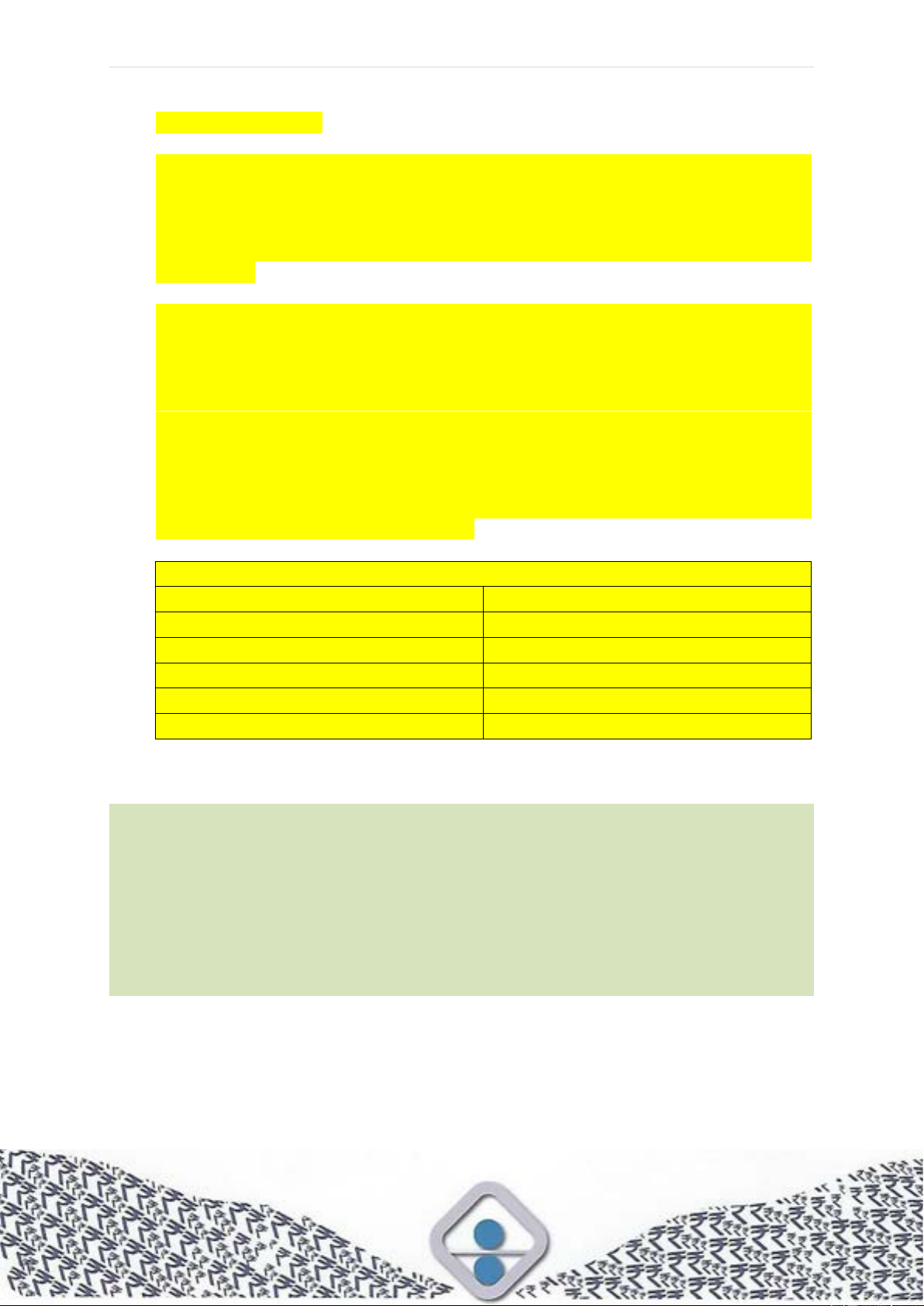
P a g e | 105
8.1.1 Tender Fee
Tender documents should preferably be sold or available for download up to the
date of opening of tenders and this should be clearly indicated in the documents.
The organisation should also post the complete tender document in the website
(except cases where confidentiality is required, for reasons of national security)
and permit prospective tenderers to make use of the document downloaded from
the website.
The tender document fee should be as low as possible considering the cost/effort
of preparing documents. In order to promote wider participation and ease of
bidding, no cost of tender document may be charged for the tender documents
downloaded by the bidders. The Procuring Entity may decide not to take any
charges for the tender documents, in view of prevalence of downloading of tender
documents. The cost of the tender document is to be submitted by online bank
transfer or in the form of a demand draft/banker’s cheque/pay order. Firms that
are eligible for exemption from the tender document fee such as MSEs and
Startups, have to submit documents in support of this exemption. Although the
Procuring Entity is the best judge to decide or waive the document cost, following
table could be used as a starting point:
Cost of Tender document
Estimated value of tender
Tender Document Cost
Below ₹25 lakh
₹500 incl. applicable taxes
₹25 lakh to ₹2 crore
₹1,500 incl. applicable taxes
₹2 crore to ₹25 crore
₹2,500 incl. applicable taxes
₹25 crore to ₹50 crore
₹5,000 incl. applicable taxes
Above ₹50 crore
To be decided on case to case basis
8.2 Standard Bidding Documents (SBD)
Wherever this chapter refers to written communication and documents, the
corresponding process in e-procurement would be handled either fully online by way
of uploading/downloading/emails or automatically generated SMSs or else partly
online and partly off-line submission. It is advisable to eventually move to full
submissions online. More details are available from e-procurement service provider’s
portal. In e-procurement, the tender fee, EMD and documents supporting exemption
from such payments are submitted in paper form to the authority nominated in the NIT,
but scanned copies are to be uploaded without which their bid may not get opened. In
future, such payments may be allowed online also.
The Standard Bidding Document has been grouped under different broad sections in
order to make the system transparent, comprehensive, efficient and user-friendly. The
broad sections of the document are:
• Section I : Notice Inviting Tender (NIT)

P a g e | 106
• Section II : General Instructions to Tenderers (GIT)
• Section III : Special Instructions to Tenderers (SIT)
• Section IV : General Conditions of Contract (GCC)
• Section V : Special Conditions of Contract (SCC)
• Section VI : List of Requirements
• Section VII : Technical Specifications
• Section VIII : Quality Control Requirements
• Section IX : Qualification Criteria
• Section X : Tender Form
• Section XI : Price Schedule
• Section XII : Bidder Information
• Section XIII : Bank Guarantee Form for EMD
• Section XIV : Manufacturer's Authorization Form
• Section XV : Bank Guarantee Form for Performance Security
• Section XVI : Contract Form
• Section XVII : Letter of Authority for attending a Bid Opening
• Section XVIII : Eligibility Declarations
• Section XIX : Proforma of Bills for Payments
• Section XX : Pre-Contract Integrity Pact
A reading of the sections of the tender document, in the above order will make it amply
dear about the purpose and instructions behind the same. However, some broad
guidelines for preparing this document (viz. Standard Bidding document) are provided
in the subsequent paragraphs. While formulating SIT and SCC and other special
conditions, care should be taken not to violate any instruction/directive contained in
the Procurement Manual and approval of the competent authority must be taken.
CFA’s approval should be taken if there is a change/deviation from SBD/GCC/Special
conditions (SCC) used in past. There should be no reference to any provision of the
Manual in the tender documents.
8.3 Invitation for Bids / Notice Inviting Tender (NIT)
This model format is to be used for publishing the Tender Notice. The Invitation for
Bids specifies minimum acceptable functional, technical and contractual requirements,
and the evaluation criteria governing the award of a contract. NIT should be brief but
should contain sufficient details for a prospective Bidder to decide whether to
participate in the tender or not and if he decides to participate how to go about that.
Potential suppliers are provided copies of the Invitation for Bids and requested to
submit bids compliant to all given requirements by a specified date. A prescribed
format for Notice Inviting Tender is given in BRBNMPL's Standard Bidding Documents
for procurement of goods. This section of SBD may be modified if the situation so
warrants.
8.4 General and Special Instructions to Tenderers (GIT and SIT)

P a g e | 107
General Instructions to Tenderers (GIT) contain all the relevant information as well as
guidance to the prospective tenderers for preparation and submission of a responsive
bid. The GIT clearly states the payment terms, date, time and venue for obtaining,
submitting and opening the bids. It also states the qualification criteria and award
criteria. This section is to be included unchanged in every Tender Document. Any
changes warranted by special circumstances are to be indicated in the Special
Instructions to Tenderers (SIT). The format for preparing SIT along with corresponding
cross-reference with GIT provision is available in SBD. It is also indicated therein that
the provisions in the SIT will supersede the corresponding provisions in the GIT.
Clauses and Topics of GIT that indicate a possibility for variation in their provisions
through SIT are listed for guidance in the SIT Proforma.
8.4.1 Eligibility
(i) If considered desirable, eligibility criteria may be stipulated in the Bid
Documents. The bidder has to ensure that he provides convincing proof of
having fulfilled these criteria.
(ii) To prevent cartel formation, it should be stipulated that the firm must offer
at least 30% of the tendered quantity.
(iii) In case Integrity Pact is included in the Bid Documents, only those bidders
who sign the Integrity Pact, would be eligible to participate in the Tender.
(iv) Under Public Procurement (Preference to Make in India) Order 2017 (as
amended/revised from time to time) any Nodal Ministry for its items may
issue directions to exclude bidders from a country from eligibility for its
procurement as measure of reciprocity of such action by that country
against Indian Suppliers. For this purpose, a supplier or bidder shall be
considered to be from a country if (i) the entity is incorporated in that
country, or ii) a majority of its shareholding or effective control of the entity
is exercised from that country; or (iii) more than 50% of the value of the item
being supplied has been added in that country. Indian suppliers shall mean
those entities which meet any of these tests with respect to India.
(v) Ministry of Finance, Department of Expenditure, Public Procurement
Division’s Orders (Public Procurement 1, 2 and 3) F.No.6/18/2019-PPD
dated 23
rd
/24
th
July 2020 (or any further amendments thereof) regarding
eligibility of bidders from specified regions shall be applicable to all
procurements. Any bidder from a country which shares a land border with
India (excluding countries as listed in the website of Ministry of External
Affairs, to which the Government of India has extended lines of credit or in
which the Government of India is engaged in development projects) will be
eligible to bid in any procurement whether of goods, services (including
consultancy services and non-consultancy services) or works (including
turnkey projects) only if the bidder is registered with the Registration
Committee constituted by the Department for Promotion of Industry and
Internal Trade (DPIIT).
a) A certificate shall be obtained from the bidders regarding their
compliance with this provision 1. If such certificate given by a bidder

P a g e | 108
whose bid is accepted is found to be false, this would be a ground for
immediate termination and further legal action in accordance with law.
b) This shall not apply to procurements made through GeM without
knowing the country of the bidder till the date fixed by GeM for this
purpose, shall not be invalidated by this Order.
c) This shall not apply to small procurements, made without knowing the
country of the bidder.
8.4.2 Clarification of Bidding Document
A prospective bidder requiring any clarification of the bidding document shall
notify to BRBNMPL in writing, well before the due date of submission of the bids,
and response will be sent in writing to the clarifications sought prior to the date
of opening of the tenders. Copies of the query and clarification shall be sent to
all prospective bidders who have received the bidding documents.
8.4.3 Pre-Bid conference
If found necessary, Technical specification and techno-commercial conditions of
the tender should be fine-tuned in a pre-bid conference in two bid tender and in
those single-bid tenders where Technical Specification is considered to be
sophisticated.
8.4.4 Amendment of Bidding Document
At any time prior to the date of submission of bids purchaser may, whether at his
own initiative or in response to a clarification requested by a prospective bidder,
may modify bid documents by amendments. The amendments shall be uploaded
in the website and notified in writing by registered / speed post or by fax / telex /
e-mail, followed by copy of the same by registered post to all prospective bidders.
In order to afford prospective bidder a reasonable time to take the amendment
into account in preparing their bids, purchaser may, at his discretion, extend the
deadline for submission of bids.
If at the time of publication of the amendment, the number of days left for tender
opening are less than the following period, it may be extended so that at least
following number of days are available to the bidders:
(i) GTE/ICB : 21 days
(ii) OTE/NCB : 14 Days
(iii) Others : 7 Days
8.4.5 Bid Validity
A bid shall remain valid for 90 days in case of single bid tender system and 120
days in case of two-bid system, unless otherwise specified in SIT, from the date
of submission of offer. A bid valid for shorter period can be rejected, as being
non-responsive. In exceptional circumstance the consent of the bidder may be
requested for an extension to the period of bid validity. Such requests should be

P a g e | 109
made much before the expiry of the bid validity. Such requests shall be made in
writing. The bid security provided shall also be suitably extended. A bidder
accepting the request and granting extension shall not be permitted to modify his
bid. Bidding documents should be made carefully and re-tendering should be
resorted to sparingly.
8.4.6 Late Bids
A tender, which is received after the specified date and time for receipt of tenders
will be treated as late" tender and will be ignored.
8.4.7 Modification; Alteration & Withdrawal of Bids
The bidder, after submitting its bid is permitted to submit alterations/
modifications to its tender so long such alterations/modifications are received
duly sealed and marked like original tender, upto the date & time of receipt of
tender. Any amendment/modification received after the prescribed date & time
of receipt of tenders are not to be considered. The bidder may also withdraw his
bid after submission provided that the written notice of withdrawal is received
prior to deadline prescribed for submission of bids. A withdrawal notice may be
sent by fax/email but followed by a signed confirmation copy by post not later
than the deadline for submission of bids. No bid may be withdrawn in the interval
between the deadline for submission of bids and expiration of the period of bid
validity specified. Withdrawal of a bid during this period will result in forfeiture of
Bidder's bid security (EMD) and other sanctions.
8.4.8 Authorized Dealers/Distributors/Representatives of suppliers
(i) For Non-Commercially-Off-the-Shelf (Non-COTS) items, when a firm sends
quotation for an item manufactured by some different company, the firm is
also required to attach, in its quotation, the manufacturer's authorisation
certificate and also manufacturer's confirmation of extending the required
warranty for that product as per formats given in SBD. This is necessary to
ensure quotation from a responsible party offering genuine product, also
backed by a warranty obligation from the concerned manufacturer. In the
tender, either the manufacturer/OEM or its authorised dealer/distributor/
representative can be considered as valid bidders.
(ii) In case of large contracts, especially capital equipment, the manufacturer’s
authorisation must be insisted upon on a tender specific basis, not general
authorisation/dealership, by so declaring in the bid documents clearly.
(iii) In cases where the manufacturer has submitted the bid, the bids of its
authorised dealer/distributor/representative will not be considered and EMD
will be returned.
(iv) And in case of violations, both infringing bids will be rejected.
(v) For Commercially-Off-the-Shelf (COTS) items with clear and standard

P a g e | 110
specifications, where the requirement is technically and commercially
simple enough that pre-qualification of the bidder is not crucial for the
performance of the contract, a valid dealership certificate will have to be
submitted.
8.4.9 Conflict of Interest among Bidders
A bidder shall not have any conflict of interest with other bidders. Such conflict of
interest can lead to anti-competitive practices to the detriment of Procuring
Entity’s interests. The bidder found to have a conflict of interest shall be
disqualified. A bidder may be considered to have a conflict of interest with one or
more parties in the bidding process if,
(i) they have controlling partner(s) in common; or
(ii) they receive or have received any direct or indirect subsidy/financial stake
from any of them; or
(iii) they have the same legal representative for purposes of the bid; or
(iv) they have relationship with each other, directly or through common third
parties, that puts them in a position to have access to information about or
influence on the bid of another Bidder; or
(v) Bidder participates in more than one bid in the bidding process.
Participation by a Bidder in more than one Bid will result in the
disqualification of all bids in which the parties involved. However, this does
not limit the inclusion of the components/sub-assembly/ Assemblies from
one bidding manufacturer in more than one bid; or
(vi) In cases of authorised representatives quoting in offshore procurements,
on behalf of their principal manufacturers, one representative cannot
represent two manufacturers or quote on their behalf in a particular tender
enquiry. One manufacturer can also authorise only one representative/
dealer. There can be only one bid from the following:
a) The principal manufacturer directly or through one Indian
representative on his behalf; and
b) Indian/foreign representative on behalf of only one principal.
(vii) a Bidder or any of its affiliates participated as a consultant in the preparation
of the design or technical specifications of the contract that is the subject of
the Bid.
(viii) For same reasons, in case of a holding company having more than one
independently manufacturing units or more than one unit having common
business ownership/management, only one unit should quote. Similar
restrictions would apply to closely related sister companies. Bidders must
proactively declare in their bids such sister/ common
business/management units in same/similar line of business.
8.5 Forms of bid & qualification information

P a g e | 111
BRBNMPL's Standard Bidding Documents (SBD) along with the relevant forms for
tender submission, Performance Bank Guarantee, Letter of Authority for attending bid
opening, Manufacture's Authorization Form and Contract Form shall be enclosed. The
tender should clearly define the qualification criteria based on which proposals will be
considered as responsive.
8.6 Terms & Conditions of the Contract
The General conditions of contract (GCC) to be used for contracting for procurement
along with Form of Contract are given in BRBNMPL's Standard Bidding Documents
for procurement of goods. These terms and conditions are general and should be used
unchanged with all types of contracts. To keep low risk, low value procurements simple,
GCC should not be applicable to procurement below ₹1 Lakh.
Special conditions of Contract (SCC) of contract may be included in the tender
documents, depending upon the need, and with the prior approval of competent
authority. The GCC / SCC shall also clearly specify the mode of procurement. The
format for preparing SCC along with corresponding cross reference with GCC
provision is available in this section. It is also indicated therein, the provisions in the
SCC will supersede the corresponding provisions in the GCC. Clauses and Topics of
GCC that indicate a possibility for variation in their provisions through SCC are listed
for guidance in the SCC Proforma.
8.7 Forms of Security
Provisions of this Para would not be applicable to Tenders of Value up to Rupees Two
lakh fifty thousand (₹2.5 lakh).
8.7.1 Earnest Money Deposit
Earnest Money Deposit (EMD) is also known as Bid Security. To safeguard
against a bidder's withdrawing/altering its bid during the bid validity period in the
case of advertised or limited tender enquiry, EMD is to be obtained from all the
bidders along with their bids.
(i) Amount of EMD should ordinarily be 2% of the estimated value of the goods
or services to be procured rounded off to nearest thousands of Rupees.
Depending on the type of goods or services to be procured, total value of
procurement and urgency of requirement, the exact amount of EMD should
be decided.
(ii) In indigenous procurements, it may be capped at ₹5 lakh for tenders up to
₹10 Crore and may be calculated @ 1% for tenders above ₹10 Crore,
denominated in Indian Rupees.
(iii) Micro and Small Enterprises (MSEs) as defined in MSEs Procurement
Policy issued by Department of Micro, Small and Medium Enterprises
(MSME) or Start-ups as recognised by Department for Promotion of
Industry and Internal Trade (DPIIT) and vendors who are currently
registered, and also, will continue to remain registered with BRBNMPL

P a g e | 112
(except for NCB/ICB Tender) during the tender validity period are exempted
from payment of earnest money. In case the tenderer falls in these
categories, it should furnish certified copy of its valid registration
(registration with BRBNMPL or as MSE or as Start-up, as the case may be).
(iv) Micro & Small Enterprises must attach Registration Certificate issued by
DIC / KVIC / KVIB / Coir Board / NSIC / Directorate of Handicrafts and
Handlooms, or any other body specified by MoMSME for authentication
such as Udyog Aadhaar Memorandum / Acknowledgment / Udyog Aadhaar
Portal / Udyam Registration.
(v) In lieu of Bid Security/EMD, such bidders may be asked to sign a "Bid
Security Declaration" accepting that if they withdraw or modify their bids
during period of validity, or if they are awarded the contract and they fail to
sign the contract, or to submit a performance security before the deadline
defined in the request for bids document, they will be suspended for the
time specified in the tender documents.
(vi) The earnest money shall be furnished in one of the following forms:
(a) Insurance Surety Bonds
(b) Account Payee Demand Draft from any scheduled commercial bank
in India.
(c) Banker's cheque from any scheduled commercial bank in India
(d) Online Bank Transfer (Proof of online transfer should be submitted
along with the tender papers and confirmed through F & A)
(e) Other Electronic Modes of Payment
• Debit Card powered by RuPay
• Unified Payments Interface (UPI) (BHIM-UPI)
• Unified Payments Interface Quick Response Code (UPI QR
Code) (BHIM-UPI QR Code)
(f) Bank Guarantee (including e-Bank Guarantee) issued/confirmed by
any scheduled commercial bank in India in the proforma given in
Section XIII of SBD in case the amount is more than ₹5 lakh and in
case of foreign bidders in GTE/ICB tenders (in equivalent foreign
exchange amount)
(vii) The demand draft or banker's cheque shall be drawn on any commercial
bank in India, in favour of the authority to be specified in SBD (NIT). In case
of bank guarantee, the same is to be provided from any commercial bank
in India as per the format specified under Section XIII in these documents.
(viii) EMD is waived in case of Single Tender (Nomination) basis, PAC basis,
Rate Contracts (registered vendors), and procurement from CPSEs and
Organizations governed by Government of India.
(ix) EMD may be waived with CFA's approval in case of Indigenization/
Development Tenders.

P a g e | 113
(x) In case of separate PQB tender before floating Procurement Tenders, EMD
may be taken only once from the successful Bidders and EMD may not be
asked from them in the Procurement Tender again. The EMD clause in
PQB tender should cover this aspect.
(xi) The EMD should remain valid for a period of 45 days beyond the final tender
validity period.
(xii) Forfeiture of Earnest Money Deposit: EMD of a bidder will be forfeited, if
the bidder withdraws or amends its tender or impairs or derogates from the
tender in any respect within the period of validity of its tender. Further, if the
successful bidder fails to furnish the required performance security within
the specified period, its EMD will be forfeited.
(xiii) Refund of Earnest Money Deposit: In case of two packet or two stage
bidding, EMD of unsuccessful bidders during the first stage i.e. technical
evaluation etc. should be returned to them without any interest whatsoever
within 30 days of declaration of result of the first stage i.e. technical
evaluation etc. Otherwise, EMD of the unsuccessful bidders should be
returned to them at the earliest after expiry of the final bid validity and latest
on or before the 30
th
day after the award of the contract.
(xiv) The successful bidder’s bid security (EMD) can be adjusted against the SD
or returned as per the terms of the tender document. The balance can be
deducted from the supplier's bill/invoice before release of payment. Unlike
Procurement of Works, in Procurement of Goods, the concept of taking part
of Performance Guarantee as money retained from first or progressive bills
of the supplier is not acceptable.
8.7.2 Performance Security
(i) In order to ensure due performance of the contract, Performance Security
[also called Performance Bank Guarantee (PBG) and Security Deposit (SD)]
is to be obtained from the successful bidder who has been awarded the
contract. Unlike contracts of Works/Services and Plant/Machinery, in case
of contracts for Goods, the need for the Performance Security shall depend
on the market conditions and commercial practices for the particular kind of
goods. Performance Security is to be obtained from every successful bidder
irrespective of its registration status etc. SD/PBG may be received after the
verification by DGM (F&A) / designated officer in adherence with said terms
and conditions. Performance Security should be for an amount of three to
ten percent (3-10%) of the value of the contract as specified in the bid
documents.
(ii) Performance Security may be furnished in the form of Insurance Surety
Bonds, Account Payee Demand Draft from any scheduled commercial bank
in India or Bank Guarantee (including e-Bank Guarantee) issued/confirmed
by any scheduled commercial bank in India or online payment in an
acceptable form safeguarding BRBNMPL's interest in all respects. In case
of GTE/ICB tenders, the Performance Security should be in the same
currency as the contract and must conform to Uniform Rules for Demand
Guarantees (URDG 758).

P a g e | 114
(iii) In Procurement of Works, the successful bidder’s bid security (EMD) can
be adjusted against the SD or returned as per the terms of the tender
document. The balance can be deducted from the supplier's bill/invoice
before release of payment. However, in Procurement of Goods, the concept
of taking part of Performance Guarantee as money retained from first or
progressive bills of the supplier is not acceptable.
(iv) Security is to be furnished by a specified date {generally 21 days after
notification of the award (LoI) or the contract, if LoI is skipped} and it should
remain valid for a period of 60 days beyond the date of completion of all
contractual obligations of the contractor, including warranty obligations.
Performance security is to be forfeited and credited to BRBNMPL's Account
in the event of a breach of contract by the contractor, in terms of the relevant
contract. Performance Security should be refunded to the contractor
without any interest, whatsoever, after it duly performs and completes the
contract in all respects but not later than 60 days of completion of all such
obligations under the contract. A model format of Bank Guarantee for
obtaining Performance Security is provided at Section XV of SBD.
(v) For multi-year Service contracts which may be of 5-7 years or more,
procuring entities may consider to proportionately keep reducing
performance security in proportion to the balance service period, wherever
feasible. Wherever it is decided to take lower or proportionately reducing
performance security, tender conditions may be suitably modified.
8.7.2.1 Non-receipt of Performance Security and Contract by
BRBNMPL
Failure of the successful tenderer in providing performance security within
21 days of receipt of notification of award and / or returning contract copy
duly signed within stipulated time shall make the tenderer liable for
annulment of the award and forfeiture of its EMD (or enforcement of Bid
Security Declaration), besides taking other administrative punitive actions
by BRBNMPL against it.
8.7.2.2 Verification of Bank Guarantees
Bank guarantees submitted by the tenderers / suppliers as EMD /
Performance securities need to be immediately verified from the issuing
bank before acceptance. Guidelines for verification of BGs submitted by the
bidders / contractors against EMD / performance security / advance
payments and for various other purposes are as follows:
(i) BG shall be as per the prescribed formats;
(ii) The BG contains the name, designation and code number of the Bank
officer(s) signing the guarantee(s);
(iii) The confirmation from the issuing branch of the bank is obtained in
writing through registered post/speed post/courier/email. The bank
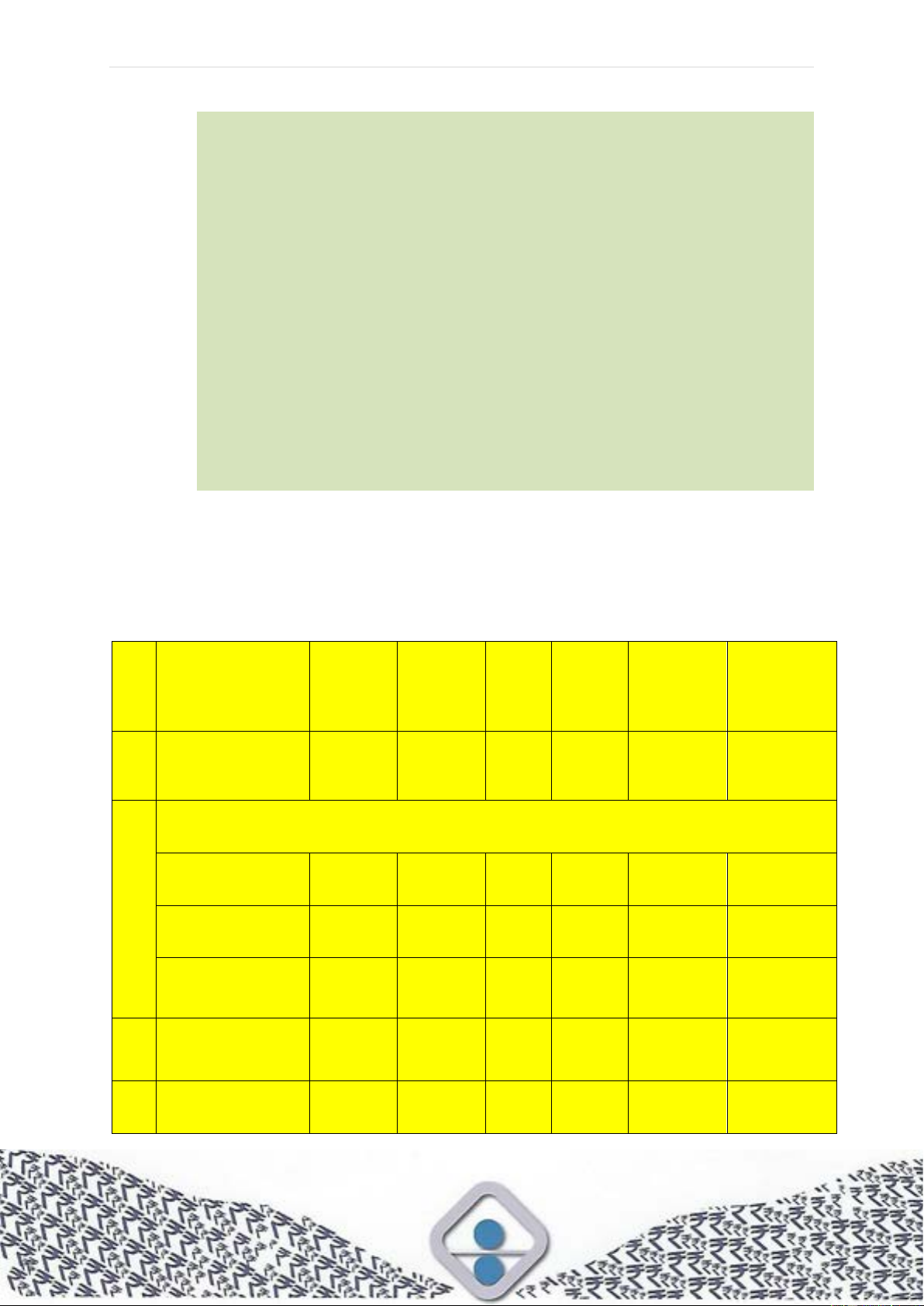
P a g e | 115
should be advised to confirm the issuance of the BGs specifically
quoting the letter of Procurement Entity on the printed official
letterhead of the bank indicating address and other details (including
telephone nos.) of the bank and the name, designation and code
number of the officer(s) confirming the issuance of the BG;
8.7.2.3 No Claim Certificate and Release of Contract Securities
After mutual reconciliations of outstanding payments and assets on either
side, the contractor shall submit a ‘No-claim certificate’ (Annexure 31) to
the Procuring Entity requesting the release of its contractual securities, if
any. The Procuring Entity shall release the contractual securities without
any interest if no outstanding obligation, asset, or payments are due from
the contractor. The contractor shall not be entitled to make any claim
whatsoever against the Procuring Entity under or arising out of this Contract,
nor shall the Procuring Entity entertain or consider any such claim, if made
by the contractor, after he shall have signed a "No Claim" Certificate in
favour of the Procuring Entity.
8.8 Publication of Tenders
8.8.1 Media for Publicity
Following procedure may be adopted to publish various types of tenders
for publication of tenders for different modes of procurement:
Sl
No
Mode of
Procurement
Inter-
national
News-
paper
National
News-
paper
Local
Verna
cular
News-
paper
Online
Indian
Trade
Journal
(ITJ)
BRBNMPL
Website
Information
to embassy
1
ICB (see Note 1)
Min 1
Min. 2
(1 English
& 1 Hindi)
Min. 1
Yes
Yes
Yes
2
NCB (see Note 2)
(a) Between ₹2.5 -
₹5 Lakhs
No
No
Yes
No
Yes
No
(b) Between ₹5 -
₹25 Lakhs
No
Yes
Yes
No
Yes
No
(c) Above ₹25
Lakhs
No
Min. 2
(1 English
& 1 Hindi)
Min. 1
Yes
Yes
No
3
Invitation to EOI
No
Min.2
(1 English
& 1 Hindi)
Min.1
Yes
Yes
No
4
Limited Tendering
(see Note 3)
No
No
No
No
Yes
No

P a g e | 116
Note 1: ICB tenders should also be published in International press in addition
to national newspaper(s) of wide circulation. Copies of the tender enquiry may
be sent to the Indian embassies abroad as well as the foreign embassies in India.
The selection of embassies would depend on the possibility of availability of the
required goods/services in such countries.
Note 2: In NCB, in addition to publication of advertisements, notices may be sent
by Registered Mail / Reliable Courier / Other Recorded Method to BRBNMPL's
registered vendors of the item / category and also to past successful suppliers,
drawing their attention to the NCB.
Note 3: In limited tendering, direct written enquiries along with detailed
specifications of requirements should be sent by Registered Mail/ Reliable
Courier / Other Recorded Method to BRBNMPL registered bidders without open
advertisement. To avoid situations where some of selected prospective bidders
may not receive the Bid-Documents by post/courier, the Tender Notice may also
be put up on website with a note that:
"This notice is being published only as an abundant precaution and is not an
open invitation to quote in the Tender. Participation in this tender is by invitation
only and is limited to the selected BRBNMPL's Registered Bidders for the item,
who have been sent this Tender by Post/ Courier. Unsolicited offers are liable to
be ignored."
Note 4: It is mandatory to upload all tender enquiries above ₹2.5 lakhs,
corrigenda thereon and details of bid awards on the Company's website. These
instructions apply to all Tender Enquiries, Requests for Proposals, Requests for
Expressions of Interest, Notice for Pre-Qualification/Registration or any other
notice inviting bids or proposals in any form whether they are advertised, issued
to limited number of parties or to a single party. These instructions would not
apply to Purchase of goods without quotations or Purchase of goods by purchase
committee.
Individual cases where confidentiality is required, for reasons of national security,
would be exempted from the mandatory uploading requirement. The decisions
to exempt any case on the said grounds should be approved by the CFA.
8.8.2 Guidelines for Publicity
Following guidelines may be followed by the officer inviting tender, regarding
publicity of tenders:
(i) In addition to publication of advertisements, attention of known reputed
suppliers, BRBNMPL registered vendors and also past/ current successful
suppliers may also be drawn wherever possible.
(ii) Request for release of advertisement should be sent well in advance so
that adequate time is available for release through press.
(iii) Newspapers cuttings in each case should be collected and kept on record
as a proof of publicity actually achieved as far as possible.

P a g e | 117
(iv) Full details of the dates on which advertisement have actually appeared in
the Newspapers should be indicated while sending cases to higher
authorities
(v) Wherever applicable, for publication of tender notices in national
newspaper, widely circulated publication in English and Hindi shall be
chosen, preferably also having a local edition, with circulation of over two
Lakh copies or the one amongst top 7 newspapers by circulation (as per
the latest available NRS/ IRS survey)
(vi) Depending on the target vendors, local/vernacular newspapers with
circulation of over one Lakh copies or one amongst top three newspapers
by circulation (as per the latest available NRS/ IRS survey) shall be selected.
(vii) Selection of Newspaper may be reviewed every 3 years.
(viii) Print out of the tenders published in the website shall be kept in the file and
also shown to TEC.
8.8.3 Economy in Publicity
For economy in cost, following guidelines should be kept in view:
(i) As far as possible, combined tender notice may be issued for all the works
to be awarded around the same time.
(ii) The official designation and address of the relevant officers should not to
be repeated at the end.
(iii) Based on media consumption for the last three years, media buying for the
entire year should also be initiated.
(iv) Advertisement in newspapers may be brief and shall give reference to
BRBNMPL website.
(v) The cost of publication of Newspaper advertisements should not exceed 2%
of the estimated value of the tender (NCB/ICB). If the cost of advertisement
exceeds 2% of estimated tender value, then, approval of the Managing
Director shall have to be obtained. Efforts should be made to combine
newspaper advertisements for multiple tenders in order to reduce cost.
8.9 Tender Submission & Bid Opening
8.9.1 Receipt & Custody of Tenders
Following key guidelines shall be followed for receipt and custody of bids:
(i) Receipt and custody of bids shall be done in a transparent manner to
maintain credibility of the process.
(ii) Materials Management Division shall maintain a Tender Box for receiving
the bids and the box should be locked by officers and other authorized
personnel nominated by the Competent Authority.
(iii) The location of Tender Box should be such as to facilitate easy access to
bidders

P a g e | 118
(iv) For oversized bids which cannot be dropped into Tender Boxes, the officials
authorized to receive the bid shall provide a receipt signed by them with
date and time to the bearer of the bid.
(v) Bids received by courier shall be deposited in tender box by the Dispatch
section till the date & time of bid opening,
(vi) In cases where the tender is required to be submitted by hand, it may be
ensured that the names and designation of at least two officers are
mentioned in the bid documents. The information about these officers
should be displayed at the entrance reception of the premises where the
tenders are to be deposited so as to ensure convenient approach for the
bidders.
(vii) Bulky tenders which cannot be dropped in the Tender Box can be accepted
by Dispatch section. While taking delivery of such bulky tender(s), the
officer who receives the tender(s), will sign on the cover; duly indicating the
date and time of receipt of the tender(s).
8.9.2 Procedures to be followed during Bid Opening
(i) The Committee will meet on suitable days fixed by the units. In case of
holiday, the committee will meet on the next working day.
(ii) Bid Opening Committee should Collect Bids from Tender Box kept at
security gate at prescheduled time
(iii) The BOC will prepare a list of the representatives attending the tender
opening and obtain their signatures on the same. The list will also contain
the representatives' names and the corresponding bidders' names &
addresses and the authority letters brought by the representatives. This list
will also be signed by BOC members with date & time.
(iv) BOC should ensure the bid envelopes are duly sealed and untampered.
Before opening each bid, envelop should be held up for all participants, to
see that it is in sealed and untampered condition.
(v) All the tenders received on time shall be opened in the presence of Bid
Opening Committee and the tenderers or their authorized representatives
(who have submitted regular tenders) at the prescribed time, date and place.
The authorized representatives, who intend to attend the tender opening,
are to bring with them letters of authority from the corresponding tenderers.
Key role and mandate of Bid Opening committee is detailed at Para 3.3.1,
which may be strictly followed,
(vi) Ensure all mandatory requirements (e.g. EMD, specific supporting
documents etc.) as specified in the bid-documents are fulfilled.
(vii) The Bid Opening Committee is to announce the salient features of the
tenders like description and specification of the goods, quoted price, terms
of delivery, delivery period, discount if any, whether EMD furnished or not
and any other special feature of the tender for the information of the
representatives attending the tender opening.

P a g e | 119
(viii) After opening, every tender shall be numbered serially (say 3/14 – if it is the
third bid out of 14 total), initialled and dated on the first and last pages and
any other relevant pages, by the Bid Opening Committee. Each page of the
price schedule or letter attached to it shall also be initialled with date,
particularly the prices, delivery period etc., which shall also be circled and
initialled with date. Any other page containing significant information should
also be dealt with similarly. Blank tenders, if any, should be marked
accordingly by the tender opening officials.
(ix) The original (and duplicate, if any) copies in a tender set are to be marked
accordingly by the tender opening panel.
(x) Alterations / overwriting / use of whitener / columns left unfilled in tenders,
if any, made by the tenderers, shall be initialled with date & time by the
officials opening the tenders to make it perfectly clear that such alterations
were present on the tenders at the time of opening. Wherever any erasing
or cutting is observed, the substituted words should also be encircled and
initialled with date & time to make clear that such erasing/ cutting of the
original entry was present on the tender at the time of opening.
(xi) An on-the-spot report containing the names of the tenderers (serial number
wise) salient features of the tenders, as read out during public opening of
tenders will be prepared by the tender opening officers duly signed by them
with date & time.
(xii) The tenders, which have been opened, the list of the representatives
attending the tender opening and the on-the spot report are to be handed
over to the nominated purchase officer and acknowledgement obtained for
the same.
(xiii) Money documents should be handed over to DM (F&A) / MGR(F&A) for
safe custody and monitoring as per Para 10.17.8.
(xiv) In case of samples which accompany the bid, proper codification needs to
be done on samples as well
(xv) Prescribed format for letter of authority for attending bid opening is given in
Annexure 7: Letter of Authority for attending a Bid Opening.
(xvi) Prescribed format for bid opening attendance sheet is given in Annexure 8:
Bid Opening Attendance Sheet

P a g e | 120
Chapter 9: Payment Terms and Price Variations
9.1 Payment Terms and Price Variations
The elements of price included in the quotation of a bidder depend on the nature of
the payment terms. It is, therefore, necessary that, the tender documents should
clearly specify the terms of payment to enable the bidders to frame their quotations
properly in a meaningful manner.
(i) Where the price has several components like price of the goods, costs for
installation & commission, operators' training etc. the bidders should be asked to
furnish the cost break-up indicating the applicable prices for each such
component along with the overall price. The payment schedule & terms will be
linked to this cost break-up. Refer Para 9.8 and 9.10.
(ii) Milestones for partial payment should be clearly defined in case of annual
contracts of large value, and the same shall be clearly specified in the tender
documents.
(iii) The tender documents should also specify the currency in which the tenders are
to be priced.
(iv) Unless otherwise specified, usual payment term is 100% on receipt and
acceptance of goods by the Materials Management Division and on production
of all required documents by the supplier.
(v) As far as possible, the payment terms and the schedule given therein should be
adhered to. Any foreseen payment delays should be communicated to the
suppliers in advance.
(vi) Release of payment and settlement of final bill will be done only after the
concurrence of GM (F & A) & GM (MMD) or any other designated officer in his
absence.
(vii) Payment through NEFT: The tenderer shall give his consent in a mandate form
for receipt of payment through NEFT with details endorsed by bank or along with
cancelled cheque; by attaching the same in the (Technical) Bid. Tenderer shall
provide the details of Bank A/C in line with RBI guidelines for the same. These
details will include Bank Name, Branch Name & Address, Account Type, Bank
A/C No., and Bank, & Branch Code as appearing on MICR cheque issued by
bank. In case of non-payment through NEFT, or where NEFT facility is not
available, payment may be released through cheque. The purchase order will
contain the following details as furnished by the firm:
a) Account No. & Type
b) Bank Name & Code
c) Branch name & Address
d) Whether payment is through NEFT or Cheque

P a g e | 121
9.2 Firm Price vis-à-vis Variable Price
(i) For short term contracts where delivery period does not extend beyond 18
months, contract should normally be concluded with firm and fixed price by
inviting tenders accordingly.
(ii) However even for shorter deliveries Price Variation clause may be stipulated for
items with non-ferrous and other Raw Materials prone to short term price volatility
especially for critical or High Value Items otherwise there is a possibility of failure
of contract or the purchaser having to pay more prices in a situation of fall in
prices.
(iii) For High Value (more than ₹3 Crore) Tenders with deliveries longer than 18
months a Price Variation Clause may be provided to protect Purchaser's interests
also.
(iv) Where it is decided to conclude the contract with variable price, an appropriate
clause incorporating, inter-alia, suitable price variation formula should also be
provided in the tender documents. In the price variation clause, the price agreed
upon should specify the base date viz., the month and year to which the price is
linked, to enable variations being calculated with reference to the price indices
prevailing in that month and year.
(v) A formula for calculation of price variation that has taken place between the base
level and the scheduled delivery date is to be included in the price variation
clause. The variations are to be calculated periodically by using indices published
by Governments/ Chamber of Commerce/ London Metal Exchange (LME)/ any
other neutral and fair sources of Indices. Suitable weights are to be assigned to
the applicable elements viz., fixed overheads & profits, material and labour in the
price variation formula. If the production of the goods needs more than one raw
material, then the input cost of material may be further sub-divided for different
categories of material, for which cost indices are published.
(vi) The price variation formula is also to stipulate a minimum percentage of variation
of the contract price, only above which the price variation will be admissible (e.g.,
where the resultant increase is lower than, say, 2% of the contract price, no price
adjustment will be made in favour of the supplier).
(vii) The Price Variation Clause should provide for a ceiling on price variations,
particularly where escalations are involved. It could be a percentage per annum
or an overall ceiling or both. In cases of highly volatile indices like Non-ferrous
etc., this upper limit may be dispensed with the approval of CFA. The buyer
should ensure a provision in the contract for benefit of any reduction in the price
in terms of the Price Variation Clause being passed on to him. An illustrative PV
clause is placed at Annexure 27: Formula for Price Variation Clause.
(viii) The Raw Materials used in manufacture of stores are procured some weeks
before its submission for inspection. This period is called the Time Lag for Price
Variation. It applies both for Base Date and Date of Supply. This should be
stipulated in the Price Variation Clause as is done in Annexure 27: Formula for
Price Variation Clause.

P a g e | 122
(ix) Where advance or stage payments are made, there should be a further
stipulation that no price variations will be admissible on such portions of the price,
after the dates of such payment.
(x) Where deliveries are accepted beyond the scheduled Delivery Date subject to
levy of liquidated damages as provided in the Contract, the liquidated damages
(if a percentage of the price) will be applicable on the price as varied by the
operation of the Price Variation Clause.
(xi) No upward price variation will be admissible beyond the original Scheduled
Delivery Date for defaults on the part of the supplier. However downward price
variation would be availed by the purchaser as per the Denial Clause in the letter
of extension of DP.
(xii) In respect of contracts providing for price variation, care should be taken to
finalize price before final payment is made, after obtaining necessary data and
documents in support of claims for escalation, if any. Where no such claims are
submitted by the Suppliers, it would need to be examined whether there has
been downward trend in the cost which forms the basis of variation as per the
formula incorporated in the contract such as price of input material like steel, non-
ferrous metals etc. At any rate undertaking should be obtained from the
contractor to the following effect. In case it becomes necessary to make final
payment before they have submitted required data / documents related to price
variation clause.
“It is certified that there has been no decrease in the price of Price Variation
Indices and in the event of any decrease of such indices during the currency of
this contract we shall promptly notify the same to the purchaser and offer
requisite reduction in the contract rate ".
(xiii) Notwithstanding the above formalities, it should be appreciated that it is in the
interest of the purchaser to be vigilant about downward variation and it is
therefore the basic responsibility of the purchase officers to make sure that the
benefits of downward variation, wherever the same occurs are fully availed of.
9.3 Exchange Rate Variation (ERV)
In case of delivery period exceeding one year from the date of contract involving
substantial import content, foreign exchange variation clause needs to be provided.
The offer of the tenderer should indicate import content and the currency used for
calculating import content. The Base Exchange rate of each significant currency used
for calculating the Foreign Exchange content of the contract shall be as prevailing on
the last deadline for submission of Techno-commercial Bids, and variation beyond the
base Exchange Rate shall be calculated up to the midpoint of the delivery period,
unless firm has already indicated the time schedule within which material will be
imported by the firm. In case delivery period is refixed / extended, ERV will not be
admissible, if this is due to default of the supplier.
9.3.1 Documents for claiming ERV:
(i) A bill of ERV claim enclosing working sheet
(ii) Banker's Certificate/debit advice detailing F.E. paid and exchange rate
prevailing on the date as applicable.

P a g e | 123
(iii) Copies of import order/agreement placed on supplier
(iv) Invoice of supplier for the relevant import order
9.4 Statutory Duties and Taxes on Domestic Goods
(i) The duties and taxes including Goods and Services Tax levied by the
Government on domestic goods vary from product to product.
(ii) As a general policy, the statutory variations in such duties & taxes are to be
allowed during the period from the date of tender to the date of acceptance of
the tender (i.e. placement of contract) and during the original/re-fixed delivery
period of the contract so that both the supplier and BRBNMPL are equally
compensated for rise or fall in the prices of the goods on account of such
statutory variations. (Note: Re-fixed delivery period means the fresh delivery
period which is arrived at by recasting the original contractual delivery period
after taking care of the lost period, for which the supplier was not responsible.)
(iii) In the tender enquiry conditions, the tenderers, wherever applicable, should be
asked to specifically state in their offer whether they intend to ask for the duties
and taxes as extra over and above the prices being quoted. In the absence of
any indication to this effect by the tenderers, it is to be assumed that the prices
quoted include these elements and no claim for the same or statutory variations
thereon will be entertained after opening of tenders and during the currency of
the resultant contract.
(iv) However, where the Tenderer in its quotation mentions that the prices are
exclusive of statutory duties & taxes and the same will be payable extra, this
condition should be incorporated in the resultant contract in dear terms.
(v) Sometimes, the Tenderer, in its tender mentions that its quotation includes
current rates of taxes and duties as applicable and statutory variations, if any at
the time of supply will be applicable. This condition may be acceptable. However,
correctness of the taxes and duties quoted by a Tenderer as applicable during
that period is to be verified while considering its tender. Also, only statutory
variations, and not any other type of variations are allowed.
(vi) Goods and Services Tax is not leviable on transactions of sale in the course of
import. Categories of cases constituting sale in course of Import are: -
a. Where the movement of goods from the foreign country to India is
occasioned directly as a result of the sale.
b. Where the Indian supplier acts as an authorized Dealer/Distributor/
Representative of the foreign manufacturer in the agreement of the sale.
9.5 Duties, taxes and other levies of Local bodies
(i) In case, the goods supplied against contracts placed by BRBNMPL are
exempted from levy of duties, taxes and other Levies of Local bodies, the
suppliers should be informed accordingly by incorporating suitable instructions in
the tender enquiry document and in the resultant contract. Wherever required,
the suppliers should obtain the exemption certificate from the Materials
Management Division to avoid payment of such levies and taxes.

P a g e | 124
(ii) In case, where such payments are not exempted (in spite of exemption
certificate), the supplier should make the payment to avoid delay in supplies and
forward the receipt of the same to the Materials Management Division for
reimbursement and, also, for further necessary action.
9.6 Custom Duty on Imported Goods
(i) In respect of imported goods, the tenderers shall also specify separately the total
amount of custom duty included in the quoted price. The tenderers should also
indicate correctly the rate of custom duty applicable for the goods in question and
the corresponding Indian Customs Tariff Number.
(ii) Where customs duty is payable, the contract should clearly stipulate the quantum
of duty payable etc. in unambiguous terms. The standard clauses to be utilized
for this purpose are to be incorporated in the tender enquiry documents.
9.7 Duties / Taxes on Raw Materials
BRBNMPL is not liable for any claim from the supplier on account of fresh imposition
and/or increase (including statutory increase) of Customs duty, Goods and Services
Tax or any other similar duties and taxes on raw materials and/or components used
directly in the manufacture of the contracted goods taking place during the pendency
of the contract, unless such liability is specifically agreed to in terms of the contract. A
clause to this effect should also form a part of the tender documents
9.8 Terms of Payment for Domestic Goods
(i) Where the terms of delivery is FOR dispatching Station, the payment terms
depending on the value and nature of the goods, mode of transportation etc.
maybe 60% to 90% on proof of dispatch and other related documents and
balance on receipt at site and acceptance by the consignee (Stores section).
(ii) Where the terms of delivery is delivery at site/FOR destination, usual payment
term is 100% on receipt and acceptance of goods by the consignee (Stores
section) and on production of all required documents by the supplier.
(iii) Where goods to be supplied also need installation and commissioning by the
supplier, the payment terms are generally as under:
a. For a contract with terms of delivery as FOR dispatching station
i. 60% on proof of dispatch along with other specified documents
ii. 30% on receipt of the goods at site by the consignee (Stores section)
and balance
iii. 10% on successful installation and commissioning and final
acceptance by the consignee (User department).
b. For a contract with terms of delivery as Delivery at site / FOR destination
i. 90% on receipt and acceptance of goods by the consignee (Stores
section) at destination and on production of all required documents by
the supplier

P a g e | 125
ii. 10% on successful installation and commissioning and final
acceptance by the consignee (User department).
Note: Generally, (especially for goods requiring installation and commissioning
at site by the supplier), the desirable terms of delivery are FOR destination /
Delivery at site, so that the supplier remains responsible for safe arrival of the
ordered goods at the site. Therefore, unless otherwise decided, Ex-works or FOR
dispatching station terms should be avoided.
9.9 Modes of Payment for Domestic Goods
Payments to suppliers are usually made by account payee cheque or through ECS
only. In case any other mode of payment is to be decided, concurrence should be
sought from the Finance and Accounts Department before contracting. Gradually,
efforts may be made so that all payments should eventually shift to ECS payments.
9.10 Terms of Payment for Imported Goods
The usual payment terms, unless otherwise directed by Competent Authority, are
indicated below:
(i) Cases where Installation, Erection and Commissioning (if applicable) are not the
responsibility of the supplier - 90% net FOB/FAS/CFR/CIF/CIP price is to be
paid against invoice, shipping documents, inspection certificate (wherever
applicable), manufacturers' test certificate, etc. and balance 10% on receipt of
goods and after its suitability is ascertained by the consignee (User department).
(ii) Cases where Installation, Erection and Commissioning are the responsibility of
the supplier - 80% to 90% net FOB/FAS/CFR/CIF/CIP price will be paid against
invoice, inspection certificate (where applicable), shipping documents etc. and
balance within 21 - 30 days of successful installation and commissioning at the
consignee's premises and final acceptance by the consignee (User department).
(iii) The amount of LC should be equal to total amount and be released as per the
clauses mentioned above.
(iv) For revenue purchases, payment should be made on receipt of the material and
post inspection. However, if the goods are procured under manufacturer's own
quality certification, inspection is not required. In FOB cases, payment needs to
be made on receipt of invoice, inspection certificate (where applicable), shipping
documents etc.
9.11 Modes of Payment for Imported Goods
It should be ensured that the imports into India are in conformity with the Export Import
Policy in force, FEMA (Current Account Transactions) Rules, 2000 framed by
Government of India vide Notification No G.S.R. 381(E) dated 03 May 2000 and the
directions issued by Reserve Bank of India under Foreign Exchange Management Act
(FEMA) from time to time.
Normal banking procedures shall be followed and provisions of Uniform Customs and

P a g e | 126
Practices for Documentary Credits (UCP) should be adhered to while opening Letters
of Credit for import into India.
A. Letter of Credit (LC)
9.11.1 What is an LC
A letter of credit is a written understanding given by the buyer's bank (the issuing
bank) on behalf of and at the request of its customer (the applicant) routed
through the agency of a bank in the seller's country (advising bank) to the seller
that it (issuing bank) guarantees to pay the seller for the goods within a specified
time provided that the conditions laid down in documentary credit are fully
satisfied,
9.11.2 Reasons for using LC
In international trade, buyer and seller being located in different countries may
not know each other well. The two countries will have different legal systems,
currencies, trade and exchange regulations. Due to this fact both the Buyer and
Seller, need some conditions to be fulfilled, to suit their requirements, before
releasing the payments and goods respectively. The buyer and seller want the
following: -
(i) Seller would want: -
(a) To be paid as soon as he ships the goods
(b) An assurance that he will be paid by the buyer or his bank as per
contractual obligations.
(c) Convenience of receiving payments in his own country.
(ii) Buyer would want: -
(a) To pay for the goods only after they are shipped by the seller.
(b) An assurance that seller will ship the goods ordered for and deliver
them in time
For suppliers having more than three years of relationship with BRBNMPL,
procurement department should make efforts to avoid payment through LC. As
a policy LC should be used only in procurements instances where it cannot be
avoided.
9.11.3 Forms of LC used in BRBNMPL
Forms of LC used in BRBNMPL are enumerated below: -
9.11.3.1 Irrevocable letter of credit
When the issuing Bank gives a definite, absolute and irrevocable
undertaking to honour its obligations provided the beneficiary complies with

P a g e | 127
all the terms and conditions such a credit is known as an irrevocable letter
of credit. That means that the letter of credit cannot be amended, cancelled
or revoked without the consent of the parties to the letter of credit. This
gives the beneficiary definite protection.
9.11.3.2 Revolving letter of credit
In such credits, the amount is restored, after it has been utilized, to the
original amount. Such credits are used when the buyer is to receive partial
shipment of goods at specific intervals for a long duration. It can be
cumulative or non-cumulative in nature. It avoids opening letter of credit for
each and every consignment. For procurement of goods such as security
paper or raw material where there is staggered supply, the payment can be
done using revolving letter of Credit.
9.11.3.3 Revocable letter of credit
A revocable letter of credit is one which may be amended or cancelled by
the issuing bank at any moment without prior notice to the beneficiary.
Therefore, such a type of letter of credit does not give complete sense of
security to the beneficiary. However, when the revocable letter of credit is
made available at a branch of a bank concerned, the notice of amendment
or cancellation is effective only upon receipt of such notice. If such a bank
has undertaken liability (i.e. Paid, negotiated, or accepted) against
documents, which appear on the face of it to be in conformity with the terms
and conditions of the credit before notice of amendment/cancellation, then
the issuing Bank is bound to reimburse such a bank. If the letter of credit is
silent as to whether it is revocable or irrevocable, the credit is deemed as
irrevocable.
9.11.3.4 Confirmed letter of credit
A confirmed letter of credit is one when another Bank in the beneficiary’s
country adds its confirmation at the request of the issuing Bank. This
undertaking of the confirming Bank to pay/negotiate/accept is in addition to
the undertaking of the issuing bank. This is an added protection to the
beneficiary.
9.11.4 Payment through letter of credit
The letter of credit mechanism works as follow: -
(i) The issuing bank is requested to open an LC
(ii) Issuing Bank conveys LC through Advising bank
(iii) Advising bank advises the credit to beneficiary
(iv) Beneficiary after complying with terms and conditions against stipulated
documents gets the value either from the Advising bank or Nominated bank
as per the terms of LC.

P a g e | 128
(v) After passing on the value, negotiating Bank claims reimbursement from
the opening Bank or nominated bank as per the terms of LC.
(vi) Ultimately opening Bank recovers the amount from the applicant. It is the
definite commitment of Opening Bank to reimburse to the negotiating bank
whether applicant provides the value of negotiation or not.
9.11.5 Essential Elements of LC
Following essential elements are to be clearly stipulated while opening LC: -
(i) Type of LC
(ii) Name and address of applicant and beneficiary
(iii) Amount of credit and currency
(iv) Validity of LC
(v) Latest shipment date (delivery date as per contract)
(vi) Basis of delivery (FOB/FCA/CIF/)
(vii) Contract No. and date
(viii) Shipment from ….. To ……….
(ix) Consignee and ultimate Consignee
(x) Part shipment allowed/not allowed
(xi) Documents required to be produced by the beneficiary for release of
payment from LC
(xii) LD Clause
(xiii) Any other special instructions
9.11.6 Documents to be provided by the Seller
Paid shipping documents are provided to the Bank by the Supplier as proof of
dispatching goods as per contractual terms so that the supplier gets his payment
from LC. The Bank forwards these documents to the Buyer for getting the
goods/stores released from Port/Airport. Documents include: -
(i) Clean on Board Airway Bill/Bill of Lading (B/L)
(ii) Original Invoice
(iii) Packing List
(iv) Certificate of Origin from Seller's Chamber of Commerce
(v) Certificate of pre-despatch inspection by BRBNMPL’s representative/
nominee
(vi) Certificate of Quality and current manufacture from OEM
(vii) Dangerous Cargo Certificate, if any.
(viii) Insurance Policy of 110% if CIP/CIF contract.
(ix) Performance Bond/Warranty Certificate
(x) Authenticated signature of the supplier or his authorized representative
should be available with the bank and verified by them before releasing LC
payment.

P a g e | 129
9.11.7 Extension of LC
Following points should be checked before initiating the case for extension of LC:
(i) Extension of delivery date in the contract and corresponding amendment in
LC for latest date of shipment.
(ii) Performance Bank Guarantee (PBG) extension.
(iii) Onus of charges for LC extension.
9.11.8 Amount of LC
The payment using LC should follow the clauses as mentioned in Para 9.8 and
9.10 above.
B. Direct Bank Transfer (DBT)
9.11.9 Documents Needed for DBT
A transferable credit is a credit under which the Beneficiary may request the bank
authorized to pay, incur a deferred payment undertaking, accept or negotiate or
in the case of a freely negotiable credit, the bank specifically authorized in the
credit as a transferring bank to make the credit available in whole or in part to
one or more than one beneficiaries. Direct Bank Transfer shows high degree of
trust between parties. It should be ensured that the payment is released only
after receipt of the following: -
(i) Clean on Board Airway Bill/Bill of Landing
2
(B/L)
(ii) Original Invoice
(iii) Packing List
(iv) Certificate of Origin from Seller's Chamber of Commerce
(v) Certificate of Quality and current manufacture from OEM
(vi) Dangerous Cargo Certificate, if any.
(vii) Insurance Policy of 110% if CIP / CIF contract.
(viii) Performance Bond / Warranty Certificate
(ix) Authenticated signature of the supplier or his authorized representative
should be available with the bank and verified by them before releasing LC
payment.
For contracts below USD 50,000.00, DBT payment terms should be insisted
upon.
2
A bill of lading is a document issued by a Shipping Lines to a consignor, acknowledging that specified goods
have been received on board as cargo for conveyance to a named place for delivery to the consignee who is usually
identified.

P a g e | 130
9.11.10 Specified time limit and Delivery Schedule for Imports
The normal delivery schedule for spares procurement should be as follows:
LC Payments: Six months from the date of signing of contract which will include:
(i) Obtaining export license and giving notification of readiness for opening of
LC by seller - 45 days.
(ii) Obtaining Foreign Exchange Release and opening of LC through CDA by
buyer - 45 days
(iii) Validity period of LC - 90 days. The LC will be opened three months prior
to the expiry of delivery period only.
(iv) In case the spares under procurement are in large quantity or their technical
production cycle is long as specified by the seller in the RFP, then the LC
shall be opened for more than one quarter as agreed by the TPC
DBT Payments: Preferably within three months of signing of the contract
9.11.11 Payment of Air Freight Charges
Goods that are required to be air lifted are to be dispatched through Air
India/Indian Airlines / IATA approved airlines only on a 'Charge forward basis'.
All air freight charges, which are shown on the relevant consignment note as
chargeable to the consignee, are to be paid in Rupees.
9.12 Advance Payment to Suppliers
(i) Ordinarily, payments for goods should be released to the supplier only after the
supplies are made and services have been rendered. However, it may become
necessary to make advance payments in the following types of cases:
a) Advance Payments in case of Development and Indigenization Contracts.
b) Advance payment demanded by firms holding maintenance contracts for
servicing of Air-conditioners, computers, other costly equipment. etc.
c) Advance payment demanded by firms against fabrication contracts, turn-
key contracts etc.
d) Advance payments may be admissible in cases of direct contracting.
e) In exceptional cases where suppliers insist on full / partial advance for PAC
items or in case of new suppliers who insist on full / partial advance,
advance payments up to 100% can be made against proforma invoice with
due approval of CFA on case to case basis.
f) Advance payments may be admissible for procurement from CPWD,
Railways, State PWD, Government or R&D Institutions, Public Sector
Undertaking and Autonomous bodies etc.
(ii) The specific terms of advance payment must be included in the tender
documents

P a g e | 131
(iii) While making any advance payment as above, adequate safeguards in the form
of a bank guarantee, and so on, should be obtained from the firm. Further, such
advance payments should generally be interest bearing and a rate of interest as
per prevailing PLR of SBI + 2% should be considered. However, in case of
procurement from Government of India entities likes CPWD, Railways, State
Government departments like PWD, Electricity Board, Water Board, Pollution
Control Board and Government Institutions (IIT, NIT, CSIR, R&D Institutions
etc.), Public Sector Undertakings and other Autonomous bodies, the Bank
Guarantee and interest clause may be waived off.
(iv) If it is decided to provide advance payment, only a minimum reasonable amount
should be incorporated upfront in RFP up to the 15% of the contract value or in
case of maintenance contract, the amount should not exceed the amount
payable for six months under the contract; against Bank Guarantee. Advance
exceeding 15% would require approval of MD & GM/SGM/CFO but should in no
case exceed 30%.
(v) The Advance Payment should be adjusted in full, wherever possible/ set-off pro-
rata against the successive payments due to the supplier as per the Clause
incorporated in the Tender.
(vi) Where advance or stage payments are made, no price variations, if stipulated in
the contract will be admissible on such portions of the price, after the dates of
such payment.
9.13 Intermediate Payments
Intermediate payment should normally not be agreed to except in case of Fabrication
contract, Turn-key Contracts or Development and Indigenization contract where
strong justification exists for the same. If it is found justified to allow intermediate
payments in such contracts, this should be brought out in the Tender Documents. The
intermediary payments, if any, should be spread over the period of execution of the
projects/contract and made in suitable instalments keeping in view various stages of
development/manufacture. These stages should be pre-determined and it should be
ensured that the payments made are in consonance with work actually performed by
the firm/contractor and linked to verifiable milestones viz. Preliminary Design Reviews,
Detailed Design Review, purchase of raw materials and realization of prototype etc.
The quantum of payment will generally not exceed 50% of the estimated expenditure
incurred by the contractor up to that stage. About 20 to 25% amount as last instalment
should be released only after the completion of the project or rendering of the
services/supplies to the entire satisfaction of the authority placing the order.
9.14 Proforma Invoice Payments
Certain large corporate houses and Public Sector Undertakings insist on prior payment
before material is dispatched or handed over to the buyer. They also do not agree or
qualify for advance payment condition. Such situations normally arise in a seller’s
market, where buyer has no alternative but to agree to seller’s demands. Proforma
Invoice Payment is solution to this problem. The seller is asked to submit a proforma
invoice, indicating the payment to be made for the consignment quantity.

P a g e | 132
9.15 Documents for Payment
(i) The documents, which are needed from the supplier for release of payment, are
to be clearly specified in the contract.
(ii) The paying authority is also to verify the documents received from the supplier
with corresponding stipulations made in the contract before releasing payment.
(iii) While claiming payment, the supplier is also to certify in the bill that the payment
being claimed is strictly in terms of the contract and all the obligations on the part
of the supplier for claiming this payment have been fulfilled as required under the
contract.
(iv) There should also be a suitable provision for verification of the authenticity of the
person signing the invoice etc. for claiming the payment.

P a g e | 133
Chapter 10: Tender Evaluation and Award of Contract
10.1 Tender Evaluation
In any purchase decision, the core issues to be decided by the CFA are whether the
offered items meet the essential tender requirements, prices being charged are
reasonable and the procedures followed are proper, fair and transparent. This
responsibility is not discharged merely by selection of cheapest offer but must conform
to the following yardsticks of financial propriety: -
(i) Whether the offers have been invited in accordance with the governing rules and
after following fair and reasonable procedures in prevailing circumstances.
(ii) Whether the authority is satisfied that the selected offer will adequately meet the
requirement for which it is being procured.
(iii) Whether the price of the offer is reasonable and consistent with the quality
required.
(iv) Above all, whether accepted offer is the most appropriate one taking all relevant
factors into account and keeping with the standards of financial propriety.
Evaluation of tenders is one of the most significant areas of Purchase Management.
The entire process of tender evaluation and placement of contract must be transparent.
All the aspects, which are to be taken into account for evaluating the tenders including
the method to be adopted for evaluation of tenders and the techniques for determining
the lowest evaluated responsive tender for placement of contract are to be
incorporated in the tender enquiry document in clear and comprehensive manner
without any ambiguity and/ or confusing stipulations therein, so that the interested
tenderers can formulate their competitive offers in a meaningful manner and
participate in the tendering process with confidence.
All the tenders are to be evaluated strictly on the basis of the terms & conditions
incorporated in the tender enquiry document (based on which offers have been
received) and the terms, conditions etc. stipulated by the tenderers in their tenders.
No new/hitherto undeclared condition should be brought in while evaluating the
tenders. Similarly, no tender enquiry condition (specially the significant / essential ones)
should be overlooked/relaxed while evaluating the tenders. The aim should be to
ensure that no Tenderer gets undue advantage at the cost of other tenderers and / or
at the cost of BRBNMPL. The process of tender evaluation proceeds as follows:
10.2 Preliminary Examination
The Bid Opening Committee will forward all the tenders to the TEC nominated for
further evaluation. In this context, it should be ensured that no tender is rejected by
the Bid Opening Committee at the tender opening stage; they are to open all the
tenders as received and send them to the TEC. Prescribed format of checklist for
preliminary examination is given in Annexure 9: Checklist for Preliminary Examination.
10.3 Conditions under which Tenders can be declared Unresponsive

P a g e | 134
All the tenders so received will first be scrutinized by the TEC to see whether the
tenders meet the basic requirements as incorporated in the tender enquiry document
and to identify the unresponsive tenders, if any. The tenders, who do not meet the
basic requirements, are liable to be treated as unresponsive and ignored. However,
sufficient opportunity shall be provided to the tenderer to fulfil the tender requirements
before rejecting the same. The following are the important points, for which a tender
may be declared as unresponsive and to be ignored, during the initial scrutiny: -
(i) The tender is not in the prescribed format or is unsigned or not signed as per the
stipulations in the bid document;
(ii) Required EMD has not been provided or EMD provided is not as per prescribed
format, amount, validity etc. or exemption from EMD is claimed without
acceptable proof of exemption;
(iii) The bidder is not eligible to participate in the bid as per laid down eligibility criteria
(Example: the tender enquiry condition says that the bidder has to be a registered
MSE unit but the tenderer is a, say, a large scale unit);
(iv) The tender validity is shorter than the required period;
(v) The Tenderer has quoted for goods manufactured by a different firm without the
required authority letter from the proposed manufacturer;
(vi) The goods quoted are sub-standard, not meeting the required specification etc.;
(vii) Against a schedule in the List of Requirement (incorporated in the tender enquiry),
the Tenderer has not quoted for the entire requirement as specified in that
schedule;
(Example: In a schedule, it has been stipulated that the Tenderer will supply the
equipment, install and commission it and also train BRBNMPL's operators for
operating the equipment. The Tenderer has however, quoted only for supply of
the equipment).
(viii) The Tenderer has not agreed to some essential condition(s) incorporated in the
tender enquiry.
(Example: Some such important essential conditions are submission of
performance security, terms of payment, liquidated damage clause, warranty
clause, dispute resolution mechanism, applicable law and any other important
condition having significant bearing on the cost / utility / performance of the
required goods, etc.)
10.4 Non-conformities between the figures and words
Sometimes, non-conformities / errors are also observed between the quoted prices in
figures and that in words. The same is to be taken care of as indicated below:
(i) If, in the price structure quoted for the required goods, there is discrepancy
between the unit price and the total price (which is obtained by multiplying the
unit price by the quantity), the unit price shall prevail and the total price corrected
accordingly, unless in the opinion of BRBNMPL there is an obvious

P a g e | 135
misplacement of the decimal point in the unit price, in which case the total price
as quoted shall govern and the unit price corrected accordingly.
(ii) If there is an error in a total corresponding to the addition or subtraction of
subtotals, the subtotals shall prevail and the total shall be corrected; and
(iii) If there is a discrepancy between words and figures, the amount in words shall
prevail, unless the amount expressed in words is related to an arithmetic error,
in which case the amount in figures shall prevail subject to (i) and (ii) above.
If there is such discrepancy in an offer, the same is to be conveyed to the Tenderer
with target date on the above lines and if the Tenderer does not agree to the
observation of BRBNMPL, the tender is liable to be ignored.
10.5 Discrepancies between original and additional copies of a Tender
Sometimes discrepancies are also observed between the original copy and the other
copies of the same tender set. In such a case, the text etc. of the original copy will
prevail. Here also, this issue is to be taken up with the Tenderer in the same manner
as above and subsequent actions taken accordingly.
10.6 Minor Infirmity / Irregularity / Non-Conformity
During the above preliminary examination, some minor informality and/or irregularity
and/or nonconformity may also be found in some tenders these may be waived
provided the same does not constitute any material deviation and financial impact and,
also, does not prejudice or affect the ranking order of the tenderers. Wherever
necessary, observation on such 'minor' issues (as mentioned above) may be
conveyed to the Tenderer by registered post/speed post/email etc. asking the
Tenderer to respond by a specified date also mentioning therein that, if the Tenderer
does not confirm BRBNMPL's view or does not respond at all by that specified date,
its tender will be liable to be ignored. Depending on the outcome, such tenders are to
be ignored or considered further. (Example: A tender enquiry stipulates, as an
essential condition, that the Tenderer, along with its quotation, must also submit a
certified copy of its latest income tax clearance certificate (ITCC). If a Tenderer does
not provide this document, it may be asked for with target date as above. If, the
Tenderer does not respond by that target date, its offer will be liable to be ignored).
Details of all the tenderers, which have been declared unresponsive and ignored as
per above analysis and, also, the grounds for their becoming unresponsive are to be
accurately recorded in the purchase file.
10.7 Clarification of Bids and Shortfall Documents
(i) During the evaluation of Techno commercial or Financial Bids, the Procuring
Entity may, at its discretion, but without any obligation to do so, ask Bidder to
clarify its bid by a specified date. Bidder should answer the clarification within
that specified date (or, if not specified, 7 days from the date of receipt of such
request). The request for clarification shall be submitted in writing or
electronically, and no change in prices or substance of the bid shall be sought,

P a g e | 136
offered, or permitted that may grant any undue advantage to such bidder. Any
clarification submitted by a Bidder regarding its Bid that is not in response to a
request by the Purchasing Entity shall not be considered.
(ii) In e-tendering, if discrepancies exist between the uploaded scanned copies and
the Originals submitted by the bidder, the original copy's text, etc., shall prevail.
Any substantive discrepancy shall be construed as a violation of the Code of
Ethics, and the bid shall be liable to be rejected as non-responsive in addition to
other punitive actions under the Tender Document for violation of the Code of
Ethics.
(iii) The Procuring Entity reserves its right to, but without any obligation to do so, to
seek any shortfall information / documents only in case of historical documents
which pre-existed at the time of the Bid Opening, and which have not undergone
change since then and does not grant any undue advantage to any bidder. These
should be called only on basis of the recommendations of the TEC.
10.8 Tenderers Contacting BRBNMPL during Evaluation
From the time of submission of tender to the time of awarding the contract, if a tenderer
needs to contact BRBNMPL for any reason relating to this tender enquiry and / or its
tender, it should do so only in writing. It will be treated as a serious misdemeanour in
case a tenderer attempts to influence BRBNMPL's decision on scrutiny, comparison,
evaluation and award of the contracts. In such a case the tender of the tenderer shall
be liable for rejection in addition to appropriate administrative actions being taken
against that tenderer, as deemed fit by BRBNMPL, in terms of Para 7.5.
10.9 Evaluation of Responsive Bids and Decision on Award of Contract
All responsive bids are evaluated by the TEC with a view to select the lowest (L1)
bidder who meets the qualification criteria and techno-commercial aspects. In case of
Single Stage Single Envelop Bidding, the evaluation of qualification of bidders,
technical, commercial and financial aspect is done simultaneously. In Single Stage
Multiple Envelops, initially only the techno-commercial bids would be opened and
evaluated for bids which successfully meet the qualification criteria and techno-
commercial aspects. Financial bids of such successful bidders only would be opened
for selecting the L1 bidder among these and in case of manual tenders, financial bids
of unsuccessful bidders would be returned unopened to them. In Two Stage Bids, the
PQB/EoI stage would have already been evaluated as detailed in Chapter 4 and this
second stage is for evaluation of responses to the Second Stage Multiple Envelops
from the shortlisted qualified bidders. Evaluation of techno-commercial and financial
aspects are, however, discussed separately below. It is of utmost importance that the
authenticity, integrity and sanctity of unopened financial bids must be ensured, before
their opening. All the financial bids may preferably be put in a large envelop, which
may be dated, sealed and signed (including by some of the bidders present), to show
that none of the bids were accessed during the custody.
10.9.1 Evaluation of Techno-commercial Bid
In evaluation of the techno-commercial bid, conformity of the eligibility /
qualification, technical and commercial conditions of the offered goods to those

P a g e | 137
in the bid document is ascertained. Additional factors, if any, incorporated in the
tender documents may also be considered in the manner indicated therein.
Evaluation has to be based only on the conditions included in the tender
document and any other condition should not form the basis of this evaluation.
(i) Evaluation of eligibility / qualification Criteria: Procuring Entity will
determine, to its satisfaction, whether the tenderers are eligible, qualified,
and capable in all respects to perform the contract satisfactorily. Tenders
that do not meet the required eligibility/qualification criteria prescribed will
be treated as unresponsive and not considered further. This determination
will, inter-alia, consider the tenderer’s financial, technical and production
capabilities for satisfying all of Procuring Entity’s requirements as
incorporated in the tender document. Such determination will be based
upon scrutiny and examination of all relevant data and details submitted by
the tenderer in its/his tender as well as such other allied information as
deemed appropriate by Procuring Entity.
(ii) Evaluation of Technical Suitability: The description, specifications,
drawings and other technical terms and conditions are examined by TEC in
general and a technical member of the TEC in particular. Nobody outside
the TEC should be allowed to determine this evaluation. Even if an external
expert’s advice and report is obtained, it is still the responsibility of the
technical member in particular and the TEC in general to accept / reject or
modify the evaluation contained in such a report/evaluation. The tender
document should clearly state whether alternative offers / makes / models
would be considered or not and, in the absence of an express statement to
the effect, these should not be allowed. An important document is the
exceptions / deviation form submitted by the tenderer. It is important to
judge whether an exception / deviation is minor or major. Minor exceptions
/ deviations may be waived provided they do not constitute any material
deviation and do not have significant financial impact and, also, would not
prejudice or affect the ranking order of the price bid. Exceptions / deviations
should not grant the tenderer any undue advantage vis-à-vis other tenders
and Procuring Entity.
(iii) Evaluation of Commercial Conditions: The TEC will also evaluate the
commercial conditions quoted by the tenderer to confirm that all terms and
conditions specified in the GCC/SCC have been accepted without
reservations by the tenderer. Only minor deviations may be accepted /
allowed, provided these do not constitute material deviations without
financial impact and do not grant the tenderer any undue advantage vis-à-
vis other tenders and Procuring Entity.
(iv) Considering Minor Deviations: Court has consistently taken a view that
procuring entity is entitled to consider and allow minor deviations, which do
not amount to material deviations. A material deviation, reservation, or
omission which should not be waived are those that:
a) Affects, in any substantial way, the scope, quality or performance of
the goods and related services specified in the contract.

P a g e | 138
b) Limits, in any substantial way, inconsistent with the tendering
documents, the procuring entity’s rights or the tenderer’s obligations
under the contract; or
c) If rectified, would unfairly affect the competitive position of other
tenderers quoting substantially responsive tenders.
(v) Declaration of Successful Bidders: After evaluation of techno-
commercial bids by the TEC, the results are announced (including informing
the failed Bidders). Thereafter, the Price bids are opened in the presence
of technically qualified bidders, who are willing to attend the bid opening, at
a pre-publicised date, time and place or on the portal in case of e-
procurement.
10.10 Evaluation of Financial Bids and Ranking of Tenders
A. General
Price Bid format specified in tender document shall be used as the template for
evaluation of Financial Bids.
(i) If the price bid is ambiguous so that it may very well lead to two equally valid total
price amounts, then the bid should be treated as unresponsive.
(ii) Sometime certain bidders offer suo moto discounts and rebates after opening of
the tender (techno-commercial or financial). Such rebates / discounts should not
be considered for the purpose of ranking the offer but if such a firm does become
L1 at its original offer, such suo motu rebates can be incorporated in the contracts.
This also applies to conditional rebates, for example, rebate for faster payments,
and so on.
(iii) Unless announced beforehand explicitly in the tender documents, the quoted
price should not be loaded on the basis of deviations in the commercial
conditions. If it is decided to incorporate such clauses, these should be
unambiguous and clear – and thereafter there should be no relaxation during
evaluation. Moreover, sometimes, while purchasing sophisticated and costly
equipment, machinery, and so on, the procuring entity also gives special
importance to factors such as high-quality performance, environmental-friendly
features, low running cost, low maintenance cost, and so on. To take care of this,
relevant details are to be incorporated in the bid document and the criteria
adopted to assess the benefit of such features while evaluating the offers are
also to be clearly stipulated in the tender enquiry document so that the tenderers
are aware of it and quote accordingly. While evaluating such offers, these
aspects are also to be considered. Such details, whenever considered necessary,
should be evolved by the competent technical authority for incorporation in the
tender document, so that there is no ambiguity and/or vagueness in them (please
refer to clause 4.20 (v) on ‘Normalization’).
(iv) Normally, the comparison of the responsive tenders shall be on total outgo from
the Procuring Entity’s pocket, for the procurement to be paid to the supplier or
any third party, including all elements of costs as per the terms of the proposed
contract, including any taxes, duties, levies etc, freight insurance etc. Therefore,

P a g e | 139
it should normally be on the basis of CIF/ FOR destination basis, duly delivered,
commissioned, as the case may be:
A. In the case of goods manufactured in India or goods of foreign origin
already located in India, GST and other similar taxes and duties, which will
be contractually payable (to the tenderer) on the goods are to be added.
B. In the case of goods of foreign origin offered from abroad, customs duty
and other similar import duties/taxes, which will be contractually payable (to
the tenderer) on the goods, are to be added.
(v) Evaluation of tender will also consider additional factors, if any, incorporated in
SIT in the manner indicated therein.
(vi) In case the list of requirements contains more than one schedule, the responsive,
technically suitable tenders will be evaluated and compared separately for each
schedule. The tender for a schedule will not be considered if the complete
requirements prescribed in that schedule are not included in the tender. However,
tenderers have the option to quote for any one or more schedules and offer
discounts for combined schedules. Such discounts, wherever applicable, will be
considered to for deciding the lowest evaluated cost for Procuring Entity in
deciding the successful tenderer for each schedule, subject to that tenderer(s)
being responsive; and
(vii) If the tenders have been invited on a variable price basis, the tenders will be
evaluated, compared, and ranked on the basis of the position prevailing on the
day of tender (Technical Bid) opening and not on the basis of any future date.
(viii) As per policies of the government from time to time, the purchaser reserves his
option to give price/purchase preferences as indicated in the tender document.
(ix) BRBNMPL, through the above process of tender scrutiny and tender evaluation
will determine to its satisfaction whether the tenderer, whose tender has been
determined as the lowest evaluated responsive tender is eligible, qualified, and
capable in all respects to perform the contract satisfactorily. If, there is more than
one schedule in the List of Requirements, then, such determination will be made
separately for each schedule.
(x) The above-mentioned determination will, inter-alia, consider the tenderer’s
financial, technical and production capabilities for satisfying all the requirements
of BRBNMPL as incorporated in the tender document. Such determination will
be based upon scrutiny and examination of all relevant data and details
submitted by the tenderer in its tender as well as such other allied information as
deemed appropriate by BRBNMPL.
(xi) Procedure to be adopted in case there is a tie among the L1 bidders:
Keeping the discovered L1 rate as ceiling, sealed bids may be invited from all
the L1 bidders and out of those, the lowest one may be selected. If none of the
L1 bidders is ready to offer further reduced rates,
A. For items divisible in nature
1. The work may be distributed equally among the consenting L1 bidders.
2. If none of the L1 bidders is ready to accept reduced quantity, the

P a g e | 140
bidder with higher credentials based on the following parameters may
be selected among L1 bidders in the following manner:
a) In case of supply of Goods, last three years’ average turnover of
the bidder shall be considered.
b) In case of execution of work/rendering of service, value of single
work/service of similar nature completed during last 3 years shall
be considered.
c) In case of supply of manpower, number of personnel supplied in
a single contract during the last 3 years shall be considered.
B. For items not divisible in nature
1. If none of the L1 bidder is ready to offer further reduction of rates, the
bidder with higher credential based on parameters as mentioned at
clause A(2) above may be selected among L1 bidders.
B. ICB/GTE Tenders
Special aspects of evaluation of the financial offer in ICB/GTE tenders are: -
Currency of bidding and payment
Foreign Bidders are allowed to quote price (and get paid) in RBI’s notified basket of
foreign currencies - US Dollar or Euro or Pound Sterling or Yen etc., in addition to the
Indian Rupees - except for expenditure incurred in India which should be stated in
Indian Rupees. Indian Bidders are to quote in INR only.
Evaluation of offers:
(i) Delivery Terms: The delivery terms are to be expressed in terms of Incoterms.
As per the revised policy of the Government, all Public Procurement import
contracts involving (Ocean freight of dry or liquid bulk cargoes) are to be finalized
only on FOB (Free on Board)/FAS (Free Alongside Ship) basis and in case of
any departure there-from, prior approval of the concerned administrative
Ministry/ Department may be obtained. However, imports involving ocean freight
of general liner: cargoes - project cargoes, heavy lift, container, break bulk
cargoes etc. can now be made on FOB (Free on Board)/ FAS (Free Alongside
Ship) or CFR (Cost & Freight)/CIF (Cost, Insurance & Freight) basis. All importing
Government Departments/PSUs are now allowed to make their own shipping
arrangements without needing to route their requirements through Chartering
Wing of Ministry of Shipping. As per the extant directive of the government,
airlifting of imported goods from abroad will be done only through the national
carrier, that is, Air India, wherever applicable. However, before processing any
contract involving import of goods through air, contemporary instructions in this
regard may be ascertained and followed; and
(ii) Insurance: Wherever necessary, the goods supplied under the contract shall be
fully insured in a freely convertible currency against loss or damage incidental to

P a g e | 141
manufacture or acquisition, transportation, storage and delivery in the manner
specified in the contract. If considered necessary, the insurance may be done for
coverage on an “all risks” basis including war risks and strike clauses. The
amount to be covered under insurance should be sufficient to take care of the
overall expenditure to be incurred by the purchaser for receiving the goods at the
destination. Insurance of imported goods/equipment would need to be arranged
on a very selective basis and only for cases where the value of individual
shipment is expected to be in excess of ₹5 crore. Procuring Entities who are
entering into large number of imports contracts, may enter into annual Insurance
arrangements for all imports during the year with Insurance Companies, instead
of insurance for each individual imports separately on the basis of “Open Cover
(all Risk)”. Where delivery of imported goods is required by the purchaser on
Cost Insurance and Freight/Carriage and Insurance Paid (CIF/CIP) basis, the
supplier shall arrange and pay for marine/air insurance, making the purchaser
the beneficiary. Where delivery is on Free On Board/Free Alongside Ship (FOB/
FAS) basis, marine/air insurance shall be the responsibility of the purchaser.
(iii) The Foreign bidders are normally asked in the bid documents to quote both on
FAS/FOB basis and also on CFR / CIF basis duly indicating the break-up of
prices for freight, insurance, and so on, with purchasers reserving right to order
on either basis. They should also to indicate the Custom Tariff Number/HS Code
and the custom duty applicable in India. In the case of FAS/FOB offers, the freight
and insurance shall be (after ascertaining, if not quoted) added to make up the
CIF cost. In case they do not do so, the freight and insurance may be ascertained
from the Shipping Agency and the marine Cover Agency. However, it also is
normal practice to add 20% as notional sea-freight and 1.125% as notional
insurance over FOB/FAS price to bring them to CIF price. Over CIF price, 1% is
added as Port Handling Charges to arrive at Assessment Value. Custom Duty
and other similar import duties/taxes (help of Clearing Agent may be taken), if
any, may be added on the assessment value to arrive at the "Landed Cost".
Clearing Agency charges, Inland freight or any other charges as assessed may
be added to make it Free on Rail (FOR) / Free on Truck (FOT) destination. FOR
/ FOT destination price for Domestic Offers may be calculated as in NCB/OTE
Tenders. For bids with LC payment, likely LC charges (as ascertained from our
Bankers) should be loaded.
(iv) In ICB/GTE tenders all offers are to be converted to Indian Rupees based on the
"Bill Currency selling" Exchange Rate on the date of tender opening (Financial
Offer) from a source as specified in the tender document.
(v) In case both Indian and Foreign bidders have quoted in the Tender, the
comparison of the offers would be done on the basis of FOR / FOT destination
including all applicable taxes and duties (on the principle of total outgo from
BRBNMPL's pocket).
(vi) In case there are no domestic bidders, comparison of offers can be done on the
basis of CIF/ landed costs since rest of the costs would be same for all bidders.
10.11 Consideration of Unsolicited offers in LTE
Unsolicited offers against Limited Tender enquiries should be ignored. However, under

P a g e | 142
following exceptional circumstances, these may be considered for acceptance at the
level of GM with the concurrence of CGM/SGM/O-I-C, after verification of eligibility/
qualification criteria:
(i) inadequate competition,
(ii) non-availability of suitable quotations from Registered vendors,
(iii) urgent demands and capacity / capability of the firm offering unsolicited being
known etc.,
Meanwhile, the bidder may be advised to submit vendor registration form so that he
may be allowed to participate in next round of procurement.
10.12 Consideration of Lack of Competition in OTE/GTE and LTE
Sometimes, against open/limited tender cases, the Procuring Entity may not receive a
sufficient number of bids and/or after analysing the bids, ends up with only one
responsive bid – a situation referred to as resultant ‘Single Offer’. Such situation of
‘Single Offer’ is to be treated as Single Tender. It is not correct on the part of Procuring
Entities to routinely assume that open/limited tenders, which result in single bids/offers,
are not acceptable and go for re-tender as a ‘safe’ course of action. Re-bidding has
costs - firstly the actual cost of re-tendering, secondly the delay in execution of the
work with consequent delay in the attainment of the purpose for which procurement is
being done and thirdly the possibility that the re-bid may result in a higher bid.
Lack of competition shall not be determined solely on the basis of the number of
bidders. Even when only one bid is submitted, the process may be considered valid
provided following conditions are satisfied:
(i) The procurement was satisfactorily advertised and sufficient time was given for
submission of bids;
(ii) The qualification criteria were not unduly restrictive; and
(iii) Prices are reasonable in comparison to market values.
However restricted powers of Single tender mode of procurement would apply. In case
of price not being reasonable, negotiations (being L1) or retender may be considered
as justifiable.
10.13 Reasonableness of Prices
10.13.1 Price evaluation
Reasonableness of prices at the time of evaluation of the bids can be established
either through the estimated cost or where there is no estimated cost, a
comparison with Last Purchase Price.
A. Estimation of Cost
(i) The estimated cost in the indent is a vital element in various procurement
processes, approvals and establishing reasonableness of prices at the time
of evaluation of the bids. Therefore, it should be worked out in a realistic

P a g e | 143
and objective manner. The prevailing market price ascertained through a
market survey or budgetary quotations from one or more prospective
suppliers or published catalogues/Maximum Retail Price (MRP) printed on
the item is the main source for establishing the estimated cost of items for
which there is no historic data available. It may be noted that MRPs usually
include significant margins for distributors, wholesalers and retailers;
(ii) For equipment which are uniquely custom-built to buyer’s specifications,
the best way to get a fair assessment of costs is by obtaining budgetary
quotes from potential parties. Ideally, there should be three quotes.
a) An attempt should be made to obtain as many budgetary quotes as
possible from reputed/potential firms; and
b) In the event of non-availability of three quotes, the estimates should
be prepared on the basis of the number of budgetary quote(s)
received, which may even be one; and where more than one
budgetary quote is received, the estimate should be framed on an
average of the quotes which will reduce variations and fluctuations;
(iii) Other methods for establishing the estimated cost in the indent and tender
evaluation are:
a) Estimated rate in past indents of the same goods;
b) Last purchase price of this or similar or nearly equivalent requirements;
c) Price of a similar / nearly equivalent Item;
d) Costing analysis based on costs of various components/raw materials
of the item;
e) Rough assessment from the price of the assembly/machine of which
the item is a part or vice versa;
f) Through the Market Intelligence Cell (MIC) under DGM(MMD) (pare
3.4) or external expert costing agencies; and
g) As a last resort, rough assessment from the opportunity cost of not
using this item at all;
(iv) These methods are not mutually exclusive and can be supplemented with
escalations to cater for inflation, price increases of raw materials, labour,
energy, statutory changes, price indices, and so on, to make them usable
in conditions prevailing currently. In case of foreign currencies, the rate
should be reduced to a common denomination of Indian Rupees. Price
indices can be obtained from the following websites. Some may require
prior free registration and some paid subscription:
a) For price indices of indigenous items:
http://www.eaindustry.nic.in/home.asp.in (Ministry of Industry);
b) For metals and other minerals:

P a g e | 144
http://www.mmronline.com/ or
http://www. metalprices.com/index.asp or
http://www.asianmetal.com/;
c) For price trends of nonferrous details; London Metal Exchange -
https://www.lme.com/gives price trends of nonferrous details, which
often show volatile trends;
d) Other useful sites:
http://www.tradeintelligence.com/ and
http://www.cmie.com/ (Centre for Monitoring Indian Economy);
e) For price trends of different countries:
http://www.imf.org/external/pubs/ft/weo/2015/01/
(International Monetary Fund); and
f) For organisation/chambers of commerce such as the (Indian Electrical
and Electronics Manufacturer’s Association):
www.ieema.org;
B. Comparison with Last Purchase Price (LPP)
Where there is no estimated cost, a comparison with Last Purchase Price (LPP
- the price paid in the latest successful contract) is the basis for judging
reasonableness of rates. The following points may be kept in mind before LPP is
relied upon as a basis for justifying rate reasonableness:
(i) The basic price, taxes, duties, transportation charges, Packing and
Forwarding charges should be indicated separately;
(ii) Where the firm holding the LPP contract has defaulted, the fact should be
highlighted and the price paid against the latest contract placed prior to the
defaulting LPP contract, where supplies have been completed, should be
used;
(iii) Where the supply against the LPP contract is yet to commence, that is,
delivery is not yet due, it should be taken as LPP with caution, especially if
the supplier is new, the price paid against the previous contract may also
be kept in view;
(iv) Where the price indicated in the LPP is subject to variation or if it is more
than a year old, the updated price or as computed in case of the Price
Variation Clause (PVC) may also be indicated;
(v) In the case of wholly imported stores, the comparison of the last purchase
rate should be made with the net CIF value at the current foreign exchange
rate;
(vi) It is natural to have marginal differences in prices obtained at different
cities/offices for the same item, due to their different circumstances. The
prices obtained are greatly influenced by quantity, delivery period, terms of
the contract, these may be kept in view; and
(vii) Prices paid in emergencies or prices offered in a distress sale are not

P a g e | 145
accurate guidelines for future use. Such purchase orders and TEC
proceedings should indicate that “these prices are not valid LPP for
comparison in future procurement”.
10.13.2 Consideration of Abnormally Low Bids
An Abnormally Low Bid is one in which the bid price, in combination with other
elements of the Bid, appears so low that it raises material concerns as to the
capability of the bidder to perform the contract at the offered price. Procuring
Entity may in such cases seek written clarifications from the bidder, including
detailed price analyses of its bid price in relation to scope, schedule, allocation
of risks and responsibilities, and any other requirements of the bids document. If,
after evaluating the price analyses, Procuring Entity determines that the bidder
has substantially failed to demonstrate its capability to deliver the contract at the
offered price, the Procuring Entity may reject the bid/proposal. However, it would
not be advisable to fix a normative percentage below the estimated cost, which
would be automatically be considered as an abnormally low bid. Due care should
be taken while formulating the specifications at the time of preparation of bid
document so as to have a safeguard against the submission of abnormally low
bid from the bidder. No provisions should be kept in the Bid Documents regarding
Additional Performance Security in case of Abnormally Low Bids.
10.14 Cartel Formation / Pool Rates
It is possible that sometimes a group of bidders quote same rate against a tender.
Such Pool / Cartel formation is against the basic principle of competitive bidding and
defeats the very purpose of open and competitive tendering system. Such and similar
tactics to avoid/ control true competition in a tender leading to "Appreciable Adverse
Effect on Competition" have been declared as an offence under the Competition Act,
2002, as amended by the Competition (Amendment) Act, 2007. Such practices should
be severely discouraged with strong measures. In case of evidence of cartel formation,
detailed cost analysis may be done by associating experts if necessary, including the
CGM/SGM/O-I-C. Besides, suitable administrative actions, like rejecting the offers,
reporting the matter to Competition Commission, National Small Industries
Corporation etc. should be initiated against such firms, on case to case basis, as
decided by the competent authority. Such unhealthy practice may also be brought to
the notice of the concerned trade associations requesting them, inter-alia to take
suitable strong actions against such firms. New firms may also be encouraged to get
themselves registered for the subject goods to break the monopolistic attitude of the
firms forming cartel.
10.15 Handling Dissent
10.15.1 Dissent among Tender Evaluation Committee
(i) All Members of the Tender Evaluation Committee should resolve
differences through personal discussion instead of making to and fro
references in writing. In cases where it is not possible to come to a
consensus and differences persist amongst members of Tender Evaluation

P a g e | 146
Committee, the reasons for dissent of a member should be recorded along
with majority's views on dissent note. The final recommendations should be
that of Majority View. However, such situations should be rare. The CFA
can overrule such dissent notes after recording reasons for doing so clearly.
His decision would be final.
(ii) The situations where all the TEC members have individual and dissenting
views, there would be no Majority view. Such situations are not acceptable
and the case should be referred back to TEC Committee for presenting a
majority view through reconciliation or else the CFA's decision would prevail
duly noting unsatisfactory handling by the Tender Evaluation Committee
members.
(iii) In cases where the CFA does not agree with a majority or unanimous
recommendations of the Tender Evaluation Committee, he should record
his views and firstly send it back to Tender Evaluation Committee to
reconsider along the lines of CFA's views. However, if Tender Evaluation
Committee after considering the views of CFA, sticks to their own earlier
recommendations, CFA can finally decide the Tender as deemed fit duly
recording detailed reasons. He will be responsible for such decisions.
However, such situations should also be rare.
10.15.2 Dissent among CFA:
On lines similar to Para 10.15.1 above, dissent within CFA may be handled with
tact and in a spirit of teamwork. However, in case of a dissent, the majority
decision shall prevail as the decision of CFA, without reference to higher
authorities.
10.16 Negotiations
10.16.1 Only as a rare exception
Normally, there should be no negotiation. Negotiations should be a rare
exception rather than the rule and may be resorted to only in exceptional
circumstances.
If it is decided to hold negotiations for reduction of prices, they should be held
only with the lowest acceptable bidder (L1), who is techno-commercially
responsive for the supply of a bulk quantity and on whom the contract would have
been placed but for the decision to negotiate. In no case, including where a
cartel/pool rates are suspected, should negotiations be extended to those who
had either not tendered originally or whose tender was rejected because of
unresponsiveness of bid, unsatisfactory credentials, inadequacy of capacity or
unworkable rates. The circumstances where negotiations may be considered
could be:
a. Where the procurement is done on nomination basis (PAC and STE
without PAC);
b. Procurement is from single or limited sources;

P a g e | 147
c. Procurements where there is suspicion of cartel formation which should be
recorded;
Where the requirements are urgent and the delay in re-tendering for the entire
requirement due to the unreasonableness of the quoted rates would jeopardise
essential operations, maintenance and safety, negotiations with L1 bidder(s) may
be done for bare minimum quantum of requirements. The balance bulk
requirement should, however, be procured through a re-tender, following the
normal tendering process.
10.16.2 On CFA's Approval
Before recommending negotiation, adequate care should be taken to re-
scrutinize the rates received to avoid infructuous instances of negotiations. The
decision whether to invite fresh tenders or to negotiate and in the latter case, with
whom to negotiate, should be taken by the CFA after receiving the
recommendations of the Tender Evaluation Committee. After the approval of
CFA, negotiations shall be conducted by the Tender Evaluation Committee.
10.16.3 Counter-offers are Negotiations by other means
Normally all counter-offers are considered as negotiations by other means and
the principles of negotiations should apply to such counter-offers. For example,
counter Offer to L1, in order to arrive at an acceptable rate shall amount to
negotiation. However, any counter-offer to L2, L3 etc. (at the rates accepted by
L1) in case of splitting of quantities, as pre-disclosed in the tender, shall not be
deemed to be negotiation.
10.16.4 Whom to Negotiate with
The negotiations will be held only with the lowest acceptable bidder (L1), who is
technically cleared/approved for supply of bulk quantity and on whom the
contract would have been placed but for the decision to negotiate.
If the bidder, whose bid has been found to be the lowest evaluated bid withdraws
or whose bid has been accepted, fails to sign the procurement contract as may
be required, or fails to provide the security as may be required for the
performance of the contract or otherwise withdraws from the procurement
process, the Procuring Entity shall re-tender the case.
10.16.5 Procedure for Negotiation
After the competent authority has decided to call specific bidder for negotiation,
the following procedure should be adopted: -
(i) It must be understood that if the period of validity of the original offer expires
before the close of the negotiations, the original offer will not be available
for acceptance. The period of validity of the original offer must, therefore,
be got extended, wherever necessary.
(ii) The Tenderer to be called in for negotiations should be addressed as per

P a g e | 148
format of letter laid down in Annexure 30a: Format of Invitation and
declaration for Negotiations, so that the rates originally quoted by them shall
remain open for acceptance in the event of failure of the contemplated
negotiations.
(iii) Before negotiation is started an attendance sheet may be signed by the
parties present in the negotiations. Negotiations meeting should be started
only after obtaining signed undertaking from the Negotiating Supplier as per
Annexure 30a: Format of Invitation and declaration for Negotiations.
(iv) Revised bids should be obtained in writing from the selected tenderers at
the end of the negotiations in format of letter laid down in Annexure 30b:
Format of Revised Offer in Negotiations. If necessary negotiating party may
be given some time to submit their revised offer.
(v) In case however, the selected Bidder prefers to send a revised bid instead
of being present at the negotiation, the offer should be taken into account.
(vi) The revised bids so obtained should be read out to those tenderers or such
of the representatives of the tenderers as are present, immediately after
completing the negotiations. In case a bidder does not submit the revised
bid its original bids shall be considered.
(vii) In no case, including where a cartel / pool rates are suspected, should
negotiations be extended to those who had either not tendered originally or
whose tender was rejected because of unresponsiveness of bid,
unsatisfactory credentials, inadequacy of capacity or unworkable rates.
10.17 Award of Contract, Contract Execution and Disclosure
10.17.1 Recommendations for Award of Contract
It should also be ensured by TEC that any deviation/variation quoted by the
Supplier in his bid are not left un-discussed and ruled upon in the TEC –
otherwise there may be delay in acceptance of contract by the supplier. Units
inviting tender will award the Contract, subject to approval from the competent
authority, to the bidder whose bid has been determined to be substantially
responsive and has been determined to be the lowest evaluated bid, provided
further that the Bidder is determined to be qualified to perform the Contract
satisfactorily and the credentials have been verified. Any agreement required to
be signed with the supplier shall be vetted by the Finance Representative of the
Tender Evaluation Committee which process the case and it has to be approved
by CFA. In case, CFA is higher than CGM/SGM/O-I-C, it shall be approved by
the CGM/SGM/O-I-C concerned.
Price Negotiation with the tenderers should be severely discouraged. During
procurement planning and before floating the tender notice, competent authority
may decide the expected cost of goods and thus determine reasonable and
acceptable rates. A template of notification of award of contract is given in
Annexure 11.

P a g e | 149
10.17.2 Variation of Quantities at the Time of Award
At the time of awarding the contract, the quantity to be procured must be re-
judged based on the current data, since the ground situation may have very well
changed. The tendered quantity can be increased or decreased by 25 (Twenty-
Five) per cent for ordering, if so warranted. This may be mentioned in the tender
documents upfront. Any larger variation may throw up issues about transparency.
10.17.3 Splitting of Contracts / Parallel Contracts
Parallel contracts, with more than one bidder (for the same goods/supplies) may
be concluded in the following cases:
(i) After due processing, if it is discovered that the quantity to be ordered is far
more than what L1 alone is capable of supplying within the specified
delivery period and there was no prior decision/declaration in the bidding
documents to split the quantities, then the quantity being finally ordered
may be distributed among the other bidders by counter offering the L1 rate
in a manner that is fair, transparent and equitable based on objective data
available in the bids e.g. eligibility data, quantity / delivery etc. as described
at clause (b) and (c) below.
(ii) In cases of critical / vital / safety / security / strategic / specific nature of the
supplies / goods, large quantity under procurement, urgent delivery
requirements and inadequate vendor capacity, it may be advantageous to
decide in advance to have more than one source of supply. For such cases,
specific permission should be sought from the competent authority. In such
cases, the parallel contract clause should be added to the bid documents,
clearly stating that BRBNMPL reserves the right to split the contract quantity
between suppliers. The manner of deciding the relative share of lowest
bidder (L1) contractor and the rest of the contractors/tenderers should be
clearly defined, along with the minimum number of suppliers sought for the
contract. In case of splitting in two and three, the ratio of 70:30; 50:30:20,
respectively, may be used or a different ratio may also be justified..
(iii) Before splitting the quantity, it should be ensured that the L1 price is
reasonable. If it is not reasonable, negotiation with the L1 party may be
carried out, if justifiable, with the approval of CFA.
The following guidelines are to be considered while opting for parallel contracts:
(a) A tender may not be split into smaller quantities for the reason that one
supplier may not be able to supply the entire quantity.
(b) The lowest bidder L1 should be awarded at least 70% (in case of splitting
in two) or 50% (in case of splitting in three) of the total contract value, as
applicable or his spare supply capacity, whichever is lower. The ratio of
splitting given above is approximate and may be subject to limitation of
order quantity and nature of goods/supplies.
(c) For the rest of the contract quantity, the lowest rate accepted will be counter

P a g e | 150
offered to L2 party (and L3 party in case of splitting in three). On acceptance
of the counter offer, order will be placed on L2 party for 30% (in case of
splitting in two or three) and on L3 party for 20% (in case of splitting in three)
of the proposed quantity / value, as applicable or the spare supply capacity
of the L2 / L3 bidder, whichever is lower. In case of non-acceptance of
counter offer by L2 party (and L3 party in case of splitting in three), similar
offer shall be given to L3 and L4 and so on.
(d) In case it is decided in advance to have more than one source of supply
and split the quantities, the proposed share of lowest bidder (L1) contractor
and the rest of the contractors/tenderers should be clearly defined, along
with the minimum number of suppliers sought for the contract, and the
minimum supply capacity. It should also be mentioned upfront in the tender
documents in such cases that the firms should not quote for less than 30%
of the tendered quantity, otherwise their offer would be considered as
unresponsive.
There may be cases when though the price of L1 is reasonable, there are
inadequate numbers of responsive tenderers falling within the reasonable price
band. To take care of such situation, special permission has to be taken from
competent authority to resort to negotiation and counter offering, for the rest of
the order quantity, as per the procedure indicated below:
• After determining the maximum quantity which can be supplied by the
lowest bidder (L1), for the balance quantity being procured, the lowest rate
accepted shall be counter offered to the second lowest bidder (L2). On
acceptance of the counter offer, order will be placed on L2 party for
remaining quantity / value or the spare supply capacity of the L2 bidder,
whichever is lower, and so on for the other tenderers. In case of non-
acceptance of counter offer by L2 party, similar offer shall be given to L3
and L4 and so on.
There may be a situation where parallel contracts are necessary but the price of
even the lowest responsive bidder (L1) is not reasonable. In that case, the
following procedure may be adopted:
• Price negotiations may be conducted with L1 in the first instance strictly as
per CVC guidelines i.e. normally there should be no negotiation. Selection
of contractors by negotiations should be a rare exception rather than the
rule and may be resorted to only in the exceptional circumstances under
the circumstances mentioned in para 10.16.1
• If L1 agrees to bring down the price to the desired level, contract may be
concluded with it and that price counter offered to other responsive
tenderers. If, however, L1 does not agree to reduce its price in the first
instance itself, then Tender will have to be re-tendered, or the
reasonableness of price may be re-examined by CFA.
10.17.4 Notification for Award of Contract (Letter of Intent) to Successful
Bidder

P a g e | 151
Prior to the expiration of the period of bid validity, the successful Bidder will be
notified in writing by registered letter/speed post/courier or by phone/fax/email,
to be subsequently confirmed in writing by registered letter/speed post/courier,
that its bid has been accepted. The Notification of Award of Contract (Letter of
Intent) will constitute the conclusion of the Contract.
In respect of contracts for purchases valued ₹2.5 lakh and above, where tender
documents include the GCC, SCC and schedule of requirements, the Letter of
Intent (LoI) will result in a binding contract. All delivery liabilities would be counted
from the date of LoI.
Bid security of successful supplier shall be adjusted against the security deposit
or returned as per the terms of the tender documents.
If, after notification of award, an unsuccessful Bidder wishes to ascertain the
grounds on which its bid was not selected, it should address its request to
purchaser. Purchaser will promptly respond in writing to the unsuccessful Bidder.
However, purchaser need not go into confidential details in its reply which can
be legally misused.
The results identifying the bid and lot numbers and the information as per CVC
Proforma circulated by CVO BRBNMPL shall be published on BRBNMPL's Web
Site. The details of award of contract and name of the successful tenderer should
be mentioned mandatorily in the notice board/bulletin/website of the Company.
In case publication of such information is sensitive from commercial or security
aspects, dispensation may be sought from publishing of such results by obtaining
sanction from the CFA.
The template for Notification for Award of Contract (Letter of Intent) is given in
Annexure 11: Notification of Award of Contract (Letter of Intent).
10.17.5 Signing of Agreement / issue of Supply Order / Framing of Contract
The following general principles should be observed while entering into
contracts:
(i) Any Agreement/Contract shall be entered into by the CFA or any authority
nominated by the CFA.
(ii) Any agreement shall be issued strictly as per approved TEC
recommendations, be vetted by Finance and approved by CFA.
(iii) The terms of contract must be precise, definite and without any
ambiguities. The terms should not involve an uncertain or indefinite liability,
except in the case of a cost plus contract or where there is PVC in the
contract. In other words, no contract involving an uncertain or indefinite
liability or any condition of an unusual character should be entered into
without the previous consent of Finance.
(iv) All contracts shall contain a provision for

P a g e | 152
a) Recovery of liquidated damages (LD) for delay in performance of the
contract on the part of the contractor;
b) A warranty clause/defect liability clause should be incorporated in
contracts for plant and machinery, above a threshold value, requiring
the contractor to, without charge, replace, repair or rectify defective
goods/works/services;
(v) All contracts for supply of goods should reserve the right of BRBNMPL to
reject goods which do not conform to the specifications;
(vi) Payment of all applicable taxes by the contractor or supplier; and
(vii) When a contract is likely to endure for a period of more than two years, it
should, wherever feasible, include a provision for an unconditional power
of revocation or cancellation by BRBNMPL at any time on the expiry of six
months’ notice to that effect.
(viii) Standard forms of contracts should be invariably adopted, except in
following cases:
a) Authorities competent to make purchases may, at their discretion,
make purchases of value up to Rupees Two and a half lakh by issuing
purchase orders containing basic terms and conditions;
b) In cases where standard forms of contracts are not used or where
modifications in standard forms are considered necessary in respect
of individual contracts, legal and financial advice should be taken in
drafting the clauses in the contract and approval of CFAs is to be
obtained; and
(ix) The procurement cases submitted for approval to the Corporate Office are
generally approved with or without modifications in the Supply
Order/Agreement. In case where no modification in the proposal is directed
by the competent authority, presses shall issue supply order or enter into
an agreement strictly in accordance with the conditions of the tender. All
such agreements/supply orders shall not be referred back to the Corporate
Office for further approval.
(x) However, cases where modifications are suggested to be incorporated in
the agreement/supply order, these shall be included in the supply order /
agreement mutatis mutandis. In these cases, also Supply Order /
Agreement need not be referred to the Corporate Office. In case of any
doubt or issue related to different interpretation of the modifications
directed by the approving authority, the proposed changes shall be
incorporated in the Supply Order/Agreement and it shall be sent to the
Corporate Office for the approval of only relevant clause(s)".
10.17.6 Performance Security
Materials Management Division is to ensure that the supplier receiving the

P a g e | 153
contract furnishes the required Performance Security in the prescribed form by
the specified date (as per Para 8.7.2), failing which necessary action including
forfeiture of the Earnest Money Deposit is to be taken against the supplier.
10.17.7 Acknowledgement of Contract by Successful Bidder and Execution
Promptly after the successful Bidder is notified that its bid has been accepted,
the Bidder will be sent the Contract Form provided in the Bidding Documents,
incorporating all agreements between the parties. The supplier should
acknowledge and unconditionally accept, sign, put the date and return the
contract form within 15 days from the date of issue of contract. While
acknowledging the contract, the supplier may raise some issues and / or ask for
some modifications against some entries in the contract, such aspects shall be
immediately looked into for necessary action and, thereafter, supplier's
unconditional acceptance of the contract obtained. If both the parties (viz.
BRBNMPL and the supplier) simultaneously sign the contract across the table,
further acknowledgement from the supplier is not required.
In respect of contracts for purchases valued ₹2.5 lakh and above, where tender
documents include the GCC, SCC and schedule of requirements, the Letter of
Intent (LoI) will result in a binding contract. All delivery liabilities would be counted
from the date of LoI.
10.17.8 Safe Custody & Monitoring of EMD, Performance Security & Other
Instruments
After the bid opening, Bid Opening Committee (BOC) should hand over Money
documents to DGM (F&A)/AGM (F)/MGR (F) along with complete detail of its
validity, requirement and time period and likely date of refund. On receipt it will
be credited to BRBNMPL account by depositing it in the bank, if it is a DD or
Bankers' Cheque and to be kept in safe custody of Finance Department and
timely release of such money should be ensured by GM/DGM (F&A) at the
Presses and DGM/GM (F&A) at Corporate Office. There should be a separate
register maintained by finance department for money documents received. This
register should have a one page for each week of the year and Money
Documents should be entered on the page relating to the week, when its validity
is lapsing. There should also be an index to the register sorted as per tender
opening date, so that Money Value Documents of Tenders opened on a date can
be cross connected with the page on which it is listed in the register. In case of
extension of the validity of the Money document, it will be re-entered at a new
page with appropriate changes in the index. DGM (MMD) shall intimate about
the completion stage of tender to facilitate release of financial instruments.
Financial instruments shall be made available to DGM (MMD) for onward release
to the supplier / tenderer.
Status of pages in this register relating to next three months should be updated
and reviewed on every Monday of each week to ensure that money documents
are not pending any status change. Review should include all Bank Guarantees
and other instruments expiring in next 3 months, along with a review of the
progress of the corresponding contracts. Extension of Bank Guarantees and

P a g e | 154
other instruments, where warranted, should be sought immediately and
implemented within their validity period. DGM (MMD) and Finance Officer
concerned take all necessary actions on time for extension or encashment or
refund of EMDs and Performance Securities, as the case may be.
10.18 Cancellation of Procurement Process/Rejection of All Bids/Re-tender
The Procuring Entity may cancel the process of procurement or reject all bids at any
time before intimating acceptance of successful bid under circumstances mentioned
below. In case where responsive bids are available, the aim should be to finalise the
tender by taking mitigating measures even in the conditions described below. If it is
decided to rebid the tender, the justification should balance the perceived risks in
finalisation of tender (marginally higher rates) against the certainty of resultant delays,
cost escalations, loss of transparency in re-invited tender. After such decision, all
participating bidders would be informed and bids if not opened would not be opened
and in case of manual tenders be returned unopened:
a) If the quantity and quality of requirements have changed substantially or there is
an un-rectifiable infirmity in the bidding process;
b) When none of the tenders is substantially responsive to the requirements of the
Procurement Documents;
c) None of the technical Proposals meets the minimum technical qualifying criteria;
d) If effective competition is lacking. However, lack of competition shall not be
determined solely on the basis of the number of Bidders. (Please refer to para
10.12 also regarding receipt of a single offer);
e) The Bids’/Proposals’ prices are substantially higher/lower than the updated cost
estimate or available budget;
f) If the bidder, whose bid has been found to be the lowest evaluated bid withdraws
or whose bid has been accepted, fails to sign the procurement contract as may
be required, or fails to provide the security as may be required for the
performance of the contract or otherwise withdraws from the procurement
process, the Procuring Entity shall re-tender the case.
Approval for re-tendering should be accorded by the CGM/SGM/O-I-C after recording
the reasons/proper justification in writing. The decision of the Procuring Entity to
cancel the procurement and reasons for such a decision shall be immediately
communicated to all bidders that participated in the procurement process. Before
retendering, the Procuring Entity is first to check whether, while floating/issuing the
enquiry, all necessary requirements and formalities such as standard conditions,
industry friendly qualification criteria, and technical and commercial terms, wide
publicity, sufficient time for bidding, and so on, were fulfilled. If not, a fresh enquiry is
to be issued after rectifying the deficiencies.

P a g e | 155
Chapter 11: Contract Management
Section I Contract Management
11.1 Contract Management
Contract Management involves monitoring the implementation of a contract after it is
placed to ensure timely completion of all the supplies and related services shown in
the contract as per terms & conditions incorporated therein. Contract Agreement and
expenditure sanction shall be prepared strictly as per tender and approved by CFA /
designated officer.
11.2 Amendment to Contract
(i) Many a times, due to various reasons, changes and modifications are needed
even in a duly concluded contract. Requests for such changes and modification
mostly emanate from the supplier. Once a contract has been concluded, the
terms and conditions thereof will generally not be varied. However, where this
becomes necessary / inescapable any modification will be carried out with the
prior concurrence of the appropriate Competent Authority with Finance
concurrence.
(ii) No amendment to the contract should be made that can lead to vitiation of the
Tender Decision or bestows an undue advantage on the contractor.
(iii) DGM (MMD) may receive a request for amendment in the conditions of the
contract from the supplier. Immediately on receiving such a contract amendment
request, DGM (MMD) shall examine the same and take action as necessary with
the approval of the competent authority. Any amendment to contract terms
requested by the supplier may have, inter alia, financial impact and/ or technical
impact and/ or legal impact.
(iv) Therefore, before agreeing to the request of the supplier, DGM(MMD) should
scrutinize the issue on its merits to ensure that the requested amendment will
not have any adverse effect on BRBNMPL. All possible impacts (positive or
negative) should be recorded and presented to the competent authority.
(v) Financial concurrence should be obtained before issuing any amendment having
financial implications/repercussions from CGM/SGM/O-I-C. Further, if legal
opinion is considered necessary before issuing the proposed amendment, the
file should be routed through the CGM/SGM/O-I-C with his opinion / remarks for
legal consultation.
11.3 Safeguards for Handing over BRBNMPL Materials / Equipment to
Contractors
Whenever stores are required to be issued to the firm/contractor for fabrication or
prototypes or sub-assemblies are issued for guidance in fabrication, these should be
issued against appropriate Bank Guarantee. In addition to the Bank Guarantee,

P a g e | 156
appropriate insurance may be asked only where it is considered necessary. For low
value items of less than Rupees One Lakh (₹1,00,000), or for sending spares for
repairs to the OEMs, this stipulation of BG may be waived.
11.4 Payment to the Supplier
It shall be ensured that all the payments due to the firm including release of
performance security are made on priority basis without avoidable delay as per tender
/ contract conditions.
11.4.1 Payment for Works contracts
(i) Delay in eligible payments to contractors leads to delay in execution of
projects, cost overruns and disputes. Hence, ad-hoc payments of not less
than 75% of eligible running bill/due stage payment, shall be made within
10 working days of the submission of the bill. This period of 10 days is for
completion of all processes including prima-facie scrutiny and certification
by the engineer-in-charge. The remaining payment is also to be made after
final checking of the bill within 30 working days of submission of bill by the
contractor.
(ii) Interest shall be payable in case of delayed payment of bills by more than
30 working days after submission of bill by the contractor. Where interest is
to be paid, the rate of interest should be the prevailing rate of interest
offered by SBI on equivalent domestic term deposits.
(iii) There should not be any unwarranted discretionary delays in payments,
including failure to authorize / make ad hoc payments. There should be
system to monitor delays in payments and to identify such unwarranted
delays.
(iv) The Final bill should also be paid to the contractor within 3 months after
completion of work.
(v) It is desirable to have an online system for monitoring of the bills submitted
by contractors. Such system should have the facility for contractors to track
the status of their bills. All contractor’s bills should be entered into the
system with date of submission and date of payment.
11.4.2 Payment for contracts for Goods and Services
(i) Payment shall be made promptly for accepted quantities against vendor’s
bills which shall be within maximum limit of 30 working days from the date
of receipt of materials / submission of bills whichever is later. The maximum
limit of 30 working days shall cover all activities connected with payment,
viz. Inward goods receipt / inspection / acceptance / rejection, stores
receipt, forwarding and payment of bills.

P a g e | 157
(ii) With respect to MSE vendors, payments shall be cleared within stipulated
period as per the Government guidelines (presently it is 45 days).
(iii) In case there is any deficiency in quality/quantity of supplies made under
the contract, payment shall be withheld for such deficient supplies until the
defective or rejected goods are repaired or replaced under Seller’s
arrangement without any financial implication on BRBNMPL. For the
remainder of the supplies, payment shall be released as usual as per the
above provision.
11.5 Safe Custody, Monitoring and Return of Securities and Other Instruments
Proper procedure for safe custody, monitoring and return of bank guarantees and
other instruments is laid down in para 10.17.8 and may be followed accordingly.
11.6 Closure of Purchase File
On completion of all activities against a contract, the purchase file should be preserved
for a period of five years in the record room and then destroyed after expiry of the
applicable mandatory retention period with the approval of the competent authority.
However, BRBNMPL at its discretion may retain some of the important records for
future reference in storage places.
11.7 Contract Enforcement
The office / authority inviting tender shall be responsible for monitoring and
enforcement of provisions of the contract. When the goods are procured by the
Materials Management Division, the DGM (MMD) shall be the officer responsible. He
shall see to it that the terms and conditions of the contract are not breached by either
the supplier or BRBNMPL, so as not to discharge the contract. In case of any problem,
he shall approach his immediate superior.
11.8 Imposition of sanctions
Sanctions may be imposed on any of the bidder(s) for presenting misleading/false
information in the tender forms, statements etc. as per clause 6.4 of this manual.
If at any time during the currency of the contract, the supplier encounters conditions
hindering timely delivery of goods, he shall promptly inform the concerned officer in
writing about the same and its likely duration and make a request to the department
for extension of the schedule accordingly. On receiving the supplier's communication,
DGM (MMD) shall examine the situation and, on approval from competent authority,
may agree to extend the delivery schedule, with or without liquidated damages for
completion of contractor's contractual obligations. A note of extension shall be made
in the respective procurement file and computerized records.
11.9 Vendor Performance Monitoring
Materials Head shall ensure proper monitoring of vendors' performance after signing
of the contracts. Monitoring should ensure that vendors adhere to contract terms,

P a g e | 158
performance expectations are achieved (like timely deliveries, quality of goods
supplied, adherence to proper procedure for submitting invoices, etc.) and any
problems/issues are identified and resolved in a timely manner. Without a sound
monitoring process, there can be no assurance that buyer has received what was
contracted for. It shall be ensured that the copy of performance monitoring report
(Annexure 17: Vendor Evaluation) is made available to the CFA as per Para 6.4 of this
manual for proper enforcement of the contract. Copies of the report should also be
provided to the Tender Evaluation Committee for assessing the past performance of
the bidders whose bids are being evaluated by these committees. The procedures
governing such performance monitoring shall be as follows:
Basis for Evaluation: The suppliers shall be evaluated at half-yearly intervals with
regard to their overall performance. The performance evaluation shall be made on the
basis of following factors: -
Factor Weightage
Quality 50 pts
Delivery Schedule 40 pts
Service 10 pts
Evaluation Methodology: Inputs for various factors shall be obtained from the
records maintained at various locations such as purchase Section, Stores, Inspection
Committee and User Dept. The Quality factor shall be arrived at on the basis of the
total quantity accepted to the total quantity supplied. Data source for this shall be the
records available at Stores. The Delivery Schedule factor shall be the total quantity
supplied within schedule to the total quantity scheduled for supply. The data source
for this shall be the information available at Stores and GIN/GRN Reports. The Service
rating shall be made on the basis of reliability and flexibility / readiness to help in
situations of criticality. The information in this regard shall be collected from Purchase,
Stores and User Dept.
Performance Classification: Performance Classification shall be done on the basis
of the consolidated rating for Quality, Delivery Schedule and Service. The performance
of the suppliers shall be classified as A+, A, B and C as under: -
A+ = ≥ 90
A = 80 - 90
B = 50 - 79
C = < 50
The feedback on the classification is to be given to the supplier. The suppliers who
have slipped from higher rating to lower are to be advised to improve their performance.
The suppliers who remain in category C for two consecutive review periods can be put
on Holiday Listing following debarment procedures (refer para 6.5).
11.10 Risk in Goods - The Concept of "Passing of Title of Goods"
As per the concept of "Passing of Title of Goods" in Procurement Contracts, the risk
in Goods (damages, loss, shortages etc.) is the responsibility of person who holds the

P a g e | 159
Title of Goods at that point of time. This may be different from actual physical
possession of such Goods. Normally unless otherwise defined the Title of Goods
passes from supplier to purchaser in accordance with the delivery terms, as explained
in the chart in Annexure 25: Incoterms.
Section II Liquidated Damages
11.11 Liquidated Damages
Compensation of loss on account of late delivery where loss is pre-estimated and
mutually agreed to is termed as the Liquidated damage (LD). Law allows recovery of
pre estimated loss provided such a term is included in the contract and there is no
need to establish actual loss due to late supply [Malla Baux Vs. UO1 (1970)]. The legal
position with regard to claim for liquidated damages is as follows: -
(i) Whatever the quantum of the loss sustained, the claim cannot exceed the sum
stipulated in the contract.
(ii) Only reasonable sum can be calculated as damages, which in a given situation
may be less than the sum stipulated.
(iii) What is reasonable sum, depends on fact.
(iv) Court may proceed on the assumption that the sum stipulated reflects the
genuine pre-estimates of the parties as to the probable loss and such clause is
intended to dispense with proof thereof
(v) The distinction between penalty and LD has been abolished by the Indian
Contract Act and in every case, the Court is not bound to award more than
"reasonable compensation" not exceeding the amount so named.
11.12 Force Majeure Clause (FM)
If such a clause is provided in the contract, the legal concept of "Force Majeure"
absolves / mitigates the contractual obligations for delay / performance of contract, in
case it is due to circumstances / forces beyond the control of either party.
Notwithstanding the punitive provisions contained in contract for delay or breach of
contract, the supplier would not be liable for imposition of any such sanction so long
as the delay and / or failure of the supplier in fulfilling its obligations under the contract
is the result of an event covered in Force Majeure Clause. Action and time periods
relating to FM clause are detailed in the GCC.
11.13 Quantum of LD
As a general rule, if the contractor fails to deliver the stores or any instalment thereof
or fails to perform the services within the DP or at any time repudiates the contract
before expiry of such period, the CFA without prejudice to the right of BRBNMPL to
recover damages for breach of contract may recover from the contractor as agreed
LD and not by way of penalty a sum equivalent to 0.5% of the prices of any stores or
services which the contractor has failed to deliver within the period agreed for delivery
in the contract, for each week or part thereof during which the delivery of such stores

P a g e | 160
or services may be in arrears where delivery thereof is accepted after expiry of the
aforesaid period. The total damages shall not exceed value of 10% of undelivered
goods. The LD cannot exceed the amount stipulated in the contract. [NC Sanyal Vs.
Calcutta Stock Exchange (1971)]. In contracts governed by any type of Price Variation
Clause (PVC, ERV or Statutory variations) the liquidated damages (if a percentage of
the price) will be applicable on the price as varied by the operation of the Price
Variation Clause.
11.14 Waiver of LD and Levy of Token LD
(i) There should normally be no system of waiver of Liquidated Damages and
imposition of Token Liquidated Damages for delayed supplies in supply contracts.
System of waiver of Liquidated Damages and imposition of Token Liquidated
Damages for delayed supplies in supply contracts will strictly be an exception
rather than rule.
(ii) The CFA who has approved the tender has full powers to grant extensions in
Delivery period with levy of LD or waiver of LD or levy of token LD (10% of the
full LD applicable) in respect of contracts entered into under his own powers.
(iii) Token LD shall be limited to 10% of the maximum LD leviable as per the contract.
(iv) When waiving LD or levy of Token LD, the reasons for doing so must be fully
recorded on the relevant files with finance concurrence. Normally following
guidelines may be relied upon for waiver of LD or levy of Token LD:
a. Even in case no loss nor any inconvenience is caused due to Delays (as
certified by the indenter), extension may be granted with levy of Token LD
(10% of 0.5% per week) along with application of Denial Clause, since the
very fact of processing the case for extension is an inconvenience.
b. In case loss is suffered due to delays which can be quantified, LD may be
levied along with Denial Clause, upto the value of loss or the stipulated %
age (0.5% per week of delay), whichever is lower.
c. In case loss is incurred but cannot be quantified or if no loss is incurred but
inconvenience is felt (which cannot be quantified), Token LD (10% of 0.5 %
per week) may be levied, along with Denial Clause.
(v) Wherever extensions to contracted delivery period are granted subject to the levy
of LDs, a copy of extension letter should invariably be endorsed to the indenter
asking him to indicate clearly whether any loss or inconvenience (which cannot
be quantified) has been suffered by him on account of belated supplies within a
target date be specified in the endorsement.
(vi) When firms apply for extension of contract delivery period and it is decided to
extend the same subject to recovery of liquidated damages for delay in supplies,
contractors must be given a warning to this effect in writing at the time of granting
extensions. It is not correct to grant extensions without any mention of the
liquidated damages if it is proposed to recover such charges eventually.
(vii) It is also not correct to grant extension of delivery period by merely stating that
the extension is granted "without prejudice to the rights of the purchaser under
the terms and conditions of the contract" as this would mean that all the options

P a g e | 161
given in the conditions of contract would be available to the Purchaser on the
expiry of the extended delivery period and would not amount to exercise of the
option to recover liquidated damages from the original date of delivery period to
the date of actual supply.
(viii) Liquidated damages accrue only in case of delayed supplies. Where or in so far
as no supplies have been made under a contract, upon cancellation, recovery of
only the loss occasioned thereby can be made, notwithstanding the fact that prior
to the cancellation one or more extensions of the delivery period with reservation
of right to liquidated damages were granted.
(ix) Government Establishments / Departments, as distinct from Public Sector
Undertakings, undertaking contract work should not be dealt with as ordinary
contractors and they should not generally be penalized for late delivery in terms
of the conditions of the contract and claims for loss on re-purchase should not
be enforced against them. Serious cases of defaults should, however, be brought
to the notice of the Head of the Department or the State Government concerned.
(x) Relaxations allowed to Government Establishments / Departments, as above will
not apply to Public Sector Undertakings as a matter of course. Each case should
be decided on merits and the decision to waive the recovery of liquidated
damages or risk purchase expenditure should be taken as per Para 11.14 and
11.24.
(xi) In the case of educational or development contracts, liquidated damages are not
leviable. However, the nature of such contracts should be declared at the time of
agreement.
(xii) In case of non-severable contracts (please refer to Para 11.21) where staggered
deliveries have been indicated, it may happen that supplies are not received
according to the delivery schedule. In such cases, having regard to the fact that
the deliveries indicated under the contract are non-severable, no question of
liquidated damages or enforcement of Risk purchase on the original contractor
would arise so long as there has been no delay on the part of the original
contractor in the completion of supplies with reference to the total delivery period.
11.15 Denial Clause (DC)
Since delay in delivery is a default by the seller, buyer may protect himself against
extra expenditure during the extended period by stipulating a denial clause (over and
above Levy of Liquidated Damages) in the letter conveying extension of delivery
period. In denial clause any increase in statutory duties and/or upward rise in Prices
due to PVC clause and/or any adverse fluctuation in Foreign Exchange are to be borne
by the seller during the extended Delivery period, while Purchaser reserves its right to
get any benefit of downward revisions in Statutory Duties PVC and Foreign Exchange
Rate. Thus PVC, other variations and Foreign Exchange clauses operate only during
the original delivery period. Denial Clause is incorporated in Annexure 26: Format for
Extension of Delivery Period.
Section III Delivery Schedules & Extension of Delivery

P a g e | 162
11.16 Period of Delivery
The period for delivery of the ordered goods and completion of any allied service(s)
thereof (like installation and commissioning of the equipment, operators' training, etc.)
are to be properly specified in the contract with definite dates and the same shall be
deemed to be the essence of the contract. Delivery terms stipulated in contracts
should be specific in terms of quantities / instalments and the period / time / indicated
to the point of date, month and year. Vague and ambiguous terms such as 1,000/5,000
Nos, per month, "2/16 weeks from the date of receipt of order", 'immediate', 'ex-stock',
"as early as possible', 'off the shelf, approximately' and the like should be scrupulously
avoided as these will not be legally binding. Delivery schedule may be decided so as
to meet the procurement requirement plan discussed under Chapter 3 of this manual.
11.17 Delivery Schedule
In case of items like raw-material which are delivered throughout the year, a delivery
schedule of monthly rate of supply should be specified. It is usual in such cases that
there is slight deviation from such monthly rate of supply. It should be clarified in such
cases that the variation in periodic rate of supply beyond ± 10% in any calendar month;
or ± 7% cumulative in any calendar quarter; or ± 5% cumulative in any calendar year
would be considered as delay in delivery attracting imposition of LD.
11.18 Terms of Delivery
The terms of delivery are decided depending on the nature of goods to be purchased,
transportation facility available, location of the prospective suppliers etc. Terms of
delivery, inter alia, determine the delivery point of the ordered goods from where stores
department is to receive / collect the goods. It also decides the legally important issue
of when the 'titles of the goods' have passed to the purchaser. The delivery period is
to be read in conjunction with the Delivery Terms. Therefore, the delivery is taken to
have been done at the time when goods reach the delivery point as per the delivery
terms. Please refer to Annexure 25: Incoterms for details. The supplier should give
delivery schedule in prescribed format, if the supplier is required to submit different
types of goods under the same contract, to facilitate easy and timely inspection. A
prescribed format for delivery schedule is given in Annexure 6: Delivery Schedule.
11.19 Acceptance of the stores dispatched after the expiry of delivery period.
(i) If the contractor makes supplies locally after the expiry of delivery period, the
supplies should not be accepted unless the contractor has obtained extension in
delivery period from the Purchaser with or without any penal clause.
(ii) As regards the supplies from outside contractors, if the contractor dispatches the
stores after the expiry of delivery period, the consignee should after the receipt
of the R/R send an intimation to the contractor stating that the action taken by
him in dispatching the goods after the expiry of delivery is at his own risk and
responsibility and that the consignee is not liable for any demurrage, wharfage
and deterioration of goods at the destination station and in his own interest and
contractor should get extension in delivery period from the purchasers. This

P a g e | 163
communication should be in accordance with Para 11.20 below. A copy of the
communication sent to the contractor should also be sent to the purchaser.
(iii) In case of imports the contractor must not dispatch consignment after expiry of
delivery period without taking prior extension of Delivery period. In any case the
terms of LC should be such that if there are dispatches beyond the delivery
period, payment should be denied without levy of full LD and without formal
extension of Delivery period by the purchaser.
(iv) The Consignee / Store may exercise their discretion in accepting supplies in
respect of orders valued up to ₹3,00,000 on application by the supplier provided
the initial delivery period does not exceed six months. In other cases, prior
extension of the delivery period from the purchase officer is necessary.
11.20 Extension of Delivery
(i) According to legal advice if stores are accepted after the expiry of the delivery
date of a particular instalment without extension in delivery period being given,
reserving our rights to levy liquidated damage, the Purchaser will not be legally
entitled to claim the liquidated damages.
(ii) Extension in delivery when granted should only be done in writing in the laid
down proforma given in Annexure 26: Format for Extension of Delivery Period.
(iii) No extension of delivery date is to be granted as a matter of routine unless it is
specifically asked for by the supplier. Extension of delivery date amounts to
changing the terms of the original contract and such an extension can be only
with the consent of both the parties (i.e. the purchaser and supplier).
(iv) However, in a few cases it may be necessary to grant extension of delivery period
suo moto in the interest of the administration because of the sources of supplies
being limited or as otherwise inescapable. In such cases it is necessary to obtain
an acceptance absolute or unqualified to all the terms and conditions of the
extension from the supplier.
(v) No correspondence should be entered into with the supplier after expiry of the
contract delivery period which has the effect of keeping the contract alive. When
it is necessary to obtain certain information regarding past supplies etc., it should
be made clear that calling for such information is not intended to keep the
contract alive and does not waive the breach and that is without prejudice to the
rights and remedies available to the purchaser under the terms of the contract.
(vi) The extension of delivery dates may be sanctioned with or without Liquidated
damages/Denial Clause as per Para 11.14 of the procurement Manual by
authorities specified therein provided: -
(a) That the rate in the contract was not accepted against other lower tenders
in consideration of the date of delivery;
(b) That there is no falling trend in prices for this item as evidenced from the
fact that in the intervening period neither orders have been placed at rates
lower than this contract neither any tender has been opened where such
rates have been received even though tender is not yet decided.

P a g e | 164
(c) Note: In cases of certain raw material supplies, where prices are linked to
Price variation clause, extension may be granted even in case of falling
trend in price indices, since purchasers’ interests are protected by the
pricing mechanism. It should however be ensured that extensions are done
with Denial clause.
11.21 Extension of delivery period in entire/severable contracts
(i) Unless otherwise agreed, the buyer of goods is not bound to accept delivery
thereof by instalments. Such contracts where instalments are not specified are
known as 'Entire contracts'. Even non-delivery of a part quantity can lead to a
breach of contract. However, variation of 5% of the contract quantity is normally
exempted in the Contract Conditions.
(ii) Contracts where there is clearly laid out instalment deliveries' mentioning exact
dates and each instalment is paid for separately are known as Severable
Contracts. In severable contracts delay or breach of one instalment does not
affect other instalment, since each instalment is considered as a separate
contract.
(iii) The legal position however is not very straightforward since mere mention of
monthly / quarterly rate of delivery (this is called delivery schedule) is not
sufficient to make it a severable contract. However, instalments specifying exact
dates (i.e. 310 nos. by 20th June 2010 etc.) would be amounting to severable
contract.
(iv) In the case of severable contracts (i.e.) contracts providing delivery in instalment
and not merely a delivery schedule, extension in delivery period are necessary
for each instalment separately as according to legal advice if stores are accepted
after the expiry of the delivery date of a particular instalment without extension in
delivery period being given, reserving our rights to levy liquidated damage, the
Buyer will not be legally entitled to claim the liquidated damages.
(v) In the case of an entire contract providing delivery schedule it is not however,
necessary to grant extension in delivery period in the case of delay in
intermediate instalments and such extension would be necessary only in case of
delay beyond the final date for completion of delivery.
Section IV Option Clause
11.22 Option Clause
(i) Under this clause, the Purchaser retains the right to place orders for additional
quantity up to a maximum of 25% of the originally contracted quantity at the same
rate and terms of the contract. CFA's approval should be taken for exercising the
option clause based on the value of contract with increased quantity. In case the
recalculated value of the contract goes beyond the delegation of powers of
original CFA, approval of CFA for the enhanced value may be taken.
(ii) Normally in case of Raw Materials / Consumables of regular and year-on-year
recurrent requirements, all tenders of value above ₹50 Lakhs should invariably
include this clause. However competent authority may approve inclusion of such
clause in lower denomination tenders if such items concerned have a history of

P a g e | 165
frequent disruptions in continuity of supplies. The clause may be on following
lines:
“The Purchaser reserves the right to increase the ordered quantity by 25% at any
time, till final delivery date of the contract, by giving reasonable notice even
though the quantity ordered initially has been supplied in full before the last date
of Delivery Period”.
11.23 Conditions governing Option Clause:
(i) Additional demands should be available for coverage and over-provisioning may
be avoided by keeping informed the officers concerned with provisioning/ tender
evaluation for the next cycle of procurement.
(ii) There should be no declining trend in the price of the stores as evidenced from
the fact that no orders have since been placed at lower rates and no tender has
been opened since where offers have been received at lower rates even if not
finalised.
(iii) If option clause exists, during provisioning of next cycle and during the tender
evaluation in next cycle of procurement, application of option clause must be
positively taken into account. The contract management authority must also keep
a watch on the Delivery against contract, if other conditions are satisfied option
clause must be exercised.
(iv) Option clause is normally exercised after receipt of 50% quantity, but if the D/P
is going to expire and other conditions are fulfilled, it can be exercised even
earlier.
(v) Option clause shall be exercised during the currency of the contract such that
the contractor has reasonable time/notice for executing such increase and can
be exercised even if the original ordered quantity is completed before the original
last date of delivery.
(vi) In case the DP as originally fixed in the contract expires and extension is given
to the firm to supply the balance quantity of materials outstanding, the percentage
indicated in the option clause will be applicable only in respect of the balance
quantity which was outstanding and in respect of which the DP extension has
been granted.
(vii) If not already agreed upon DP shall be fixed for the additional quantity on the
lines of D/P in the original order. This will satisfy the requirement of giving
reasonable notice to the vendor for exercising option clause.
(viii) The quantum of 'Option Clause' will be excluded from the value of tenders for the
purpose of determining the level of CFA in original Tender.
(ix) There should be no option clause in the Development orders.
(x) This provision could be exercised in case of PAC / Single Vendor OEM case.
(xi) However, where multiple vendors are available, necessary care should be taken
in exercising Option Clause, so that the original tender decision of splitting
quantities and differential pricing is not upset or vitiated. Other things being equal,
option quantity should first be considered on the vendor with lower rate.

P a g e | 166
Section V Breach of Contract, Remedies and Termination of Contract
In case the contractor is unable to honour important stipulations of the contract, or
gives notice of his intention of not honouring or his inability to honour such a stipulation,
a breach of contract is said to have occurred. Mostly, such breaches occur in relation
to the performance of the contract in terms of inability to supply the required quantity
or quality. It could also be due to breach of ethical standards or any other stipulation
that affects Procuring Entity seriously.
As soon as a breach of contract is noticed, a show cause notice should be issued to
the contractor reserving the right to implement contractual remedies. If there is an
unsatisfactory resolution, remedial action may be taken immediately. A contract may
be terminated in the following cases: -
11.24 Termination of Contract for Default
Without prejudice to any other remedy for breach of contract, such as removal from
the list of registered supplier, by written notice of default sent to the supplier, the
contract may be terminated in whole or in part:
(i) If the supplier fails to deliver any or all of the stores or services within the time
period(s) specified in the contract, or any extension thereof granted.
(ii) If the supplier fails to perform any other obligation (including Code of Ethics or
obligation to maintain eligibility and Qualifications based on which contract was
awarded) within the period specified in the contract or any extension thereof
granted.
(iii) If the supplier is found to have made any false or fraudulent declaration or
statement to get the contract or he is found to be indulging in unethical or unfair
trade practices.
(iv) When the item offered by the supplier repeatedly fails in the inspection and/or
the supplier is not in a position to either rectify the defects or offer items
conforming to the contracted quality standards.
(v) When both parties mutually agree to terminate the contract.
(vi) Any special circumstances, which must be recorded to justify the termination of
a contract.
(vii) In pursuance of an award given by a Court of Law.
11.24.1 Options in Terminating Contracts
In the event the contract is terminated in whole or in part; recourse may be taken
to any one or more of the following actions:
(i) Forfeiture of the performance security;
(ii) Invoking risk purchase clause if mentioned in the contract - upon such terms
and in such manner as it deems appropriate, goods or services similar to

P a g e | 167
those undelivered, may be procured, and the supplier shall be liable for all
available actions against it in terms of the contract;
(iii) The supplier shall continue to perform the contract to the extent not
terminated;
(iv) All warranty obligations, if any, shall continue to survive despite the
termination.
(v) Any other action as deemed appropriate.
(vi) Before terminating the contract and taking further action, it may be desirable
to obtain legal advice.
(vii) These provisions may be included in all contracts. Any decision on
termination/short closure of the contract would be taken by Higher level
CFA with concurrence of finance, if applicable.
11.24.2 Risk Purchase
Risk purchase clause could be included in the tender and the contract, if
considered necessary. Risk purchase is undertaken by the Buyer in the event of
the Seller failing to honour the contractual obligations within the stipulated
delivery period and where extension of delivery period is not approved. While
initiating risk purchase at the cost and expense of the Seller, the Buyer must
satisfy himself that the Seller has failed to deliver and has been given adequate
and proper notice to discharge his obligations. Whenever risk purchase is
resorted to, the Seller is liable to pay the additional amount spent by the Buyer,
if any, in procuring the said contracted goods/services through a fresh contract,
i.e. the defaulting Seller has to bear the excess cost incurred as compared with
the amount contracted with him. Factors like method of recovering such amount
should also be considered while taking a decision to invoke the provision of risk
purchase. It may be noted that procurement under Risk Purchase Clause must
be completed within one year from the date of serving notice to the defaulting
Seller.
11.24.3 Alternative remedies to Risk Purchase Clause
The other remedies available to the Buyer in the absence of the risk purchase
clause are as follows:
(i) Deduct the quantitative cost of discrepancy from any of the outstanding
payments of the Seller.
(ii) Avoid issue of further tenders to the firm till resolution of the discrepancy.
(iii) Bring up the issue of discrepancy in all meetings with the representative of
Seller.
(iv) Provision for adequate BG to cover such risks.
(v) In case of foreign contract, approach the Government of the Seller’s country
through the Ministry of Finance, if needed.

P a g e | 168
11.24.4 Limitation of Liability
Except in cases of criminal negligence or wilful misconduct, the aggregate liability
of the contractor to the Procuring Entity, whether under the contract, in tort or
otherwise, shall not exceed the total Contract Price, provided that this limitation
shall not apply to the cost of repairing or replacing defective equipment, or to any
obligation of the contractor to indemnify the Procuring Entity concerning IPR
infringement.
11.25 Termination of Contract for Insolvency
In the event the supplier becomes bankrupt or otherwise insolvent or loses
substantially the technical or financial capability (based on which he was selected for
award of contract) or liquidation proceedings are commenced against it by a third party
or by own volition, at any time, the contract may be terminated, by giving written notice
to the supplier, without any adverse consequence to BRBNMPL and without being
liable to pay any compensation to the supplier provided that such termination will not
prejudice or affect any right of action or remedy which has accrued or will accrue prior
to termination or thereafter to BRBNMPL.
Upon such termination, BRBNMPL shall be deemed to be the owner of the
stores/materials manufactured by the supplier and retain first right and lien over the
stores/materials including the raw material purchased by the supplier for performance
of the contract and require the stores/materials to be delivered under the contract,
which is terminated on account of bankruptcy or insolvency or likely bankruptcy or
insolvency of the supplier and such stores in possession of the supplier shall be
earmarked and be delivered to BRBNMPL before the start of the bankruptcy or
insolvency process.
In the event the supplier is aware or apprehends that it is likely to go into liquidation
whether on account of liquidation proceedings commenced by a third party or by way
of voluntary liquidation, then the supplier shall forthwith inform BRBNMPL as soon as
it is aware that a third party has issued notice that it intends to commence liquidation
proceedings or well before it files for liquidation.
11.26 Termination of Contract for Convenience
After placement of contract, there may be some unforeseen situation compelling
BRBNMPL to cancel the contract. In such a case, a suitable notice is to be sent to the
supplier for cancellation of the contract, in whole or in part, for its (BRBNMPL's)
convenience, inter alia, indicating the date with effect from which the termination is to
become effective. Depending on the merits of the case, the supplier may have to be
suitably compensated on mutually agreed terms for terminating the contract. Suitable
provisions to this effect are to be incorporated in the tender document as well as in the
resultant contract.
Section VI Escrow Arrangement

P a g e | 169
11.27 Escrow Arrangement
The Supplier shall deposit with a third party escrow agent mutually agreed to by the
parties, a copy of Software and its source code and object code for safe keeping with
instructions for it to be released forthwith to BRBNMPL, in the event the Supplier fails
to make the source code/object code accessible to BRBNMPL whenever required
and/or in the event the Supplier is likely to go into liquidation or goes into liquidation.
In the event, the Supplier apprehends that it is likely to go into liquidation whether on
account of liquidation proceedings commenced by a third party or in the event it
anticipates filing for bankruptcy, then the Supplier shall inform BRBNMPL in advance
and engage with it to determine the sale and possession of BRBNMPL’s software and
its source code. In the event Supplier fails to do so, the third party escrow agent shall
be instructed under the Escrow Agreement to release the Software and its source code
to BRBNMPL as noted above.
For the purpose of this Clause, the term ‘Software’ shall collectively mean, the full and
final version of the Software to be delivered to BRBNMPL in source code and object
code forms, together with any and all improvements, corrections, modifications,
updates, enhancements or other changes, whether or not included in the full and final
version including all System Documentation and User Documentation.
The term ‘System Documentation’ shall mean any and all documentation used in the
development and updating of the Software, including but not limited to, customer
requirements and specifications design or development specifications, test and error
reports, and related correspondence and memoranda. And the term ‘User
Documentation’ shall mean the end-user instruction manual that usually accompanies
the Software instructing end users in the use of the Software in both printed and
electronic form.
Section VII Change Management/Change Request (CR) in IT applications
11.28 Standard Operating Procedure (SoP) for Change Management/Change
Request (CR) in IT applications/modules
Procedure to be followed for Change Management/Change Request in IT applications/
modules:
Stage 1: Requirement elicitation
(i) This is the most important stage for any change management. The new
requirement shall be considered after reviewing the existing functionality
available. User department may also carry out the cost benefit analysis of the
proposed CR. After initial request is submitted by the user department, a
committee comprising of the developer, IT department and user department may
finalize the requirement. After discussions in the meeting, the user department
may forward the detailed requirement as per Annexure 40 (Format-I) to IT
department.
(ii) Freezing of baseline: Once the requirement is finalized, the developer will
provide the Business Process Development (BPD) which shall be thoroughly

P a g e | 170
reviewed by the user department. Once BPD is approved, the requirement shall
be frozen and no change shall be permitted in the BPD.
Stage 2: Efforts approval
Once BPD is approved, the developer shall forward the efforts estimate for the
development of the CR, if required. If no efforts estimates are forwarded for the CR, it
may be considered that no efforts are required. Once efforts are shared by the
developer, IT department shall forward the efforts to the user department. User
department shall then obtain the approval of the CFA for the efforts. IT department
shall obtain approval of the appropriate sanctioning authority and shall issue a
Purchase Order (PO) to the developer on the basis of the approved efforts and the
extant man-month rates.
Stage 3: User Acceptance Test (UAT)
Once development is complete, the CR will be deployed in the UAT environment by
the developer. The testing vendor shall carry out the UAT on the basis of approved
BPD and the workflow provided by the developer. IT department shall share the status
of observations and open defects with the user department along with the clarifications
provided by the developer for open defects. User departments shall decide on
individual open defects on the basis of clarification provided by the developer and the
actual requirement. User department shall carry out the UAT and provide the final sign
off as per Annexure 40 (Format-II) for deploying the CR into production.
Stage 4: VA/PT and Risk Assessment
As per IS Policy, user department shall forward the CR details to IT department for
conducting Vulnerability Assessment/Penetration Test and Risk Assessment through
appropriate agencies. IT department may review and assess the CR to identify if a
detailed Risk Assessment or VA/PT or both are required. IT department shall provide
final approval to deploy the CR in production.
Stage 5: Deployment in Production
IT department shall advise the user department about the deployment of CR in
production. IT department shall also share the configurations, if required, to be done
for the new functionality by user department.
Stage 6: Billing
On the basis of approved efforts and the extant man-month rates, the developer shall
raise the invoice to the user department once the CR is deployed in production. IT
department shall make the final payment to the developer from their budgetary
provisions for the development of CR after getting certification from the user
department. For preparation of realistic budget by IT department, user departments
may forward a list of change requests which they envisage in their respective
applications/modules well before the finalization of annual budget.

P a g e | 171
Chapter 12: Goods Receiving and Quality Assurance
12.1 Introduction
The current objective of this chapter is to outline and establish the process of receiving
goods at the store, carrying out inspection of the same and accepting/ rejecting the
goods. The chapter begins with the description of the process. The various stages of
the process including sampling are elaborated in this chapter.
12.2 Pre-requisite for goods inspections
Before accepting the ordered goods, it must be ensured that the goods have been
manufactured as per the required specifications and are capable of performing the
functions as specified in the contract.
To achieve the same, the tender document and the subsequent contract should
specify the details of inspection and tests to be carried and stages and manner for
carrying out the same.
The required inspections and tests should be carried out by the technically qualified
and competent personnel. If the purchasing department does not have such qualified
personnel, it may engage competent professionals from other departments or even
outside agencies for the same.
12.3 Receipt of consignment
At the time of the delivery at the stores, the Stores Personnel should receive the goods
on "Subject to Inspection" basis and should issue Goods Receipt Note (GRN) in the
standard format.
12.4 Preliminary Inspection
On opening the packages (if applicable), the respective Stores personnel shall initiate
preliminary inspection of the goods received. This should include checks for any
obvious damage in transit and other physical/visual checks specific to functional
characteristics of the product. The quantity of the goods received should also be
verified at this stage by the stores personnel against the purchase order and the
vendor's invoice. The quantity received should also be mentioned in the provisional
receipt certificate to be given to the supplier.
12.5 Detailed Inspection
Following preliminary inspection, preparations are initiated for a more organized and
detailed inspection as detailed below:

P a g e | 172
12.5.1 Scheduling detailed inspection
On receipt of goods at stores, the Store officer should immediately notify user
department requesting for scheduling inspection. The user department will then
fix a date of inspection and assign the task to concerned Inspector.
12.5.2 Various Modes of inspection
The stages and modes of inspection may vary depending on the nature of the
goods, total value of the contract, location of the supplier, location of the user,
etc. Depending on the nature of goods being procured, usually, following types
of inspection may be adopted:
Pre-dispatch Inspection
A pre-dispatch inspection may be conducted either during the production process
(which is known as Stage Inspection) or on production of the finished products,
but before dispatch of the goods from supplier's premises.
Highly technical / electrical / mechanical / security goods or BIS marked goods
whose physical inspection or testing is difficult and the quality of manufacturing
process is likely to have considerable effect on the final quality and durability of
the goods and such goods should may be inspected using this procedure. Paper
and machinery may fall into this category.
Inspections on delivery at Stores
Such inspection is carried on receipt of goods at site before accepting the same.
This should be typically done for goods that are available off-the-shelf and are IS
marked.
All final goods which may be directly consumed or utilized on delivery (excluding
machinery installations etc.) and for which detailed inspection of manufacturing
process is not required and only a physical inspection regarding their physical
characteristics is required, may be inspected using this method.
BRBNMPL has the right to reject the goods on receipt at site during final
inspection even though the goods have already been inspected and cleared at
pre-dispatch stage by BRBNMPL's inspector. However, criteria for such rejection
should be clearly documented in the tender schedule.
Inspection on Installation & Commissioning
This method is adopted to check the performance and output of the equipment/
machinery after the same is commissioned at site and operational.
12.6 General Considerations for inspections
12.6.1 Deciding Sample-size

P a g e | 173
The quantum / number of samples to be drawn from a particular lot or batch of
goods for inspection and tests shall be as laid down in the governing
specifications, departmental instructions, or inspection protocol decided as the
case may be. Where these are not specifically indicated the supervisory officer
or the testing authority can decide the sample-size as may be required.
When a sample-size is laid down in a specification for test or examination, this
sample-size is to be followed. Technical specification should indicate a standard
sample-size based on relevant code if applicable, for carrying out tests /
examinations.
In cases of failure in a test or examination, the Inspector may order a further
sample-size for test or examination as per sampling procedure or extant
instructions before pronouncing rejection.
If the defects or deviations observed are of rectifiable nature, such rectification
may be permitted to be completed within a reasonable time frame and goods
resubmitted for inspection within the stipulated delivery period for making further
sampling examination, or making re-test of the samples, as may be permissible
under the governing specifications/ departmental orders before making a
complete rejection of the goods.
12.6.2 Selecting a representative sample
Where inspection is to be carried out against clear technical specification along
with an approved sample, the requirements of these specifications must be
carefully followed during inspection. In such cases in addition to these clear
guidelines, certain qualitative yet indeterminable aspects of the sample such as
feel, finish, shade, workmanship could also be critical in acceptance/ rejection of
the sample. Detailed instructions in this regard as given in Para 5.15 may be
followed.
12.6.3 Verification of well-defined criteria
In case of certain goods, it may be possible to specify certain well defined
physical / functional characteristic of the product to be inspected. For example,
for some goods, it may be possible to specify parameters such as unit weight /
density / length and breadth etc. in the technical specifications and a range of
acceptable values against each of these parameters may be prescribed. In such
a case a logical representative sample of the product may be weighed/ measured
(as the case may be) under test conditions to assess if the product meets criteria
for acceptance.
12.6.4 Checking goods packages
When goods are supplied in boxes, bundles or coils as in the case of tools, rope,
canvas, barbed wire, etc. each of which is required to contain a specified quantity,
reasonable number of such packages should be opened up and checked.

P a g e | 174
12.6.5 Other Considerations during Inspection
(i) A separate Inspection Report must be prepared for each consignment
under the Acceptance of Tender or Supply Order.
(ii) In the case of large consignments, the issue of Inspection Report may not
be held up until the inspection is completed but these must be issued for
the quantity inspected and accepted during not more than 48 hours.
(iii) Accounting Unit is in terms of 'Sets' or 'Number' and the stores are such
that they comprise of a number of components or accessories. Inspection
Report may be issued when all the parts, components and accessories
forming a set are inspected and accepted. Where the "Accounting Unit" is
on "Tonnage" basis, Part-Inspection Report can be issued when the details
of weight and dispatch particulars are available from the Suppliers.
(iv) When Plant and Equipment are ordered with spares, Inspection Report for
spares should not be issued before acceptance of main equipment,
(v) In the case of contracts for imported stores which involve initial inspection
in the country of origin and final inspection in India, final Inspection Note will
be issued giving reference to the certificate issued abroad.
12.7 Inspection Authorities
Inspection modalities or agencies of Inspections specified in the contract should
normally not be changed. In rare cases when this becomes inescapable, this should
not be done at unit level but approval of CFA should be taken, justifying the rare
circumstances.
12.7.1 Internal Inspection Authorities
For inspections where user department is required to participate, stores shall
intimate the user on the proposed date of inspection at least one week in advance.
The representatives of the user departments and/or lab representative shall
respond to stores as early as possible. DGM (MMD) shall be final authority for
acceptance of goods. Based on the user department inspection report/lab reports,
an Inspection Report shall be issued by DGM (MMD).
12.7.2 External Inspecting Authorities
Sometimes it becomes necessary to conduct type test, acceptance test or
special test at external laboratories, when facilities for these tests are not
available in-house with the supplier or carrying out of confirmatory tests is
considered desirable before accepting the goods. The following guidelines will
apply in all such cases:
(i) External testing may invariably be got done normally from National
Accredited / Government Laboratories. A list of approved testing
laboratories should be drawn up for testing the samples drawn from the lots
offered by the supplier and choose an inspection agent qualified to conduct
random sampling in accordance with ISO/ IS requirements.

P a g e | 175
(ii) In case of items prone to contentions (a list of such items and tests may be
evolved over time) about results of Tests, Testing may be got done from
more than one such Laboratories in parallel. The list of external
Laboratories should also contain approved laboratories, which can be used
as referral/ appellate laboratories for retest, when samples tested at one
laboratory are decided to be re-tested.
(iii) Test reports must contain the values obtained in the Tests besides, fail/
Pass results. Laboratory must preserve the sample and test records for a
period of three years.
(iv) A written confirmation should be requested from the supplier that the results
of the testing laboratory chosen for qualification and compliance testing will
be accepted by the supplier. The name of the testing lab should be
incorporated in the tender document.
(v) The Department shall lay down a Liability Statement for cost of samples
expended in tests, dispatch of samples, transportation costs, test charges
etc. in respect of samples tested at outside laboratories as may be
applicable.
(vi) In cases where the samples are to be tested at supplier's cost on account
of non-availability of their own testing arrangements, the responsibility of
depositing the testing fee, etc. would rest with the supplier.
(vii) Goods accepted at initial inspection and in final inspection in terms of the
contract shall in no way dilute BRBNMPL's right to reject the same later, if
found deficient in terms of the warranty clause of the contract.
12.7.3 Joint Inspection on Complaint
In case a written complaint is received from the supplier disputing rejection of
goods by BRBNMPL's inspecting officer, the same should be jointly investigated
by a team consisting of an authorized representative of BRBNMPL, a senior
representative of the inspecting agency, who is well conversant with the goods
and an authorized representative of the supplier.
Detailed procedure to be followed in this regard and the format of the joint
inspection report (to be signed by all the team members) are to be prescribed by
the purchasing department and the matter processed accordingly for further
necessary action.
12.8 Approval of Acceptable deviations
Under no circumstances, no officer shall have the authority to modify the governing
specifications, approved drawings or samples during inspection without reference to
the competent authority that approved the tender. For all cases of acceptance with
deviation, nature of deviation along with justification for acceptance against such
deviation shall be duly documented. The competent authority that approved the tender
shall take final decision on deviations.

P a g e | 176
(i) Deviations from the contract specifications/requirements not affecting price,
quality, performance and other terms of contract may be allowed at the level of
GM (MMD) in consultation with the indenter on merits / nature of deviations.
(ii) In all other cases, the goods shall be rejected giving full reasons by issuing a
rejection Inspection Report. Rejections shall not be made in a piecemeal basis.
(iii) Rejection Inspection Report shall be issued with the approval of GM (MMD).
(iv) Quantity Tolerance: Unless otherwise stipulated in the contract, the obligation
for completing supplies shall be considered complete if the Goods have been
supplied to the tolerance of ± 5% of the quantity or of the total value of goods
ordered in the contract. Only the supplied quantity shall be paid for as per the
terms of the contract.
12.9 Storage and Issue of Inspected goods
12.9.1 Storage of goods
After satisfactory inspection and tests, the acceptable materials shall be stamped,
labelled, marked, or sealed and stored in a systematic manner so as to facilitate
easy retrieval at a later stage. Storage occurs when an object is kept and
protected against unauthorized removal. As all the goods needed / procured
cannot be consumed at one point of time, storage is an inevitable process. The
storage system forms the key component of any materials management system.
Thus storage-stores management has a very important role to play. Material
pilferage, deterioration and careless handling may lead to lower availability of
stocks to the beneficiaries.
(i) The Store Personnel shall ensure that the lots which are under inspection,
accepted, or rejected are properly segregated and identified. The details of
goods accepted after inspections shall be entered into a Stores ledger.
(ii) The stores personnel shall also make sure that the goods are stored in such
a conditions that their usability/ effectiveness are not decreased for the
duration of storage / shelf-life.
(iii) There shall not be any initial provisional acceptance at a lower level.
Inspection Reports shall be prepared detailing the inspection done,
samples examined, the requirements as per the relevant specification/
contract and the observations jointly with the representative of the firm.
(iv) In respect of stores which have been rejected by the user department, the
rejection Inspection Report will be issued immediately following the
completion of the inspection with the approval of the competent authority,
(v) The criteria for rejection should not be subjective. All the reasons of
rejection and deviations found from the governing specifications, drawings
or other particulars should invariably be noted in detail in the "Remarks"
column of the Rejection Inspection Note.

P a g e | 177
Some of the important functions of Storage are as follows:
(i) Issue: fulfilling the demand of consumers / indenters by proper issue of
items on receipt of authorized issue requisitions / indents.
(ii) Records: to maintain proper records and update receipt and issue of
materials, either in manual or electronic form.
(iii) Housekeeping: Keeping the stores clean and in good order so that the
handling, preservation, stocking, receipt and issue can be done
satisfactorily.
(iv) Control: Keeping a vigil on the discrepancies, abnormal consumption,
accumulation of stocks etc., and enforcing control measures.
(v) Surplus Management: Minimization of wastage, surplus and obsolescence
through proper inventory control and effective disposal of surplus and
obsolete items.
(vi) Verification: Verifying the bin card balances with the physical quantities in
the bins and initiating the purchase cycle at appropriate time so as to avoid
the out of stock situation.
(vii) Stores ledger: It contains more information than bin cards. It also records
additional entries like P.O. details, Qty. ordered, Qty. received, Qty.
accepted, Material Requisition no. etc.
(viii) If quality assurance measures have been strictly followed during the
manufacturing process, the conditions of the warehousing and storage play
a major role in ensuring that quality goods received reach final users in
good condition. They should be left in their original packaging during
storage.
12.9.2 Issue of goods
The stored goods are issued to the user department upon receipt of a requisition
note from the user department.
12.10 Documentation of inspection
12.10.1 Inspection Documents
Inspection Reports (Annexure 22: Inspection note) are issued in significance of
the stores on acceptance, against which payments are made by the Finance
department as per the conditions of the contract. Issue / distribution of Inspection
Report when supplies are accepted
Inspection Reports should be printed in sets of 4 leaves each having the same
number. On the top of each leaf the details for whom the copy is meant is printed.
The copies of Inspection Report to be made out and distributed by the DGM
(MMD) when the supplies are accepted with or without some rejections shall be
as under:

P a g e | 178
COPY
ISSUED TO
Supplier/Contractor’s Copy
Contractor/Supplier
Stores Copy
Manager (Stores)
User Department’s Copy
GM (P)
Finance & Account’s Copy
GM/DGM (F&A)
Purchaser’s Copy
GM/DGM(MMD)
The following guidelines should be adhered to regarding distribution of Inspection
Reports:
(i) The Inspection Note copies meant for payments shall be attested with full
signature in ink by the DGM (MMD). Accounts would make payments
against copies so attested only.
(ii) Corrections, if any, on the inspection Note shall be duly authenticated by
the officer issuing the same. Similarly, each Continuation Sheet if attached
to the Inspection Note should be signed by the DGM (MMD) at the relevant
places and any correction duly authenticated.
(iii) Each Inspection Note copy issued shall invariably bear the individual's
name, stamp along with his Designation and Code No. of the officer
authorized to sign and issue Inspection Documents.
(iv) In case of total rejections, no copies meant for payments/ Accounts Office
will be issued. Such copies will be cancelled across by the Inspecting
Officer with his signature and retained in the inspection file along with the
office copy of rejection Inspection Note. In respect of initial or final
inspections only appropriate copies of Inspection Report shall be signed
and released.
(v) No 'Certified true copy' of the lost original payment copies will be issued
until a 'Non Payment Certificate' has been received from the concerned
Officer from Accounts or that payment has not been made and will not be
made against the original Inspection Report even if received subsequently.
This copy must be endorsed as "Certified Copy" and this endorsement will
be attested in full in indelible ink by the officer giving cross reference to the
Accounts Officer's Non Payment Certificate with the name stamp with
designation and Code No. of the officer issuing the duplicate copy.
12.10.2 Handling of inspection stamps/ inspection documents
(i) For reasons of security and to avoid irregular or incorrect issue, the
Inspection Reports should be machine numbered and wherever possible
different colour copies marked for different users.
(ii) An account of the details of the Inspection Reports and other inspection
documents and accessories issued shall be maintained serial number wise
in an appropriate register.

P a g e | 179
(iii) The Department should also develop a fool proof system to avoid any
fraudulent and unauthorized use of the inspection notes.
12.11 Guidelines on Pre-Dispatch Inspection Schedule
12.11.1 General Guidelines
As far as possible, the inspection should be commenced and finished and
Inspection Report issued during the validity period of the contract so that the
contract is not kept alive after expiry of delivery period.
In cases where the supplier offers stores for inspection during the last few days
of the contract delivery period or even on the last day of the contract delivery
period, efforts should be made by the Inspecting Officer to commence the
inspection before the expiry of the delivery period.
In cases where it is not possible to commence/ conclude the inspection before
the expiry of the delivery period, the Inspecting Officer should immediately on
receipt of the intimation or request for inspection of the stores, bring to the notice
of the supplier orally as well as in writing that the stores have been submitted for
inspection at the very late stage and that it is not possible to commence /
conclude the inspection before the expiry of the delivery period.
The supplier should also be informed that the goods offered for inspection will,
however, be inspected till the completion of the inspection which can be after the
expiry of the delivery period and such an inspection continuing after the expiry of
the delivery period is neither intended nor is to be construed as keeping the
contract alive.
The Inspecting Officer should invariably issue such notice to avoid the contract
being kept alive after the expiry of the delivery period. In a case, where the
inspection is commenced before the expiry of the delivery period and the
Inspection Note is issued after the expiry of the delivery period, the Inspection
Note, whether accepting or rejecting the goods, shall be duly franked as per
franking clause as given below as an abundant precaution against keeping the
contract alive.
12.11.2 Franking Clause on Acceptance
The fact that the goods have been inspected after the delivery period and passed
by the Inspecting Officer will not have the effect of keeping the contract alive
hence Inspection report should have a franked endorsement: -
“The goods are being passed without prejudice to the rights of BRBNMPL under
the terms and conditions of the contract."
This clause may also be incorporated in conditions of contract.
12.11.3 Franking Clause on Rejection

P a g e | 180
The fact that the goods have been inspected after the delivery period and
rejected by the Inspecting Officer will not bind the purchase in any manner -
hence Inspection report should have a franked endorsement: -
"The goods are being rejected without prejudice to the rights of BRBNMPL under
the terms and conditions of the contract."
This clause may also be incorporated in conditions of contract.
12.12 Waiver of inspection and acceptance of goods under firm's `quality self-
certification'
Certain goods in respect of which manufacturers could be relied upon for quality
products may not be subjected to physical inspection and the stores may be accepted
under firm's quality self-certification. Physical inspection clause stipulating inspection
authority and the inspecting officer in such cases will not be included in the contracts
entered into.
DGM (MMD) may recommend such goods/services for inclusion in the exempted
category in respect of which there have been no rejections during the last three years
to CGM/SGM/O-I-C. On approval by CGM/SGM/O-I-C, such goods/services may be
then included in an exempted list. This list should be reviewed periodically, and
changes may be suggested by DGM (MMD).
Waiver of pre-dispatch Inspection and acceptance of stores under firm's quality self-
certification may be considered:
• Where user departments indicate in their indent that physical inspection is not
necessary and that the stores can be accepted on firms' quality self-certification
• Where the user department requests for waiver of inspection to meet his urgent
requirement and where the firm is agreeable for 100% payment against
consignee's receipt and acceptance. In such cases, the user departments
themselves will be responsible for ensuring quality of goods supplied.
• For waiving pre-dispatch inspection of imported stores, the stores are normally
accepted under firm's quality self-certification.
However, the right for waiver of inspection may be reserved only for specific
requirements and justification for waiver shall be recorded. Also, a suitable clause may
be incorporated in conditions of contract.
12.13 Warranty Clause
(i) In procurement of low value works and capital equipment/spares - say up to
Rupees Two lakh fifty thousand (₹2.5 lakh), warranty and performance security
may not be insisted upon. However, standard warranty may be obtained if the
manufacturer extends the same.
(ii) In case of raw materials, consumables and low value spares (spares up to say

P a g e | 181
₹10 Lakh) etc., warranty shall be applicable only for 3 months from date of last
supply/delivery and BG shall be valid for 60 days beyond the completion of all
contractual obligations including warranty period. However, in case of security
raw materials, warranty shall be minimum 12 months from date of last
supply/delivery and BG shall be valid for 60 days beyond the completion of all
contractual obligations including warranty period.
(iii) In general, the supplier should warrant that the goods supplied under the contract
is new, unused and incorporate all recent improvements in design and materials
unless prescribed otherwise by BRBNMPL in the contract. The supplier should
further warrant that the goods supplied under the contract shall have no defect
arising from design, materials (except when the design adopted and/ or the
material used are as per BRBNMPL's specifications) or workmanship or from any
act or omission of the supplier, that may develop under normal use of the
supplied goods under the conditions prevailing in India.
(iv) Unless otherwise specified in the SCC, this warranty shall remain valid for twelve
months after the goods or any portion thereof as the case may be, have been
delivered to the final destination and installed and commissioned at the final
destination and accepted by BRBNMPL in terms of the contract or for fifteen
months from the date of despatch from the supplier's premises for domestic
goods (including goods already imported by the supplier under its own
arrangement) or for eighteen months after the date of shipment from the port of
loading in the source country for imported goods offered from abroad, whichever
is earlier.
(v) Obligations of the contractor under the warranty clause shall survive even though:
a) The Goods may have been inspected, accepted, installed/commissioned
and paid for by the Procuring Entity.
b) The contract is terminated for any reason whatsoever.
(vi) BRBNMPL shall promptly notify in writing to the contractor, if during the period
above, the said goods/stores/articles are discovered not to conform to the
description and quality or have deteriorated, otherwise than by fair wear and tear
(the decision of BRBNMPL in that behalf being final and conclusive).
(vii) Upon receipt of such notice, the supplier shall, with all reasonable speed (or
within the period, if specified in the SCC or contract), repair or replace the
defective goods or parts thereof, free of cost, at the ultimate destination. The
supplier shall take over the replaced parts / goods after providing their
replacements and no claim, whatsoever shall lie on BRBNMPL for such replaced
parts/goods thereafter.
(viii) A penalty of 0.5% (half per cent) of the contract value for the delay in response
time beyond specified time as detailed above shall be recoverable from the
Performance/Warrantee Guarantee. The maximum penalty for warranty failure
will be 5% (Five percent) of the contract value during the whole warranty period.
If there is further such delay after reaching this limit, BRBNMPL shall be entitled
to encashment of whole of Performance/Warrantee Guarantee Bonds.
(ix) In the event of any rectification of a defect or replacement of any defective goods

P a g e | 182
during the warranty period, the warranty for the rectified / replaced goods shall
remain till the original warranty period.
(x) If the supplier, having been notified, fails to rectify / replace the defect(s) within a
reasonable period (or within the period, if specified in the SCC or contract), it
shall amount to breach of Contract for default and BRBNMPL shall avail any or
all remedial action(s) thereunder.

P a g e | 183
Chapter 13: Record Keeping and Reporting
13.1 Introduction
This chapter details on the practices to be followed for proper record keeping and
monitoring of procurement of goods.
13.2 Procurement Audit
All the procurements done by BRBNMPL are subject to post audit by internal audit,
statutory audit and Comptroller and Auditor General (CAG). Hence, all the documents
related to the procurement should be filed and kept systematically and safely. Files
shall be properly numbered in notes and correspondence side. Directions of CVO in
this regard shall be followed.
13.3 Procurement Record-keeping
Materials Management Division should maintain the following basic records (either in
manual or electronic form):
(i) Purchase order log: It contains a numerical brief record of all Purchase Orders
issued. It contains Purchase Order nos., supplier's name, brief description of
purchase, total value of the order etc.
(ii) Open order file: contains status of all outstanding orders,
(iii) Closed order file: contains historical data of all completed purchases.
(iv) Vendor record file: contains the names, addresses of suppliers, materials that a
vendor can supply delivery and quality records.
(v) Rate contract file: contains the purchase records of items under a term contract.
It is especially important when the contract is an open one against which orders
may be placed.
(vi) Purchase reports: Since the Materials Management Division handles a sizable
portion of organization finances, it is desirable to have some summary reports
periodically (monthly/ quarterly/ half yearly/ annually) available to the
management. Some of important reports are:
a. Total value of purchase
b. Allocation of purchase value against major items
c. Budget for purchase for the next year
d. Proposal for revision of budget in current year
Besides the above, the DGM(MMD) should maintain all the records of issue, receipt,
opening, evaluation of tenders, award of contracts i.e. all pre-order and post-order
records in chronological order and the files kept in an identified place and should be

P a g e | 184
retrievable for scrutiny whenever needed without wastage of time. The records of
complaint handling, correspondences with clients, consultants, Banks, Vendors etc.
also should be kept separately and should be retrievable.
13.4 Procurement Register (PR)
There shall be a procurement register maintained by the procuring department
(Materials Management Division for annual procurement of goods) which shall be used
for recording key information which includes:
(i) Date of request for procurement / Indent / Planned Procurement Activity
(ii) Name of the department making the request / Annual Procurement Plan
(iii) Procurement Number
(iv) Mode / Method of Procurement
(v) Date of invitation for bids/ preparation of bid document
(vi) Date of decision of Tender Evaluation Committee
(vii) Contract date & number
(viii) Name(s) of supplier(s) and all other participants to the tender
(ix) Codes, unit size, short description and quantity of units, unit price, total cost
per item and expected delivery date
(x) Date of receipt of Shipping Document
(xi) Date of delivery and the total quantity delivered
(xii) Stores receipt voucher date and number
(xiii) Remarks
The PR should contain records for Invitation for Bid, Notification of Contract and the
Contract. These documents shall help in monitoring the progress of procurement
process. The DGM(MMD) shall be responsible for maintenance of PR. The official
entrusted to maintain the PR shall ensure that all documents are filed centrally in a
sequential order. Different procurement activity will be filed in a separate file. All pages
should be numbered and signed/initialled by some responsible officer.
13.5 Filing Structure
Some of the broad guidelines for the filing structure are presented below:
(i) A general box labelled "PG" (Procurement General) shall be used to record the
following documents for each project:
a. Appraisal report
b. Reference number list for bulky bid documents
c. Contracts with separate filing for goods and services

P a g e | 185
(ii) All boxes/ drawers shall have computer printed labels for clear legibility. The
boxes used for filing contracts shall be marked "G" indicating goods.
(iii) A separate box shall have individual folders for the following items:
a. Each procurement step for the contract concerned
b. A folder for complaints
c. A folder for procurement review or technical audits
(iv) Large boxes shall be created for storing bulky documents like:
a. Prequalification and bidding document
b. Consultant's proposal
c. Contract documents
These documents shall be provided a reference number and the reference list shall
be placed in each Procurement General box for the project for their easy traceability.
13.6 Filing Folders
Some of the key folders for proper filling of the procurement process are listed below:
13.6.1 General Folders
The general folder shall consist of the folders like:
(i) Basic Document Folder which contains the appraisal report, loan
documents, list containing reference number and notice for invitation for
bids, request for expression of interest and publication date and the
responses of interested firms in case of consultancy services.
(ii) Procurement Review Folder/ Project audit folder
(iii) Box for bulky documents as mentioned
13.6.2 Specific folders for goods
Specific folder for recording documents related to procurement of goods shall
consist of folders like:
(i) Complaints Folder
(ii) Bid launching folder
a. Procurement notice for the specific procurement with the date of issue.
b. Bid document sold
c. Modifications / alterations to the bid
(iii) Bid Evaluation folder
a. On-the-spot report of the Tender opening official
b. Clarifications requested by bidders and written clarification provided
for the same
c. Bid evaluation report and recommendations as submitted by TEC

P a g e | 186
(iv) TEC's Bid Award Folder
a. Copy of the letter of acceptance as received from the successful
bidder
b. No objection to signed contract
(v) Copy of the signed contract
(vi) Contract Management Folder
a. Contract amendments
b. Inspection certificates
c. Payment certificates
d. Completion certificates
e. Copies of guarantees
f. Claims & Disputes
13.7 Management Reporting
For proper monitoring and control of the procurement function, regular reports
measuring the throughput and stagnation at important milestones of the procurement
process should be made available monthly to the various authorities. The nodes where
workload and throughput need to be studied in procurement management are:
(i) Receipt of MRN (Indent);
(ii) Issue of tenders;
(iii) Finalisation of tender decision;
(iv) Signing of contracts;
(v) Receipt of material; and
(vi) Payments for supplies.
This will highlight, to the management, stages where urgent intervention is required
for efficient procurement. These reports would be compiled by Stores Division.
Templates for management reports are given in Annexure 18: Template for
Management Reports.
Regular reports measuring the vital characteristics and performance on multiple
parameters of the procurement process should be made available monthly to the
various authorities. These reports would be prepared by Production Planning Section
(PP).
Different reports should be sent to different levels of authorities as detailed below;
(i) CGM/SGM/O-I-C: Monthly variance analysis against budgets, Variance analysis
for Category 'A items, No. of stock outs and average period of stock out for
Category 'N items, Average time taken for payment, Top 10 suppliers by value,
etc.

P a g e | 187
(ii) GM(MMD)/GM(P): Monthly variance analysis for select items, No. of stock outs
and average period of stock out for select items, Average period of outstanding
indents & invoices, % of defects for select items, Performance analysis of top 25
suppliers.
The list given above is only indicative and the various field officers directly involved in
procurement and execution of contracts should bring to the notice of competent
authorities, any issues that they feel might have substantial impact on the procurement
activities/ policies of BRBNMPL.

P a g e | 188
Chapter 14: Disposal
14.1 Introduction
(i) There accumulates, in every organisation, a large quantity of material which is
neither usable for the purpose for which it was originally procured nor of any other
operational value. Such material is generally called “scrap” and should be
distinguished from other stores and component parts which can be utilised after
repair or renovation. Scrap also consists of empties, turnings, borings, cut odds
and ends of metal, sweepings, etc., which accumulates in Units. Occasionally,
scrap may consist of second-hand or in excellent repair or even new material
which is “surplus” to the need of the organisation and may command a fair price
in the market not normally associated with scrap. This chapter describes the
different actions and procedures to be adopted for the disposal of Sensitive and
Non-Sensitive Machinery / Equipment and other items in the units under
BRBNMPL.
(ii) Book Value for the purpose of this Chapter: The book value and the reserve
price of the scrap or surplus or obsolete or unserviceable items are important
considerations in disposal. In case book value is not readily available, the original
purchase price of the scrap or surplus or obsolete or unserviceable items may
be used to calculate book value by factoring the original price with an appropriate
rate of depreciation in consultation with associated finance. Alternatively, as a
thumb rule, 5% of the original purchase price of item may be taken as the book
value.
(iii) An item may be identified as scrap or surplus or obsolete or unserviceable
(hereafter referred to as 'disposable') if the same is neither usable for the purpose
for which it was originally procured nor it is of any operational value. The reasons
for declaring the item scrap or surplus or obsolete or unserviceable should be
recorded by the user department. Authority competent to purchase stores of the
value of the items as per the book value shall be competent to declare the store
as scrap/obsolete/surplus/unserviceable. Items identified as disposable by a
user department shall be then sent / custody handed over to the stores.
14.2 Classification and Categorization:
There are different varieties of materials / items for disposal under each Unit e.g. Paper,
Steel, old machineries and equipment, Electrical and Electronic items, Inks, Chemicals,
Brass, Copper, Nickel, Cotton Wastes, Packing materials, oils, Wood. G.I. Sheets,
Polythene, Plastic, Computers, Films, Printing Presses, Printing plates, Blankets,
Rollers and Cylinders, Numbering Boxes, Perforation Tools, Ink Drums, Printed
wastes, Old Spars parts, old construction materials etc.
Above mentioned items may be classified as Security and non-Security items as
per Para 5.12.

P a g e | 189
It is very important to categorize the scrapped items into various categories based on
the use to which the scrap purchaser can put them for commercial use e.g. for melting,
re-rolling, burning, recycling etc. A properly categorized and sorted scrap is likely to
attract better value. It also helps in keeping historical data of prices and facilitates fixing
of Reserve prices. The main suggestive preliminary categories (This can be locally
fine-tuned) are:
(i) Security Related Scrap
(ii) Non-Security
1. Metal Scrap
a. Ferrous Scrap
(i) Cast Iron
(ii) MS (Mild Steel)
(iii) Mixed Ferrous
b. Non-Ferrous Scrap
(i) Aluminium
(ii) Batteries with Lead
(iii) Copper/Wires with PVC/Rubber covering
(iv) Brass
2. Scrapped Vehicles
3. Scrap Used Oil
4. Scrap Paper (General type)
5. Scrap ink and chemicals
6. Scrap Rubber Items / Blankets
7. Scrap Wood / Wooden Furniture
8. Empty Oil / Grease Drums
9. Condemned Machines, M/c parts, Bearings (with or without non-ferrous
attachments)
10. Junk Kutchra Mixed
14.3 Segregation and Strong Room:
Scrap disposal process is prone to leakages and frauds unless abundant vigilance is
practiced by the custodians. It is very important to keep security related scrap and
high-value / non-ferrous scrap entirely away from non-security / low-value scrap in a
separate secure room with recorded opening register. Within the security and non-
security type of scrap, it is necessary to keep new and usable materials, incoming
unclassified scrap and ‘ready for sale’ scrap physically segregated from each other.
14.4 Marking and Cutting:
To prevent leakages and errors, it is important to mark all security and high value
reusable scrap in colour coded marking. In case the marking is not possible on the
material it-self then the marking may be made on the container or bags. These could
be:

P a g e | 190
(i) Yellow Stripes : Rejected or Reusable hi-value scraps like Bearings
(ii) Red Stripes : Security Scrap
(iii) Green Stripes : Environmentally Hazardous Scrap like Lead, Acid, Asbestos etc.
(iv) White Lime (Choona) Stripes (In addition to other Paint Codes): Ready for sale
Lot- Formed Scrap. These should be so painted that any disturbance to the scrap
lot should disturb the continuity of such stripes which should be visible even in a
cursory glance.
In all security and high value reusable (like bearings) scrap, if possible, vital parts may
be purposely damaged by cutting or hammering, so as to render them unusable as
described in Para 14.8. This may reduce the likely price that may be obtained, but it
would be worth the reduction.
14.5 Composition and Description
Complete description of the scrap lot is very important in obtaining a fair price for the
scrap. The description should specify all recoverable elements of the scrap and their
likely proportion. For this purpose, as far as feasible, a technical examination of the
scrap should be done to gauge the proportion of various elements of the Scrap.
Especially if there are non-ferrous parts / fittings, those should be clearly declared.
14.6 Process of Disposal – Survey of scrap by CC
14.6.1 Before any item of stores can be sold as ‘scrap’, it should be declared as such
by the Condemnation Committee (CC) appointed by the competent authority
and the sanction of the competent authority obtained for such a sale. A
standard format of CC report is provided in Annexure 19: Survey Report of
Condemnation Committee. The competent authority may relax this need for
survey and condemnation by CC, as a standing order, in the case of a list of
known items of scrap such as turnings and borings, wastepaper, firewood,
saw dust, etc. However, this dispensation is subject to furnishing of a
certificate by the concerned department that the item being offered have been
inspected and found unserviceable and unfit for any further use in BRBNMPL
Unit. Each BRBNMPL unit may maintain a list of such regular and normally
generated Scrap. The competent authority may, constitute a Condemnation
Committee (CC, refer Para 3.3.4) at appropriate level to declare / identify
item(s) as scrap or surplus or obsolete or unserviceable item(s). Since
disposal is a continuous activity, separate standing CCs may be setup for
different categories of items. The Condemnation Committee (CC) may initiate
the survey process at the end of annual inventory audit for respective
departments. Items may be identified as disposable in any of the following
cases:
(i) The item has completed its expected useful life, and is no longer
operational, or in use. For this purpose, the expected useful life of various
categories of items is to be decided by user department officers and
approved by GM(P).

P a g e | 191
(ii) Where the life period has been prescribed or stipulated and is over, it
should normally be taken as enough ground for declaring the item
obsolete and unserviceable. However, the condition of the item should
still be thoroughly examined by the committee to see whether the item
could be put to further use.
(iii) The item, disregarding its expected useful life, in case it is non-
operational or no longer useful due to breakage, wear and tear,
unserviceability, obsolescence, negligence or acts of nature or has
already been replaced by another similar item.
(iv) The cost of ownership (including cost of repair and costs due to down-
time or non-availability) is more than the cost of procuring a new item of
the same specification.
(v) The item has a limited shelf life and exists in surplus quantities and there
is likely to be no future use of the item during the remaining period of its
useful life.
(vi) An item remaining in stock for over a year beyond the provisioning cycle
shall be considered surplus unless there is any good reason to treat that
otherwise.
14.6.2 After identification of disposable goods and documenting the reasons for
recommendation to dispose, CC may prepare a Survey Report (Annexure 19)
and seek approval of competent authority. Authority competent to purchase
stores worth the assessed reserve price of a store or capital items worth the
book value of a capital item, shall be competent to approve declaration of the
store or capital item as scrap/obsolete/surplus/unserviceable and their
subsequent disposal (please refer Annexure 28).
14.6.3 After required approval, in case of sensitive / security scrap, the CC shall also
ensure that such scrap is properly cut / destroyed as per Para 14.8 and then
issue a 'Fit for Disposal Certificate' only after satisfying themselves that the
materials are safe for disposal without which such scrap should not be
accepted for disposal by DGM(MMD) and the Scrap Disposal Committee
(SDC - refer Para 3.3.5). CC may obtain a certificate signed by respective
head of department stating that all security items on the machine have been
removed and kept under safe custody and no security item is on the
machine/equipment. Original shall be sent to DGM(MMD) and copies to store,
purchase, workshop and finance. Photography / Videography to the extent
required of the machines before and after making ready for disposal should
be kept. Copies of these video / Photo records may be retained by DGM(MMD).
14.6.4 List of approved disposable items shall be then forwarded by the DGM(MMD)
to the SDC, duly ensuring formation, marking and numbering of scrap lots
keeping Para 14.3 and 14.4 in mind.
14.6.5 The SDC shall then initiate proceedings to dispose of the items as per
procedure given below.

P a g e | 192
14.7 Modes of Disposal
(i) Small value scrap such as newspapers, waste paper or industrial sweepings,
and so on, up to a value of ₹5,000 (Rupees Five thousand) in each case may be
sold directly to the local scrap dealers on a summary quotation basis.
(ii) If assessed scrap value of the item is more than Rupees Two lakhs (₹2,00,000),
it may be disposed of by either obtaining bids through advertised tender or
through public Auction/eAuction. Items with assessed scrap value of less than
Rupees Two lakhs (₹2,00,000) may be disposed through LTE to known /
registered scrap merchants. Mode of disposal may be determined by the CFA,
keeping in view the necessity to avoid accumulation of such goods and
consequent blockage of space and, also deterioration in value of goods to be
disposed of.
(iii) eAuction may be encouraged as the primary mode of disposal for scrap valued
above Rupees Two lakhs, which at present is done through outsourcing this
activity to service providers such as MSTC etc. and where instructions of the
outsourcing service provider may be followed. However, any violation of
prudence, transparency, equality and competition among bidders or value for
money principles of normal auction is noticed, it should be asked to be rectified
by the service provider. In case of eAuction, depending on the particular eAuction
software used by the service provider, the highest bid above the Reserve Price
is automatically declared successful by some types of software. In some other
types of software, the seller has to individually accept such bids but even then
there is no scope or time to go into a de-novo examination of reasonableness of
the bid even though it is already above reserve price. Therefore, due diligence in
fixing Reserve Price is very important.
(iv) For certain disposable goods such as expired chemicals, inks, papers etc. which
are hazardous, should be written off or destroyed immediately by adopting
suitable mode so as to avoid any health hazard and / or environmental pollution
and also the possibility of misuse of such goods. Disposal or destruction shall be
done strictly in accordance with the procedures prescribed in the relevant
Pollution Control Act/Rules and any other Municipal Provisions in this regard.
(v) Disposable goods, equipment and documents, which involve security concerns
(e.g. currency, negotiable instruments, receipt books, stamps, security press etc.)
should be disposed of / destroyed as per para 14.8.
14.7.1 Disposal through Tender
This method of sale is particularly suitable where it is proposed to dispose of
‘overstocks’ and surplus stores’ which are in fit to use condition. The broad steps
to be adopted for this purpose are as follows: -
(i) Assessment of book value of disposable goods.
(ii) Finalization and approval of tender estimates for disposal.
(iii) Preparation of bidding documents.
(iv) Invitation of tender for the surplus goods to be sold.
(v) Opening of bids.

P a g e | 193
(vi) Analysis and evaluation of bids received.
(vii) Selection of highest responsive bidder.
(viii) Collection of EMD against sale value from the selected bidder.
(ix) Issue of sale release order to the selected bidder.
(x) Release of the sold surplus goods to the selected bidder.
(xi) Receipt of payment from the highest responsive bidder.
(xii) Return of bid security to the unsuccessful bidders.
The important aspects to be kept in view while disposing the goods through
advertised tender are as under:
(a) The basic principle for sale of such goods through advertised tender is
ensuring transparency, competition, fairness and elimination of discretion.
Wide publicity should be ensured of the sale plan and the goods to be sold.
All the required terms and conditions of sale are to be incorporated in the
bidding document comprehensively in plain and simple language.
Applicability of taxes, as relevant, should be clearly stated in the document.
(b) The bidding document should also indicate the location and present
condition of the goods to be sold so that the bidders can inspect the goods
before bidding.
(c) The bidders should be asked to furnish bid security (EMD) along with their
bids. The amount of bid security should ordinarily be 5% (five per cent) of
the assessed or reserved price of the goods. EMD shall be furnished in the
form of Account Payee Demand draft drawn on any scheduled commercial
bank in India, online transfer, other electronics Mode of payment as
mentioned at Para 8.7.1. The exact bid security amount should be indicated
in the bidding document. The Earnest Money shall be forfeited if the
tenderer unilaterally withdraws amends, impairs or derogates from his offer
in any respect within the period of validity of his offer.
(d) If the offer of the tenderer is not accepted by the BRBNMPL, the Earnest
Money deposit made by the tenderer shall be refunded to him. No interest
shall be payable on such refunds. The EMD deposited by the successful
tenderer shall remain with the BRBNMPL till payment of the security deposit
(SD) money, as stipulated in relevant Clause, has been made. It may be
adjusted as part of the total SD money at the discretion of the BRBNMPL.
(e) The bid of the highest acceptable responsive bidder should normally be
accepted. However, if the price offered by that bidder is not acceptable,
negotiation may be held only with that bidder.
(f) In case the total quantity to be disposed of cannot be taken up by the
highest acceptable bidder, the remaining quantity may be offered to the
next higher bidder(s) at the price offered by the highest acceptable bidder.
Minimum quantity to be accepted shall be indicated in the tender.
(g) The successful tenderer, herein after referred to as purchasers, shall have
to submit security deposit (SD) @ 10% of the total sale value of the contract
within 5 working days of issue of the sale contract (excluding the date of

P a g e | 194
issue of sale contract). The SD shall be deposited in the form of an Account
Payee Demand Draft drawn on any scheduled commercial bank in India,
online transfer, other electronics Mode of payment as mentioned at Para
8.7.1.
(h) The purchaser has to pay balance payment within 20 days from the date of
notification of acceptance, which is to be issued by BRBNMPL or his
authorized representative, in form of Account Payee Demand draft drawn
on any scheduled commercial bank in India, online transfer, other
electronics Mode of payment as mentioned at Para 8.7.1. In case of any,
default to deposit balance payment, BRBNMPL reserves right to terminate
the contract and forfeit the security deposit. No interest will be paid to the
purchaser for the amounts paid or deposited with the BRBNMPL and
subsequently found refundable to the purchaser under any of the conditions
of the contract.
(i) In case the selected bidder does not show interest in lifting the goods, the
bid security should be forfeited and other actions initiated including resale
of the goods in question at the risk and cost of the defaulter, after obtaining
legal advice.
(j) Late bids i.e. bids received after the specified date and time of receipt
should not be considered.
(k) Further details have been given in Para 54 of GIT and Para 36 of GCC.
14.7.2 Disposal through Auction
Materials Management Division may undertake auction of goods to be disposed
of either directly or through approved auctioneers.
(i) The basic principles to be followed here are similar to those applicable for
disposal through advertised tender so as to ensure transparency,
competition, fairness and elimination of discretion. The auction plan
including details of the goods to be auctioned and their location, applicable
terms and conditions of the sale etc. should be given wide publicity in the
same manner as is done in case of advertised tender.
(ii) While starting the auction process, the condition and location of the goods
to be auctioned, applicable terms and conditions of sale etc., (as already
Indicated earlier while giving vide publicity for the same), should be
announced again for the benefit of the assembled bidders.
(iii) During the auction process, acceptance or rejection of a bid should be
announced immediately on the stroke of the hammer. If a bid is accepted,
earnest money (not less than twenty-five per cent of the bid value) should
immediately be taken on the spot from the successful bidder either in
cash/online transfer/other electronics mode of payment as mentioned at
Para 8.7.1 or in the form of Deposit-at-Call-Receipt (DACR), drawn in
favour of the BRBNMPL. The goods should be handed over to the
successful bidder only after receiving the balance payment.
(iv) Delivery conditions and procedures would be same as detailed in Para
above and in Para 36 of GCC

P a g e | 195
(v) The composition of the auction team will be decided by the competent
authority. The team should however include an officer of Finance
department.
A sale account should be prepared for goods disposed of duly signed by the
officer who supervised the sale or auction.
14.7.3 Disposal through eAuction
(i) eAuction through eAuction Service Provider (eASP) (E.g., MSTC Ltd.) is a
triangular contract. eASP is a sub-agent of the seller through a standing
contract entered between them, which is subject to general terms and
conditions (GTC) of eASP. eASP is also a sub-agent of the successful
buyer through a standing contract between them which is subject to Buyer
Specific Terms and Conditions (BSTC). eASP gets a commission of fixed
percentage of sale value from the purchaser directly – which is deducted
from the amount payable to the seller. The e-auction sale is governed by
GTC, BSTC and Special Terms and & Conditions (STC) of the e-auction.
In case of conflict or differences among any provisions of GTC, BSTC and
STC, the provisions of STC would prevail. Normally, successful purchasers
pay all monies to eASP who, in turn, transfers it to the seller. But the seller
may, if desired, negotiate with eASP to accept such payments directly from
purchaser.
(ii) Creating an Auction Event - Auction Catalogue: The seller lists items to
be auctioned on a specified date. This list is generally called an auction
catalogue. Besides the list of items, it also contains any special conditions
of contract applicable generally or to specific lots. The following auction
details are provided in this list:
Auction Catalogue
a) Auction number
b) Auction Opening date and time
c) Auction Closing date and time
d) Type of Auction Ending: Close Ended / Open Ended
e) Max Auto Extensions Allowed (5-9) / Duration of Auto Extensions (90
Secs)
f) Auction Catalogue Number and Date
g) Inspection from date
h) Inspection closing date.
i) Seller / Unit name.
j) Address; Contact details.
k) Details of the contact person.
l) Details of GST in each Lot and TCS (including Surcharge and Edu
Cess) for all lots.

P a g e | 196
m) Whether Subject to Acceptance (STA) is applicable for bids within (10%
or any other %age) of the Reserve Price and
n) List of lots to be included: (Lot Description is hyper-linked to relevant
details containing special terms of lifting, etc)
(iii) The fixed reserve price also has to be uploaded on the portal for each lot,
which is kept confidential. It should also be mentioned if bids below the
reserve price up to a percentage can be accepted on an STA basis. The
auction details can be posted by eASP but to maintain the sanctity of the
reserve price, it is better for the seller to do so through his login and
password. The bidder’s queries before the auction will reach seller by e-
mail and can be answered online. The seller will not be allowed to edit any
item once the auction starts. To attract bidders to the auction to get a higher
price, the seller should describe items in detail to include information such
as condition and size of the item. The more information is provided, the
more bidders will bid with confidence. A photo can also be uploaded.
Generally, auctions with images have higher sell-through. Many buyers like
to browse through the eASP categories and, therefore, listing the item in
the appropriate category increases the likelihood of interested bidders
viewing it.
(iv) Buyer Eligibility: All prospective e-auction sellers and bidders will have to
register themselves by filling in the relevant details online. Bidders have
also to pay the specified non-refundable registration fee (usually ₹10,000)
offline. Only registered bidders will be able to access the auction floor. The
auction notification will, however, be seen by all internet users. If it is found
that the bidder is not adhering to the terms and conditions of the e-auction
and also indulging in any malpractices either himself or through his agents,
deputies, or observer, such a bidder is liable to be blacklisted and
appropriate action will be taken as deemed fit by the seller. There are
various reports available by which seller can rate a bidder. The seller can
restrict or blacklist a buyer from bidding by making a formal request to eASP.
(v) Conduct of eAuction
a) The seller cannot close/ cancel an eAuction once it starts. It can be
cancelled/amended prior to the starting of the auction by making a
request for cancellation. The following information will be present on
the auction floor webpage:
1) Opening date and time,
2) Closing date and time,
3) Item number,
4) Item name, hyper-linked to relevant details containing duties,
etc., / special terms of lifting, etc.
5) Quantity and unit of measurement.
6) Location of material / item.
7) Last bid or basic price, if any.
8) Bidders’ bid in ₹ / Unit; and
9) Bid history.

P a g e | 197
b) The closing time of an auction shall automatically be extended by
period indicated in Auction Catalogue for all auctions if bid continues
(e.g., in case the closing time is 5.30 pm of any particular date and if
a bidder bids at 5.29 pm then the closing time will be automatically
extended). Maximum number of auto extensions are also specified.
c) Bidders are able to indicate the bid price through their login. A bid,
once given, cannot be retracted. Conditional offers will not be
accepted / entertained. Each bidder will have the option to declare his
maximum value of bid (which cannot be viewed by other bidders) up
to which his automatic bidding will continue.
d) The seller can monitor auction activity and view the bidding history of
the live auctions, reserve prices (reserve price can only be viewed by
seller and no one else), and other features. However, the seller will
get an automated email once the auction ends with detailed
information on the auction (highest bidder, subject to approval items,
rejected items).
e) The respective items will be marked “sold” after closing of the auction
when the highest bid is greater than the reserve price and an
automatic intimation to the concerned buyer will be sent online to
make the payment.
f) If the bid price matches the limits specified for inclusion in STA, then
it shall be shown under the STA category and the seller will be
accordingly informed. In case of STA, the seller has to convey the
acceptability of the bid amount or otherwise of the bid value to eASP
as well as the bidder within three days (excluding holidays) of the
close of the auction.
g) In case of “Sold” or STA, a Bid Sheet is displayed, indicating the
details of the accepted bid, which is printed and shows digital
signatures of Auction Supervising Officer and the Bidder. In eAuction,
Bid Sheet is generated with DSCs of Buyer and Seller. As mentioned
before, this serves the role of legal Contract document.
h) If the reserve price has not been met by close of auction, the auction
closes without a winning bidder. On the seller’s request, eASP will
arrange for inclusion of the unsold item in the next auction.
(vi) Earnest Money Deposit: EMD is payable within seven calendar days from
the date of closing of the eAuction (excluding the date of closing) by the
successful bidder. EMD is equivalent to 25% of material value of the
accepted lots and 10% of the material value for STA lots in the forms of a
demand draft drawn in favour of the authority mentioned in the auction
catalogue. On receipt of the EMD by eASP, an acceptance letter/sale order
will be issued for sold lots. In case of failure to pay the EMD in time, the
login of the party will be deactivated in addition to other actions as deemed
fit and the offer will stand withdrawn.
(vii) Payment of Balance Sale Value (BSV): In case of sold/accepted lots and
lots taken on STA basis, the balance payment has to be made within 15

P a g e | 198
calendar days from the date of the acceptance letter/sale order (excluding
the date of issue of the acceptance letter/sale order), by way of a demand
draft as per the following manner:
a) Commission percentage as per STC/GTC/BSTC to be paid in favour
of eASP, by way of demand draft/pay order.
b) The balance amount (after deducting the EMD and amount payable
to eASP) plus applicable VAT/duties, income tax and other charges if
any must be paid in favour of authority mentioned in auction catalogue.
c) In case of delay, a late payment charge @ 1% per week or part thereof
will be charged up to two weeks only and thereafter the EMD will stand
forfeited without any notice; and
d) Tax Collected at Source (TCS) at the applicable percentage (presently
@ 1%) of the gross value (material value + GST+ any other applicable
taxes/duties/cess, etc.) may be deducted by the purchaser and a TDS
certificate may be given. A surcharge of 10% on TCS and a further
Education cess of 3% is leviable on the TCS+ Surcharge.
(viii) Delivery Order: eASP will hand over, to the successful buyer, a delivery
order authorising the Stores Department to make such a delivery, after
getting the requisite material value. The purchaser will approach the seller
with the delivery order to allow him to lift the material. The validity of the
delivery order is 60 days from the date of the e-auction. The delivery order
should show the following particulars:
a) Lot number
b) Description of material
c) Purchaser’s name and address
d) Approximate quantity in the lot
e) Rate at which sold
f) Value realised
g) Reference to the cash remittance note, under which the value was
remitted to BRBNMPL
h) Chief cashier or treasurer’s or equivalent’s receipt note and date; and
i) Amount of loading charges recovered by BRBNMPL, Stores
Note: Columns 1 to 8 will be filled in by eASP and column 9 by the stores officer.
14.7.4 Disposal at Scrap Value or by Other Modes
If the Department is unable to sell any surplus or obsolete or unserviceable item
in spite of its attempts through advertised tender or auction, it may dispose of the
same at its scrap value with the approval of the competent authority in
consultation with Finance division. In case the Department is unable to sell the
item even at its scrap value, it may adopt any other mode of disposal including
destruction of the item in an eco-friendly manner in accordance with guidelines
of Central Pollution Board or State Pollution Board, after CGM/SGM/O-I-C's
approval.

P a g e | 199
14.8 Disposal of Security Items:
Extreme care has to be taken during disposal of Security scrap. It should be secured,
marked and cut-up as per Para 14.3 and 14.4 above. If such Security scrap is rendered
innocuous by way of cutting-up/ damaging, it may be sold as non-security scrap, after
obtaining approval of Scrap Disposal Committee. Cutting-up/ shredding procedures
for following items are detailed:
(i) Printed / unprinted security items: After the condemnation of the item, entire
quantity shall be cut into small pieces / shredded and bailed. The tender shall be
called for disposal of briquettes.
(ii) High security printed items: Like printed currency notes etc., shall be cut in to
small pieces / shredded and briquetted in the presence of the
committee/nominated officer/s. CCTV Videography of important steps of the
destruction process may be recorded.
(iii) Printing Plates and Cylinders: All the designs on the plates and cylinders shall
be defaced by using suitable method (chemical/mechanical) available in the units.
Un-serviceable plates are Cut in to small pieces and to be melted in presence of
SDC members. Photography /Videography of important steps of the destruction
process may be recorded.
(iv) Printing cylinders, after defacing: it shall be broken into pieces and to be sold
as iron scrap.
(v) Security films and other items from studio / design section: All items are to
be cut in to small pieces and are to be burned in presence of the SDC. CCTV
Videography of important steps of the destruction process may be recorded.
(vi) Numbering Boxes / Dies: All the designs on the Numbering Boxes and Dies
shall be defaced by grinding or by welding or by any other available methods in
the units to remove the design totally before disposal and to be broken in to
pieces before normal disposal as scrap.
(vii) Security-Sensitive Machines: Parts of the impaired machinery should be
disposed only after the machine parts are destroyed by pressing or gas cutting
and the dies etc. are defaced. The disposal cell shall find out suitable method to
destroy the machine parts with the help of workshop or any outside agencies
utilizing in-house facility to the maximum, if available. The other parts of the
machine like dies, all used plates, Numbering Boxes, etc., should be destroyed
as mentioned above. All the software installed on the machine should be
removed completely by formatting/ removing Hard Disk drive from machine. All
the PLCs should be defunct before sending the machine to stores. The
programmed CDs, DVDs, EPROM’s should be destroyed in front of SDC.
Definitive identification of the purchaser is more feasible in Disposal through Tenders
than in disposal through Auctions. Traceability of purchaser is important in sale of
security scrap. Hence such scrap should normally be sold through tenders unless the
scrap is rendered innocuous by way of cutting up / damaging. Appropriate non-misuse
declaration (and continued responsibility for the same even after resale down the line)

P a g e | 200
and proof of identity of the purchaser may be incorporated in the Tender. Appropriate
clause may also be inserted insisting on delivery in dismantled and cut-up condition if
not already done. In such cases these have to be sold in units of weight not in numbers.
Naturally with such restrictions the price obtained may be less than warranted by
commercial considerations, which may be kept in view while fixing reserve price.
14.9 Reserve Price Considerations:
14.9.1 Drivers of Scrap Prices
Forecast / comparison of prices that is obtained in sale of Scrap Material are not
as straight-forward as in case of Purchase of a new material. This is mainly due
to
(i) Level of classification, sorting and segregation / Mix-up of other materials
which have an important bearing on the price.
(ii) Lack of standardization, uncertainty in condition, quality and composition of
similar material.
(iii) Distances from main Scrap Markets / Consumption Points.
(iv) Size/ Quantity of Lot have complex relationship to the price obtained, with
both low and high quantities getting lower rates. It also matters how
efficiently the quantity will utilize the capacity of Truck.
(v) Market situation of Demand and Availability at different points of Time
(vi) Mode of Disposal in-sufficient quantities: A public Auction is likely to obtain
better price for popular items while e-auction may be good for commoditized
type of items. For others Open Tender may be appropriate.
(vii) Level of possible delays/ leakages in Disposal system .
Therefore, a wider variation may be noticed during comparison with Last Sale
Price or among various offers. A variation of 20% instead of 10% as in case of
Purchase may be noticed.
14.9.2 Methods of determining Reserve Price:
Some of the methods for determining Reserve prices are:
(i) Book Value with Depreciation. In case the Book value is not available or
has become insignificant, the reserve price may be based on 5% of the
Original or Market cost of the new item
(ii) Last Sale Price moderated by Quantity, Quality, Location, Market Condition,
Price Trend of Various Metals etc.
(iii) Prevailing Market Price ascertained through a Market Survey
(iv) Costing analysis based on costs of various elements of the Item
(v) Through Market Intelligence Cell (MIC) under DGM(MMD) (Para 3.4) or
External Expert Costing Agencies

P a g e | 201
Use of Market Intelligence Cell, External Costing Experts, Price Databases. Price
Indices and data sharing may be done in the same manner as detailed in Para
10.13.2 to 10.13.4 relating to reasonableness for procurement prices. In addition,
Metal scrap rates have their own dedicated publications published from Mandi
Gobindgarh in Punjab - which may be subscribed to.
14.10 Repeated Failure to get Reserve price:
In case there is failure to get a reasonable price, efforts may be made to change mode
of tendering and to attract more competition with or without gradual stepped reduction
in reserve prices. Sometimes conducting auctions from a different location (without
shifting the material) may be beneficial. Even after this if reserve price is not met-with,
it may be decided to sell the material at the best price obtained with proper justification
and CFA's approval, as per delegation of powers.
14.11 Conditions of Disposal Applicable to all Modes of Disposal
14.11.1 ‘As-Is-Where-Is’ basis
Notwithstanding anything contained in the auction or advertisement issued on
the description and particulars of material for sale, the sale is on ‘as-is-where-is’
basis only and the principle of caveat emptor (let the buyer be aware) will apply.
As is where is means that the description/quality/quantity indicated are
approximate and the seller does not give any assurance or guarantee that the
material will strictly adhere to the advertisement or auction. All items shall be
taken delivery of from the site by the successful bidders, with its faults and errors
in description, if any. Neither can the sale be invalidated nor the bidder make any
claim/compensation, whatsoever, on account of any defect in description or
deficiency in the quantity and quality. No plea of misunderstanding or ignorance
of conditions put forth subsequent to a confirmation of sale shall be accepted. In
view of the ‘as-is-where-is’ condition, bidders may be advised to quote rates only
after inspection of items at the site.
14.11.2 Sale of Items / Lots Comprising Hazardous Waste
Sale of hazardous waste items will be governed by the following procedures in
addition to guidelines/notifications issued by the Central Pollution Control Board
(CPCB)/Ministry of Environment and Forests (MoEF) from time to time:
(i) Sale of old batteries/lead acid batteries will be governed by the Batteries
(Management & Handling) Rules, 2001 and its subsequent amendments.
(ii) Sale of other categories of hazardous waste items will be governed by the
Hazardous Waste (Management, Handling and Transboundary Movement)
Rules, 2008 and its subsequent amendments and/or their relevant statutory
act/rules.
(iii) Sale of Electronic Waste (e-waste) shall be governed by e-Waste
(Management and Handling) Rules, 2011.

P a g e | 202
(iv) Bidders must submit a notarized copy of the valid registration certificates
issued by the State (or Union Territory) Pollution Control Board (PCB) and
produce it at the time of taking delivery of the materials, failing which their
bid will be liable for rejection. In case of lead acid batteries, used/waste oils,
and non-ferrous metal wastes, in addition to submitting necessary valid
registration from the SPCB, the bidder must also submit a notarized copy
of the valid registration certificate from CPCB (or MoEF); and
(v) In case of a sale involving inter-state movement of goods, the buyer shall
also submit an NOC from the concerned SPCB, with whom the buyer is
registered, to the seller before taking delivery, failing which the buyer will
be responsible for the consequences and the seller shall take further
decision as may be deemed fit.

P a g e | 203
Chapter 15: Losses; Write-Offs; Grievance/Dispute Resolution;
Audit & Investigations
15.1 Powers to Write Off
All profits and losses due to revaluation, stock-taking or other causes shall be duly
recorded and adjusted wherever necessary. In all cases of (i) loss on sale/disposal of
assets; (ii) write-off of unserviceable/unusable assets; and (iii) write-off of assets
offered on buy-back; concerned Presses shall, with the concurrence of F&A, obtain
formal sanction of CFA as per DoP after due investigation/enquiry. This action shall
be required in all such cases even though no formal correction or adjustment in
accounts is involved.
15.2 Losses due to depreciation
Losses due to depreciation shall be analysed, and recorded under following heads, as
applicable:
(i) Normal fluctuation of market prices;
(ii) Normal wear and tear;
(iii) Lack of foresight in regulating purchases; and
(iv) Negligence after purchase.
15.3 Losses not due to depreciation
Losses not due to depreciation shall be grouped under the following heads:
(i) Losses due to theft or fraud after due enquiry;
(ii) Losses due to neglect;
(iii) Anticipated losses on account of obsolescence of stores or of purchases in
excess of requirements;
(iv) Losses due to damage, shrinkage, retail issues, and
(v) Losses due to extra ordinary situations under 'Force Majeure' conditions like fire,
flood, enemy action, etc.
15.4 Grievance / Dispute Resolution
Ideally, there should not be any scope of dispute between BRBNMPL and the supplier
after entering into a mutually agreed valid contract. However, due to various
unforeseen reasons, problems may arise during the progress of the contract leading
to disagreement between BRBNMPL and the supplier. Therefore, the conditions
governing the contract shall contain suitable provision for settlement of such disputes/
differences binding on both the parties.
(i) Any supplier, contractor, or consultant that claims to have suffered, or that may
suffer loss or injury due to a breach of a duty imposed on BRBNMPL by the
provisions of this manual may seek review.

P a g e | 204
(ii) The following procedures notwithstanding above clause shall not be subject to
review:
a) Selection of procurement method
b) Choice of selection procedure
c) Limitations of procurement proceedings
d) Decision by BRBNMPL to reject tender/ proposals/ offers/ quotations.
(iii) Issues related to ambiguity in contract terms may not be taken up after a contract
has been signed. All such issues should be highlighted before signing of the
contract by the supplier.
(iv) Complaints against specifications provided, under the premise that they are
either vague or too specific so as to limit competition, may be permissible.
(v) Other cases include breach of provisions of contract by BRBNMPL, non-
performance/delay on part of BRBNMPL, unethical behaviour on part of any
BRBNMPL officer related to procurement.
15.5 Mechanisms for Grievance Redressal
In order to deal with the complaints received from the contractors effectively, a
complaint handling mechanism should be available at the higher level and immediate
action should be initiated on receipt of complaints to redress the grievances.
(i) All complaints should be handled at a level higher than that of the level at which
the procurement process is being undertaken and the allegations made in the
complaints should be enquired into by such a Grievance Redressal Authority
(GRA). For procurements done at the level of CGM/SGM/O-I-C or above,
BRBNMPL, CO would nominate the GRA. If found substantial, appropriate
remedial measure should be taken by the GRA.
(ii) All grievances at unit level shall be addressed to the GM (MMD). He in turn would
obtain approval of CFA for further processing of complaint and if required for
appointment of local Grievance Committee (LGC) to investigate the grievance /
complaint.
(iii) The LGC shall submit a report on the findings in writing to the authority higher
than CFA. If the grievance is resolved at Unit level, the final decision will be
informed to the party lodging the grievances in writing after approval by the
authority higher than CFA.
(iv) In case the grievance is not resolved, or in case of procurements done at
CGM/SGM/O-I-C or higher level, the matter may be referred to Independent
Monitor if available as per CVC guidelines. Till the appointment of Independent
Monitors, it may be sent to BRBNMPL, CO for further action.
(v) In case any individual staff is found responsible, suitable disciplinary proceedings
should be initiated against such staff under the applicable service rules. The
existing provisions under the Indian law including the instructions of Central
Vigilance Commission (CVC) should be followed in this regard.
(vi) The Grievance Redressal Mechanism shall also be guided by the relevant
provisions of Right to Information (RTI) Act 2005.

P a g e | 205
15.6 Mode of Settlement of Disputes
In case of any dispute or difference or question arising out of or in connection with or
in relation to the contract or related documents, including, without limitation, their
existence, interpretation, performance, or termination (whether during the course of
supply or after its completion and whether before or after the determination,
abandonment or breach of contract), the Parties (the PURCHASER and the SELLER)
shall endeavor to settle such disputes or differences amicably in the following manner:
15.6.1 Adjudication
After exhausting efforts to resolve the Dispute with the Purchasing Officer
executing the contract on behalf of the Procuring Entity, the contractor shall give
a ‘Notice of Adjudication’ specifying the matters which are in question, or subject
of the dispute or difference indicating the relevant contractual clause, as also the
amount of claim item-wise to Head of Procurement or any other authority
mentioned in the contract (hereinafter called the “Adjudicator”) for invoking
resolution of the dispute through Adjudication. During his adjudication, the
Adjudicator shall give adequate opportunity to the contractor to present his case.
Within 60 days after receiving the representation, the Adjudicator shall make and
notify decisions in writing on all matters referred to him. The parties shall not
initiate, during the adjudication proceedings, any conciliation or arbitral or judicial
proceedings in respect of a dispute that is the subject matter of the adjudication
proceedings. If not satisfied by the decision in adjudication, or if the adjudicator
fails to notify his decision within the abovementioned time-frame, the contractor
may proceed to invoke the process of Conciliation.
15.6.2 Conciliation through Expert Settlement Committee (ESC)
If the Parties fail to resolve their dispute or difference by mutual consultation then
either Party can send a notice invoking Conciliation through an Expert Settlement
Committee (ESC) to the other Party within 15 days from the date of failure to
resolve the dispute. The date of the last meeting held in the process of mutual
consultation shall be taken as date of failure to resolve the dispute through
mutual consultation. The other Party shall have to respond within 15 days from
the date of receipt of notice invoking Conciliation.
(i) Constitution of ESC and eligibility of members of ESC
a) The Expert Settlement Council (ESC) shall be constituted by the MD,
BRBNMPL who will issue a notification regarding constitution of ESC and
communicate the same to the ESC member(s) and the other Party. The
ESC can have either a single member or three members depending upon
the magnitude of the dispute.
b) For disputes involving claim / counter-claim up to ₹10 crores, there will be
a single-member ESC while for disputes involving claim / counter-claim

P a g e | 206
exceeding ₹10 crores, there will be a three-member ESC. In the case of a
three-member ESC, all three members will have an equal status. The
members of both types of ESC will be selected from a panel of experts
maintained by BRBNMPL. The MD, BRBNMPL will have the authority to
reconstitute an ESC to fill any vacancy.
c) The persons eligible for consideration for empanelment as ESC members
shall be amongst Retired Civil Servants of Govt. of India not below the rank
of Joint Secretary, Retired Judges, Retired Executive directors/Directors/
Chairman of any Maharatna/Navratna company in India, Retired
Independent Directors who have served on the Board of any Maharatna/
Navratna company in India and Independent experts in their respective
fields who are on the panel of Indian Council of Arbitration (ICA) or
Federation of Indian Chambers of Commerce and Industry (FICCI) or
SCOPE Arbitration and Conciliation Forum (SFCA).
(ii) Proceedings before ESC
a) The Claimant shall submit its claim to the ESC with a copy to the
Respondent within a period of 15 days from the date of receipt of notification
regarding constitution of ESC. The Respondent shall file its reply and
counter-claim (if any) within 15 days of the receipt of the statement of claims.
The Parties may file their rejoinder/additional documents, if any, in support
of their claim/counter-claim within next 15 days. No documents shall be
allowed thereafter except with the permission of the ESC.
b) The claims and the counter-claims raised by the Parties shall be final and
binding on the Parties and no change shall be allowed in the same at any
stage during ESC proceedings under any circumstances. Withdrawal of
claims/counter-claims may however be done by the Parties at any stage.
c) The ESC will hold its first meeting within 15 days of filing of rejoinders. The
ESC may, if it so desires, hold its first meeting soon after its constitution
and provide guidance to the Claimant/Respondent for minimising the paper
work to facilitate quick resolution of the dispute. The venue of ESC meeting
shall be Bengaluru/ Mysuru/Kolkata.
d) Statement of claims / counter-claims shall be restricted to a maximum of 20
pages excluding the supporting documents to be attached as Annexures.
The Parties shall mention the chronology of the dispute, details of
claims/counter-claims, relevant clauses of the contract and claim amount
(in Foreign Currency/INR) in their statements.
e) The Parties shall be represented by their serving employees only. No
Party shall be allowed to bring any advocate or outside consultant/
advisor/agent to contest on their behalf.

P a g e | 207
f) Parties shall not claim any interest on claims/counter-claims from the date
of notice invoking Conciliation till execution of settlement agreement, if so
arrived. In case, Parties are unable to reach a settlement, no interest shall
be claimed by either Party for the period from the date of notice invoking
Conciliation till the date of ESC recommendations and 30 days thereafter
for any further proceedings.
g) In the case of three-members ESC, the presence of two members will
constitute a valid quorum and the meetings can be held to proceed in the
matter after seeking consent from the member who is not available.
However, ESC recommendations will be signed by all the members.
h) The ESC will conclude its proceedings in seven (07) meetings, and give its
recommendations within ninety (90) days of submission of Claim/
Counterclaim/Rejoinders. MD, BRBNMPL may extend the time/number of
meetings, if ESC requests for the same with reasons. After holding
deliberations, the ESC will finalise its recommendations regarding the
possible terms of settlement and share the same with both Parties towards
the end of deliberations. The recommendations of the majority of the ESC
members shall be deemed to be the recommendations of the ESC.
(iii) Settlement Agreement
a) On receipt of the recommendations of ESC, both Parties shall take a
decision within 21 days and thereafter, proceed in the following manner: -
b) If both Parties accept the recommendations of ESC, a Settlement
Agreement under Section 73 of the Arbitration and Conciliation Act 1996
will be signed within 10 days and the same shall be authenticated by all the
ESC members. The settlement agreement, once signed by the Parties and
authenticated by the ESC Members shall be final and binding on the Parties.
c) If one or both the Parties do not accept the recommendations of ESC, then
the Party may request the ESC to make a fresh attempt to arrive at an
acceptable settlement by holding one or two meetings with the Parties or
treat the chapter as closed. If the fresh attempt succeeds, action may be
taken as above.
(iv)
Fees & Facilities to the Members of the ESC
a) The fees, allowances and facilities extended to the members of the ESC
shall be as per the extant rules & policies of BRBNMPL. All the expenditure
incurred in ESC proceedings shall be shared by the Parties in equal
proportion. The Parties shall maintain an account of expenditure and
present to the other for the purpose of sharing on conclusion of the ESC
proceedings.
(v) Confidentiality & Non-reliance in legal proceedings

P a g e | 208
a) The Parties shall keep all matters relating to the Conciliation proceedings
strictly confidential. The Parties shall not rely upon them as evidence in
future Arbitration or Court proceedings, if any.
15.6.3 Arbitration
(i) If the Parties fail to reach an amicable settlement through the processes of
Mutual Consultations and/or Conciliation through ESC, then either Party
(the PURCHASER or the SELLER) may within thirty (30) days of such
failure give a written notice to the other Party requiring that all matters in
dispute or difference or in question be arbitrated upon in accordance with
The Arbitration and Conciliation Act 1996.
(ii) Only the matters specified in such written notice which are in question or
subject of dispute or difference, as also the amount of claim / counter-claims,
shall be referred to the arbitration and no other matter which has not been
specified shall be referred to the arbitration.
(iii) The claims and counter claims raised by the Parties at the time of invocation
of the arbitration shall be final and binding on the Parties and no change
shall be allowed in the same at any stage during arbitration under any
circumstances. Withdrawal of claims/counter claims may however be done
by the Parties at any stage.
(iv) The matters in dispute or difference or in question may be referred by either
Party to a sole Arbitrator if the total value of the claim/counter-claim is up to
₹50 lakh and to a panel of three Arbitrators if the total value of
claim/counter-claim is more than ₹50 lakh. For this purpose, BRBNMPL
shall maintain a panel of qualified and experienced persons who will
function as Arbitrators.
(v) Appointment of Sole Arbitrator
MD, BRBNMPL shall appoint the Sole Arbitrator from its panel of Arbitrators
with the written consent of the other Party. The complexities of the dispute,
the qualification and the experience of the person shall be kept in view while
making such appointment. The award of the sole Arbitrator shall be final
and binding on all parties.
(vi) Appointment of three Arbitrators
MD, BRBNMPL shall appoint an Arbitrator from its panel of Arbitrators. The
complexities of the dispute, the qualification and the experience of the
person shall be kept in view while making such appointment. Likewise, the
other Party shall appoint its Arbitrator. The two Arbitrators so appointed
shall appoint the third Arbitrator, who will be the Presiding Arbitrator. The
decision of the majority of the Arbitrators shall be the Award of the Arbitral
Tribunal and shall be final and binding on all parties.

P a g e | 209
(vii) The Arbitrator or Arbitrators appointed under this clause shall have the
power to extend the time to make the award with the consent of the Parties
as per the Arbitration and Conciliation Act, 1996 as amended till date. The
fees of Arbitrator(s) and all other incidental cost incurred during the
arbitration proceedings shall be borne equally by the parties.
(viii) The arbitration proceeding shall be held in Bengaluru or any other place in
India as decided by the PURCHASER and shall be conducted in English
language. All documentation to be reviewed by the Arbitrators and / or
submitted by the Parties shall be written or translated into English.
(ix) The Arbitration Proceedings shall be governed by The Arbitration and
Conciliation Act 1996, as amended from time to time including provisions in
force at the time the reference is made.
(x) Pending reference to arbitration, the Parties shall continue to perform their
contractual obligations under the Agreement and disputes or differences or
questions, if any, will finally be settled in the arbitration.
15.6.4 Jurisdiction
Notwithstanding any other Court or Courts having jurisdiction to decide the
question(s) forming the subject matter of the reference, if the same had been the
subject matter of a suit, any and all actions and proceedings arising out of or
relating to the contract or any Award arising therefrom, shall lie only in the Court
of competent civil jurisdiction in this behalf at Bengaluru/Kolkata and only the
said Court(s) at Bengaluru/Kolkata shall have jurisdiction to entertain and take
any such actions and/or proceedings to the exclusion of all other Courts.
15.6.5 Governing Law
The Contract shall be governed in all respects by the by the laws of the Republic
of India for the time being in force without application of the doctrine of Renvoi.
15.6.6 Changes introduced by the Arbitration and Conciliation
(Amendment) Act, 2015
15.6.6.1 Independence, Disqualification and Obligations of arbitrators
at the time of appointment
(i) Independence, Impartiality and Accountability of Arbitrators: A
fixed fee structure ensures the independence of the arbitral tribunal
and also provides a reasonable cost estimate to the parties entering
into arbitration. The Amendment Act in the Fourth Schedule
prescribes the model fees for arbitrators and the High Courts have
been assigned the responsibility of framing the rules for determination
of the fees and the manner of its payment. The model fee varies from
₹45,000 to ₹30 Lac for various slabs of disputed value from ₹5 Lac to

P a g e | 210
above ₹20 Crore (with a sole arbitrator entitled to 25% extra above
the model fee). However, it is clarified that such fees shall not be
applicable in International Commercial Arbitration and in cases where
parties have agreed for determination of fees as per the rules of an
arbitral institution.
(ii) Disqualification from appointment: A long and exhaustive list of
specific circumstances which shall act as a bar against any person
from being appointed as an arbitrator in a dispute, have been
enumerated in the seventh schedule. However, the parties to the
dispute have been given the opportunity, after the dispute has arisen,
to waive the applicability of the seventh schedule, by mutual written
agreement, if they so deem fit. Especially of interest in Public
Procurement is disqualification of past or present employees,
consultant, advisors, or other related business relationship not only
with the Procuring Entity but also with any affiliated entity thereof.
Thus, the earlier practice of appointing serving officers of procuring
entity as arbitrator is no more legal.
(iii) Disclosures: An arbitrator who is approached for appointment is
obligated to disclose as per Sixth Schedule of the Act. The declaration
as per a set format removes any ambiguity and ensures uniformity.
(iv) Conflict of Interest the existence either direct or indirect, of any past
or present relationship with or interest in any of the parties or in
relation to the subject matter in dispute, whether financial, business,
professional or other kind, which is likely to give rise to justifiable
doubts as to his independence or impartiality as per fifth schedule to
the Act for arbitrator.
(v) Time constraints: An arbitrator shall disclose all circumstances
which may affect his ability to deliver an award within 12 months.
15.6.6.2 Fast-tracking Arbitration in India
(i) Award within 12 months: The arbitral tribunal is statutorily obligated
to deliver an award within 12 months from the date when arbitral
tribunal enters into reference. The arbitral tribunal is said to have
entered upon the reference on the date on which the arbitrator(s) have
received notice of their appointment. The award can be delayed by a
maximum period of 6 months only under the special circumstances
where all parties give their consent to such extension of time. Where
the award is not made out within the statutory period the mandate of
arbitrators shall automatically terminate. It is open for the courts to
extend the time period for making an award upon receipt of an
application by any of the parties. Such extension is to be granted only
for sufficient cause and the court in its discretion may impose the
following penalties depending on the facts and circumstances of the
case:

P a g e | 211
a) Reduce the fees of arbitrators by up to 5% for each month of
delay.
b) Substitute one or all the arbitrators.
c) Impose actual or exemplary costs on any of the parties.
(ii) Oral arguments to be held on a day-to-day basis: Oral arguments
as far as possible shall be heard by the arbitral tribunal on a day-to-
day basis and no adjournments shall be granted without sufficient
cause. Provision for imposition of exemplary cost on the party seeking
adjournment without sufficient cause has also been made.
(iii) Fast Track Procedure: The parties to arbitration may choose to opt
for a new fast track procedure either before or after the
commencement of the arbitration. The award in fast-track arbitration
is to be made out within six months. Where the Arbitral Tribunal
delivers the award within a period of 6 months the arbitral tribunal shall
be entitled to additional fees. The quantum of such additional fees
shall be determined by the parties. The salient features of the fast-
track arbitration are:
a) Dispute is to be decided based on written pleadings only.
b) Arbitral Tribunal shall have the power to call for clarifications in
addition to the written pleadings where it deems necessary.
c) Oral hearing maybe held only if all the parties make a request or
if the arbitral tribunal considers it necessary.
d) The parties are free to decide the fees of the arbitrator(s).
(iv) Appointment within 60 days: Whenever an application for
appointment of Arbitrator(s) is moved before a court such application
shall be disposed of as expeditiously as possible and an endeavour
shall be made to dispose of the matter within a period of sixty days
from the date of service of notice on the opposite party. The court
while appointing arbitrators shall confine itself to the examination of
the existence of an arbitration agreement.
15.6.6.3 Procedural and Jurisprudence simplified
(i) Arbitration to commence within 90 days of interim relief: Where
the court grants interim relief before the commencement of arbitration,
the arbitration must commence within 90 days from such order of
interim relief. The court however has been given the authority to
extend the period within which the arbitration must commence if it
deems such extension necessary. The Act prohibits courts from
entertaining any application for interim relief once the arbitration has
entered into reference, unless the court finds that circumstances exist
which may not render the remedy provided under section 17
efficacious.
(ii) Powers of Interim Relief in Section 9 also to Arbitral Tribunal: The
parties to arbitration can now directly approach the arbitral tribunal for

P a g e | 212
seeking interim relief on the same grounds as were available to the
parties under section 9 of the previous act. Further, the tribunal has
now been granted the powers of a court while making interim awards
in the proceedings before it.
(iii) Arbitral tribunal not bound to rule in accordance with terms of
the contract: The arbitral tribunal was previously bound to deliver an
award in accordance with the terms of the agreement and was
required to take into consideration the ‘usages of the trade applicable
to the transaction’. Vide the Amendment the arbitral tribunal has been
freed of the obligation to only rule in accordance with the terms of the
agreement. The arbitral tribunal is only required to take the agreement
into account while delivering its award and is free to deviate from the
terms of the agreement if the circumstances so warrant.
(iv) Act made applicable on International Commercial Arbitration
with even seat outside India: Part I of the act has been made
applicable for limited purpose (listed below) on International
Commercial Arbitrations even in instances where the seat of the
arbitration is outside India, however giving freedom to exclude the
applicability the Act by entering into an agreement to this effect:
a) Seeking interim relief from courts [section 9]
b) Seeking the assistance of the court in taking evidence [section
27]
c) Appealing against the order of a court where the court refuses to
refer the parties to arbitration. [section 37(1) (a)]
d) Restricting the right to second appeal and preserving the right of
parties to approach the Supreme Court in appeal. [section 37 (3)]
15.6.6.4 Proactive Information Disclosures
(i) Section 4(1)(b) of the RTI Act lays down the information to be
disclosed by public authorities on a suo motu or proactive basis and
Section4(2) and Section4(3) prescribe the method of its dissemination
to enhance transparency and also to reduce the need for filing
individual RTI applications. The Department of Personnel & Training,
Ministry of Personnel, Public Grievances and Pensions, GoI have
issued “Guidelines on suo motu disclosure under Section 4 of the RTI
Act” vide their OM No.1/6/2011-IR dated 15 April 2013. The subject
matter of these guidelines goes beyond the ambit of this Procurement
Manual; however, the relevant guidelines relating to information
disclosure relating to procurement are reproduced below:
(ii) “Information relating to procurement made by public authorities
including publication of notice/tender enquiries, corrigenda thereon,
and details of bid awards detailing the name of the supplier of
goods/services being procured or the works contracts entered or any

P a g e | 213
such combination of these and the rate and total amount at which such
procurement or works contract is to be done should be disclosed. All
information, disclosable as per Ministry of Finance, Department of
Expenditure’s O.M. No 10/1/2011-PPC dated 30
th
November, 2011
(and 5
th
March 2012) on Mandatory Publication of Tender Enquiries
on the Central Public Procurement Portal and O.M.No.10/3/2012-
PPC dated 9
th
January 2014 (Please refer to Para 5.20) on
Implementation of comprehensive end-to-end e-procurement should
be disclosed under Section 4. .......... In case of procurements made
through Rate Contracts through Kendriya Bhandar/NCCF, only award
details need to be published...........”
15.6.7 Appealing against arbitration/court award
(i) Litigation has adverse implications on the timelines and overall cost of the
project. Before resorting to arbitration/litigation, the parties may opt for
mutual discussion, mediation and conciliation for the resolution of disputes.
(ii) Arbitration/Court awards should be critically reviewed. In cases where there
is a decision against BRBNMPL, the decision to appeal should not be taken
in a routine manner but only when the case genuinely merits going for the
appeal and there are high chances of winning in the Court/higher Court.
Resorting to routine appealing in order to postpone the problem and defer
personal accountability must be avoided. Casual appealing in
arbitration/court cases may result in payment of heavy
damages/compensation/additional interest cost, thereby causing more
harm, in addition to tarnishing the image of BRBNMPL.
(iii) Arbitration/Court awards should not be routinely appealed without due
application of mind on all facts and circumstances including realistic
probability of success. There should be a clear delegation to empower
officials to accept arbitration/court orders. A special committee comprising
of senior officials may be set up to review the case before an appeal is filed
against an order. The committee deciding on the matter shall clarify that it
has considered both the legal merits and the practical chances of success
and after considering the cost of, and arising through, litigation/appeal/
further litigation as the case may be, it satisfies that such litigation/appeal/
further litigation cost is likely to be financially beneficial compared to
accepting the arbitration/court award.
(iv) In cases where arbitration award is challenged and ultimately are decided
in favour of the contractor, the amount becomes payable with interest, at a
rate which is often higher than the cost of funds. This results in huge
financial losses. Hence, it is in the company’s interest to take the risk of
paying a substantial part of the award amount subject to the result of the
litigation, even if in some rare cases of insolvency etc., recovery of the
amount in case of success may become difficult.
a) In cases where BRBNMPL has challenged an arbitral award and as a result,
the amount of the arbitral award has not been paid, 75% of the arbitral

P a g e | 214
award (which may include interest up to the date of award) shall be paid by
BRBNMPL against a Bank Guarantee (BG). The BG shall only be for the
said 75% of the arbitral award as above and not for the interest which may
become payable to BRBNMPL should the subsequent court order require
refund of the said amount.
b) The payment may be made into a designated Escrow Account with the
stipulation that the proceeds will be used first, for payment of lender’s dues,
second, for completion of the project and then for completion of other
projects of BRBNMPL, if any, as mutually agreed/decided. Any balance
remaining in the Escrow Account subsequent to settlement of lender’s dues
and completion of projects, may be allowed to be used by the
contractor/concessionaire with the prior approval of the lead banker and
BRBNMPL. If otherwise eligible and subject to contractual provisions,
retention money and other amounts withheld may also be released against
BG.
c) The only circumstances in which such payment need not be made is where
the contractor declines, or is unable, to provide the requisite Bank
Guarantee and/or fails to open an Escrow Account as required.
d) Persons responsible for not adhering to the above are liable to be held
personally accountable for the additional interest arising, in the event of the
final court order going against the procuring entity.
15.6.8 Foreign Arbitration
The Arbitration and conciliation Act 1996 has provision for international
commercial arbitration which will be applicable if one of the parties has its central
management and control from any foreign country. The salient features of this
law are: -
a) The parties can choose either Indian or Foreign Law governing arbitration.
b) Minimization of interference of courts in stalling arbitration proceedings.
c) Arbitrator can be changed by mutual consent without approaching court.
d) Vesting of enhanced powers to arbitrator.
e) Clearly defining obligations of the arbitrator.
f) Arbitrators award to be enforceable as if it were a decree of court.
Purchase contracts with Foreign Firms should preferably be in the form of self-
contained agreements, especially for large value contracts or those for costly
plant and machinery which involves elaborate erection & commissioning, trying
out of capacity/quality/consumption rate/time cycles warranty period etc. The
venue of arbitration shall be in accordance with UNCITRAL or Arbitration Rules
of India, whereby it may be in India or in any neutral country. When the contract
is with foreign supplier, the supplier has the option to choose either Indian
Arbitration and Conciliation Act, 1996 or Arbitration in accordance with the
provision of UNCITRAL (United Nations Commission on international Trade Law)
Arbitration Rules.

P a g e | 215
15.7 Offences Relating to Procurement
Any person, who contravenes the provisions of this manual, shall be deemed to have
committed an offence. The following shall also constitute an offence:
(i) Entering or attempting to enter into a collusive agreement or agreements,
whether enforceable or not, with any other supplier or contractor whereby the
prices quoted in their respective tenders, proposals or quotations are or would
be, as the case may be, higher than would have been the case had there been
no collusion between the candidate(s) concerned.
(ii) Directly or indirectly influencing in any manner or attempting to influence the
procurement process with the object of obtaining an unfair advantage in the
award of a procurement contract.
(iii) Altering any procurement document with the intent of influencing the outcome of
a tender proceeding. Such alteration shall include but not be limited to forged
arithmetical correction, insertion of documents such as bid security or tax
clearance certificate after same have been found not to have been submitted at
bid opening request for clarification in a manner not permitted under this manual.
(iv) An offence committed under this manual may be appropriately sanctioned by the
competent authority or prosecuted in a court of competent jurisdiction.
15.8 Procurement Investigation
The Competent authority may if he / she considers that an investigation is necessary
or desirable for the purpose of preventing, investigating or detecting a contravention
of this manual, appoint a person or persons to conduct an investigation into any matter
related to the conduct of any procurement proceedings, or the conclusion or operation
of any procurement contract. The appointed person or persons shall carry out the
investigation to see and report the compliance to the procedures prescribed in this
manual.
15.8.1 Procedures on Completion of Investigation
On completion of an investigation an investigator shall:
(i) Forward report thereon to the competent authority;
(ii) Send a summary of his findings and recommendations to the competent
authority.
If, after considering an investigator's report sent to him/her, the Competent
authority is satisfied that there has been a contravention of this manual or any
other written law in relation to any procurement proceedings or procurement
contract, the Competent authority may take such action as, in his / her opinion,
is necessary to rectify the contravention, including:
a. Annulment of the procurement proceedings;
b. Cancellation of the procurement contract;

P a g e | 216
Chapter 16: Indigenization and Development Contracts; Make in
India initiatives and Collaborative R&D
16.1 Indigenization and Development Contracts
BRBNMPL is engaged in manufacture and production of banknotes and banknote inks,
which have implications for sovereignty and integrity of the country. The processes,
machineries and materials used in such areas are unique and have very small
volumes, very few sources and very few users in the world. It's a challenge to maintain
technological edge, quality, economic viability and uninterrupted supplies in
procurement of Machines, Spares, Raw Materials, Consumables and Tools for such
processes in such a cloistered, niche and restricted market. For these reasons, it is
necessary to develop adequate sources. In many cases, vendor development is to be
done for items where no specifications/drawings are available. Moreover, it is also
necessary to indigenize manufacturing of certain items for strategic reasons.
Development/indigenization contracts, unlike the normal contracts/supply orders,
involve development work against given design data/technical specifications/
drawings. Due to vagaries of the nature of work based on evolving design, the
prospective firms may be reluctant to undertake such tasks owing to high level of risks
expected during development/engineering processes or even if the contracts involve
lower risks and lesser uncertainties, the firms may be hesitant to take up such
contracts due to small quantitative requirements and relatively heavy investments.
The terms and conditions in respect of development/indigenization contracts need to
be negotiated on case-to-case basis. The progressing of development/indigenization
contracts should be based on a collaborative approach between BRBNMPL and the
Development Partner with the understanding that both are equal partners aiming at
optimum results.
16.2 Stages in Vendor Development/Indigenization
Steps involved in the processing of development/indigenization contracts are as
follows:
(i) Selection of items for vendor development/indigenization
(ii) Development of Engineering Aspects of the Item
(iii) EOI Tenders and Development/Indigenization Tenders
(iv) Post Contract Management
(v) Post Development Activities
(vi) Retention of Reliable & Efficient Established Vendors
16.3 Stage I - Selection of Items

P a g e | 217
Sometimes, items can be categorized under both Vendor Development and
Indigenization depending upon our requirement where both these terms i.e. Vendor
Development and Indigenization can be used analogously. However, Vendor
Development need not be through indigenous sources only.
Generic conditions under which items can be broadly categorized under either of the
two categories are given below.
16.3.1 Vendor Development:
Vendor development is called for under following conditions:
(i) When a new item is to be procured or when an in-house manufactured item
is to be outsourced.
(ii) When there are frequent breaks in continuity of supplies.
(iii) When there are frequent Quality/Performance Issues in the Item despite
help from purchaser to Vendor.
(iv) When there is increase in prices beyond normal inflation and
negotiations/persuasions are proving fruitless despite appearance of a
scope for reduction in prices.
(v) For critical raw materials and/or consumables (can be categorized under
indigenization as well depending upon requirement).
Applying these tests, selection of items for Vendor Development may be done.
16.3.2 Indigenization
Following broad guidelines may be adopted to arrive at the decision for
indigenous development of items/equipment (if it cannot be manufactured in-
house) after assessment of the economic viability of indigenous manufacture in
terms of volume (a clear indication of requirement over a long period of say 3-5
years), economies of scale, likelihood of future requirement, residual life of the
equipment/item and: -
(a) When OEM is closing down or has closed down the production line and
spares are not available ex-import for equipment which has adequate
residual life and population.
(b) Items of recurring requirement which is either low tech or fast moving and
which would be economical to develop.
(c) Goods for which the import price is considered exorbitant.
(d) Where an Indian firm offers to develop an item on 'No Cost - No
Commitment' basis.
(e) In special cases, where it is considered in the Interest of BRBNMPL to
indigenize due to their criticality, technological processes involved and
consumption rate or for any other strategic reason to be recorded.

P a g e | 218
If the item identified for Indigenization is of high value, complex in nature and
needs to be developed with the involvement of outside partners involving
considerable R&D, Collaborative R&D approach may be adopted as explained
later in this chapter.
16.4 Stage II - Development of Engineering aspects of the Item
16.4.1 Models of Development of Engineering Aspects of the Item:
Development contracts are concluded to cover the following contingencies: -
(i) Those where industrially engineered models are to be developed by the
firm based on the complete design data, which has already been evolved
in BRBNMPL during the design and development of an existing/original
prototype. In such contracts, the development would be based on the
preliminary design/technical specifications, drawings and other information
provided by BRBNMPL. The contractor will, however, prepare production/
working drawings, material specifications and other documents and
develop an industrially engineered model. The development partner would
also guarantee the material, workmanship and performance of the
equipment for a specific period.
(ii) Those where designing, developing and engineering are completely done
by a firm under technical guidance and advice from BRBNMPL or its
consultants. The contract should contain a provision for the development of
industrially engineered models/equipment and supply of models/equipment
at various stages of progress with submission of relevant manufacturing
drawings and other documents by the contractor. The design material,
workmanship and performance of the equipment for a specific period
should also be guaranteed by the contractor.
16.4.2 Acquiring Manufacturing Drawings:
In order to rapidly develop alternative sources of supply of an item after this has
been developed and put to production by one contractor, it is essential that the
manufacturing drawings are passed on by the contractor to the BRBNMPL. Since
the manufacturing drawings are evolved and finalized by the contractor who has
initially developed the item, it is likely that the contractor would claim his rights
on such drawings and not agree to part with them. Accordingly, a clause should
be included in the Tender Enquiry clarifying that the manufacturing related
drawings/specification/Details of Sources of item/tools/jigs/fixtures/dyes/moulds
prepared by the contractor for manufacture of the store required shall be the
property of the BRBNMPL and as such shall be passed on to the Purchaser.
16.5 Stage III - EOI Tenders and Development/Indigenization Tenders
16.5.1 Identification of Target Vendor Group

P a g e | 219
Identification of appropriate vendors is a vital step and must be well considered.
Exploration of sources for placement of development order should be as wide as
possible, both in the public and in the private sector, to encourage competition.
Wherever possible, the vendors who are registered with BRBNMPL/DGS&D/
NSIC or any other Agency in Public/Govt. Sector should be approached.
Unregistered firms may be considered taking into account their infrastructural
facilities, capacity, technical competence and financial standing. Firms of
national repute may also be considered based on self-certification. Attention of
these firms may be specifically drawn to the EOI or Development Tender being
floated.
16.5.2 Floating EOI and Development/Indigenization Tenders
Following procedure should be followed: -
a) Expression of Interest (EOI)
For stores which require long period (more than 6 months) for development or
heavy investment for creating the necessary infrastructure (say equal to or more
than one year's cost of requirements):
(i) An EOI open tender may be floated, for enlisting firms who are willing to
develop the items. The minimum number of products/components required
to be submitted by the vendor for evaluation and likely demand for those
products/components for the next two to three years should be indicated in
the advertisement. Infrastructure requirement and other eligibility criteria
should also be indicated in the Tender Documents.
(ii) Interested firms may visit the Unit concerned as indicated in the tender to
see the product/component required to be developed. If necessary, a
Purchaser's sample may be displayed for prospective bidders.
(iii) Capacity assessment/verification of firms may be undertaken by TEC or
through a third party Technical Consultancy/Inspection agencies on fast
track to ensure that firms identified are capable to develop prototype
equipment and systems as required.
(iv) Thereafter the firms found capable may be informed of being accepted for
participation the LTE for Development Tender.
b) Direct Tendering
For stores requiring short time/relatively less investment for development, open
tender enquiry may be resorted to in two bid (techno-commercial and Financial)
system for development orders. Firms may be evaluated in the first stage
(Techno commercial Bid) for their technical capabilities. Firms qualifying in the
first stage only may be considered for the second stage i.e. price bid stage. Visits
to the concerned Unit and Capacity assessment may be done as in sub para a)
above.

P a g e | 220
16.5.3 General Principles for Development/Indigenization Contracts
It is not possible to lay down any rigid rules covering all the contingencies that
may arise in the finalization of specific development contracts. Therefore,
flexibility has to be built in to encourage potential firms/partners to undertake
design, development and fabrication of items, equipment, plant and machinery
required by BRBNMPL. The following guiding principles may, however, be borne
in mind: -
(i) Normally EOI and development Tenders (without EOI) may be floated by
OTE, However, depending upon the specific requirements of the case
(security or other reasons), issue of Tender either on LTE or STE basis,
may be justified as required.
(ii) If requirement is meagre or sources are limited or proposal is not
considered cost effective, a single source having expertise in the requisite
field may be considered with appropriate justification and approval of the
CFA.
(iii) Already developed firms or firms who have already received development
orders for the item (with whatever results) should not be considered in such
tenders.
(iv) Pre-bid Conference: For development of sophisticated and complex
equipment, a suitable provision is to be made in the bidding documents for
a pre-bid conference for clarifying issues and clearing doubts, if any, about
the specification and other technical details of the plant, machinery and
equipment projected in the bidding document.
(v) The tender documents may be issued free of cost.
(vi) Further, submission of earnest money deposit and security deposit may be
relaxed in case of such identified firms on case-to-case basis. However, for
reasons mentioned in Para 7.14, for security/sensitive items, SD must
always be taken even in development/indigenization contracts.
(vii) The Tenderers may be asked in the tender price schedule to quote,
a) separately for price/rate for bulk supply of item in development
supplies, and
b) separately for cost of development including cost of pre-production
samples. He should be paid only for the number of samples specified
in the Tender. If he has to manufacture more samples due to failure
of earlier one, he should not be paid for it.
This way the rate of item will not get loaded with development and prototype
cost thus vitiating last purchase price (LPP) for future procurements.
(viii) Reasonableness of Price: Reasonableness of price should basically
relate to the rate of bulk supply of item. Cost of Development may be
separately justified as a % of value of Annual requirement. The last
purchase price (LPP) (of imported item in case of indigenization) should be
taken as the base price to arrive at the reasonableness of the quoted rates.

P a g e | 221
In case LPP is not available, the base price should be arrived at by the
internal efforts which should be done prior to opening of the Financial Bid.
(ix) L1 should be determined not only on rate of item quoted but also with
reference to total cost of the development cost (including the cost of
prototype) plus the total cost of quantities that will be required over next two
to three years. These aspects should also be given in the Tender.
(x) Development contracts may, as far as feasible, be concluded with two or
more contractors in parallel, subject to the other vendor(s) agreeing to
match the price of L1. In case of higher deviation, the full order may be
placed on the L1 firm, subject to price being found reasonable.
(xi) Placing of parallel contracts on two parties is particularly
necessary/desirable to have more than one source of supply at bulk
production stage - apart from competition, to ensure successful completion
of development if one of the contractors fails to develop the equipment in
time.
(xii) The ratio of splitting of the supply order between various development
agencies/firms in cases of parallel development, including criteria thereof,
must be pre-disclosed in the Development tender itself. In case of splitting
in two and three it shall be done in the ratio of 70:30, 50:30:20 respectively.
More than one to be encouraged. In case of L-2/L-3 or both do not agree to
supply then order may be placed on L-1.
(xiii) However, in case the requirement is meagre and complex technology is
involved, or quantity of the equipment/spares is limited/small/uneconomic if
distributed between two vendors, the entire order could be placed upon the
L1 vendor only with appropriate justification.
(xiv) Advance and Intermediate Payment to Suppliers: These may be
allowed if considered justified in such contracts and be regulated as per
Para 9.12 and 9.13 of this manual.
(xv) Once a contract has been concluded, the terms and conditions thereof
should generally not be varied. However, where this becomes
necessary/inescapable any modification should be carried out with the prior
concurrence of the appropriate Competent Authority with Finance
concurrence, within whose powers the revised contract value falls.
(xvi) Whenever stores are required to be issued to the firm/contractor for
fabrication or prototypes or sub-assemblies are issued for guidance in
fabrication, these should be issued against appropriate Bank Guarantee. In
addition to the Bank Guarantee, appropriate insurance may be asked only
where it is considered necessary.
(xvii) Quantity for Development: During the developmental stage, 20% of the
total annual quantity may be earmarked for development. This quantity -
fully or partly may be over and above normal requirement depending on the
likelihood and the time-scale of development. This would, however, not be
considered as a case of dual procurement. Indents/Special Requisition

P a g e | 222
should be the basis to proceed with the development after requisite quantity
vetting has been done, as per laid down procedure.
(xviii) Pre-production samples & Validation Trials: In case it is necessary to
call for Pre-production sample before the vendor is allowed to start bulk
production, it may be done in accordance with Para 7.14. In case
validation/prolonged trials are considered necessary, they may be done in
accordance with Para 7.15.2.
(xix) Critical Raw Materials and/or Consumables: Critical raw materials
and/or consumables which are unique and complex in nature and which are
uniquely suited for a particular formulation, e.g. ink raw materials, may
require validation at different stages – Laboratory level validation, Industrial
level or Pre-production stage validation and Bulk production stage
validation.
(xx) Return of Materials and Documents: Materials, documents,
specifications, drawings issued to the firms/contractors or prepared by them
should be taken over as these belong to BRBNMPL. A provision to this
effect should be made in the contracts. Loss or damage to these documents
shall be recoverable from the contractors.
16.6 Stage IV - Contract Management
16.6.1 Inspections:
There may be two or more inspections during the development stage and firms
may be made more accountable for their product. They may be asked to furnish
reports of various tests from the various laboratories as required by the
Purchaser. The requirements are to be indicated in the approved Quality
Assurance Plan (QAP).
16.6.2 Helping hand to New Entrants:
A new entrant firm for development needs to be met more than half-way through
by the Purchaser to make the Development a success. The commonly adopted
steps are called 'Hand Holding'.
This option could include such policy measures as:
(i) Establishing in house facilities for the products,
(ii) Providing testing facilities,
(iii) Sharing of knowledge and resources,
(iv) Making of firm commitments, and
(v) Long term associations and certain incentives.

P a g e | 223
These measures may be adopted individually or jointly depending upon the
products/services required at a particular point of time and the market conditions
therein.
16.6.3 Incentives in Development Contract management
Proper guidance/help, wherever necessary, should be extended to the vendors
for development. Development orders placed on firms may not have a liquidated
damage clause.
In Vendor Development Orders, realistic delivery schedule may be given
determined on the complexity of the item, estimated time for its development, no
of developed sources etc.
In cases of the late supplies and complete failures, the case should be decided
on merits. Resorting to 'Risk Purchases' should occur only in rare cases.
Generally, if the CFA concerned is satisfied that the party has made sincere
efforts and yet failed, the question of risk purchase should not arise.
16.7 Stage V - Post Development Actions
16.7.1 Quantity for Development Commitment
In Next three years, after the newly developed firm is able to successfully
complete Development orders with + 5% tolerance, 80% of the quantity may be
procured from earlier established sources and remaining 20% quantity may be
set aside in the same Procurement Tender to be reserved for Newly Developed
firms. In Annexure 29, it is stipulated that PQC would be tailor made to suit
development/insufficient market capacity or exceptional one – off case.
Therefore, in this context PQC/eligibility criteria in technical bids should be such
as to facilitate participation by such newly developed sources during this 3-year
period of development commitment.
If the rates quoted by a newly developed firm are lower than L1 rates of already
developed firms and its performance is considered reliable and satisfactory,
Tender Evaluation Committee may take a decision to place an order of more than
20% on such newly developed firms. This aspect may be indicated in the Tender
documents.
16.7.2 Period of Development Commitment
A newly developed firm would be granted this facility till only Three years after
completing the initial Development order. However, this facility is not a bar to the
firm from competing with already established firms for quantities larger than 20%
provided their prices and performance so warrant. Thereafter they would have to
compete on equal terms with other already developed firms.
16.7.3 Further Development Orders:
A re-look is needed at Para 16.3 again after the successful completion of first
development order with + 5% tolerance. If the test criteria of that Para still indicate

P a g e | 224
need for further development of sources, this may be redone where already
developed firms may not participate.
16.8 Stage VI - Retention of Reliable & Efficient Established Vendors
The question is how to retain reliable and efficient established vendors. This largely
depends on three factors:
(i) The organization's ability to generate sufficient business for the vendors,
(ii) The existence of sound, and reliable and transparent system of procurement and
(iii) Honest and effective implementation of that system.
The organization cannot help much in regard to the first factor in Security Industries;
it can however definitely ensure introduction and implementation of reliable and fair
tendering or procurement system.
16.9 Applicability of Other Chapters
All indigenous development and indigenization contracts should be processed as per
the provisions and procedures given in this Chapter. The policy, procedures and
provisions contained elsewhere in the Procurement Manual would be applicable to
Indigenous Development and Indigenization Contracts only to the extent the subject
is not specifically covered in this Chapter.
16.10 Development/Indigenization through Make in India Initiatives
(i) Stage I – Selection of Items: For selecting projects for attracting “Make in India”
efforts, it is necessary to select suitable items (as per Stage I above) which have
strategic and operational need to be indigenised. Since activities of BRBNMPL
is related to financial and economic security of the country, it may be necessary
to pursue declaration of a Foreign Direct Investment (FDI) policy for BRBNMPL’s
domain, especially for identified Materials and Machines. At the same time, in
the current procurements of identified Materials/Machines, offset clauses can be
inserted to make “Make in India” a better option for manufacturers. Under “Offset”
clause, the supplier has to ensure that he buys or sources at least 30% of value
of tender from India. A Brochure needs to be prepared highlighting the
Attractiveness of Manufacturing such items in India, highlighting Policy
Incentives, Statistics of Procurements and Requirements, and Drivers of Growth
in such requirements.
(ii) Stage II – Development of Engineering Aspects: BRBNMPL may, if possible,
lay down performance-based specification of material required. If that is not
feasible, this stage may be combined with the next EOI Stage-III.
(iii) Stage III – EOI, Make in India Tenders: An EOI tender may be floated for one
or more items to elicit interested parties for participating in Making in India. For
the sake of transparency, even if one Manufacturer has taken initiative for setting
up under Make in India, EOI may be done with “First Right of Refusal” to the first-

P a g e | 225
mover party. Make in India is not procurement in strict sense, since lot of
Government level clearances, licenses, and allotment of Land etc. may be
involved. Make in India has similarities to the Long-Term Memorandum of
Understanding (MoU) The MoU would be for long-Term but would contain
subsidiary renewable short-term renewable supply agreement. MoU may contain
an exclusivity clause to assure both parties about viability and security aspects.
In case of very sensitive products, a Joint Venture may also be considered. The
MoU must have a short-closure provision and clause for continuity of supplies
and penalties in case of default.
(iv) Stage IV – Contract Management: As per MoU, assured off-take against
renewable subsidiary short-term supply contracts may be finalised and renewed
during the period of MoU.
(v) Since this is a green field area without much precedence requiring involvement
of Procurement, Financial, Technical and Legal experts, services of Consultancy
Firms may have to be availed for drawing up EOI and MoU documents.
(vi) The manufacturing activity under Make in India following Incentives are normally
available:
A. State Incentives:
State governments offer additional incentives for industrial projects.
Incentives are in areas such as rebates in land cost, relaxation in stamp
duty on the sale or lease of land, power tariff incentives, concessional rates
of interest on loans, investment subsidies/tax incentives, backward areas
subsidies and special incentive packages for mega projects.
B. Export Incentives:
Various kinds of incentives on exports are available under foreign trade
policy.
C. Area-Based Incentives:
Incentives for units in SEZ/NIMZ as specified in respective Acts or setting
up of projects in special areas such as the North-east, Jammu & Kashmir,
Himachal Pradesh & Uttarakhand.
D. Tax Incentives / R&D Incentives:
Industry/private sponsored research programs: A weighted tax deduction is
given under section 35 (2AA) of the Income Tax Act. Weighted deduction
is granted to assesses for any sums paid to a national Laboratory,
University or Institute of Technology, or specified persons with a specific
direction, provided that, the said sum would be used for scientific research
within a program approved by the prescribed authority.
Companies engaged in manufacture, having an in-house R&D centre:
Weighted tax deduction under section 35 (2AB) of the Income Tax Act for
both capital and revenue expenditure incurred on scientific research and
development. (Expenditure on land and buildings are not eligible for
deduction).

P a g e | 226
16.11 Research and Development (R&D) Activities
(i) In order to classify a project as R&D Project, the following five core criteria have
to be jointly satisfied:
a) Novel: To be aimed at new findings
b) Creative: To be based on original, not obvious, concepts and hypotheses
c) Uncertain: To be uncertain about the final outcome
d) Systematic: To be planned and budgeted
e) Transferable and/or reproducible: To lead to results that could be
possibly reproduced
(ii) Indigenization of high value, complex in nature items that need to be developed
with the involvement of outside partners involving considerable R&D, may also
be classified as R&D Projects and may be taken up under Collaborative R&D.
(iii) A project can be classified as a R&D Project only by a committee constituted for
the same.
(iv) When a need for R&D Project is felt, the concerned Dept. shall put up a proposal
to the CFA who’ll recommend constitution of a committee. The committee will
look into the merits of the case and classify the project as R&D Project.
(v) The R&D Projects should be selected taking into consideration the short term
needs and commensurate with the future plans of the Company. The indicative
criteria to be taken into consideration in the selection of R&D Projects/Studies
are given below:
a) The R&D Project should enhance the business of the Company.
b) Duplication of R&D Projects within the unit and also in respect of R&D
Projects taken up or under way in other units should be avoided.
(vi) The R&D Projects should be well conceived, planned and formulated considering
the following:
a) Need for the project/objectives.
b) In house technical capability/external collaboration with other Units/
Institutes/Universities
c) Technology/Patent status not only in India but also in other major countries
d) Environmental risks
e) Govt. policy, rules & regulations
f) Budget Estimate
g) Time schedule Planning
h) R&D infrastructure required for the project in terms of built-up space,
utilities, equipment/instruments and manpower
i) Deliverables/Benefits of the project

P a g e | 227
(vii) Success/Failure of R&D Projects: It is apparent that any R&D activity in any
organization is healthy risk-based activity. Therefore, there is the likelihood that
some of the R&D projects may fail, but the long-term benefits of the project that
are successful outweigh the risk taken. The selection Committee/Competent
Authority should keep this aspect in mind while evaluating and approving the
R&D Projects.
(viii) The delegation of administrative and financial powers for R&D Projects shall be
as per DoP.
16.12 Collaborative R&D
16.12.1 Introduction:
(i) Development of new end-to-end products/processes, technology modules,
critical Systems/Subsystems, can either be done with in-house resources
or co-developed with other Indian and/or Foreign partners as Collaborative
R&D. This approach facilitates working with partners comprising of Indian
Private Industries including MSMEs, reputed Indian Academic Institutes/
Research labs, foreign industries, for development of new end-to-end
products/processes, technology modules, critical Systems/Subsystems, to
bridge the technology gap.
(ii) The collaboration partners are shortlisted through transparent EOI process
or by an expert committee.
(iii) In order to select the right technology partner from amongst the shortlisted
partners for collaborative R&D for a particular Project, ‘Quality & Cost
Based Selection (QCBS)’ shall be followed involving both technical and cost
aspects in partner selection.
(iv) Government Institutes/Research Laboratories can be directly selected as
collaboration partners by Single Source Selection (SSS) as explained
under chapter 18.
(v) Further, to attract serious and committed Partners for collaborative R&D,
the production quantities of the developed product/process shall be shared
with the selected partner.
(vi) Funding for development from BRBNMPL is permitted, on case-to-case
basis, after due approval of the MD/Board. For such developments, a joint
IP between BRBNMPL and Partner shall be worked out.
16.12.2 Collaborative R&D Procedure:
a. Identify Projects for development through Collaborative R&D and shortlist
Partners through EOI/expert committee.

P a g e | 228
b. Obtain in-principle approval for starting Collaborative R&D with shortlisted
Partners.
c. Obtain acceptance from Partners for taking up development work and
obtain Confidentially Agreement (CA) signed from willing Partners.
d. Generate and forward the draft Statement of Work (SOW) and Technical
Collaboration Agreement (TCA) to shortlisted Partners and call for technical
discussions/clarifications. The SOW will have QCBS and tentative
production quantity embedded in it.
e. Update SOW & TCA based on the feedback from Partners, if necessary.
f. Release the RFP with final SOW and TCA to the shortlisted Partners
following normal purchase procedure to obtain techno-commercial proposal
in two-bid norm.
g. Perform Technical Evaluation of the received proposal, through a ‘Selection
Committee’.
h. Finalize the Partner through QCBS and obtain budget sanction from the
MD/Board.
i. Obtain approval for signing TCA with finalized Partner.
j. Release PO with SOW and TCA to the finalized Partner.
k. Participate and review with Partner during development as per SOW.
16.12.3 Evaluation procedure:
The technical bids submitted by various firms are evaluated by a duly constituted
‘Selection Committee’ for this purpose. Firms technically found suitable and
acceptable to undertake the work under the tender enquiry will be shortlisted.
16.12.4 Evaluation of technical proposal:
The evaluation of the Technical bids is carried out in the following manner:
a. The bidder’s technical proposal is evaluated as per the requirements
specified in the RFP (including SOW and TCA) and adopting the evaluation
criteria as specified in the RFP. The bidders are required to submit all
required documentation in support of the evaluation criteria specified (e.g.
detailed project citations and completion certificates, client contact
information for verification, profiles of project resources and all others) as
required for technical evaluation.
b. The committee may seek clarifications from the bidders. The primary
function of clarifications in the evaluation process is to clarify ambiguities
and uncertainties arising out of the evaluation of the bid documents.
Clarifications provide the opportunity for the committee to state its
requirements clearly and for the bidder to more clearly state its proposal.
The committee may seek inputs from their professional and technical
experts in the evaluation process.

P a g e | 229
c. Following is the technical evaluation methodology:
i. Technical Bid would be evaluated and marks awarded out of total 100
Marks.
ii. The technical response must meet all mandatory compliance
requirements. Bidder must submit undertakings and document as per
format prescribed in the RFP. Failure to meet any of the following may
result in the disqualification of the technical bid response.
iii. Only those bidders, who score more than say 70% marks in technical
bid, will qualify for the second round (i.e. commercial evaluation of the
bids).
iv. Successful bidders are intimated about the results of the technical
evaluation. The technical scores of the bidders is announced prior to
the opening of the commercial bids.
v. The technically shortlisted bidders are informed of the date and venue
of the opening of the commercial bids through a written
communication.
16.12.5 Technical Evaluation Scoring Matrix:
The bidders are required to provide necessary documentary proof for the
parameters being assessed.
SL NO
(Priority)
EVALUATION CRITERIA *
Marks*
Marks
given
Company profile
Project Experience
Methodology of proposed execution
Proposed team and governance structure
Project plan
TOTAL MARKS
100
Tb=
* Evaluation Criteria and marks are Project specific and listed in the order of
priority
16.12.6 Quality & Cost Based Selection (QCBS):
Commercial bid value (Cb) is decided as mentioned in the RFP.
For Quality and Cost based Selection (QCBS), the following formula is used for
the evaluation of the bids. The score is calculated as follows:
Bb =
W
T
x
Tb
+
W
C
x
Cbmin
Tbmax
Cb

P a g e | 230
Where,
Bb = Overall score of bidder under consideration (calculated up to two
decimal points)
Tb = Technical score for the bidder under consideration
Tbmax = Highest of Technical scores under consideration
Cb = Commercial bid for the bidder under consideration
Cbmin = Lowest of Commercial bids under consideration
W
T
= Weightage for Technical bid as specified in RFP
W
C
= Weightage for Commercial bid as specified in RFP
The Weightage for Technical and Commercial bids may be decided as per the
provisions of clause 18.12.2 under Chapter 18.
The bidder achieving the highest overall score may be invited for negotiations for
awarding the contract. In case of a tie where two or more bidders achieve the
same highest overall score, the bidder with the higher technical score will be
invited for negotiations for awarding the contract. In case of tie in Tb, the bidder
with higher marks in the highest priority evaluation criterion is selected.
16.13 Types of Technical Collaboration Agreements
Technical Collaboration Agreements (TCA) will normally be of the following types: -
i. Firm-Fixed-Price Contract
ii. Fixed Price Contract with Price Variation Clause
iii. Fixed Price Contract providing for Re-determination of Price
iv. Fixed Price Incentive Contract
v. Cost Plus Contract
Various types of contracts can be adopted depending upon the nature, complexity and
time span of the developmental project. Firm-Fixed-Price contracts and Fixed Price
Contracts with Price Variation Clause will be concluded with the approval of
CGM/SGM/O-I-C. Fixed-Price contracts providing for Re-determination of Price, Fixed
Price Incentive contracts and Cost Plus contracts will be adopted only with the prior
approval of Managing Director. Brief description/scope on each type of contract is
given below: -
16.13.1 Firm-Fixed-Price Contract:
Firm fixed price contract means a contract in which a lump sum amount is agreed
upon for development of new end-to-end products/processes, technology
modules, critical Systems/Subsystems and which is not subject to any
adjustment during the performance of the contract due to any reasons
whatsoever. The development partner assumes full financial responsibility in the

P a g e | 231
form of profit or loss. This type of contract is best suited when reasonably definite
design or performance specification is available and when BRBNMPL can
estimate reasonable price of development.
16.13.2 Fixed Price Contract with Price Variation Clause:
This is the same as the firm-fixed price contract, except that upward or downward
revision of contracted price can be allowed on occurrence of certain
contingencies beyond the control of the partner such as increase/decrease in
wages or cost of material. An escalation formula must be included in such
contracts and a ceiling of escalation should also be fixed in case of long term
contracts. Price variation clause can be provided only in long term contracts
where the original delivery period exceeds beyond 18 months.
16.13.3 Fixed Price Contract Providing for Re-determination of Price:
This type of contract is intended to eliminate the impact of contingencies due to
causes other than those foreseen in the case of fixed price contract with price
variation. These contingencies may be due to the development partner’s
unfamiliarity with the raw materials or manufacturing processes, long term
contracts, lack of specifications or the use of performance rather than product
specifications. In such cases prospective redetermination of price could be done,
a) On request by either party
b) At stated intervals/at a determinable time
16.13.4 Fixed Price Incentive Contract:
This type of contract is designed to provide a greater incentive to the
development partner to reduce the contract costs by providing higher profits if
costs are reduced and lower profits when costs rise. These costs, the ceilings on
target cost, target profit, a price ceiling and the formula for arriving at final cost
are all settled before the execution of the contract. This contract type will only be
applicable for ab-initio developmental contracts.
16.13.5 Cost Plus Contract:
In this type of contract, the development partner is reimbursed the costs incurred
and also receives a negotiated profit for performing the contract, i.e., the profit of
the development partner and not the cost of development is fixed. Development
partner’s responsibility towards cost of the item is minimum except that he has
to use the same care and prudence as is expected under fixed price contracts.
This type of contract should be encouraged and concluded with development
partner only when the uncertainty, which is involved in the contract performance,
is of such a magnitude that the cost of performance cannot be estimated with
sufficient reasonableness to permit a type of fixed price contract. It is also
necessary to ascertain that the development partner has cost accounting
machinery and that the cost is clearly defined. A strict R&D surveillance has to
be maintained to ensure that costs are allocated fairly and correctly by the
development partner. The RFP should provide for the access to Development
Partner’s books of accounts for verification of the costs by inclusion of a book

P a g e | 232
examination clause in the contract. Where supplies or works have to continue
over a long duration, efforts should be made to convert future contracts on a fixed
price basis, after allowing a reasonable period to the development partner to
stabilize their production methods.
16.14 Cost & Time Estimation of R&D Projects
R&D Projects, by its very nature, may not be amenable to cost accounting techniques
for cost estimation. Hence, personal experience/logical assessment/experience of
similar development by other organizations may be utilized for arriving at approximate
cost & time estimate and in achieving optimum value for money when the contracts
are concluded. A separate Cost Estimation and Reasonability Committee (CERC) may
be constituted for the same. BRBNMPL may hire the services of professional
engineering and costing consultants (if desired, whenever in-house costing is
inadequate) for proper cost estimation in case of expected high value contracts.
Cost of developmental contracts will be estimated considering all elements of cost,
both Non-Recurring Expenditure (NRE) and prototype costs, systematically as per
costing and industrial engineering methods. The vendor may be asked to submit the
detailed break-up of cost under the headings materials (indigenous/imported, quantity,
cost), labour (number of man hours, man hour rates, etc.), design and developmental,
drawings and details of overheads.

P a g e | 233
Chapter 17: Procurement of Works
17.1 Scope
This Chapter sets out the scope of the functions of the Technical Division at Corporate
Office and Maintenance Division at Presses of the Company. It embodies the
procedures to be adopted in dealing with matters pertaining to:
a. Acquisition of land for construction of Office building, and residential quarters for
its officers and staff.
b. Maintenance of Plant and Machinery.
c. Construction of office buildings and residential quarters for its officers and other
staff
d. Purchase of properties on Package Deal for setting up (i) Offices, (ii) residential
quarters for officers and Other staff (iii) Guest houses
e. Acquiring office premises on lease/rent.
f. Addition/alterations, repairs and maintenance to the existing buildings and
leased office accommodations.
g. Providing and maintaining complete infrastructural facilities for offices and
presses and mechanization of operations wherever possible.
17.2 Functions and Responsibilities of Technical Division / Maintenance
Division
The Company acquires properties for housing its office, factories, residential
accommodations and Guest houses. To acquire, develop, establish the factories, Up-
gradation/renovation of existing plant and machinery and maintain these properties
and factories two distinct nature of works viz. CAPITAL (PROJECTS) and
MAINTENANCE are managed by the Company through Technical / Maintenance
Division.
The responsibilities of various disciplines are mentioned below:
17.2.1 Maintenance (CIVIL)
a. To select and appoint Architect and Structural Consultant for construction
of projects with the approval of the Competent Authority
b. To scrutinize and finalize the sketch schemes and preliminary estimates of
costs and obtain approval of Competent Authority.
c. To work out the quantum of professional fees of Architects/Structural
Consultants.
d. To oversee sanctions of plans from the Local Controlling Authority.

P a g e | 234
e. To arrange for empanelment of the Contractors with the approval of
Competent Authority.
f. To finalize layouts plans, tender documents and basic working drawings for
the works.
g. To invite tenders for various works.
h. To scrutinize the tenders and obtain approval of Competent Authority.
i. To scrutinize and approval of all working drawings pertaining to projects.
j. To scrutinize and approve all variations in plans, working drawings,
specifications, etc., that may become necessary.
k. To approve rates for extra variations items.
l. To exercise overall technical and financial control on the works in progress.
m. To oversees the schedule of completion of work and maintain close watch
on progress and resources position at site.
n. To sort out major bottlenecks or constraints in progress of work and
technical problem etc.
o. To settle disputes, if any, arising out of the contracts in consultations with
the Company’s Legal Consultant/Legal officer, wherever necessary.
p. To oversee the furnishing and equipping of offices buildings.
q. To oversee the furnishing and equipping of Guest House, Visiting Officers
flats.
r. To oversee furnishing of schools, dispensaries etc.
s. To record, test checks the measurements, scrutinize the bills of various
contractors, Suppliers, Architects and Consultants and to accord sanction
for payment thereof.
t. To ensure that all concerned staff follow technical instructions and
regulations.
u. To submit the periodic Progress Reports of various tasks/works being
undertaken.
v. To arrange for release of security deposit in respect of works after
successful completion of all defects pointed out during Defect Liability.
w. To ensure that all statutory requirements of local authorities are fulfilled.
x. To arrange to obtain completion drawings (as built) from consultants /
contractors and keep in safe custody.
y. To initiate suitable maintenance contracts for the entire infrastructure.
z. To identify defects in respect of plumbing, sanitary, carpentry and other civil
related matters in the premises through complaints/suggestions and
arrange to rectify tem within reasonable time.

P a g e | 235
aa. To take up civil projects through Government bodies like KPWD/CPWD/
WBPWD/KUWS&DB etc.
17.2.2 Maintenance (Utility, Plant and Machineries)
a. To appoint Consultants for Electrical, electromechanical works with the
approval of the Competent Authority, wherever necessary.
b. To scrutinize the design layout plan and cost estimates etc. received from
the Consultant and arrange for approval thereof.
c. To plan, design, and prepare bill of materials and estimates of costs for all
electrical, air-conditioning and electromechanical works where the services
of Consultants are not availed.
d. To approve layout drawings, draft tender documents and to oversee the
work relating to invitation of tenders for all electrical, electromechanical
works, etc. in co-ordination with Maintenance (Civil).
e. To exercise overall technical and financial control on all electrical and
electromechanical and air-conditioning works.
f. To co-ordinate with Local Authority for obtaining/maintaining service
connections for electrical power, communication system etc.
g. To scrutinize the bill of Consultants and recommend for payment after
obtaining approval of Competent Authority.
h. To oversee the work relating to provision of amenities, facilities etc. in Plant
and Township Buildings.
i. To oversee compliance of the schedule of completion of works and maintain
close watch on the progress and resource position at site for various
electrical and electromechanical works.
j. To sort out any bottlenecks or constraints in the progress of work and
technical problems etc. wherever reported or noticed.
k. To scrutinize and approve all variations in plans, designs and specifications
pertaining to electrical, electromechanical, air conditioning and other
electronic installation works.
l. To approve rates for extra/variations items of works connected with
electrical and electromechanical systems.
m. To settle disputes arising out of the contract in consultation with the
Company’s Legal Consultant/Legal officer, whenever necessary.
n. To ensure that all concerned follow technical instructions and regulations.
o. To scrutinize the financial bills for all works related to electrical,
electromechanical and air-conditioning works and recommend for payment
after approval of Competent Authority.
p. To ensure compliance of all statutory requirements of Local Authorities.

P a g e | 236
q. To obtain as built drawings from consultants/contractors and keep in safe
custody.
r. To initiate suitable maintenance contracts for all infrastructure maintenance
services.
s. To identify defects in respect of utilities through complaints/suggestions in
the existing utilities and arrange to rectify them with least disturbance to the
functioning of utilities.
17.3 Works
17.3.1 Classification of Works
The works undertaken by the Company are divided into two categories namely
“Projects” and “Maintenance”.
17.3.2 Project Works
Project works comprises:
a. Construction of new building/s including all services thereto and
development of site.
b. Addition and alterations to existing building/s.
c. Additions and alterations to and augmentation / replacement of electrical,
electromechanical, Electronic equipment.
d. Reconstruction of building/s
e. Special repairs and other works.
17.3.3 Maintenance and Repair Works
Maintenance and repair works comprises:
a. All repairs, periodical repairs, white washing and painting, renewals and
replacements necessitated for technical and engineering reasons or due to
wear and tear in the existing buildings, services and installations and minor
additions and alterations which do not require permission of local
authorities.
b. Works required to make good the damage to buildings, installations and
services caused by extra ordinary reasons.
c. Replacement of furniture and other Dead stock items and/or their repairs
and upkeep.
d. Preventive maintenance and special repairs/replacement required so as to
ensure least disturbance to the users and unexpected failures.

P a g e | 237
e. Additions/alterations to the existing building/s including various sub works
such as Civil works, Electrical works, the building services works like
sanitary and plumbing etc. and ancillary/Electro-mechanical works etc.
f. Additions and alterations to and augmentation / replacement of electrical,
electromechanical and electronic equipment and installations.
g. Reconstruction of building/s.
h. Maintenance and repair of Plant and Machineries
17.4 Project works
17.4.1 Stages of departmental projects
The various stages involved in the project works handled departmentally are:
a. Selection and acquisition of land
b. Planning and designing
c. Contracts
d. Execution of work
17.4.2 Planning
The various stages involved in planning are:
a. Assessment of space requirements
b. Selection of Architects
c. Appointment of Architects
d. Defining services to be rendered by Architects
e. Selection of Consultants for Structural Works, Air Conditioning Works,
Interior Designing Works, etc. and defining services to be rendered by such
consultants etc. and defining services to be rendered by such consults
f. Preparation of Sketch plans
g. Guidelines for Scrutiny of sketch plan
h. Scrutiny and approval for sketch plan
i. Working drawings and tender
j. Obtaining approval for taking up civil projects through Government bodies
like KPWD/CPWD/WBPWD/KUWS&DB etc.
17.4.3 Assessment of space requirements
i Factory/Office Building

P a g e | 238
a. The space requirement for each department shall be worked out on the
basis of machines layout/staff strength. Adequate provision shall be made
for expansion of the plant/ department.
b. The areas of vaults, record rooms, raw material stores, finished product
stores, staff amenities etc. shall be determined in the light of the estimated
or actual volume of work.
c. Provisions for lifts, corridors, staircase, toilets, shafts/spaces for various
services etc. shall be made as per the stipulations of the National Building
Code, National Electric Code and also the local bye-laws Necessary
provision shall be made for suitable firefighting installations, railway siding
etc.
d. In respect of existing factory/office buildings, requirement of additional
space to cater to the expanding need.
ii Residential Buildings
a. The number of quarters to be provided for different categories of staff will
depend upon present strength, projected staff strength, number of quarters
already provided and any other criteria that may be considered relevant to
the particular situation.
b. The orientation of the block and individual flats shall as far as possible be
such that the flats will have adequate privacy and sufficient cross
ventilation.
c. The land shall be developed with the objective of maximum utilization of
available area in conformity with the Municipal bye-laws and at the same
time ensuring that the layout of blocks of flats, etc. is not crowded and looks
interesting with minimum recurring maintenance expenses.
d. The green areas/children's play areas shall be segregated from traffic for
ensuring safety of children.
17.4.4 Selection of Architect
i Whenever an Office of the Company requires the services of Architect for
planning, designing and supervision of execution of various works in
respect of additions/alterations, renovations, specialized works etc., a
suitable firm of architects shall be selected by calling for fresh tenders/offers
in two parts from suitable firms of architects, through wide publicity.
ii In order to select a firm of architects, having requisite organizational set up,
competence, reliability, experience, sound financial standing, satisfactory
track record of execution of works awarded by their clients, integrity,
credibility, fairness in dealings etc. for taking up particular major work

P a g e | 239
involving preparation of detailed plans and specifications sealed tenders,
offers shall be invited from the intending firms through wide publicity.
For selection of suitable firm of architects apart from thorough and careful
pre-screening, of the tenders/offers submitted it is necessary to have
interaction with the organizations, who had engaged the firms as also
inspect their works so as to get realistic information about their competence,
etc., in addition to relying on the confidential reports received from their
clients and bankers.
iii Pre-Qualification Criteria for selection of Architects shall be as follows:
1.
Duration of Past
experience
:
Minimum 5 (five) years in the field of
architectural designing of similar works
2.
Minimum number of
completed works of
similar nature executed
during last five (05) years
ending last day of month
previous to the one in
which tenders are invited
:
Three similar completed works costing
not less than the amount equal to 40%
of the estimated cost
Or
Two similar completed works costing
not less than the amount equal to 50%
of the estimated cost
Or
One similar completed work costing not
less than the amount equal to 80% of
the estimated cost
(Similar work shall be defined clearly
without any ambiguity)
3.
Membership
:
Should be a member of the Indian
Institute of Architect or Indian Council
of Architecture
iv In the event of any emergency for taking up the work when the time
available does not permit to complete the selection procedure through
tendering or when the total expenditure to be incurred on payment of
professional fees / consultancy charges is expected to be less than ₹2.5
lakh or when the cost of advertisement is prohibitive in comparison to the
consultancy charges, Company shall obtain the names of firms in the
concerned field of work from Government / Semi Government / Public
Undertakings / Financial Institutions and other similar Organizations
instead of calling tenders by public advertisement.
Similarly, if any of the reputed technical educational institution like IITs is
willing to take up the consultancy works, the same may be considered
provided they satisfy the pre-qualification criteria indicated at iii B, 1,2,3.
The above mentioned two alternative procedures may be resorted to, only
in special circumstances with prior approval of Competent Authority.
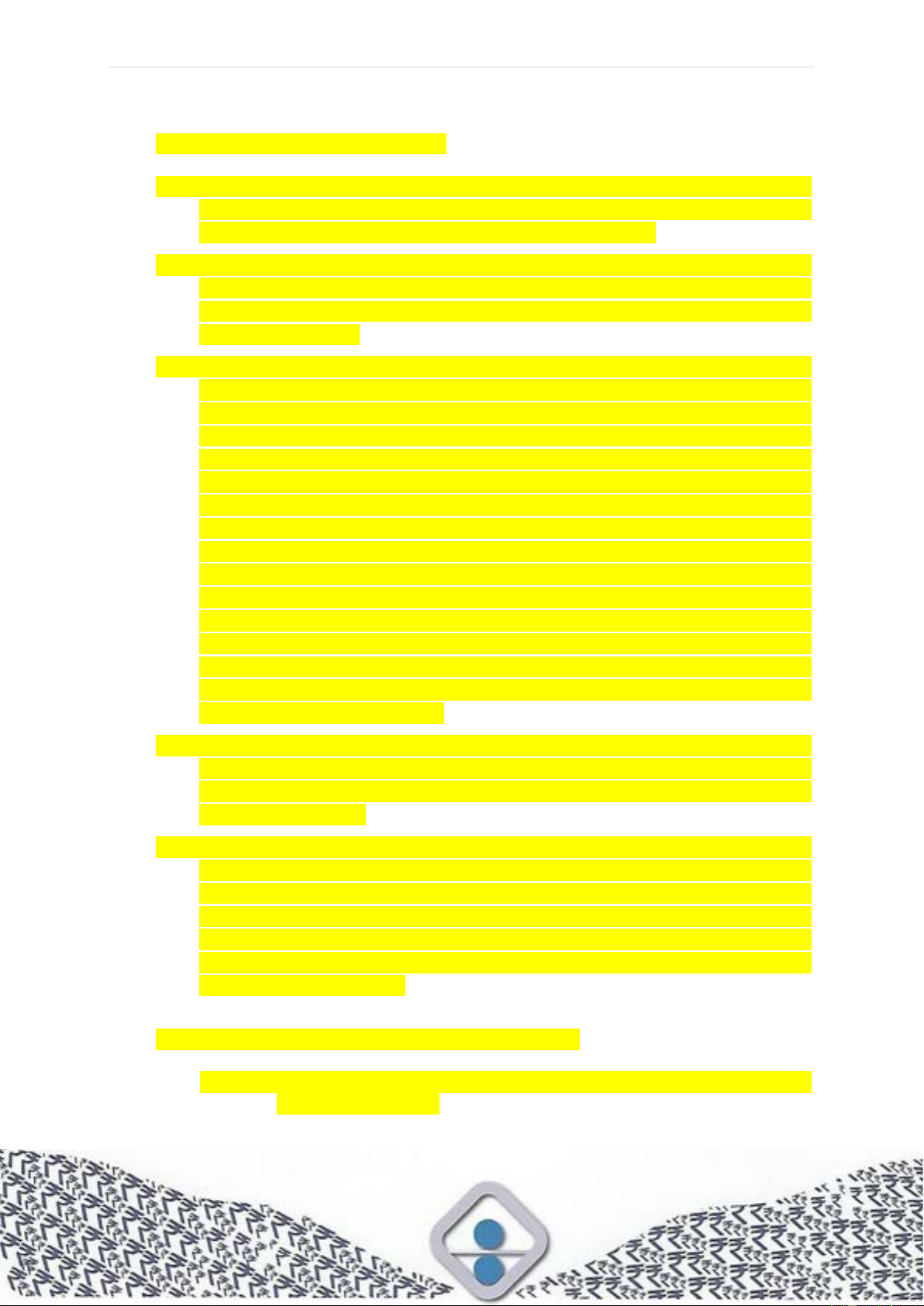
P a g e | 240
17.4.5 Appointment of Architects
i Work shall be entrusted to a particular firm of architects, selected for
appointment by following the procedure enumerated in 17.4.4, with the
approval of Competent Authority as and when required.
ii After the selection of Architects is finalized, necessary appointment letter
shall be issued to the firm or the individual setting out the terms and
conditions of the appointment and obtain formal acceptance of the offer
from the Architects.
iii An agreement shall be executed with the Architects on a stamp paper soon
after the appointment is made. The cost of such stamp paper is payable by
the Architects. The Company has standardized the main features of the
various services to be rendered by the Architects as terms of their
appointment, scale of fees, mode of payment, conditions regarding visit to
site, rates of reimbursement of traveling expenses and these are to be
incorporated in the agreement. A suitable time schedule for submission of
sketch plans, working drawings, draft tender documents, etc. for all trade
will have to be worked out within the overall time schedule of the project. In
consultation of the selected Architect and incorporated in the agreement.
The formal agreement should have the provision for the recovery of
retention money @ 10% from the payments to be made against all the
professional fees bills and other remedies available to both the parties
against non-fulfilment of the contractual obligations. The formal agreement
shall be executed by the architects and the Company within 14 days from
the date of award of the work.
iv The Architects should not be asked to render any additional services
beyond the scope of the agreement entered with them, without the prior
approval of the Competent Authority and financial sanction for the quantum
of professional fees.
v The Architects are generally paid fees at an agreed percentage of the
estimated cost of the project. In case of the residential quarters, where a
number of buildings of similar design are to be constructed, the fee paid is
generally at an agreed percentage of the cost of construction of the original
design and at certain lower percentage on repetition of design. Besides, a
suitable amount per acre of the plot is paid for preparing the master plan of
the Residential Colonies.
17.4.6 Services to be rendered by the Architects
17.4.6.1 Architects' Services (When supervision of the project is
entrusted to them)

P a g e | 241
The Architects shall render the following services in connection with and in
regard to the said works.
a. Prepare and submit sketch designs as per the Company's
requirements (including carrying out necessary revisions till the sketch
designs are finally approved by the Company) along with model of the
scheme, prepare appropriate estimates of cost by cubic
measurements, area measurements or otherwise based on the
prevailing market rates and submit along with a detailed project report
on the scheme so as to enable the Company to take a decision on the
sketch designs.
b. Prepare and submit the required drawings on receipt of approval of
Company to the sketch schemes to the Local Controlling Authorities
and obtain their approval/sanction for construction.
c. Appoint Consultants for various ancillary works such as structural,
sanitary and water supply, electrical installations including lifts,
landscaping and gardening, firefighting systems etc. with the prior
approval of the General Manger.
d. Prepare architectural and working drawings, making structural
calculations and preparing all structural, mechanical, sanitary,
plumbing, drainage, lift and electrical drawings, specifications,
detailed estimates of cost and furnish such other particulars as may
be necessary for the preparation of schedule of quantities.
e. Scrutinize the applications for empanelment of the Contractors,
forward recommendations for making a panel of Contractors, to the
Company.
f. Prepare detailed tender documents for general building works and
other trades, such as water supply and sanitary installations, electrical
installations, lifts, firefighting system, false ceilings, ceiling insulations,
water proofing, hardware fittings, water softening and chlorinating
plants, tube well, gardening and landscaping work, etc. complete with
articles of agreement, special conditions, conditions of contract,
specifications, schedule of quantities and time & progress charts.
Sample tender forms (excluding schedule of quantities) will be
supplied by the Company and the Architects shall incorporate therein
the schedule of quantities, drawings and other information necessary
for preparation of the detailed tender documents.
The estimates of costs prepared for invitation of tenders should be
based on market rates, but by considering the coefficients for material
and labour as prescribed in either CPWD or local PWD analysis of
rates. Whenever comparable items are not available in the
CPWD/PWD analysis of rates, the coefficients may be taken on the
basis of past experience, site observations or as inputs provided by

P a g e | 242
the architects/consultants etc. But after obtaining the written approval
of the competent authority who is to accord technical sanction, the
verification of correctness of technical specifications and detailed
estimate will be the responsibility of the competent authority.
It should be ensured that detailed rate analysis for all major items
constituting at least 80% of the estimated cost of work is done by the
Architects / Consultants / Department as the case may be, at the stage
of technical sanction and the same shall be kept on record.
g. Submit assessment reports on tenders received for various trades
along with comparative statement and recommendations for award of
work.
h. Prepare contract documents for all the trades and getting them
executed by the concerned contractors and Company.
i. Obtain Commencement Certificate/s for the construction of the
building from the Local Controlling Authorities.
j. Prepare for the use of the Company, the Contractors and the site
Engineer/Officer, six certified copies of the contract documents of the
various trades including all the drawings, specifications, item rates of
other particulars and such further details and drawings, as are
necessary for the proper execution of the works.
k. Assume full responsibility for the supervision and ensure proper
execution of the said works as per specifications of the contract by the
various contractors engaged for various trades, specialists,
consultants, technical advisers, etc. that may be engaged from time
to time as defined in the conditions of engagement.
l. Assess and submit the quarterly requirements of steel and cement
and all other major materials required for the projects,
m. Check measurements of works at site, check contractor's bills, issue
periodical certificates for payment so as to enable the Company to
make payments to the contractors.
n. Submit detailed accounts of the steel, cement and any such other
materials as the Company may specify, and certify the quantities
utilized in the works.
o. Assist in obtaining necessary water supply, electric, drainage,
sewerage etc. connections from Local Controlling Authority/
Authorities.
p. Take timely action for revalidation of sanction for construction from
Local Controlling Authority / Authorities.
q. Obtain final Building Completion Certificates and Occupation
Certificate from Local Controlling Authority/Authorities and obtain

P a g e | 243
refund of deposits, if any, made by the Company to the Local
Controlling Authority/Authorities.
r. Appear on behalf of the Company before the Local Controlling
Authority / Authorities in connection with the final settlement of the
initial rateable value of the building/s and rendering advice in the
matter to the Company.
s. Supply on completion of the project, two copies of all "As Built
Drawings" in respect of layout floor plans, sections, elevations,
structural designs, services and all working details. In addition, one
set of all floor plans, sectional, elevational and layout plans showing
all external services including street light shall be submitted on cloth
tracing/polyester films.
t. Any other services connected with the works usually and normally
rendered by the Architects and not referred to in any of the items
mentioned above.
17.4.6.2 Architects' services (When supervision of the project is not
entrusted to them)
The Architects shall render all services as mentioned in various paras under
17.4.6(1) with following modifications/deletions/additions.
a. Same as in para 17.4.6(1) above
b. Same as in para 17.4.6(1) above
c. Same as in para 17.4.6(1) above
d. Same as in para 17.4.6(1) above
e. Same as in para 17.4.6(1) above
f. Same as in para 17.4.6(1) above
g. Same as in para 17.4.6(1) above
h. Deleted
i. Same as in para 17.4.6(1) above
j. Supply for the use of the Company, contractors and the Site
Engineer/Officer, six complete set of drawings of the various trades or
other particulars and such further details and drawings, as are
necessary for the proper execution of the works.
k. Assume full responsibility for structural design and other specialized
services including correctness of quantities and specifications
provided in the tender.
l. Deleted
m. Deleted

P a g e | 244
n. Deleted
o. Same as in para 17.4.6(1) above
p. Same as in para 17.4.6(1) above
q. Obtain final Building Completion Certificates and Occupation
Certificate from Local Controlling Authority/Authorities.
r. Render assistance and advice to the Company in the matter of final
settlement of the initial rateable value of the buildings.
s. Prepare on completion of the project "As Built Drawings" of all trades.
Necessary details wherever required shall be supplied by the
Company in order to enable Architect to prepare Completion
Drawings. Copies of all Completion Drawings shall be as in Para
17.4.6(1).
t. Same as in para 17.4.6(1) above
Additional Clauses
a. Visit the site as and when necessary during the design stage.
b. Visit site by prior intimation to the Company's General Manager and
to issue necessary modifications to the drawings and other
clarifications as and when required by the Company.
17.4.7 Selection / Empanelment / Appointment of Consultants / Interior
Designer etc.
A. Structural Consultants
The procedure for selection/empanelment and appointment of the Structural
Consultants is similar to that of the Architects. The Architect when appointed for
any work requiring structural designing work also is required to engage a
structural consultant within the agreed fees.
However, if the architectural planning is undertaken by the Company separately,
then, the structural designs and drawings are prepared through the Structural
Consultants appointed by the Company specifically for such works.
B. Plumbing and Sanitary Consultants
C. Electrification Consultants
D. Horticulture Consultants
E. Consultants for fire-fighting installations
F. Other Consultants

P a g e | 245
The procedure for selection/empanelment and appointment of the above-noted
Consultants is similar to that of the Architects. The Architect when appointed for
any work requiring designing of above-noted systems also is required to engage
a suitable consultant for each system individually within the agreed fees.
However, if the architectural planning is undertaken by the Company separately,
then, the relevant designs and drawings are prepared through the Consultants
appointed by the Company specifically for such works.
G. Consultants for Air Conditioning and Ventilation System
i The process of selection and appointment of an Air Conditioning Consultant
is similar to that of the Architects which shall be suitably modified by Offices
to suit their requirement.
ii Services to be rendered by an Air Conditioning Consultant are briefly
enumerated below (where supervision of the works is entrusted to
them)
a. Prepare preliminary designs and drawings as per Company's
requirements (including carrying out necessary revisions till the
designs are finally approved by the Company) after collecting the
meteorological data of outside temperature and humidity of the city to
establish outside design conditions, workout the total cooling load
based on the accepted inside temperature and humidity conditions,
work out the most economical system including selection for the
central plant, ducting system and all other connected equipment,
prepare approximate cost estimates and submit a detailed project
report on the scheme, so as to enable the Company to take a decision
on the design.
b. On receipt of approval for the scheme from the Company, prepare
detailed designs and drawings for air conditioning and ventilation
system, prepare tender documents including specifications, schedule
of quantities etc., prepare drawings for invitation of tenders and
workout detailed estimate of cost.
c. Scrutinize the tenders received from different parties on the basis of
the specifications and submit assessment reports thereon, together
with recommendations to the Company.
d. Prepare contract documents and get them executed by the successful
tenderer and supply for the use of the Company, the contractors and
the Company's Engineer at site, two copies each of the contract
documents, including all drawings, specifications and such other
further particulars, details and drawings as are necessary for the
proper execution of the air conditioning and ventilation work.

P a g e | 246
e. Periodical supervision of the work of installation of the air conditioning
and ventilation system at the site through duly qualified and
responsible representatives and senior associates of the Consultant
for the proper installation and commissioning of the plant of the
capacity designed by the Consultant and approved by the Company.
f. Test-check measurements and contractor's R/A bills and furnish
observations and recommendations thereon to the Company along
with certificates of payment due to the contractors to enable the
Company to make payments.
g. Performance testing of the air conditioning system during summer,
monsoon and winter season, compilation of the test results and
certification of K W per Tr.
h. Obtain from the contractors and supply to the Company, six sets of all
"As Built Drawings" pertaining to the air conditioning and ventilation
work.
i. Draw up specifications and installation of sewage treatment and water
softening plants for air conditioning purposes, if installation of such
plants is considered necessary by the Company.
j. Attend to any other services connected with the air conditioning and
ventilation work usually and normally rendered by an Air Conditioning
Consultant and not referred to in any of the services mentioned above.
iii Services to be rendered by an Air Conditioning Consultant (when
supervision of work is not entrusted to them)
The Consultant shall render all services as mentioned in various paras
under (ii) above with following modifications/deletions.
a. Same as in para (ii) above
b. Same as in para (ii) above
c. Same as in para (ii) above
d. Same as in para (ii) above.
e. To assume full responsibility for the design and correctness of the
quantities and specification provided in the tender.
f. Deleted
g. Same as in para (ii) above
h. Deleted
i. Same as in para (ii) above
j. Same as in para (ii) above

P a g e | 247
H. Interior designers
i The Company normally provides a Boardroom and some office chambers
for the top executives in all the office buildings. These areas are normally
furnished to certain standards. For undertaking interior designing and
furnishing works of the office areas, an Interior Designer is normally
appointed by the Company. Similarly, the interior designing and furnishing
works of Guest House/Visiting Officers' Flats etc. in residential premises of
the Company may also be entrusted to an Interior Designer.
ii The procedure for selection and appointment for such an Interior Designer
is similar to that of the Architects.
17.4.8 Preparation of sketch plans
On the basis of Company's requirements, a brief to the Architects shall be
prepared and got approved from the General Manager. Necessary guidelines
with this brief shall be furnished to the Architects, who will thereafter prepare the
sketch plans accordingly. Sketch plans shall indicate the layout of the general
concept of the scheme. Necessary revisions in the sketch plans shall be carried
out by the Architects till the same are considered generally acceptable to the
Company. The sketch plans shall be submitted along with a preliminary estimate
of cost on unit area basis, a project report and a model, if required. The time
schedule for submission of sketch plans as stipulated in the Agreement shall be
adhered to by the Architects.
17.4.9 Scrutiny and approval of sketch plans
i The sketch plans shall be examined with reference to the functional and
other requirements as set out in the guidelines for planning furnished to the
Architects. Suggestions shall be forwarded to the Architects for
consideration and incorporation in revised plans. If necessary, discussions
shall be held with them to sort out various view points before finalizing the
plans at the earliest.
ii The preliminary estimate of the scheme shall also be scrutinized with
reference to the current costs of various components.
iii The sketch plans along with the preliminary estimate of the scheme shall
be submitted in the form of a Project Report. It may be necessary to hold
informal discussion prior to submission of the proposal to them for approval.
iv Approval of the scheme, together with their suggestions and comments, if
any, shall be conveyed to the Architects, for preparation of plans and
detailed drawings.

P a g e | 248
17.4.10 Submission of plans to Local Controlling Authority
After the approval of the scheme by the Company, the Architects shall submit
the plans duly signed by the Competent Authority to the Local Controlling
Authority for obtaining their necessary sanction and building license for the same.
The Architects have to take necessary follow-up action with the local authorities,
to ensure that undue delay in obtaining sanction of the plans is avoided. The
Company shall extend full assistance in this regard.
17.4.11 Preparation of detailed working drawings and draft tender
documents
i Working drawings are prepared and structural design work taken up by the
Architects after sanction of the plans by Local Controlling Authority.
ii The Structural Consultant is engaged by the Architects with the approval of
the Company as stipulated in the agreement. In working out the structural
design of the building, the Structural Consultant shall take into
consideration the soil investigation report and survey plan and the same
shall be arranged by the Architects. The seismic factor relevant to the area
as also the particular functional needs of the structures, especially in case
of office building shall be taken into consideration. The advice of Structural
Consultant on RCC items shall be considered in the schedule of quantities.
iii The Schedule of Quantities and the tender paper prepared by the
Architects/Department shall be comprehensive and based on detailed
drawings and structural design, so as to minimize, as far as possible, the
incidence of extra/variation items during the course of construction.
iv The Company shall supply sample of standard initial part of the tender
document for various major trades to the Architects to facilitate preparation
of the complete tender documents. The schedule of quantities and drawings
wherever necessary, as approved by the Company shall be attached to this
initial part and bound together to form the tender document. The
Architects/Departments shall ensure that the schedule of quantities tally
with the specifications provided in the initial part of tender and same is
supported by detailed calculations of quantities of various items involved
v The estimates of costs prepared for invitation of tenders should be based
on market rates, but by considering the coefficients for material and labour
as prescribed in either CPWD or local PWD analysis of rates. Whenever
comparable items are not available in the CPWD/PWD analysis of rates,
the coefficients may be taken on the basis of past experience, site
observations or as inputs provided by the architects/consultants etc. but
after obtaining the approval in writing of the Competent Authority who is to
accord the technical sanction. The verification of correctness of technical
specifications and detailed estimate will be the responsibility of the
competent authority.

P a g e | 249
vi It should be ensured that detailed rate analysis for all major items
constituting at least 80% of the estimated cost of work is done by the
Architects/Consultants/Department, as the case may be, and details and
break-up of the schedule of quantities are submitted to the Competent
Authorities at the stage of technical sanction and the same should be kept
on records.
17.5 Contracts
17.5.1 Classification
For Project/Maintenance works undertaken by the Company, generally following
kinds of contracts are awarded:
i Item Rate Contract, in which the Contractor undertakes to execute the
work at fixed rates for different items depending on the quantities and kind
of work done or supplies made. It shall be governed by clause 4.17 (Rate
Contracts) and clause 50 of GIT (Rate Contract Tenders).
ii Lump sum Contract, in which the Contractor undertakes to execute the
entire work to meet the end specifications at a total cost without any
reference to the quantities of various sub-items of work.
iii Turnkey Contract or Package Deal Contract, in which the Contractor
undertakes to execute the work with all contingencies for a fixed rate on
unit area of the completed buildings.
iv Annual Operation and Maintenance Contract, in which the Contractor
undertakes to operate and maintain the machines for a fixed annual rate.
17.5.2 Invitation of tenders
Two-part tender shall be invited whenever the cost of the work to be executed or
supply to be made is estimated to be more than ₹2.5 lakh. The draft tender
document for Project Works shall be approved by the functionaries of the
Company as per DoP based on the estimated cost of work subject to approval of
the works from the Competent Authority.
17.5.3 Pre-qualification criteria
The pre-qualification criteria as to who will be eligible for issue of tender-forms /
documents should be specifically and clearly stipulated in the advertisement as
under:
1.
Duration of Past
experience
:
Minimum seven (07) years’ experience of
having successfully completed works of
similar nature

P a g e | 250
2.
Minimum number of
completed works of similar
nature executed during last
seven (07) years ending
last day of month previous
to the one in which tenders
are invited
:
Three (03) similar completed works costing
not less than the amount equal to 40% of
the estimated cost
Or
Two (02) similar completed works costing
not less than the amount equal to 50% of
the estimated cost
Or
One (01) similar completed work costing
not less than the amount equal to 80% of
the estimated cost
(Similar work shall be defined clearly
without any ambiguity)
3.
Yearly Turnover
:
Average annual turnover during last 3
financial years should be at least 30% of
the estimated cost
17.5.4 Empanelment of tenderers by pre-screening for large works /
construction
In order to prepare panels of reputed firms of contractors / suppliers etc. having
requisite experience, sound financial standing, satisfactory track record of
execution of' large quantum of works, integrity, credibility, capability etc. for
organizing such works, applications for empanelment shall be invited from the
intending tenderers through wide publicity. The meticulous pre-screening of
applications received from contractors helps in excluding those contractors from
empanelment who are not adequately experienced or have unsatisfactory track
record of executed work. For preparation of panels of contractors after thorough
and careful pre-screening, it is necessary to have interaction with the
organizations, who had engaged the contractors intending to be empanelled with
the Company, as also inspect their works so as to get the realistic information
about their workmanship etc. in addition to relying on the confidential reports
received from their clients and bankers.
i While the pre-qualification criteria for the contractors for specialized works,
electrical, electro-mechanical, technology related works, etc. shall be same
as described under para 17.5.3, the pre-qualification criteria for General
Building Contractors for construction projects is given hereunder:
1.
Duration of Past
experience
:
Minimum 10-15 years in carrying out
construction of buildings of similar nature
2.
Minimum number of
completed works of
similar nature
executed during last
:
Three (03) similar completed works costing
not less than the amount equal to 40% of
the estimated cost
Or

P a g e | 251
seven (07) years
ending last day of
month previous to
the one in which
tenders are invited
Two (02) similar completed works costing
not less than the amount equal to 50% of
the estimated cost
Or
One (01) similar completed work costing
not less than the amount equal to 80% of
the estimated cost
(Similar work shall be defined clearly
without any ambiguity)
3.
Yearly Turnover
:
Average annual turnover during last 3
financial years should be at least 30% of
the estimated cost
In addition to above, the criteria regarding satisfactory performance of
works, personnel, establishment, plant, equipment etc. may be
incorporated according to the requirement of the Project.
17.5.5 Execution of contracts (Civil, Plant & Machineries and Repair &
Maintenance contracts)
i The CGM/SGM/O-I-C at the Presses may nominate Officers as per DoP to
execute contracts on behalf of the Company.
ii Contract document/Work Order shall be executed within 21 days from the
date of issue of Notification of Award of Contract (LoI).
iii Three sets of the contract documents shall be executed if the Architects are
associated for execution of the project work, otherwise only two sets are
adequate. The agreement part of the tender documents shall be stamped
adequately.
iv The contract documents shall be got prepared through the Architects if they
are associated with the execution of the project, otherwise the same shall
be prepared by the respective Office.
v The original copy of the accepted tender shall not be left in the custody of
the Contractors even for the purpose of executing the documents by them.
The Architects/General manager shall arrange for execution of the
documents by the Contractors at the respective Office.
vi After the Contractors/their legally authorized representative/s execute the
documents, these are to be executed by the Company's Official after
exercising a thorough scrutiny of the same. It shall be ensured that the
documents conform to the original copy of the tender, all copies of
correspondence/ plans and all corrections//amendments are duly
authenticated and bound to the documents, all blanks are filled in and
authenticated by both the parties and competence of the

P a g e | 252
signatory/signatories executing the contract on behalf of the Contractors is
fully verified with reference to the constitution of the Contractor's firm.
vii After execution of the contract, one copy each of the documents shall be
given to the Contractors and the Architects in case they are associated with
execution of project. The original executed tender document shall be kept
by the General Manager in safe custody. Certified copies of the agreement
shall be arranged to be forwarded to the Corporate Office and site engineer.
In case Architect is associated with the execution of the project these
certified copies shall be got prepared through the Architect.
viii The original agreement shall not be referred for day to day use of the
Department. For such purpose certified copies of the agreement shall be
prepared and made use of.
ix Offices shall keep record of all contracts executed in respect of the works
undertaken at the respective Office.
x A register for such executed agreement shall be maintained in the safe
custody of the HoD of the concerned section.
17.6 Execution of project works
The various stages generally involved are listed below.
i Surveying of plot
ii Soil Investigation
iii Office accommodation at Project Site
iv Posting of Company's Engineers at site
v Commencement of Work
vi Observance of Contract Labour (Regulation and Abolition) Act 1970
vii Preparation of programme of work
viii Progress photographs
ix Testing of materials
x Approval of materials/fittings
xi Measurement sheets/book
xii Recording of measurements
xiii Certification of bills
xiv Payment of running bills
xv Variation items of works
xvi Site order book
xvii Hindrance register
xviii Site registers
xix Extension of time
xx Sub-standard work and material
xxi Safety code

P a g e | 253
xxii Insurance
xxiii Completion of work and refund of Security Deposit
xxiv Submission of guarantees and payment of final bills
xxv As-built drawings
17.6.1 Surveying of plot
Before planning of building/s is finalized, arrangements shall be made to have
the site of work surveyed in order to obtain a detailed contour map with spot
levels at short spacing and allied data. The survey map shall indicate all the
required details of the plot as well as that of the adjacent roads, drainage system
etc. to help in deciding about the formation levels, requirement of cutting/filling,
planning of sewerage and drainage etc. Architect shall arrange such surveying
of plot, if need be, by engaging a suitable agency who are well versed with such
work.
17.6.2 Soil Investigation
After approval of the sketch plans of the proposed building project by the
competent authority and before commencement of foundation designing for the
building(s) to be constructed under any project, soil investigation shall normally
be undertaken (within the building layout plan area in the plot of land) through
the agency of a Local Soil Laboratory or Engineering College or similar reputed
institutions by inviting quotations. It shall be ensured that the test bore holes are
done within the area covered by the footprint of the proposed building(s) on the
said plot of land. The extent of investigation to be done shall depend upon the
local conditions, type of construction etc. and details of the tests required shall
be determined by the Architects/Structural Consultants in consultation with
experts in the line in such a manner so as to ensure that the data collected during
investigation realistically represents the condition of the sub-soil strata.
A copy each of the investigation report shall be forwarded to the Architects to
facilitate designing the structures and to the Corporate Office for perusal and
record.
17.6.3 Office accommodation at project site
i The contract for the general building work generally stipulates that the
Contractors shall provide and maintain adequate Site Office
accommodation including light, fans, attendant, drawing accessories etc.
for the Site Office of the Company's Engineers or Architect’s Engineer. The
Local Office shall ensure that the Contractors are not negligent in this
regard. The Local Office shall, however, arrange necessary furniture for use
of the Company's technical staff at site during the execution of the project.
ii The Site Office is established to facilitate.

P a g e | 254
a. Supervision and execution of the project work in accordance with
drawings, terms and conditions of the contract.
b. Arranging for controlled or basic stores.
c. Co-ordination of the various agencies at site.
d. Approval of materials and workmanship and to ensure carrying out of
the necessary tests.
e. Recording of instructions issued by senior technical officers and
Architects/Consultants during their visits to site for their prompt
implementation.
f. Conveying to the Contractors, instructions of higher authority and
ensuring their compliance.
g. Pointing out defects in works to the contractors in writing at
appropriate time and ensuring their rectifications in time.
h. Measurement of the work.
i. Compliance with the Time and Progress Charts, suggestions for
revisions, removing bottlenecks in progress and reporting to higher
authority.
j. Scrutiny of all bills.
k. Security of work and materials and safety of life and property.
l. Compliance of Local Labour Regulation Act etc.
m. Handing over of the completed project with relevant records to the
Local Office.
iii Following are the duties/responsibilities of Site Engineers -
(Architect/Consultant)
a. To obtain all drawings, including working/detailed drawings, approved
for execution by the Architects/consultants before commencement of
the work. To make a thorough study of schedule of quantities,
specifications, drawings, additional conditions, if any, accepted by the
Company and other parts of the contract documents,
architectural/structural drawings and other details so as to bring out
ambiguities/discrepancies between them and to obtain clarification
from the Architects/Consultants well in time to avoid delays and
problems.
b. To organize the centre-line layout of building/s pegged out on site by
the Contractor in conformity with the dimensions shown on the
approved drawings, approve the same as well as establish permanent
bench mark to finalize the plinth levels and formation levels with
respect to street sewer/storm water/drain/road level and details
furnished by Architects/Consultants.

P a g e | 255
c. To approve the foundation strata when the appropriate depth of
excavation is reached in consultation with Structural Consultant,
wherever necessary. This is a very important stage of work and senior
engineers shall be associated with this work.
d. To take charge of objects of value and antique found on site or during
excavations immediately after their discovery, to hold them in safe
custody and to bring the notice of Local Office for further action.
e. To ensure that no trees are cut from the project site without the proper
permission from the Local Controlling Authority.
f. To assess the requirements of steel, cement and other materials to be
obtained by the Contractor well in advance, to place periodical indents
with the local suppliers, if need be, and ensuring timely procurement
thereof.
g. To ensure that samples of materials to be used in construction,
including fittings are approved by the Company and ensure their
display and safe custody at site by all contractors.
h. To arrange for necessary testing of materials and ensure that the
quality of materials and workmanship as laid down in the contract is
maintained. To forward in good time to Local Office/Corporate Office
all test reports along with comments.
i. To study the quality of approved coarse and fine aggregates in the
concrete mix in accordance with code of practice.
j. To ensure that the contractors observe local laws pertaining to
Contract Labour Act and maintain the policies till completion.
k. To ensure that the contractors have taken the proper insurance
policies as per the contract.
l. To maintain good and healthy relations with and between the various
contractors/agencies working at site and to co-ordinate the work of
these contractors/agencies to ensure smooth and timely completion
of the project and to report to Local Office/Corporate Office well in time
any anticipated bottlenecks.
m. To obtain decisions on various aspects in connection with site works
from the Competent Authority well in advance of the actual
commencement of each item of work wherever found essential and to
ensure that instructions received in writing from the Competent
Authority are properly complied with. In case the instructions are given
by visiting officers verbally, the same shall be got confirmed in writing
from the concerned officers.
n. To attend site meetings with officials/various Contractors,
Architects/Consultants, hold meetings monthly or earlier as need be,

P a g e | 256
to monitor the progress of the work and to sort out any problem
connected with the project.
o. To record and maintain the under noted registers at site of work, in
addition to normal routine requirements of an office.
• Daily Progress Record
• Site Order Book
• Building Materials Record
• Concrete Cube Test Record/Slump Test Record
• Record of Drawings and Working Details
• Record of Defects
• Test Reports for Building Materials / Materials of Other
Subsidiary trades
• Daily Labour Register
• Measurement Record
• Hindrance Register
These Record/Registers shall be kept in the safe custody of HOD of
concerned Division.
p. To ensure that progress on every contract is in accordance with the
appropriate stage given in the Programme Chart and to submit to
Local Office/Corporate Office the Progress Report fortnightly and to
submit Monthly Progress Report in the form of a chart to Local
Office/Corporate Office.
q. To take measurements of completed works, physical stock of various
materials lying at site jointly with the Contractor and check the
measurement recorded by the representative of the
consultant/Architects or by the contractor as the case may be.
r. To receive Running Account Bills from the contractor/s and to forward
them after their checking to Local Office with comments and
recommendations for payments accompanied by all supporting
documents like Theoretical Cement Consumption Statement and Part
Rate / Reduced Rate Statement etc.
s. To take note of the validity of the Building Permission issued by the
Local Controlling Authority and if revalidation is necessary, to organize
the same under intimation to the Local Office well in time.
t. To establish contacts with the Local Controlling Authority for
facilitating timely availability of water supply, sewerage and electricity
connections to the projects.

P a g e | 257
i to ensure that floors under construction are not overloaded with
stocks of materials or plant.
ii to ensure that holes for anchors/conduits/pipes are left in
masonry or concrete at appropriate time and that these are
embedded or built-in as required to avoid chasing/cutting of
walls/RCC members constructed.
iii to ensure that partially constructed work is properly protected
from any damage.
iv to ensure that all operations are carried out with complete safety
to life and property.
u. to keep the Local Office informed of the site events as and when
necessary and in normal situation at least once a week.
v. to ensure that the contract do not lapse for want of extension of time.
To report the matter to Local Office well in time, if necessary.
w. to ensure that no extra/deviated items are recommended for
payments, till rates for such extra/deviated items have been approved
by the Competent Authority.
x. to report to Local Office /Corporate Office where the sanctioned tender
amount is likely to be exceeded and to prepare and submit the
Revised Estimates for the project.
y. to obtain prior approval for execution of item/s for which the quantities
exceed 20% of the tender quantities.
z. to keep close watch on execution of items of works where abnormally
high or low rates have been quoted by the Contractor/s and other
items.
aa. to receive, scrutinize and forward the final bill/s of the contractor/s
along with comments and recommendations for payments to Local
Office with all the supporting documents.
bb. to submit relevant information regarding changes, if any, carried out
in the drawings supplied by the Architects/Consultants, during the
actual execution of the projects (in case the Architect is not associated
with the execution of the project) in order to enable the
Architects/Consultants to finalize the "Completion Drawings".
cc. to verify the "Completion Drawings" received from the
Architects/Consultants and certify the same as "Executed Drawings".
dd. to take over completed building/s from the contractor/s along with all
inventories and hand over the building/s along with all inventories to
the Maintenance Department.

P a g e | 258
17.6.4 Company's Officer at site (Site Engineer)
i Generally, the Company posts an Officer (Civil) with necessary supporting
technical staff at project site or stipulates the Architect/Consultant to post a
qualified Site Engineer with necessary technical staff, as the case may be,
to supervise the execution of work by different agencies under the guidance
of the Architects. In case of projects with considerable magnitude of
electrical, electromechanical and air conditioning works, an Engineer
(Electrical) with supporting technical staff may also be posted at site to
supervise the electrical, lifts and air conditioning installation works etc.
under the overall control of Senior Officer in charge of the project. The
General Building Contractors have to provide the Site Engineers every
facility and assistance for inspecting the works and materials and for
checking and measuring the quantity and quality of the same. The Site
Engineers are assisted in their functions at site by technical staff.
ii Architect/Senior Officials of the Company shall inspect the works as often
as required to ensure proper workmanship, progress and co-ordination
amongst various agencies employed in the work and also furnish working
details at site if sought for. In case the Architects are not locally based, they
shall under the usual terms of the agreement entered by them with the
Company, appoint a Resident Engineer, with the approval of the Corporate
Office (if Architects are associated with the execution of the work) to
represent them at site. This Resident Engineer shall liaison with the various
agencies and his employers to ensure proper discharge of expected
functions of Architects. For Departmental or Turn-key Projects, the
Company's Engineer at site is vested with these additional responsibilities
that shall normally be borne by the representatives of Architects.
iii The Site Engineer or any representative of the Architects/Company is not
empowered to revoke, alter, enlarge or relax any requirements of the
contract, or allow any addition, alteration, deviation or extra work without
obtaining prior approval of the Competent Authority. However, the Site
Engineer has the power to disallow any work or material that may be
considered to be below specifications and to give notice to the contractors
to suspend such work or to stop using such material until the decision of
the Architect/Competent Authority is obtained.
17.6.5 Commencement of work
i Immediately on issue of the work order, the Local Office shall contact the
Architects and obtain the necessary drawings and issue the same to the
contractors with detailed instructions for commencing work forthwith.
ii The date of commencement of the work shall ordinarily be taken as the 10
th
day after the date of issue of work order or as provided in the contract.

P a g e | 259
iii No ancient monument/s shall be demolished or any religious edifice be
destroyed if found while executing the work without formal concurrence of
the Local Controlling Authority. The Department of Archaeology shall be
consulted wherever necessary.
iv Before start of work, the ground levels of the plot shall be taken jointly by
the Contractor and the Site Engineer at three metres interval or at closer
interval as required and plotted on tracing sheets. The levels shall be
entered in the Level Book by the Site Engineer. The levels and drawings
shall be designed by the Contractor or their authorised representative and
Company's Engineer and copy of such drawings shall be sent to
Architect/Corporate office for record.
v As far as possible, the trees existing in the plot shall not be cut. However,
if any of the trees are coming in the way of the layout of the buildings, the
same shall be cut with the prior approval of the Local Controlling Authority.
Such trees shall be identified and necessary permission obtained from
Local Controlling Authority well in advance to avoid delay in
commencement of work.
vi The Site Engineer shall verify that all the necessary clearance for building
plans, etc. is obtained from the Local Controlling Authority for commencing
the work.
vii The layout of the buildings shall be done by the Contractor at site with
respect to the approved layout plan and shall be got cleared from the Site
Engineer before proceeding with the construction work. In case of any
discrepancies which require the intervention of Architects/ Competent
Authority, the same may be immediately brought to the notice for corrective
action. In such cases, work shall be allowed to be taken up, only when the
layout is cleared by the Architects/Competent Authority, as the case may
be.
17.6.6 Contract Labour (Regulation & Abolition) Act 1970
All the Statutory requirements relating to Contract Labour (Regulation &
Abolition) Act 1970 shall be scrupulously complied with.
(i) Registration of Establishment (Section 7)
The Principal Employer/Contractor shall make an application to the Registering
Officer in the prescribed manner for registration of the Establishment. The
application for registration shall be made in triplicate in Form No.1 to the
Registering Office of the area in which the establishment sought to be registered
is located. The application shall be accompanied by a Treasury Receipt showing
payment of the fees for the registration of the establishment. The application shall
be either personally delivered to the Registering Officer or sent to him by

P a g e | 260
registered post. The Employer cannot employ the contract labour in his
establishment unless he registers under Section 7 of the Act.
(ii) Maintenance of Registers and Other Records (Section 29)
The following registers and records are required to be maintained by the Principal
Employer.
a. Register of contractors in Form XII of the Contract Labour (Regulation &
Abolition) Central Rules 1971.
b. Notice showing the rates of wages, hours of work, wage periods, dates of
payment of wages, names and addresses of the Inspectors having
jurisdiction and date of payment of unpaid wages, shall be displayed in
English and in Hindi and in the local language understood by the majority
of the workers in conspicuous places at the establishment and the worksite
by the Principal Employer or the Contractor, as the case may be. The
notices shall be correctly maintained in a clean and legible condition. A copy
of the notice shall be sent the Inspector and whenever any changes occur,
the same shall be communicated to him forthwith.
c. Return intimating the actual date of the commencement or completion of
each contract work under each Contractor shall be submitted to the
Inspector, within 15 days from the commencement of the completion of the
work as the case may be. The return shall be filed in Form No. Vl-B.
d. The annual return in duplicate in Form No. XXV shall be submitted to the
Registering Officer concerned so as to reach him not later than the 15th
February following the end of the year to which it relates.
All registers and other records required to be maintained under the Act and the
rules shall be maintained up-to-date and shall be kept at the office. Such registers
shall be maintained legibly in English or Hindi. All the registers and other records
shall be preserved in original for a period as per Company Policy.
All the registers, records and notices shall be produced on demand before the
Inspector or any other authority under the Act or any person authorized in that
behalf by the Central Government.
(iii) Responsibility of Payment of Wages of the Workmen (Section 21)
Every Principal Employer shall nominate a representative duly authorized by him
to be present at the time of disbursement of wages by the Contractor and it shall
be the duty of such representative to certify the amounts paid as wages in the
prescribed manner. The authorized representative shall record under his
signature a certificate at the end of the entries in the Register of Wages or the
Register of Wage-cum-Muster Roll, as the case may be, in the following form.
"Certified that the amount shown in column no. ___has been paid to the
workman concerned in my presence on ____ at _____ ".

P a g e | 261
The Contractor shall be advised to distribute the wages in the presence of the
authorized representative. If the Contractor fails to make payment of wages
within the prescribed period or makes short payment, the Principal Employer
shall be liable to make payment of wages in full or the unpaid balances due, as
the case may be, to the contract labour employed by the Contractor under any
contract or as debt payable by the Contractor.
(iv) Welfare Measures (Section 16 to 19)
The welfare measures like Canteen, Rest Rooms and other facilities to the
contract labour are required to be provided by the contractor himself, but if any
of the facilities is not provided by the Contractor, then it shall be provided by the
Principal Employer within 7 days of the commencement of the employment of
contract labour. However, all expenses incurred by the Principal Employer in
providing the amenity shall be recovered from the Contractor either by deduction
from any amount payable to him under any contract or as a debt payable by the
Contractor.
(v) Penalty for Contravention (Section 22 to 27)
a. Whoever obstructs an Inspector in the discharge of his duties under the Act
ibid or refuses or wilfully neglects to afford the Inspector any reasonable
facility for making any inspection, examination, enquiry or investigation
authorised by or under the Act in relation to an establishment, shall be
punishable under the provisions of the Act.
b. The contravention of any provision of the Act or of the Rules made there
under or contravention of any condition of a license granted under the Act
is under the provisions of the Act and continuing contravention, during
which, such contravention continues even after conviction for the first such
contravention, is punishable with additional fines under the provisions of the
Act.
The Local Offices shall ensure that all the obligations under the relevant
provisions of the Act including obtaining license by the Contractor under Section
12 of the Act are compiled with. Before releasing the Contractor's final payment,
they shall also ensure that the contractor have paid all dues to their contract
labour.
17.6.7 Programme Charts and Progress Reports
i As soon as the contract is awarded, a suitable programme of work,
preferably in the form of a BAR/PERT/GANTT Chart, shall be drawn up for
completion of the different stages of work so as to ensure its completion
within the allotted period of time. This programme shall be drawn up by the
respective contractors in consultation with Architects/Competent Authority.

P a g e | 262
ii The scheduled programme of work as well as the actual progress at
appropriate percentage of the total work for each month shall be shown on
the Bar Chart. Format for Monthly Progress Chart is shown in. This report
shall be sent by the Site Engineer to the General Manager/Corporate Office
before 10
th
day of every month. In case any urgent decisions, association
of Competent Authority is required, the same shall be brought out in the
report. A Fortnightly Progress Report shall also be sent by the Site Engineer
to the Local Office.
iii In case of a large project, Bar Chart shall be prepared for each building or
group of buildings or specifically for a part of the work, say the finishing
items, according to necessity.
iv A Master Control Chart showing the programme of completion as also the
actual progress of work for all the trades of the project shall be kept at site
and the concerned offices. Necessary updating shall be done on the Chart
from time to time and the progress reviewed.
v The General manager shall submit Quarterly Progress Report indicating the
programme and progress achieved, both physical and financial, with
reasons for shortfall, if any, to the Corporate Office before 10
th
day of
January, April, July and October.
vi The Corporate office shall compile a consolidated Quarterly Progress
Report of various projects and shall submit the same to the Competent
Authority in a prescribed format.
17.6.8 Co-ordination and monitoring
i it is the prime responsibility of the Architects/Office to ensure that execution
of the works proceeds smoothly in proper co-ordination among different
agencies and in accordance with the programme for completion.
ii The Architects/Office shall keep a watch on the progress of work, the
resources position etc. and take suitable measures or issue instructions
with a view to sort out problems or removing bottlenecks in consultation
with Local Office and the Corporate office as the case may be.
iii The Local Office shall follow up the progress of work regularly and wherever
necessary seek instructions from the Architects/Competent Authority.
iv Apart from the Bar Chart and the Master Control Chart, necessary feed-
back shall be available from site in the form of "Fortnightly Progress
Reports" to be prepared by the Site Engineer in a standard proforma.
17.6.9 Testing of materials
i To ensure the use of materials and to exercise a proper quality control on
the works, certain tests are to be undertaken regularly by the Contractor

P a g e | 263
during the progress of work, as per the provision of the contract. Some of
the important tests to be carried out are tests of water, steel, bricks, sand,
cement, tiles, marble chips, timber, particle boards, aggregates, pipes,
fittings, concrete cubes, gauge of wires, grade of insulation of wires/cables,
gauge of MS sheets, conduits. MS panel boards, earth station etc.
ii Results of all concrete cubes tested shall be recorded in a "Register of Cube
Tests" in a standard proforma and kept at site. Cube tests reports for the
relevant period shall also be submitted along with the Contractors' On
Account Bills to the Architects/Competent authority. All other test reports
shall also be maintained at site, in a register and the signatures of
Contractor, Site Engineer/ Competent Authority be obtained.
17.6.10 Approval of materials/fittings
Under the terms of contract, the contractors are required to submit samples of
various materials, items, fittings etc. for the approval of the Architects/Competent
Authority. For this purpose, special site meetings shall be arranged in the initial
stage of project execution. The contractor shall use materials of any one of the
brands listed or any other brand having BIS/ISI marking with the approval of the
Competent Authority.
17.6.11 Variations/Extra items of work
i The tender documents shall be prepared in such a way to minimize the
necessity of variations in plans or specifications during the execution of the
work. The contracts with different Contractors as well as the agreement with
the concerned Architects usually provides that up to a certain monetary
limit, the Architects can order for variations/extra items without prior
approval of the Competent Authority, while items in excess of the financial
limit will have to be got approved from the Competent Authority prior to their
execution.
ii Major variations in quantities/substitution of items having considerable
financial implications shall not be ordered without the prior approval of
Competent authority.
iii The powers for sanctioning extra/variation items by the officials of the
Company shall be as per DOP.
iv Rates of extra or substituted items wherever possible be derived from the
tender rates of related items. Whenever such rates are based on market
rates of materials and labour, an element of profit and overhead etc. @ 10%
may be allowed unless otherwise stipulated in the contract.
v After the contractors submit their rate analysis for extra/variation items, Site
Engineer shall scrutinize the claims and forward his recommendations to
the Local Office for onward transmission to Architects/Competent Authority.

P a g e | 264
The Architects/Competent Authority shall scrutinize the proposals and
sanction the same if they are within their sanctioning powers for
extra/variation items. The proposals requiring sanction of Managing
Director shall be forwarded to the Corporate Office.
Once the approval of the extra/variation items is accorded by the
Competent Authority, approval of the variation items and rates thereof shall
be communicated to the contractors by the Local Office. Local Offices shall
maintain a Variation Order Register. Since no extra/variation items is
allowed for payment till the rate for the same is approved by the Competent
Authority, there is need to expedite obtaining analysis of rates from the
contractor expeditiously and forwarding the same with recommendations to
the Competent Authority by the Site Engineer, and Local Office.
In cases where Architects are associated with the supervision of work, such
Variation Order shall be issued by the Architects.
In case of items where reduced rates are allowed, the General Manager
shall finalize and sanction the reduction in rates of all items under advice to
the Corporate Office.
vi The Local Office shall ensure that contractors' claims on extra/variation
items are promptly settled in order to avoid complications at a later stage
and consequential delay in execution of works.
vii The Variation Order to be issued by the Architects/Local Office shall be
progressively numbered and the net additions or savings in amount for the
particular set of items, as well as the cumulative total amount of the addition
or savings on account of all the variation orders issued up to date shall be
suitably indicated thereon.
viii The items which are not in the Schedule of Quantities of the tender but
executed by the contractor shall be recorded with the date of execution of
the work without prejudice, so that in case it is subsequently decided to
admit the items, there should be no difficulty in determining the quantities
of work done. A suitable remark shall, however, be made against such
measurements to guard against payment in ordinary way.
17.6.12 Site order book
i For issuing instructions to Contractors in the course of day-to-day
supervision of works, Site Order Books shall be maintained. The pages
shall be machine numbered in triplicate, so that a copy of the pages can be
given to the contractors and the Architects/Local Office for necessary
action. While issuing instructions, the contractors'/his authorised
representative's signature shall be obtained in the office copy.
ii Instructions in the Site Order Book shall be recorded under the signature of
the Architects’ Resident Engineer. The Competent Authority during their

P a g e | 265
periodical inspection/visits shall peruse and record their instructions, if any,
in this book.
iii All instructions to the contractors which are at variance with tender
provisions as also pointing out lapses on the part of the contractors to
adhere to the tender specifications shall be issued in writing through Site
Order Book by the Site Engineers visiting the site of construction for
inspection.
iv The Site Order Book shall be kept in the custody of the Officer at site. This
fact shall be made clear to the contractors at the beginning of work.
v The Site Order Book shall be referred at the time of making final payments
to the contractors.
17.6.13 Hindrance Register
In order to have a record of hindrances in the progress of work which may result
in delays and consequent claims from the contractors for extension of time, a
Hindrance Register shall be maintained at the construction site. The details of
the hindrances with time period shall be recorded by the Site Engineer therein
as and when these occur and all recordings shall be signed jointly by the Site
Engineer and the contractor's representative. The extract of the same shall be
sent to the Local Office/Corporate Office. While considering the contractor's
request for extension of time for completion of work, this register shall be referred
to. All the contractors engaged in Company's project/maintenance works shall
be informed of maintenance of such register in the custody of the Site Engineer
and that genuine and acceptable hindrances to their work recorded in this
register will only be considered for extension of time.
17.6.14 Site Registers
The other registers to be maintained at Site Office are given in Para 17.6.3 (iii)
under sub-Para "o".
17.6.15 Extension of time
i If the contractors desire any extension of time for completion of work on
grounds of their having been unavoidable hindrances in execution or any
other ground, they shall apply in writing immediately after the occurrence of
the hindrance. Such application shall contain complete details of
hindrances, which hindered the contractors in the execution of the work and
reference to record of entry in the Hindrance Register.
ii The Architects/Site Engineer shall consider the application for extension of
time with reference to the reasonableness of the grounds cited therein and
the recordings in the Hindrance Register maintained at site. They shall
thereafter forward their comments in the matter to the Competent Authority.

P a g e | 266
iii Competent Authority on being satisfied of the reasonableness of the
request of the contractors in terms of the relevant contract conditions, may
grant a fair and reasonable extension of time. The authority for granting
extension of time rests with CFA.
iv Extension of time shall be granted before expiry of the contract period, so
that the contract is in force at the time of granting extension of time for
completion of work. Even if the contractors fail to apply for extension of time,
the Architects/Site Engineer shall process the case for grant of extension
of time after recording the reasons for doing so and arrange to obtain from
the Competent Authority approval for extension of time.
v While granting extension of time, it shall be clearly stipulated that the
extension of time is being given without prejudice to Company's right to
recover liquidated damages or compensation under relevant contract
clause.
vi The letter granting extension of time to be issued by the Architect/Local
Office shall be in a standard format.
vii If the contractors fail to complete the work within the stipulated period or the
extended time as above, or, if the delay in completion of the work is
attributable to the contractors in any way whatsoever, Liquidated Damages
shall be recovered from the contractor's dues as stipulated in the contract.
The authority to decide as to whether liquidated damages are to be levied,
or not, rest with CFA.
viii In such cases liquidated damages shall be recovered from the contractors’
bills.
17.6.16 Sub-standard works and materials
i If any work or material used in the work is found to be unsound, imperfect
or inferior, from what is specified in the contract, the Contractor shall be
advised to rectify or re-execute the work or remove the material as the case
may be, within a reasonable time depending upon the nature of work, after
receipt of written instructions. If the contractors fail to do so, the work shall
be got redone or rectified or the material replaced through any other agency
at the contractors' cost as per the provisions of the contract.
ii Under certain exceptional circumstances, when the sub-standard work
done cannot be rectified or redone because of structural or other constraints
the matter shall be reported to the Architects/Competent Authority forthwith
and if it is subsequently decided to accept the said work, payment for such
works shall be allowed at a reduced rate. The reduced rate shall be arrived
at keeping in view the nature and extent of deviation from the specifications
or drawings and suitable noting shall be made in Contractors' Lapses
Register to ensure that such instances are not made a precedence of, by

P a g e | 267
the contractors to their advantage. The cost adjustments for such deficient
works if finally accepted while settling of bills shall be made only for the
quantities of such deficient work which are identified and measured
separately after detailed inspection of work. The rest of the work which does
not contain defects/deficiency shall be measured and paid separately.
17.6.17 Safety Code
i During the execution of works, every care shall be taken to ensure that the
safety and convenience of workmen staff, authorised visitors to site and the
public are duly catered to and that all operations are carried out in such a
manner as to cause least interference with the traffic or ordinary pursuit of
the people.
ii In order to ensure adequate safety to the workmen and staff at site, the
tender provides for Safety Code which enumerates the various measures
of precaution to be taken by the contractors during the execution of work.
The Local Office shall be vigilant in this respect so that these instructions
are effectively followed.
17.6.18 Insurance
The contractors, under the terms of contract, are required to keep the works duly
insured until the work is accepted as virtually complete. The Local Office shall
ensure that proper insurance policies are taken out by the Contractors and the
same are renewed at appropriate time. In the case of materials procured directly
by the Company and handed over to the contractors, insurance cover against
theft, fire and damages during erection and commissioning shall be taken by the
Company, unless the contract agreement with the contractor provides that safe
custody of materials and insurance cover should be taken by them. If the
Contractor fails to take/renew insurance policies, the offices shall arrange for the
same under written notice to the contractors and recover the insurance premium
from the dues payable to the contractor so as to ensure that the Company's
property does not remain without insurance cover.
The policies taken out by the contractors shall be kept in safe custody of the
Local Office. The dealing officer shall ensure that the insurance policies are in
order while certifying the R.A. Bills of the contractors. The Local Office shall also
see that the insurance policies are proper and valid at the time of releasing
payments of the contractors' R.A. Bills.
17.6.19 Service connections
While ensuring the completion of the project as per programme, it is important to
ensure that various service connections like electrical, water supply, sewerage,
telephones etc. are obtained by the time the building is complete. Therefore,
necessary applications for such service connections shall be submitted by the

P a g e | 268
Local Office well in advance. The Architects/Site Engineer shall liaison in this
regard and render necessary help to the Local Office. The Local Office shall also
pursue the matter with the Local Controlling Authority for getting early service
supply connections. The General Manager shall, wherever required, arrange
meetings with top officials of the Local Controlling Authority for expediting the
matter. In case, any difficulties in getting service connections are anticipated, the
matter shall be reported to the Corporate Office in time so that the matter can be
taken up by the Company at a higher level.
17.6.20 Revised estimates of cost
If the sanctioned cost of the project is likely to be exceeded due to various
reasons, then revised estimates shall be prepared by the Architects/Site
Engineer and sent to the Competent Authority. Such revised estimates shall
clearly indicate the amount sanctioned and revised amount for which sanction is
required for various items of work with specific reasons for increase in the cost.
The Local Office shall ensure that no expenditure over the sanctioned amount is
incurred on any project without obtaining approval for the revised estimate from
the Competent Authority.
17.6.21 Occupation certificate
i After the completion of the project, the Architects/Site Engineer shall
organize to get a Completion Certificate/Occupation Certificate from the
Local Controlling Authority in order to enable the Company to occupy the
building/s. However, if the contractor's work/Project is not completed within
the stipulated time limits as approved by the Local Municipal Authorities,
the sanction of the plan will need revalidation, for which specific application
shall be made.
ii Failure in complying with the requirements as at (i) above may attract heavy
penalties and hence such matters may be diarised for timely action. The
responsibility for timely action shall be fixed on the Officer-in-Charge of
Maintenance Department, who may review the position at quarterly
intervals.
17.6.22 Completion of work
i The work shall be considered as virtually complete when the work is
accepted by the Competent Authority.
ii The Defects Liability Period as prescribed in the contract shall commence
only from the date of acceptance of work.
iii Any defect that may appear within the Defects Liability Period, shall be
rectified by the contractors within a reasonable time on receipt of necessary
instructions from the Company to that effect. The dealing Officer shall
during the Defects Liability Period after a thorough inspection of the work

P a g e | 269
done, prepare a list of defective items of work and forward the same to the
Architects and Local Office for issue of formal instructions to the contractors
for rectification. He shall also maintain a record of the progress of
rectification work being done and keep the Architects and Local Office
informed in the matter. Such intimation for rectification of defects shall reach
the contractors well in advance of the expiry of the Defects Liability Period.
iv Before releasing the Security Deposit to the contractors on expiry of the
Defects Liability Period, it shall be ensured that all the defects pointed out
during the Defects Liability Period have been satisfactorily rectified by the
contractors. In case of failure on their part to do so, the cost of rectifying the
defects from any other agency shall be deducted from the amount of
Security Deposit due to be released to the contractors.
17.6.23 Performance Guarantees/Manufacturer's Test Certificates
Once the work is accepted as virtually complete, Architects/Consultants/Officer -
in-charge, as the case may be, shall ensure that all the performance guarantees
in respect of water proofing treatment, anti-termite treatments, lifts, AC
equipment, sub-equipment like transformers and HV gears, fire pumps, diesel
engines, etc. as per the contract provisions are submitted by the contractors
including submission of Performance Security (also called Security Deposit). The
Local Office shall ensure that the final payments are released to the contractors
only after obtaining such guarantees wherever specified.
17.6.24 As-built Drawings/Operating instructional manual
i On completion of a project, the Architects/Consultants shall prepare and
submit to the Company all As-built Drawings as mentioned in Para 17.4.6.1
(s). The consultants shall also obtain relevant Operating Instruction
Manual/s, wherever applicable, from the manufacturers/ suppliers and
forward the same to the Company for future references. The final instalment
of professional fees of the Architects/Consultants shall be released after all
the As-built Drawings as required in terms of agreement are furnished by
them.
ii The Local Office shall pursue and obtain As-built Drawings from the
Architects/Consultants as soon as the project is completed.
iii In case the Architect/Consultant is not associated with the execution of the
project, the Company shall arrange to supply necessary details of changes
made during the execution of the project to the Architects/Consultants in
order to enable them to prepare As-built Drawings.
17.7 Detailed procedure for payment of bills
The procedure for maintenance of records of detailed measurements and payment of
bills is given hereunder.

P a g e | 270
17.7.1 Measurements
The payment for all works done and for all materials supplied shall be made on
the basis of detailed measurements recorded in accordance with the stipulations
spelt out in the relevant I.S. Codes. The measurements shall be recorded very
carefully and accurately and the recorded measurements shall be maintained
and preserved carefully as per extant instructions.
17.7.1.1 For all works where Architects / Consultants are not involved
in supervision of work
A. Measurements
i The measurements for every completed stage of work shall be taken
jointly by the Representative of the contractor and the dealing person
of the company. Such measurements shall be taken in accordance
with the Standard Mode of measurements as detailed in the relevant
I.S. Codes. The measurements shall be submitted to the Company’s
representative in the prescribed format by the contractor under his
signature for checking. As far as possible soft copies of the
measurements along with the calculations may be obtained from the
contractors in addition to the signed hard copies. In any case the
measurements will have to be submitted by the contractor along with
his bill in the prescribed format for checking / certification.
ii All hidden measurements (items of work which cannot be
subsequently checked) of work shall be recorded immediately on
completion on the spot under the full signature of the recording person
along with date of recording measurements.
iii Overwriting or erasing of measurements should be avoided in the
measurement sheets. Mistakes shall be corrected by cancelling the
incorrect entry and writing the correct figures just above the cancelled
figures and the corrections should be authenticated by
initialling/signing only by the person recording the measurements.
iv Normally, while recording measurements of any work, the Bill
Number, Name of Work, Name of Agency, Work order reference, item
number, page number of the relevant contract document together with
full description (as written in contract document) of the concerned item
of work shall be recorded.
v For bigger works, separate abstract cost of work shall be prepared
based on the previous abstract of the interim bill and the
measurements recorded for the bill under reckoning and the accepted
contract rates. In each such bill of abstract the Bill Number, Name of

P a g e | 271
Work, Name of Agency, Work order reference, item number, page
number of the relevant contract document together with short
description of each item of work, total quantities (including the
quantities brought forward from previous measurement), approved
rates, units and the total amount shall be recorded with the dated
signature and designation of the recording person.
vi For other minor works the detailed measurements and abstract of cost
of any work, may be combined as per the convenience. However, the
Bill Number, Name of Work, Name of Agency, Work order reference,
item number, page number of the relevant contract document together
with full description (as written in contract document) of the concerned
item of work, total quantities (including the quantities, if any, to be
brought forward from previous measurements), approved rates, units
and the total amount shall be recorded in the measurement sheets
with the dated signature and designation of the recording person.
vii Allowances for shrinkage and interstices shall be made by separate
entries in the Measurement Book. Full measurements shall be first
recorded and deductions in the measurements for shrinkage and
interstices shall be recorded thereafter.
viii For all works, the Contractors' dated signatures shall be mandatory
for each set of measurements and abstract of cost as a token of their
acceptance of the same.
B. Test check of measurements
The norms for test check of measurements for the project works, minor
addition and alteration works, general repair works, renovation of wiring,
work of augmentation of services, provision of infrastructural facilities of
computer system and telephone exchange etc. where the supervision of
the work is to be done by the Company’s Technical Officers directly, shall
be as under:
i For all works undertaken by the Maintenance Division under item
rate contracts costing up to ₹25 lakh
All measurements recorded by the contractor shall be first checked by the
Dealing officer as to whether the measurements have been recorded in
accordance with the Standard mode of measurements as stipulated by the
relevant IS Codes.
All hidden measurements (items of work which cannot be subsequently
checked) shall be checked in full then and there, before the closure of the
items, irrespective of the submission of the bill. All the other measurements

P a g e | 272
shall be checked by the Dealing Officer along with the bill. The bills shall be
certified by the Dealing Officer concerned for their full and final settlement.
ii For all works undertaken by the Company under item rate
contracts and costing more than ₹25 lakh
In respect of works costing more than ₹25 lakhs, all measurements
including hidden items of work (items of work which cannot be subsequently
checked) shall be checked in full by Dealing Officer. Not less than 10% of
all other measurements, excepting hidden items of work, (to be determined
based on value) will be further test-checked by the Superior Officer and the
bill will be certified for payment by the Superior Officer. It will be ensured by
the Office, before release of final (on-account) bill, that the total value of
work test checked by the Superior Officer over the complete period of the
entire project is not less than 10% of the cost of the project as also that the
test-checks cover maximum items of work at random.
C. Maintenance of Measurement sheets
The measurement Sheets are the initial record of the payments made to
the contractors / suppliers. As these measurement sheets are documents,
which can be verified by Arbitrator and /or the Courts they have to be
preserved properly and carefully. Necessary corrections may be made in
the soft copies of the measurements and preserved. The hard copies of the
Measurement sheets, after due authentications shall be kept in box files
and be preserved as per the guide lines issued from time to time.
17.7.1.2 For works where the Architects/consultants are involved in
the supervision of the work
A. As far as the recording of the measurements are concerned the same
procedure as described in 17.7.1.1 (A) shall be followed with a change
that the technical representative of the Architect / Consultant at site
will discharge the functions of the Company’s representative. In
addition, the following factors shall be taken into consideration while
recording measurements.
i All measurements of work or materials supplied shall be recorded in
measurement sheets, serially numbered Measurements of different
trades in a bigger project shall preferably be recorded in separate
groups of serially numbered measurement sheets.
ii All measurements shall be recorded by the authorized technical
representative of the Architect / Consultant, jointly with the authorized
representative of the contractor.

P a g e | 273
iii All measurements of work or supplies made shall be recorded at the
earliest on the spot under the full signature of the recording official
with date of recording measurements.
iv All the particulars of materials against which the secured advance is
granted (if available in the agreement with the contractor) shall be
recorded in the Measurement Sheets so as to ensure upkeep of
records. The particulars shall comprise (a) Details of materials (b) item
for which it is required (c) Quantity as per tender item (d) Material
element of the item as per tender (on pro-rata basis) (e) Rate of the
item as per challan / voucher (f) Quality considered for the grant of
advance (g) amount considered for grant of advance (h) Remarks, etc.
v All measurements shall be written in ink on the original sheets.
Duplicate and triplicate copies shall be copies of the original sheets.
vi When any entry/measurement is cancelled, the reason for doing so
shall be recorded in the Measurement sheets under the dated
signature and designation of the official cancelling the
entry/measurement.
vii No overwriting or erasing of any kind shall be permitted. Mistakes shall
be corrected by cancelling the incorrect entry and writing the correct
figures just above the cancelled figures.
viii All the corrections in the Measurement sheets shall be carried out and
duly authenticated by initialling/signing only by the person recording
the measurements.
ix For bigger projects, while recording measurements of any work, the
Bill Number, Name of Work, Name of Agency, Work order reference,
item number, page number of the relevant contract document together
with full description (as written in contract document) of the concerned
item of work shall be written in the Measurement sheets.
x For bigger projects, while recording abstract of cost of any work, the
Bill Number, Name of Work, Name of Agency, Work order reference,
item number, page number of the relevant contract document together
with short description of each item of work, total quantities (including
the quantities brought forward from previous measurement),
approved rates, units and the total amount shall be recorded with the
dated signature and designation of the recording official.
xi For other works, while recording measurements and abstract of cost
of any work, the Bill Number, Name of Work, Name of Agency, Work
order reference, item number, page number of the relevant contract
document together with full description (as written in contract
document) of the concerned item of work, total quantities (including
the quantities, if any, to be brought forward from previous

P a g e | 274
measurements), approved rates, units and the total amount shall be
recorded in the MBs with the dated signature and designation of the
recording official.
xii Allowances for shrinkage and interstices shall be made by separate
entries. Full measurements shall be first recorded and deductions in
the measurements for shrinkage and interstices shall be recorded
thereafter.
xiii For all works, the contractors’ dated signatures shall be obtained for
each set of measurements and abstract of cost as a token of their
acceptance of the same.
B. Test Check of measurements
All hidden measurements (items of work which cannot be subsequently
checked) recorded shall be checked in full and not less than 25% of all other
measurements (to be determined based on value) shall be test checked by
a Technical person of the Architect / Consultant. Not less than 10% of all
other measurements (to be determined based on value) will be further test-
checked by the senior level technical person of the Architect / Consultant
before certifying the bill of the contractor for payment.
17.7.2 Contractors' On-account Bills (RA Bills)
Normally the tender stipulates the value of works for the interim bills. Some
agreements specify payment of secured advance of 75% of the cost of the
materials brought to the site of work
In such agreements, before allowing payment of secured advances, the actual
quantity of materials required for the work should be assessed. If the said
quantity is within the tender stipulation under relevant item, the payment of
secured advances for quantities of materials - maximum up to assessed quantity,
be allowed after due measurements of materials and verification of rates etc. If
the assessed quantity of materials is more than the tender quantity, the payment
of secured advances should be restricted to the tender quantity till the time the
excess quantity over tender quantity is got approved by the Competent Authority
depending upon delegation powers.
When the gross payment due to the contractor against work done including
secured advance against the value of materials collected at site exceeds the
amount of interim amount of bill specified in the tender, the contractor is entitled
to submit a bill as explained below.
i The contractor shall prepare the bill on the basis of the item wise abstract
of the total measured quantities as recorded in the Measurement Sheets.
The tender items shall be serially reproduced verbatim in the bill. The extra

P a g e | 275
or variation items which have been sanctioned and for which Variation
Orders have been issued shall only be included in the bill. Such extra items
shall be shown in the bill in a separate sub-head along with references to
the Variation Order number and date thereof. Further, the net value of
material available at site at the time of preparation of bills shall only be
considered after taking into account the value of previous bill (which will be
inclusive of advance against materials). The contractor shall submit the bill
in triplicate and the same will be forwarded to the Architect/ consultant. for
necessary certification
ii Certification of the bill by the Architect/Consultant
a. The bill, after due verification and check of arithmetical calculations
and after incorporating necessary corrections wherever required, shall
be certified by the Architect/Consultant by recording following
certificate under their full signature and date. "The quantities, rates
and amount verified. The materials supplied and work done confirm to
the specifications in the Tender or Variation Order. Measurements
have been recorded in Measurement Sheets bearing page nos. _to_."
b. Such certificate shall be recorded at the end of the abstract of the bill
as well as in the Measurement Sheet containing the abstract.
c. The bill in triplicate after due certification shall be sent to the Press
office along with the following documents/statements.
d. Measurement sheets.
e. Statement giving reasons for excessive variations (above 20%) in the
quantities as compared to the quantities in the Tender or Variation
Orders.
f. A statement showing part-rates/reduced rates for different items of
work with details of balance work to be carried out and rate analysis
for major items.
iii Countersignature of the certification of the bill:
On receipt of the interim bill (in triplicate) from the consultants/Architects, the
following factors will be verified/ checked.
a. The description of items is reproduced verbatim.
b. The Bill of Quantities is as per the measurements recorded.
c. The rates for different items are as per the accepted tender and/or the
approved Variation Orders.
d. The part-rates recommended are commensurate with the actual stage of
work done for the relevant items. The technical staff attending to

P a g e | 276
construction projects / general repairs and maintenance work shall check
reasons for allowing part rates/ reduced rates along with break-up of rates
to facilitate the processing of the RA bills/final bills in a proper manner.
e. Quantities of materials for which advance has been claimed have actually
been collected at site and necessary undertaking as per the prescribed
proforma is furnished by the contractor.
f. The measurements have been checked as indicated in Para 17.7.1.2 (B)
g. Rates allowed for advance against materials brought to site are based on
the current market rates (to be verified from the vouchers/receipts
submitted by the contractors) and are admitted up to the percentage as
provided in the contract or pro-rata amounts for such materials relating to
the respective tender item rate, whichever is lower.
h. Recoveries on account of materials, like cement and steel supplied by the
Department, issued to the contractors have been made after taking into
account actual consumption and wastage as per tender provisions and
reconciling the balance quantities at site.
i. Deductions/rebates on account of retention money, mobilization advance,
or any item of work have correctly been shown in the bill.
j. Proper insurance cover as provided for in the contract and for proper value
has been taken by the contractor.
k. The bill complies with all the terms and conditions of the contract.
l. Necessary test check measurements are done and necessary certificates
are recorded as per Para 17.7.1.2 (B) and as per Para 17.7.2 (ii)
On verification of the above factors the certification on the bill and the
Measurement sheets shall be countersigned by DGM/GM.
iv Scrutiny of bills in the Local Office
When the bill along with measurement sheets is duly certified for payment and
countersigned, the same shall be processed for payment on priority basis.
a. The staff entrusted with checking of bills in the Local Office shall be
thoroughly acquainted with the provisions of the contract documents,
related rates and procedures. Any doubts in this regard shall be referred to
their superiors for instructions.
b. The Local Office shall carry out a full arithmetical check of the bill in addition
to complete verification of all relevant facts in regard to both tendered and
non-tendered items, rates, advances, recoveries, rebates condition
accepted by the Company, insurance cover, validity of Bank Guarantee etc.
and satisfy themselves of the correctness of all figures vis-à-vis the terms
of the contract.

P a g e | 277
c. They shall also ensure that
• The reasons for excess quantities of items are furnished along with
the bill
• Only approved extra/variation items are considered in the bill for
payment
• Necessary certificates are recorded in the Measurement Sheets and
the bill
d. The certificate of payment against contractors' each bill is countersigned by
the DGM/GM.
e. The Local Office shall carry out 100% check of arithmetical accuracy of the
calculations recorded in the Measurement sheets in addition to those in the
bill before making payment against contractors' bill. A certificate to the
effect shall be recorded in the Measurement Sheets by the officer
concerned, as under:
“Certified that the measurements recorded in the Measurement sheets as
shown below and in the R.A. Bill No……... dated have been arithmetically
checked and found correct. Measurement sheets Page Numbers……….”
Signature
f. The payment shall thereafter be released after taking into account the
earlier payment made, if any. After the bill is passed for payment, the
contractor shall be advised of the details like gross amount of the bills paid
so far, gross amount of particular bill passed along with details of recoveries
and net amount being paid.
g. The Local Office shall ensure that the payment of bills including ad-hoc
payments are made within the time stipulated in the contract.
h. After the payment against any bill is fully released, the contractors shall be
given a copy of each of all the measurement sheets and the bill duly
amended as finally passed for their information and record.
i. While passing a bill for payment, if the amount exceeds the sanctioned limit,
the matter shall be referred to the Concerned Authority for additional
sanction.
v Deduction of Income Tax
In terms of relevant provision of the Income Tax Act, 1961, Local offices are
required to deduct income tax at source, as applicable.
All the Statutory requirements relating to TDS as per provisions of the Income
Tax Act, 1961 shall be scrupulously complied with.

P a g e | 278
17.7.3 Contractors' Final Bills – Projects
i The Local Office shall ensure that the final bills are obtained from the
contractors as early as possible, (preferably within 3 months after work is
accepted as virtually complete. In the cases of the contractor failing to
submit the bill within a reasonable period, the Local Office may arrange to
prepare Final Bill themselves after due notice to the contractors. After the
bill is certified by Architect/ Consultant, and countersigned by DGM/GM the
bill will then be thoroughly scrutinized by the Local Office and after due
scrutiny and corrections (including a cent percent arithmetical and
administrative checks) shall be put up to the General Manager of the Local
Office for approval along with the check list for final bill
While scrutinizing the Final Bill, the following checks shall be exercised by
the Local Office.
a. That the Architects/Consultants, have certified the final bill for
payment and have also accepted the work as virtually complete.
b. The bill has been duly countersigned by DGM/GM
c. That extension of time, if any, beyond scheduled date of completion
has been granted by the Competent Authority.
d. That the contractors have submitted the necessary guarantees /
warranties / undertakings / completion drawings and test certificates
for the work or materials as required in terms of the contract.
e. That all advances for mobilization including interest or against
materials etc. are recovered in full.
f. That there are no outstanding recoveries against the contractors on
account of water, electricity, insurance premium for any "uncovered
period", telephone charges, damages to fittings/ fixtures, any other
account as specifically provided for in the agreement, etc. or as
recoverable deposits.
g. All extra/variation items/rebate items have been duly approved by the
Competent Authority.
h. Escalation/claims, if any, beyond contract provisions are approved by
Competent Authority.
i. All recoveries in terms of Chief Technical Examiner's Organization’s
reports have been effected.
j. All the claims relating to workmen's compensation and third party
liability have been settled by the contractor: if not, appropriate amount
has been withheld.

P a g e | 279
k. That recovery, if any, on account of the difference in the Basic Rate
and actual cost of materials has been fully made as certified by the
Competent Authority.
l. That all receipts for refundable deposits, if any, paid by the contractors
on behalf of the Company, have been submitted by the contractors to
the Company, so that the Local Office may pursue with the concerned
authorities for obtaining refunds of the same.
m. That the required test checks of measurements [in terms of Para
17.7.1.2 (B)] have been carried out and the fact recorded in the
abstract of the Measurement Sheets.
n. That the contractors have given a certificate on the abstract of the bill
as corrected by the office as well as in the Measurement Books, to the
effect that "Accepted in full and final settlement of all claims". In the
event of the contractor not giving such certificate, the matter may be
referred to Corporate Office with full details and recommendations.
o. Income Tax, GST on work contract, etc. are recovered as per the
statutory regulations.
p. The General Manager of the local office shall be competent authority
to pass the payment against the final bills of the contractors’ subject
to all other provisions of this manual with reference to settlement of
final bills are compiled with.
ii The guidelines as given above are illustrative and not exhaustive and hence
any other matters considered relevant shall be verified before settling the
bill.
iii The Local Maintenance Department/ Corporate office shall ensure that all
the recoveries in terms of CTEO's reports have been effected and the
amount withheld at the instance of CTEO is released only after final
clearance is received from the CTEO office.
17.7.4 Bills for maintenance/repairs works/minor additions & alterations
The bills received for maintenance / repair works including Final Bill shall be
settled directly by the Local Office. The bills received from the Contractor shall
be examined by the Dealing Officer and shall be certified for payment. The
procedures regarding recording of measurements, test check measurements,
certification of bill by the engineers, scrutiny of bill by the office, payment of bills,
maintenance of registers shall be same as those laid down in case of contractors'
bills for the Project Works.

P a g e | 280
17.7.5 Architect's or Consultants' bills for professional fees
i All On-Account Bills for professional fees submitted by the Architects/
Consultants shall be settled by the Local Office in terms of the relevant
provisions of the agreement entered with them. However, before releasing
the first instalment of the professional fees of the Architects/ consultants,
the statement of total fees payable to the Architects/Consultants shall be
got approved by CA as per DoP on the basis of estimated cost of the project
approved by the CA at the initial stages.
ii The agreement with the Architect normally stipulates that the total fees
payable to the Architects/ Consultants will be worked out as an agreed
percentage on the value of works as estimated at the initial stages or the
value of work as executed and completed, whichever is less, and the
Company is entitled to make adjustments subsequently during the progress
of the project. Therefore, the revised fees payable is required to be worked
out in case the actual cost is likely to be less than the estimated cost at an
appropriate time during the progress of the project.
17.8 Maintenance and Repair Works
17.8.1 Classification of Company's assets
The Company's assets are mainly classified as under.
i Plant and Machineries
ii Office/Factory premises
iii Residential buildings
iv VOF/Guest House
v Amenity Buildings
17.8.2 Nature and extent of maintenance responsibility
i In case of all assets owned by the Company, all the repairs and
maintenance shall be the responsibility of the Company.
ii In case of assets taken on lease, the maintenance responsibility shall be
according to the terms and conditions of the respective agreement.
However, normally the owner undertakes the maintenance and repairs of
such assets and services therein. If the owner does not carry out such
repairs on request/demand, the Company shall serve a notice to the owner
and carry out such repairs and recover the costs from the owner on actual
basis.

P a g e | 281
17.8.3 General instructions on maintenance and repairs
i It is important that Company’s various assets are always kept in a
serviceable, clean, hygienic and tidy condition. The arrangements for
sanitation and other services must be above reproach.
ii The Company's assets shall be repaired and maintained in accordance with
the general policy laid down by the Company from time to time. While
undertaking such repairs and maintenance works, it shall be ensured that
these services are adequate, prompt and economical.
iii The standard of maintenance shall be of a very high order, leaving no room
for complaints either by staff or by public. For this, certain vigilance and
surprise checks shall be conducted by the officials concerned. Any lacuna,
shortfall etc. in the desired level of maintenance shall be noted and
corrective measures taken.
iv All the Utility/Civil/Machinery services shall be kept in good working
condition by exercising periodical checks, regular servicing and methods
adopted for preventive maintenance.
v The respective Officers shall pay periodical visits to Company's assets for
careful study of structures / installations / services, their periodical
preventive maintenance and to identify defects/faults/disorder in
consultation with user/residents and arrangements shall be made for
prompt rectifications causing least disturbance to the users/residents.
vi Items to be replaced shall preferably be of same make, quality and
specifications and in case it is not possible to obtain such materials,
replacement shall be made with materials of the equivalent quality. In case
of need to improve specifications of materials, prior approval shall be
obtained from Competent Authority giving reasons/justifications with cost
benefit analysis.
17.8.4 Norms of maintenance expenditure
Expenditure on general maintenance/repair work of the Company’s assets
including various internal and external installations, equipment, etc. shall be
realistic and need based for keeping the Company’s various assets in a
serviceable, clean and hygienic condition. While preparing the annual revenue
budget, adequate provision shall be made for such maintenance and repair
works.
17.8.5 Authority for sanctioning expenditure on maintenance and repairs
works
The powers of various authorities to sanction the expenditure for maintenance
and repair works shall be exercised in accordance with DOP as amended from
time to time.

P a g e | 282
17.8.6 Periodical maintenance/repairs
Repairs and maintenance which are required to be attended at certain intervals
for the proper maintenance of the buildings, installations and services shall be
got done either through service contracts or by engaging an agency for the
specific work.
17.8.6.1 Service Contracts
The service contracts shall be prepared carefully, taking into consideration
all the possible maintenance items. In respect of all the Company’s assets,
the terms and conditions of the service contract shall be formulated
considering the established trade practices and/or guidelines given by
regulatory organizations and the Company’s specific requirements. It shall
be preferable to obtain competitive rates for annual maintenance for a
reasonable specific period beyond guarantee/warranty period while calling
for tenders/quotations for supplying, installing and commissioning of new
installations. In such occasions it is essential that the tenders/quotations
are evaluated taking into account the combined financial implication of the
cost of supply and the net present value of the maintenance charges quoted
by the individual tenderers.
Normally, local offices should incorporate necessary items in the bill of
quantities itself for obtaining rates for annual service contract after the
expiry of guarantee/warranty period whenever new equipment are
purchased or new installations are created. In cases where such action is
not possible, various functionaries at Local Office can approve and sanction
expenditure towards service contracts as per DOP after inviting competitive
quotations (for the same). There is no necessity to seek Corporate Office
approval even when the service contracts are entered into for the first time
if the annual fees of maintenance are up to the financial powers delegated
to the functionaries of local offices.
17.8.7 Assessment of additions/alterations and new works
Identification of any new work to be undertaken or additions/alterations to be
carried out during the year shall be done keeping in view the Company's specific
requirements and long term objectives much ahead of the beginning of the
financial year. While finalizing the items of work to be included in the capital
budget, it will be ensured that a particular work is need based and will result in
enhancing quality and quantity of the infrastructural facilities provided at press
buildings.
a. Office/Factory Buildings and
b. Other properties of the Company

P a g e | 283
The Local offices may take up only those new work or additions/alterations works
which are included in the capital budget duly approved by Corporate Office
irrespective of their estimated cost without any further reference to CO for
obtaining in principle approval but only after observing other provisions of the
Manual/periodical instructions issued by the Corporate Office for obtaining
Technical Sanction from the competent authority etc. and clearance from
Municipal Authorities, wherever required.
17.8.8 Execution of work
17.8.8.1 Schedule of quantities/Sketch plans
i For repairs/maintenance and additions/alterations including general
repairs and repainting etc. Schedule of Quantities shall be drawn by
the concerned officer after inspection of site and as per Company's
requirements.
ii The Schedule of Quantities thus prepared shall be realistic, leaving no
scope for making any substitution/creating extra items. Care shall also
be taken to see that no item of work is omitted.
iii Where the works proposed to be carried out are expected to cost ₹2.5
lakh or more, the Schedule of Quantities drawn up by concerned
Officer shall necessarily be seen by the concerned DGM/GM to
ensure the correctness of the same.
iv Along with Schedule of Quantities, sketch plan/drawings/design of the
work to be undertaken shall be prepared, wherever it is considered
necessary and enclosed to it.
v A certificate to the effect that the Schedule of Quantities have been
drawn up after due inspection of site and that the variation in the
quantities will not exceed 20% while executing the work shall be
furnished by the concerned officer who has approved the Schedule of
Quantities.
vi On preparation of schedule of quantities, if the work is estimated to
cost ₹25 lakh or more, approval of Competent Authority to the
proposal shall be obtained in principle before invitation of tender.
17.8.8.2 Invitation of quotations/Tenders and awarding of work
i The draft tender documents for maintenance works shall be approved
by the functionaries of the Company based on estimated cost of work
as per DoP, subject to the approval of the works from the Competent
Authority.
ii Fresh quotations need not be invited for urgent works of similar nature
if rates for such items have already been approved by the Competent

P a g e | 284
Authority on the basis of competitive quotations obtained from
approved list of contractors / firms / dealers subject to the following:
a. No renovation / replacement of amenity / facility / dead stock
article should be taken up unless it has served its prescribed life
and/or is rendered / certified to be "beyond economical repairs /
obsolete". Such technical appraisal should be accompanied by
financial appraisal involving assessment of benefit-cost ratio and
internal rate of return. Such certificate shall be issued by the
General manager/Officer-in-Charge himself.
iii In exceptional cases the offices may also place repeat order on the
same agency/firm/contractor(s)/dealer(s), who has/have completed
the original work satisfactorily, based on their earlier tender rates for
the works of urgent nature. However, the office note containing such
a proposal should clearly indicate the emergent nature of the work and
also why a tender / quotation could not be obtained. Such note should
have the approval of an officer in one grade above the officer who had
approved the earlier/original order. In case the earlier/original order
for the work was approved by the Managing Director, he should satisfy
himself about the urgent nature of the work and the fact that there is
no time available for invitation of a fresh quotation and record the
same while approving the repeat order. Such repeat order shall be
subjected to the following:
• The value of the repeat order shall not exceed the value of the
original order and shall not contain any new items of work i.e.
items of work for which earlier tender rates are not available.
• Repeat order shall be considered only after preparing a fresh
comparative statement for the proposed work based on the
estimated quantities and the rates quoted by all the tenderers for
the original contract and ensuring that the earlier lowest firm still
remains lowest.
• The provision for repeat order can be exercised only once.
• Any repeat order should be considered only within one year from
the scheduled date of completion of the original order.
• The work should be similar in nature and in the same city as the
original work.
• The repeat order shall not be placed on any other agency /
contractor, even if he is on the approved list and is willing to carry
out the work at the rates quoted by the agency/firm/
contractor(s)/dealer(s) who did the original work.

P a g e | 285
17.8.8.3 Execution of work
i After the receipt of sanction of expenditure by the Competent Authority
and completion of the formalities of awarding the work, execution of
contract documents etc. all endeavour shall be made to ensure that
the work is started as contemplated and completed within the
stipulated period.
ii Inspection and close supervision shall be exercised by the concerned
technical staff in order to get good quality of work done. It is incumbent
upon various technical staff and officials concerned with the work to
have thorough discussion with the contractors on various
requirements of works/materials to be used on the work, guide the
contractor and their workmen before commencement of each day's
work and to inspect the works while in progress and to ensure that the
works are being executed according to designs, plans and
specifications laid down for the purpose and in appropriate time.
iii The progress of work shall be watched at various stages of the work.
Efforts shall be made to remove hindrances, if any. The work shall be
properly coordinated by the technical staff, so as to ensure that the
work is completed within the allotted time.
iv An assessment of the time required for completion of a particular work
shall be made while awarding the work to the contractor. In the event
of a contractor found failing to achieve proportionate progress vis-a-
vis passage of proportionate time and shows signs of not being able
to complete the work within the given time, the contractor shall be
warned in good time to expedite matters and if, despite warning, the
tendency to delay the work persists, the contractors shall be served
notice under penalty clause and penalty clause shall be operated.
Further, the contractor's name may be deleted from the list of
approved contractors with consent of the General Manager.
17.8.8.4 Finalization of bills
i In respect of maintenance works/contracts, its execution and works
accounts maintaining Measurement sheets, recording/checking of
measurements and its calculation and arithmetical accuracy, payment
of bills, etc., the provision in this manual so far as those are applicable
to the Project Works to be executed departmentally, shall be followed.
ii All R.A. Bills and Final Bills shall be scrutinised and settled in Local
Offices within the stipulated periods without giving scope for the
contractors to complain on delay in the payments.

P a g e | 286
iii If the original sanction obtained from the Competent Authority for any
work exceeded is during the currency of the contract, permission from
the same authority should be obtained by supplementing full details
and proper justification for the excess, before actually
incurring/committing the expenditure and payment of Final Bill.
iv Offices shall put in place a time schedule for settlement/payment of
bills of contractors for maintenance.
17.8.9 Insurance
i The Finance & Accounts Division in Local Office shall take out insurance
policies for the Company’s various properties as per the norms prescribed
at the contemporary replacement cost of the buildings as per the prevailing
guidelines.
ii Under no circumstances any of the above insurance policies shall be
allowed to lapse.
17.8.10 Vault Inspection
The vaults for the storage of treasure/ printed currency notes/ currency notes
under printing shall be of specially prepared reinforced cement concrete (R.C.C.)
walls, roof and floor. The RCC walls/roof /floor shall be either 300mm thick or
450 mm thick, as the case may be, and shall be fortified with special
reinforcement of tang bars in one row or two rows., as the case may be.
The vault doors shall be hammer, drill, Oxy-acetylene flame, explosives, fire and
burglar resisting, strong room doors generally conforming to class AA of IS 11188
(part I): 1991.
As immensely valuable currency notes are being stored in the Vaults, the existing
Vaults along with other related infrastructural facilities need to be maintained
properly, so that the functioning of the Vaults remains uninterrupted. In order to
achieve this purpose, the existing vaults and the following infrastructural facilities
shall be subjected to inspection annually by a Group of technical officers drawn
from the respective disciplines.
i The floor, walls and the roof of the Vaults shall be inspected thoroughly to
identify cracks, seepages, disfigurement, if any. In case of observation of
any defects the causes of such defects shall be investigated in consultation
with the dealing officials and remedial measures shall be recommended.
ii The functioning of the Vault doors shall be checked for smoothness of
operation.
iii All the electrical fittings and fixtures in and around the Vaults shall be
checked for the efficacy.

P a g e | 287
iv The Emergency lighting arrangements in and around the Vaults shall be
checked
v The fire extinguishing arrangements in and around the Vaults shall be
checked as to whether they are kept serviced periodically and are fit for use
at any emergency.
vi The adequacy and the efficacy of the CCTV arrangement in and around the
Vaults shall be checked.
The aforesaid Group shall conduct inspection on the above parameters and
issue a certificate, which shall be displayed at every Vault.
17.9 Miscellaneous
17.9.1 Lapses Record of Architects/Consultants
i During the course of planning and execution of a project, lapses on the part
of the Architects/Consultants (e.g. failure to take appropriate action, delay
in issuing instructions/drawings, errors/omissions in preparation of tenders
etc.) that may have caused delay in progress of the work or resulted in
financial loss to the Company, shall be recorded in the “Lapses Register”
for future reference. This Register shall be referred to while selecting
architects/Consultants for projects.
ii Each entry made in the register shall give all relevant details, references
etc. and shall be countersigned by SGM/GM.
17.9.2 Lapses Record of contractors
i During the course of execution of any project, or for maintenance work, any
lapses found on the part of the Contractor (e.g. failure to adhere to the
instruction given by the Company, intentional delay in completion of work,
submission of absurd claims, extra items, intentional deviations from the
tender specifications, unfair dealings etc.) that may have caused delay in
progress of work or resulted in financial loss to the Company shall be
recorded in the “Lapses Register” for future references. The register shall
be referred to while selecting contractors/awarding contracts for future
works.
ii Each entry made in the register shall give all relevant details, references
etc. and shall be countersigned by SGM/GM.

P a g e | 288
17.9.3 Records, Drawings and Documents
It shall be the responsibility of all the HODs of respective sections to identify
important record, drawing and documents for safe-keeping in Fire-Proof
Cabinets and same must be recorded in the register.
i A complete and up to date record of all registers, books etc., in use in the
section shall be maintained in the section/Division.
ii All drawings pertaining to projects and other works shall on receipt, be
catalogued in the drawing register and reference to the serial number in the
said register shall be indicated on each drawing before issuing the same to
the dealing officials. For keeping track of drawings, an “Issue Register of
Drawings” shall be maintained as per the prescribed proforma.
iii Current drawings shall be kept project wise in separate folders marked
Architectural Plans, Structural Drawings, Architectural Details, Sanitary and
Plumbing Drawings, Electrical Lay-out Drawings etc.
iv Superseded Drawings shall be marked “Superseded” and kept in separate
project wise folders.
v One set of Completion Drawings for all projects on receipt shall be
preserved as a permanent record. Completion Drawings shall include all
structural, architectural, detailed working drawings, sanitary, plumbing,
electrical, and air conditioning drawings, layout plan showing all services,
municipal connections for water supply, sewage and drainage etc. A
register of Completion Drawings shall also be maintained wherein all details
of such drawings shall be recorded.
vi All additions/Alterations carried out, if any, shall also be incorporated in the
Completion Drawings.
17.10 Awarding of contracts in stalled projects
In cases where a contractor abandons or stops the work mid-way, either due to
insolvency or a dispute or any other reason, engagement of new contractor takes
considerable time and in the meanwhile, money is locked up in assets which cannot
be utilized, apart from inconvenience and loss of amenities to the general public due
to such half completed works. In such cases, Procuring Entities may resort to
limited/single tenders to deal with part completed projects, wherever the work is
abandoned by the contractor mid-way. However, for issuance of limited/single tenders
in such cases, at least 20% of the work should have been billed by the contractor who
has abandoned the work. Procurement approval of such limited/single tenders should
be at one level above CFA.
17.11 Quality-cum-Cost based Selection (QCBS) for Works
(i) Procuring Entities are allowed to use QCBS for procurement of Works where the

P a g e | 289
procurement has been declared to be a Quality Oriented Procurement (QOP)
by the Competent Authority. Competent Authority for declaring a procurement as
QOP shall be the MD/Board of Directors. However, the maximum weight of the
non-financial parameters shall not exceed 30%.
(ii) Grounds for declaring a procurement to be Quality Oriented Procurement
(QOP): A procurement should be declared as a QOP only if there is enough
justification in terms of value addition or enhancement of delivery or paramount
importance of quality. Reasons for not adopting two cover/pre-qualification
based/least cost system shall be documented.
(iii) In all cases of QOP, a Special Technical Committee (STC) shall be constituted
with the following composition:
a) Two or more persons with expert knowledge and/or long experience
relevant to the procurement in question;
b) One or more persons with extensive experience in handling projects and/or
finance;
c) One or more persons with experience in financial management/financial
administration/audit/accountancy;
d) Not more than one member representing the User Dept.
e) For a), b) and c) above, external experts may be engaged.
f) The names of members of the STC shall be decided by the MD/Board of
Directors or by any other authority to whom such power is delegated by the
MD/Board of Directors. However, such powers shall not be delegated to the
authority competent to finalize the particular procurement.
(iv) The STC shall make specific recommendations on the following matters:
a) The weight to be given to non-financial parameters (not exceeding 30%)
b) The specific quality/technical parameters, their weights, their scoring
methodology, the minimum qualification score etc. and other relevant
criteria necessary for ensuring fair and transparent quality/technical
evaluation of the bids.
c) The recommendations of the Technical Committee shall be followed except
where there are special grounds for deviating from them. However, every
case of deviation shall require approval of the MD/Board of Directors.
(v) Fixing/Selection of the Evaluation/Qualification criteria:
a) To ensure quality, some of the criteria used in marking may be made
mandatory and if a bidder does not meet those, the bids shall not be
evaluated further.
b) Weightage may also be given for timely completion of past projects of
similar nature by the bidder.

P a g e | 290
(vi) Fixing of Scoring /Marking criteria:
a) Clear and specific parameters should be specified to avoid reliance on
subjective opinion of the evaluating panel while scoring.
b) Minimum marks must be specified for meeting the qualifying criteria.
c) Fixed quality parameters such as bidder’s ISO standards accreditation etc.
should not be considered for relative scoring. Such parameters are required
to establish the credentials of the service provider but cannot be used for
relative comparison between various bidders.
d) Bidders may be asked to provide contract details, completion, sustainability
of service etc. along with certificates evidencing their past performance.
e) Bidders may be asked to submit a detailed presentation on their proposals
in soft copy form for better understanding of their proposal and to ensure
their commitment.
f) Besides Bill of Quantity (BOQ) output criteria for payment, Key
Performance Indicators (KPIs) may be specified with minimum
achievement levels for payment to ensure quality compliance.
g) Evaluation of QCBS bids: For evaluation, a suitable committee shall be
constituted. However, members of the Technical Committee shall not be
involved.
(vii) Joint Ventures in QCBS:
a) Joint Ventures (JV) may be avoided in QCBS procurements as far as
possible. Joint Ventures could, however, become necessary in high
technology or innovative projects where a single entity may not be able to
execute the work alone.
b) If JVs are allowed, adequate safeguards should be provided to guard
against “name borrowing” by the bidders which results in lack of quality and
accountability. Since weightage of quality/experience influences the award
itself, it should be ensured that all JV partners are present and deliver
services all through the contract period.

P a g e | 291
Chapter 18: Procurement of Consultancy and other Services
18.1 “Consultancy services” means any subject matter of procurement (which as
distinguished from ‘Non-Consultancy Services’ involves primarily non-physical project
specific, intellectual and procedural processes where outcomes/deliverables would
vary from one consultant to another), other than goods or works, except those
incidental or consequential to the service and includes professional, intellectual,
training and advisory services or any other service classified or declared as such by a
Procuring Entity but does not include direct engagement of a retired Government
servant. These Services typically involve providing expert or strategic advice e.g.,
management consultants, policy consultants, communications consultants, Advisory
and project related Consulting Services which include, feasibility studies, project
management, engineering services, finance, accounting and taxation services,
training and development etc.
Procurement of IT Projects should normally be carried out as Procurement of
Consultancy services, as the outcomes/deliverables vary from one service provider to
another. The IT Projects may include:
(i) bespoke (custom-made) software development;
(ii) cloud based services; and
(iii) composite IT system integration services involving design, development,
deployment, commissioning of IT system including supply of hardware,
development of software, bandwidth and operation/maintenance of the system
for a define period after go-live etc.
18.2 “Other services” (including the term ‘Non-consultancy services’ in certain
contexts) are defined by exclusion as services that cannot be classified as
Consultancy Services. Other services includes services of routine repetitive physical
and procedural non-intellectual nature and are bid and contracted on the basis of
performance of a measurable physical output, and for which performance standards
can be clearly identified and consistently applied. It may include small works, supply
of goods or consultancy service, which are incidental or consequential to such
services. Other services may include transport services; logistics; clearing and
forwarding; courier services; upkeep and maintenance of office/buildings/estates
(other than Civil & Electrical Works etc.); drilling, aerial photography, satellite imagery,
mapping and similar operations etc.
18.3 The term ‘Outsourcing of Services’ implies deployment of outside agencies
on a sustained long-term (for one year or more) for performance of other services
which were traditionally being done in-house by the employees of (Security Services,
Horticultural Services, Janitor/Cooking/Catering/Management Services for Hostels
and Guest Houses, Cleaning/Housekeeping Services, Errand/Messenger Services
and so forth). There may be Human Resources and administrative issues involved in
‘outsourcing’ which are beyond the scope of this manual, but nevertheless need to be
addressed. Besides outsourcing, other services also include procurement of short-
term stand-alone services.

P a g e | 292
18.4 If the other services involve construction, fabrication, repair, maintenance,
overhaul, renovation, decoration, installation, erection, excavation, dredging and so
on, of Civil assets, then it should be handled as procurement of Works. In case of
fabrication, repair, maintenance, overhaul, renovation, decoration, installation,
erection and so on, of mechanical, electrical or ICT assets – e.g. Annual Maintenance
Contracts or installation/commissioning of Machinery and Plant and so on, it may be
handled as Procurement of Goods rather than Procurement of Services.
18.5 It is possible that, depending on the nature and complexity of the assignment,
a task could be dealt with either as a consultancy or non-consultancy service. In
essence, if the intellectual and advisory part of services dominates (and the physical
part is incidental), the selection needs to be dealt with in Consultancy mode.
18.6 When is Procurement of Services justified?
18.6.1 Consultancy Services: Procuring Entities may hire external
professionals, consultancy firms or consultants (referred to as consultant
hereinafter) for a specific job, which is well defined in terms of content and time-
frame for its completion. Engagement of consultants may be resorted to in
situations requiring high quality services for which the Procuring Entity does not
have requisite expertise. Approval of the competent authority should be obtained
before engaging consultant(s). Procurement of Consultancy Services may be
justified on consideration of:-
(i) The inadequacy of Capability or Capacity of required expertise in-house;
(ii) The need to have qualified consultant for providing a specialized high
quality service;
(iii) Need for expert advice from a consultant acting independently from any
affiliation, economic or otherwise to avoid conflicts of interest;
(iv) The need in some cases for transfer of knowledge/training/capacity and
capability building as a by-product of such engagement;
(v) Need to acquire information about/identifying and implementing new
methods and systems;
(vi) Need for planning and implementing organizational change;
(vii) There may be internal capacity/capability to do the job but there are
considerations of economy, speed and efficiency in relation to additional
requirement/ commitment/usage of;
a) Staff/Management/Organization;
b) Technological and Material Resources;
c) Money and
d) Time/Speed of execution.
18.6.2 Other (Non-consultancy) Services: In the interest of economy,
efficiency and more effective delivery of services, Procuring Entities may

P a g e | 293
procure/outsource auxiliary and support services. Approval of the competent
authority should be obtained before engaging service providers. Procurement of
other services may be justified on consideration of:-
(i) Economy, speed and efficiency and more effective delivery of services
relating to additional requirement/commitment/usage of:
a) Staff/Management/Organization;
b) Technological and Material Resources;
c) Money and
d) Time/Speed of execution.
(ii) An administrative policy to outsource specific (class of) services.
18.7 Principles for Procurement of services
To ensure value for money during Procurement of Consultancy and other services,
the following principles shall be considered:
(i) Services to be procured should be justifiable in accordance with Para 18.6 above;
(ii) In case of Consultancy Services - well-defined scope of work/Terms of
Reference (ToR – description of services) and the time frame, for which services
are to be availed of, should be determined consistent with the overall objectives
of Procuring Entity. In other (non-consultancy services) Activity Schedule (a
document covering well-defined scope of work/description of services and the
time frame for which services are to be availed of) should be consistent with the
overall objectives of Procuring Entity;
(iii) Equal opportunity to all qualified service providers/consultants to compete should
be ensured;
(iv) Engagements should be economical and efficient;
(v) Transparency and integrity in the selection process (that is, proposed, awarded,
administered and executed according to highest ethical standards) and;
(vi) Additionally, in procurement of consultancy services, consultants should be of
high quality, in line with justification as per para 18.6.1 above.
Procurement of Consultancy can be best achieved through unrestricted competition
among qualified shortlisted firms or individuals in which selection is based on the
quality of the proposal and, where appropriate, on the cost of services to be provided.
Hence, Procurement of Consultancy needs to be done in a two-stage process.
However, procurement of other services is done by a simpler process akin to those of
procurement of Goods and Works.
18.8 The Law of Agency – Applicable to Procurement of Consultancy and Other
Services

P a g e | 294
Laws which are applicable to Procurement of Goods, equally apply to Procurement of
Consultancy and other services. Legally speaking consultants/service provider would
be an Agent of the Principal/Client/Procuring Entity to carry out the service/assignment
on its behalf. Such a relationship is covered by The Law of Agency (Section 182 to
section 238, of the Indian Contract Act, 1872) and hence there exists a
Principal/Procuring Entity and Agent relationship between Procuring Entity and such
consultant/service provider. As per this law, the Procuring Entity is vicariously legally
and financially liable for actions of its Agents. For example, a violation of certain labour
laws in deputing staff for Procuring Entity’s contract by the agents may render the
Procuring Entity legally and financially answerable for such violations, under certain
circumstances. There is a need to be aware of such eventualities. Standard Bidding
Documents should take care of this aspect.
18.9 Types of Consultants/Service Providers
The term consultants/service providers includes a wide variety of private and public
entities, including Consultancy firms, engineering firms, Architectural Firms/
consultants, construction management firms, management firms, procurement
agents, inspection agents, auditors, investment and merchant bankers, universities/
educational institutions, research institutions, Government agencies, Non-
Governmental organizations (NGOs) and individuals/experts or their joint ventures.
These can be grouped as:
(i) Consortium of Consultants/Service Providers
In large and complex assignments, consultants/service providers may associate with
each other to form a consortium to complement their respective areas of expertise, to
increase the technical responsiveness of their proposal and make larger pools of
experts available or for other reasons. Such an association may be for the long term
(independent of any particular assignment) or for a specific assignment. The
consortium may take the form of a Joint Venture (JV) or a sub consultancy. In case of
a JV, all members of the JV shall sign the contract and shall be jointly and severally
liable for the entire assignment. After the short list is finalised and the Request for
Proposal (RfP) is issued, any association in the form of a JV or sub consultancy among
the short-listed firms shall be permissible in accordance with provisions stated in the
RfP. Under such circumstance, one of the shortlisted consultants/service providers
must become the lead member of the consortium. The Procuring Entity shall only deal
with the lead member of consortiums for all the purposes. Bid documents should
clearly specify whether JVs are allowed to bid (in case of complex and large
assignments, say above certain values (say - ₹5 (Rupees five) crore). Maximum
number of partners in JV shall be limited (say – three). In case JVs are permitted to
bid, it should be clarified what qualifications are to be collectively (clubbed together)
met by the JV partners (say experience of particular consultancy, Financial Turnover
etc.) and what each partner has to individually and separately meet (financial
soundness). In this case it should also be specified that each partner should meet at
least 25% (and the lead partner at least 50%) out of the qualifying limit in case of
experience of particular consultancy and financial turnover, if any.

P a g e | 295
Conflicting Association: A firm shall submit only one proposal, either individually or
as a JV partner in another proposal. If a firm, including a JV partner, submits or
participates in more than one proposal, all such proposals shall be disqualified. This
does not, however, preclude a firm from participating as a sub-consultant or an
individual consultant to participate as a team member in more than one proposal when
circumstances justify but only if permitted by the RfP document.
(ii) Consultancy or Service Providing Firms
The main source of consultants and service providers is Consultancy or Service
providing firms of diverse specializations that provide teams to Clients. These firms
provide project preparation services, project implementation supervision services,
training, advisory services and policy guidance. Such firms are normally classified as
either international – firms that have international experience and are capable of
undertaking work at international level at international rates; or national – firms that
may not have international exposure and normally undertake assignments only within
that country, usually at significantly lower rates.
(iii) Individual Consultants/Service Providers
Individual consultants or service providers are recruited for similar activities as
Consultancy/Service providing firms when a full team is not considered necessary.
They may be independent experts not permanently associated with any particular firm,
or they may be employees of a firm recruited on an individual basis. They may also be
employees of an agency, institution, or university. They are normally recruited for
project implementation supervision, training, provision of specific expert advice on a
highly technical subject, policy guidance, special studies, compliance supervision, or
implementation monitoring. Individual consultants/service providers are not normally
recruited for project preparation unless the proposed project is simple and, generally,
a repeat of an already established and successful project. If more than three experts
are required, then the assignment should normally be undertaken by a team from a
firm. As with firms, individual consultants/service providers are classed as either
international or national, depending on their level of expertise and their international
experience and exposure.
(iv) Specialized Agencies and Institutions
Specialized agencies or institutions (including Government/Semi-Government
agencies, Universities and professional institutions) may also from time to time be
recruited to provide Consultancy/other services. These services may be provided by
individuals (as discussed above) or by teams. Nonetheless, there are at times distinct
advantages to using such agencies. Experts and teams from such agencies and
institutions may undertake a variety of roles across the whole field of possible
Consultancy and other services. These may range from project preparation through
project supervision and policy advice to project benefit monitoring and evaluation.

P a g e | 296
(v) Non-Governmental Organizations (NGO)
There may be distinct advantage in use of Non-Governmental organizations (NGOs)
in Projects which emphasize experience in community participation and in-depth local
knowledge – for example, Projects related to Corporate Social Responsibility (CSR).
(vi) Retired Government Servant
Retired Government servants cannot be directly engaged for consulting services.
However, a retired Government servant can be hired as consultant through a
competitive process. They should not be engaged against regular vacant posts as
consultant under this rule. Retired Government servants can be engaged only for the
specific task and for specific duration as consultant. They should be assigned clear
output related goals.
18.10 Conflict of Interest in case of Consultants
A consultant shall not be hired under the circumstances set forth below:
(i) Conflicting activities: A firm that has been engaged by the client to provide
Goods, Works, or Non-consultancy services for a project, or any of its affiliates,
shall be disqualified from providing Consultancy service resulting from or directly
related to those Goods, Works, or Non-consultancy services. Conversely, a firm
hired to provide consultancy services for the preparation or implementation of a
project, or any of its affiliates, shall be disqualified from subsequently providing
Goods or Works or Non-consultancy services resulting from or directly related to
the consultancy services for such preparation or implementation;
(ii) Conflicting assignments: Consultants (including its experts and sub-
consultants) or any of their affiliates shall not be hired for any assignment that,
by its nature, may be in conflict with another assignment of the consultant for the
same or for another Procuring Entity; and
(iii) Conflicting relationships: A consultant (including its/his experts and sub-
consultants) that has a close business or family relationship with a professional
staff of the Procuring Entity who are directly or indirectly involved in any part of:
1. the preparation of ToR for the assignment; 2. selection process for the
contract; or 3. supervision of the contract, may not be awarded a contract, unless
the conflict stemming from this relationship has been resolved in a manner
acceptable to the client throughout the selection process and execution of the
contract.
18.11 Types of Contracts
There are different basis for linking payments to the performance of services (called
types of contracts) – each having different risks and mitigation measures. Bids are
called and evaluated based on the type of contract. The choice of the type of contract
should be based on Value for Money (VfM) with due regard to the nature of
assignment. Adoption of an inappropriate type of contract could lead to a situation of

P a g e | 297
lack of competition, contractual disputes and non-performance/failure of the contract.
Each type of contract is described briefly in subsequent paras and criteria are
suggested for their adoption along with risks and mitigation measures. Mostly used
types of contracts are:
i. Lump-sum (Firm Fixed Price) contract;
ii. Time based (Retainer-ship) contracts;
iii. Percentage (Success Fee) contract;
iv. Retainer-ship cum Success fee based contract;
v. Indefinite delivery contract.
However, in case of Procurement/Outsourcing of other (Non-consulting) Services
depending on the nature of services, can be either Lump-sum contracts, Time-based
(Retainer-ship) contracts, or unit (item/service) rate (say Taxi Service on per Km basis)
based contract (as in case of Goods and Works) – or a mix of these. In certain
uncertain but regularly needed services, indefinite delivery contracts, based on time
or unit (item/service) rates may be appropriate. Other types of contracts are not usual
in procurement of other services.
18.11.1 Lump-sum (Firm Fixed Price) Contract
(i) The Lump-sum (firm fixed price) contract is the preferred form of contract
and under normal circumstances; the Procuring Entity shall use this form of
contract. Consultant’s proposal is deemed to include all prices – no
arithmetical correction or price adjustments are allowed during evaluation.
Lump-sum consultancy contracts are easy to administer because there is
fixed price for a fixed scope and payments are linked to clearly specified
outputs/milestones/ deliverables such as reports, documents, drawings,
bills of quantities, software programs and so on. This type of contracts are
widely used for simple planning and feasibility studies, environmental
studies, detailed design of standard or common structures, preparation of
data processing systems and so forth.
(ii) Since payment is not linked to the quality, scope and timing of the
Output/deliverables, there may be tendency for the consultant/service
provider to cut corners by saving on resources employed which may
compromise quality and scope of the Output/deliverables and result in time-
over-run. Hence, Lump-sum service contracts should be used mainly for
assignments in which the quality, scope and the timing of the required
output of the consultants/service providers are clearly defined. The contract
should include provision for evaluation of quality and scope of deliverables
and certificate for its acceptability may be recorded. Payment should be
made only against certificate of acceptance of deliverables. While the
payments are not linked to time, the assignment should be monitored per
month to ensure that the output per month is in line with planned and
estimated time-line.

P a g e | 298
18.11.2 Time-Based (Retainer-ship) Contract
(i) In Time-based (Retainer-ship) contracts, payments are based on agreed
hourly, daily, weekly or monthly rates for staff (who in consultancy contracts
are normally named, but not so in other services) and on reimbursable
items using actual expenses and/or agreed unit prices. These are also
called as retainer ship contracts, since the consultant/service provider are
retained for a pre-decided period. The rates for staff include salary, social
costs, overhead, fee (or profit) and, where appropriate, special allowances.
This type of contract is appropriate when Lump-sum contract is not feasible
due to difficulties in defining the scope and the length of services, either
because the inputs required for attaining the objectives of the assignment
is difficult to assess or because the services are tied up to activities by
others for which the completion period may vary.
(ii) Because of risks involved, this type of contract is widely used for complex
studies, supervision of construction, advisory services and most training
assignments etc.
(iii) As in Lump-sum contracts, this contract too should include provision for
evaluation of quality and scope of deliverables and recording of certificate
for its acceptability. Payments should be released only against such
certificates.
(iv) Since payment is not linked to the performance in each time period, there
may be tendency for the consultant/service provider to use paid staff in a
dilatory and un-productive manner. Therefore, contracts need to be closely
monitored and administered by the 'Procuring Entity' to ensure that the
progress of assignment is commensurate with the time spent and that the
resources for which payment is claimed have actually efficiently and
productively been deployed on the assignment during the period. A system
of monthly reporting of payouts and quantum of work achieved by the
consultant/service provider should be instituted to enable supervision.
(v) Since the payment is based on time and delay may result in unanticipated
benefit to the consultant and resulting in delayed assignment, this type of
contract should include an upper limit of total payments to be made to the
consultants/service providers for the assignment to safeguard against
excessive prolonging of time and payments. After this limit is reached, or
the period of completion is exceeded, CFA should review justification for
extension of the contract.
18.11.3 Percentage (Success/Contingency Fee) Contract
(i) Percentage (Success/Contingency Fee) contracts directly relate the fees
paid to the consultant/service provider to the estimated or actual project
cost, or the cost of the goods procured or inspected. Since the payment is
made after the successful realisation of objectives, it is also called success

P a g e | 299
(or contingency) fee contract. The final selection is made among the
technically qualified consultants/ service providers who have quoted the
lowest percentage while the notional value of assets is fixed.
(ii) Due to risks involved, these contracts are commonly used for appropriate
architectural services, procurement and inspection agents.
(iii) As in Lump-sum contracts, this contract too should include provision for
evaluation of quality, scope and the timing of deliverables and recording of
certificate for its acceptability. Payment should be made only against
certificate of acceptance of deliverables. While the payments are not linked
to time, the assignment should be monitored per month to ensure that the
output per month is in line with planned and estimated time-line.
(iv) Since the percentage payment is linked to the total cost of the project, in
the case of architectural or engineering services, percentage contracts
implicitly lack incentive for economic design and are hence discouraged.
Therefore, the use of such a contract for architectural services is
recommended only if it is based on a fixed target cost and covers precisely
defined services.
18.11.4 Retainer and Success (Contingency) Fee Contract
(i) In Retainer and Success (Contingency) fee contracts, the remuneration of
the consultant includes a retainer (time based, monthly payment) and a
success fee (Percentage based payment). The latter being normally
expressed as a percentage of the estimated or actual Project cost. Thus,
this type of contract is a combination of Time Based and Percentage
Contracts.
(ii) Due to risks involved, Retainer and Contingency fee contracts are widely
used when consultants (banks or financial firms) are preparing companies
for sales or mergers of firms, notably in privatization operations. It can also
be used for assignments related to organisational restructuring/change.
(iii) All risks as applicable to both Percentage Contracts and Time Based
contracts are encountered in this case. Hence, same mitigation strategies
as in both Percentage and Time Based contracts may be adopted in this
case.
18.11.5 Indefinite Delivery Contract (Price Agreement)
(i) These contracts are used when Procuring Entity need to have “on call”
specialized services, the extent and timing of which cannot be defined in
advance. This is akin to the system of ‘Rate Contracts’ or framework
contracts in the Procurement of Goods. There is no commitment from
Procuring Entity for the quantum of work that may be assigned to the
consultant/service provider. The Procuring Entity and the firm agree on the

P a g e | 300
unit rates to be paid and payments are made on the basis of the
time/quantum of service actually used. The consultant/service provider
shall be selected based on the unit rate quoted by them for providing the
services.
(ii) These are commonly used to retain “advisers” or avail services “on-call” -
for example; expert adjudicators for dispute resolution panels, institutional
reforms, procurement advice, technical troubleshooting, Document
Management, Taxi Services, Temporary Manpower Deployment and so
forth – normally over a period of a year or more.
(iii) Indefinite Delivery Contracts are at risk of being over-utilized in excess of
actual need since the scrutiny of service need may not be as intense as in
case of other types of contracts. The need assessment of utilized services
should be subject to some scrutiny, to ensure that there is no abnormal
unexplainable trend in utilization.
(iv) Such contracts need to be closely monitored and administered by the
'Procuring Entity' to ensure that the there is no indiscriminate or
unwarranted usage and a maximum contract value may be laid down to
keep control over usage and approval of CFA may be obtained to extend it
beyond such limit.
(v) A system of monthly reporting of payouts and quantum of work achieved by
the consultant/service provider to CFA should be instituted to enable
supervision. In the report, a monthly payout benchmark may be kept, above
which the report may be required to be sent to a level above CFA.
(vi) As in Lump-sum contracts, this contract too should include provision for
evaluation of quality and scope of deliverables and recording of certificate
for its acceptability. Payments should be released only against such
certificates.
(vii) Since payment is not linked to the performance in each time period, there
may be tendency for the consultant/service provider to use resources in a
dilatory and un-productive manner. Hence, contracts need to be closely
monitored and administered by the 'Procuring Entity' to ensure that the
progress of assignment is commensurate with the time spent and that the
resources for which payment is claimed have actually efficiently and
productively been deployed on the assignment during the period. A system
of monthly reporting of payouts and quantum of work achieved by the
consultant/service provider to CFA should be instituted to enable
supervision.
(viii) Since Time and Cost over-run is a major risk in such contracts, this type of
contract should include an upper limit of total payments to be made to the
consultants/service providers to safeguard against excessive prolonging of
time and payments. After this limit is reached, or the period of completion
is exceeded, CFA should review justification for extension of the contract.

P a g e | 301
18.12 Systems of Selection of Service Providers
(i) Since the quality and scope of a consultancy assignment are not tangibly
identifiable and consistently measurable, the technical and financial capability of
consultants becomes an important though indirect determinant for quality and
scope of performance. In such a situation, value for money (VfM) is achieved by
encouraging wide and open competition among equally competent consultant.
Thus, selection of consultants is normally done in a two stage process. In the first
stage, likely capable sources are shortlisted, if need be through an ‘Expression
of Interest’ (EoI) through advertisement. On the basis of responses received,
consultants meeting the relevant qualification and experience requirements for
the given assignment are shortlisted for further consideration. The shortlist
should include a sufficient number, not fewer than three (3) and not more than
eight (8) eligible firms. In the second stage, the shortlisted consultants are invited
to submit their technical and financial (RfP) proposals generally in separate
sealed envelopes. Evaluation of the technical proposal is carried out by
evaluators without access to the financial part of the proposal. Financial
proposals are opened after evaluation of quality.
(ii) The relative importance of Quality and Price aspects may vary from assignment
to assignment depending on complexities/criticality of quality requirements,
internal capability of Procuring Entity to engage and supervise the assignment
as well as the value of procurements. Hence, different systems of selection of
consultants/service providers are designed to achieve appropriate relative
importance (weightage) of Quality and Price aspects. Decision on system of
selection is normally preceded by an assessment of the capacity of the user to
engage and supervise the implementation of proposed assignment. The
selection method chosen depends to some extent on this assessment. The
selection method chosen for selection of service providers should also take into
account the likely field of bidders.
(iii) The nomenclature of various selection methods below is in line with generally
prevalent nomenclature.
a) Price based System – Least Cost Selection (LCS)
b) Quality and Cost Based Selection (QCBS)
c) Direct Selection: Single Source Selection (SSS)
d) Fixed Budget based selection (FBS)
(iv) Unlike Procurement of Consultancy Services, procurement of other services is
done by a simpler process akin to those of Procurement of Goods and Works. In
procurement of other (Non-consultancy) services, normally system of selection
used is lowest price (L-1) basis as in procurement of Goods/Works for technically
responsive offers. Under very special circumstances, Single Source Selection
may also be used. However, in highly technical and complex services, where
quality is important (say in studies like seismic surveys, airborne data acquisition
etc.) where use of QCBS system appears to be called for, it may be better
handled as a consultancy contract.

P a g e | 302
18.12.1 Price based System - Least Cost Selection (LCS)
(i) In this method of selection, consultants/service providers submit both a
technical proposal and a financial proposal at the same time. Minimum
qualifying marks for quality of the technical proposal are prescribed as
benchmark (normally 75 (Seventy-five) out of maximum 100 (Hundred))
and indicated in the RfP along with a scheme for allotting marks for various
technical criteria/attributes. Alternatively, since in LCS selection, technical
offers do not require be ranked (or adding of weighted technical score to
financial score – as in QCBS selection), it would suffice in appropriately
simple cases (please refer to para 18.20), if the evaluation criteria is only a
fail/pass criteria prescribing only the minimum qualifying benchmark. Thus,
in LCS, a simplified evaluation criteria may also be used where instead of
a marking scheme a minimum fail/pass benchmark of technical evaluation
may be prescribed (i.e. must have completed at least two similar
assignments; must have a turnover of at least ₹10 (Rupees Ten crore etc.).
Any bidder that passes these benchmarks is declared as technically
qualified for opening of their financial bids. The technical proposals are
opened first and evaluated and the offers who are qualifying as per these
technical evaluation criteria will only be considered as technically
responsive. The rest would be considered technically non-responsive and
would be dropped from the list. Financial proposals are then opened for
only eligible and responsive offers (Financial bids of other un-responsive
bidders are returned un-opened) and ranked. L-1 offer out of the responsive
offers is selected on price criteria alone without giving any additional
weightage to marks/ranking of technical proposal. This system of selection
is roughly the same as the price based selection of L-1 offer (among the
technically responsive offers) in procurement of Goods/Works.
(ii) LCS is considered suitable for recruiting consultants/service providers for
most assignments that are of a standard or routine nature (such as audits
and engineering design of non-complex works) where well established
practices and standards exist. It is the simplest and the quickest system of
selection under normal circumstances. This method of selection shall be
used as default since it allows for minimum satisfactory technical efficiency
with economy. Justification must be provided if a selection method other
than LCS is to be used.
(iii) Technical criteria selected should be relevant and proportional to the
requirement of quality of assignment and the selection process should be
rigorous enough to ensure that on one hand no technically unsatisfactory
bids should be able to get past a loose criteria and on the other hand no
technically satisfactory offer should get ruled out by tight criteria.
(iv) It is important to lay down as objective a scheme of marking as possible.
Cases where subjectivity is unavoidable (as in evaluation of methodology
etc.), a system of grading responses and their marking may be laid down in
the bidding documents. Procuring Entity should also have a system of
conciliation and moderation of widely disparate markings by different
members of evaluation committee.
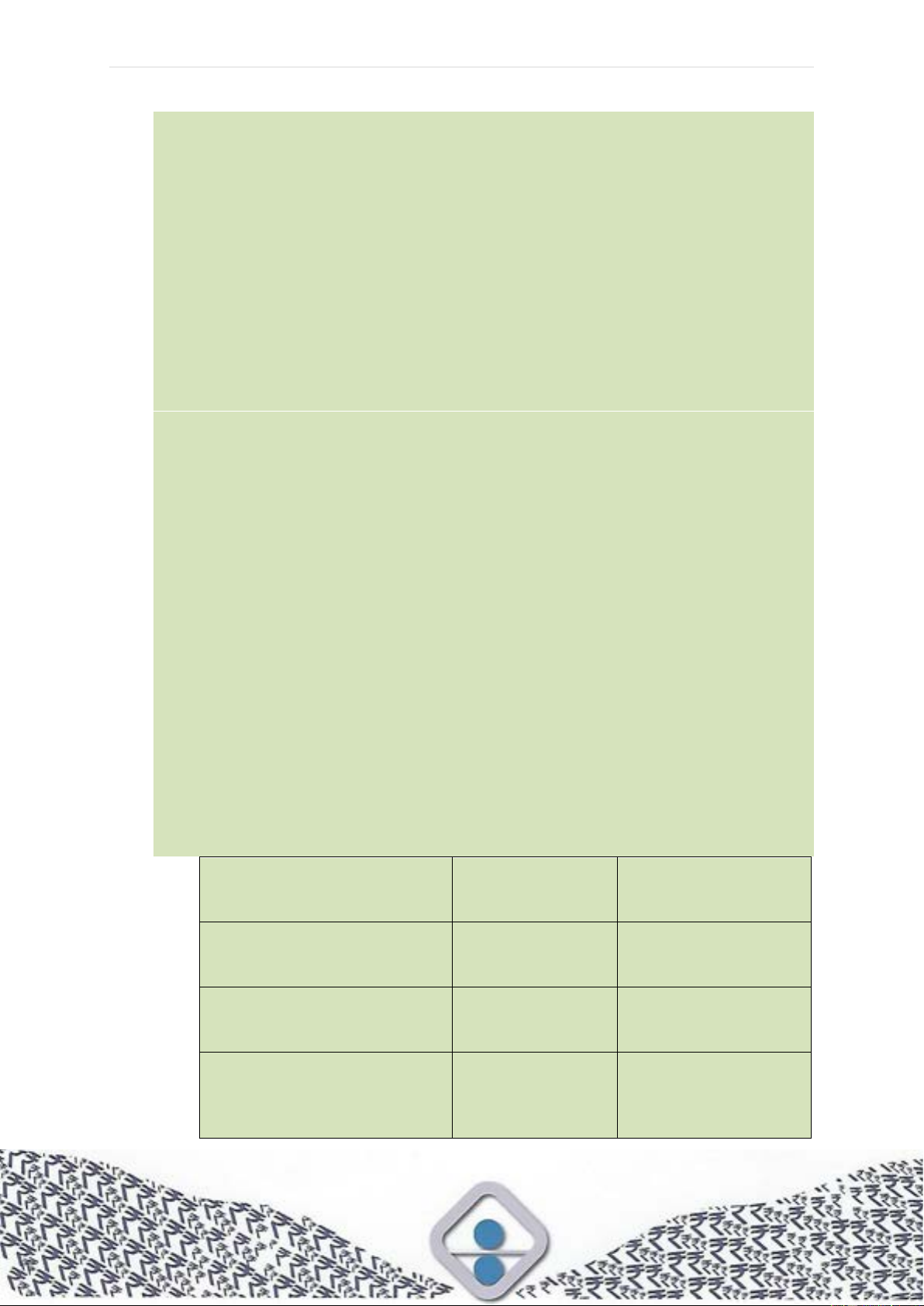
P a g e | 303
18.12.2 Quality and Cost Based Selection (QCBS)
(i) In QCBS selection, minimum qualifying marks (normally 70-80 (Seventy –
Eighty) out of maximum 100 (Hundred) marks) as benchmark for quality of
the technical proposal will be prescribed and indicated in the RfP along with
a scheme for allotting marks for various technical criteria/attributes. During
evaluation of technical proposal, quality score is assigned out of the
maximum 100 (Hundred) marks, to each of the responsive bids, as per the
scheme laid down in the RfP. The consultants/service providers who are
qualifying as per the technical evaluation criteria are considered as
technically responsive and the rest would be considered technically non-
responsive and would be dropped from the list. Financial proposals are then
opened for only eligible and responsive offers and other financial offers are
returned unopened to bidders. The financial proposals are also given cost-
score based on relative ranking of prices, with 100 (Hundred) marks for the
lowest and pro-rated lower marks for higher priced offers. The total score
shall be obtained by weighting the quality and cost scores and adding them.
The weight given to the technical score may not be confused with the
minimum qualifying technical score (though they may in some case be
equal). For example, the weightage given to cost score may be 30% (Thirty
per cent) and technical score may be given weightage of 70% (Seventy per
cent, but should never be more than 80%). The ratio of weightages for cost
and technical score could also be 40:60 (Forty:Sixty) or 50:50 (Fifty:Fifty)
etc. However, the weight for the “cost” shall be chosen taking into account
the complexity of the assignment and the relative importance of quality. The
proposed weightings for quality and cost shall be specified in the RfP. The
firm obtaining the highest total score shall be selected. It may be noted that
theoretically QCBS system with weight of 100% (Hundred percent) for the
‘cost’ approximates the price based LCS system. This method of selection
shall be used for highly technically complex and critical assignments where
it is justifiable to pay appropriately higher price for higher quality of proposal.
Table below provides a suggestive weighting for QCBS.
A suggestive weighting of scores for QCBS
Description
Remarks
Quality/Cost Score
Weighting (%) in
QCBS
High complex/downstream
consequences/specialised
assignments
Use QCBS with
higher technical
weightage
80/20
Moderate complexity
Majority of cases
will follow this
range
75-65/35-25
Assignments of a standard
or routine nature such as
auditors/procurement agents
handling the procurement
Use of LCS is
appropriate
60-50/40-50

P a g e | 304
(ii) There is a possibility that QCBS system is selected where LCS or other
systems would have been more appropriate considering the quality
requirements or the capability of Procuring Entity to monitor the
assignment. Hence, selection of QCBS should be justified and applied only
under circumstances mentioned above.
(iii) Weightage different from 70:30 (Seventy:Thirty) should be adequately
examined and justified.
(iv) Technical criteria selected should be relevant and proportional to the
requirement of quality of assignment and the selection process should be
rigorous enough to ensure that on one hand no technically unsatisfactory
bids should be able to get past a loose criteria and on the other hand no
technically satisfactory offer should get ruled out by tight criteria.
(v) It is important to lay down as objective a scheme of marking as possible.
Cases where subjectivity is unavoidable (as in evaluation of methodology
etc.), a system of grading responses and their marking may be laid down in
the bidding documents. Procuring Entity should also have a system of
conciliation and moderation of widely disparate markings by different
members of evaluation committee.
18.12.3 Direct Selection: Single Source Selection (SSS)
(i) Under some special circumstances, it may become necessary to select a
particular consultant/service provider where adequate justification is
available for such single source selection in the context of the overall
interest of Procuring Entity. This is also called ‘Selection through Direct
Negotiations’, which is not the generally prevalent nomenclature. The
selection by SSS/nomination is permissible under exceptional
circumstances such as:
a) Tasks that represent a natural continuation of previous work carried
out by the firm;
b) In case of an emergency situation, situations arising after natural
disasters, situations where timely completion of the assignment is of
utmost importance;
c) Situations where execution of the assignment may involve use of
proprietary techniques or only one consultant has requisite expertise;
d) At times, other PSUs or Government Organizations are used to
provide technical expertise. It is possible to use the expertise of such
institutions on a SSS basis;
e) Under some special circumstances, it may become necessary to
select a particular consultant where adequate justification is available
for such single-source selection in the context of the overall interest of
the Procuring Entity. Full justification for single source selection
should be recorded in the file and approval of the competent authority
obtained before resorting to such single source selection.

P a g e | 305
(ii) Procuring Entity shall ensure fairness and equity and shall have a
procedure in place to ensure that:
a) The prices are reasonable and consistent with market rates for tasks
of a similar nature; and
b) The required consultancy services are not split into smaller sized
procurement.
(iii) There is a possibility that SSS system is selected where LCS or other
systems would have been more appropriate considering the quality
requirements or the capability of Procuring Entity to monitor the
assignment. The assignment may be split into parcels to avoid competitive
selection systems or to avoid obtaining higher level approvals for SSS. Full
justification for single source selection should be recorded in the file and
approval of the competent authority (one level above CFA) obtained before
resorting to such single-source selection. In direct selection, the Procuring
Entity should ensure fairness and equity and the required consultancy/other
services are not split into smaller sized procurement to avoid competitive
processes.
(iv) There is a risk that the single consultant/service provider may charge
unreasonably high price. Procuring Entity must have a procedure in place
to ensure that the prices are reasonable and consistent with market rates
for tasks of a similar nature. If necessary negotiations may be held with the
consultants/service providers to examine reasonableness of quoted price.
18.12.4 Fixed Budget based Selection (FBS)
(i) Under this method, cost of the consulting services shall be specified as a
fixed budget in the tender document itself. FBS may be used when:
a) The type of consulting service required is simple and/or repetitive and
can be precisely defined; and
b) The budget can be reasonably estimated and set based on credible
cost estimates and/or previous selections which have been
successfully executed; and
c) The budget is sufficient for the consultant to perform the assignment.
(ii) Under FBS, the selection of the consultant shall be made by one of the
following two methods:
a) By a competitive selection process, based only on the quality of the
technical proposals, which are scored as per the criteria announced
in the RfP. The proposal with the highest technical score that meets
the fixed budget requirement shall be considered for placement of
contract.

P a g e | 306
b) In cases of repetitive or multiple assignments, by empanelling suitable
consultants, through an open advertised process with specified quality
criteria. Thereafter, selection of a specific consultant for a specific
assignment from such panel shall be based on overall considerations
of public interest including timeliness, practicability, number of other
assignments already given to that consultant in the past etc. In such
cases, the budget for each assignment shall also be fixed by the
Procuring Entity.
18.13 Procurement Cycle
The entire process of procurement and implementation of Consultancy and other
services shall include the following steps:
(i) Preparation of Concept Paper/Procurement Proposal and obtaining in principle
approvals;
(ii) Preparation of the ToR (in case of consultancy services)/Activity Schedule (in
case of other/non-consultancy services), cost estimate and seeking
administrative and budgetary approval;
(iii) In case of Procurement of Consultancy Services - Short list of consultants - EoI
formulation, publication, receipt of proposals and evaluation;
(iv) Preparation and issuance of the RfP; Receipt of proposals; Evaluation of
technical proposals: consideration of quality; Evaluation of financial proposals;
Selection of winning proposal; Negotiations and award of the contract to the
selected firm; and
(v) Monitoring of Assignments.
18.14 Preparation of Procurement Proposal/Concept Paper
A critical part of the Procurement of Services process is preparing an appropriately
staffed and budgeted Procurement Proposal/Concept Paper (which serve the role that
an Indent serves in Procurement of Goods).
As a first step towards Procurement of Services, a formal written brief Proposal and
Justification for the Services should be prepared (Please see a suggested format in
Annexure 37: Format of Procurement Proposal). It is akin to the Indent for
Materials/Material Requisition in case of Procurement of Goods. The User should
prepare in simple and concise language the requirement, purpose/objectives and the
scope/outcomes of the assignment and justify the assignment based on analysis of in-
house available capacity/capability. The eligibility and pre-qualification criteria to be
met by the consultants/service providers should also be clearly identified at this stage.
Justifications for procurement of Consultancies/Services may be kept in view. It is the
basic document for initiating Procurement of Services. It is also the document from
which the subsequent details of Terms of Reference (in case of consultancy
services)/Activity Schedule (in case of other/non-consultancy services) is drawn up. A
procurement proposal should contain:

P a g e | 307
(i) Purpose/Objective Statement of Services
“Purpose/Objective Statement of Services” describes the subject matter of
procurement bringing out the background and context, and justifying how the proposed
procurement of services would fit in with short-term and strategic goals of Procuring
Entity. Making such a statement is important to put the need for services in clear
perspective.
(ii) Service Outcome Statement
‘Service Outcome Statement’ lists out qualitatively and quantitatively the outcomes
expected from the Procurement of Services, as well as the expected time-frame and
a rough estimate of cost of Procurement of Services (including related costs to be
incurred by the organization). At this stage, it is not necessary go into details of all the
activities required to achieve the service outcomes, but it should list at least the broad
activities, would help in putting a rough estimate to the cost of the assignment. A
‘Service Outcome Statement’ should provide a concrete basis for subsequently
defining the type and amount of work that needs to be done by service provider and
the time-frame within which the output needs to be received by the user.
(iii) Justification for the procurement of Services
The Concept Paper/Procurement proposal should analyse the capabilities/capacities
required to carry out the assignment. It should also analyse the available in-house
capabilities/capacities and compare these with the ones required for the assignment.
Based on this assessment, the Procurement should be justified in the light of para
18.6.1.
18.15 Preparation of Terms of Reference (ToR)
ToR is akin to Description, Quantity and Technical Specification in Procurement of
Goods. This is the first step in the selection of the consultants once a need has been
identified. A ToR explains the purpose/objectives of the assignment, scope of work,
activities, tasks to be performed, respective responsibilities of the Procuring Entity and
consultant, expected results and deliverables of the assignment. A template for
developing a ToR is given at Annexure 38. The ToR shall include:
(i) Procuring Entity’s organisation background and project background;
(ii) Purpose and service outcomes statement of the assignment;
(iii) Detailed scope of work statement including schedule for completing the
assignment;
‘Detailed Scope of Work’ will contain the type and volume of activity to be undertaken
and the time frame of activity involved to achieve the Purpose and Service Outcomes
as envisaged in the ‘Brief proposal and Justification of the Services’. Starting from end-
outcomes backwards, the process to achieve the outcomes is broken down into a
discrete number of interrelated tasks, which the consultant will have to undertake. After

P a g e | 308
the tasks are identified, a logical sequencing of the tasks must be determined. Usually
a simple bar chart (or Gantt-chart) is the best way to illustrate required outputs over
time and their relationship to each other. The ‘Detailed Scope of Work’ contains such
a sequence of tasks over a timeline and also tangible outputs and activities such as
reports, workshops, or seminars.
(iv) Expected requirement of key professionals and kind of expertise;
Except in very complex consultancies, it is desirable to not to distinguish the tasks of
individual experts but instead to prepare a longer and more detailed description of
what the consultancy team, as a whole, will provide without splitting up tasks. The ToR
would list a range of tasks without regard to who will have the responsibility to
undertake them. In consultancy services, key professionals are usually named and
their credentials carry weightage in technical evaluation.
(v) Capacity-building programme and transfer of knowledge, if any;
(vi) Deliverables - List of reports (or documents, data, maps, surveys, designs,
drawings), schedule of deliveries and period of performance;
Depending on the assignment, the following reports are usually required: -
a) Inception Report: The inception report is designed to give the Procuring
Entity confidence that the assignment can be carried out as planned and as
agreed upon in the contract and should bring to its attention major problems
that might affect the direction and progress of the work.
b) Progress Reports: These reports keep the Procuring Entity regularly
informed about the progress of the assignment. Progress reports may
include a bar chart showing details of progress and any changes in the
assignment schedule.
c) Interim Reports: If the assignment is phased, interim reports are required
to inform the Procuring Entity of preliminary results, alterative solutions and
major decisions that need to be made. Since the recommendations of an
interim report may affect later phases of the assignment and even influence
the results of the project, the Procuring Entity should discuss the draft
interim reports with consultants in the field.
d) Final Report: The final report is due at the completion of the assignment.
The Procuring Entity and consultants should discuss the report while it is
still in draft form. The consultants alone are responsible for their findings,
although changes may be suggested in the course of the discussions. If the
consultants do not accept comments or recommendations from the
Procuring Entity, these should be noted in the report. The consultants
should include in the report the reasons for not accepting such changes.
(vii) Background material, data, reports, records of previous surveys and so on,
available and to be provided to the consultant. This would vary from project to
project, but transparency demands that such information should be transparently
and equitably shared with all prospective bidders;
(viii) Facilities such as local conveyance, office space, office machines, secretarial
assistance, utilities, local services, etc., which would be provided to the

P a g e | 309
consultant by the Procuring Entity. This aspect has a great bearing on the cost
that will be quoted by the bidders. This can have implications in vitiating the
selection process either way – a facility to be provided may not get declared or a
declared facility may not be provided ultimately. So, great care and reality check
is necessary, while preparing this statement;
(ix) Institutional and organisational arrangement; and
(x) Procedure for review of the work of consultant after award of contract.
18.16 Estimation of Costs
Preparation of a well-thought-through cost estimate is essential if realistic budgetary
resources are to be earmarked.
(i) Categories: Costs shall be divided into two broad categories – (a) fee or
remuneration (according to the type of contract used) and (b) reimbursable costs.
Depending on the nature of the assignment, cost estimates may be prepared
either in local currency or with a combination of local plus foreign currencies.
Cost estimate should provide for forecast of inflation during the period of
assignment.
(ii) Estimated Resources: The cost estimate shall be based on the Procuring
Entity’s assessment of the resources needed to carry out the assignment:
a) Staff time;
b) Logistical support (city, National and International travels/trips and
durations);
c) Physical inputs (for example, vehicles, laboratory equipment);
d) Miscellaneous (support services, contingencies and profit element, taxes
and duties)
(iii) Rates: Costs are normally estimated using unit rates (staff remuneration rates,
reimbursable expenses) and quantities (exceptionally some items may be
estimated on the Lump-sum basis or percentage basis – Contingencies and
support services). Rates of payment should be identified (including applicable
taxes if any) in local and foreign currency for Staff Time, Logistics Costs and
Costs of various physical inputs/support services.
(iv) Staff Costs: The estimate of staff cost is based on an estimate of the personnel
time (staff-months or staff-hours) required for carrying out the assignment taking
into account the time required by each expert, his or her billing rate and the
related direct cost component. It is useful to prepare a bar chart indicating the
duration of each main activity (work schedule) and time to be spent by different
members of the consultancy team (staffing schedule) distinguishing tasks to be
carried out by foreign and local consultants. Due consideration should be given
to the expected breakdown of a consultant’s time in the home office, in the client’s
countries and away from home office allowance.

P a g e | 310
(v) Logistic Costs: Number of trips required should be estimated as required to
carry out various activities. Travel costs may be included for city travel, National
and International travel and stay.
(vi) Physical Inputs Costs: Assessment of such costs would depend on the
technical requirements of equipment.
(vii) Miscellaneous costs: Support services may be taken as a percentage of staff
costs. Contingencies and profit elements are usually taken as a percentage of
the total cost of the Consultancy. To this would be added the taxes and duties
likely to be incurred by the consultants.
Although assignments vary in size, length and nature, it is possible to make a cost
estimate by breaking down the assignment’s activities into the following cost
categories:
(i) Professional and support staff;
a) Travel, Hotel and transport;
b) Mobilisation and demobilisation;
c) Office rent, Furniture/Equipment, supplies, Utilities, IT equipment and
communication;
d) Assignment related surveys, training programmes;
e) Translation, report printing;
f) Contingencies: miscellaneous, insurance, shipping; and
g) Indirect local taxes and duties in connection with carrying out the services.
A mismatch between the cost estimate and the ToR is likely to mislead consultants on
the desired scope, depth and details of service required and this could lead to serious
problems during contract negotiations or during implementation of the assignment.
18.17 Shortlisting of qualified consultants – Expression of Interest (EoI)
(i) Due to inherent complexities of evaluation of physically non-measurable scope
and quality standards of consultancy proposals, it is too time consuming and
expensive for the Procuring Entity to invite (as well for the Consultancy firms to
prepare) and evaluate proposals from all consultants who want to compete.
Therefore, instead of publicly inviting all interested bidders to present their bids,
the consultant selection process is based on obtaining limited number of
proposals from a short list of qualified firms that, in the Procuring Entity’s view of
experience, are capable and can be trusted to deliver the required services at
the desired level of quality.
(ii) In Procurement of Consultancy, these considerations can be best addressed
through unrestricted competition among qualified shortlisted firms or individuals
in which selection is based on the quality of the proposal and, where appropriate,
on the cost of services to be provided. Hence, Procurement of Consultancy
needs to be done in a two-stage process. In the first stage of procurement, the

P a g e | 311
qualified firms are shortlisted transparently. In the second stage Request for
Proposals (RfP) containing Technical and Financial Bids is invited from such
shortlisted bidders to select the winning bidder. Care should be taken to avoid
formation of unreasonable qualification criteria prior to shortlisting of consultants
that may lead to restricted participation.
(iii) Unlike Procurement of Consultancy Services, procurement of other (Non-
consultancy) services is done by a simpler process akin to those of procurement
of Goods and Works. It is normally done in a Single Stage (RfP) Process. In
procurements above ₹10 (Rupees Ten) lakh, it should normally be an advertised
RfP. For procurement below ₹10 (Rupees Ten) lakh, RfP can be issued to a
selected shortlist of likely service providers.
(iv) For procurement above ₹25 (Rupees Twenty five) lakh shortlisting is done in an
openly advertised competitive shortlisting process called Expression of Interest
(EoI), giving equal opportunity to all interested bidders to be considered for
shortlisting. A complete ToR should be ready before requesting EoI. Attention of
known reputed consultants may also be separately drawn wherever possible.
(v) In procurements of consultancy services below ₹25 (Rupees Twenty five) lakh,
shortlisting is done without a formal published Expression of Interest (EoI), akin
to a Limited Tender Enquiry (LTE) process. To start with, a long list of potential
consultants/service providers is prepared on the basis of formal or informal
enquiries from other Organisations involved in similar activities, Association of
Consultancy firms etc. The Procuring Entity should scrutinise and shortlist the
prima facie eligible and capable contractors. The number of consultants in this
moderated shortlist should not be less than three. In case sufficient consultants
cannot be located, then the responses may be called from lesser number of
consultants, but not less than three in any case, after taking CFA’s approval. To
smoothen this shortlisting of consultants, Procuring Entities may consider
preparation of a panel of qualified consultants, after evaluation of their
credentials, on the lines of registration of vendors in procurement of Goods.
(vi) If the complexity of the project so justifies, a formal EoI may be advertised as in
above, even for procurements below ₹25 (Rupees Twenty five) lakh, with the
approval of CFA.
The EoI document, among other things, should contain:
(i) Description of Services - Brief Purpose and Scope of Work;
This may include brief purpose/objective statement; Service outcomes statement;
broad scope of work including time-frames; inputs to be provided by the Procuring
Entity; and expected deliverables of the assignment. This may also include the place
of execution of the assignment. The request for EoI shall not include the assignment
ToR. The consultants may also be asked to send their comments on the objectives
and scope of the work or service projected in the enquiry.

P a g e | 312
(ii) Qualification Criteria;
This may clearly lay down the qualification criteria which shall be applied by the
Procuring Entity for short listing the consultants. The EoI should ask for sufficient
information so that the Procuring Entity may evaluate the consultant’s capabilities and
eligibility to undertake the assignment. Information should include: (a) core business
and years in business; (b) qualifications in the field of the assignment; (c) technical
and managerial organisation of the firm; and (d) general qualifications and number of
key staff. In addition, the consultants should indicate information relating to their
eligibility and any conflict of interest that they know may impact objective performance
and impartial advice for their services. Consultants should not be asked about their
approach to the services or to submit any curricula vitae of key personnel because
these documents will be dealt with in the RfP. No legal documents such as certificates
of incorporation of the firm, powers of attorney, financial statements or translations of
standard brochures should be requested. Given the often-large number of
submissions, the advertisement should stress the importance of brevity of the
information to be sent.
18.18 Short List of Consultants
(i) The Procuring Entity shall evaluate the consultants for shortlisting, inter-alia,
based on their past experience of handing similar types of projects, strength of
their man power and financial strength of the firm. For example, it is important to
find out if the firm: (i) is a small specialised firm or a large firm with access to a
pool of expertise; (ii) has been in business for an extended period and has a track
record in the field of assignment and in the region; and (iii) has appropriate
certification in in-house quality control (firm adheres to the requirement of
International Organization for Standardization (ISO)) as relevant to the task and
has an ethics code in place.
(ii) It is important for the Procuring Entity to hire consultants who have a reputation
for integrity and impartiality rooted in independence from third parties. The
process of shortlisting is one of the most difficult and time-consuming tasks in
the selection process of a consultant. This could be eased by writing a clear
Description of Service (objectives and scope) and shortlisting criteria.
(iii) The short list of firms is required for the selection of consultancy services in a
competitive process with a minimum of three and generally not more than eight.
(iv) The Procuring Entity may assign scores to the response of each consultant
based on weightages assigned to each of the criteria in the EoI. Each criteria
may be sub-divided into further sub-criteria, if called for. Normally, the
weightages shown in Table may be used for such an evaluation (this is just an
indicative criteria to assist the evaluators. The criteria and their weightage may
be changed as per the need of Procuring Entity).
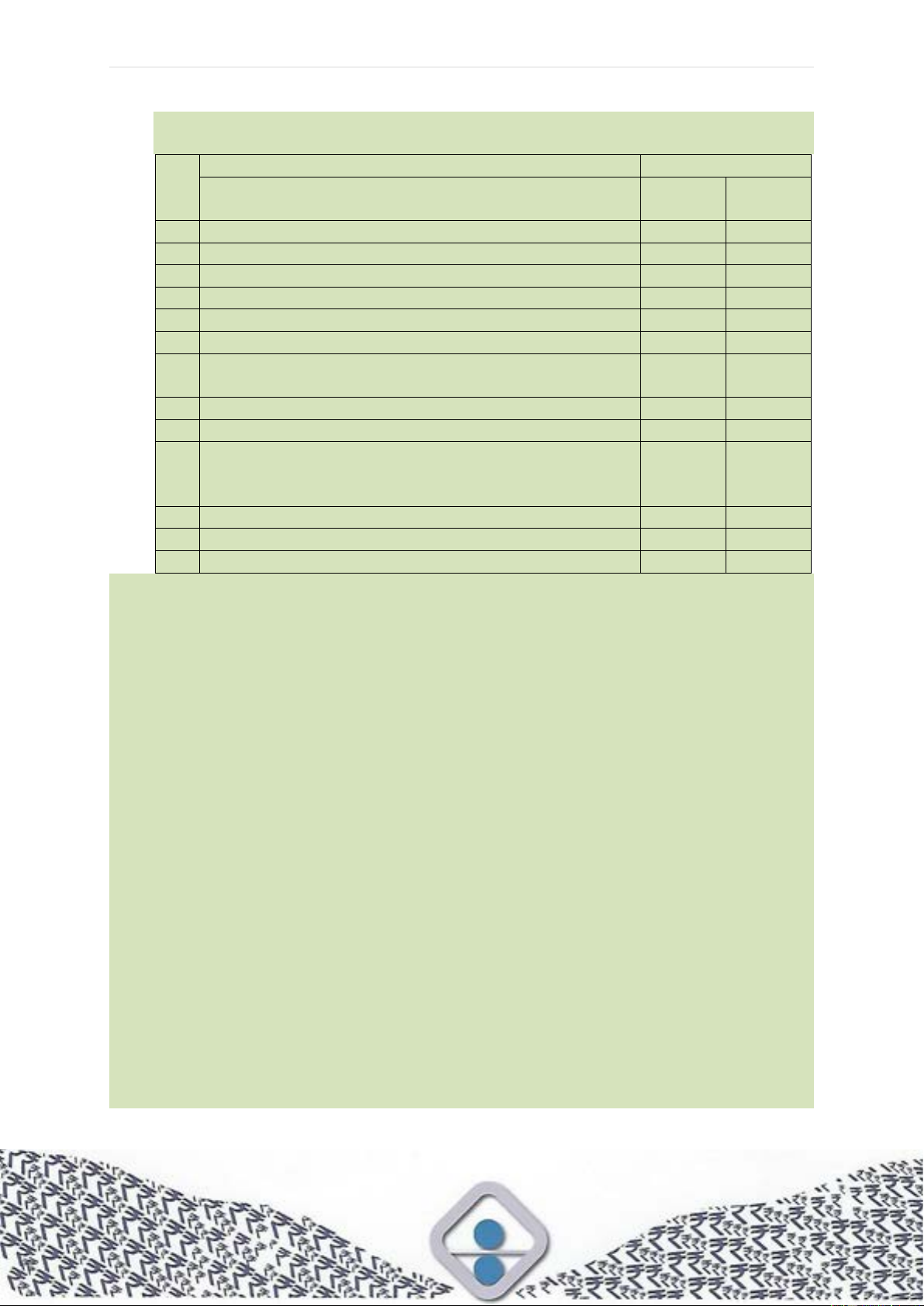
P a g e | 313
Qualification criteria and their weightages
Sl.
№
Criteria
Weightage
Sub-criteria
Criteria
Total
Sub-
criteria
1
Past experience of the consultant (track record)
60%
●
Number of years’ relevant experience
20%
●
Past experience of studies of similar nature
50%
●
Past experience in carrying out
■
Studies in the related sector
20%
■
Studies carried out in the region
10%
2
General profile of qualification, experience and
number of key staff (not individual CVs)
25%
●
Qualifications
30%
●
Relevant experience
70%
3
Overall financial strength of the consultant in terms
of turnover, profitability and cash flow (liquid assets)
situation
15%
●
Turnover figure for last three years
50%
●
Net worth figure for last three years
50%
Total
100%
(v) The Procuring Entity shall short list all the consultants who secure the
minimum required marks [normally 75% (seventy-five per cent)]. The
minimum qualifying requirement shall be specified in the EoI document.
(vi) In EoI, simplified evaluation criteria can also be used, instead of marking
schemes as mentioned above. A fail-pass, minimum benchmark in each
criteria/sub-criteria can be specified e.g. Must have past experience of at least
two similar projects; key professionals must have at least seven years’
experience and must have Master’s Qualification in relevant field; Firm must
have a turnover of at least ₹10 (Rupees Ten) crore and so on. Any firm which
passes these benchmarks is declared as qualified.
(vii) However, this exercise of scoring is not merely for disqualification of firms below
a threshold, but to establish the relative strengths and weaknesses of the
applicants, in order to arrive at a robust short list of qualified consultants who
have the required experience and qualifications to deliver the required services
at the desired level of quality.
(viii) The short lists shall normally comprise at least three firms but not more than eight
(to avoid inordinate delays in evaluation of subsequent RfP). RfP documents
would be issued only to the shortlisted consultants.
(ix) Conflict of interest situations: It is possible that conflict of interest situations
are not reported or declared by the participating consultants. These situations

P a g e | 314
need to be dealt with by signing declarations in specified formats both at the EoI
bid stage as also in the technical proposal.
(x) Qualifications leasing: Local Bidders with insufficient qualifications may show
association with well qualified (foreign or local) consultants, just to use their
qualification documents to get the contract. These well-qualified consultants
lease their qualification – but do not or only minimally contribute experience or
key personnel at the execution stage. This issue needs to be dealt with from the
EoI stage by very clearly identifying the qualified applicant and putting on
record/contract the guaranteed contribution from the partner with qualification.
18.19 Preparation and Issuance of the Request for Proposals (RfP)
For procurement of Consultancy Services, the RfP is sent only to the short listed
consultants. In procurement of other (Non-consultancy) Services, since the
procurement is done without EoI, RfP is advertised, except in case when value of
procurement is less than ₹10 (Rupees Ten) lakh.
The Procuring Entity shall use the applicable standard RfP with minimal changes as
necessary to address project specific issues. The Procuring Entity may use e-
Procurement platform to issue RfP. Among other things, the RfP should contain:
(i) Data sheet (which contains assignment specific information);
Shall contain all necessary information that would help the consultants prepare
responsive proposals and shall bring in as much transparency as possible to the
selection procedure by providing information on the evaluation process and by
indicating the evaluation criteria and factors and their respective weights and
minimum passing quality score. Shall not indicate the budget (except in case of
Fixed Budget System of selection), but shall indicate the expected input of key
professionals (staff time). Consultants, however, shall be free to prepare their
own estimates of staff time necessary to carry out the assignment.
(ii) Terms of Reference (ToR);
(iii) List of key experts required for the assignment;
(iv) Requirement of qualifications and experience of the firm and key experts;
(v) Criteria of proposal evaluation and selection procedure;
(vi) Standard formats for the technical proposal;
Shall consist of,
a. Technical proposal submission form (including declaration on conflict of
interest, eligibility, following Code of Integrity etc.);
b. For a JV/consortium, a MoU or copy of existing agreement, as applicable;
c. Power of attorney (in case of a JV, lead member to be authorised);
d. Consultant’s organisation and experience (for FTP only);
e. Comments and suggestions on ToR, counterpart staff and facilities to be
provided by the client (for FTP only);

P a g e | 315
f. Description of approach and methodology and work plan for performing the
assignment;
g. Work schedule and planning for deliverables; and
h. Team composition, key expert’s inputs, attached CVs
(vii) Standard formats for the financial proposal;
Shall consist of,
a. Financial proposal form;
b. A summary sheet of the cost to be quoted by the Bidder;
c. Remuneration payable; and
d. Reimbursable expenses
(viii) Proposed procedure to be followed pertaining to mid-term review of the progress
of the work and review of the final draft report.
18.20 Simplified Technical Proposal
In Least Cost Selection (LCS) system of evaluation, since the technical scores are not
ranked or weighted and added to financial scores, it would suffice if instead of a
detailed marking scheme for the criteria/sub-criteria, minimum fail-pass qualifying
benchmarks are laid down for each criteria/sub-criteria. For such assignment,
technical evaluation can be carried out by following a simplified procedure for
evaluation of technical quality and only a Simplified Technical Proposal (STP, instead
of a Full Technical Proposal - FTP) may be called for and indicated in the data sheet
of the RfP document. STP should be used when the assignment is: 1. unlikely to have
significant downstream impact; 2. of a routine nature where ToR already defines
details of tasks to be performed and required output and approach, methodology,
organisation and staffing could be evaluated without use of sub-criteria; and 3. that
characteristics of work do not require further detailed evaluation of the consultant’s
experience (e.g. engagement of accountants, auditors, consultant engineers etc.).
STP reduces the time and cost required to prepare the proposal and could be
evaluated faster by the Evaluation Committee. For example, following parameters can
be used:
(i) Minimum experience including number of assignments handled by the firm
similar to the area of assignment;
(ii) Turnover and other financial parameters of the firm, if required;
(iii) Minimum educational qualifications of each of the key professionals;
(iv) Minimum requirement of experience of the key professionals in an area similar
to the proposed assignment.
All the firms which meet the minimum qualifying standards/criteria so prescribed will
stand technically qualified for consideration of their financial bids.

P a g e | 316
18.21 Important Provisions of RfP/Contracts
(i) Price Adjustment: In case the duration of the contract is expected to exceed 18
(Eighteen) months for a time-based contract or an indefinite delivery contract, a
price adjustment provision for the remuneration rate should be included in the
contract based on the Consumer Price Index in the country. Lump-sum contracts
shall not generally be subject to price adjustment except for small value multi-
year contracts (example, for auditors).
(ii) Payment Provisions: Ordinarily, payments for services rendered or supplies
made should be released only after the services have been rendered or supplies
made. However, if it becomes necessary to make advance payments, it should
be done as per para 9.12.
(iii) Bid Securities: Normally in procurement of consultancy services, it is not a
practice to ask for bid security. However, Procuring Entity has the option of
requiring a bid security in time-critical procurements. In exceptional cases, in
place of a bid security, Procuring Entities after seeking approval of the competent
authority may consider asking bidders to sign a Bid Securing Declaration
accepting that if they withdraw or modify their bids during the period of validity,
or if they are awarded the contract and they fail to sign the contract, or to submit
a performance security before the deadline defined in the request for proposals
(RFP) document, they will be suspended for the period of time specified in the
request for proposals document from being eligible to submit Bids/Proposals for
contracts with the Procuring Entity.
(iv) Conflict of Interest: The consultant shall not receive any other remuneration
from any source in connection with the same assignment except as provided
under the contract. For example, consultants hired to prepare ToR for an
assignment shall not be hired for the assignment in question and shall not be in
a conflict of interest situation as described in the RfP/contract.
(v) Staff Substitution of Key Professional: During an assignment where key
professionals are named in the contract, if substitution is necessary (for example,
because of ill health or because a staff member proves to be unsuitable, or the
member is no longer working with the consultant), the consultant shall propose
other staff of at least the same level of qualifications for approval by the Procuring
Entity. The RfP/contract must specifically make provision for terms and
conditions under which the staff can be replaced, about the remuneration to be
paid and so on.
(vi) Training or Transfer of Knowledge: If the assignment includes an important
component of training or transfer of knowledge to the Procuring Entity staff, the
ToR shall indicate the objectives, nature, scope and goals of the training
programme, including details on trainers and trainees, skills to be transferred,
timeframe and monitoring and evaluation arrangements. The cost of the training
programme shall be explicitly stated in the consultant’s contract and in the budget
for the assignment.

P a g e | 317
18.22 Evaluation Procedure
(i) Technical proposals for consultancy services are an intellectual product. Their
evaluation must be based on individual professional judgement of competent
evaluators and should not be reduced to a purely arithmetical exercise. The
difficulty is to ensure that this judgement is not exercised in an unreasonable or
arbitrary manner. It is important that subjectivity, implicit to any individual
professional judgement, be complemented by transparency, consistency and
fairness. The individual evaluator entrusted with the evaluation, when required,
should be able to explain to the satisfaction of a qualified reviewer from the higher
authority or to enforcement agencies the reason for his/her scoring and
recommendation. One way to achieve this objective is by adopting a
rating/grading system for evaluation of the criteria and sub-criteria (if so specified
in the RfP) in the technical proposals.
(ii) If not detailed in the RfP, the evaluation committee shall define the grades of the
rating system to be adopted for scoring the technical proposals according to the
criteria and sub-criteria set out in the Data Sheet.
(iii) To discourage subjectivity and avoid the use of points and fractions of points, the
rating system provides a few grades (from three to four) for each criteria and sub-
criteria. Minimum qualifying marks or relative qualifying method for quality of the
technical proposal will be prescribed and indicated in the RfP. The grading
system must be defined before the technical proposals are opened to prevent
bias (or perceived bias) approach, occurring because of the evaluator’s
knowledge of the opened proposal contents. It is recommended that the
evaluation and scoring of technical proposals be carried out only after defining
the grading system. Otherwise, evaluation committee members would have to
assign a level of responsiveness of the proposals to each of the different criteria
and sub-criteria without guidance and support from pre-defined grades. This
could easily distort the evaluation for the following main reasons:
a) Evaluators may differ, even widely, in their definition, understanding, or
interpretation of the same criteria and also because of their subjective
experience and understanding of the ToR;
b) Disparities in evaluators’ relative generosity or severity in judgment and
ratings can easily be magnified by the lack of common definitions of the
requirements to be considered for each criteria and sub-criteria;
c) Large differences in scores caused by inadequate understanding of the
ToR or improper use of the evaluation criteria and sub-criteria are difficult
to reconcile and explain.
(iv) Precise and exact markings of criteria and sub-criteria specified in technical
evaluation (especially of un-quantifiable criteria e.g. Evaluation of Methodology)
may neither be feasible nor warranted, especially when there is bound to be
variation among marks by different members of the evaluation committee.
Instead of assigning marks over the full range of attributes, it is more appropriate
to divide the range into 4-5 slabs of ratings. A possible example of rating could
be:
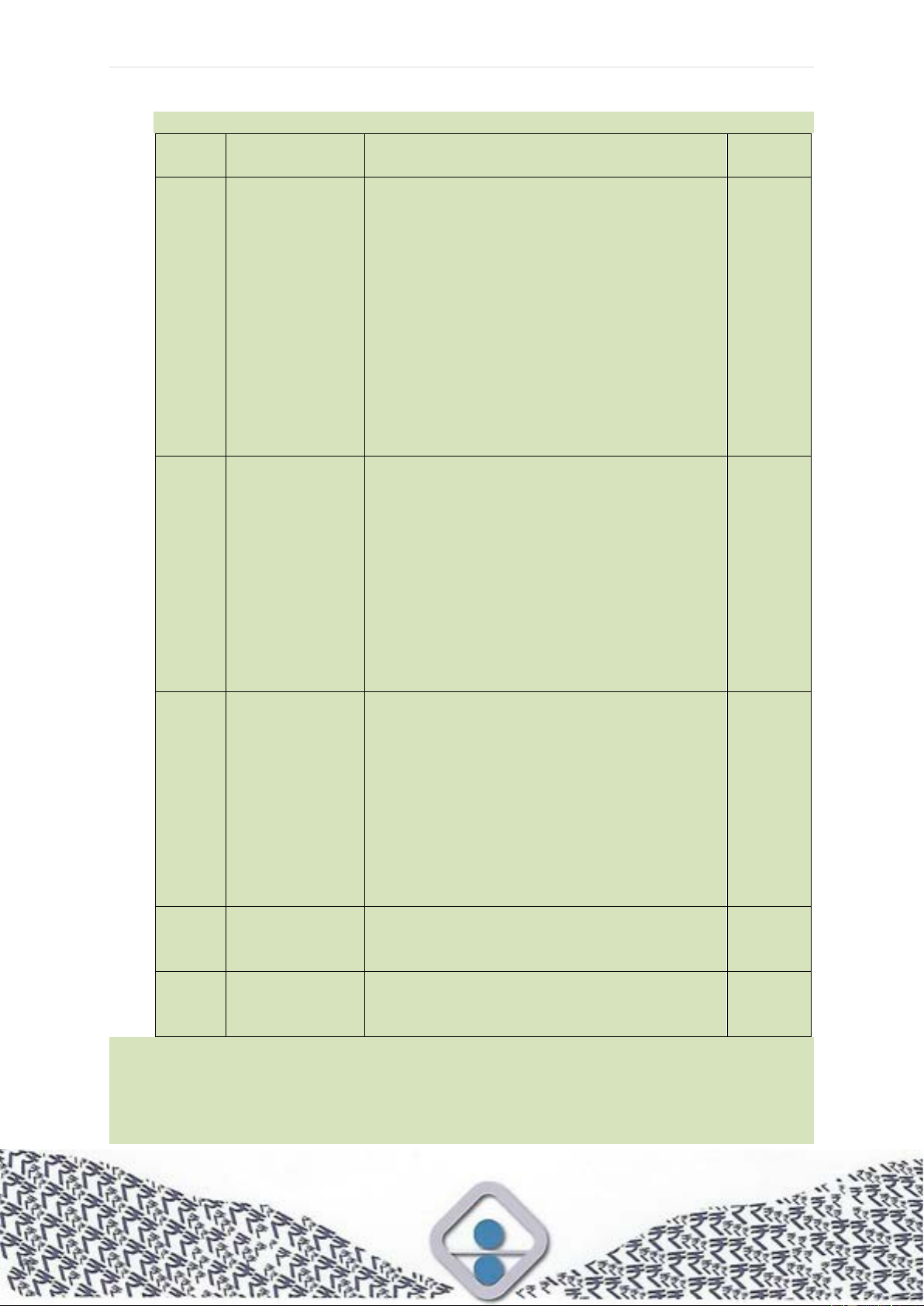
P a g e | 318
Rating
Assessment
Detailed Evaluation, in case of
unquantifiable Criteria
Marks
A
Very Good
The service providers have outstanding,
advanced expertise in specific problem
areas of the assignment that can promise
an excellent execution of the assignment.
The service providers’ staff includes top
experts in the field of the assignment. The
service providers are considered world-
class specialists in the approaches and
methodologies dealing with specific issues
in the assignment. The service providers
operate according to well- established
Quality Management (ISO 9002 etc.)
Procedures.
Full
Marks
B
Good
The service providers have extensive
experience in the field of the assignment
and have worked in Regions and Sectors
with similar physical and institutional
conditions, including similar critical issues.
Permanent staff are adequate and highly
qualified to cover the requirements of the
assignment. The service providers have
experience with advanced approaches
and methodologies for dealing with the
specific requirements of the assignment.
80% of
Full
Marks
C
Satisfactory
The service providers have experience in
the field of assignments similar to the one
being considered, but have not dealt with
critical issues specific to it (such as, for
instance, delicate social or environmental
issues). The service providers are
experienced in the use of standard
approaches and methodologies required
for the assignment. The service providers’
permanent staff are adequate.
60% of
Full
Marks
D
Unsatisfactory
The service provider has experience
which is not considered adequate for the
quality needed by the project.
30% of
Full
Marks
E
Not Relevant
The service provider’ experience has no or
little relevance to the project under
consideration.
10% of
Full
Marks
18.23 Evaluation of the Quality – Technical Proposals
(i) Once the responsiveness of a proposal is established, the evaluation committee
then shall apply the criteria and sub-criteria set forth in the Data Sheet. Each
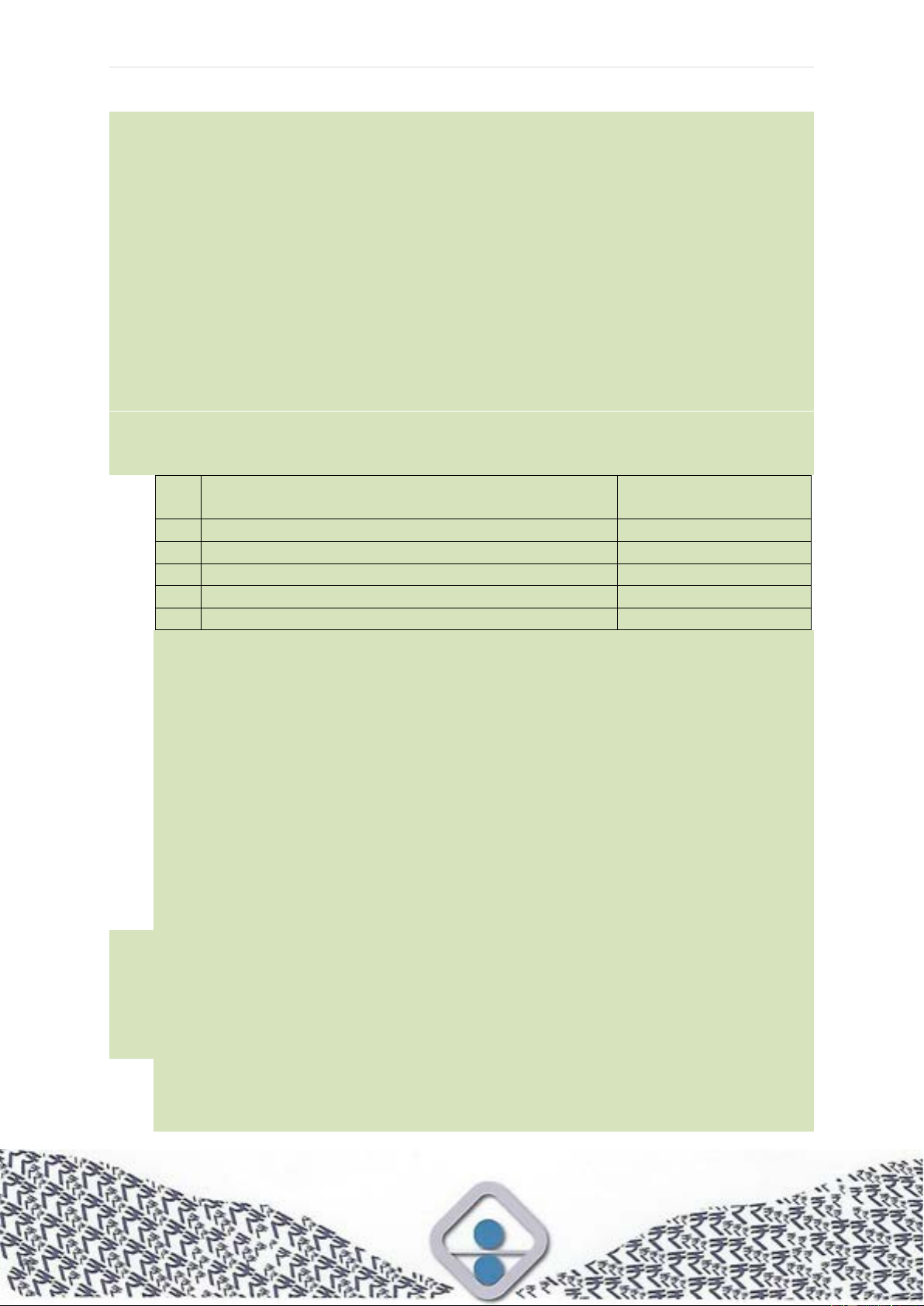
P a g e | 319
proposal should be judged on its own merits and assigned an absolute, not
comparative, grade. A comparative evaluation would single out the best proposal
on a relative scale, but still could leave the Procuring Entity with a poor proposal.
Instead, the evaluation should measure absolute quality scored against pre-
defined criteria and sub-criteria. The Procuring Entity shall evaluate each
technical proposal taking into account criteria as prescribed in the RfP: (a) the
consultant’s relevant experience for the assignment; (b) the quality of the
methodology proposed; (c) the qualifications of the key staff proposed; and (d)
capability for transfer of knowledge (if relevant). Each of the technical proposals
will be evaluated for the criteria prescribed in the RfP by awarding marks so as
to make the total maximum technical score of 100 (Hundred). The criteria and
weightage to each criteria or sub-criteria would depend on the requirements of
each case and may be fixed objectively. A model scheme of maximum/minimum
marks in terms of percentage is, however, proposed in the following Table:
A model scheme of maximum/minimum marks in terms of percentage
Sl.
No.
Rated Criteria
Range of Percentage
for Score
1
Consultancy Firm’s specific experience
5-10%
2
Methodology
20-50%
3
Qualification and relevant experience of key staff
30-60%
4
Transfer of Knowledge*
0-10%
Overall
100%
Note: * If this criteria is not required, the marks can be adjusted against some
other criteria. The weight given to the firm’s experience can be relatively modest,
since this criteria has already been taken into account when short listing the
consultant. More weight shall be given to the methodology in the case of more
complex assignments (for example, multidisciplinary feasibility or management
studies). Evaluation of only the key personnel is recommended. Since key
personnel ultimately determine the quality of performance, more weight shall be
assigned to this criteria if the proposed assignment is complex. The committee
shall review the qualifications and experience of proposed key personnel in their
curricula vitae, which must be accurate, complete and signed by an authorized
official of the consultant and the individual proposed. The experience criteria
mentioned in point 1 in the table above holds true for Consultancy Firm and not
for an individual consultant.
(ii) The evaluators shall normally divide the above criteria mentioned in the Table
into sub-criteria. However, the number of sub-criteria should be kept to the
minimum that is considered essential. For example, methodology criteria can be
sub-divided into sub-criteria as:
a) Understanding of ToR (30% weightage);
b) Acceptability and detailing of methodology and work plan (50% weightage);
c) Innovation, if it is important (20% weightage).

P a g e | 320
The criteria for suitability of the key professionals for the assignment can also be
divided into:
a) Educational qualifications (20% weightage);
b) Professional experience in the required area of assignment (80%
weightage).
As mentioned in para 18.20 earlier, in LCS, a simplified evaluation criteria laying
down minimum qualifying fail-pass benchmarks for each criteria/sub-criteria
(instead of marking schemes) may also be used in appropriate cases. All offers
that pass the qualifying benchmarks are declared as technically qualified and
their financial bids are opened.
(iii) Evaluation committee members should carry out the evaluation independently
and score the proposal based on the rating criteria.
(iv) Next, the Evaluation committee should conduct a joint review and discuss the
merits of individual evaluations and scores. Some evaluators tend to be
generous while others will be rigid in their judgment and ratings. Such disparity
does not matter, provided each evaluator is consistent and differences in scores
are not too large. Large differences should be reviewed and explained because
they often are caused by improper or inaccurate use of the rating system.
Reconciling differences that are considered too large by the Evaluation
committee may result in members revising some of their ratings and scores. As
such, any changes should be recorded. Finally, the scores given by different
members may be averaged out. During the meeting, the Evaluation committee
should also comment on the strengths and weaknesses of all proposals that have
met the minimum technical score indicated in the RfP. This will help identify any
elements in the winning proposal that should be clarified during negotiations.
(v) Eventually, for each of the technical proposals, the Evaluation committee should
calculate the average of the scores allocated to each criteria by all members,
establish the technical ranking of the proposals, identify the best and propose it
for award. The evaluation also establishes whether a proposal passes the
minimum qualifying mark (or technical score, normally 75 (Seventy five))
provided for in the RfP. If one or more proposals fail to meet the minimum
qualifying mark, both individual and joint assessments must be carefully
reviewed and justified. Short-listed consultants are usually discouraged when
their proposals are rejected, particularly when they are only a few points below
the minimum mark. Therefore, the Procuring Entity should be prepared to debrief
consultants to explain the evaluation of their proposals.
(vi) At the end of the technical evaluation process, the Evaluation committee shall
prepare a technical evaluation report of the “quality” of the proposals recording
the scores given to each criteria and sub-criteria, as well as explain the decisions
and take the CFA’s approval. For each proposal, the report also should
substantiate the results of the evaluation and indicate technical weaknesses or
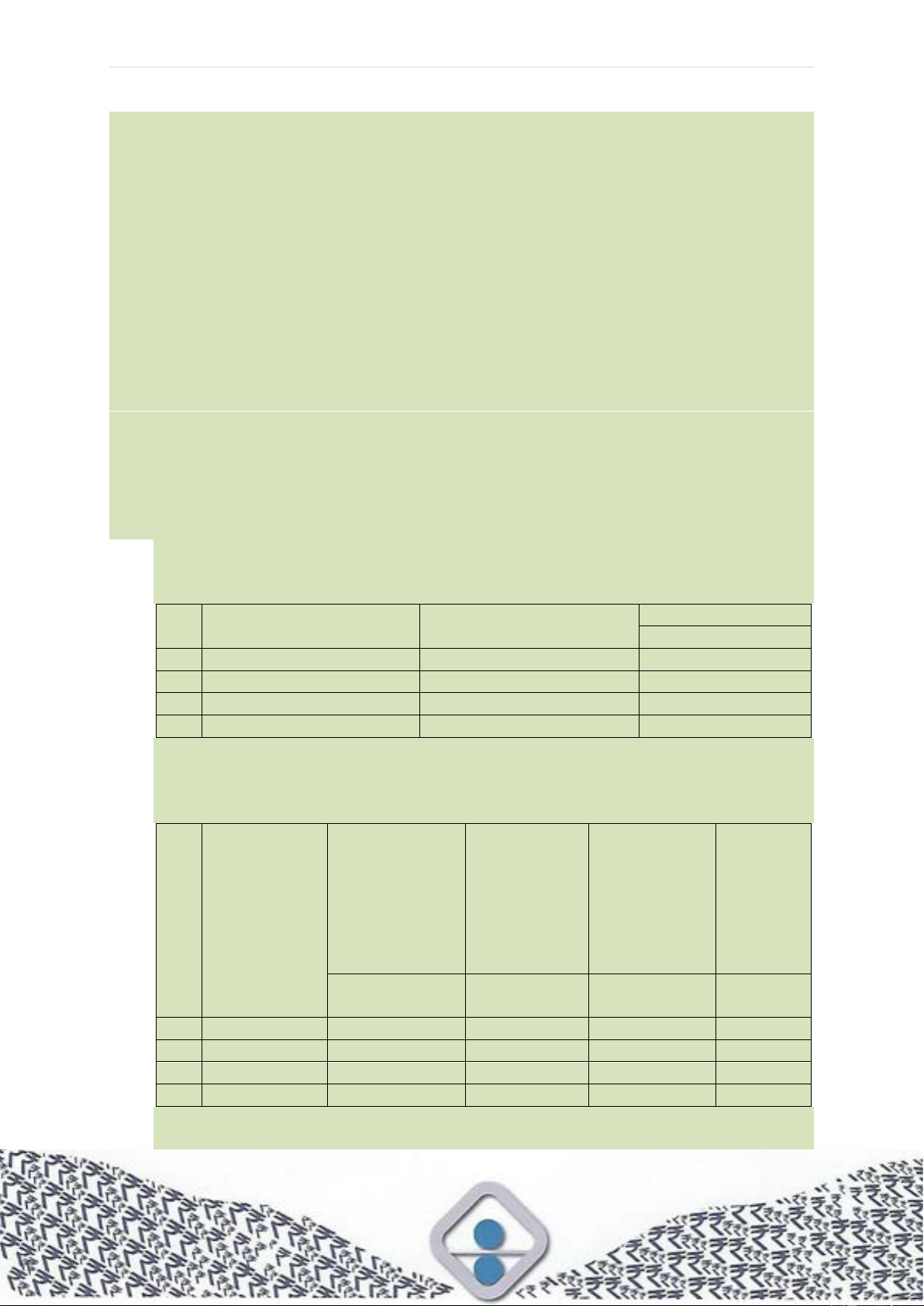
P a g e | 321
deviations from the terms set out in the RfP and comment on their acceptability.
This committee shall record in details the reasons for acceptance or rejection of
the bids analysed and evaluated by it. The CFA may ask the Evaluation
committee to explain the report, but should not request that scores be changed.
It should review the Evaluation committee’s evaluation of each proposal (on
technical, contractual and other aspects). The CFA should decide how any
acceptable deviation in each proposal should be handled during negotiations, in
case that proposal is ranked first. The technical evaluation report is a confidential
document and its contents shall not be disclosed. All records relating to the
evaluation, such as individual mark sheets, shall be retained until completion of
the project and its audit.
(vii) Only consultants qualifying as per the technical evaluation criteria will be
considered as eligible for the consultancy assignment. All the firms, which meet
the minimum qualifying standards/criteria so prescribed, will stand technically
qualified for consideration of their financial bids.
(viii) Examples of various formats for detailed technical evaluation are given below for
illustration:
A. Evaluation of Consultancy Firm’s Experience
(Averaged from individual worksheets of evaluation committee members)
Sl.
No.
Name of the
Consultancy
Firm Number of Projects
of similar nature
Marks Awarded
Max. Marks =
B. Evaluation of Methodology & Work Schedule
(Averaged from individual worksheets of evaluation committee members)
Sl.
No.
Name of the
Consultancy
Firm’s
Understanding
of ToR –
Marks
Awarded
Work Plan &
Methodology
– Marks
Awarded
Organization
and Staffing
for the
proposed
assignment
– Marks
Awarded
Total –
Marks
Awarded
Max.
Marks =
Max.
Marks =
Max.
Marks =
Max.
Marks =
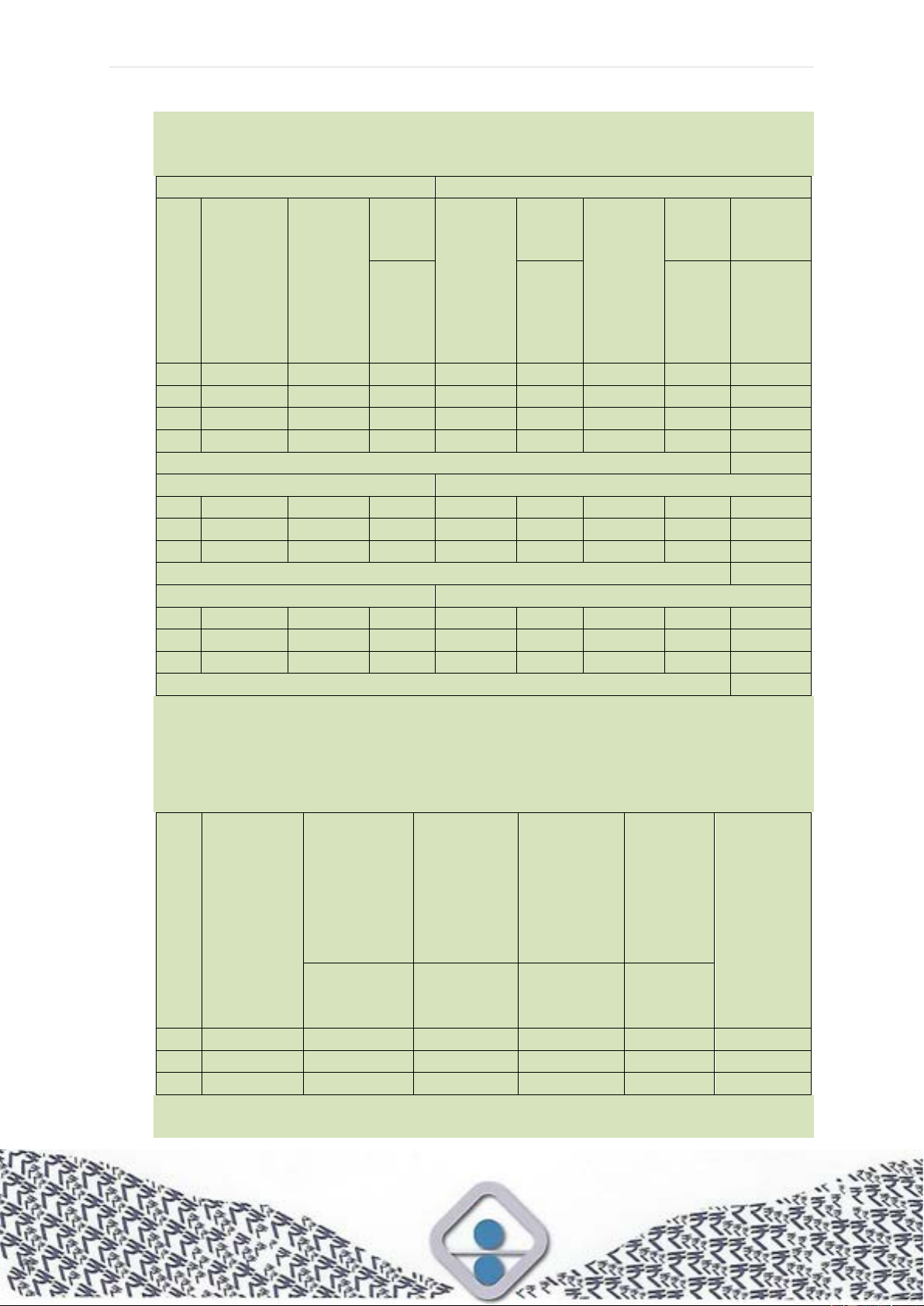
P a g e | 322
C. Evaluation of the Key Professionals
(Averaged from individual worksheets of evaluation committee members)
Name of the Consultancy Firm:
Sl.
No.
Name of
the Key
Professi-
onals
Educa-
tional
Qualifi-
cation
Marks
Awar-
ded
No. of
Projects
of
similar
nature
Marks
Awar-
ded
Experi-
ence
of the
region
(No. of
Projects
in the
region)
Marks
Awar-
ded
Total
Marks
(4+6+8)
Max.
Marks
=
Max.
Marks
=
Max.
Marks
=
Max.
Marks
=
1
2
3
4
5
6
7
8
9
Grand Total for the consultant:
Name of the Consultancy Firm:
Grand Total for the consultant:
Name of the Consultancy Firm:
Grand Total for the consultant:
D. Format for Detailed Technical Evaluation - Summary Sheet
(If so specified in RfP)
(To be compiled from Tables A; B; and C)
Sl.
No.
Name of
the
consultant
Firm’s
Experience
Marks
Awarded
Methodo-
logy
& Work
schedule
Marks
Awarded
Qualifica-
tions
of Key
Professio-
nals
Marks
Awarded
Total
Marks.
Awarded
Ranking
of
Technical
Marks
Max.
Marks =
Max.
Marks =
Max.
Marks =
Max.
Marks
100

P a g e | 323
18.24 Evaluation of Cost
(i) After evaluation of quality has been completed, the Procuring Entity shall notify
those consultants whose proposals did not meet the minimum qualifying
standard or were considered non-responsive to the RfP and/or ToR, indicating
that their financial proposals will be returned unopened after completing the
selection process. In case of QCBS, the Procuring Entity shall simultaneously
notify the consultants that have successfully satisfied the qualifying standard or
where marks have been awarded, the minimum qualifying marks and indicate
the date and time set for opening the financial proposals. In such a case, the
opening date shall not be later than three weeks after the notification date. The
financial proposals shall be opened publicly in the presence of representatives
of the technically qualified consultants who choose to attend. The Evaluation
Committee demonstrably verifies that the financial proposals have remained
sealed and then opens them. The name of the consultant, quality scores and
proposed prices shall be read aloud and recorded when the financial proposals
are opened. No modification to financial proposals is permitted.
(ii) For a time-based contract, any arithmetical errors shall be corrected and prices
shall be adjusted if they fail to reflect all inputs that are included in the respective
technical proposals. For a Lump-sum contract, the consultant is deemed to have
included all prices in its/his financial proposal so neither arithmetical correction
nor any other price adjustment shall be made. For QCBS, the proposal with the
lowest offered total price shall be given a financial score of 100% (One hundred
per cent) and other financial proposals given scores that are inversely
proportional to their prices. This methodology shall be specified in the RfP
document.
(iii) For the purpose of comparing proposals, the costs shall be converted to Indian
Rupees as stated in the RfP.
(iv) For the purpose of evaluation, the total cost shall include all taxes and duties for
which the Procuring Entity makes payments to the consultant and other
reimbursable expenses, such as travel, translation, report printing, or secretarial
expenses as indicated in the RfP document.
(v) When using QCBS, the scores of quality and cost scores shall be weighted
appropriately and added to determine the most advantageous proposal.
18.25 LCS Selection
Under the LCS procedures, the financial proposals will be ranked in terms of their total
evaluated cost. The least cost proposal will be ranked as L-1 and the next higher and
so on will be ranked as L-2, L-3 etc. The least cost proposal (L-1) will be considered
for award of contract. The Evaluation committee will put up a report on financial
evaluation of the technically qualified consultants to the CFA along with the
recommendation that the least cost proposal (L-1) can be approved/invited for
negotiation and for final award of contract.

P a g e | 324
18.26 QCBS Selection
Under QCBS selection, the technical proposals will be allotted weightage of 70%
(Seventy per cent) while the financial proposals will be allotted weightages of 30%
(Thirty per cent) or any other respective weightages as declared in the RfP (Example,
60:40, 50:50, but not greater than 80%). The proposed weightages for quality and cost
shall be specified in the RfP. Proposal with the lowest cost may be given a financial
score of 100 (Hundred) and other proposals given financial scores that are inversely
proportional to their prices w.r.t. the lowest offer. Similarly, proposal with the highest
technical marks (as allotted by the evaluation committee) shall be given a score of 100
(Hundred) and other proposals be given technical score that are proportional to their
marks w.r.t. the highest technical marks. The total score, both technical and financial,
shall be obtained by weighing the quality and cost scores and adding them up. On the
basis of the combined weighted score for quality and cost, the consultant shall be
ranked in terms of the total score obtained. The proposal obtaining the highest total
combined score in evaluation of quality and cost will be ranked as H-1 followed by the
proposals securing lesser marks as H-2, H-3 etc. The proposal securing the highest
combined marks and ranked H-1 will be invited for negotiations, if required and shall
be recommended for award of contract. In the event two or more bids have the same
score in final ranking, the bid with highest technical score will be H-1.
In such a case, an Evaluated Bid Score (B) will be calculated for each responsive Bid
using the following formula, which permits a comprehensive assessment of the Bid
price and the technical merits of each Bid:
B =
C
low
X +
T
(1 - X)
C
T
high
where,
C = Evaluated Bid Price
C
low
= the lowest of all Evaluated Bid Prices among responsive Bids
T = the total Technical Score awarded to the Bid
T
high
= the Technical Score achieved by the Bid that was scored best among all
responsive Bids
X = weightage for the Price as specified in the BDS (Bid Data Sheet)
The Bid with the best evaluated Bid Score (B) among responsive Bids shall be the
Most Advantageous Bid.
As an example, the following procedure can be followed. In a particular case of
selection of consultant, it was decided to have minimum qualifying marks for technical
qualifications as 75 (Seventy five) and the weightage of the technical bids and financial
bids was kept as 70:30 (Seventy:Thirty). In response to the RfP, three proposals, A, B
& C were received. The technical evaluation committee awarded the following marks
as under:
A: 75 Marks
B: 80 Marks
C: 90 Marks

P a g e | 325
The minimum qualifying marks were 75 (Seventy-five) thus, all the three proposals
were found technically suitable. Using the formula T/T
high
, the following technical points
are awarded by the evaluation committee:
A: 75/90 = 83 points
B: 80/90 = 89 points
C: 90/90 = 100 points
The financial proposals of each qualified consultant were opened after notifying the
date and time of bid opening to the successful participants. The price evaluation
committee examined the financial proposals and evaluated the quoted prices as
under:
A: ₹120
B: ₹100
C: ₹110
Using the formula C
low
/C, the committee gave them the following points for financial
proposals:
A: 100/120 = 83 points
B: 100/100 = 100 points
C: 100/110 = 91 points
In the combined evaluation, thereafter, the evaluation committee calculated the
combined technical and financial score as under:
Proposal A: 83 x 0.30 + 83 x 0.70 = 83.0 points
Proposal B: 100 x 0.30 + 89 x 0.70 = 92.3 points
Proposal C: 91 x 0.30 + 100 x 0.70 = 97.3 points
The three proposals in the combined technical and financial evaluation were ranked
as under:
Proposal A: 83.0 points: H-3
Proposal B: 92.3 points: H-2
Proposal C: 97.3 points: H-1
Proposal C at the evaluated cost of ₹110 (Rupees One hundred and ten) was,
therefore, declared as winner and recommended for negotiations/approval, to the
competent authority.
18.27 SSS selection
The Single Source in case of SSS selection shall be called for further negotiation, if
need be, after opening and evaluation of its financial proposals.

P a g e | 326
18.28 FBS selection
Under this method, cost of the consulting services shall be specified as a fixed budget
in the tender document itself.
18.29 Negotiations and Award of Contract
(i) In the Consultancy Services contract, the accepted ToR and methodology etc.
are laid down in form of ‘Description of Service’. Therefore, before the contract
is finally awarded, discussions may be necessary with the selected bidder to
freeze these aspects, especially when, it is discouraged during evaluation of
technical proposals to seek clarifications on these matters. However, such
technical discussions do not amount to negotiations in the sense the word is used
in Procurement of Goods and Works. However, in Procurement of Consultancy,
this discussion is termed as Negotiations, since these discussions may have
some financial ramifications at least for the bidder. Negotiations are not an
essential part of the selection process. In many cases, however, it is felt
necessary to conduct negotiations with the selected consultant for discussions
of the ToR, methodology, staffing, Procuring Entity’s inputs and special
conditions of the contract. These discussions shall not substantially alter (or
dilute) the original ToR or terms of the offer, lest the quality of the final product,
its cost and the initial evaluation be vitiated. The final ToR and the agreed
methodology shall be incorporated in “Description of Services,” which shall form
part of the contract.
(ii) Financial negotiations shall only be carried out if, due to negotiations, there is
any change in the scope of work which has a financial bearing on the final prices
or if the costs/cost elements quoted are not found to be reasonable. In such
negotiations, the selected firm may also be asked to justify and demonstrate that
the prices proposed in the contract are not out of line with the rates being charged
by the consultant for other similar assignments. However, in no case, such
financial negotiation should result in an increase in the financial cost as originally
quoted by the consultant and on which basis the consultant has been called for
the negotiations. If the negotiations with the selected consultant fail, the
Procuring Entity shall cancel the bidding procedure and re-invite the bids.
18.30 Rejection of All Proposals and Re-invitation
The Procuring Entity will have the right to reject all proposals. However, such
rejections should be well considered and normally be in cases where all the bids are
either substantially in deviation to the ToR or considered unreasonably high in cost
and, if in the latter case, the lowest qualified bidder during negotiations fails to reduce
the costs to a reasonable level. If it is decided to re-invite the bids, the ToR should be
critically reviewed/modified so as to address the reasons of not receiving any
acceptable bid in the earlier Invitation for Bids.

P a g e | 327
18.31 Risks associated with RfP, Evaluation and Award of contract
(i) No key expert proposed from the main qualified partner in JV: It is seen that
though the shortlisting and contract is won by a JV on the basis of qualifications
of the main qualified partner firm, but no key experts (nor team leader) are
proposed from that firm. As consultancy assignment is an intellectual product,
the effective contribution of the qualified partner firm can only come from experts
(in particular the team leader) who have worked for sufficient time with the main
qualified consultant. RfP should specify that the team leader proposed should
have worked for a sufficient number of years (say, two to three years) with the
main qualifying firm. If this is not complied with, it could be a ground for the
proposal being termed as non-responsive.
(ii) Request for substitution of key experts at the time of contract negotiation:
After the firm is invited for negotiation, it asks for substitution of key staff in the
contract. This is an unacceptable practice unless the selection process is
unreasonably delayed. Any request for substitution should be examined very
closely and agreed only if permitted by the RfP.
(iii) Presence of one or more unsigned CVs in technical proposal: If a proposal
contains one or more unsigned CVs, it should be scrutinised carefully. It can be
that the CV is used without permission or commitment from the concerned key
expert. If few CVs are not signed by the key expert, the evaluation should be
carried without considering these unsigned CVs and, if this firm is still a winner,
clarification may be sought at the negotiation stage for resolution. In no case,
substitution of such key experts be agreed to at the contract negotiation stage. If
most of the CVs are not signed by the respective proposed key experts, the
proposal should be termed as nonresponsive and rejected at the technical
evaluation stage.
18.32 Special Types of Engagements
18.32.1 Single Source Selection (SSS)
(i) Selection of consultants/service providers through direct negotiations does
not provide the benefits of competition in regard to quality and cost, lacks
transparency in selection and could encourage unacceptable practices.
The reasons for SSS and selection of a particular consultant must be
recorded and approved by one level above CFA as per the DoP, prior to
single tendering. Powers of procurement of SSS must be severely
restricted. Therefore, single-source selection shall be used only in
exceptional circumstance, where it is inescapable over competitive
selections as discussed in sub-paras below.
(ii) When in a Project, continuity for downstream work is essential, the initial
RfP shall outline this prospect and if practical, the factors used for the
selection of the consultant/service provider should take the likelihood of
continuation into account. Continuity in the technical approach, experience

P a g e | 328
acquired and continued professional liability of the same consultant/service
provider may make continuation with the initial consultant/service provider
preferable to a new competition subject to satisfactory performance in the
initial assignment. For such downstream assignments, the Procuring Entity
shall ask the initially selected consultant/service provider to prepare
technical and financial proposals on the basis of ToR furnished by the
Procuring Entity, which shall then be negotiated.
(iii) If the initial assignment was not awarded on a competitive basis or if the
downstream assignment is substantially larger in value, a competitive
process shall normally be followed in which the consultant/service provider
carrying out the initial work is not excluded from consideration if it expresses
interest.
(iv) For selecting a consultant/service provider under this method, the
Procuring Entity should prepare a full justification and take the approval of
one level above CFA.
(v) While selecting the consultant/service provider under this method, the
Procuring Entity shall ensure that the consultant/service provider has the
requisite qualification and experience to undertake the assignment.
Normally the Procuring Entity shall adopt the same short listing criteria as
applied to similar assignments while evaluating the EoI.
18.32.2 Selection of Individual Consultants/Service Providers
(i) Individual consultants/service providers are normally employed on
assignments for which,
a) Teams of personnel is not required;
b) No additional outside professional support is required; and
c) The experience and qualifications of the individual is the paramount
requirement.
(ii) The procedures for selecting individual consultants/service providers are
similar to, but much simpler than, those for selecting teams of consultants/
service providers from a firm. Process of selection of Individual consultants/
service providers entails:
a) Preparing a Consultancy and other services package including the
ToR, time frame, number of person-months, budget, EoI Short-listing
criteria and getting it approved by the CFA;
b) Method of Selection: They shall be selected through comparison of
qualifications of at least three candidates among those who have
expressed interest in the assignment or have been approached
directly by the Procuring Entity. Candidates who are already employed
with the Procuring Entity shall meet all relevant qualifications and shall

P a g e | 329
be fully capable of carrying out the assignment. Capability is judged
on the basis of academic background, experience and, as
appropriate, knowledge of the local conditions, such as local
language, culture, administrative system and Government
organisation. Selection will be carried out by the evaluation committee
which will award marks for educational qualifications and experience
and select the most suitable candidate for the assignment. The
evaluation committee may also interview candidates and award marks
for their performance in the interview and recommend the
remuneration to be paid.
c) Direct Negotiation: Individual consultants/service providers may be
selected on a direct negotiation basis with due justification in
exceptional cases such as: (a) tasks that are a continuation of
previous work that the consultant/service provider has carried out and
for which the consultant/service provider was selected competitively;
(b) emergency situations resulting from natural disasters; and (c)
when the individual is the only consultant/service provider qualified for
the assignment. Individual consultants/service providers may be
(among others) independent consultants/service providers;
consultants/service providers recruited from firms; or
consultants/service providers recruited from academic, Government,
or international agencies.
d) Staff or Associates of Consultancy/service provider Firms: If the
candidate is permanent staff or associates of a Consultancy firm the
conflict of interest provisions described in these guidelines shall apply
to the parent firm.
18.32.3 Selection of Specialized Agencies/Institutions
(i) From time to time, Procuring Entities may need to recruit a specialized
agency or institution to undertake a specific task for which it is particularly
well suited. Such agencies may be Government/Semi-Government
Agencies, Universities or Professional Institutions.
(ii) In some cases, the agency or institution has access to special expertise or
special backup and support facilities that make it worthwhile considering
recruitment on an SSS basis. In such cases, there must be full justification
that the use of SSS is in the best interests of Procuring Entity.
(iii) In cases of Government and Semi-Government Agency, SSS would be an
appropriate method of recruitment.
(iv) Individual consultants/service providers recruited from agencies and
institutions may be selected in the same way as any other independent
consultants/service providers.

P a g e | 330
18.32.4 Selection of Non-Governmental Organizations (NGO)
(i) Non-Governmental organizations (NGOs) may be considered if they
express interest and if the Procuring Entity finds their qualifications
satisfactory. Short lists for assignments typically attributed to NGOs
because they, for example, emphasize experience in community
participation and in-depth local knowledge may comprise NGOs entirely. In
this case, QCBS should be followed and the evaluation criteria of proposals
should reflect the NGO-unique qualifications, such as the following:
a) History of work with grassroots communities and evidence of
satisfactory performance;
b) Familiarity with participatory development approaches and low-cost
technologies;
c) Experienced staff conversant with the cultural and socioeconomic
dimensions of beneficiaries;
d) Committed leadership and adequate management;
e) Capacity to co-opt beneficiary participation.
(ii) Procuring Entity’s may select NGOs using SSS, provided the approvals and
procedures laid down for the same are followed. For example, SSS may be
adopted to hire a local NGO for a very small assignment in a remote area
where only one NGO is available and competition is impractical.
18.32.5 Procurement Agents
Procurement agents (PAs) may be hired by the Procuring Entity to assist in
carrying out procurement, to provide advice, or a combination of both. When PAs
are specifically used as “agents” handling the procurement of specific items and
generally working from their own offices, they are paid a percentage (either fixed
or inversely proportional) of the value of the procurements handled or a
combination of a percentage and a fixed fee. In such cases, they are selected
under QCBS, with cost being given a weight of up to 50 (Fifty) per cent. If the
weight of the cost element adopted were as high as 50 (Fifty) per cent, financial
considerations would dominate the selection, creating the risk of an unacceptably
lower service quality. In such cases, it is essential to ensure that the quality
threshold in the evaluation is set sufficiently high. When PAs provide only
advisory services for procurement or act as “agents” for a whole project in a
specific Unit of Procuring Entity, they are usually paid based on the staff-months
of effort provided and they shall be selected following the appropriate procedures
for other consultancy assignments using QCBS and time-based contracts, as
specified for other consultancy assignments.

P a g e | 331
18.32.6 Inspection Agents
Procuring Entities may hire inspection agents to inspect and certify goods before
shipment or on arrival in the Procuring Entity country. The inspection by such
agents usually covers the quality and quantity of the goods concerned and the
reasonableness of the price. Inspection agents are selected using QCBS, with
cost being allocated a weight of up to 50 (Fifty) per cent. Payment is usually
based on a percentage of the value of goods inspected and certified.
18.32.7 Financial Advisors
(i) Procuring Entities may hire financial institutions to implement two main
types of assignment:
a) In the preparation of studies and financial consultancy; or
b) As advisers on financial restructuring, Mergers & Acquisitions (M&A)
or demerger etc.
(ii) In the first case, the advisers can be selected under any of the methods
described in this chapter (that is, whichever is considered most suitable,
depending on the scope of work of the assignment). In the second case,
QCBS shall be adopted, whereby the RfP specifies technical evaluation
criteria similar to those relevant to standard consultancy assignments. The
financial proposal would include two distinct forms of remuneration:
a) A Lump-sum retainer fee to reimburse the consultant/service
providers for services made available and
b) A success fee, which is either fixed or preferably expressed as a
percentage of the value of the privatization transaction.
(iii) Depending on the type of activity and the circumstances of the Procuring
Entity, the RfP specifies the relative weights assigned in the financial
evaluation to the retainer and to the success fee, respectively. In some
cases, the Procuring Entity offers a fixed retainer fee and the
consultant/service providers must compete only on the success fee as a
percentage of the value of the privatization transaction. For QCBS (notably
for large contracts), cost may be given a weight higher than recommended
for standard assignments (such as 30 (Thirty) per cent), or the selection
may be based on LCS selection. The RfP shall specify clearly how
proposals will be presented and how they will be compared. Success fees
are most appropriate when it is relatively easy to measure results in meeting
the Procuring Entity’s objective (successful sale of assets) and when the
success is at least partly related to the efforts of the consultant/service
providers involved. Therefore, success fees are more likely to be adopted
at the transaction stage, because by that time the Procuring Entity’s
objective is to maximize revenue.

P a g e | 332
18.32.8 Auditors
Auditors typically carry out auditing tasks under well defined ToR and
professional standards. They shall be selected according to LCS system, with
cost as a selection factor.
18.32.9 Public competition for Design of symbols/logos
Certain Procuring Entities are required to conduct competitions for the design of
logos/symbols for their use, which should be conducted in a transparent, fair and
objective manner. Following guidelines shall be followed by all Procuring Entities
as well as their attached/subordinate offices, while conducting public
competitions for design of symbols/logos for their use:
(i) Design competitions should be conducted in a transparent, fair and
objective manner;
(ii) Wide publicity should be given to the competition so as to ensure that the
information is accessible to all possible participants in the competition. This
should include publication on the web site of the Procuring Entity concerned
as well as leading newspapers;
(iii) Provisions of any applicable laws, including the Official Languages Act and
the Emblems and Names (Prevention of Improper Use) Act, should be kept
in view while conducting the competition;
(iv) A detailed Competition Notice should be drawn up and made public. The
notice should, inter alia, details on the following:
a) The objectives of the design competition and the key features
expected in the proposed design;
b) Qualification criteria, if any, for participation in the competition;
c) The process of evaluation and evaluation criteria - whether it would be
single or multi stage (for symbols/logos intended to represent a
drive/project/entity of national importance, it may be decided to have
the selection through public voting. If so, the modalities should be
clearly specified);
d) The manner of submission of entries and the format/details etc.
expected with the design;
e) Whether multiple designs can be submitted by one participant;
f) The last date and time for submission;
g) Details of entry fees, if any and the manner of submission of the same;
h) Expected date for announcement of results and the manner in which
the results will be intimated;
i) The number of prizes to be awarded and the amount payable for the
successful design(s);

P a g e | 333
j) It may be clearly stipulated that the intellectual property rights of the
successful design(s) would rest with the sponsoring agency. The
status of the unsuccessful designs and whether it is intended to return
them should be indicated clearly;
k) If the selection is to be done by a jury of experts nominated for the
purpose, the composition of the jury may also be notified.
Once the completion is over and the winning entry selected, this again should be
notified in the public domain. If the selection has been by a jury of experts
nominated for the purpose, the composition of the jury may be notified.
It is evident that every competition would have distinct features and therefore,
the aforesaid guidelines should be used as a general principle while preparing
the detailed procedure/rules for each such competition.
18.33 Monitoring of the Contract
(i) The Procuring Entity shall put in place effective mechanism to monitor the
progress of the assignment, monitor that key experts are actually employed,
monitor and review the reports including draft final report and the final report,
oversee that the assignment is carried out as per the contract, assess the quality
of the deliverables, accept/reject any part of assignment, levy appropriate
liquidated damages or penalty if the assignment is not carried out as per the
contract and if the quality of services is found inferior and for any such deficiency
related to the completion of the assignment, in order to ensure that the
assignment (whether time-based or Lump-sum) is completed in accordance with
the contract and that the output of the assignment is in line with the Procuring
Entity’s objectives laid down in the contract.
(ii) For complex consultancies, the work is divided into phases, of which one of the
most critical is the inception phase. The inception phase covers the submission
and review of the work plan with the Procuring Entity and the initiation of the
fieldwork.
(iii) The timing, nature and number of reports that the consultant/service provider
should provide are normally contained in the contract. If the assignment is of a
routine nature over a long period (for example, implementation supervision), then
monthly, quarterly and annual progress reports may be required. On the other
hand, if the assignment is to prepare a study or to implement a particular task, a
more specific type of reporting may be required. This could entail, besides the
inception report mentioned above, interim or midterm reports, design reports,
reports at the end of each phase of the work, a draft final report and a final report.
The production or acceptance of various reports is often used as a milestone for
payments.
(iv) Hence, it is very important to review the reports as they are produced (in final
report, draft final report is also reviewed), to provide feedback and to monitor the
implementation progress of the assignment. Shortcomings in the quality of the
work produced or deviations from the implementation schedule should be

P a g e | 334
brought to the immediate attention of the CFA so that they can be addressed at
the earliest opportunity.
(v) Monitoring a Time-Based Contract: As indicated earlier, the performance of a
time-based contract may depend on the progress in other contracts (for example,
the progress of a construction supervision contract depends on the progress of
a construction contract). In such situations, the mobilisation and demobilisation
of resources/key experts and time employed by them should be monitored
carefully as it is possible that the contract period and the total amount under the
contract are spent fully and construction work being supervised is not even half-
complete. These situations could lead to claims and disputes.
(vi) Monitoring a Lump-sum Contract: As Lump-sum contract is based on output
and deliverables, it important that the quality of draft reports is checked carefully
before release of stage payment as subsequent dispute after completion of the
task could lead to disputes. In this form of contract, if there are extra additional
services, there should be timely amendment to the contract to reflect these
increases and to regulate payment. In general, in a Lump-sum contract, the
increase should not be more than 10-15% (Ten to Fifteen) percent.
(vii) Unsatisfactory Performance: Poor performance may involve one or more
particular staff from the consultant/service provider’s team, or the whole team or
non-participation by the main qualifying JV member. Based on the provisions of
the contract, the Procuring Entity will advise the consultant/service provider to
take the necessary measures to address the situation.
(viii) Substitution of Named Key Personnel: One common type of variation involves
a substitution of key personnel identified by name in the contract. Sometimes a
change of personnel is unavoidable because of resignation, illness, accident,
inadequate performance, or personality conflict. The contract must specifically
make provision for terms and conditions under which the staff can be replaced,
about the remuneration to be paid etc. When personnel are to be replaced,
certain factors need to be considered:
a) Any replacement should be as well qualified or better qualified than the
person being replaced;
b) The remuneration should not be more than that was agreed upon for the
person being replaced;
c) The consultant/service provider should bear all costs arising out of or
incidental to the replacement (such as airfares for the substitute expert).
(ix) Cost overruns in time-based contracts: Time and Cost over-run is a major risk
in Time based contracts, as the payment is based on time and delay may result
in unanticipated benefit to the consultant and the assignment may get delayed.
This type of contract should include an upper limit of total payments to be made
to the consultants/service providers for the assignment to safeguard against
excessive prolonging of time and payments. After this limit is reached, or the
period of completion is exceeded, CFA should review justification for extension
of the contract. It is Procuring Entity’s mandate to monitor consultant’s contracts

P a g e | 335
and also to request consultants to keep producing progress reports and
highlighting the status of their contract as it reaches milestones such as 50% and
80% progress. Procuring Entity must carefully authorise mobilisation and
demobilisation of key experts and examine the time sheets and other
reimbursable expenditures.
18.34 Issuing Contract Variations
(i) The formal method of making and documenting a change in the Consultancy and
other services contract is through a contract variation. Contract variations are
issued when there are agreed upon changes in the scope of work, personnel
inputs, costs, timing of the submission of reports, or out-of-pocket expenditures.
There are few Consultancy and other services contracts of any type that do not
require a contract variation at one time or another. Normally, these relate to
changes that have a cost implication, but when there is a significant change in
the timing of an activity or a particular output, these should also be recorded
through a contract variation. Normally, the request for contract variation is
prepared by the consultant/service provider or Consultancy/service provider firm
and submitted to the Procuring Entity. If the variation entails an increase in the
contract amount by more than 10% (Ten per cent), CFA’s prior approval is
required. Post contract variation carried out in the form of an amendment shall
be published by the purchaser on the same portals/websites that were used for
publication of the original tender enquiry.
(ii) To take care of any change in the requirement during the contract period of IT
Projects as well, there could be situations wherein change in the scope of work
becomes necessary. These situations should be dealt with objectivity and
fairness and should not be considered to unduly push the vendor to undertake
work or take risks which was not explicitly communicated in the tender document.
At the same time, the vendor should not consider this as an opportunity to unduly
charge the Procuring Entity due to lack of available options. Generally, the value
of the change request should not be more than plus/minus ±15% (Fifteen) per
cent. The RfP document should contain detailed mechanism through which such
change requests would be carried out.
18.35 Procurement (Outsourcing) of Other (Non-consultancy) Services
Refer paras 18.2, 18.3, 18.4 and 18.5 for definitions of other (non-consultancy)
services and outsourcing of services. Refer para 18.6.2 for justification for
procurement of other (non-consultancy) services.
18.35.1 Types of Contracts in Other (Non-consultancy) Services
Procurement/outsourcing of other (Non-consulting) services, depending upon
the nature of services, can be through either Lump-sum contracts, Time-based
contracts, or unit (item/service) rate based contract (as in case of Goods and
Works - say Taxi Service on Km basis). Or it can be a mix of these. For

P a g e | 336
occasionally but continually needed services, indefinite delivery contracts, based
on time or unit (item/service) rates may be appropriate.
18.35.2 System of Selection in Other (Non-consultancy) Services
(i) Unlike Procurement of Consultancy services, procurement of other services
is done by a simpler process akin to those of procurement of Goods and
Works. It is normally done in a Single Stage (RfP) process containing
technical and financial bids. However, in highly technical and complex
services, where quality is important (say in studies like seismic surveys,
airborne data acquisition etc.) a pre-qualification (PQ) process may be done
on the lines of Procurement of Goods and Works.
(ii) In procurements above ₹10 (Rupees Ten) lakh, it should normally be an
advertised RfP. For procurement below ₹10 (Rupees Ten) lakh, RfP can be
issued to a selected shortlist of likely service providers. The Procuring Entity
should scrutinise the preliminary long list of likely service providers as
identified above and shortlist the prima facie eligible and capable service
providers from the long list. The number of service providers in this
moderated long-list should be more than three. To smoothen this
shortlisting of service providers for projects below ₹10 (Rupees Ten) lakh,
Procuring entities who do frequent procurement of Non-consultancy
services, may consider preparation of a panel of qualified service providers,
after evaluation of their credentials, on the lines of registration of vendors
in Procurement of Goods.
(iii) In procurement of other (non-consultancy) services, normally system of
selection used is lowest price (L-1) basis among the technically responsive
offers, as in procurement of Goods / works. Under very special
circumstances, Single Source Selection (SSS) may also be used.
18.35.2.1 Casual hiring of cars at RBI centres: For specific type of other
(non-consultancy) services like casual hiring of cars for which
empanelled travel agents are already available with different RBI
centres finalized through tenders, such RBI empanelled travel
agents may be appointed by BRBNMPL Units for their own
needs at the same rates and terms & conditions as per the
tender finalized by the RBI centres.
18.35.3 Quality-cum-Cost based Selection (QCBS) for Other (Non-
Consultancy) Services
(i) Procuring Entities are allowed to use QCBS for procurement of Other (Non-
Consultancy) Services where estimated value of procurement (including all
taxes and option clause) does not exceed ₹10 crore. However, the
maximum weight of the non-financial parameters shall not exceed 30%.
(ii) Competent Authority for allowing QCBS shall be the authority two levels
above CFA or the Board of Directors, whichever is lower.

P a g e | 337
(iii) Note: In cases where estimated value was less than ₹10 crore but on
tendering, following QCBS process, it is proposed to place contract for more
than ₹10 crore, the following procedure shall be adopted:
a) In case the difference between estimated value (including taxes etc.
as above) and value of the proposed contract (including taxes etc.) is
less than 10% of the estimated value, there will be no bar on
placement of contract.
b) In all other cases, the procurement process is to be scrapped and
restarted either as ‘Quality oriented Procurement’ (QOP) or on non-
QCBS basis.
c) Competent Authority for declaring a procurement as QOP shall be the
Board of Directors.
(iv) Grounds for declaring a procurement to be Quality Oriented
Procurement (QOP): A procurement should be declared as a QOP only if
there is enough justification in terms of value addition or enhancement of
delivery or paramount importance of quality. Reasons for not adopting two
cover/pre-qualification based/least cost system shall be documented.
(v) In all cases of QOP, a Technical Committee shall be constituted with the
following composition:
a. Two or more persons with expert knowledge and/or long experience
relevant to the procurement in question;
b. One or more persons with extensive experience in handling projects
and/or finance in Government or PSUs;
c. One or more persons with experience in financial management/
financial administration/audit/accountancy;
d. Not more than one member representing the User Dept.
e. For a), b) and c) above, external experts may also be engaged.
f. The names of members of the Technical Committee shall be decided
by the Board of Directors or by any other authority to whom such
power is delegated by the Board of Directors. However, such powers
shall not be delegated to the authority competent to finalize the
particular procurement.
(vi) The Technical Committee shall make specific recommendations on the
following matters:
d) The weight to be given to non-financial parameters (not exceeding
30%)
e) The specific quality/technical parameters, their weights, their scoring
methodology, the minimum qualification score etc. and other relevant

P a g e | 338
criteria necessary for ensuring fair and transparent quality/technical
evaluation of the bids.
f) The recommendations of the Technical Committee shall be followed
except where there are special grounds for deviating from them.
However, every case of deviation shall require approval of the Board
of Directors.
(vii) Fixing/Selection of the Evaluation/Qualification criteria:
a. To ensure quality, some of the criteria used in marking may be made
mandatory and if a bidder does not meet those, the bids shall not be
evaluated further.
b. Weightage may also be given for timely completion of past projects of
similar nature by the bidder.
(viii) Fixing of Scoring / Marking criteria:
a) Clear and specific parameters should be specified to avoid reliance
on subjective opinion of the evaluating panel while scoring.
b) Minimum marks must be specified for meeting the qualifying criteria.
c) Fixed quality parameters such as bidder’s ISO standards accreditation
etc. should not be considered for relative scoring. Such parameters
are required to establish the credentials of the service provider but
cannot be used for relative comparison between various bidders.
d) Bidders may be asked to provide contract details, completion,
sustainability of service etc. along with certificates evidencing their
past performance.
e) Bidders may be asked to submit a detailed presentation on their
proposals in soft copy form for better understanding of their proposal
and to ensure their commitment.
f) Besides Bill of Quantity (BOQ) output criteria for payment, Key
Performance Indicators (KPIs) may be specified with minimum
achievement levels for payment to ensure quality compliance.
g) Evaluation of QCBS bids: For evaluation, a suitable committee shall
be constituted. However, members of the Technical Committee shall
not be involved.
(ix) Joint Ventures in QCBS:
a) Joint Ventures (JV) may be avoided in QCBS procurements as far as
possible. Joint Ventures could, however, become necessary in high
technology or innovative projects where a single entity may not be
able to execute the work alone.

P a g e | 339
b) If JVs are allowed, adequate safeguards should be provided to guard
against “name borrowing” by the bidders which results in lack of
quality and accountability. Since weightage of quality/experience
influences the award itself, it should be ensured that all JV partners
are present and deliver services all through the contract period.
18.35.4 Procurement through One Stop Government e-Marketplace (GeM)
Government e-Marketplace (GeM), hosted by DGS&D or any other authorised
Government agency, is an online market place for common use goods and
services. It is now mandatory for public Procuring Entities to procure Goods and
Services from GeM, if those Goods or Services available on GeM. However,
exceptions can be approved by the Unit Head with recorded justification for such
deviation. The GeM portal shall be utilized by the public Procuring Entities for
direct on-line purchases as under:-
(i) Up to ₹25,000/- (Rupees Twenty-five thousand) through any of the
available suppliers on the GeM, meeting the requisite quality, specification
and delivery period;
(ii) Above ₹25,000/- (Rupees Twenty-five thousand) and up to ₹5,00,000/-
(Rupees Five lakh) through the GeM Seller having lowest price amongst
the available sellers (excluding Automobiles where there is no ceiling limit),
of at least three different manufacturers, on GeM, meeting the requisite
quality, specification and delivery period. The tools for online bidding and
online reverse auction available on GeM can be utilised even for
procurements less than ₹5,00,000/- (Rupees Five lakh);
(iii) Above ₹5,00,000/- (Rupees Five lakh) through the supplier having lowest
price meeting the requisite quality, specification and delivery period after
mandatorily obtaining bids, using online bidding or reverse auction tool
provided on GeM (excluding Automobiles where there is no ceiling limit);
(iv) The above mentioned monetary ceiling is applicable only for purchases
made through GeM;
(v) The public Procuring Entities may ascertain the reasonableness of prices
before placement of order using the Business Analytics (BA) tools available
on GeM including the Last Purchase Price on GeM, public Procuring
Entities’ own Last Purchase Price etc.;
(vi) A demand for goods shall not be divided into small quantities to make
piecemeal purchases to avoid procurement through L-1 Buying/bidding/
reverse auction on GeM or the necessity of obtaining the sanction of higher
authorities required with reference to the estimated value of the total
demand;
(vii) It may be noted that unlike Rate Contracts, the responsibility of
reasonableness of rate for procurements from GeM portal does not lie with

P a g e | 340
DGS&D. It is the responsibility of the Procuring Entity to do due diligence
for ensuring reasonableness of rates.
18.35.5 Procurement Proposal (Concept Paper) for Other (Non-
consultancy) Services
The steps for initiating procurement (outsourcing) of other (Non-consultancy)
services, is similar to that described in para 18.14 in this chapter. (Please refer
to Annexure 37, for a suggested format)
18.35.6 Activity Schedule and Other Requirements
Activity Schedule in case of other (non-consultancy) services is similar to ToR in
case of consultancy services. A template for Activity and other Schedules is given
at Annexure 39. The objectives of the Activity Schedule are:
(i) To provide sufficient information on the quantities of services to be
performed to enable bids to be prepared efficiently and accurately; and
(ii) When a contract has been entered into, to provide a priced Activity
Schedule for use in the periodic valuation of services executed.
Besides detailing the activities, quantum and time frame, Activity Schedule
should contain the following sections also:
a) Description of Services: A brief description of service required is
important information that would help the bidders understand the service
requirement. It should cover background about the Procuring Entity’s
organisation and about the project/service. The Purpose and Service
Outcome statement should be included in the description of services (as
finalised for initiating the procurement) to help the service providers
understand the requirement;
b) Itemized Activity Schedule: In order to attain objectives of the Activity
Schedule, services should be itemized in the Activity Schedule in sufficient
detail to distinguish between the different classes of services, or between
services of the same nature carried out in different locations or in other
circumstances which may give rise to different considerations of cost.
Consistent with these requirements, the layout and content of the Activity
Schedule should be as simple and brief as possible. All information relevant
for the bidder to quote a price may be included e.g. the frequency and
quantum and time-frame/duration of completion of activities to be
performed. In activity schedule containing scores of items, evaluation can
be simplified if the system used in Works contracts is borrowed, if feasible,
where Schedule of rates (SoR) for each activity is specified in the bid
documents by the Procuring Entity and only percentage +/- above the SoR
(separately for different schedules or combined) is asked to be quoted by
the bidders;

P a g e | 341
c) Labour/Personnel Activity Schedule: If labour/personnel are used in the
activity, these may be quantified specifying place, shifts and frequency of
utilization in the Activity Schedule. In case any key professionals or Project
Manager is required, their qualification and experience required may also
be mentioned. Any relievers and leave reserve for deploying the personnel
should be included in the rate for such personnel and would not be
separately payable;
d) Material Schedule: In case any materials/consumables/tools of trade are
to be consumed/deployed, a separate materials schedule should be
included, indicating the specification and quantity of such materials/
consumables/tools to be consumed/deployed per unit activity/day/location/
per manpower deployed. Price of all these materials/tools etc. is to be
shown as a separate Lump-sum cost in the financial bid by the bidder;
e) Essential Equipment Schedule: Any essential equipment, machinery
(Trucks, Cranes, Washing Machines, Vessels/crafts, plant and machinery
etc.) that the service provider must have and should deploy as a qualifying
requirement must be mentioned along with specification, capacity, age of
equipment etc. It should be ensured that operators for such equipment must
be mentioned as key personnel;
f) Performance Specifications, Drawings: The performance specification
or drawings if necessary should be specified for each activity, materials,
tools and machines to be used in the activity. Any reporting requirement,
periodic meetings or other submissions must be part of the Activity
Schedule;
g) Statutory and contractual obligations to be complied with by the
contractor: Service provider mostly works within the premises of Procuring
Entity, along with staff of Procuring Entity. Many services are subject to
various statutory provisions relating to Labour, Taxation, Workmen Safety,
Child and Women Labour, Private Security Agencies, Environmental
Protection, Mining, Forest clearance, Employment reservations etc. The
bidder must have Service Tax Number, ESI, EPF Registration Certificate,
Registration Declaration of ownership under Indian Registration Act 1908
and Labour License and PAN (Income Tax). Moreover, the Procuring Entity
himself may have its own regulation about safety, security, confidentiality
etc. All such statutory and contractual obligations must be listed, so that
price implications and compliance is taken care of by the bidder. In case of
security services contracts, the bidder must have the valid license to run
the business of Private Security Agency in the state issued by the
appropriate authority for operating Security Services;
h) Facilities and Utilities to be provided by the Procuring Entity to service
provider at Site: It should be mentioned, if any facility/utility (Operation
Manuals, Emergency Medical, Room, Furniture, Electricity connection,
Water connection) etc. would be made available to the successful bidder to

P a g e | 342
carry out the service. In case it is proposed to charge the Electricity/Water
supplied to the service provider, the same may be mentioned, including the
rate of charges. This aspect has a great bearing on the cost that will be
quoted by the bidders. This can have implications in vitiating the selection
process either way – a facility to be provided may not get declared or a
declared facility may not be provided ultimately. So great care and reality
check is necessary, while preparing this statement. Specially mention
facilities and utilities which will not be provided, or the facilities which would
be provided on chargeable basis. It should be clearly mentioned that the
service provider will not be allowed to use any of Procuring Entity’s
facility/area which are not listed in this section;
i) Institutional Arrangements and Procedure for Review of Work of
consultant after the Award of Contract: Institutional arrangements like
the placement in a Department, name of Project Manager and chain of
command for reporting may be specified. Process of review of service
outcomes and deployment of personnel and resources should be clearly
brought out.
18.35.7 Estimating Costs
The cost estimate shall be based on the Procuring Entity’s assessment of the
resources needed to carry out the assignment, managerial and staff time and
physical inputs (for example, materials, consumables, tools and machines).
Costs shall be divided into three broad categories:
(i) Remunerations for Personnel deployed;
(ii) Reimbursable (Travel, logistics, Consumable, Material, Tools, Hiring of
third party services etc.);
(iii) Administrative and Miscellaneous (Mobilisation, Demobilisation,
Temporary Structures, Administrative expenses, Office and IT Equipment,
Contingencies, Financing costs, Costs for hiring/depreciation/financing of
machinery and equipment etc.)
In general, staff remuneration rates include basic salary, social charges,
overheads, fees or profit and allowances. Profit element, taxes and duties should
be added to the estimated costs.
18.35.8 Procedure for Single Source Selection (SSS)
Should it become necessary, in an exceptional situation to outsource a job to a
specifically chosen contractor, the CA’s approval may be taken. In such cases
the detailed justification, the circumstances leading to the outsourcing by choice
and the special interest or purpose it shall serve shall form an integral part of the
proposal.

P a g e | 343
18.35.9 Procedure for Small Value and Emergency Procurements of Other
(Non-consultancy) Services
For procurement up to ₹25,000 (Twenty-five thousands), the ‘Direct Procurement
without Quotation’ mode of procurement used in Procurement of Goods may very
well be utilised in such cases. Similarly for procurement of services up to ₹2.5
(Rupees Two and a half) lakh, ‘Direct Procurement by a Purchase Committee’
or through ‘Limited Enquiry by inviting sealed quotations’ mode as used in
Procurement of Goods may be utilised. In all such modes of procurement, the
procedure prescribed in the Manual for Procurement of Goods may be followed.
18.35.10 Procedure for Procurements below ₹10 (Rupees Ten) lakh
For procurements below ₹10 (Rupees Ten) lakh, the Procuring Entity should
prepare a list of likely and potential service providers on the basis of formal or
informal enquiries from Organisations involved in similar activities, scrutiny of
‘Yellow pages’ and trade journals, if available, websites etc. The Procuring Entity
should scrutinise the preliminary list of likely contractors as identified above,
shortlist the prima facie eligible and capable contractors and issue RfP to these
shortlisted firms on a limited tender enquiry basis as per standard practice. The
number of the contractors so identified for issuing RfP should be more than three.
Services which are available on GeM have to be mandatorily procured through
that portal.
18.35.11 Procedure for Higher Value of Procurements
For Procurements above ₹10 (Rupees Ten) lakh, the Procuring Entity should
issue advertised single stage tender enquiry asking for the offers by a specified
date and time etc. The advertisements for invitation of tenders should give the
complete web address from where the bidding documents can be downloaded.
Attention of known reputed service providers (as ascertained as per para above)
may also be separately drawn wherever possible. Services which are available
on GeM have to be mandatorily procured through that portal
18.35.12 Preparation of the Request for Proposals (RfP)
In procurement of other (Non-consultancy) services, a standard RfP document
should be basis for preparation of bid documents. Among other things, the RfP
should contain:
(i) Data sheet (which contains assignment specific information);
(ii) Qualification/Eligibility Criteria for service providers;
(iii) Activity Schedules and other Requirements:
a) Description of Service;
b) Activity Schedule;
c) Manpower Schedule: Assessment of Manpower for Deployment;

P a g e | 344
d) Materials Schedule (indicating the specification and quantity of such
materials/consumables/tools to be consumed/deployed per unit
activity/day/location/per manpower deployed);
e) Essential Equipment: Any essential equipment, machinery that the
service provider must have as a qualifying requirement along with
specification, capacity, age of equipment etc.;
f) The statutory and contractual obligations to be complied with by the
contractor;
g) Services & Facilities to be provided by the Procuring Entity and
respective obligations of the Procuring Entity and service provider.
(iv) Standard formats:
a) Qualification Information;
b) Standard formats for the technical proposal;
Among other things, Standard formats for the technical proposal shall consist of,
1. Qualification Information with enclosures;
2. Write up on Bidder’s Organisation, confirmation of compliance
with (or deviations from) Description of Services, Activity
Schedule, Essential Equipment Schedule, Manpower/Team,
Statutory Obligation and Facilities to be provided by the
Procuring Entity, Statutory and Contractual requirements,
Respective obligations of Procuring Entity and service provider,
Contract For, GCC and SCC; etc.
c) Standard Format for the Financial Proposal;
1. Financial Bid Format;
2. Summary Price Schedule;
3. Priced Activity Schedule;
4. Priced Material Schedule;
5. Priced Miscellaneous Schedule (including administrative costs,
Essential Equipment, Operating Manpower);
6. Breakdown of Contract Prices.
Bidding documents should include a clause that “if a firm quotes NIL
charges/consideration, the bid shall be treated as unresponsive and will not be
considered”.
18.35.13 Eligibility Criteria
Eligibility for firms to be considered as responsive bid in procurement of other
(Non-consultancy) services should be specified. For example:

P a g e | 345
(i) The bidder must be registered under appropriate authorities i.e. must be
registered with Service tax authorities/Income tax/EPF/ESI authorities/
PSARA/PAN etc.;
(ii) Joint Ventures (JV) are normally not permitted in the procurement of other
(Non-consulting) services;
(iii) Must not have been under any declaration of ineligibility by any authority. A
declaration to the effect should be furnished;
(iv) A consistent history of litigation or arbitration awards against the applicant
may result in disqualification;
(v) Each bidder shall submit only one bid for one RfP. In case of packaging/
slicing of services, it should be clarified, how multiple bids and discounts by
a bidder in different slices would be considered.
18.35.14 Qualifying criteria
Qualifying criteria to be met by bidders to qualify for award of the contract may
be specified. Although the qualification criteria would depend on the type of
service, its complexity and volume, but a sample qualifying criteria is given below:
A. Financial Capability:
(i) Average Annual financial turnover of related services during the last three
years, ending 31
st
March of the previous financial year, should be at least
30% (Thirty percent) of the estimated cost
(ii) Liquid assets and/or credit facilities, net of other contractual commitments
and exclusive of any advance payments which may be made under the
contract, of no less than the amount specified in the BDS.
B. Past Experience:
(i) The bidder must have at least three years’ experience (ending month of
March prior to the bid opening) of providing similar type of services to
Central / State Government / PSUs / Nationalised Banks / Reputed
Organisations. Services rendered with list of such Central/State/PSUs/
Nationalized Banks/Reputed Organisations with duration of service shall be
furnished.
(ii) The bidder must have successfully executed/completed similar services
(definition of “similar services” should be clearly defined), over the last three
years i.e. the current financial year and the last three financial years: -
a) Three similar completed services costing not less than the amount
equal to 40% (Forty per cent) of the estimated cost; or
b) Two similar completed services costing not less than the amount
equal to 50% (Fifty per cent) of the estimated cost; or
c) One similar completed service costing not less than the amount equal
to 80% (Eighty per cent) of the estimated cost.

P a g e | 346
C. Equipment and Managerial Capability:
(i) Ownership/proposals for the timely acquisition (own, lease, hire, etc.) of the
essential equipment listed in the BDS (Bid Data Sheet);
(ii) A Contract Manager with five years’ experience in services of an equivalent
nature and volume, including no less than three years as Manager.
18.35.15 Qualification Documents to be submitted
To judge their qualification, all bidders should be asked to include the following
information and documents with their bids:
(i) Copies of original registration certificate documents defining the
constitution or legal status, place of registration and principal place of
business; written power of attorney of the signatory of the bid to commit the
bidder.
(ii) Appropriate business licences/registrations - Service Tax registration
certificate; PAN number; Copies of EPF, ESI, Labour license; Copy of valid
license under the Private Security Agencies (Regulation) Act, 2005 or the
similar Act/Rules promulgated by State in which the service is performed
(in case of Security Service).
(iii) Total monetary value of services performed for each of the last five years;
(iv) Copies of work orders and experience in services of a similar nature and
size for each of the last three years and details of services under way or
contractually committed; and names and address of clients who may be
contacted for further information on those contracts;
(v) Evidence of adequacy of working capital for this contract (access to line(s)
of credit and availability of other financial resources);
(vi) Audited financial statements for the last three years (copies of the Profit and
Loss (P/L) statements along with Balance Sheet for the concerned period);
(vii) Bank Account details;
(viii) Authority to seek references from the bidder’s bankers;
(ix) Information regarding any litigation, current or during the last five years, in
which the Bidder is involved, the parties concerned and disputed amount;
(x) Proposals for subcontracting components of the services amounting to
more than 10% (Ten) percent of the contract price.
18.35.16 Restrictions regarding Personnel Deployed
(i) The quoted rates shall not be less than the minimum wage fixed/notified by
the State Government where the service is performed and shall include all
statutory obligations. However, bids without any element of cost over and
above such minimum wage (or below it) shall be treated as ‘Nil’ price
quotation and would be rejected.

P a g e | 347
(ii) The service provider shall be liable for all kinds of dues payable in respect
of all personnel provided under the contract and the Procuring Entity shall
not be liable for any dues for availing the services of the personnel.
(iii) The service provider should ensure that persons to be deployed are not
alcoholic, drug addict and not indulge in any activity prejudicial to the
interest of the Procuring Entity.
(iv) The service provider shall ensure to get the Police verification for all the
manpower deployed by them and the contractor should ensure that the
manpower deputed should bear good moral character.
18.35.17 Workmen Safety and Insurance
(i) The service provider shall alone be fully responsible for safety and security
and insurance or life insurance of their personnel who is working on the
operation and maintenance works.
(ii) The service providers (a) shall take out and maintain and shall cause any
Subcontractors to take out and maintain, at their (or the Subcontractors’, as
the case may be) own cost but on terms and conditions approved by the
Procuring Entity, insurance against the risks and for the coverage, as shall
be specified in the SCC; and (b) at the Procuring Entity’s request, shall
provide evidence to the Procuring Entity showing that such insurance has
been taken out and maintained and that the current premiums have been
paid.
(iii) The service provider shall provide and ensure sufficient protection gears
like safety shoes, hand gloves, ladders, etc. are being used by their workers
while carrying out works.
(iv) The Procuring Entity shall not be liable for any compensation in case of any
fatal injury/death caused to or by any man power while performing/
discharging their duties/for inspection or otherwise.
18.35.18 Evaluation of Bids
(i) The Procuring Entity should evaluate, segregate, rank the responsive bids
and select the successful bidder for placement of the contract, in a manner
similar to Procurement of Goods/Works.
(ii) If, the contract is being let on a “slice and package” basis, the lowest
evaluated bid price will be determined when evaluating the contract in
conjunction with other contracts to be awarded concurrently, taking into
account any discounts offered by the bidders for the award of more than
one contract.
(iii) The Procuring Entity reserves the right to accept or reject any bid and to
cancel the bidding process and reject all bids, at any time prior to the award
of contract, without thereby incurring any liability to the affected bidder or
bidders or any obligation to inform the affected bidder or bidders for the
Procuring Entity’s action.

P a g e | 348
18.35.19 Service Level Agreement (SLA)
A Service Level Agreement (SLA) is an agreement designed to create a common
understanding about services, priorities and responsibilities, improve
communications, manage expectations, clarify responsibilities and build the
foundation for a win-win relationship. It must be specified in the bidding document
and finalised before the services are started. The objectives of SLA are:
(i) Identify and define the Procuring Entity’s needs;
(ii) Eliminate unrealistic expectations on either side;
(iii) Provide a framework for understanding between the service provider and
the Procuring Entity;
(iv) Reduce areas of conflict and encourage dialog in the event of disputes.
While drafting the SLAs, care should be taken that they are balanced to both the
contracting parties and penalties are proposed on both the sides.
SLA has two sets of elements:
a) Service elements
1) the services to be provided (and perhaps certain services not to be
provided, if Procuring Entity might erroneously assume the availability
of such services);
2) conditions of service availability;
3) service standards, such as the timeframes within which services will
be provided;
4) the responsibilities of both parties;
5) escalation procedures in case of performance deficiencies.
b) Management elements
1) how service effectiveness will be tracked;
2) how information about service effectiveness will be reported and
addressed;
3) how service-related disagreements will be resolved;
4) how the parties will review and revise the SLA - conditions warranting
change; change frequency and change procedures.

P a g e | 349
PART B: ANNEXURES
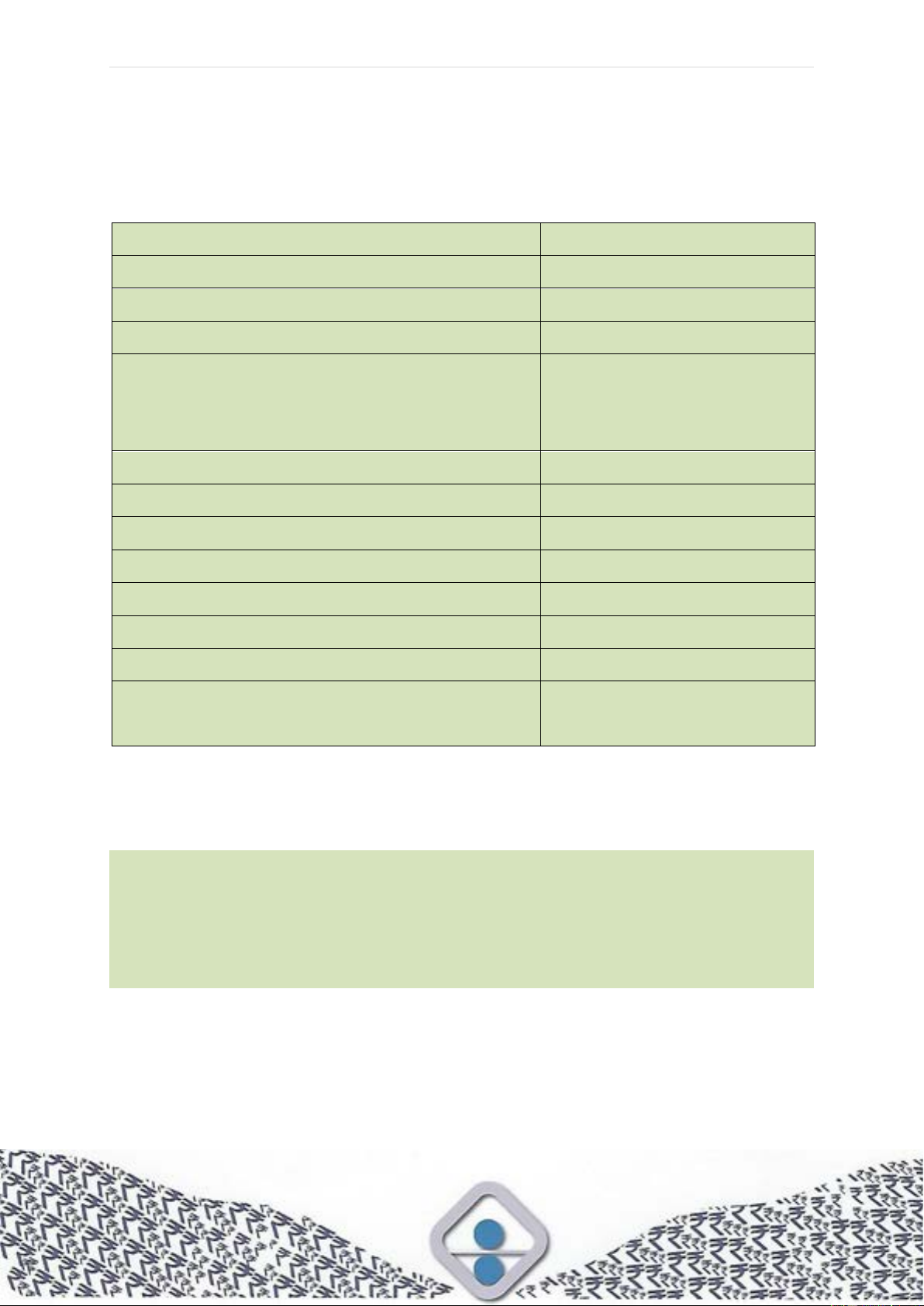
P a g e | 350
Annexure 1: Time Frame for Procurement
(Refer Para 3.5)
Procurement Process
Receipt of Clear Indent
T i.e. Day 1
Preparation of Tender Enquiry
T+2 weeks
CFA approval
T+4 weeks
Publishing of tender advertisement
T+5 weeks
Reception of Bids and Opening of Bids
B=T+09 weeks LTE (4 weeks)
B=T+10 weeks OTE (5 weeks)
B=T+11 weeks GTE (6 weeks)
TEC Evaluation - Techno Commercial (in two bid)
B+6 weeks
Approval for Price Bid opening by CFA
B+8 weeks
Price bid Opening and evaluation by TEC
B+9 weeks
Preparation of Purchase Proposal
B+10 weeks
TEC/CFA Approval
B+12 weeks
Preparation and Dispatch of SO or LOI
B+13 weeks
TEC/CFA Approval in case CFA is MD / Board
B+14 weeks
Preparation and Dispatch of SO or LOI in case
CFA is MD / Board
B+16 weeks
Note:
(i) For Procurement of One-off capital goods and machinery as well as development
tender, time lines shall be decided on case-to-case basis.
(ii) Publishing of tender advertisement: The above time frame does not take into
account delays in publishing of tender advertisement due to the time needed for
accumulation of enough tenders to club together for cost reduction.
(iii) Reception of Bids and Opening of Bids: The above time frame also does not
take into account extension of scheduled tender opening date due to any reason,
which needs to be factored in.

P a g e | 351
Annexure 2: Purchase without Quotation Format
(Refer Para 4.11)
Place: __________________ Date:
__________________
"I, ______________, am personally satisfied that the goods (described below)
purchased are of the requisite quality and specification and have been purchased from
a reliable supplier at a reasonable price."
Item :
Quantity :
Indentor :
Unit Rate :
Taxes/Duties :
Other Charges :
Total Unit Price :
Total Price :
Purchased from : M/s
Vide Bill No. :
It has taken ______________ days for procurement
Justification:
Cheque may be drawn in favour of:
Name :
Designation :
Signature :
P a g e | 352
Annexure 3: Purchase Certificate Format
(Refer Paras 4.12 & 4.13)
Place: ____________ Date: ____________
"Certified that we the undersigned, members of the purchase committee are jointly
and individually satisfied that the goods recommended for purchase are of the
requisite specification and quality, priced at the prevailing market rate and the supplier
recommended is reliable and competent to supply the goods in question."
The details of recommended purchase are:
Item :
Quantity :
Indentor :
Details of quotations :
Bidder
Unit
Rate
Taxes/
duties
Other
charges
Total
Unit price
Total
Price
Recommendations
& Comments
Recommended quotation :
Unit Price (with taxes and duties) :
Total Value of purchase :
Cheque may be drawn in favour of:
Name 1
:
Name 2
:
Name 3
:
Designation
:
Designation
:
Designation
:
Signature
:
Signature
:
Signature
:
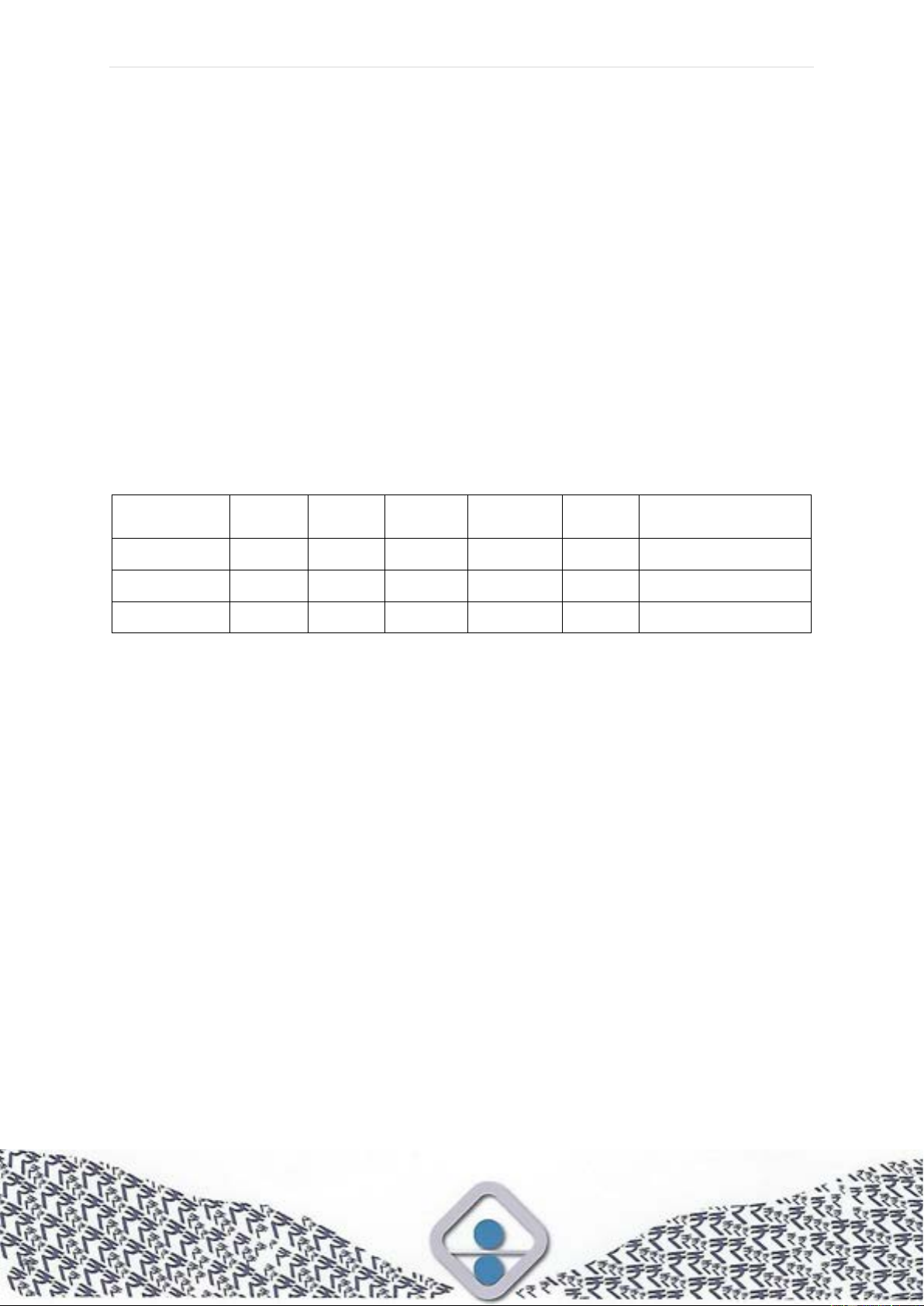
P a g e | 352
Annexure 3: Purchase Certificate Format
(Refer Paras 4.12 & 4.13)
Place: ____________ Date: ____________
"Certified that we the undersigned, members of the purchase committee are jointly
and individually satisfied that the goods recommended for purchase are of the
requisite specification and quality, priced at the prevailing market rate and the supplier
recommended is reliable and competent to supply the goods in question."
The details of recommended purchase are:
Item :
Quantity :
Indentor :
Details of quotations :
Bidder
Unit
Rate
Taxes/
duties
Other
charges
Total
Unit price
Total
Price
Recommendations
& Comments
Recommended quotation :
Unit Price (with taxes and duties) :
Total Value of purchase :
Cheque may be drawn in favour of:
Name 1
:
Name 2
:
Name 3
:
Designation
:
Designation
:
Designation
:
Signature
:
Signature
:
Signature
:

P a g e | 353
Annexure 4: Bid Security Declaration
(on Company Letter-head)
Bid Securing Declaration In lieu of EMD/Bid security is to be submitted as part of
Technical bid in the following format. Bidders exempted from submission of EMD/Bid
Security are also required to submit this.
Bidder’s Reference No._______________ Date_________
To
[Complete address of BRBNMPL]
Ref: Tender Enquiry No. ____________; Date: __________
Sir/Madam,
We, the undersigned, solemnly declare that:
We understand that according to the conditions of this Tender Document, the bid must
be supported by a Bid Securing Declaration in lieu of Bid Security.
We unconditionally accept the conditions of this Bid Securing Declaration. We
understand that we shall stand automatically suspended from being eligible for bidding
in any tender in BRBNMPL for 1 year from the date of opening of this bid if we breach
our obligation(s) under the tender conditions if we:
1) withdraw/amend/impair/derogate, in any respect, from our bid, within the bid
validity; or
2) being notified within the bid validity of the acceptance of our bid by the Procuring
Entity:
a) refused to or failed to produce the original documents for scrutiny or the
required Performance Security within the stipulated time under the
conditions of the Tender Document.
b) Fail or refuse to sign the contract.
We know that this Bid-Securing Declaration shall expire if the contract is not awarded
to us, upon:
1) receipt by us of your notification
a) of cancellation of the entire tender process or rejection of all bids or
b) of the name of the successful bidder or
2) forty-five days after the expiration of the bid validity or any extension to it.
(Signature with date)
………………………..
(Name and designation)
Duly authorized to sign bid for and on behalf of……………………….
[name & address of Bidder and seal of company]
Dated on …………. day of ………….. [insert date of signing]
Place…………………………………… [ insert place of signing]

P a g e | 354
Annexure 5: Terms and Conditions - Compliance
(To be submitted as part of Technical bid in e-Procurements)
(on Company Letter-head)
Bidder’s Reference No._______________ Date_________
To
[Complete address of BRBNMPL]
Ref: Tender Enquiry No. ____________; Date: __________
Sir/Madam,
We have gone through entire tender document thoroughly including Section-I (NIT),
Section-II (GIT), Section-III (SIT), Section-IV (GCC), Section-V (SCC) and Annexures
– 1 & 2. We confirm that we shall comply with, abide by, and accept without variation,
deviation, or reservation, all terms and conditions of the Tender Document and we
have no counter-conditions.
(Signature with date)
………………………..
(Name and designation)
Duly authorized to sign bid for and on behalf of……………………….
[name & address of Bidder and seal of company]
Dated on …………. day of ………….. [insert date of signing]
Place…………………………………… [ insert place of signing]

P a g e | 355
Annexure 6: Delivery Schedule
(Refer Para 11.18)
Contract No. ________ Name of the Supplier ______________
Sl. No.
Particulars
Date of
Delivery
Place of
Delivery
Remarks
Description
Quantity
Rate
(Name & Signature)
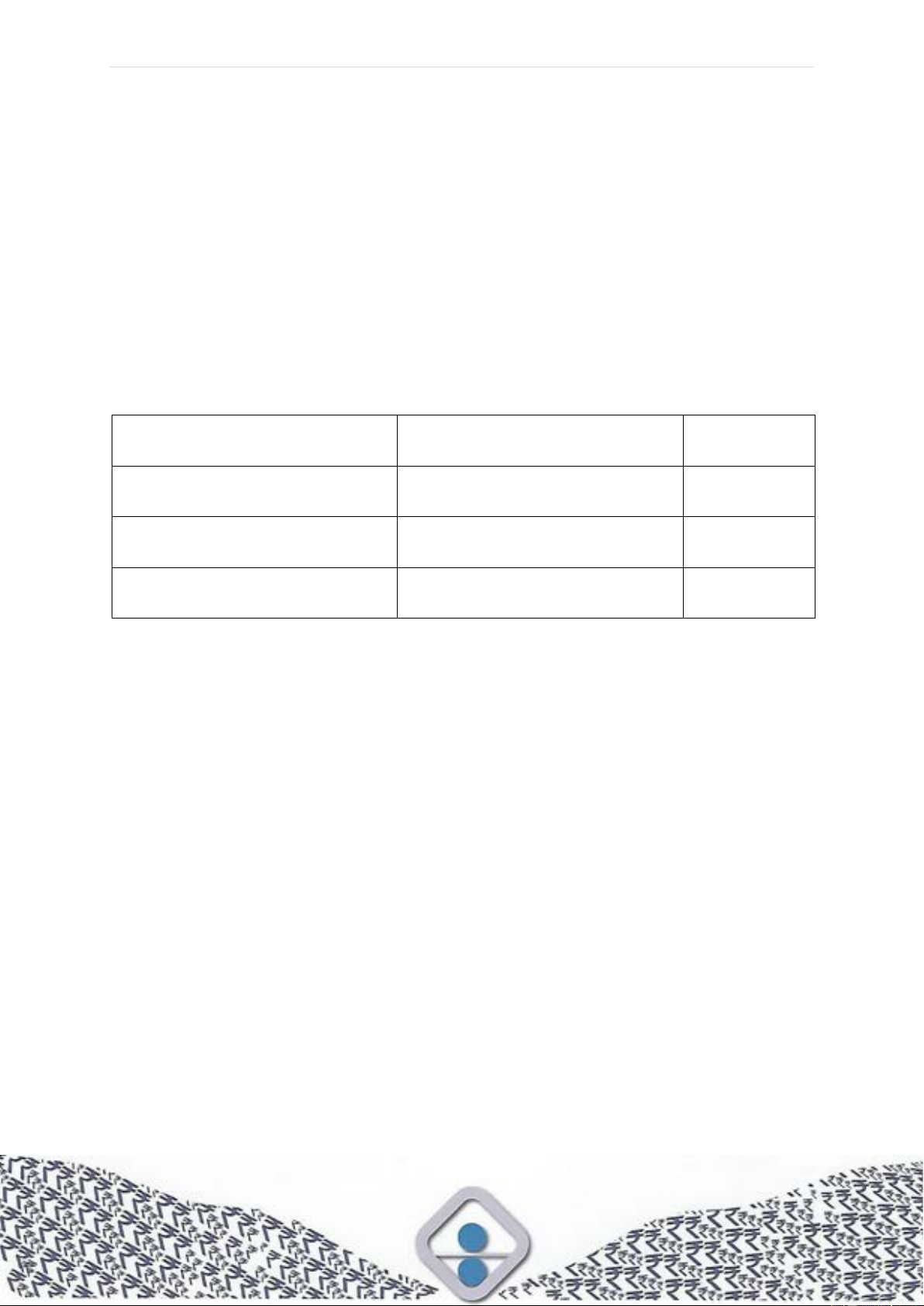
P a g e | 356
Annexure 7: Letter of Authority for attending a Bid Opening
(Refer Para 8.9.2)
The General Manager
__________________
__________________
Subject: Authorization for attending bid opening on _______________ (date) in the
tender of _______________ against tender enquiry _______________.
We hereby authorize following persons to attend the bid opening for the tender
mentioned above on behalf of ____________________________ (Bidder) in order of
preference given below.
Order of Preference
Name
Specimen
Signatures
I.
II.
Alternate Representative
Note:
1. Maximum of two representatives will be permitted to attend bid opening. In cases
where it is restricted to one, first preference will be allowed. Alternate
representative will be permitted when regular representatives are not able to
attend.
2. Permission for entry to the hall where bids are opened may be refused in case
authorization as prescribed above is not received.
Signature of bidder
or
Officer authorized to
sign the bid documents
on behalf of the bidder
with date and seal
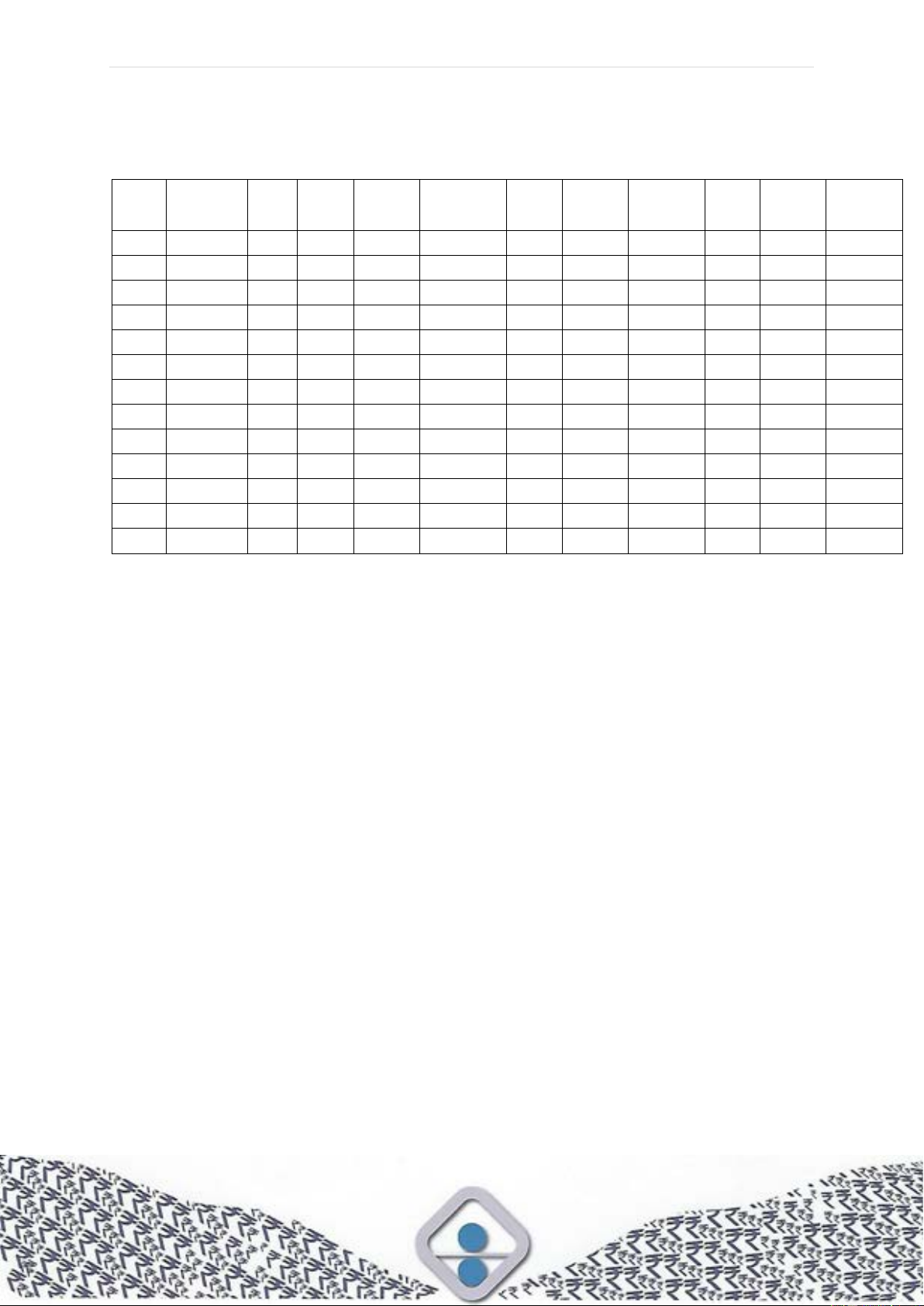
P a g e | 357
Annexure 8: Bid Opening Attendance Sheet
(Refer Para 8.9.2)
Tender
No
Description
Date &
Time
Bidder
Name
Bidder
Address
Represented
By
Contact
No.
Is EMD
compliant
(Y/N)
Compliance
of
Experience
criteria
Rate
quoted
Signature
of Bidders
Signature of
BRBNMPL
authorised
signatory

P a g e | 358
Annexure 9: Checklist for Preliminary Examination
(Refer Para 10.2)
Tender No. :
Tender Title :
Date of opening :
Time of opening :
Check List for submission of Techno-commercial & Financial Bids in respect of
[insert tender description]
Sl. No. Items Received Remarks
1 Original and number of specified copies of Yes/No
the bid.
2 Earnest Money Guarantee to be submitted Yes/No
as required by the tender document
3 Letter authorizing the representatives to Yes/No
attend the bid opening.
4 Documents to support [insert number of years] Yes/No
of manufacturing and marketing experience.
5 Capacity certificate and other supporting Yes/No
documents to prove production capacity
of at least [insert percentage] of average
annual off take by BRBNMPL for last five
years.
6 All financial documents specified for in the Yes/No
invitation for bid document like audited
financials for the last year, etc. are enclosed
7 The above Documents attested by the Yes/No
chartered accountant.
8 Self declaration to certify that the bidder Yes/No
has not been barred from participation
under conditions specified in the tender
document is enclosed.
(Signature & Designation of the (Signature & Designation of the tender
tender opening official) opening official)
(Signature & Designation of the (Signature & Designation of the tender
tender opening official) opening official)
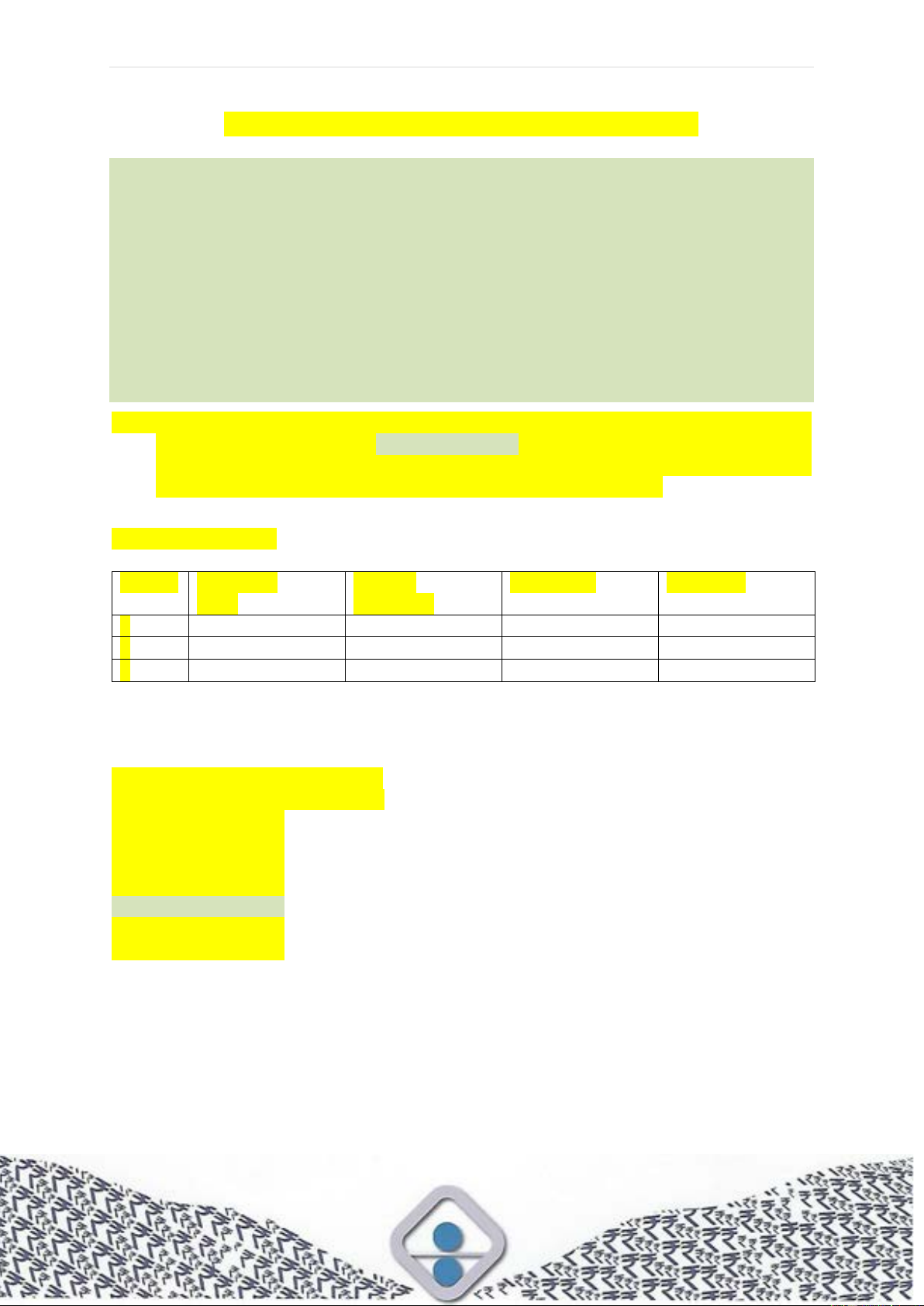
P a g e | 359
Annexure 10: Statement of Financial Standing
i. Submission of audited books of accounts bearing valid UDIN is required for firms
whose sales, turnover or gross receipts is more than ₹1 crore. However, for firms
whose cash receipts are limited to 5% of the gross receipts or turnover, and
whose cash payments are limited to 5% of the aggregate payments, the
threshold limit of ₹1 crore for tax audit is increased to ₹10 crore with effect from
AY 2021-22 (FY 2020-21).
ii. Firms whose sales, turnover or gross receipts is less than ₹1 crore, submission
of audited books of accounts is not necessary. However, such firms have to
submit a Statement of Financial Standing in the following format bearing a valid
UDIN along with the bid in order to ensure the compliance of the bidder against
the financial standing criteria.
iii. This statement has to be certified by a certified accountant e.g. Chartered
Accountant (CA) in India with valid UDIN and Certified Public Accountants /
Chartered Accountants / Members of Certified Accounting Body of the
government of the Bidder’s country in case of foreign bidders.
Name of the Bidder:
Sl. No.
Financial
Year
Annual
Turnover
Net worth
Remarks
1
2
3
……………………………………..
Signature of Certified Accountant
Name :
Name of Firm :
Reg. No of Firm :
Membership No :
UDIN No. :
Place :
Date :

P a g e | 360
Annexure 11: Notification of Award of Contract (Letter of Intent)
(Refer Para 10.17.4)
Contract No : [Insert date]
Contract Title : Private & Confidential
To,
[Insert name & address]
Sub: Award of contract for Contract No: [Insert contract number] and Contract title:
[Insert contract title]
Ref: Your offer No. [Insert offer number] against our tender No [Insert tender no]
Opened on [insert date of opening of tender]
Dear Sir/Madam,
I am directed to inform you that after evaluating the bid documents submitted by you
on [enter date], BRBNMPL is pleased to inform you that you have been selected as
the successful bidder for the supply of [enter description]. The total purchase price
shall be [enter amount] as indicated in your financial bid submitted on [enter date], in
accordance with the procedures intimated to you by BRBNMPL.
In this respect, we also request you to submit the performance security deposit of 10%
of the total cost i.e. [insert amount of rupees in words] by [insert date].
** Please arrange to deposit ₹_______ as further Security Money over and above the
Earnest Money of ₹_______ already deposited.
** Please apply for refund of Excess earnest Money deposited over and above the
Security Deposit of ₹ _______, if any.
Treasury Receipts of EMD and Security Money Deposit shall be deposited in office
within the stipulated time limit as above.
** You / your authorized representative(s) are requested to be personally present at
[insert address] for the signing of the contract by [enter date].
** You are requested to execute necessary agreement within [enter days] from the
date of issue of this letter in the enclosed Agreement form or a separate Purchase
Order will be issued, which is required to be counter signed by you/your authorized
representative(s) and to be submitted within [enter days] from the date of issue of this
letter i.e., by [insert date] to [insert address]. Separate Acceptance Letter will be issued
in case of any additional allotment of materials
Yours truly,
[GM / DGM]
Enclosure: Agreement Form along with the schedule of delivery
** Strike out one of the two options

P a g e | 361
Annexure 12: Invitation for submission of EOI
(Refer Para 6.2)
1. Name of the Organization :
2. Type of the Organization :
3. Reference No. :
4. EOI Title :
5. Category :
6. Sub-category :
7. Date of Announcement :
8. Last date for submission :
9. Broad description of work :
10. Pre-qualification criteria :
11. Bid documents (if any) :
12. EOI should be submitted to :
Designation : …………….
Email : …………….
Phone : …………….
Fax : …………….
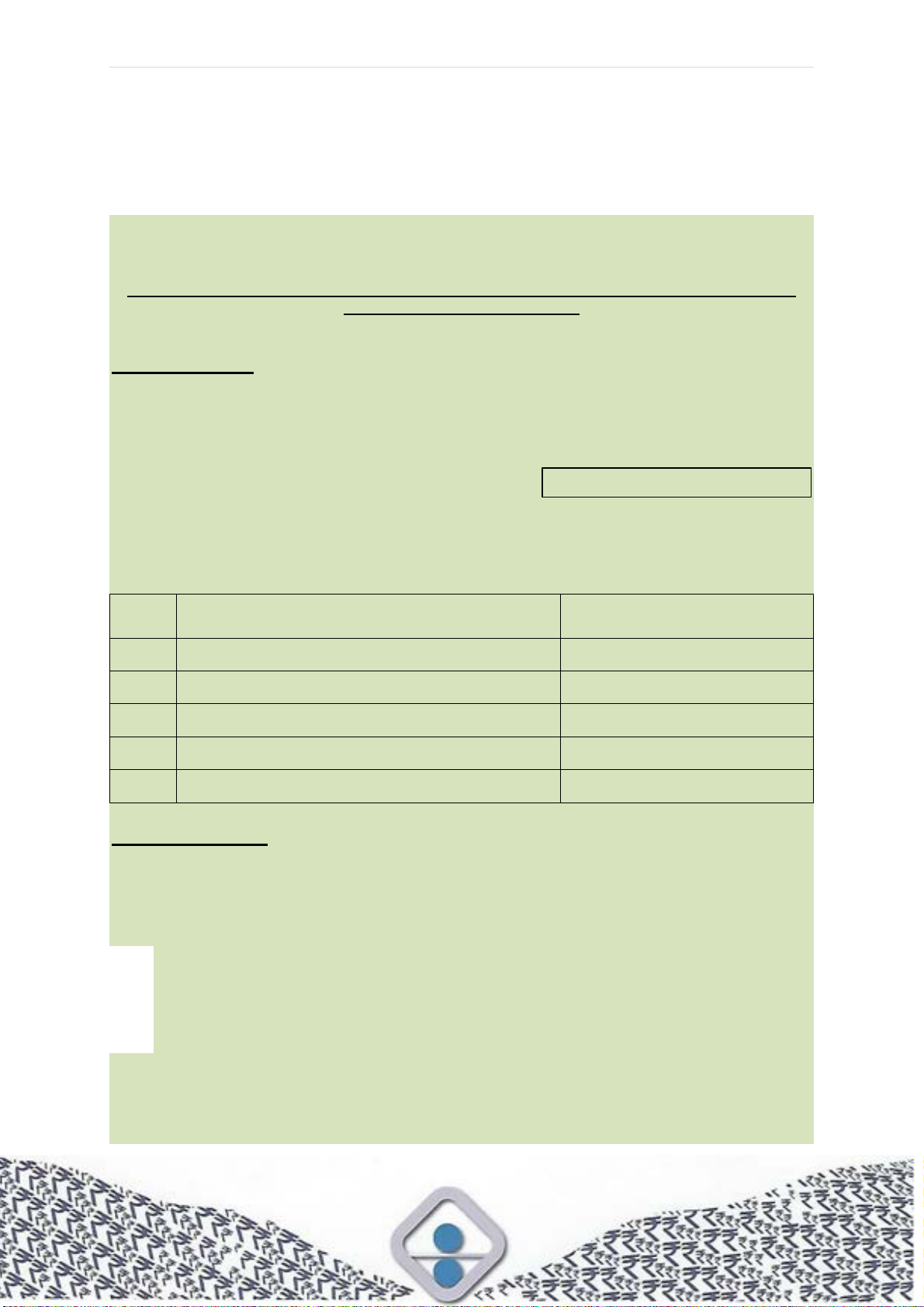
P a g e | 362
Annexure 13: Application for Empanelment
(Refer Para 6.2)
[The applicant should study carefully the Rules of Enlistment and the list of documents to be annexed with the application form
before filling the form. Applications found deficient in any respect are liable to be rejected without any further correspondence]
File No…………… Form Serial No………………
Date of issue…………………
APPLICATION FOR VENDOR REGISTRATION / RENEWAL OF VENDOR REGISTRATION AT
BRBNMPL, SALBONI / MYSURU
(NON-TRANSFERABLE)
APPLICATION FOR:
A) Fresh Vendor Registration ❑
B) Renewal of Vendor Registration ❑
If Already Registered, Existing Registration No.
1.0 Details of category of items for which the registration is desired (Please select
from Annexure-I; Maximum of 5 (Five) sub categories allowed)
Sl. No
Item(s) Detail
Category Code / Sub
Category code
OTHER DETAILS:
1.1 Name of the Firm / Company: M/s ……………………………………………………
1.2 Registered office Address : . . . . . . . . . . . . . . . . . . . . . . . . . . . . . . . . . . . . . . . . . .
. . . . . . . . . . . . . . . . . . . . . . . . . . . . . . . . . . . . . . . . . . . . . . . . . . . . . . . . . . . . . . . .
STD Code: Phone No.: Fax No.:
E-mail: Web Site:
1.3 Branch/Factory/Sub office if any with addresses:
1.4 Name & Address of the Proprietor / Partner / Director (as the case may be):

P a g e | 363
1.5 Name & designation of Contact person / Authorized Person:
Shri / Smt ……………………………………………………………………………….
Phone No. (Office)…………………… (Residence)………………………….
Mobile No………………………….…
1.6 Status of the firm: Proprietor / Partnership / Public Ltd Company / Private Ltd
Company /Joint sector/ Co-op. Society: ________________________________
Please enclose copy of,
(i) In case of Limited Companies:
(a) Memorandum of Articles of Association
(b) Certificate of Incorporation
(ii) In case of Partnership:
(a) Attested copy of Partnership Deed
(iii) In case of Proprietorship/Joint sector/Co-operative society:
(a) Attested copy of Registration Certificate
1.7 Statutory and Other Registration (copies of each relevant document to be
enclosed)
(i) GST Registration No. : …………………………………………
(ii) Trade Licence No. : …………………………………………
(iii) PAN No. : …………………………………………
(iv) NSIC Registration No. : …………………………………………
(v) MSME Registration No. : …………………………………………
(vi) Professional Tax Registration No. : …………………………………………
(vii) ESIC Registration No. : …………………………………………
(viii) PF Registration No. : …………………………………………
(ix) Electrical Licence No. : …………………………………………
(x) MSTC Portal Registration No. : …………………………………………
(xi) GeM Portal Registration No. : …………………………………………

P a g e | 364
1.8 Whether Manufacturer / Authorized Stockiest / Dealer / Trader (with name of
manufacturer) [Documentary evidence to be enclosed]
……………………………………………………………………………………………
1.9 If service contractor:
Are you registered under PF & ESI statues: Yes / No
[If yes, please enclose copies of relevant certificate]
2.0 Details of services offered:
2.1 Whether under MSE : Yes / No (If yes, Please attach copy)
Whether Startup : Yes / No (If yes, Please attach copy)
(Registered under DPIIT)
Whether Class-I Local Supplier : Yes / No (If yes, Please attach copy)
Whether Class-II Local Supplier : Yes / No (If yes, Please attach copy)
ISO Accredited : Yes / No (If yes, Please attach copy)
BIS Licensee : Yes / No (If yes, Please attach copy)
[Copies of authenticated documents to be attached]
2.2 Type of industry:
Micro scale ❑ Small Scale ❑ Medium Scale ❑ Govt. ❑
Contractor ❑ Dealer ❑ Semi Govt ❑ PSU ❑
2.3 Whether registered under MSE? (Micro and Small Enterprise) :
Micro ❑ Small ❑
(If so, please furnish documentary evidence to this effect. In case no such
documentary evidence is furnished, it will be presumed that the applicant does
not belong to such category and shall be dealt with accordingly)
2.4 Whether registered with other BRBNMPL Press/Units and or/PSUs. : Yes / No
[If yes, please indicate name and registration number, validity and
categories of items for which registered]
2.5 Name of Major Customers:
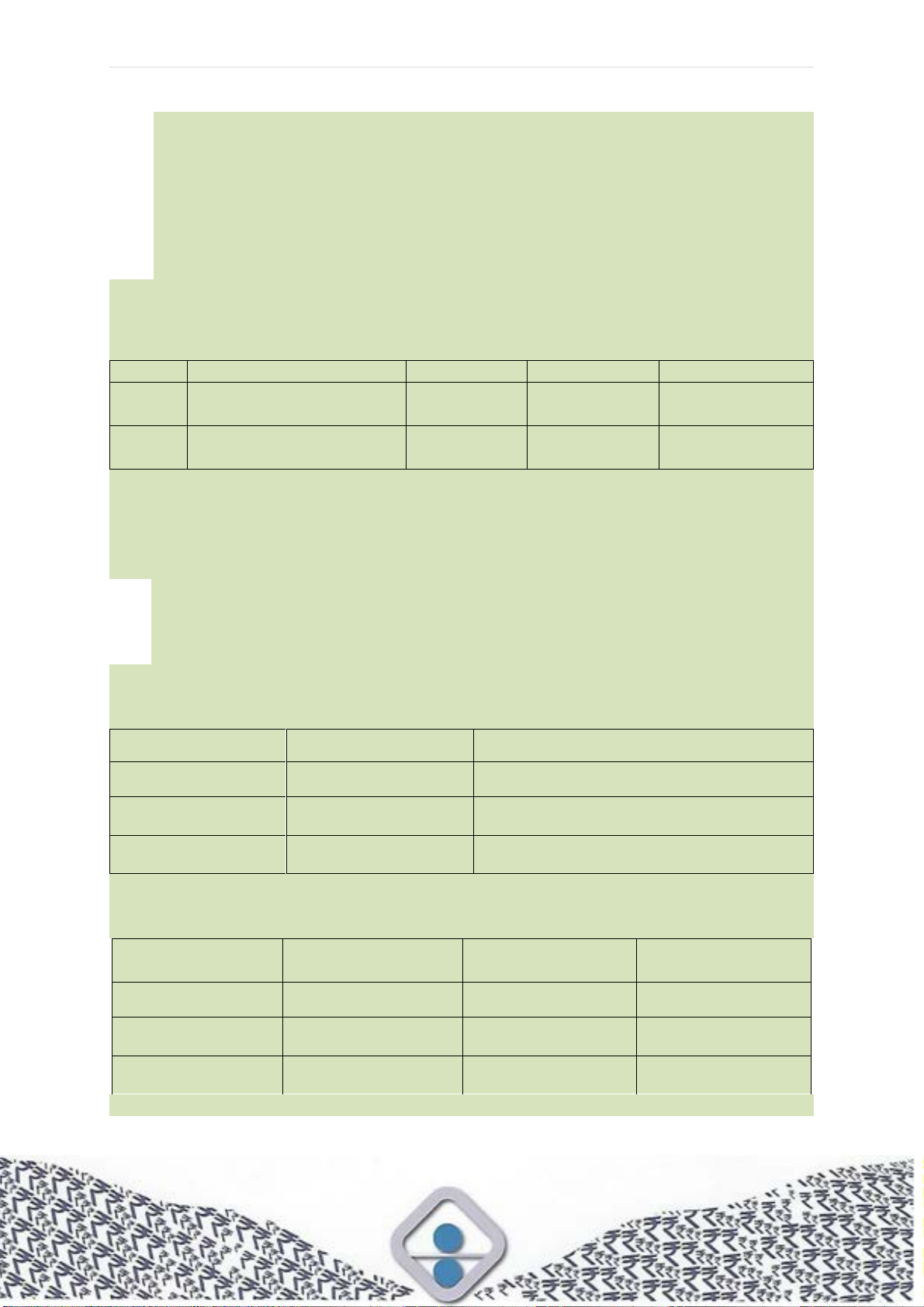
P a g e | 365
Sl. No
Name of the Firm/Company
Address
Contact no.
2.6 Names of Partners/Directors:
Sl. No
Name of Director / partner of
the Company
Whether Director or Partner
Mobile Nos.
2.7 If the firm is a subsidiary of an Indian/foreign company, give particulars of parent
/ holding company?
2.8 If there are other subsidiaries of the same parent company in India, give full
particulars.
2.9 If the directors/Partners/Proprietor have financial interests or are represented on
Board(s) of other companies give details:
2.10 Is the individual/ sole proprietor/ any partner/ directors of company:
2.11 Name of person holding power of attorney and Name & Designation of Contact/
authorized person
(i) Dismissed from Govt. Servant : Yes / No
(ii) Removed from approved list of contractors : Yes / No
(iii) Demoted to a lower class of contractors : Yes / No
(iv) Having business banned/suspended by any govt. in the past : Yes / No
(v) Convicted by a court of law : Yes / No
(vi) Retired engineer/official from engineering Dept. of Govt.
of India within last two years : Yes / No
(vii) Director or partner of any other company/firm enlisted with
CPWD or any other department : Yes / No
(viii) Member of Parliament or any State Legislative Assembly : Yes / No
If answer to any of the above is yes, furnish details on a separate sheet
Shri / Smt ……………………………………………………………………………….
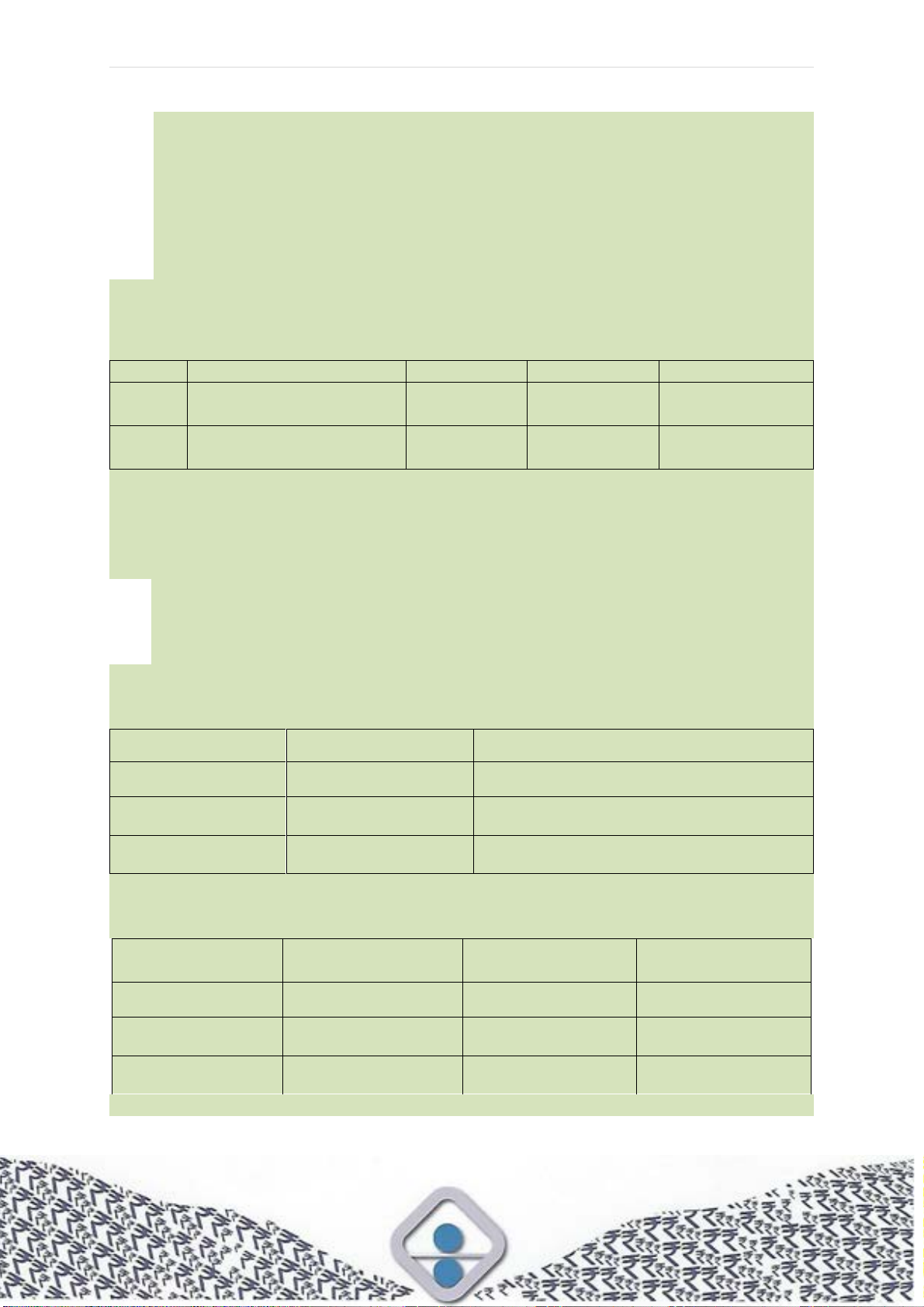
P a g e | 366
(a) Nationality Indian / Other :
(b) Liabilities :
(c) Office phone no. :
(d) Mobile No. :
2.12 Is any person working with the applicant is a near relative of the officer/official of
BRBNMPL (Yes/No): [If yes, give details]
Sl. No.
Name
Emp. No.
Designation
Relation
3 Financial Position:
3.1 Name and Address of your Bankers and account Name, Account Nos., IFSC /
MICR Code.
[Duly filed, signed and stamped copy of ECS Form as per Annexure – B to
be attached]
3.2 Annual Accounts (audited) or IT returns with acknowledgement for the last 3
Financial years ending ………….. (copies to be attached)
Financial year
copies attached
Remarks
Yes / No
Yes / No
Yes / No
3.3 Turnover and Net Worth for last 3 years:
Financial year
Turnover
[₹ in lakhs]
Net Worth
[₹ in lakhs]
Remarks
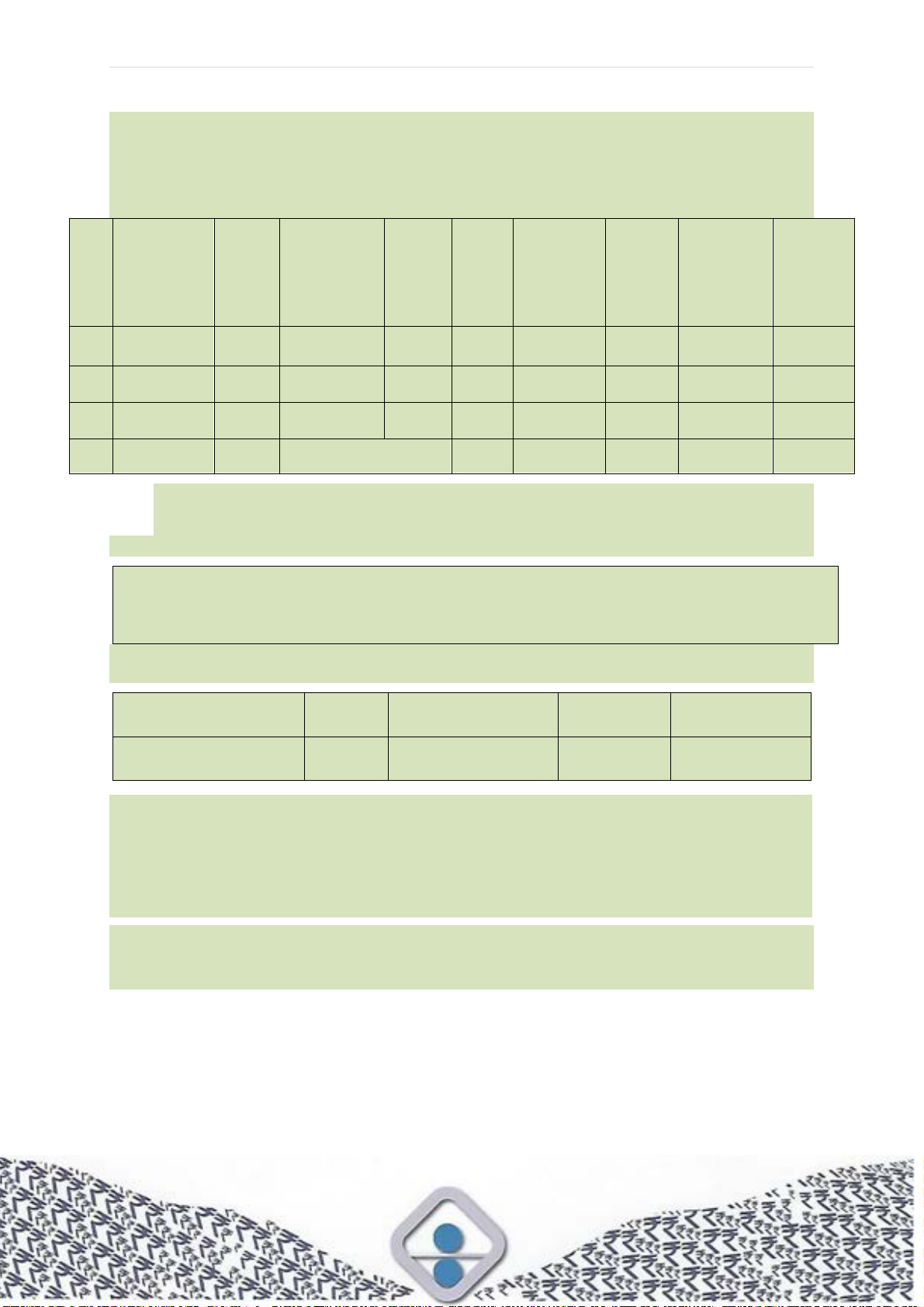
P a g e | 367
4. Details of Supplies effected / Services provided to reputed Companies /
Government Organization during the last five years ending ……………..
(attested copies in proof of the same to be attached) [attach separate sheet if
required]
Sl.
No
Description
of Work
Locati
on of
Work
Client
Address and
contact
details
including
email
W.O./
P.O.
No. &
dated
Quant
ity
In CC
Period of
Contract
(From –
To date)
Date of
Comple
tion
Quantity of
Completed
Contract in
CC
Remarks
a.
b.
c.
Total
xxx
xxx
Note:
5. Any other relevant information:
6. Details of Vendor Registration Fee enclosed:
DD/PO/BC No./ Online
Transaction No.
Date
Issuing Bank
Amount
In favour of
₹XXX/-
BRBNMPL,
Salboni / Mysuru
6.1 Vendor Registration Form may be purchased on payment of non-refundable fee
of ₹XXX/- (Rupees XXX XXXXX only) per set
(Authorised Signature of the Vendor firm with date) (Seal)
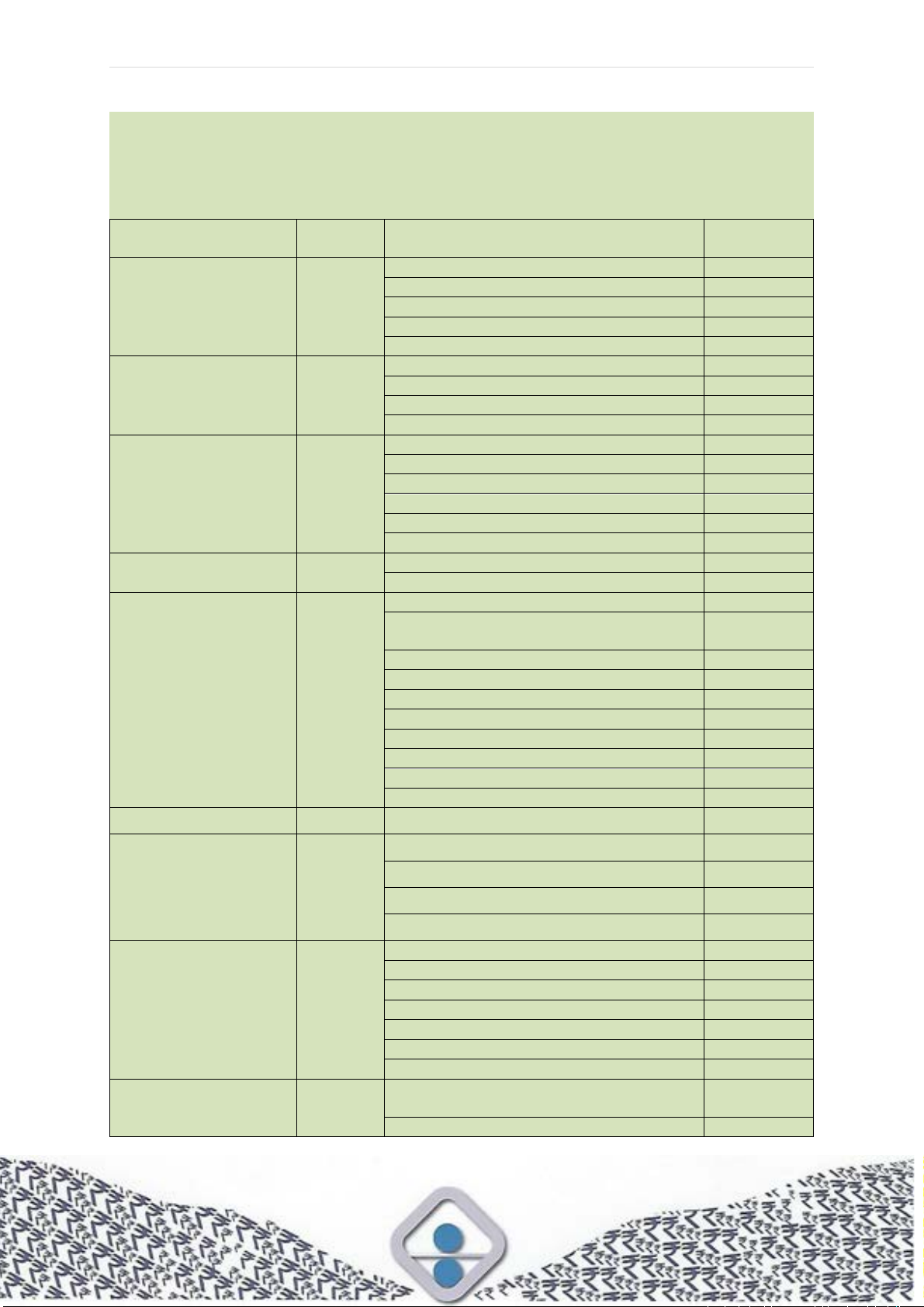
P a g e | 368
A. SCOPE OF REQUIREMENT
CATEGORY OF ITEMS (CATEGORY CODE AND DETAILS TO BE FILLED IN BY VENDOR IN
THE APPLICATION)
(Type of Goods / Services to be supplied / performed)
CATEGORY
Category
Code
SUB Category [DESCRIPTION]
Sub Category
Code
Printing
Consumables
I
Trial Printing Paper (TPP)
1
Blankets, Presspan Sheets, etc.
2
Printing Consumables
3
Banian Bits, Hosiery Cuttings
4
Re-Rubberisation of Rollers
5
Chemicals
II
Water Treatment Chemicals
1
General Chemicals & Lab Glassware
2
Chemicals – LR Grade
3
Special Metals
4
Packing materials
III
Wooden Packing Boxes
1
Shrink Film, LDPE/Polythene Bags etc.
2
Local Wood (Batten)
3
HDPE Woven Bags
4
Pet Straps
5
Packing Consumables
6
Oils & Lubricants
IV
Lubes, Oils & Industrial Adhesives
1
Kerosene, H.S Diesel Etc.
2
Mechanical,
Hardware &
plumbing Items
V
Mechanical Items & Spares
1
Hardware & Plumbing Items, PVC Flooring
Sheet, Paints, etc.
2
Material Handling Equipment & Spares
3
Engineering & Fabrication
4
Bearings
5
Blades & Knives
6
Pumps & Motors of all types
7
DG & Compressor Spares
8
Packing Tools & Spares
9
General Tools
10
SCRAP
VI
Plastic, Woods, Paper Trims, Metals Etc.
1
Machinery
VII
Printing Associated Machinery
2
Civil Maintenance Associated Machinery
3
Packing related Equipment
4
Auxiliary Machinery Equipment
5
Electrical &
Electronics
VIII
Electrical & Electronics Items
1
Cables
2
Telecom Equipment
3
AC & Refrigeration
4
Electrical Appliances
5
Batteries & UPS
6
Instrumentation & Testing Items
7
Computer &
Peripherals
IX
Computers, Printers, Servers and
Peripherals Etc.
1
Computer Software
2
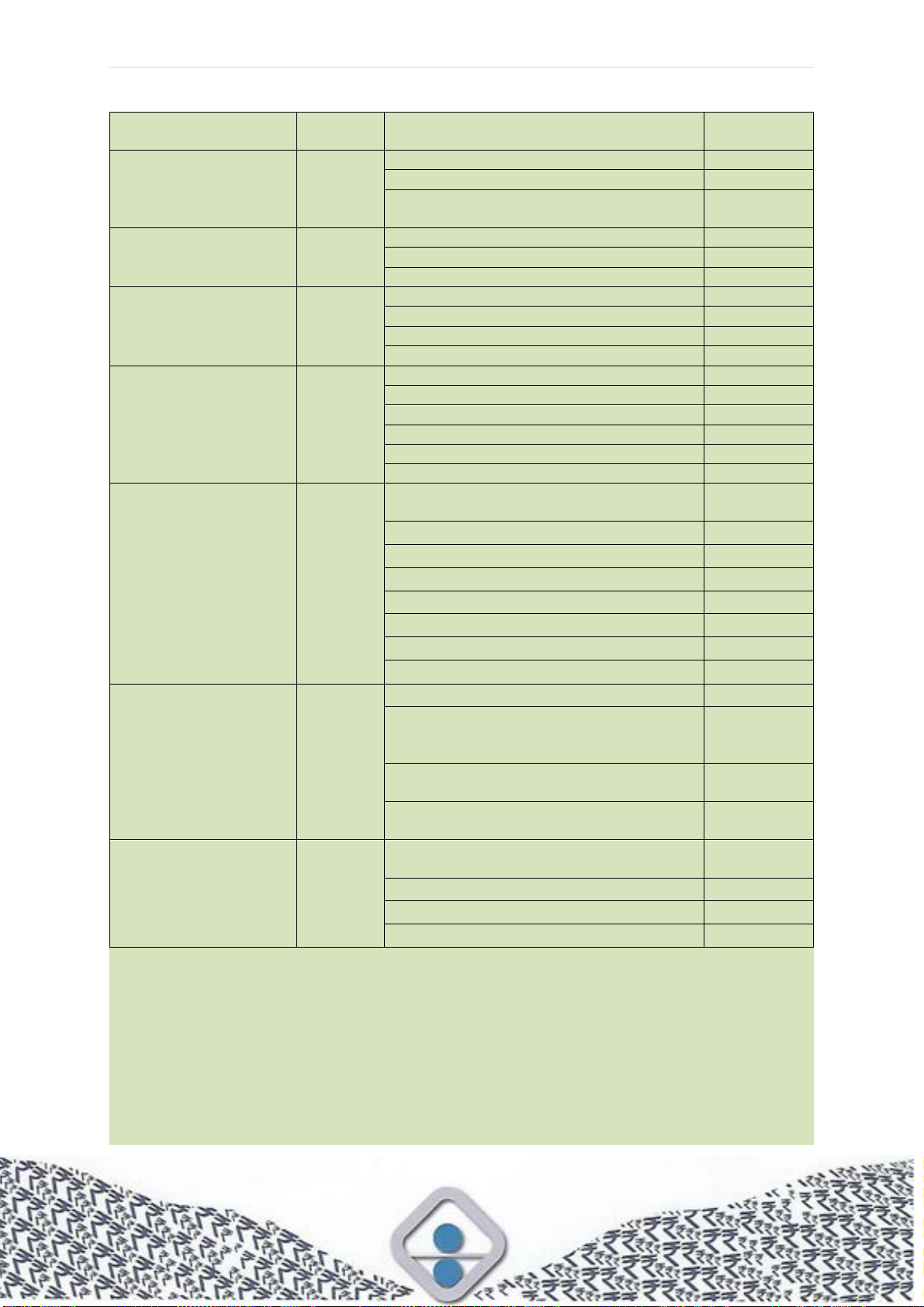
P a g e | 369
CATEGORY
Category
Code
SUB Category [DESCRIPTION]
Sub Category
Code
Cartridges & Toners
3
Networking Equipment & IT related Spares
4
Digital Teaching Device, Projectors, VC
Equipment etc.
5
Printing & Stationery
Items
X
Office Stationery
1
Printing Stationery
2
General Order Suppliers
3
Medicines &
Hospital
Equipment
XI
Allopathic Medicines
1
Surgical Items
2
Medical Equipment
3
Homoeopathic Medicines
4
General Items
XII
Coffee & Tea Premix & Vending Machines
1
Kitchen & Canteen Equipment
2
House Keeping Equipment
3
Office Equipment
4
Technical Furniture
5
General Furniture
6
Annual Maintenance
& Rate contracts and
Services
XIII
Labour Contractors (House Keeping & Other
Allied Services)
1
Security Agencies
2
Transport Services
3
Hospital Services
4
Catering cum Hospitality Services
5
Computers/Printers related Services
6
Photocopier Machine Services
7
Liaisoning Services with Railways
8
Safety & Security Items
XIV
Fire Fighting Equipment
1
Safety Items & Personal Protective
Equipment (Safety Goggles, Safety Jackets
& Helmets, etc.)
2
Surveillance Items (CCTV Cameras, Access
Control System, Spares, etc.)
3
UVSS, DSMD, HHMD, Noise Level
Equipment, Baggage Scanner, GPS, etc.
4
Miscellaneous Items
XV
Uniform Cloth,
Pullovers & Cardigans,
Shoes
& Socks
1
Import Agents
2
Advertisement Agency
3
Sweets & Savoury
4
Note: All the above-mentioned sub-items in the main item category are only a tentative list and do not
cover the entire list of requirements and it may vary from time to time. No separate communication will
be sent in between next registration period regarding the addition or deletion of few sub-items from the
main item category.
The Vendors applying for Registration may attach a separate list along with Application form for which
Registration is sought.
B. GENERAL INSTRUCTIONS TO THE VENDORS

P a g e | 370
a) Interested vendors may obtain further information about the requirement from the above office.
They may also visit our website mentioned below for further details.
b) The documents may be purchased on payment of non-refundable fee of ₹500/-(Rupees Five
Hundred only) per set in the form of account payee demand draft/ Banker’s Cheque drawn on a
scheduled commercial bank in India/ Online transfer, in favour of Bharatiya Reserve Bank Note
Mudran Private Limited Payable at Salboni / Mysuru.
c) The documents may also be downloaded free of cost, from the web site www.brbnmpl.co.in
d) A non-refundable Vendor registration fee (Empanelment fee) of ₹500/- is to be submitted along
with the Document in the form of account payee demand draft/Banker’s Cheque/ Pay
Order/Online transfer, drawn on a scheduled commercial bank in India, in favour of “Bharatiya
Reserve Bank Note Mudran Private Limited” Payable at Salboni / Mysuru.
e) The applicant is to seal their filled and complete Application for Empanelment along with all
supportive documents, in an Envelope.
f) The sealed envelope should be clearly super scribed as “For Vendor Empanelment …………”.
g) The empanelled vendors will be allocated a Vendor Code.
h) Vendors are allowed for opting of Maximum of 5 (Five) sub categories of item for empanelment
for which they are having necessary experience.
i) The validity period of empanelment will be 3 years and the performance may be reviewed
annually or as per requirement.
j) Vendors who do not meet /comply evaluation criteria of this document will not be considered for
empanelment and also there will be no refund of empanelment fee.
k) Potential new vendors will be added to the empanelment list every year based on the satisfaction
of the eligibility criteria or at the discretion of Chief General Manager, BRBNMPL Salboni / Mysuru
l) Firms found not satisfactorily performing during registration period would be eliminated.
m) The suppliers who are having valid empanelment with BRBNMPL need not to apply for
fresh registration for same item either they can sen for renewal on or before expiry of
current registration.
n) The firm should furnish the firm’s name, full postal address (Office), Phone Number and Fax
Number; Name of the authorized contact person and e-mail address. In case of any change in
postal address, email etc. at a later stage should be intimated to BRBNMPL immediately for
updating the same in our records.
o) The firm should not have been blacklisted /debarred for dealing by Government of India
or any State Govt. in any manner and an undertaking should be submitted along with the
Bids, to this effect.
p) If required the empanelment will be extended for the time as decided by Chief General Manager,
BRBNMPL Salboni / Mysuru after completion of tenure empanelment i.e. 3 years.
q) This form should be signed by Proprietor/Partner/Director/Company Secretary/authorized
signatory of the company.
r) Incomplete forms or forms received without the required enclosures shall be rejected.
s) Enlistment of any firm is done entirely at the discretion of BRBNMPL and BRBNMPL reserves
the right to reject any application without assigning any reason.
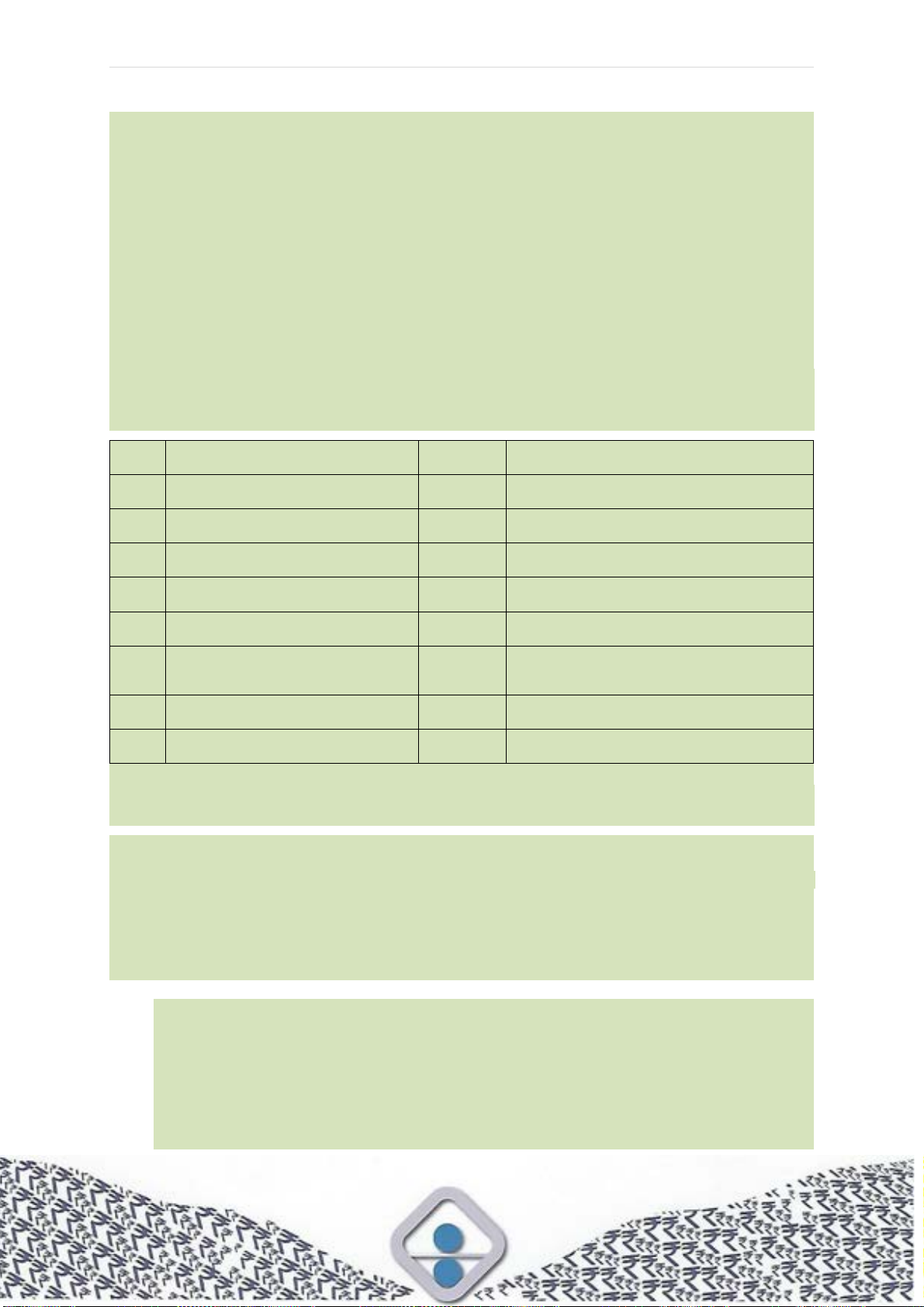
P a g e | 371
t) Participants are required to stamp and provide their authorized signature on every page of the
document and all the supporting documents submitted as a token of acceptance to the mentioned
terms and conditions.
u) Interested firms have to submit authenticated copies of various valid documents like Trade
License, GST registration Certificate, copy of PAN, Professional Tax Registration Certificate,
Dealer / Distributor certificate, Labour Licence, Registration under Shops & Establishment Act,
ISO certification, Authorization from Pollution Control Board, NSIC certificate, MSME certificate,
ESI Registration, PF Registration etc., as required as per the prevalent rules & regulations along
with their application.
C. SHORTLISTING CRITERIA FOR EVALUATION OF SUPPLIERS
The suppliers will be evaluated for short listing, inter-alia, based on their past experience of supplying
goods in similar context, financial strength, technical capabilities etc. each supplier will be assigned
scores based on weightages assigned to each of the criteria.
All suppliers who secure the minimum required weightage (normally 50%) or as decided by Chief
General Manager, BRBNMPL, Salboni / Mysuru, at the time of evaluation will be shortlisted.
D. REMOVAL FROM THE APPROVED LIST
a) Whenever a vendor is found lacking in performance in terms of response, delivery compliance,
capacity, quality standards or ethics, the vendor may be removed from the approved list after
giving performance notice as per the conditions of empanelment.
b) Removal from approved list may also be warranted in following cases:
(i) Termination of the contract due to default or insolvency on part of the supplier declared by
a court of law.
(ii) Non-performance or performance below specified standards such as repeated delays in
delivery (more than twice during a contract period), low quality of goods (rejection of goods
more than two times during a contract period), non-delivery etc. during the period of
delivery specified in the purchase order.
Sl. No.
Criteria
Weightage
Supportive documents to be Submitted
1.
Past Experience
40%
Copies of completed PO/WO and completion
certificates.
2.
Financial Strength of the Bidder
Audited and CA certified Financial Statements
2(i)
Turnover figures of last three years
10 %
CA certified Turnover Details of last three
years
2(ii)
Net worth figures of last three years
10%
CA certified Net worth details of last three
years
3.
Quality Assurance
10%
ISO or equivalent quality accreditations.
4.
Manufacturing capabilities/ tie-ups
10%
Documents to establish manufacturing
capability of vendor. Dealership certificated /
distributorship certificate.
5.
After sales service
10%
Documentary details of After Sales Executives
of vendor.
6.
Product support
10%
Copies of PO/WO with AMC etc.

P a g e | 372
(iii) In case liquidated damages have been claimed against the supplier more than twice,
during a contract period.
(iv) In case, the firm is banned/blacklisted by BRBNMPL or any other PSU / Government
agency.
c) Besides, there may be registered firms who may have ceased to exist or may have been acquired
by or merged with another firm, may have switched over to other sector of business operation or
indulged in unethical business practices and influence peddling. Such firms will be removed from
the list of approved vendors. Whenever a firm is removed from the lists of approved vendors,
their registration stands cancelled. Such removal must be promulgated to all units so that any
unit of BRBNMPL conducts no further business relation with such firms who have failed to
perform contractual obligations even though POs were placed on them during the last three
years.
E. OHER IMPORTANT INSTRUCTIONS TO THE VENDORS
a) In the following cases, firms or individuals should be banned/ blacklisted including declaring them
ineligible, either indefinitely or for a stated period of time, to participate in the tenders to be floated:
b) If any of the bidder(s) is found presenting misleading/ false information/ documents in the tender
forms, statements etc.
c) If a firm submits fraudulent un-encashable Financial Instruments stipulated under the Tender or
Enquiry and Contractual conditions.
d) If a firm violates the Code of Ethics and directly or through an agent, engages in corrupt,
fraudulent, collusive or coercive practices in procurement or execution of Contract.
e) Cartel formation or quotation of Pool/ Co-ordinated rates leading to “Appreciable Adverse Effect
on Competition” (AAEC) as identified under the Competition Act, 2002.
f) Deliberate attempts to pass off inferior goods or short quantities.
g) Violation of Fall Clause by Rate Contract holding Firms.
h) Attempts to influence BRBNMPL’s decisions on scrutiny, comparison, evaluation and award of
Tender.
(Authorised Signature of the Vendor firm with date) (Seal)

P a g e | 373
Checklist for Vendor Registration (Mandatory)
Sl. No.
Parameters
To be filled by the Party
1
Company profile/ Name
2
Status (Partnership/Sole Proprietorship/ Private
Limited/Limited)
3
Address Details (address, contact no., Fax No., E-
mail, Website etc.,)
4
Vendor Registration Fee DD no. and Date
5
MSME Registration No.:( In case of NSIC / DGS &
D registered firms, the details of Registration No.
with validity period to be mentioned.
6
Trade Licence No. date
7
Professional Tax Regn. No
8
PAN No./IT
9
GST ID/ ARN No.
Status of GST Registration
(regular/composite/interstate)
10
NEFT Mandate Form certified Bank
(Enclosed/Not enclosed)
11
Category Code / Sub Category Code of the items
for which registration has been submitted
12
Whether manufacturer /dealer/ distributor/Trader
13
Submitted Documents / credential in support of
experience & past Performance
14
Submitted Audited Financial Statement of last
three years (Balance Sheet and P&L Statement).
15
Submitted ITR returns of last three years.
16
ESI Registration No.
ESI Registration Certificate to be submitted
17
PF Registration No.
PF Registration Certificate to be submitted
18
Submitted Duly filled copy of Annexure “A”
19
Submitted Duly Filled Copy of Annexure “B”
20
MSTC Registration (copy of registration)
21
GeM Registration (copy of registration)
22
Submitted Duly filled signed and stamped copy of
all pages of Vendor registration form?
(Authorised Signature of the Vendor firm with date) (Seal)

P a g e | 374
DECLARATION BY THE VENDOR APPLICANT
(a) The information provided in the document submitted is true to the best of my/our
knowledge and belief.
(b) In case the same is found contrary, BRBNMPL can cancel registration and also can take
any other action as deemed fit.
(c) I also undertake to inform you at the earliest any change in details mentioned above.
(d) I/We have gone through your Terms & Conditions of Vendor Registration along with
Annexure I to V and agree to comply with the terms & conditions without any deviations.
Date ……………………… Signature with
date………………………………………….
Place ……………………… Name & Designation
………………………………………..
Seal of the Company
Note: Copies of all documents submitted along with Vendor Registration form needs to be
self-attested by the vendor before submission.
********************************
For Internal use of BRBNMPL
Comments & Recommendation:
Vendor Registration No.
Date of Registration
Initial of processing official
Valid Till
Details updated in Vendor
master
Entry Made By

P a g e | 375
Annexure 14: Template for assessment of capability of Bidder
(To be submitted as part of Technical bid on Company Letter-head)
Bidders should furnish statements and documents confirming their Capability to
manufacture the Goods. The list below is indicative only. Bidders may attach more
documents as required. Additional details not covered elsewhere in the bid may also
be added.
Bidder’s Reference No._______________ Date_________
To
[Complete address of BRBNMPL]
Ref: Tender Enquiry No. ____________; Date: __________
1) Location of the manufacturing Factory
2) Details of Plant and Machinery executed and function in each department
(Monographs & description pamphlets) be supplied, if available.
3) Details of arrangement for quality control of products such as laboratory etc.
4) Details of Technical Supervisory staff-in-charge of production and quality control
a) Skilled labour employed.
b) Unskilled labour employed.
c) The maximum number of workers (skilled & unskilled) employed on any day
during the 18 months preceding the date of application.
5) Installed production capacity of item(s) quoted for, with the existing plant and
machinery.
a) The installed monthly production capacity for ______ and the type of _____
b) What portion of the production capacity shall be reserved for this contract?
Indicate reserved capacity in terms of the number of items of Goods per
month.
c) average monthly production of ____________ during the last 5 years on a
single shift basis
d) Existing order on hand for ______________
6) Have you supplied the Goods tendered for or other identical items in the past? If
so, details of supplies in the last five years may be furnished.
………………………..
(Signature with date)
………………………..
(Name and designation)
Duly authorized to sign bid for and on behalf of
……………………………………….
[name & address of Bidder and seal of company]
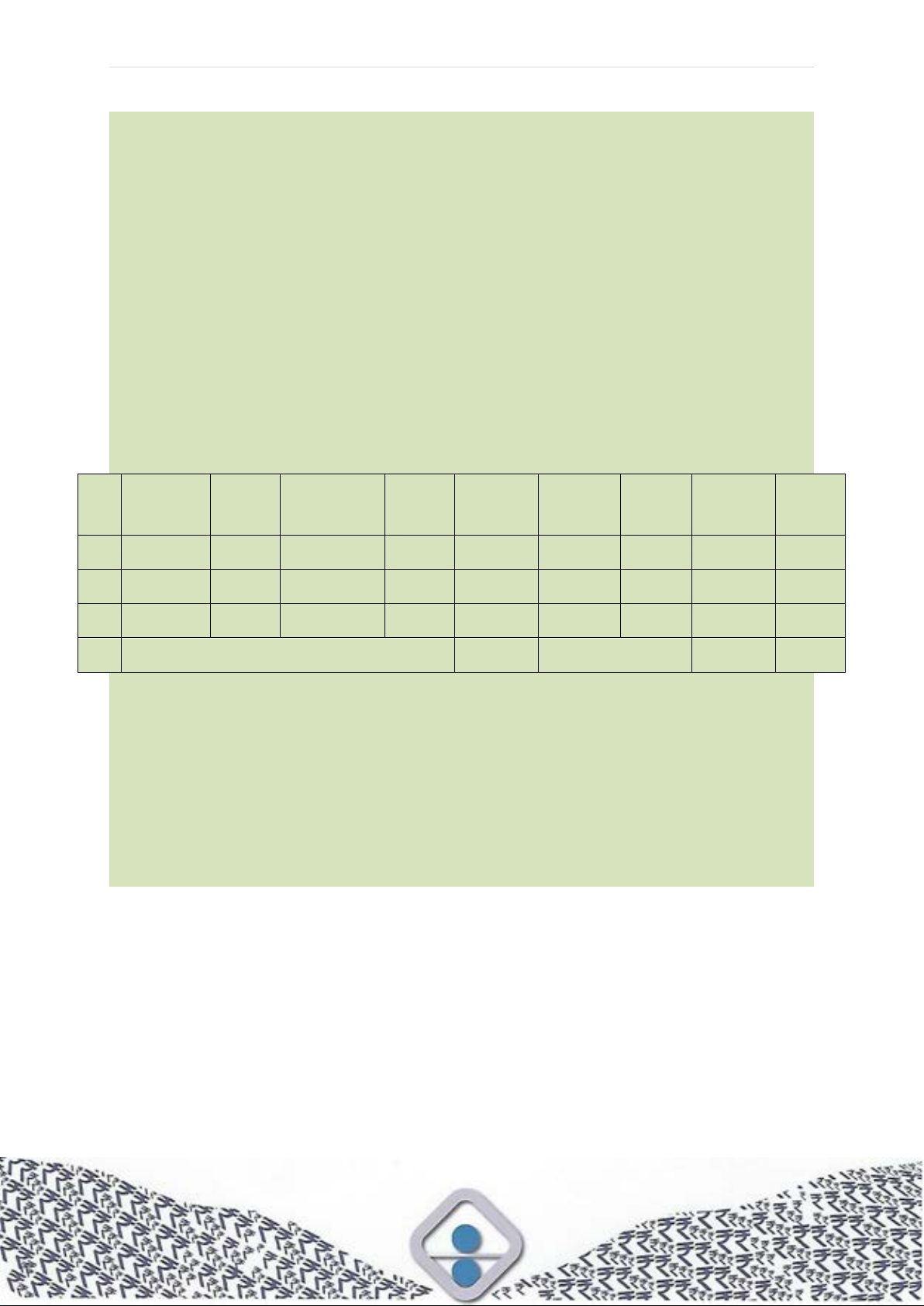
P a g e | 376
Annexure 15: Performance Statement
(Statement of Supplies During Last Five Years and Outstanding Current Orders)
(To be submitted as part of Technical bid)
Bidders should Fill up this Form their past performance highlighting their qualification
to supply relevant Goods. Statements and Documents to the Performance Statement
may be mentioned/attached here. The list below is indicative only. Bidders may attach
more documents as required to showcase their past performance. Additional details
not covered elsewhere in the bid may also be added.
Bidder’s Reference No._______________ Date_________
To
[Complete address of BRBNMPL]
Ref: Tender Enquiry No. ____________; Date: __________
Sl.
No
Description
of Work
Location
of Work
Client Address
and contact
details
including email
P.O. No.
and
dated
Quantity of
Contract
awarded
Period of
Contract
(From – To
date)
Date of
Completi
on
Quantity of
Contract
Completed
Remarks
Total
XXXX
XXXX
………………………..
(Signature with date)
………………………..
(Name and designation)
Duly authorized to sign bid for and on behalf of
……………………………………….
[name & address of Bidder and seal of company]

P a g e | 377
Annexure 16: NEFT Mandate Form
(Customer’s option to receive payments through Credit Clearing Mechanism)
1
Investor / Customer’s Name
2
Particulars of Bank account
A
Name of the Bank
B
Name of the branch
Address
Telephone No
Whether Bank branch is NEFT
enabled
C
Code number of the bank and
branch appearing on the MICR
Cheque issued by the bank
D
Type of the account (SB, Current or
Cash Credit)
E
Ledger and Ledger Folio number
F
Account number (as appearing on
the Cheque book)
G
RTGS / IFSC Code No.
(In lieu of the bank certificate to be obtained as under, please attach a blank
cancelled cheque or photocopy of a cheque or front page of your Savings bank
passbook issued by your bank for verification of the above particulars)
3
Date of effect
I hereby declare that the particulars given above are correct and complete. If the
transaction is delayed or not effected at all for reasons of incomplete or
incorrect information, I would not hold the user institution responsible. I have
read the option invitation letter and agree to discharge the responsibility
expected of me as a participant under the scheme.
(……….……………..……………)
Date: Signature of the Customer
Certified that the particulars furnished above are correct as per our records
Bank’s Stamp
(……………...………..………….)
Signature of the authorized
Date: official of the Bank

P a g e | 378
Annexure 17: Vendor Evaluation
(Refer Para 11.9)
Review Period: From ____________ To ____________
Sl
No
Vendor/
Supplier
PO
No.
PO
Date
Sch.
Delivery
Date
Inward
Date
Day-
wise
delivery
status
Item
Name
Sch.
Qty
Qty
accepted
Qty
Rejected
Marks
for
Quality
(50 Marks)
Marks
for
delivery
sch.
(40 Marks)
Marks
for
Service
(10 Marks)
Total
Marks
Rating
(Grade)
** Extra weightage may be given to vendors who are ISO certified for Quality, Environment, Health & Safety etc. standards.
Note: Vendors rated under 'C' category (if
any) may be counselled for improving their
overall performance in terms of Quality and
timely deliveries.
Delay in Delivery per week reduces 4 MARKS,
(Maximum 40 MARKS for intime delivery)
Marks for Quality is allotted based on
Percentage of Rejection (maximum marks 50)
Rating Criteria:
A+ = ≥ 90 marks
A = 80 - 89 marks
B = 50 - 79 marks
C = < 50 marks
Service is the timely response to our needs /
Queries, attending the issue on site (Maximum
marks 10)
Signature Signature Signature Signature
Name 1: Name 2: Name 3: Name 4:
Designation Designation Designation Designation
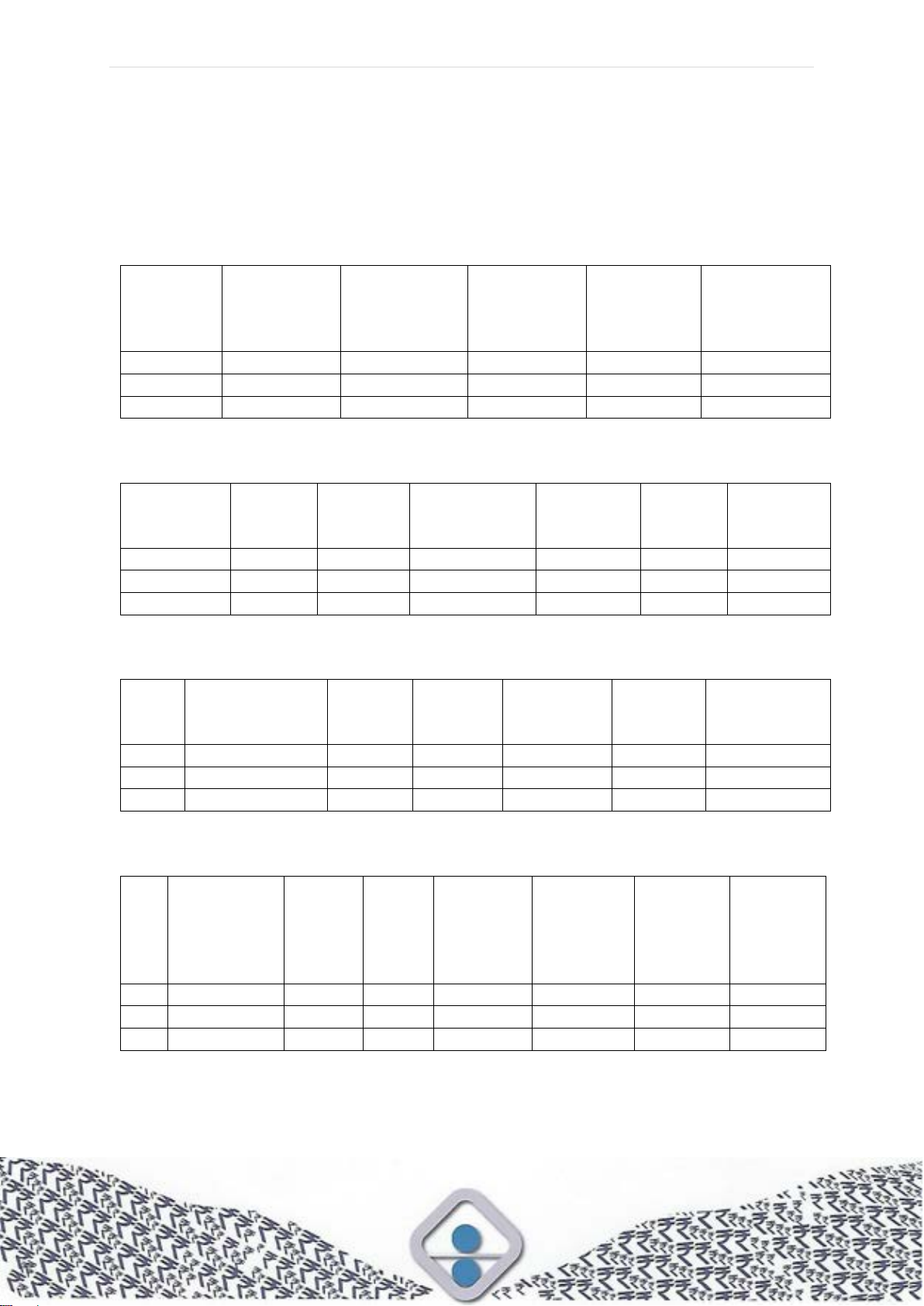
P a g e | 379
Annexure 18: Templates for Management Reports
(Refer Para 13.7)
1. MIS for CGM / SGM / O-I-C / GM
(i) Reporting for monthly variance (Top 25 Items by Annual Consumption value)
Item Code
Item
Description
Total
Planned
Consumption
of YTD
Actual
Quantity
Consumed
for YTD
Variance %
Remarks
(ii) Reporting for Stock Outs (Top 25 items by Annual Consumption value)
Item Code
&
Description
Opening
Stock
Procured
YTD
Consumption
YTD
Duration
of stock
out
Follow
up
action
Remarks
(iii) Reporting for Top 25 suppliers
Serial
No.
Supplier
Registration
No
Supplier
Name
Items
Supplied
Value of
Orders
Placed
Value of
Orders
delivered
Remarks
(iv) Delayed Delivery Report
PO
No.
Vendor
Registration
Vendor
No.
P. O.
date
Date of
Delivery
as per
Contract
Indicative
Delivery
Date as
per
Vendor
Whether
Notice
sent to
Vendor
Remarks
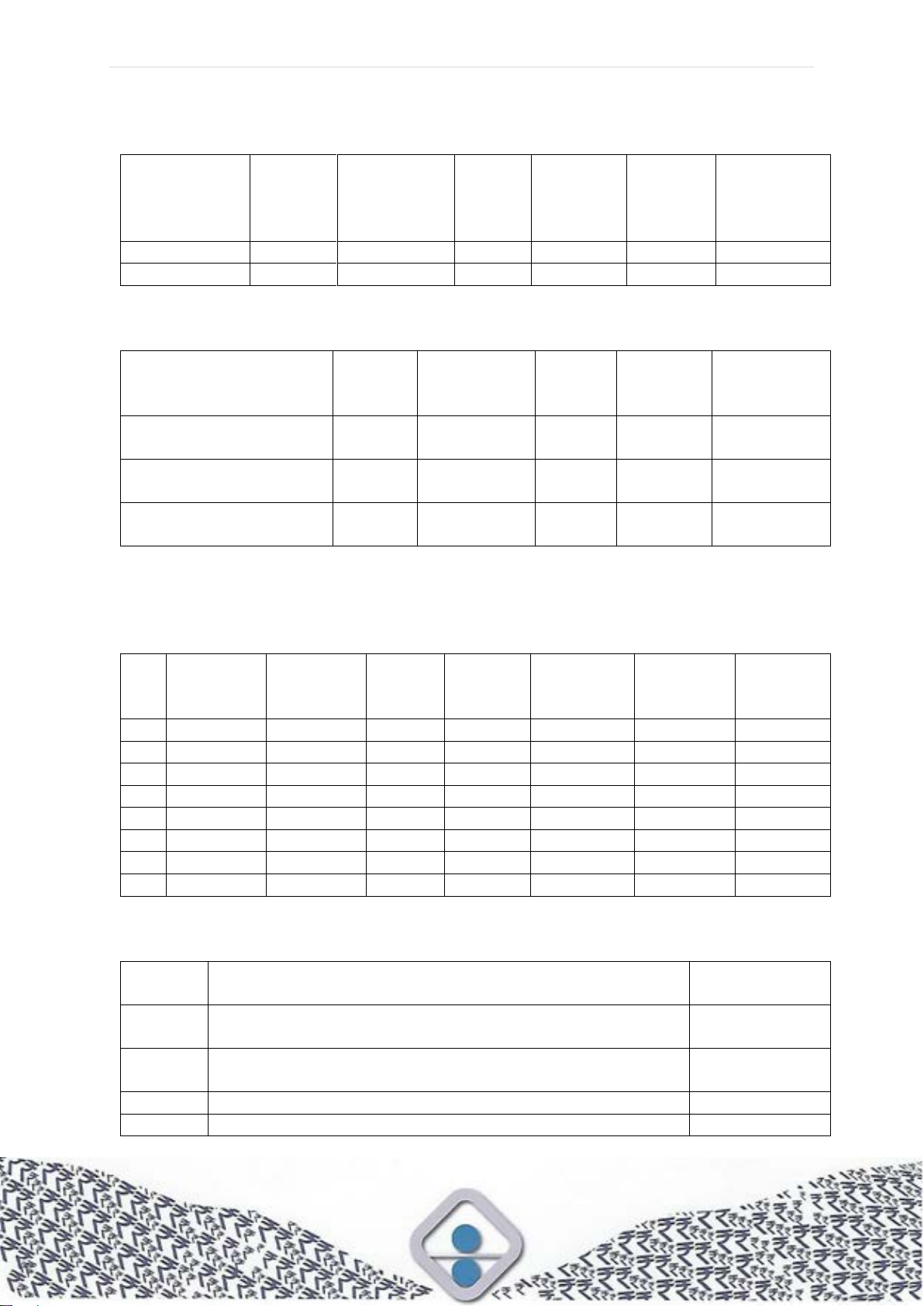
P a g e | 380
(v) Reporting for Defects
Name of the
Supplier
Contract
No. &
Date
Item
Description
& Item
Code
% of
defects
Nature of
defects
Follow-
up
action
Remarks
(vi) Reporting for Outstanding Indents / POs / Invoices (Top 25 item by urgency)
Item
Code
Description
Present
Stock
position
Quantity
Required
/ Ordered
Remarks
I. Indents pending
beyond 21 days
II. Indents pending
beyond 14 days
III. Indents pending
beyond 7 days
2. MIS for CGM / SGM / O-I-C / GM (F&A)
(i) Reporting for top 10 suppliers
Sl.
No.
Supplier
Regn.
No.
Supplier
Name
PO No.
& Date
Items
supplied
Value of
Orders
placed
Value of
Orders
delivered
Remarks
1
2
..
..
..
9
10
TOTAL
(ii) Reporting for Average Time of Payment (from F&A)
Serial
No.
Description
Value (in ₹)
I
VALUE OF BILLS PENDING FOR LESS THAN 2
WEEKS
II
VALUE OF BILLS PENDING BETWEEN 2 AND 4
WEEKS
III
VALUE OF BILLS PENDING MORE THAN 4 WEEKS
AVERAGE TIME FOR PAYMENT
------- DAYS
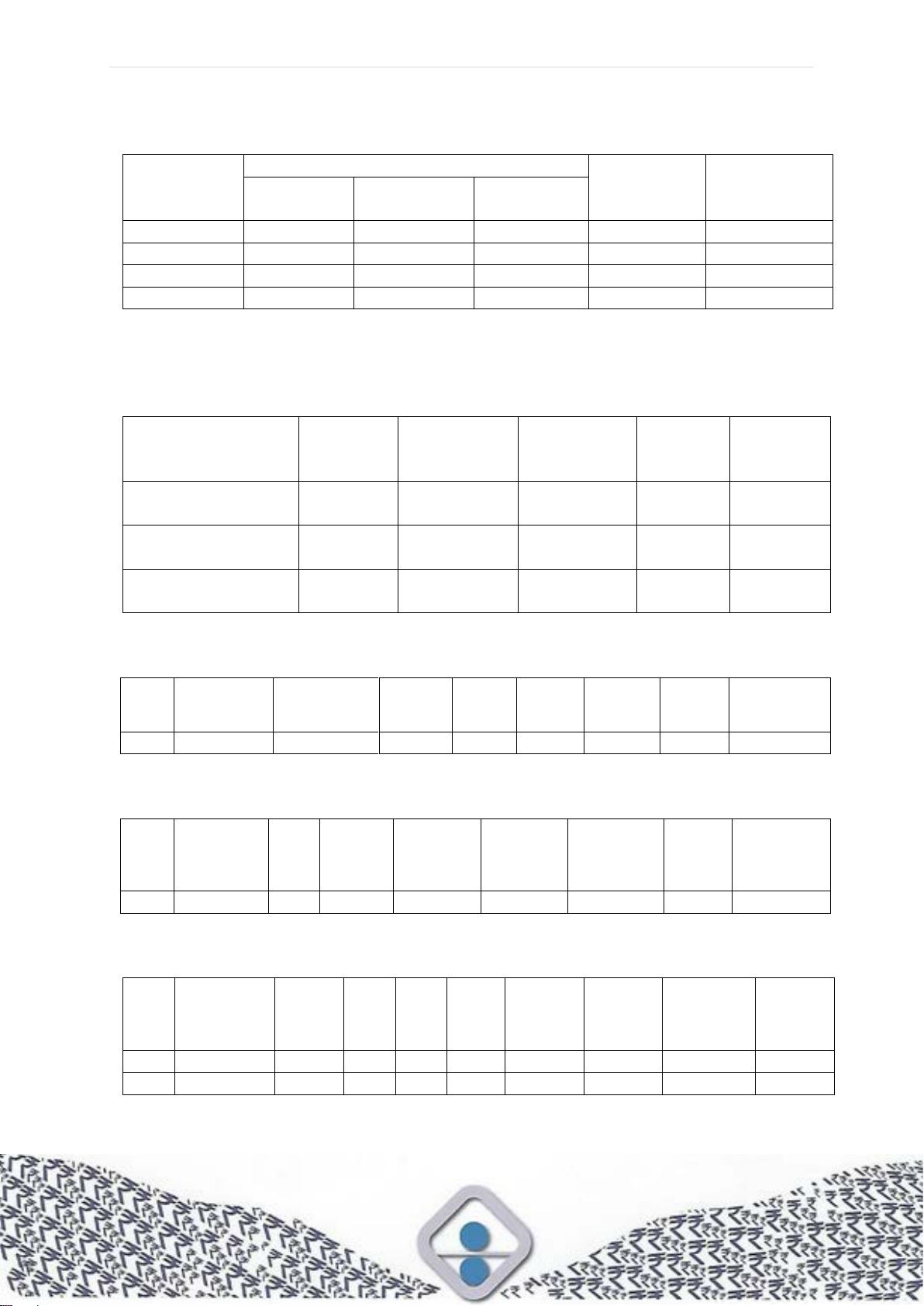
P a g e | 381
(iii) Variance analysis for BRBNMPL – Monthly & YTD
Month
For the month
Expenditure
on Goods
Remarks
Budget
Expenditure
on Goods
Budget
3. MIS for CGM / SGM / O-I-C / GM (P) / GM (F & A)/DGM(MMD)
(i) Outstanding Indents / POs / Invoices Report
Item
Code
Description
Present
Stock
position
Quantity
required
Remarks
I Indents pending
beyond 21 days
II Indents pending
beyond 14 days
III Indents pending
beyond 7 days
(ii) Re-Ordering Report
Item
Code
Description
Estimated
Annual
Requirement
Present
Stock
position
Last
Order
Date
Last
Indent
Date
Pending
Indent
Quantity
Store
Officer
Name
Remarks
(iii) Rejection Report
Item
Code
Description
PO
No.
&
Date
Supplier
Inspection
Date
Inspection
by
Percentage
Rejections
Actions
taken
Remarks
(iv) Bill Register
PO
No.
&
Date
Vendor
Registration
Number
Vendor
Name
IR
No.
&
Date
Bill
Date
Bill
Value
Remarks
Date of
Approval
Date of
Processing
Declared
Payment
date
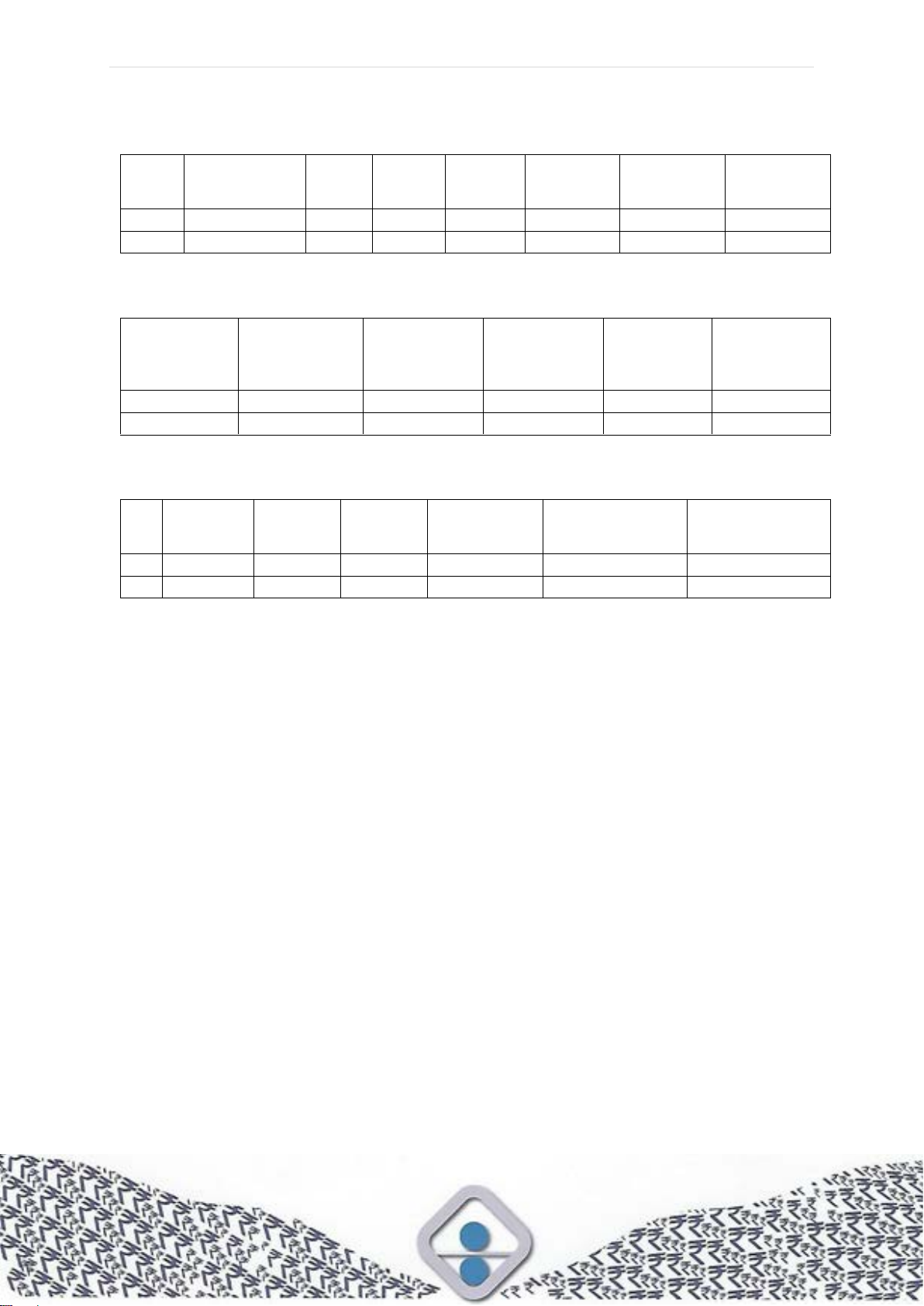
P a g e | 382
(v) Pending Inspection Notes
PO
No. &
Date
Vendor
Registration
Number
Vendor
Name
Date of
Delivery
Store At
which
delivered
CGM/SGM/O-
I-C Nominee
Name
User Dept.
Person
Name
Remarks
(vi) Pending Deliveries / Delayed Deliveries (same as 1 iv)
PO No. &
Date
Vendor
Registration
Number
Vendor Name
Date of
Delivery as per
Order
Indicative
Delivery
Date as per
Vendor
Whether
Notice sent to
Vendor
(vii) Pending Inspection Report (repeat of Item v)
PO
No.
Material
code
Vendor
Name
Date of
Delivery
Store at
which
delivered
User Dept.
Person name
Remarks

P a g e | 383
Annexure 19: Survey Report of Condemnation Committee
(Refer Para 14.1)
Date:
Item
No
Category
of item
(Security /
non-
security)
Particu
lars of
stores
Qty /
Weight
Book
Value /
Last Sale
Price /
Original
purchase
price (unit
price and
total
price)
Estimated
Sales
Price /
Value
Condition
and year
of
purchase
(if
applicable)
Recomm
ended
Mode of
Disposal
(Tender,
Public,
Action,
Sale etc.)
Remarks
Recommendation of Condemnation Committee:
(Signature) (Signature) (Signature)
Designation Designation Designation
Member 1 Member 2 Member 3
Remarks of Competent Authority:
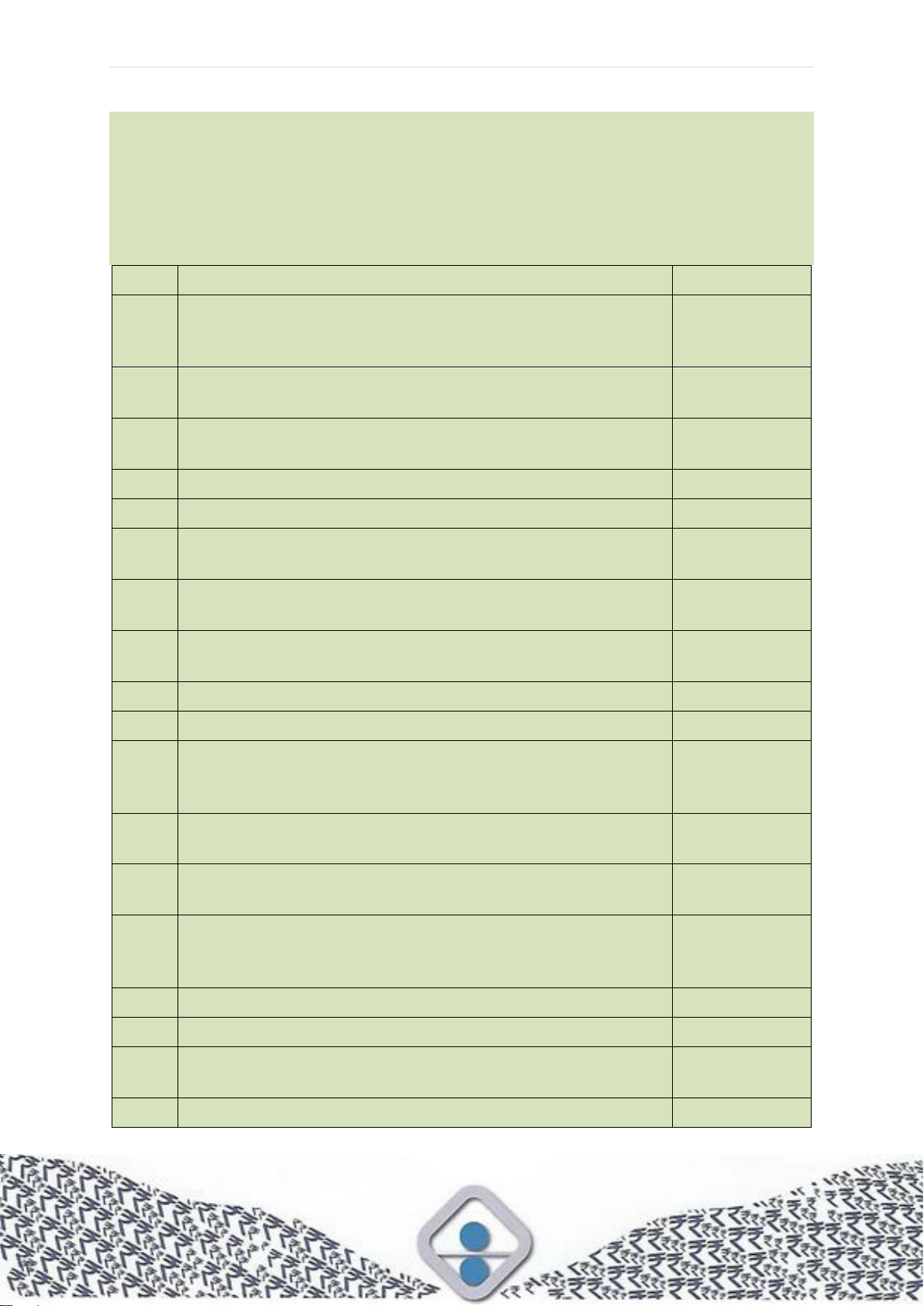
P a g e | 384
Annexure 20: Check-List for Bidders
(The following check-list may be made a part of the SBD; to be submitted by the
bidder as part of technical Bid)
This check-list is merely to help the bidders to prepare their bids; it does not over-ride
or modify the requirement of the tender. Bidders must do their own due diligence also.
Sl No
Documents submitted, duly filled, signed
Yes / No / NA
1
Section X - Tender Form (to serve as covering letter and
declarations applicable for both the Techno-commercial
bid and Financial bid)
2
Section XII - Bidder Information along with Power of
attorney and Registration Certificates etc.
2 (a)
Self-attested copy of Registration certificates etc. of the
firm, if asked
2 (b)
Self-attested copy of PAN
2 (c)
Self-attested copy of GSTIN registration(s)
2 (d)
Self-attested copy of Power of Attorney etc. authorizing
signatories on stamp paper to sign the bid, if asked
3
Section XVIII - Eligibility Declarations, along with
supporting documents
3 (a)
Self-attested copy of Registration certificate for bidders /
subcontractors from restricted neighbouring countries
3 (b)
Self-attested copy of MSME registration
3 (c)
Self-attested copy of Start-up registration / status
3 (d)
Self-attested copy of the certificate of Local Supplier status
for Make in India policy, from auditors / cost accountant in
case of Tenders above ₹10 Crore
4
Section XIV - OEM’s Authorization Form duly filled up (if
applicable to Bidder concerned)
4 (a)
Self-attested copy of Registration certificates etc. of the
OEM/principal
4 (b)
Self-attested copy of Power of Attorney etc. authorizing
signatories on stamp paper to sign Section XIV of OEM /
Principal, if asked
5
Section VI - List of Requirements - Compliance
6
Section VII - Technical Specifications - Compliance
6 (a)
Relevant documents like technical data, literature,
drawings, and other documents, at the option of Bidder
7
Conformity with capability criteria

P a g e | 385
Sl No
Documents submitted, duly filled, signed
Yes / No / NA
7 (a)
Documents attached supporting conformance to capability
criteria
8
Performance Statement
8 (a)
Documents / contracts supporting the performance
statement
9
Statement of Financial Standing
9 (a)
Audited Balance Sheet and Profit & Loss Statement
10
Terms and Conditions – Compliance (in e-Procurements)
10 (a)
Documents, if any, at the option of Bidder
11
This Checklist
12
Proof of submission of EMD or Bid Security Declaration
13
Section XX - Duly signed Integrity Pact, If applicable
14
Financial Bid
15
Any other requirements, if stipulated in the tender; or if
considered relevant by the Bidder

P a g e | 386
Annexure 21: Certificate for Proprietary Article Item
(Refer Para 4.5)
(1) Description of Articles : __________________________________
(2) Quantity / Annual Requirement : __________________________________
(3) Approximate cost, if known : __________________________________
(4) Maker’s name and address : __________________________________
(5) Name of Dealer / Stockists : __________________________________
(6) I approve the above purchase on PAC basis and I certify that,
(a) This is the only firm who is manufacturing / stocking this item
AND
(b) A similar article is not manufactured / sold by any other firm, which could
be used in lieu
(c1) No other make / brand will be suitable for following tangible reasons (like
OEM Spares)
_________________________________________________________
_________________________________________________________
_________________________________________________________
(c2) No other make / brand will be suitable for following intangible reasons (if
PAC was also given in the last procurement cycle, please also bring out
efforts made since then to locate more sources):
_________________________________________________________
_________________________________________________________
_________________________________________________________
Note: Tick to retain only one out of (b), (c1) or (c2) whichever is applicable and cross-out
others. Please do confirm (a) by ticking it without which PAC certificate will be invalid.
(7) History of PAC Purchases of this item for the last two purchases or purchases
made during last three years, whichever is the latest, may be given.
Date of Tender
Opening
Quantity decided
Basic Rate on
Order (₹)
Adverse
Performance
Reported if any
(8) Signature of Indenting Div/Dept Officer : _____________
(with date & designation)
(9) Signature of Indenting Div/Dept Head : _____________
(with date & designation)
(10) Signature of Approving Authority : _____________
(with date & designation)
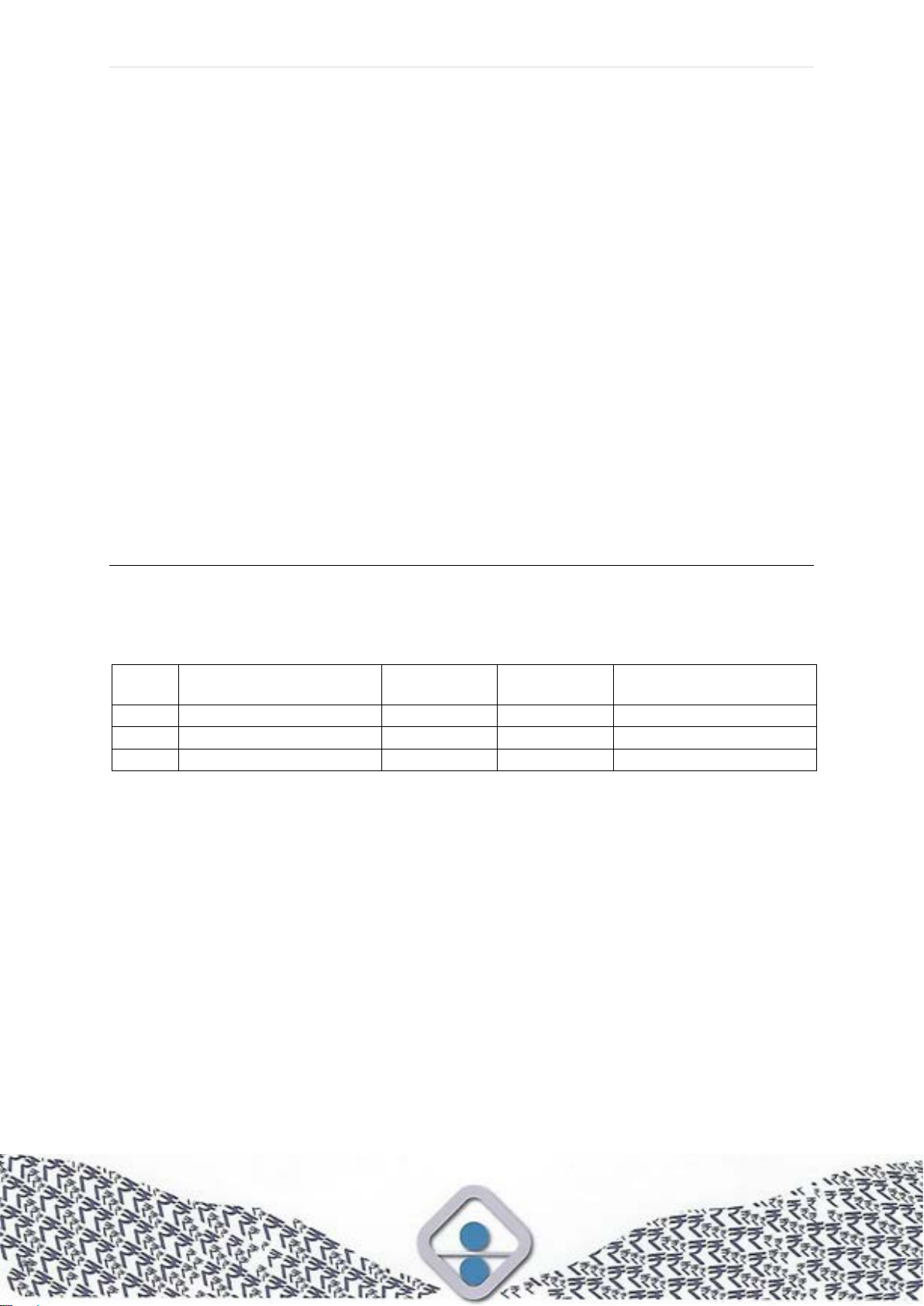
P a g e | 387
Annexure 22: Inspection Note
(Refer Para 12.10.1)
Stores Reference ___________________ Date ___________________
Please inspect the following materials early:
Purchase Order Reference and Date: ___________________________________________
Name of Supplier: __________________________________________________________
Description of Item: _________________________________ Unit: ____________________
Item Code: ______________ Category: ___________ Urgency level: __________________
Total Qty in Order: _____________________ Qty supplied before this lot: ______________
GRN Number & Date: __________________ Qty. supplied in this lot: __________________
Balance Qty now outstanding _____________________
Due Delivery Date: _______________________ Actually supplied this lot on ____________
Stores Officer
Inspection Note No. __________________ Date _______________
Following materials have been accepted / rejected as follows:
Sr.
No.
Description
Quantity
Accepted
Quantity
Rejected
Reasons for Rejection
Inspection Officer (1) Inspection Officer (2) Inspection Officer (3)
Copy to:
(i) Acc. with concerned papers
(ii) DGM (MMD)
(iii) Store Officer
(iv) User Section

P a g e | 388
Annexure 23: Check points for Tender Enquiry
(Refer Para 8.1)
Ensure that
1. Standard and correct forms are used for tender enquiry and all amendments
authorized to these forms from time to time are carried out before issue.
2. Time and date for receipt and opening of tenders are indicated as per the
guidelines.
3. The prescribed time been allowed to the tenderers to submit their quotations,
depending on the type of enquiry being issued
4. The period for which the tenders are to be kept open for acceptance been
indicated realistically keeping in view the nature of the store and the time lag
likely to be involved where consultation with the indentor on the suitability of
offers received would become necessary
5. Cost of tender documents and place for obtaining tender documents as indicated
6. The amount to be furnished by unregistered firms as EMD been calculated
correctly and indicated if this enquiry is for purpose against adhoc indent
7. Description of stores including specifications / drawing is correctly indicated in
the schedule
8. The sources from where the specification / drawing can be obtained are indicated
9. If stores are required as per BIS specification a clause for giving Purchase
Preference to ISI marked stores is included
10. If the store is required to non-standard specification / drawing, required number
of copies of drawings / specifications is available.
11. Where tender sample is required to be furnished authority to which it should be
sent for testing and the time within which the sample should be submitted are
indicated correctly in the enquiry.
12. Eligibility criteria are clearly mentioned.
13. If the store is reserved item for purchase from any particular sector of industry a
clear indication is given to that effect.
14. Inspecting Authority is correctly indicated.
15. In case of multi item / multi schedule enquiry, indicate whether evaluation is to
be made on the basis of individual item / schedule or all items / schedules as one
package.

P a g e | 389
16. The instructions to invitation to tender and conditions of contract applicable have
been correctly indicated in the enquiry.
17. Contract clauses contained in the standard forms used for issue of tender enquiry
and the general and Special Conditions of contract are not reproduced in the
tender enquiry.
18. The appropriate price variation clause in the enquiry where such a provision is
necessary has been given along with base price on which firms should offer their
prices.
19. Delivery required is correctly given. Where purchases of large quantities of stores
are involved delivery may be specified in instalment particularly in respect of
cases where contracts are likely to be concluded on variable price basis.
20. Insertion of standard pre-estimated Liquidated Damages clause in Tender
Enquiry for claim against delay in supplies.
21. Insertion of modified clause for cancellation of contract and effecting repurchase.
22. In case of purchase of imported stores the appropriate shipping clauses are
incorporated. Other special conditions viz. payment terms for FOB / FAS
contracts etc. should also be indicated in the enquiry.
23. That all other special conditions as per existing orders are incorporated in the
Tender Enquiry
24. Period of validity of performance guarantee whether to cover warranty period
also.

P a g e | 390
Annexure 24: Change Request Form
(Refer Para 1.3)
Request No: (Department name / date) Request :
Date :
Phone/Email :
Request Title :
Originator’s name :
Sponsor’s Name : [CGM/SGM/O-I-C’s name]
Request Description (indicate relevant clause number of the Manual)
Justification for amendments

P a g e | 391
Annexure 25: Incoterms
(Refer Para 11.18)
Incoterms or international commercial terms are a series of international sales terms
that are widely used throughout the world. They are used to divide transaction costs
and responsibilities between buyer and seller and reflect state-of-the-art transportation
practices. They closely correspond to the U.N. Convention on Contracts for the
International Sale of Goods.
Incoterms deal with the questions related to the delivery of the products from the seller
to the buyer. This includes the carriage of products, export and import clearance
responsibilities, who pays for what, and who has risk for the condition of the products
at different locations within the transport process. Incoterms are always used with a
geographical location and do not deal with transfer of title.
They are devised and published by the international Chamber of Commerce (ICC).
The English text is the original and official version of Incoterms 2000, which have been
endorsed by the United Nations Commission on International Trade Law (UNCITRAL).
Authorized translations into 31 languages are available from ICC national committees.
Group E - Departure:
• EXW Ex Works (named place): the seller makes the goods available at his
premises.
Group F - Main Carriage Unpaid:
• FCA Free Carrier (named place): the seller hands over the goods, cleared for
export, into the custody of the first carrier (named by the buyer) at the named
place. This term is suitable for all modes of transport, including carriage by air,
rail, road, and containerized / multi-modal transport.
• FAS Free Alongside Ship (named loading port): free Alongside Ship: the seller
must place the goods alongside the ship at the named port. The seller must clear
the goods for export this changed in the 2000 version of the Incoterms. Suitable
for maritime transport only.
• FOB Free On Board (named loading port): the classic maritime trade term, Free
On Board: seller must load the goods on board the ship nominated by the buyer,
cost and risk being divided at ship's rail. The seller must clear the goods for
export. Maritime transport only.
Group C - Shipment terms - Main Carriage Paid:
• CFR Cost and Freight (named destination port): seller must pay the costs and
freight to bring the goods to the port of destination. However, risk is transferred
to the buyer once the goods have crossed the ship's rail. Maritime transport only.
• CIF Cost, insurance and Freight (named destination port): exactly the same as
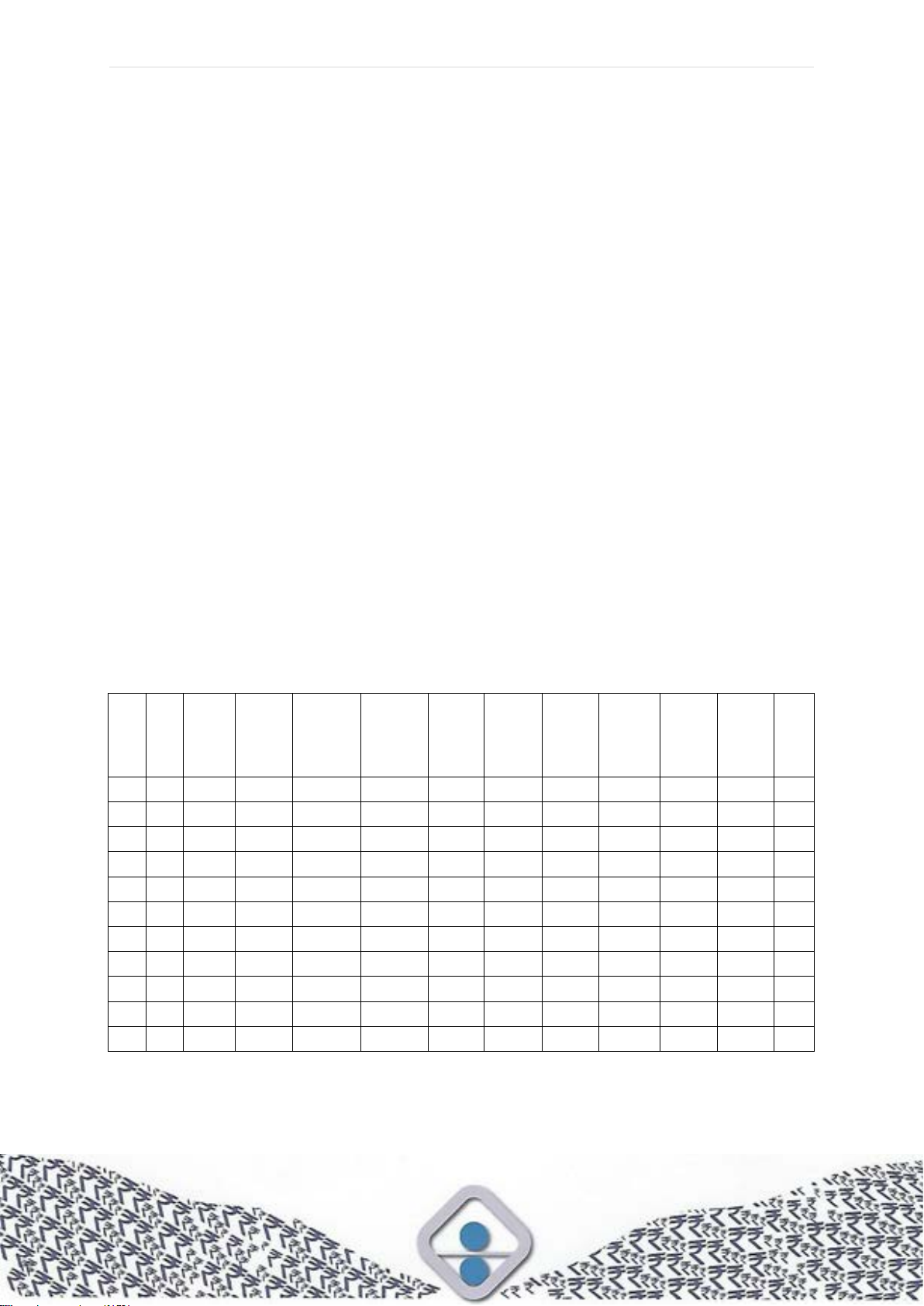
P a g e | 392
CFR except that the seller must in addition procure and pay for insurance for the
buyer. Maritime transport only.
• CPT Carriage Paid To (named place of destination): the general/
containerized/multimodal equivalent of CFR. The seller pays for carriage to the
named point of destination, but risk passes when the goods are handed over to
the first carrier.
• CIP Carriage and Insurance Paid to (named place of destination): the
containerized transport / multimodal equivalent of CIF. Seller pays for carriage
and insurance to the named destination point, but risk passes when the goods
are handed over to the first carrier.
Group D - Arrival terms:
• DAF Delivered at Frontier (named place)
• DES Delivered Ex Ship (named port)
• DEQ Delivered Ex Quay (named port)
• DDU Delivered Duty Unpaid (named destination place)
• DDP Delivered Duty Paid (named destination place)
For a given term, "Yes" indicates that the seller has the responsibility to provide the
service included in the price. "No" indicates it is the buyer's responsibility. If insurance
is not included in the term (for example, CFR) then insurance for transport is the
responsibility of the buyer.
Load
to
truck
Export
duty
payment
Transport
to
exporter’s
port
Unload to
truck at the
destination’s
port
Landing
charges at
destination’s
port
Transport
to
import’s
port
Landing
charges
at
Importer’s
port
Unload
onto
trucks
from the
importer’s
truck
Transport
to
destination
Insurance
Entry
Customs
clearance
Entry
Taxat
ion
EXW
No
No
No
No
No
No
No
No
No
No
No
No
FCA
Yes
Yes
Yes
No
No
No
No
No
No
No
No
No
FAS
Yes
Yes
Yes
Yes
No
No
No
No
No
No
No
No
FOB
Yes
Yes
Yes
Yes
Yes
No
No
No
No
No
No
No
CFR
Yes
Yes
Yes
Yes
Yes
Yes
No
No
No
No
No
No
CIF
Yes
Yes
Yes
Yes
Yes
Yes
No
No
No
No
No
No
CPT
Yes
Yes
Yes
Yes
Yes
Yes
No
No
No
No
No
No
CIF
Yes
Yes
Yes
Yes
Yes
Yes
No
No
No
Yes
No
No
DAF
Yes
Yes
Yes
Yes
Yes
Yes
No
No
No
No
No
No
DDU
Yes
Yes
Yes
Yes
Yes
Yes
Yes
Yes
Yes
Yes
No
No
DDP
Yes
Yes
Yes
Yes
Yes
Yes
Yes
Yes
Yes
Yes
Yes
Yes
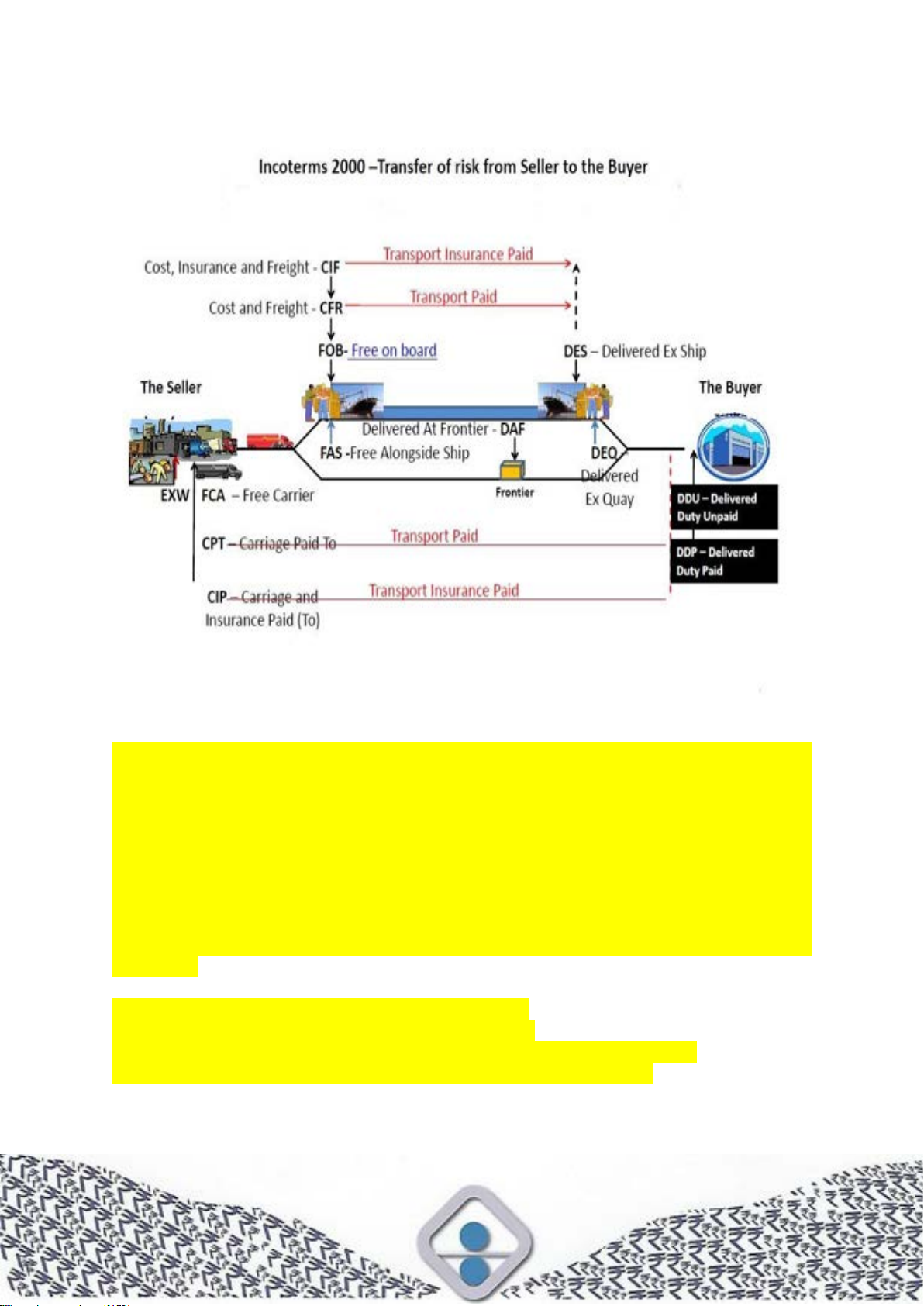
P a g e | 393
Incoterms rules mainly describe the tasks, costs and risks involved in the delivery of
goods from the seller to the buyer. The risk to goods (damage, loss, shortage, and so
on) is the responsibility of the person who holds the ‘title of goods’ at that point of time.
This may be different from actual physical possession of such goods. Normally, unless
otherwise defined, the title of goods passes from the supplier to the purchaser in
accordance with the terms of delivery (FOR, CFR, among others). The terms of
delivery, therefore, specify when the ownership and title of goods pass from the seller
to buyer, along with the associated risks. Incoterms as described by the International
Chamber of Commerce are an internationally accepted interpretation of the terms of
delivery. These terms of delivery allocate responsibilities to the buyer and seller, with
respect to:
(i) Control and care of the goods while in transit;
(ii) Carrier selection, transfers and related issues;
(iii) Costs of freight, insurance, taxes, duties and forwarding fees; and
(iv) Documentation, problem resolution and other related issues.
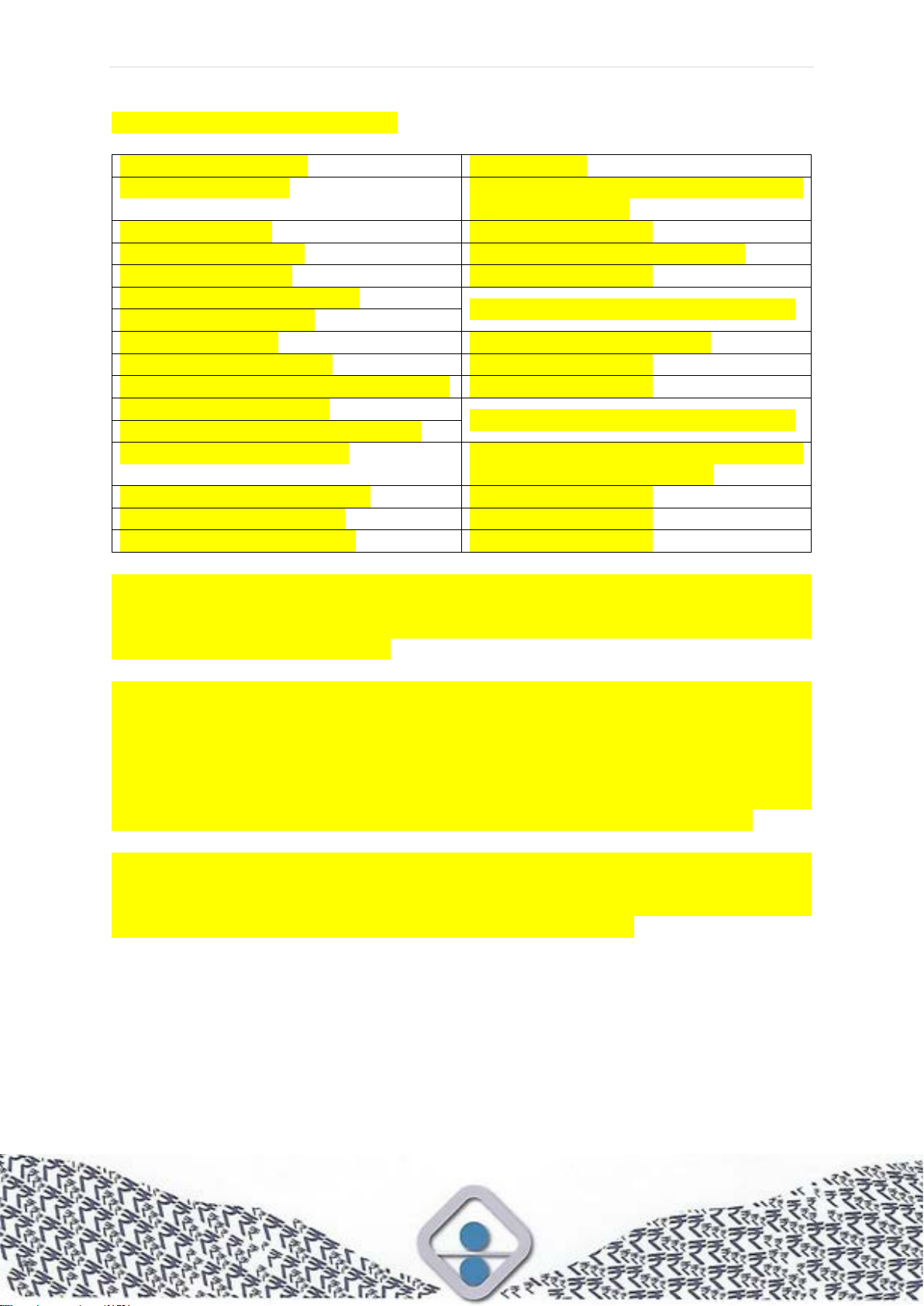
P a g e | 394
Incoterms and their applications
INCOTERMS Options
Applicable to
Ex-Group of Terms
Buyer takes full responsibility from
point of departure
EXW – Ex-Works
Any mode of transport
Free Group of Terms
Freight is not paid by the seller
FCA – Free Carrier
Any mode of transport
FAS – Free Alongside Ship
Sea and inland waterway transport only
FOB – Free On Board
C Group of Terms
Freight is paid by the seller
CPT – Carriage Paid To
Any mode of transport
CIP – Carriage and Insurance Paid to
Any mode of transport
CFR – Cost and Freight
Sea and inland waterway transport only
CIF – Cost, Insurance and Freight
Delivered Group of Terms
Seller takes responsibility from an
intermediate point onwards
DAT – Delivered At Terminal
Any mode of transport
DAP – Delivered At Place
Any mode of transport
DDP – Delivered Duty Paid
Any mode of transport
In use since 1936, Incoterms have been revised in 2010. The ICC has abolished
four Incoterms 2000 rules (DAF, DES, DEQ and DDU). Out of the 11 Incoterms
options (Incoterms 2010), seven apply to all modes of transportation whereas four
apply only to water transportation.
The options range from one extreme – the buyer takes full responsibility from point of
departure – to the other extreme: the seller is responsible all the way through delivery
to the buyer’s location. It is easiest to understand terms as per their nomenclature
groupings: ‘ex’ group of terms where the buyer takes full responsibility from point of
departure; ‘free’ group of terms in which the freight is not paid by the seller; ‘C’ group
of terms in which the freight is paid by the seller; and ‘delivered’ group of terms where
the seller takes full responsibility from an intermediate point to an arrival point.
Within national transportation, certain terms have assumed acceptance due to usage.
FOR has two versions: FOR/dispatching and FOR/destination (the buyer is
responsible from the nominated point mentioned till arrival point, as in Delivery at
Terminal). Infrequently, it is also used in road transport as FOT.

P a g e | 395
Annexure 26: Format for Extension of Delivery Period
(Refer Section II & III Chapter 11)
To Registered A/D or Speed Post
[Name and Address]
Sub: Contract No. _____________ dated _________ for the supply of _______________
against Indent No. _________dated _______________
Ref: Your letter No. ____________dated _______________
Dear Sir,
You have failed to deliver the Stores ____________ the entire quantity of Stores within
the contract delivery period as last extended upto ___________. In your letter under reply
you have asked for (further) extension of time for delivery. In view of the circumstances
stated in your said letter, the time for delivery is extended from ________ to _________
please note that amount equal to the pre-estimated / liquidated damages for delay in the
supply of the stores after the contract delivery period shall be recovered from you as
specified in the conditions of Contract for the extended period notwithstanding the grant
of this extension. You may now tender the Stores for Inspection (balance of the Stores) in
terms of this letter. Stores if any already tendered by you for Inspection but not inspected
will be now inspected accordingly.
2. The above extension of delivery date will also be subject to the following further
conditions.
(a) That no increases in price on account of any statutory increase in or fresh Imposition
of Customs Duty, Goods and Services Tax or on account of any other Tax or Duty
(including Custom Duty) leviable in respect of the Stores specified in the said
Acceptance of tender which takes place after (insert here the original delivery date
or the last unconditionally extended delivery date) shall be admissible on such of the
said Stores, as are delivered after the said date; and.
(b) That notwithstanding any stipulation in the contract for increase in price on any other
ground (including Foreign Exchange Rate Variation) no such increase which takes
place after (insert here the original delivery date or the last unconditionally extended
delivery date) shall be admissible on such of the said Stores as are delivered after
the said date.
(c) But nevertheless, the purchaser shall be entitled to the benefit of any decrease in
price on account of reduction in or remission of Customs Duty, Goods and Services
Tax or on account of any other Tax or Duty or on any other ground as stipulated in
the price variation clause or Foreign Exchange Rate Variation which takes place
after the expiry of the above mentioned date namely (insert here the original delivery
date or the last unconditionally extended delivery date)
3. All other terms and conditions of the contract remain unaltered. Please convey your
unconditional acceptance.
Yours faithfully,
For and on behalf of BRBNMPL,

P a g e | 396
Annexure 27: Formula for Price Variation Clause
(Refer pare 9.2)
(The formula for Price Variation should ordinarily include a fixed element, a material
element and a labour element. The figures representing the material element and the
labour element should reflect the corresponding proportion of input costs, while the
fixed element may range from 10 to 25%. That portion of the price represented by the
fixed element will not be subject to variation. The portions of the price represented by
the material element and labour element along will attract Price Variation.)
The formula for Price Variation will thus be: -
P
A
= P
O
{F + a (M
1
/M
0
) + b (L
1
/L
0
)} – P
O
100
P
A
is then adjustment amount payable to the supplier (a minus figure will indicate a
reduction in the Contract Price) on the date of supply.
P
O
is the Contract Price on the base date (which is taken as the date on which tender
is due to open).
F is the fixed element (as the percentage of the Total Price) not subject to Price
Variation.
a is the assigned percentage to the material element in the Contract Price.
b is the assigned percentage to the labour element in the Contract Price.
(F, a and b being percentages should total 100)
L
0
and L
1
are the average wage indices for the Quarter before the quarter in which
base month falls and for the Quarter before the quarter in which date of supply falls;
respectively. For example for a tender opening on 17
th
March 2010 (base date), L
0
would be average wage index for the Quarter of Oct-Dec 2009.
M
0
and M
1
are the material prices / indices as average of the month, two months prior
to the month in which base month falls and average of the month, two months prior to
the month in which date of supply falls; respectively. For example for a tender opening
on 17
th
March 2010 (base date), Mo would be prices / index as average of the month
of January 2010. All material prices / indices will be basic prices without GST and
without any other Central, State, Local Taxes and Duties.
If more than one major item of material is involved, the material element can be broken
up into two or three components such as Mx, My, Mz.
Following conditions would be applicable to Price Adjustment
i. Base dates shall be due dates of opening of price bids,
ii. Date of supply shall be the date of calculation / determination of the Price
variation.

P a g e | 397
iii. No price increase is allowed beyond original DP.
iv. Total adjustment will be subject to maximum ceiling of 10 %
v. No price adjustment shall be payable on the portion of contract price paid to the
Seller as an advance payment.
vi. No price adjustment shall be payable if this is less than or equal to 2% of PO.
vii. Payments for each supply would initially be made as per the base price
mentioned in the contract. Price Adjustment bill should be submitted only
quarterly for the supplies made during the quarter.
viii. Even if there is no Price Adjustment, Vendor must submit all relevant data to
prove that there is no downward Variation. In any case he must submit a
declaration as follows;
"It is certified that there has been no decrease in the price of Price Variation Indices
and in the event of any decrease of such indices during the currency of this contract
we shall promptly notify the same to the purchaser and offer requisite reduction in the
contract rate ".
Example of PVC Calculations
The example given here is hypothetical though the figures are factual. An Organization
while floating a tender for a “Machinery and Plant X”, due to be opened in September
2013 prescribed a PVC clause in its tender based on past experience. The time lag
between purchase of raw material and offering the equipment for inspection was
estimated at 3 months. Hence, in the Tender it was declared that the prices should be
quoted with base month of indices as June 2013 (3 months prior to date of opening).
Please note in comparison to our PVC clause that there are two materials – M and S.
The factors F = 20, a= 18 and 17 for two materials respectively and b=45.
Composite Material and Wage Escalation Clause for Machinery and Plant X - Base
Month: June 2013
The increase/decrease in the price of wagons quoted for would be governed by the
following escalation formula:
Pa = P0 / 100 – P0
Where,
Pa= Price Adjustment amount.
P0 = Base Price.
M1 =The index number of wholesale prices in respect of items “Iron & Semis”
20 + 18 + 17 + 45
M1/M0
S1/S0
L1/L0
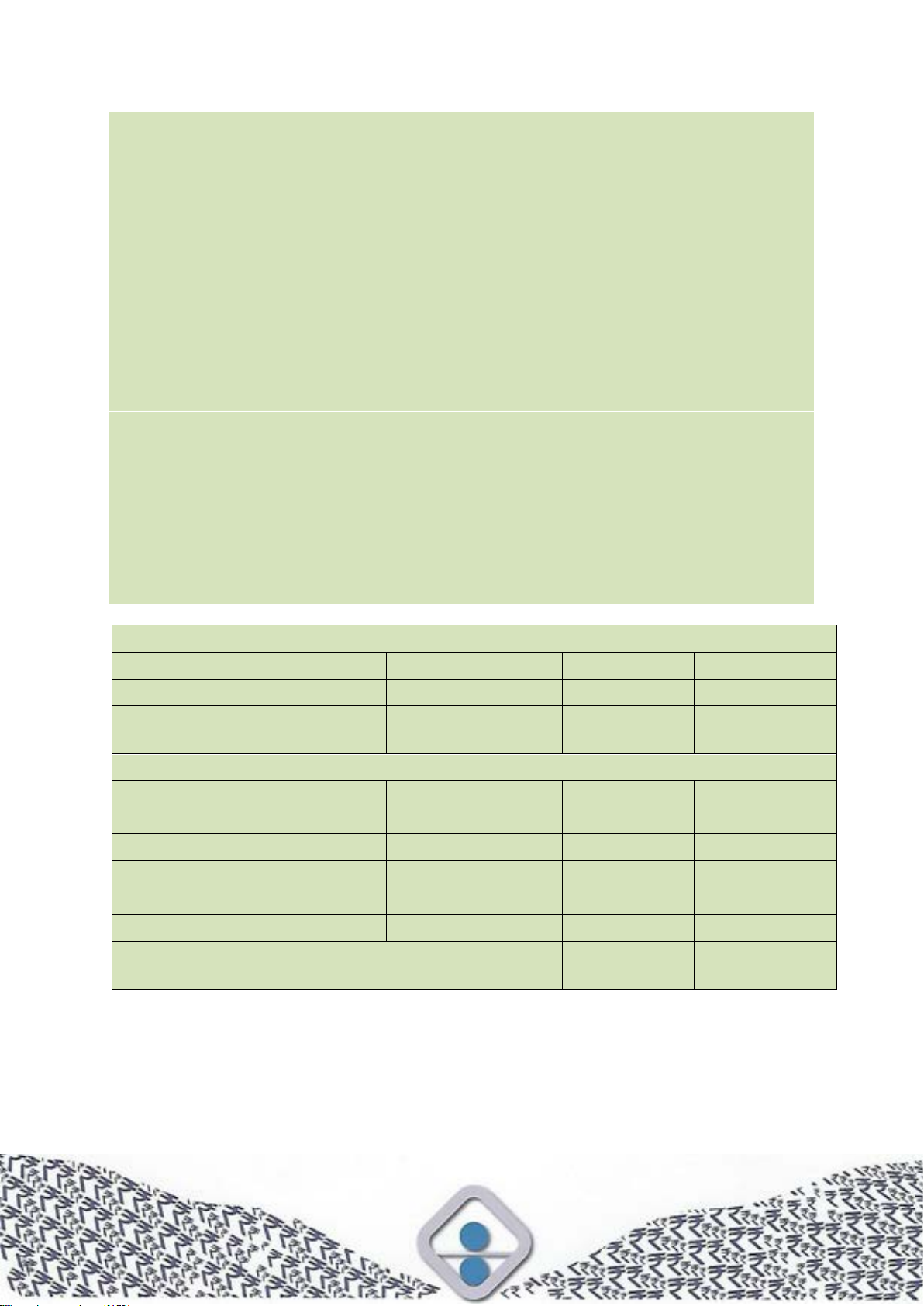
P a g e | 398
Base 2004-05 compiled by Economic Adviser to the Govt, of India for the calendar
month, three months prior to the call for inspection of the wagons. For instance,
wagons offered for inspection in November 2013 the Index number for the month
August 2013 will be applicable.
M0 = Above wholesale price index for “Iron & Semis” applicable for the Base month.
S1 =The index number of wholesale prices in respect of items “Steel Flat” Base 2004-
05 compiled by Economic Adviser to GoI for the calendar month, three months prior
to the call for inspection of the wagons. For instance, wagons offered for inspection in
November 2013 the Index number for the month August 2013 will be applicable.
S0 = Above wholesale price index for “Steel Flat” applicable for the Base month
L1 =All India consumer price index for industrial worker compiled by Labour Bureau,
Ministry of Labour for calendar month three months prior to the call for inspection of
the wagons. For instance, wagons offered for inspection in November 2013 the Index
number for August 2013 will be applicable.
L0 = All India consumer index Industrial workers applicable for the Base month.
The decision of the Chairman in regard to wage and material escalation under the
clause shall be final and not be subject to legal dispute or arbitration.
Calculation of updated Price of Machinery and Plant X
Tender was opened in
September 2013
Base Month
June, 2013
Last Purchase Basic Rate P0 =
₹1,174,500.00
Machinery and Plant X offered
for inspection in
May 2015
Hence Month
of Indices
February 2015
WPI Indices as noted from sources mentioned above
Commodity
Base Date:
Jun-13
Final Indices
date Feb-15
M = Iron & Semis
152.6
151.7
S = Steel Flat
152.6
147.6
L = Labour
231
253
Pa
0.036225426 x P0
₹42,546.76
Say ₹42,547
Price paid for Wagons supplied in May 2015
P0 + Pa
₹1,217,047.00
(round off)
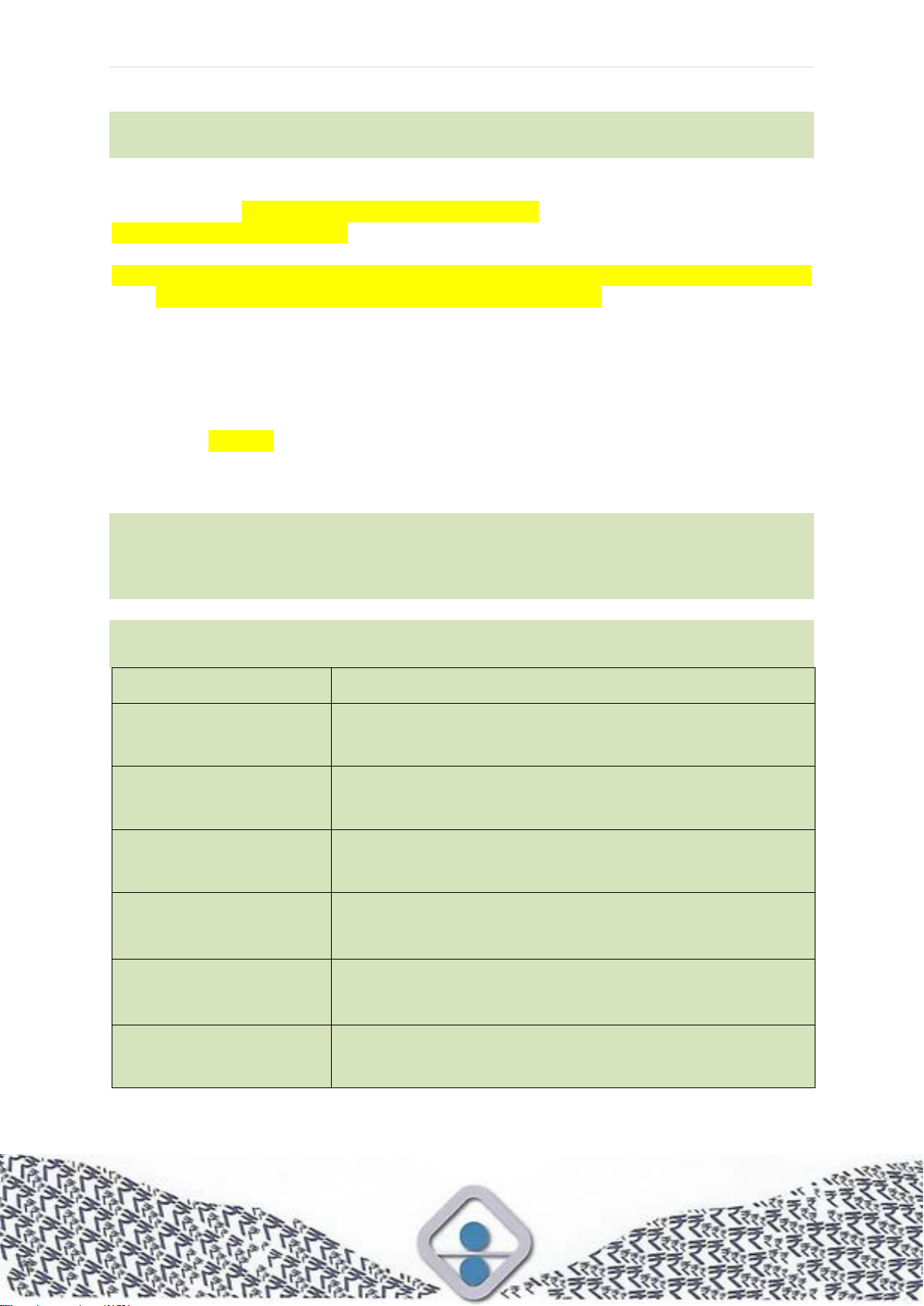
P a g e | 399
Annexure 28: Composition of Bid Opening, Tender Evaluation and other
Committees
(Refer Paras 3.3.1 & 3.3.2)
Composition of Bid Opening and Tender Evaluation committees for different types of
tenders (STE/LTE/NCB/ICB) shall be as given below subject to following:
1. Unless otherwise warranted, the same committee members can be retained for
both Bid Opening and Tender Evaluation Committees.
2. In a Tender Evaluation Committee, where user department is Finance, officer of
finance will act as user representative. Finance representative of TEC shall be
substituted by an officer of same level from other department.
3. Members of the Tender Evaluation Committee may be of the level as indicated
in the Table A or higher. In cases where some other officer is looking after the
charge of the member, same will represent in the TEC but CFA has to be the
officer designated or higher.
4. Officers who have been granted the benefit of personal promotion to the ranks
of AGM (PP) / DGM (PP) / GM (PP) / SGM (PP) may also be nominated as
members of different committees in the same rank as a regular AGM / DGM /
GM / SGM respectively.
A. Composition of Bid Opening and Tender Evaluation Committees
Criteria
Bid Opening and Tender Evaluation Committee Members
Tenders for which summary
quotations are solicited
DM/MGR (MMD), DM/MGR (F&A) and DM/MGR of User Dept.
……..(to be headed by a MGR)
Tenders for which DGM is
CFA as per DoP
MGR/AGM (MMD), DM/MGR (F&A) and MGR/AGM of User
Dept. ……..(to be headed by a AGM)
Tenders for which GM is
CFA as per DoP
AGM/DGM (MMD), MGR/AGM (F&A) and AGM/DGM of User
Dept. ……..(to be headed by an DGM)
Tenders for which
SGM/CGM is CFA as per
DoP
DGM/GM (MMD), AGM/DGM (F&A) and DGM/GM of User Dept.
……..(to be headed by a GM)
Tenders for which
Committee of CGMs/SGMs
is CFA as per DoP
GM/SGM (MMD), DGM/GM (F&A) and GM/SGM of User Dept.
……..(to be headed by a SGM/GM)
Tenders for which MD and
above is CFA as per DoP
GM/SGM (MMD), DGM/GM (F&A), GM/SGM of User Dept. and
CGM/SGM/O-I-C……..(to be headed by CGM/SGM/O-I-C)
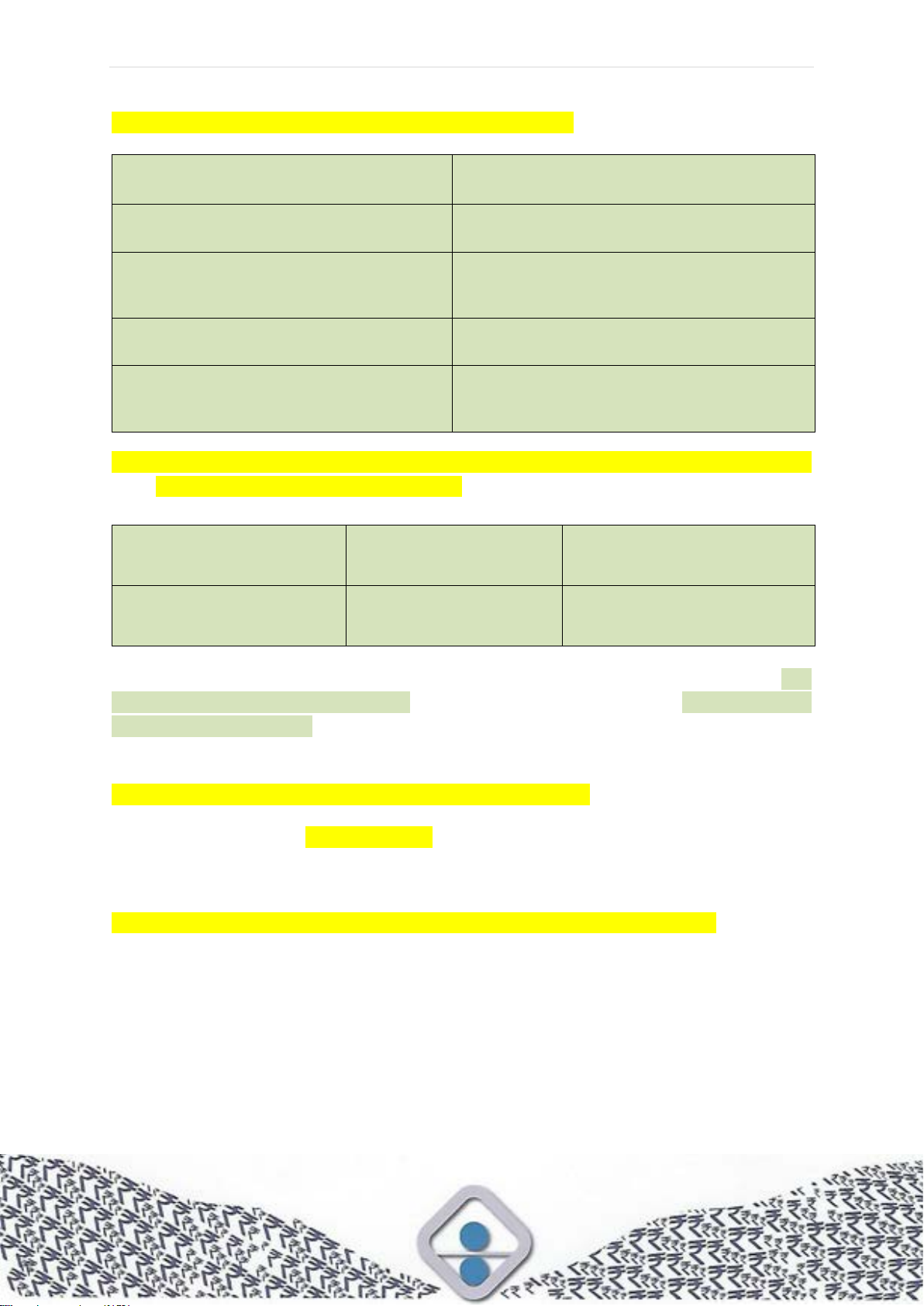
P a g e | 400
B. Composition of Condemnation Committee (CC)
Book Value of the goods proposed to be
condemned
Condemnation Committee
Amount as per net book value for which MD
or above is CFA to do procurement
CGM/SGM/O-I-C, SGM/GM (User), SGM/GM
(MMD), SGM/GM (Maint), GM/DGM (F&A)
Amount as per net book value for which
Committee of CGM/SGM is CFA to do
procurement
SGM/GM (User), SGM/GM (MMD), SGM/GM
(Maint), GM/DGM (F&A)
Amount as per net book value for which
CGM/SGM is CFA to do procurement
GM (User), GM (MMD), GM (Maint), GM / DGM
(F&A)
Amount as per net book value for which any
officer below the level of CGM/SGM is CFA
to do procurement
DGM (User), DGM (MMD), DGM (Maint),
DGM/AGM (F&A)
C. Approval of Special Limited Tender Enquiry (SLTE) for estimated values
above ₹25 Lakhs (refer Para 4.9.1):
Estimated Value of
Procurement
Delegation of Power to
approve the tender
Based on an Urgency
Certificate Signed by
More than ₹25 lakh
MD
GM (Prod), DGM (MMD), DGM
(F&A), CGM/SGM/O-I-C
Procurement on SLTE basis shall be carried out only when the CFA as per above has
accorded in-principle approval to the mode of procurement. Based on the
recommendation of CFA, procurement shall be carried out by following due processes
and as per delegation given in Section A of this Annexure 28.
D. Composition of Scrap Disposal Committee (SDC)
Based on the value (reserve price) of items for disposal as decided by the
Condemnation Committee, Scrap Disposal Committee shall process the disposal
cases. Same committee as per Annexure 28 (A) shall be the TEC.
E. Powers of CFA for approval of financial sanctions at BRBNMPL
The Competent Financial Authority at BRBNMPL is as per the Delegation of Power
(DOP) approved from time to time by the Board of Directors.
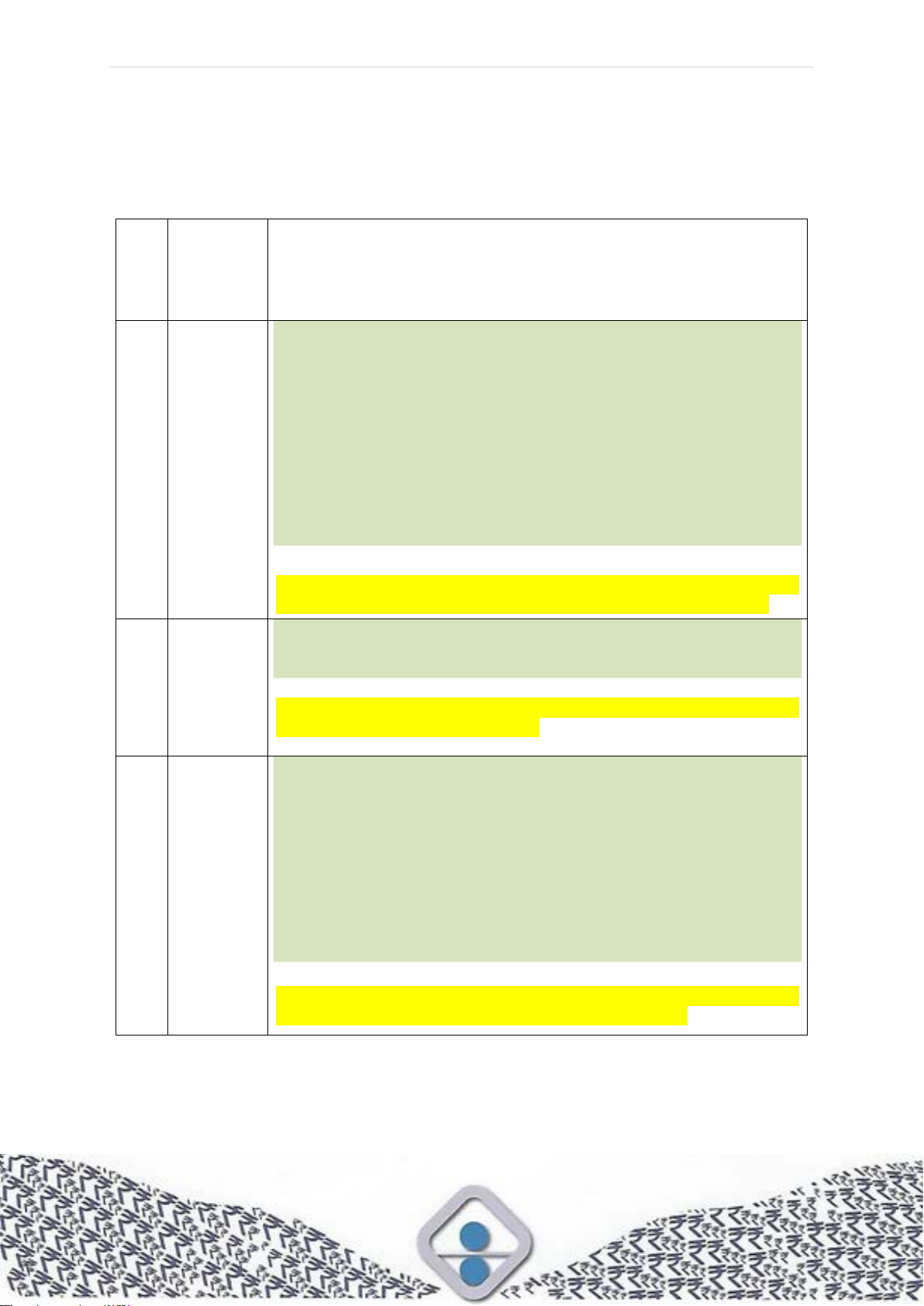
P a g e | 401
Annexure 29: Pre-qualification Criteria Summary
(Refer Para 7.8)
A. For procurement of Plant and Machinery / equipment
Sl
No
Particular
Qualification Criteria
(Security Items)
(Non-Security Items)
1
Experience & Past Performance
a) The Bidder (manufacturer or principal of authorised dealer/
distributor/representative – hereinafter referred simply as ‘The
Bidder’) should have regularly for at least the last three years,
ending 31
st
March (or any other year ending followed in relevant
country) of the previous financial year, manufactured and supplied
similar Plant and Machinery / equipment, and
b) The Bidder should have manufactured and supplied (/erected/
commissioned) at least one similar Plant and Machinery /
equipment during last five years, ending 31
st
March (or any other
year ending followed in relevant country) of the previous financial
year.
Relaxation on ‘Experience & Past Performance’ as per Govt.
guidelines should be explicitly mentioned in the tender document.
2
Capability –
Equipment &
Manufacturing
facilities
The Bidder must have an annual capacity to manufacture and supply
(/erect/commission) at least 50% of the offered quantity of Plant and
Machinery / Equipment rounded off to the next whole number.
Relaxation on ‘Capability’ as per Govt. guidelines should be explicitly
mentioned in the tender document.
3
Financial Standing
a) Average Annual Turnover of the Bidder during last three years,
ending on 31
st
March (or any other year ending followed in relevant
country) of the previous financial year, should be at least 30% of
the estimated cost of the offered quantity of the item.
b) The net worth of the Bidder (i) should not be negative as on 31
st
March (or any other year ending followed in relevant country) of the
previous financial year and also (ii) should have not eroded by more
than 30% year-on-year in the last three years, ending on 31
st
March
(or any other year ending followed in relevant country) of the
previous financial year.
Relaxation on ‘Average Annual Turnover’ as per Govt. guidelines
should be explicitly mentioned in the tender document.
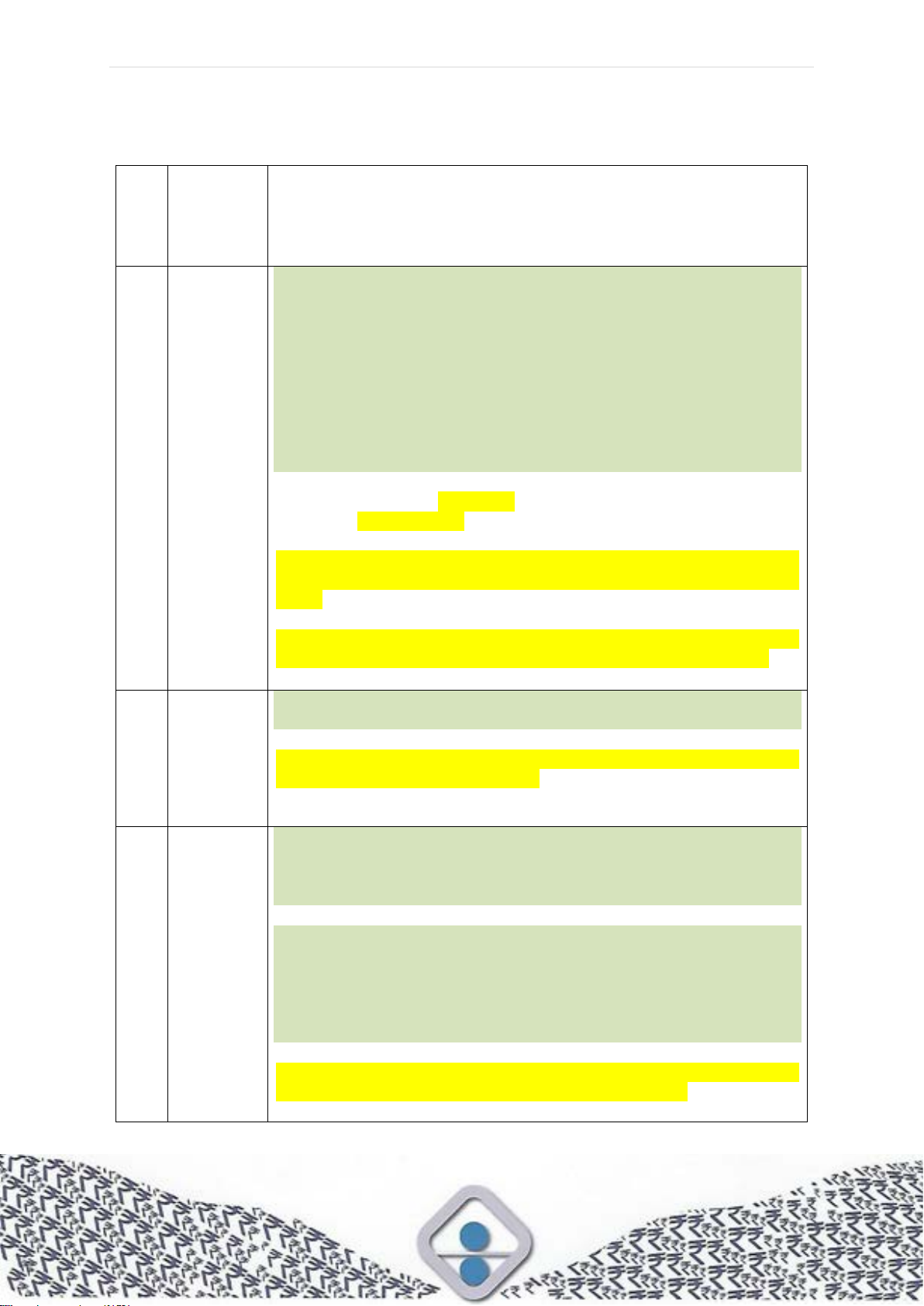
P a g e | 402
B. For procurement of items other than Plant and Machinery / equipment
Sl
No
Particular
Qualification Criteria
(Security Items)
(Non-Security Items)
1
Experience & Past Performance
a) The Bidder (manufacturer or principal of authorised dealer/
distributor/representative – hereinafter referred simply as ‘The
Bidder’) should have regularly for at least the last three years,
ending 31
st
March (or any other year ending followed in relevant
country) of the previous financial year, manufactured and supplied
the item, and
b) The Bidder should have manufactured and supplied in any one
year during the last five years, ending 31
st
March (or any other year
ending followed in relevant country) of the previous financial year
at least 30% of the offered quantity of the item.
In case of multiple schedules in a tender, this criterion shall be
applicable schedule wise.
In case of ICB/GTE for security-sensitive items, the bidder must have
supplied such products to at least two countries during the last five
years.
Relaxation on ‘Experience & Past Performance’ as per Govt.
guidelines should be explicitly mentioned in the tender document.
2
Capability –
Equipment &
Manufacturing
facilities
The Bidder must have an annual capacity to manufacture and supply
at least 30% of the offered quantity of the item.
Relaxation on ‘Capability’ as per Govt. guidelines should be explicitly
mentioned in the tender document.
3
Financial Standing
a) Average Annual Turnover of the Bidder during last three years,
ending on 31
st
March (or any other year ending followed in relevant
country) of the previous financial year, should be at least 30% of
the estimated cost of the offered quantity of the item.
b) The net worth of the Bidder (i) should not be negative as on 31
st
March (or any other year ending followed in relevant country) of the
previous financial year and also (ii) should have not eroded by more
than 30% year-on-year in the last three years, ending on 31
st
March
(or any other year ending followed in relevant country) of the
previous financial year.
Relaxation on ‘Average Annual Turnover’ as per Govt. guidelines
should be explicitly mentioned in the tender document.
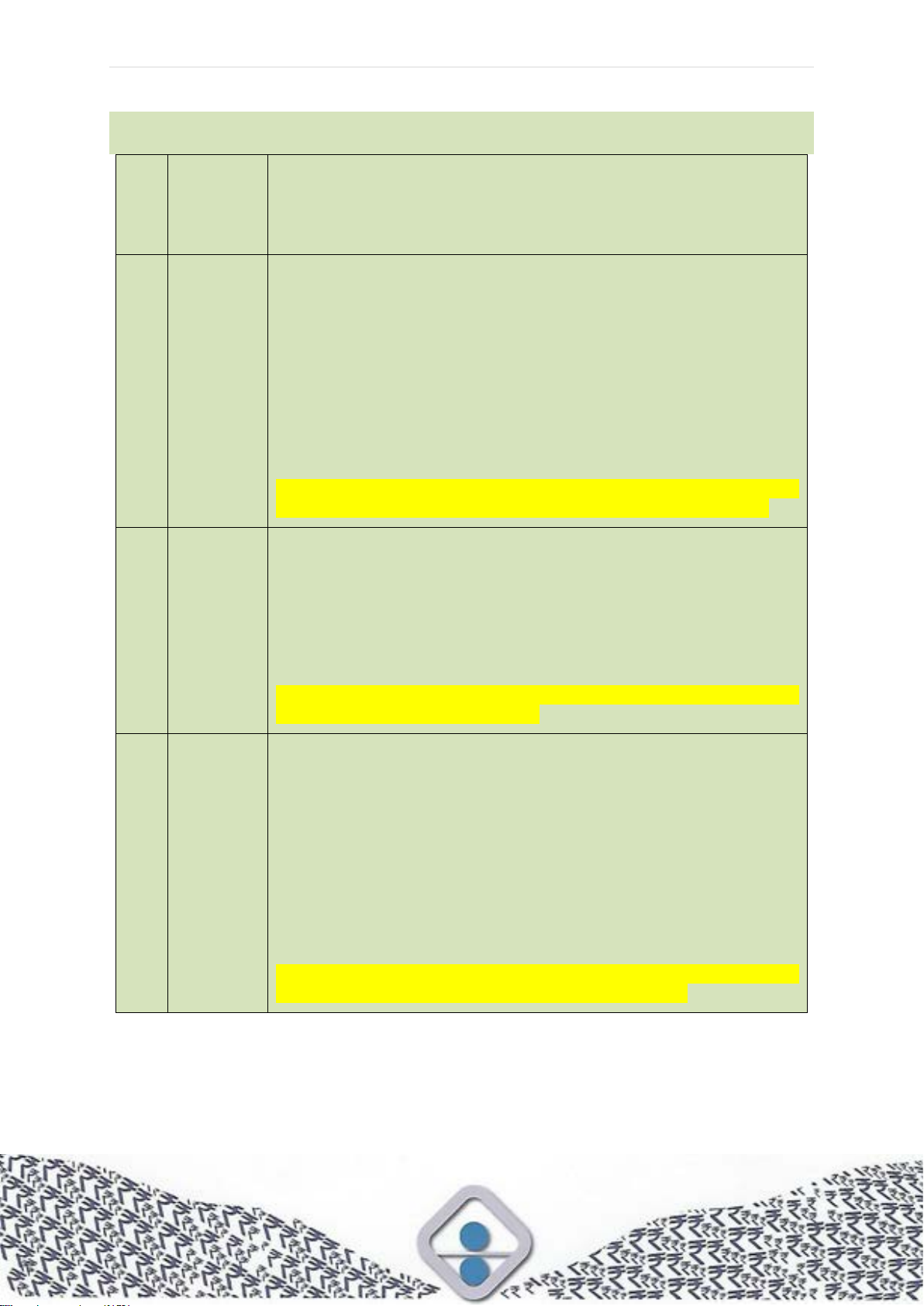
P a g e | 403
C. For Procurement of Works
Sl
No
Particular
Qualification Criteria
1
Experience & Past Performance
The Bidder should have experience of having successfully completed
similar works during the last 7 years ending on 31
st
March (or any other
year ending followed in relevant country) of the previous financial year
a) Three similar completed works each costing not less than the
amount equal to [40% of the estimated cost]; or
b) Two similar completed works each costing not less than the amount
equal to [50% of the estimated cost]; or
c) One similar completed work costing not less than the amount equal
to [80% of the estimated cost]
Relaxation on ‘Experience & Past Performance’ as per Govt.
guidelines should be explicitly mentioned in the tender document.
2
Capability – Equipment
& Manufacturing
facilities
The Bidder should preferably be enlisted with State/Central Public
Works Department (PWD) or Military Engineering Services (MES) or
any other Government / PSU / Autonomous bodies.
Note: Such enlistment shall be used for value of tenders up to ₹20
crores. For the tenders above ₹20 crores any contractor even if not
enlisted as above can participate in the tenders.
Relaxation on ‘Capability’ as per Govt. guidelines should be explicitly
mentioned in the tender document.
3
Financial Standing
a) Average Annual Turnover of the Bidder during last three years,
ending on 31
st
March (or any other year ending followed in relevant
country) of the previous financial year, should be at least 30% of
the estimated cost.
b) The net worth of the Bidder (i) should not be negative as on 31
st
March (or any other year ending followed in relevant country) of the
previous financial year and also (ii) should have not eroded by more
than 30% year-on-year in the last three years, ending on 31
st
March
(or any other year ending followed in relevant country) of the
previous financial year.
Relaxation on ‘Average Annual Turnover’ as per Govt. guidelines
should be explicitly mentioned in the tender document.
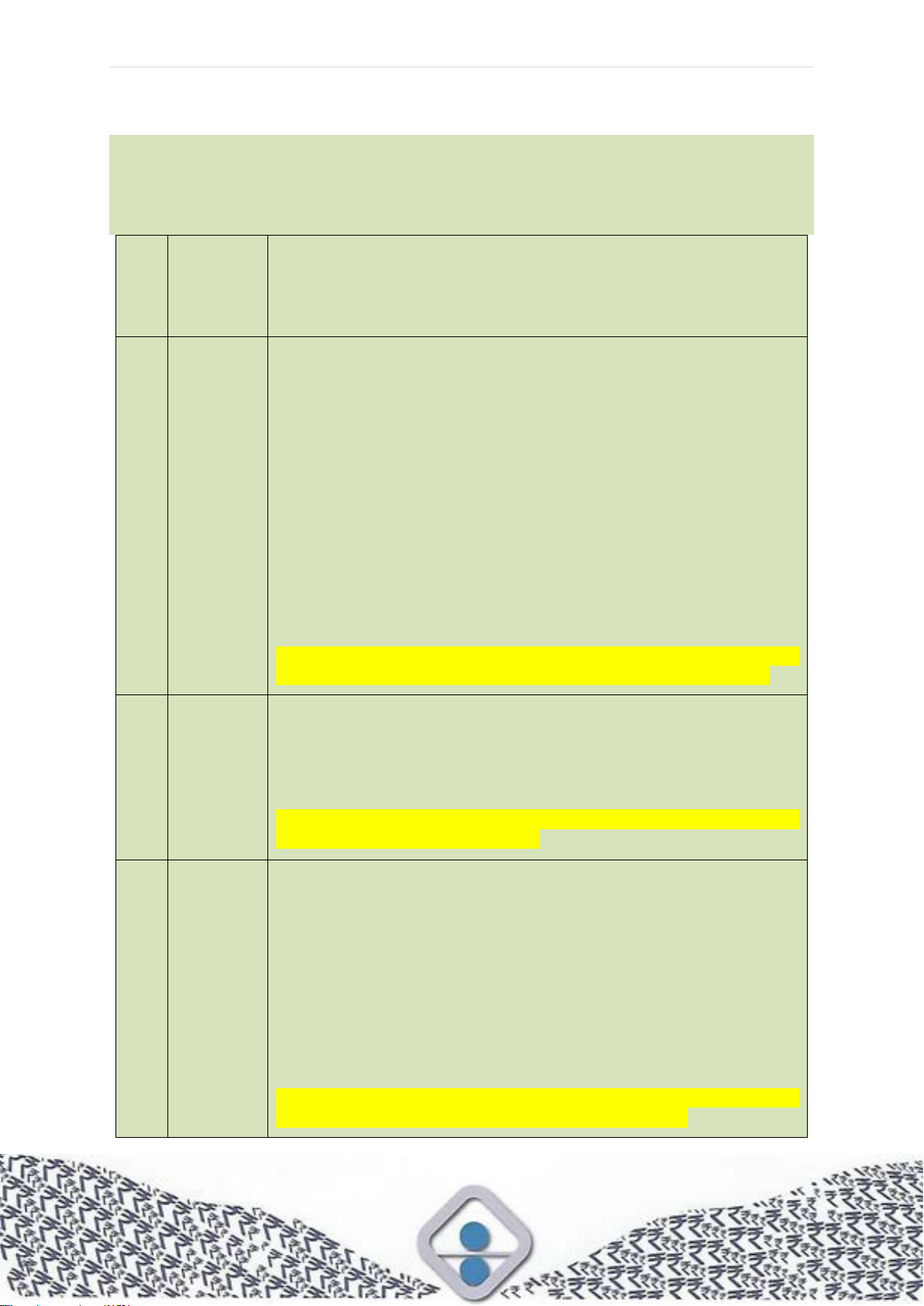
P a g e | 404
D. For Procurement of Services
These are sample pre-qualification criteria. Pre-qualification criteria may be framed as
per tender requirement in line with provisions of Chapter 18.
Sl
No
Particular
Qualification Criteria
1
Experience & Past Performance
(i) For Manpower Services
The Bidder should have experience of having successfully supplied
manpower services of at least 30% of annual man-days requirement
or tender man-days requirement, whichever is less, in any one of the
last five years ending on ending 31
st
March (or any other year ending
followed in relevant country) of the previous financial yea[r.
(ii) For other Services (Hiring of Vehicles, Legal services,
Transaction advisory, Fund Management Services etc.)
The Bidder should have experience of having successfully completed
similar kind of services for the value of at least 30% of the annual
requirement or tender requirement, whichever is less, in any one of
the last five years ending on 31
st
March (or any other year ending
followed in relevant country) of the previous financial year.
Relaxation on ‘Experience & Past Performance’ as per Govt.
guidelines should be explicitly mentioned in the tender document.
2
Capability
The bidder must have capability to provide the relevant services.
It would be an added advantage if the bidder has at least one years’
experience of providing similar type of services to Central / State
Government / PSUs / Nationalised Banks / Reputed Organisations.
Relaxation on ‘Capability’ as per Govt. guidelines should be explicitly
mentioned in the tender document.
3
Financial Standing
c) Average Annual Turnover of the Bidder during last three years,
ending on 31
st
March (or any other year ending followed in relevant
country) of the previous financial year, should be at least 30% of
the estimated cost.
d) The net worth of the Bidder (i) should not be negative as on 31
st
March (or any other year ending followed in relevant country) of the
previous financial year and also (ii) should have not eroded by more
than 30% year-on-year in the last three years, ending on 31
st
March
(or any other year ending followed in relevant country) of the
previous financial year.
Relaxation on ‘Average Annual Turnover’ as per Govt. guidelines
should be explicitly mentioned in the tender document.

P a g e | 405
Explanatory Notes under Annexure 29: Pre-qualification Criteria
1. Note for Bidders
(i) All experience, past performance and capacity/capability related data should be
certified by the authorized signatory of the bidder firm. The credentials regarding
experience and past performance to the extent required as per eligibility criteria
submitted by bidder should be verified from the parties for whom work has been
done.
(ii) Wherever required, financial standing data should be certified by certified
accountant’s e.g. Chartered Accounts (CA) in India and Certified Public
Accountants/Chartered Accountants of other countries. Statement of Financial
Standing to be submitted by bidders in the prescribed format as per Annexure
10: Statement of Financial Standing.
(iii) Submission of audited books of accounts bearing valid UDIN is required for firms
whose sales, turnover or gross receipts is more than ₹1 crore. However, for firms
whose cash receipts are limited to 5% of the gross receipts or turnover, and
whose cash payments are limited to 5% of the aggregate payments, the
threshold limit of ₹1 crore for tax audit is increased to ₹10 crore with effect from
AY 2021-22 (FY 2020-21).
(iv) Firms whose sales, turnover or gross receipts is less than ₹1 crore, submission
of audited books of accounts is not necessary. However, they have to submit the
following documents along with the bid in order to ensure the eligibility of the
bidder against the financial standing criteria: -
• The bidders may submit a statement of their turnover and net worth certified
by CA bearing a valid UDIN, or
• The bidders may submit a self-certified statement of their turnover and net
worth along with IT returns and ITR acknowledgement.
• The bidders are required to provide the Xerox copies of supply orders
executed by the firm or the certificate issued by the customers to that effect.
(v) In case of Indian Bidders/companies (manufacturer or principal of authorised
dealer/distributor /representative) who have been restructured by Banks in India,
under the statutory guidelines, they would be deemed to have qualified the
Financial standing criteria considering the institutional financial backing available
to them.
2. Development / Insufficient Market Category / Exceptional One-Off Cases /
Newly / Recently introduced items
(i) For Development / Insufficient Market Category / Exceptional One-Off Cases /
Newly / Recently introduced items, PQC should be decided with the approval of
CGM/SGM/O-I-C in individual cases.
(ii) Development/Insufficient Market Capacity categories are those items which are
either being newly developed where vendors are yet to be developed or for

P a g e | 406
new/existing items where the capacity available in market is inadequate
compared to our annual requirements. Exceptional one-off cases are such items
/ Plant & Machinery which are procured infrequently (say once in 3 years or
longer periods).
3. Explanatory Note for Evaluation of Financial Standing:
(i) Average Annual Turnover: The estimated annual turnover will be decided
based on the estimated cost of the offered quantity of the item. The criterion has
to be met by the bidders except those who are eligible for relaxation as per Govt.
guidelines. If the bidder is not qualifying in the criteria, then the bidder will be
allowed to take the financial support from the Holding / Parent Company for
qualifying in the criteria. However the bidder is required to qualify in all other
criteria like experience, past performance and capacity/capability as specified in
the tender.
(ii) Financial Loss: Financial Loss criteria has been discontinued as a qualifying
criteria vide OM No. F.1/16/2020-PPD dt. 11/02/2021 issued by the Procurement
Policy Division under the Dept. of Expenditure, Ministry of Finance, Govt. of India.
(iii) Net worth: For the purpose of financial analysis of net worth, if the bidder is not
qualifying in the criteria, then the bidder will be allowed to take the financial
support from the Holding / Parent Company for qualifying in the criteria. However,
the bidder is required to qualify in all other criteria like experience, past
performance and capacity/capability as specified in the tender.
Note: The clause regarding taking support of Holding/Parent Company for
meeting Financial Standing criteria has to be declared upfront in the tender for it
to be considered while evaluating financial standing.
(iv) Exceptional One-off Cases: For the purpose of evaluation of financial standing
of the bidder, criteria of Financial Loss shall be relaxed and only Net Worth
criteria shall be considered in Exceptional One-off Cases on case to case basis.
4. Relaxation under Make in India Policy of Govt. of India:
It should be ensured that eligibility criteria like Experience and Past Performance,
Capability and Turnover do not result in unreasonable exclusion of Local Suppliers
who would otherwise be eligible, beyond what is essential for ensuring quality and
creditworthiness of the supplier. For Local Suppliers, proof of supplying similar items
to other countries or proof of export is not required. Such relaxed criteria must be
declared upfront in the tender document.
5. Manufacture under license / technology collaboration agreements with
phased indigenization under ‘Make in India’
(i) Suppliers may be exempted from meeting the stipulated local content if the
product is being manufactured in India under a license from a foreign
manufacturer who hold intellectual property rights and where there is a
technology collaboration agreement / transfer of technology agreement for

P a g e | 407
indigenous manufacture of a product developed abroad with clear phasing of
increase in local content within the validity of the contract.
(ii) In procurement of all goods, services or works in respect of which the Nodal
ministry has not notified that there is sufficient local capacity and local
competition, procuring entities may prescribe in their respective tenders that
foreign companies may participate in the tender through a subsidiary or a joint
venture with an Indian company. Such subsidiaries/joint ventures may be
exempted from meeting the stipulated minimum local content requirement,
provided there is clear phasing of increase in local content within the validity of
the contract. Such subsidiaries/joint ventures must obtain an exemption letter
and submit the same along with their bid to avail the exemption.
6. Relaxation of Norms for MSEs and Startups:
Criteria of prior Experience and Turnover may be relaxed for MSEs and all Startups
(whether MSEs of otherwise) subject to meeting of Quality and Technical
Specifications as per tender conditions. Such relaxed criteria must be declared upfront
in the tender document.
However, there may be circumstances (like procurement of items related to public
safety, health, critical security operations and equipment, etc.) where procuring entities
may prefer the vendors to have prior experience rather than giving orders to new
entities. For such procurements, wherever adequate justification exists, the procuring
entities may not relax the criteria of prior Experience/Turnover.
7. Applicability in Special Cases:
a) Applicability to ‘Make in India’:
(i) Bidders (manufacturer or principal of authorised representative) who have
a valid/ approved ongoing ‘Make in India’ agreement/ program and who
while meeting all other criteria above, except for any or more of sub-criteria
in Experience and Past Performance above, would also be considered to
be qualified provided:
a) their foreign ‘Make-in-India’ associates meets all the criteria above
without exemption, and
b) the Bidder submits appropriate documentary proof for a valid/
approved ongoing ‘Make in India’ agreement/program.
c) the bidder (manufacturer or principal of authorised representative)
furnishes along with the bid a legally enforceable undertaking jointly
executed by himself and such foreign Manufacturer for satisfactory
manufacture, Supply (and erection, commissioning if applicable) and
performance of ‘The Product’ offered including all warranty obligations
as per the general and special conditions of contract.
b) Participation of Authorised Representative in the tender:

P a g e | 408
(i) Bids of bidders quoting as authorised representative of a principal
manufacturer would also be considered to be qualified, provided:
a) their principal manufacturer meets all the criteria above without
exemption, and
b) the principal manufacturer furnishes a legally enforceable tender-
specific authorisation in the prescribed form assuring full guarantee
and warranty obligations as per the general and special conditions of
contract; and
c) the bidder himself should have been associated, as authorised
representative of the same or other Principal Manufacturer for same
set of services as in present bid (supply, installation, satisfactorily
commissioning, after sales service as the case may be) for same or
similar ‘Product’ for past three years ending on ‘The Relevant Date’.
c) For Existing Successful Past Suppliers: In case the bidder who is a successful
past supplier of the goods in at least one of the recent past three
procurements, who do not meet any or more of the Pre-Qualification Criteria,
would also be considered to be qualified in view of their proven credentials, for
the maximum quantity supplied by him in such recent past.
8. Doctrine of Substantial Compliance:
a) The Pre-Qualification Bidding (PQB) and Pre- Qualification Criteria (PQC) are for
shortlisting of sources who are competent to perform this contract to ensure best
value for money from expenditure of Public Money. This process is neither
intended to bestow any entitlement upon nor to create any rights or privileges for
the Bidders, by way of overly hair-splitting or viciously legalistic interpretations of
these criteria, disregarding the very rationale of the PQB and PQC. Keeping this
caveat in view, interpretation by Procuring Entity would be based on common
usage of terminologies and phrases in public procurement in accordance with
the ‘Doctrine of Substantial Compliance’ and would be final.
In laymen terms, the Doctrine of Substantial compliance means a level of
compliance with the requirements that is substantial in nature except in some
minor or inconsequential aspects which cannot be described as the “essence” or
the “substance” of the requirements.
b) Along with all the necessary documents/certificates required as per the tender
conditions, the bidder should furnish a brief write-up, backed with adequate data,
explaining his available capacity (both technical and financial), for
manufacture and supply of the required goods/equipment, within the specified
time of completion, after meeting all their current commitments.
9. Joint Ventures and Holding Companies:
(i) Credentials of the partners of Joint ventures cannot (repeat cannot) be clubbed
for the purpose of compliance of PQC in supply of Goods/Equipment, and each
partner must comply with all the PQC criteria independently.

P a g e | 409
(ii) However, for the purpose of qualifying the Financial Standing Criteria, the
Financial Standing credentials of a Holding/Parent Company can be clubbed with
only one of the fully owned subsidiary bidding company, with appropriate legal
documents proving such ownership provided that such Holding Company/Parent
Company
a) gives its written consent permitting the bidder to rely on its financial standing;
b) gives a written confirmation to BRBNMPL stating that it has not given its
consent to any other bidder to rely on its financial standing and that it will
not permit any other bidder to rely on its financial standing; and
c) gives an undertaking to BRBNMPL that it has not submitted and will not
submit a bid (either jointly or severally) in response to the tender.
(iii) An entity will be deemed as a Holding Company/Parent Company of the bidder
if and only if such entity
a) is validly registered as an incorporated company under the applicable
jurisdictional laws;
b) holds more than 50% of the voting share capital of the bidder; and
c) Has the right to nominate majority directors on the board of the bidder and
has pursuant to such right appointed majority directors on the board of the
bidder. Concurrently, the entity for which the Holding Company/Parent
Company fulfils the above criteria shall be construed as the Subsidiary of
such Holding Company/Parent Company.
(iv) Bidder cannot rely on the financial standing / credentials of the Holding
Company/Parent Company if the bidder does not fulfil the other eligibility criteria
like experience, past performance and capacity/capability to satisfy the technical
requirements.
(v) If a bidder chooses to rely on the financial standing of its Holding/Parent
Company, both the Holding/Parent Company and the bidder will have to jointly
submit a bid in response to the tender. Accordingly, if successful, both entities
(i.e. the bidder and its Holding/Parent Company) will be required to execute all
bid related documents and contract documents and Holding/ Parent Company
will be jointly and severally liable for performance of the obligations by bidder
under the contract documents.
(vi) In case the bidder chooses to rely on the financial standing of its Holding/Parent
Company, the following financial statements of the Holding/Parent Company and
the bidder are required to be submitted as evidence of their financial standing:
a) Latest standalone audited financial statements of the bidder;
b) Latest standalone audited financial statements of the Holding/Parent
Company,
c) Latest consolidated audited financial statements of the Holding/Parent
Company; and

P a g e | 410
d) Shareholding details and board composition of the bidder and a written
undertaking from the Holding / Parent Company and the bidder confirming
that the Holding / Parent Company has an unbridled right to appoint majority
directors on the board of the bidder and has pursuant to such right
appointed majority directors on the board of the bidder.
(vii) In any case, the bidder alone or the bidder and the Holding/Parent Company (in
case of a joint bid) should provide the annual report including audited balance
sheet and the profit and loss account for the last three years.
(viii) In addition, in case of a joint bid, the consolidated balance sheet of the parent
company of the Holding/Parent Company, if any, should also be submitted for
the last three years.
(ix) Bidder shall not be entitled to utilize the manufacturing facilities of the
Holding/Parent Company or any third party for supply. It is further clarified that
the bidder must ensure that all manufacturing will only be undertaken in its own
facilities and not in the facilities of the Holding/ Parent Company or any other
third party.
(x) There shall be only one bid from each Group. The reference to term ‘Bidder’ shall
not mean a reference to the ‘Holding Company/Parent Company’ even in case
of a joint bid with Holding/Parent Company. Even if the Bidder proposes to rely
on the financial standing of its Holding/Parent Company, such bid shall be
construed as one single bid from the Group by the bidder jointly along with its
Holding/Parent Company. If it is found that more than one company from a Group
has submitted separate bids either jointly with another Bidder or on its own, then
all Bidders from such Group who have submitted the bids shall be disqualified
and all their respective bids shall be rejected. A Group shall comprise of all
entities which have a common Holding/Parent Company either directly or
indirectly through intermediary entities.
(xi) In case the Bidder is relying on the financial credentials of its Holding/Parent
Company, then the bid documents shall be signed by the authorized signatories
of both the Bidder and its Holding/ Parent Company. The bid shall be legally
binding on both the Bidder and its Holding/Parent Company.
(xii) The Bidder is required to submit a self-declaration that they are not engaging any
agents for participation in this tender. In case the Bidder is relying on the financial
credentials of its Holding Company/Parent Company, the Holding Company/
Parent Company is also required to submit a self-declaration that they are not
engaging any agents for participation in this tender.
(xiii) Additional instructions for Holding/Parent Company: -
a) Where financial standing of the bidder company is not strong enough to
meet its obligations under the tender and it has taken support from its
Holding/Parent Company for participating in the tender, the Holding/Parent
Company shall give its support by way of Bank Guarantee to cover the
obligations of the bidder under the tender in case of any default.

P a g e | 411
b) The amount of Bank Guarantee by Holding/Parent Company shall be equal
to the amount of Bank Guarantee prescribed in the tender for the bidders.
This guarantee will be in addition to the one to be submitted by the bidders.
c) Formats of Undertaking and Bank Guarantee, which are to be obtained
from the Holding/Parent Company, shall be included under Section X and
Section XIII of SBD.

P a g e | 412
Annexure 30a: Format of Invitation and declaration for
Negotiations
(Refer Para 10.16.5)
To Registered A/D
M/s …………………….
Sub: Tender No _____ Opened on __________ for the supply of _______________
Dear Sir,
The rates quoted in your tender are considered high. You are therefore, requested to
come for negotiations of rates, on ______ (Date) at ______ (time) at _______ (venue).
You should however, come for negotiations only in case you are prepared to furnish
before such date the declaration appended herewith.
A copy of the form in which you may submit your revised offer after negotiations is
enclosed.
Yours faithfully,
For and on behalf of …………..
Enclosure: Form of Declaration
Form of Revised Offer
FORM OF DECLARATION
To
…………………………
Sub: Tender No _____ Opened on __________ for the supply of _______________
Ref: Your invitation for negotiations No. __________ dated __________
Dear Sir,
I …………………… do declare that in the event of failure of the contemplated
negotiations relating to Tender No ………………….. opened on …………… my
original tender shall remain open for acceptance on its original terms and conditions.
Yours faithfully,

P a g e | 413
Annexure 30b: Format of Revised Offer in Negotiations
(Refer Para 10.16.5)
From,
Full address ……………………………………
To,
Full address ……………………………………
Sir,
Sub: Tender No. _____ Opened on __________ for the supply of _______________
Ref: Your invitation for negotiations Ref No. __________ dated __________
On further discussions with your representatives on ………….. in response to your
letter No. ……….. dated ………..
1. I/We am/are not prepared to reduce the rates already quoted in the original
tender, which will remain valid upto ……………
Or
1. I/We reduce my/our rates as shown in the enclosed schedule of items.
2. I/We am/are aware that the instructions to Tenderers, Special and General
Conditions of Contract and appendices to the original tender remain valid and
binding on me.
3. I/We agree to complete the supply as per following Delivery Schedule ………….
4. I/We agree to abide by this tender on the revised rate quoted by me/us. It is open
for acceptance for a period of 60/120 days from ………. (date) i.e. upto ………..
and in default of my/our doing so, you may forfeit the earnest money deposited
with the original tender/attached herewith. Eligibility as valid tenderers shall be
deemed to be the consideration for the said forfeiture.
Yours faithfully,

P a g e | 414
Annexure 31: No Claim Certificate
(Refer Para 8.7.5)
(On company Letter-head)
Contractor’s Name _________________________
[Address and Contact Details]
Contractor’s Reference No…………………… Date……………
To
……………………………………
[Complete address of BRBNMPL]
Sir/Madam,
No Claim Certificate
Sub: Contract Agreement No. _________________ dated __________ for the supply
of _______________________________________
We have received the sum of ₹________ (Rupees ________________________only)
as final settlement due to us for the supply of under the abovementioned contract
agreement.
We have received all the amounts payable to us with this payment and have no
outstanding dispute of any description whatsoever regarding the amounts worked out
as payable to us and received by us.
We hereby unconditionally and without any reservation whatsoever, certify that we
shall have no further claim whatsoever, of any description, on any account, against
BRBNMPL, under contract above. We shall continue to be bound by the terms and
conditions of the contract agreement regarding its performance.
Yours faithfully,
……………………………..
Signatures of contractor or
officer authorised to sign the contract documents
on behalf of the contractor
(Company Seal)
Date: ………………………
Place: ……………………..

P a g e | 415
Annexure 32: Invitation for Limited Enquiry (for estimated value up
to ₹2.5 lakhs)
(Refer Para 4.12)
Enquiry No. with Description and date:
[Name and Address of Bidder]
Dear Sir / Madam,
You are invited to quote your most competitive offer for the supply of following item(s)
/ Services in a sealed cover as per specifications, terms & conditions detailed below.
The Offer may please be submitted on or before 14:30 hrs. on _________ which will
be opened on the same day at 15:00hrs. The sealed quotation should be addressed
to the General Manager, BRBNMPL, ______(address)_____ super scribed with
‘‘ENQUIRY NO. ______ for the ____ (Description of Enquiry) ______ Date of opening
_________.’’ The quoted price should be valid till execution of the order.
Sl. No.
Item / Service description with detailed specification / requirement
Unit
Qty.
1.
2.
Terms & Conditions:
1. Price :
2. Delivery Schedule :
3. Payment Terms :
4. Submission of Documents : (Catalogue, copy of GST / PAN / Authorisation
certificates etc.)
5. Finalisation of Enquiry : (L1 / H1 Basic and Individual / Overall Basic)
6. Validity : (90 days)
7. LD Clause :
8. Packing :
9. Inspection & Replacement :
10. Warranty (if any) :
11. Offer without mentioning the make and model against each item is liable for
rejection. Offer with Counter Condition is liable for rejection.
12. Your price bid should be submitted only in the enclosed prescribed format with
complete price breakup like basic price, P&F, taxes, freight, etc. on F.O.R.
BRBNMPL, ______(address)_____ basis.
Deviation in submission of above documents duly signed and stamped may lead to
rejection. In case of any clarifications, please contact undersigned at Administrative
Building, BRBNMPL, __(address)__ Phone No. _____________________
………………………………………
Authorised Signatory (BRBNMPL)
We have carefully read the terms & conditions mentioned in Enquiry No.
_____________ as mentioned above and we don’t have any counter conditions and
enclosed required documents.
………………………………………
Authorised Signature with Name and Company seal with date

P a g e | 416
Annexure 33a: Public Procurement Policy for Micro and Small
Enterprises (MSEs) Order, 2012
(Refer Para 2.7.1)
Ministry of Micro, Small and Medium Enterprises
Office of Development Commissioner (MSME)
New Delhi,
The 23
rd
March, 2012
ORDER
Public Procurement Policy for Micro and Small Enterprises (MSEs) Order, 2012
Whereas, the Central Government Ministries, Departments and Public Sector
Undertakings shall procure minimum of 20 per cent of their annual value of goods or
services from Micro and Small Enterprises;
And whereas, the Public Procurement Policy shall apply to Micro and Small
Enterprises registered with District Industries Centers or Khadi and Village Industries
Commission or Khadi and Village Industries Board or Coir Board or National Small
Industries Corporation or Directorate of Handicrafts and Handloom or any other body
specified by Ministry of Micro, Small and Medium Enterprises;
And whereas, the Public Procurement Policy rests upon core principles of
competitiveness, adhering to sound procurement practices and execution of orders for
supply of goods or services in accordance with a system which is fair, equitable,
transparent, competitive and cost effective; and
And whereas, for facilitating promotion and development of micro and small
enterprises, the Central Government or the State Government, as the case may be,
by Order notify from time to time, preference policies in respect of procurement of
goods and services, produced and provided by micro and small enterprises, by its
Ministries or Departments, as the case may be, or its aided institutions and public
sector enterprises.
Now, therefore, in exercise of the powers conferred in section 11 of the Micro,
Small and Medium Enterprises Development (MSMED) Act 2006, the Central
Government, by Order, notifies the Public Procurement Policy (hereinafter referred to
as the Policy) in respect of procurement of goods and services, produced and provided
by micro and small enterprises, by its Ministries, Departments and Public Sector
Undertakings.
2. Short title and commencement
(1) This Order is titled as ‘Public Procurement Policy for Micro and Small
Enterprises (MSEs) Order, 2012’.
(2) It shall come into force with effect from 1
st
April 2012.
3. Mandatory procurement from Micro Small and Enterprises
(1) Every Central Ministry or Department or Public Sector Undertaking shall set

P a g e | 417
an annual goal of procurement from Micro and Small Enterprises from the
financial year 2012-13 and onwards, with the objective of achieving an
overall procurement of minimum of 20 per cent, of total annual purchases
of products produced and services rendered by Micro and Small
Enterprises in a period of three years.
(2) Annual goal of procurement also include sub-contracts to Micro and Small
Enterprises by large enterprises and consortia of Micro and Small
Enterprises formed by National Small Industries Corporation.
(3) After a period of three years i.e. from 1
st
April 2015, overall procurement
goal of minimum of 20 per cent shall be made mandatory.
(4) The Central Ministries, Departments and Public Sector Undertakings which
fail to meet the annual goal shall substantiate with reasons to the Review
Committee headed by Secretary (Micro, Small and Medium Enterprises),
constituted in Ministry of Micro, Small and Medium Enterprises, under this
Policy.
4. Special provisions for Micro and Small Enterprises owned by Scheduled
Castes or Scheduled Tribes
Out of 20 per cent target of annual procurement from Micro and Small
Enterprises, a sub-target of 20 per cent (i.e., 4 per cent out of 20 per cent) shall
be earmarked for procurement from Micro and Small Enterprises owned by the
Scheduled Caste or the Scheduled Tribe entrepreneurs. Provided that, in event
of failure of such Micro and Small Enterprises to participate in tender process or
meet tender requirements and L1 price, 4 per cent sub-target for procurement
earmarked for Micro and Small Enterprises owned by Scheduled Caste or
Scheduled Tribe entrepreneurs shall be met from other Micro and Small
Enterprises.
5. Reporting of targets in Annual Report
(1) The data on Government procurements from Micro and Small Enterprises
is vital for strengthening the Policy and for this purpose, every Central
Ministry or Department or Public Sector Undertaking shall report goals set
with respect to procurement to be met from Micro and Small Enterprises
and achievement made thereto in their respective Annual Reports.
(2) The annual reporting shall facilitate in better understanding of support being
provided by different Ministries or Departments or Public Sector
Undertakings to Micro and Small Enterprises.
6. Price quotation in tenders
(1) In tender, participating Micro and Small Enterprises quoting price within
price band of L1+15 per cent shall also be allowed to supply a portion of
requirement by bringing down their price to L1 price in a situation where L1
price is from someone other than a Micro and Small Enterprise and such
Micro and Small Enterprise shall be allowed to supply at least 20 per cent
of total tendered value.

P a g e | 418
(2) In case of more than one such Micro and Small Enterprise, the supply shall
be shared proportionately (to tendered quantity).
7. Developing Micro and Small Enterprise vendors
The Central Ministries or Departments or Public Sector Undertakings shall take
necessary steps to develop appropriate vendors by organizing Vendor
Development Programmes or Buyer-Seller Meets and entering into Rate
Contract with Micro and Small Enterprises for a specified period in respect of
periodic requirements.
8. Annual Plan for Procurement from Micro and Small Enterprises on
websites
The Ministries or Departments or Public Sector Undertakings shall also prepare
Annual Procurement Plan for purchases and upload the same on their official
website so that Micro and Small Enterprises may get advance information about
requirement of procurement agencies.
9. Enhancing participations of Micro and Small Enterprises including those
owned by Scheduled Castes or Scheduled Tribes in Government
procurements
For enhancing participation of Scheduled Castes or Scheduled Tribes in
Government procurement, the Central Government Ministries, Departments and
Public Sector Undertakings shall take following steps, namely: -
(a) Special Vendor Development Programmes or Buyer-Seller Meets shall be
conducted by Departments/Public Sector Undertakings for Scheduled
Castes or Scheduled Tribes;
(b) Outreach programmes shall be conducted by National Small Industries
Corporation to cover more and more Micro and Small Enterprises from
Scheduled Castes or Scheduled Tribes under its schemes of consortia
formation; and
(c) National Small Industries Corporation shall open a special window for
Scheduled Castes or Scheduled Tribes under its Single Point Registration
Scheme (SPRS).
10. Reduction in transaction cost
To reduce transaction cost of doing business, Micro and Small Enterprises shall
be facilitated by providing them tender sets free of cost, exempting Micro and
Small Enterprises from payment of earnest money, adopting e-procurement to
bring in transparency in tendering process and setting up a Grievance Cell in the
Ministry of Micro, Small and Medium Enterprises.
11. Reservation of specific items for procurement
To enable wider dispersal of enterprises in the country, particularly in rural areas,
the Central Government Ministries or Departments or Public Sector Undertakings
shall continue to procure 358 items (Appendix) from Micro and Small Enterprises,

P a g e | 419
which have been reserved for exclusive purchase from them. This will help in
promotion and growth of Micro and Small Enterprises, including Khadi and village
industries, which play a critical role in fostering inclusive growth in the country.
12. Review Committee
(1) A Review Committee has been constituted under the Chairmanship of
Secretary, Ministry of Micro, Small and Medium Enterprises, for monitoring
and review of Public Procurement Policy for Micro and Small Enterprises
vide Order No. 21(1)/2007-MA dated the 21
st
June 2010 (Annexure).
(2) This Committee shall, inter alia, review list of 358 items reserved for
exclusive purchase from Micro and Small Enterprises on a continuous basis,
consider requests of the Central Ministries or Departments or Public Sector
Undertakings for exemption from 20 per cent target on a case to case basis
and monitor achievements under the Policy.
13. Setting up of Grievance Cell
In addition, a ‘Grievance Cell’ will be set up in Ministry of Micro, Small and
Medium Enterprises for redressing grievances of Micro and Small Enterprises in
Government procurement. This cell shall take up issues related to Government
procurement raised by Micro and Small Enterprises with Departments or
agencies concerned, including imposition of unreasonable conditions in tenders
floated by Government Departments or agencies that put Micro and Small
Enterprises at a disadvantage.
14. Special Provisions for Defence Procurements
Given their unique nature, defence armament imports shall not be included in
computing 20 per cent goal for Ministry of Defence. In addition, defence
equipment like weapon systems, missiles, etc. shall remain out of purview of
such Policy of reservation.
15. Monitoring of Goals
The monitoring of goals set under the Policy shall be done, in so far as they relate
to the Defence sector, by Ministry of Defence itself in accordance with suitable
procedures to be established by them.
16. Removal of difficulty
Any difficulties experienced during the course of implementation of the above
Policy shall be clarified by Ministry of Micro, Small and Medium Enterprises
through suitable Press releases which would be kept on the public domain.
[F.No.21(1)/2011-MA]
(AMARENDRA SINHA)
Additional Secretary and Development Commissioner (MSME)
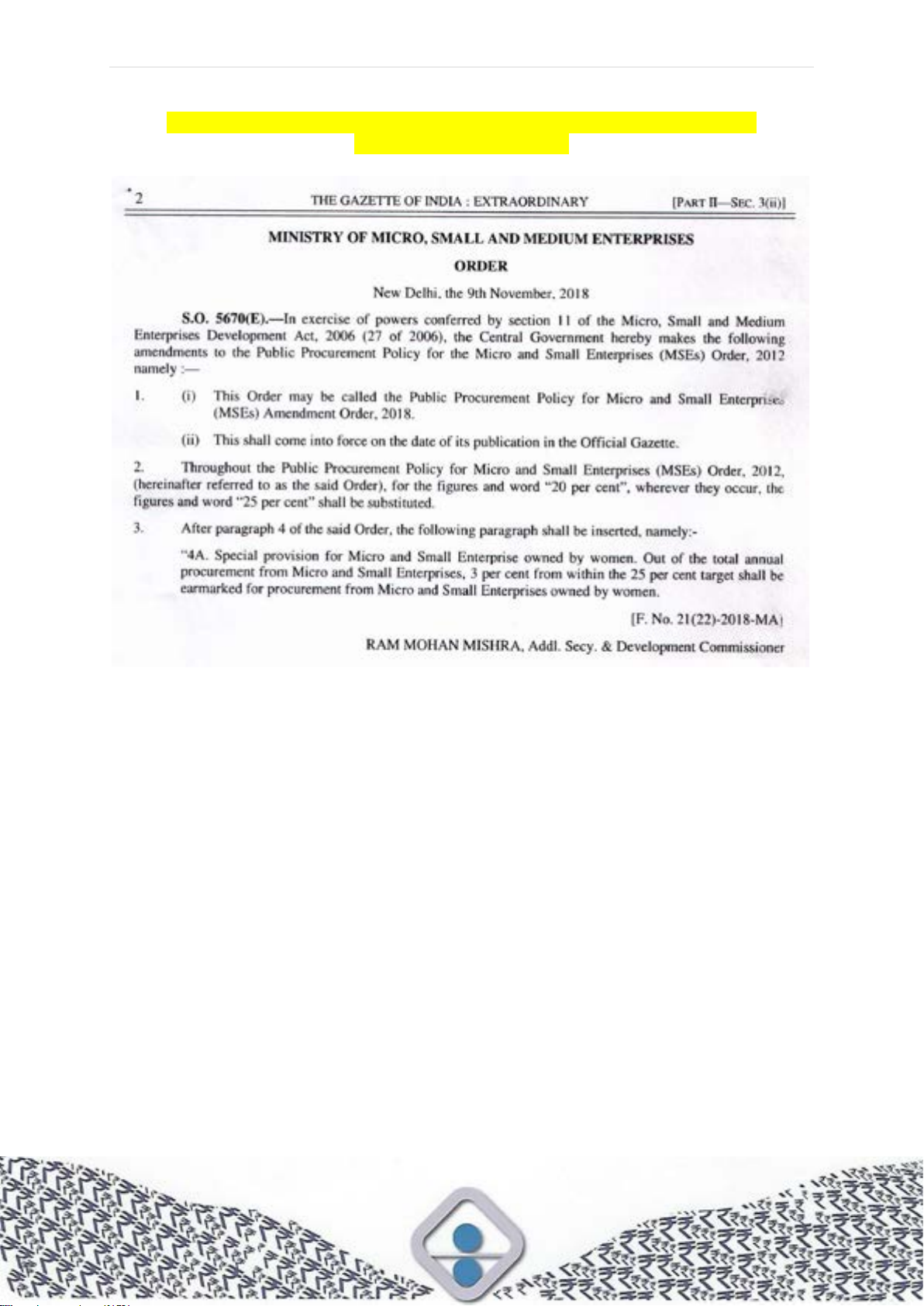
P a g e | 420
Public Procurement Policy for Micro and Small Enterprises (MSEs)
Amendment Order, 2018
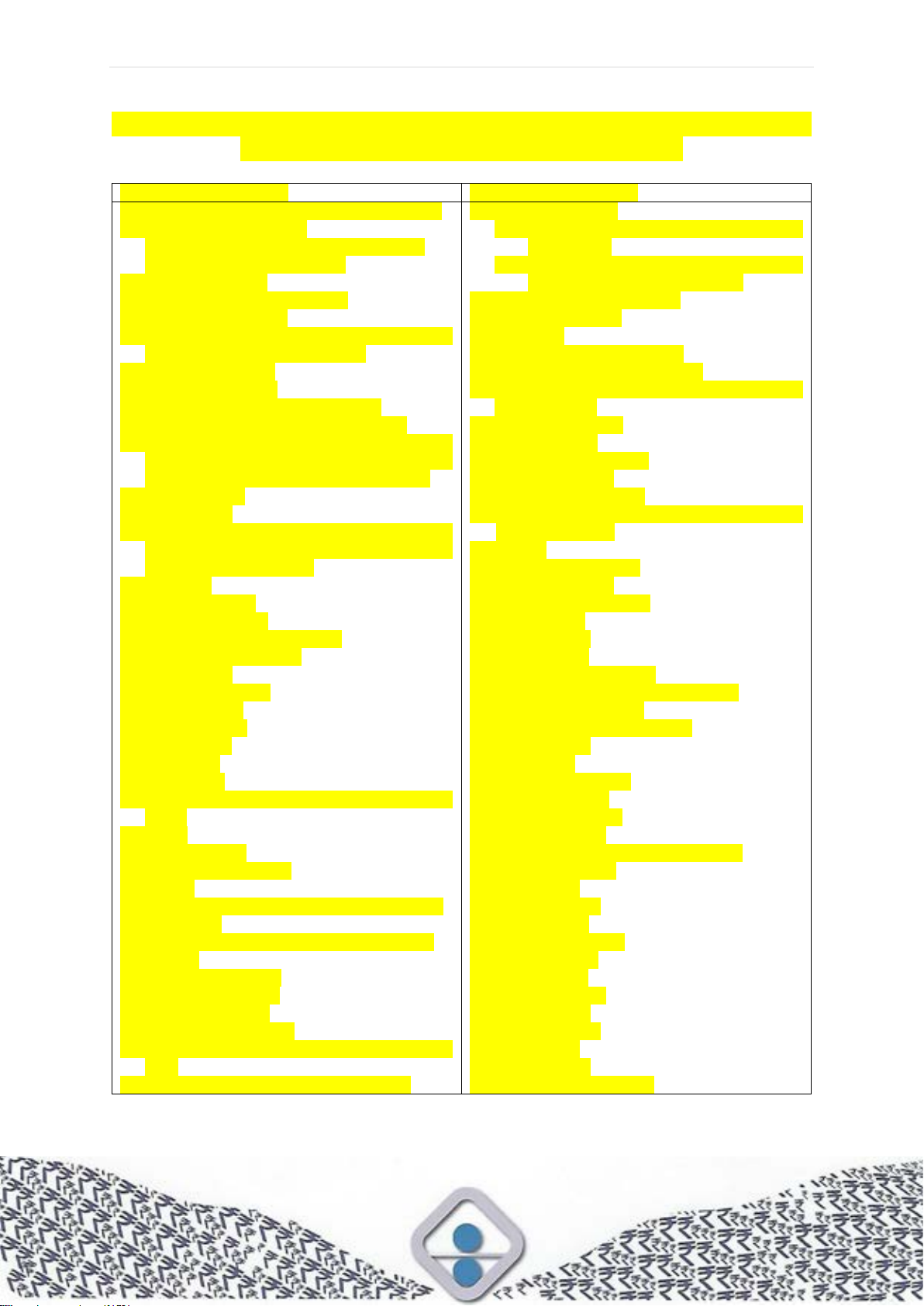
P a g e | 421
Annexure 33b: List of items reserved for purchase from Small Scale
Industrial units including Handicraft sector
Sl. No. Item Description
Sl. No. Item Description
1. AAC/and ACSR Conductor upto 19 strands
2. Agricultural Implements
(a) Hand Operated tools and implements
(b) Animal driven implements
3. Air/Room Coolers
4. Aluminium builder's hardware
5. Ambulance stretcher
6. Ammeters / ohm meter / Volt meter (Electro-
magnetic upto Class I accuracy)
7. Anklets Web Khaki
8. Augur (Carpenters)
9. Automobile Head Lights Assembly
10. Badges cloth embroidered and metals
11. Bags of all types i.e. made of leather, cotton,
canvas and jute etc. including kit bags, mail
bags, sleeping bags and water-proof bag.
12. Bandage cloth
13. Barbed Wire
14. Basket cane (Procurement can also be made
from State Forest Corporation and State
Handicrafts Corporation)
15. Bath tubs
16. Battery Charger
17. Battery Eliminator
18. Beam Scales (upto 1.5 tons)
19. Belt leather and straps
20. Bench Vices
21. Bituminous Paints
22. Blotting Paper
23. Bolts and Nuts
24. Bolts Sliding
25. Bone Meal
26. Boot Polish
27. Boots and Shoes of all types including canvas
shoes
28. Bowls
29. Boxes Leather
30. Boxes made of metal
31. Braces
32. Brackets other than those used in Railways
33. Brass Wire
34. Brief Cases (other than moulded luggage)
35. Brooms
36. Brushes of all types
37. Buckets of all types
38. Button of all types
39. Candle Wax Carriage
40. Cane Valves/stock valves (for water fittings
only)
41. Cans metallic (for milk and measuring)
42. Canvas Products:
(a) Water Proof Deliver, Bags to spec. No.
IS - 1422/70
(b) Bonnet Covers and Radiators Muff. to
spec. Drg. Lv 7/NSN/IA/130295
43. Capes Cotton and Woollen
44. Capes Waterproof
45. Castor Oil
46. Ceiling roses upto 15 amps
47. Centrifugal steel plate blowers
48. Centrifugal Pumps suction and delivery 150
mm. x 150 mm
49. Chaff Cutter Blade
50. Chains lashing
51. Chappals and sandals
52. Chamois Leather
53. Chokes for light fitting
54. Chrome Tanned leather (Semi-finished
Buffalo and Cow)
55. Circlips
56. Claw Bars and Wires
57. Cleaning Powder
58. Clinical Thermometers
59. Cloth Covers
60. Cloth Jaconet
61. Cloth Sponge
62. Coir fibre and Coir yarn
63. Coir mattress cushions and matting
64. Coir Rope hawserlaid
65. Community Radio Receivers
66. Conduit pipes
67. Copper nail
68. Copper Napthenate
69. Copper sulphate
70. Cord Twine Maker
71. Cordage Others
72. Corrugated Paper Board and Boxes
73. Cotton Absorbent
74. Cotton Belts
75. Cotton Carriers
76. Cotton Cases
77. Cotton Cord Twine
78. Cotton Hosiery
79. Cotton Packs
80. Cotton Pouches
81. Cotton Ropes
82. Cotton Singlets
83. Cotton Sling
84. Cotton Straps
85. Cotton tapes and laces
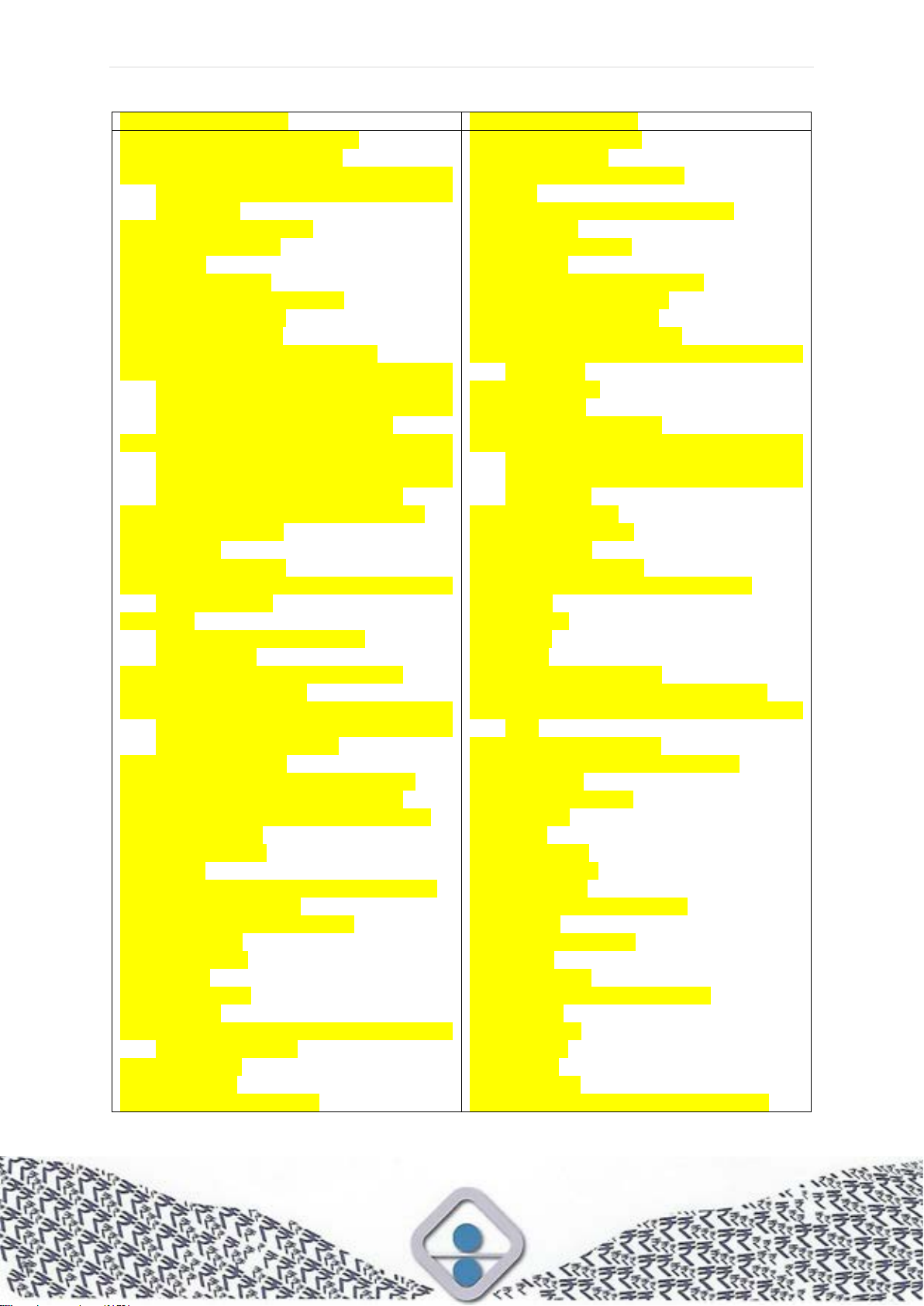
P a g e | 422
Sl. No. Item Description
Sl. No. Item Description
86. Cotton Wool (Non-absorbent)
87. Crates Wooden and plastic
88. (a) Crucibles upto No. 200 (b) Crucibles
Graphite upto No. 500 (c) Other Crucibles
upto 30 kgs.
89. Cumblies and blankets
90. Curtains mosquito
91. Cutters
92. Dibutyl phthalate
93. Diesel engines upto 15 H.P
94. Dimethyl Phthalate
95. Disinfectant Fluids
96. Distribution Board upto 15 amps
97. Domestic Electric appliances as per BIS
Specifications: Toaster Electric, Elect. Iron,
Hot Plates, Elect. Mixer, Grinders, Room
heaters and convectors and ovens
98. Domestic (House Wiring) P.V.C. Cables
and Wires (Aluminum) Conforming to the
prescribed BIS Specifications and upto
10.00 mm sq. nominal cross section
99. Drawing and Mathematical Instruments
100. Drums and Barrels
101. Dust Bins
102. Dust Shield leather
103. Dusters Cotton all types except the items
required in Khadi
104. Dyes:
(a) Azo Dyes (Direct and Acid)
(b) Basic Dyes
105. Electric Call bells/buzzers/door bells
106. Electric Soldering Iron
107. Electric Transmission Line Hardware items
like steel cross bars, cross arms clamps
arching horn, brackets, etc
108. Electronic door bell
109. Emergency Light (Rechargeable type)
110. Enamel Wares and Enamel Utensils
111. Equipment camouflage Bamboo support
112. Exhaust Muffler
113. Expanded Metal
114. Eyelets
115. Film Polythene - including wide width film
116. Film spools and cans
117. Fire Extinguishers (wall type)
118. Foot Powder
119. French polish
120. Funnels
121. Fuse Cut outs
122. Fuse Unit
123. Garments (excluding supply from Indian
Ordnance Factories)
124. Gas mantels
125. Gauze cloth
126. Gauze surgical all types
127. Ghamellas (Tasllas)
128. Glass Ampules
129. Glass and Pressed Wares
130. Glue
131. Grease Nipples and Grease guns
132. Gun cases
133. Gun Metal Bushes
134. Gumtape
135. Hand drawn carts of all types
136. Hand gloves of all types
137. Hand Lamps Railways
138. Hand numbering machine
139. Hand pounded Rice (polished and
unpolished)
140. Hand presses
141. Hand Pump
142. Hand Tools of all types
143. Handles wooden and bamboo
(Procurement can also be made from State
Forest Corpn. and State Handicrafts
Corporation)
144. Harness Leather
145. Hasps and Staples
146. Haver Sacks
147. Helmet Non-Metallic
148. Hide and country leather of all types
149. Hinges
150. Hob nails
151. Holdall
152. Honey
153. Horse and Mule Shoes
154. Hydraulic Jacks below 30-ton capacity
155. Insecticides Dust and Sprayers (Manual
only)
156. Invalid wheeled chairs.
157. Invertor domestic type upto 5 KVA
158. Iron (dhobi)
159. Key board wooden
160. Kit Boxes
161. Kodali
162. Lace leather
163. Lamp holders
164. Lamp signal
165. Lanterns Posts and bodies
166. Lanyard
167. Latex foam sponge
168. Lathies
169. Letter Boxes
170. Lighting Arresters - upto 22 kv
171. Link Clip
172. Linseed Oil
173. Lint Plain
174. Lockers
175. Lubricators
176. L.T. Porcelain KITKAT and Fuse Grips
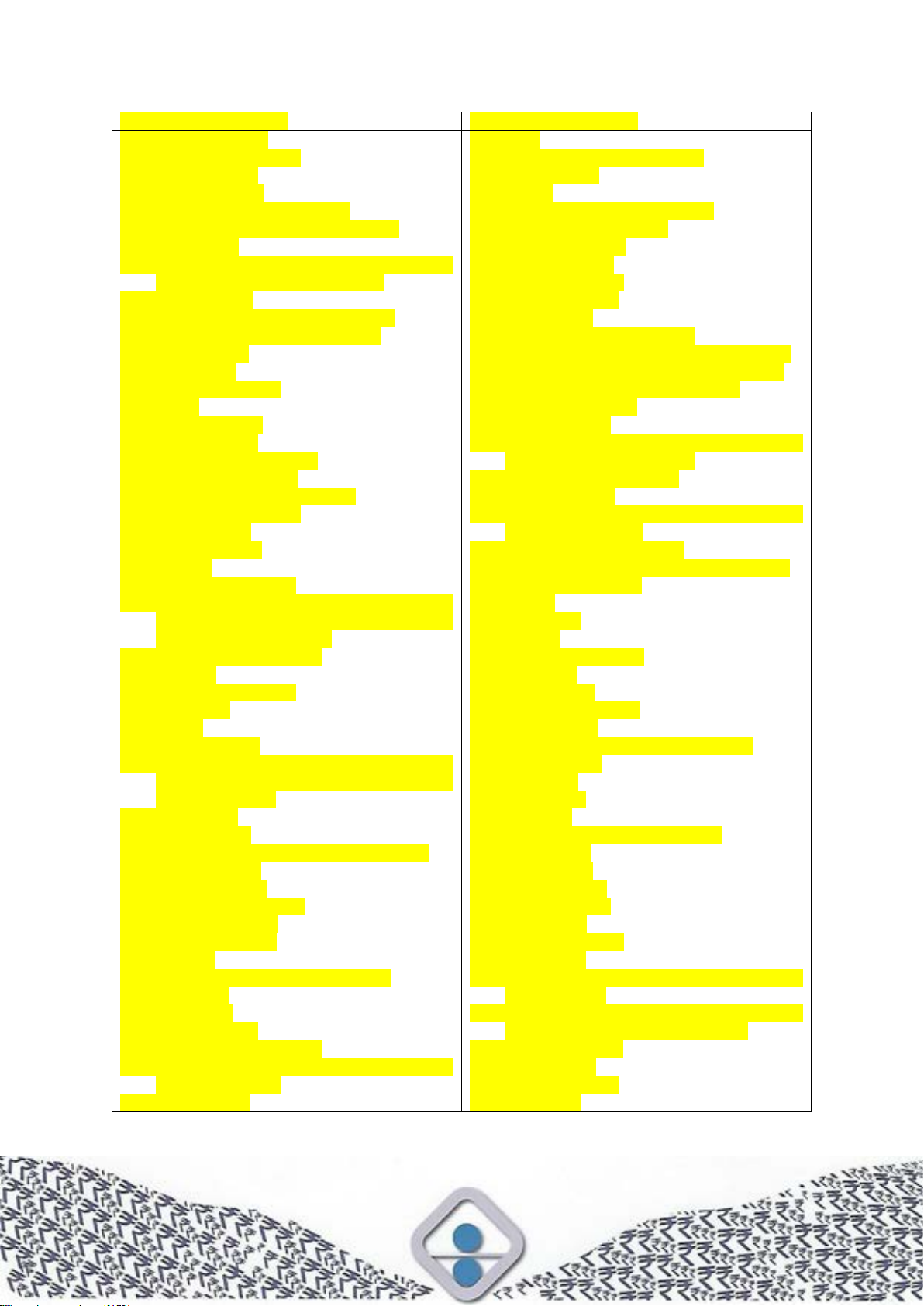
P a g e | 423
Sl. No. Item Description
Sl. No. Item Description
177. Machine Screws
178. Magnesium Sulphate
179. Mallet Wooden
180. Manhole covers
181. Measuring Tapes and Sticks
182. Metal clad switches (upto 30 Amps)
183. Metal Polish
184. Metallic containers and drums other than
N.E.C. (Not elsewhere classified)
185. Metric weights
186. Microscope for normal medical use
187. Miniature bulbs (for torches only)
188. M.S. Tie Bars
189. Nail Cutters
190. Naphthalene Balls
191. Newar
192. Nickel Sulphate
193. Nylon Stocking
194. Nylon Tapes and Laces
195. Oil Bound Distemper
196. Oil Stoves (Wick stoves only)
197. Pad locks of all types
198. Paint remover
199. Palma Rosa Oil
200. Palmgur
201. Pans Lavatory Flush
202. Paper conversion products- paper bags,
envelops, Ice-cream cup, paper cup and
saucers and paper Plates
203. Paper Tapes (Gummed)
204. Pappads
205. Pickles and Chutney
206. Piles fabric
207. Pillows
208. Plaster of Paris
209. Plastic Blow Moulded Containers upto 20
litre excluding Poly Ethylene Terphthalate
(PET) Containers
210. Plastic cane
211. Playing Cards
212. Plugs and Sockets electric upto 15 Amp
213. Polythene bags
214. Polythene Pipes
215. Post Picket (Wooden)
216. Postal Lead seals
217. Potassium Nitrate
218. Pouches
219. Pressure Die Casting upto 0.75 kg
220. Privy Pans
221. Pulley Wire
222. PVC footwears
223. PVC pipes upto 110 mm
224. PVC Insulated Aluminium Cables (upto 120
sq. mm) (ISS:694)
225. Quilts, Razais
226. Rags
227. Railway Carriage light fittings
228. Rakes Ballast
229. Razors
230. RCC Pipes upto 1200 mm. dia
231. RCC Poles Prestressed
232. Rivets of all types
233. Rolling Shutters
234. Roof light Fittings
235. Rubber Balloons
236. Rubber Cord
237. Rubber Hoses (Unbranded)
238. Rubber Tubing (Excluding braided tubing)
239. Rubberised Garments Cap and Caps etc
240. Rust/Scale Removing composition
241. Safe meat and milk
242. Safety matches
243. Safety Pins (and other similar products like
paper pins, staple pins etc.)
244. Sanitary Plumbing fittings
245. Sanitary Towels
246. Scientific Laboratory glass wares (Barring
sophisticated items)
247. Scissors cutting (ordinary)
248. Screws of all types including High Tensile
249. Sheep skin all types
250. Shellac
251. Shoe laces
252. Shovels
253. Sign Boards painted
254. Silk ribbon
255. Silk Webbing
256. Skiboots and shoes
257. Sluice Valves
258. Snapfastner (Excluding 4 pcs. ones)
259. Soap Carbolic
260. Soap Curd
261. Soap Liquid
262. Soap Soft
263. Soap washing or laundary soap
264. Soap Yellow
265. Socket/pipes
266. Sodium Nitrate
267. Sodium Silicate
268. Sole leather
269. Spectacle frames
270. Spiked boot
271. Sports shoes made out of leather (for all
Sports games)
272. Squirrel Cage Induction Motors upto and
including 100 KW440 volts 3 phase
273. Stapling machine
274. Steel Almirah
275. Steel beds stead
276. Steel Chair
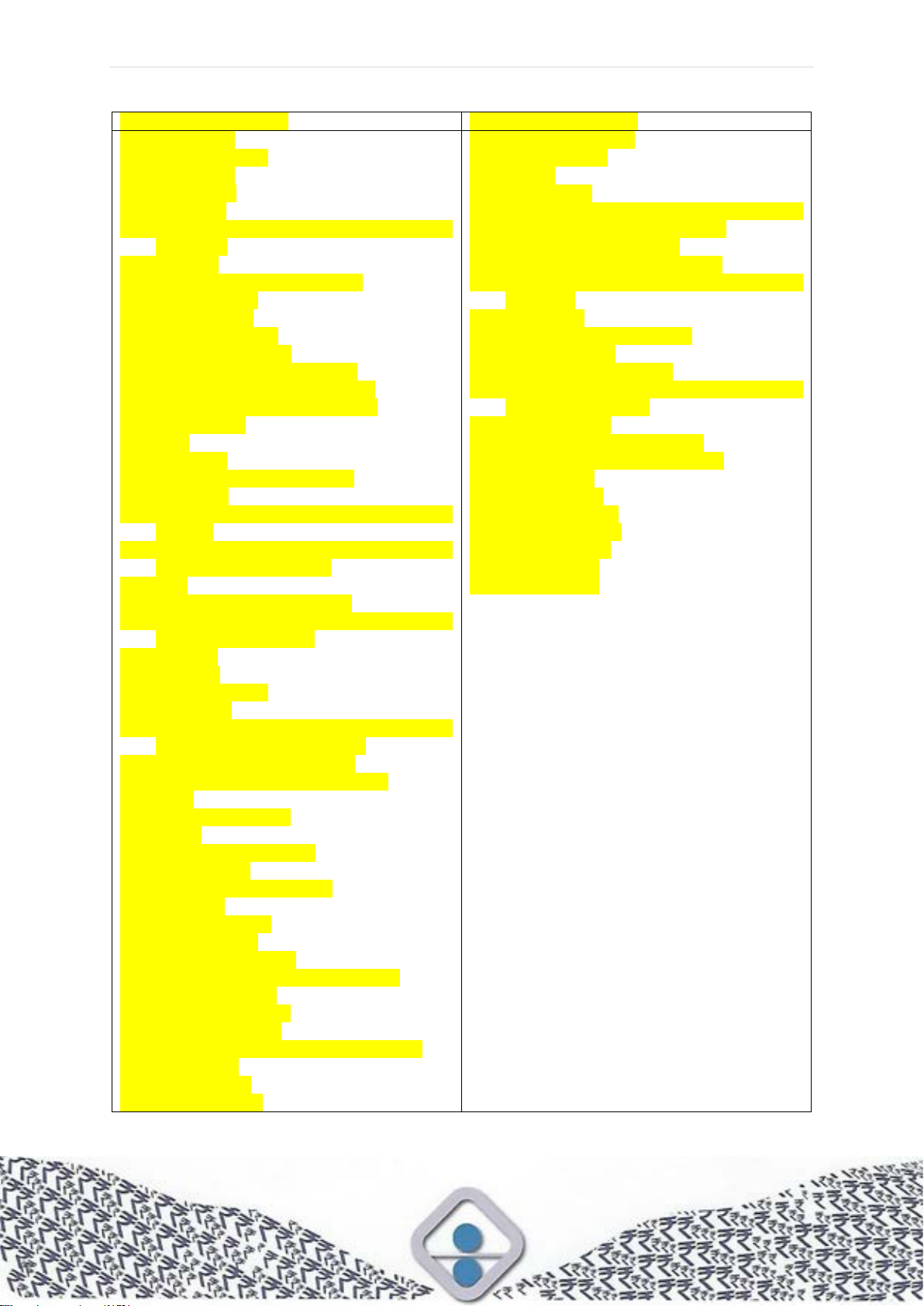
P a g e | 424
Sl. No. Item Description
Sl. No. Item Description
277. Steel desks
278. Steel racks/shelf
279. Steel stools
280. Steel trunks
281. Steel wool
282. Steel and aluminium windows and
ventilators
283. Stockinet
284. Stone and stone quarry rollers
285. Stoneware jars
286. Stranded Wire
287. Street light fittings
288. Student Microscope
289. Studs (excluding high tensile)
290. Surgical Gloves (Except Plastic)
291. Table knives (Excluding Cutlery)
292. Tack Metallic
293. Taps
294. Tarpaulins
295. Teak fabricated round blocks
296. Tent Poles
297. Tentage Civil/Military and Salitah Jute for
Tentage
298. Textiles manufactures other than N.E.C.
(not elsewhere classified)
299. Tiles
300. Tin Boxes for postage stamp
301. Tin can unprinted upto 4 gallons’ capacity
(other than can O.T.S.)
302. Tin Mess
303. Tip Boots
304. Toggle Switches
305. Toilet Rolls
306. Transformer type welding sets conforming
to IS:1291/75 (upto 600 amps)
307. Transistor Radio upto 3 band
308. Transistorised Insulation - Testers
309. Trays
310. Trays for postal use
311. Trolley
312. Trollies - drinking water
313. Tubular Poles
314. Tyres and Tubes (Cycles)
315. Umbrellas
316. Utensils all types
317. Valves Metallic
318. Varnish Black Japan
319. Voltage Stablisers including C.V.T's
320. Washers all types
321. Water Proof Covers
322. Water Proof paper
323. Water tanks upto 15,000 litres capacity
324. Wax sealing
325. Waxed paper
326. Weighing Scale
327. Welded Wire mash
328. Wheel barrows
329. Whistle
330. Wicks cotton
331. Wing Shield Wipers (Arms and Blades only)
332. Wire brushes and Fibre Brushes
333. Wire Fencing and Fittings
334. Wire nails and Horse shoe nails
335. Wire nettings of gauze thicker than 100
mesh size
336. Wood Wool
337. Wooden ammunition boxes
338. Wooden Boards
339. Wooden Box for Stamps
340. Wooden Boxes and Cases N.E.C. (Not
elsewhere classified)
341. Wooden Chairs
342. Wooden Flush Door Shutters
343. Wooden packing cases all sizes
344. Wooden pins
345. Wooden plugs
346. Wooden shelves
347. Wooden veneers
348. Woolen hosiery
349. Zinc Sulphate
350. Zip Fasteners

P a g e | 425
HANDICRAFT ITEMS
Sl.No. Item Description Source of Supply
351. Cane furniture North Eastern Handicrafts and Handlooms
Development Corporation
Assam Govt. Marketing Corpn.
Craft Society of Manipur
Nagaland Handicrafts and Handlooms Development Corpn.
352. Bamboo file tray, -do-
Baskets, Pencil stand,
side racks etc.
353. Artistic Wooden Furniture Rajasthan Small Industries Corpn.,
U.P. Export Corporation.
354. Wooden paper weight, racks etc. -do-
355. Glass covers made of wood -do-
and grass jute
356. Jute furniture West Bengal Handicrafts Dev. Corpn.
Jute Mfg. Development Corporation
Orissa State Handicrafts Dev. Corpn.
357. Jute bags, file cover -do-
358. Woollen and silk carpets U.P. Export Corporation
J and K Sale and Export Corporation
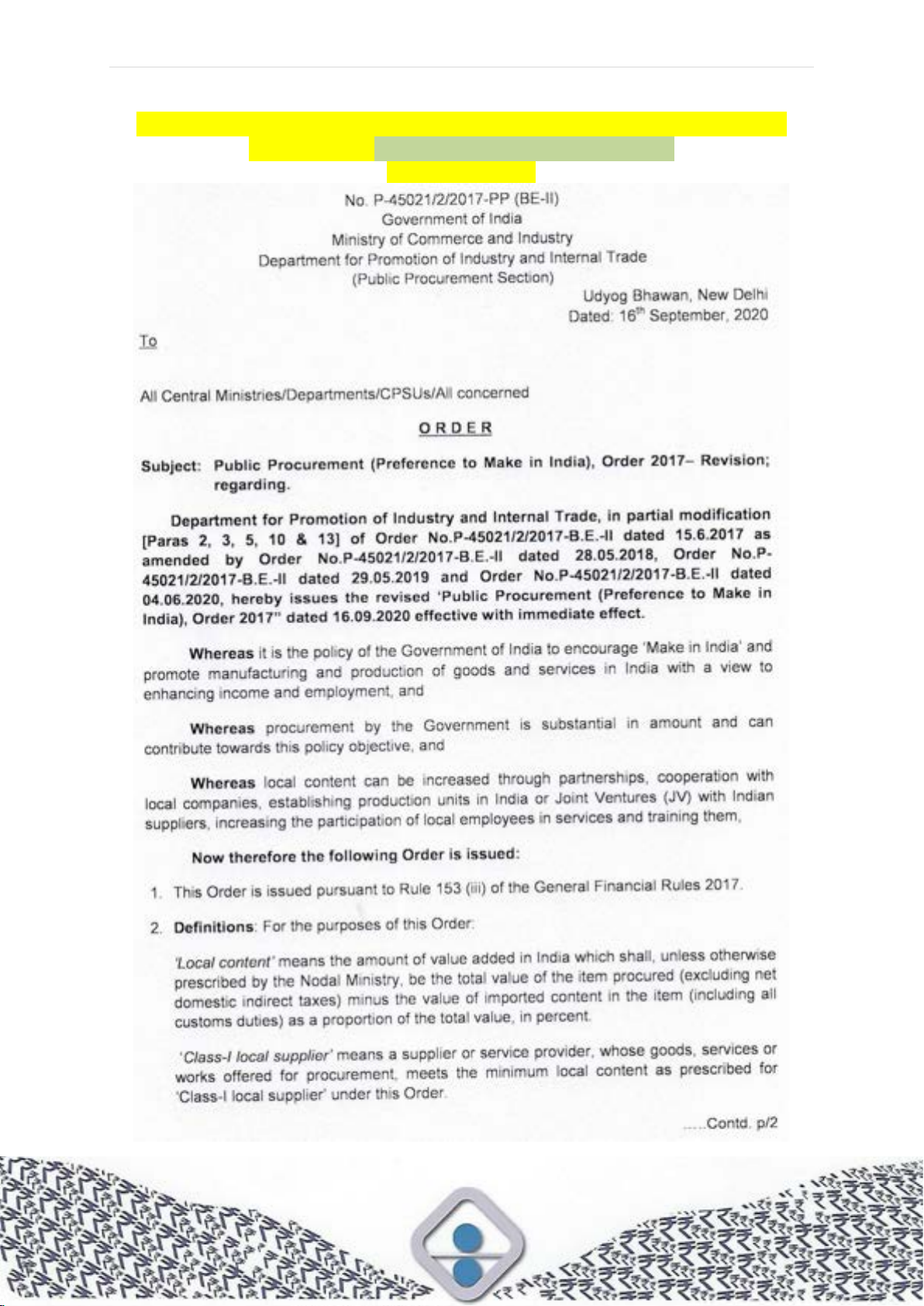
P a g e | 426
Annexure 34: Public Procurement (Preference to Make in India)
Order, 2017 amendment dated 16.09.2020
(Refer Para 2.7.2)
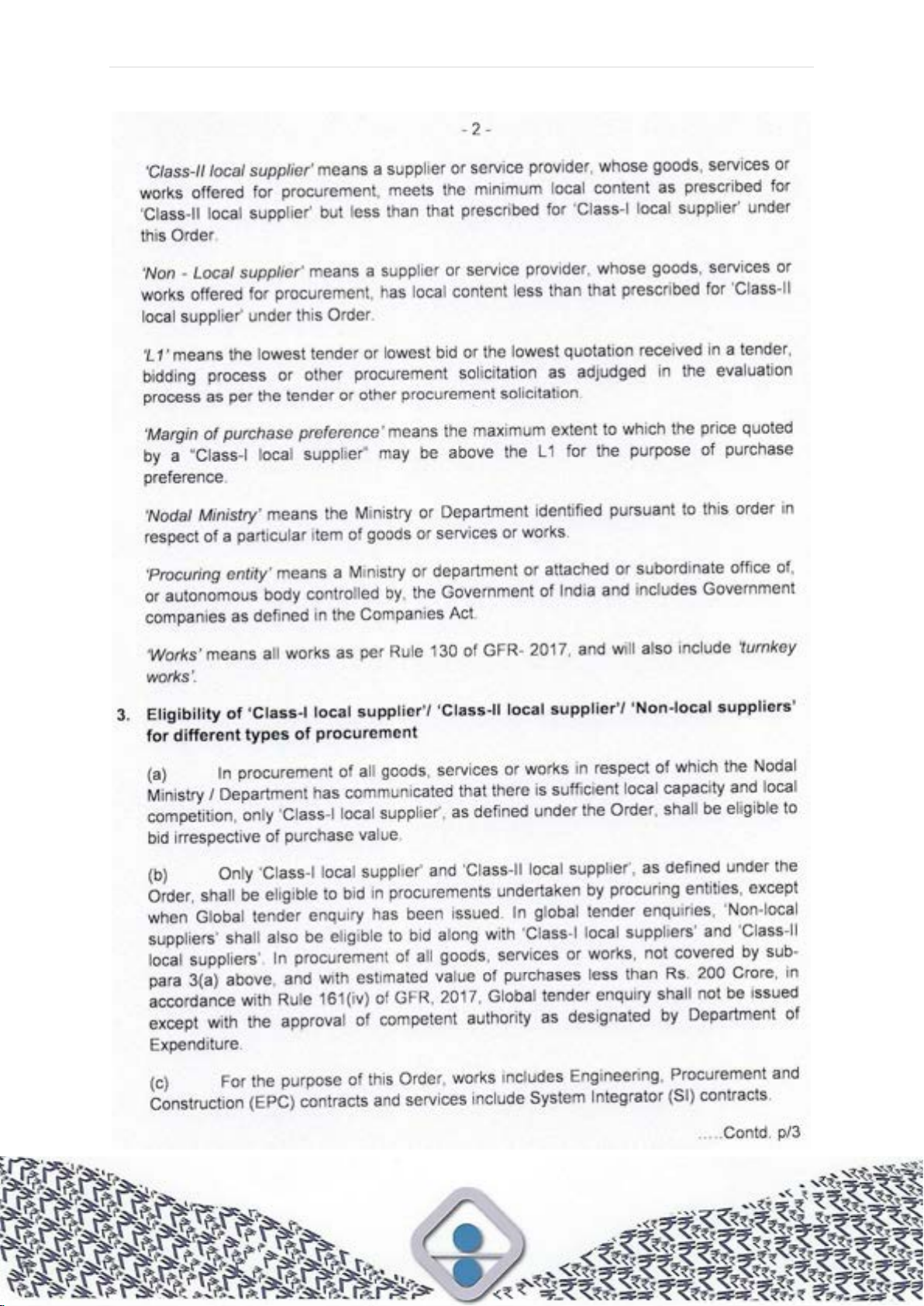
P a g e | 427
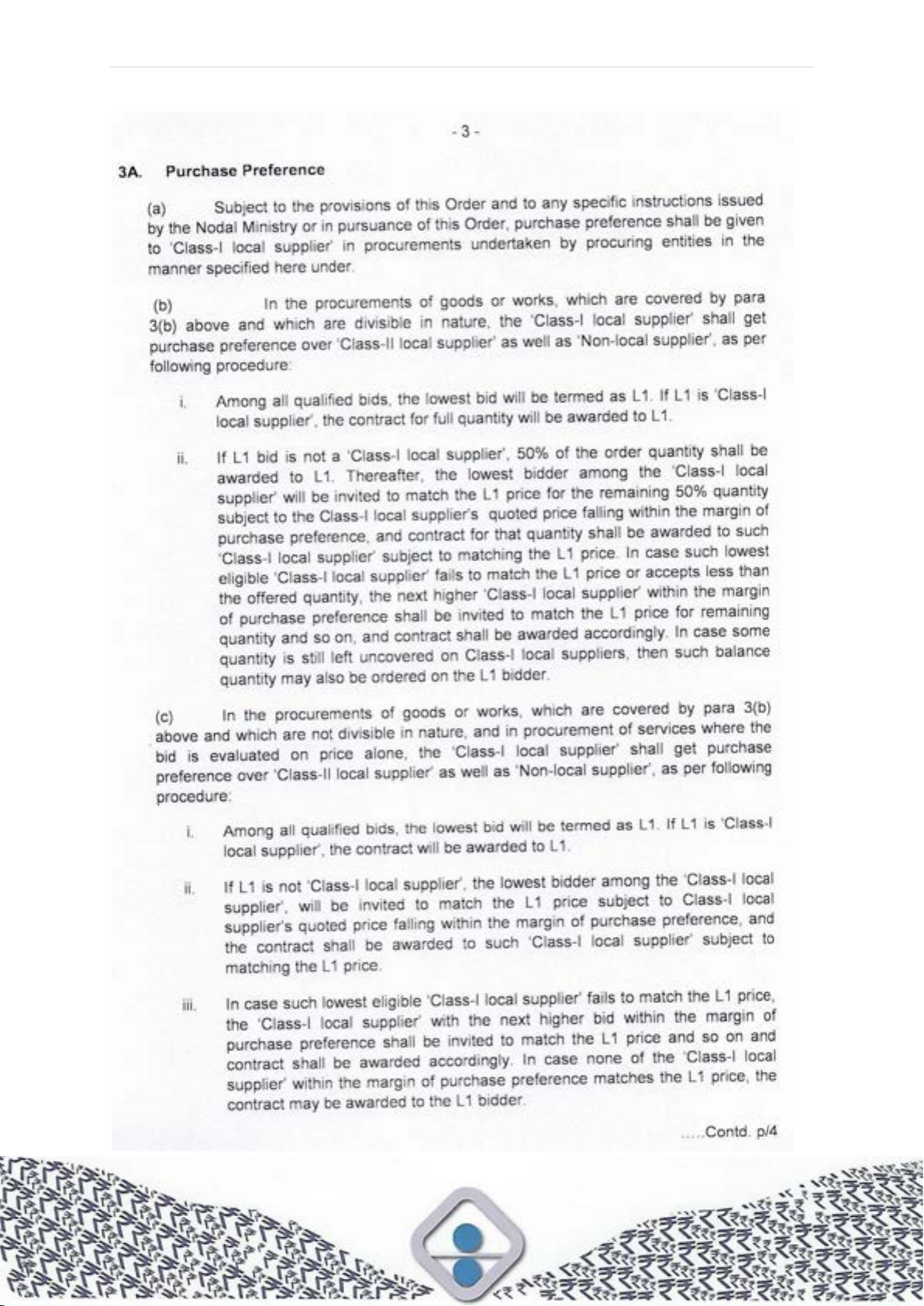
P a g e | 428
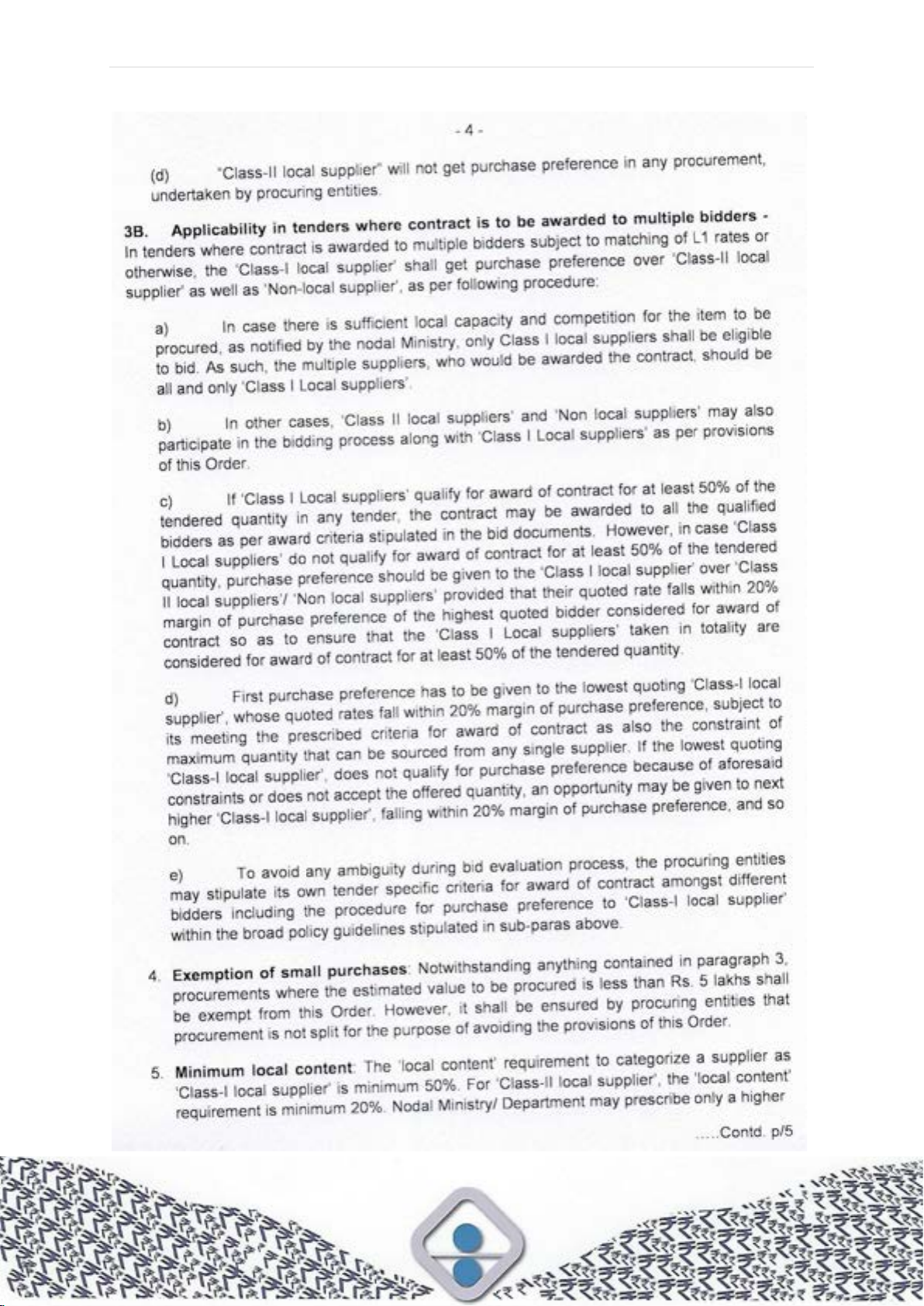
P a g e | 429
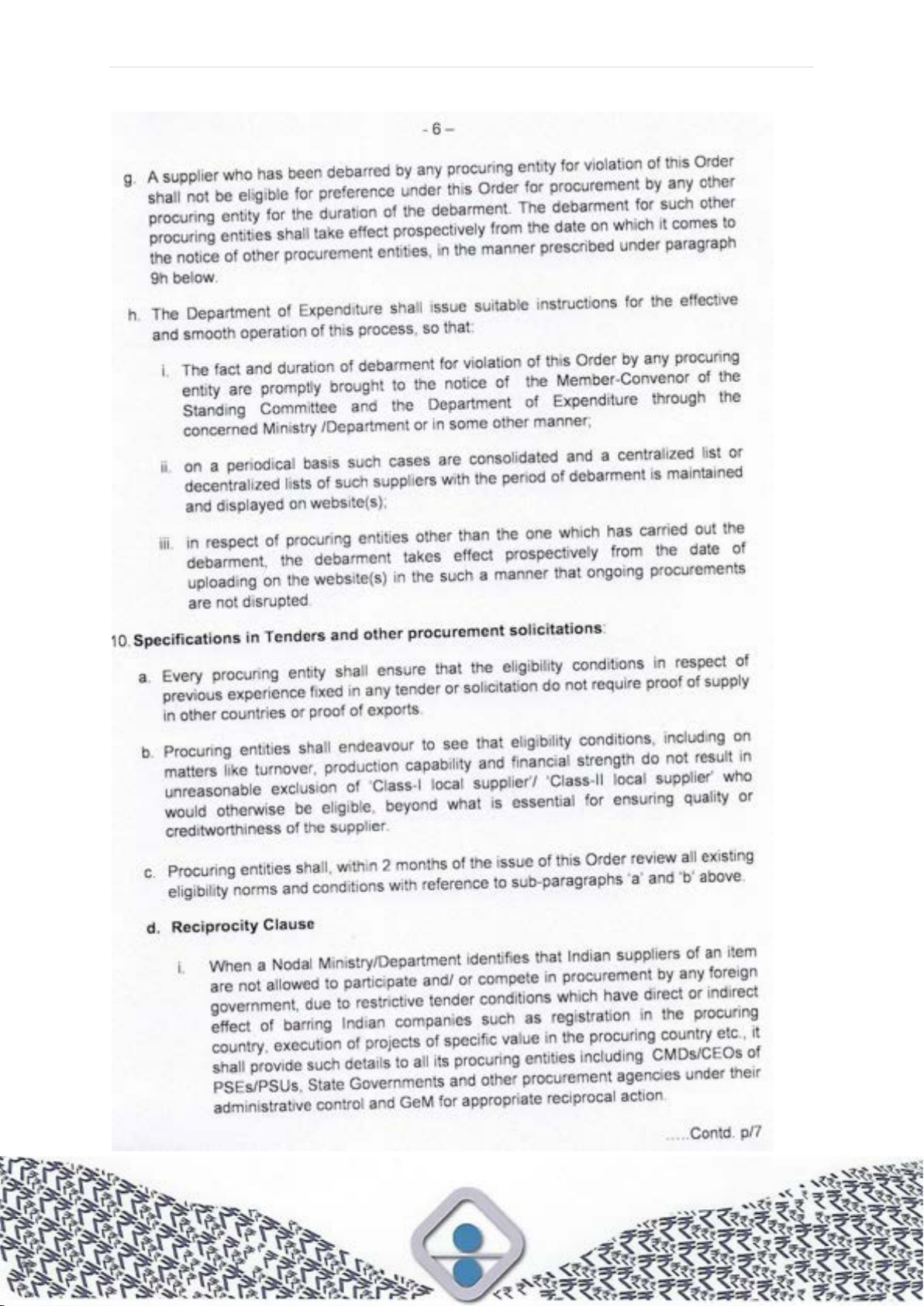
P a g e | 430

P a g e | 431
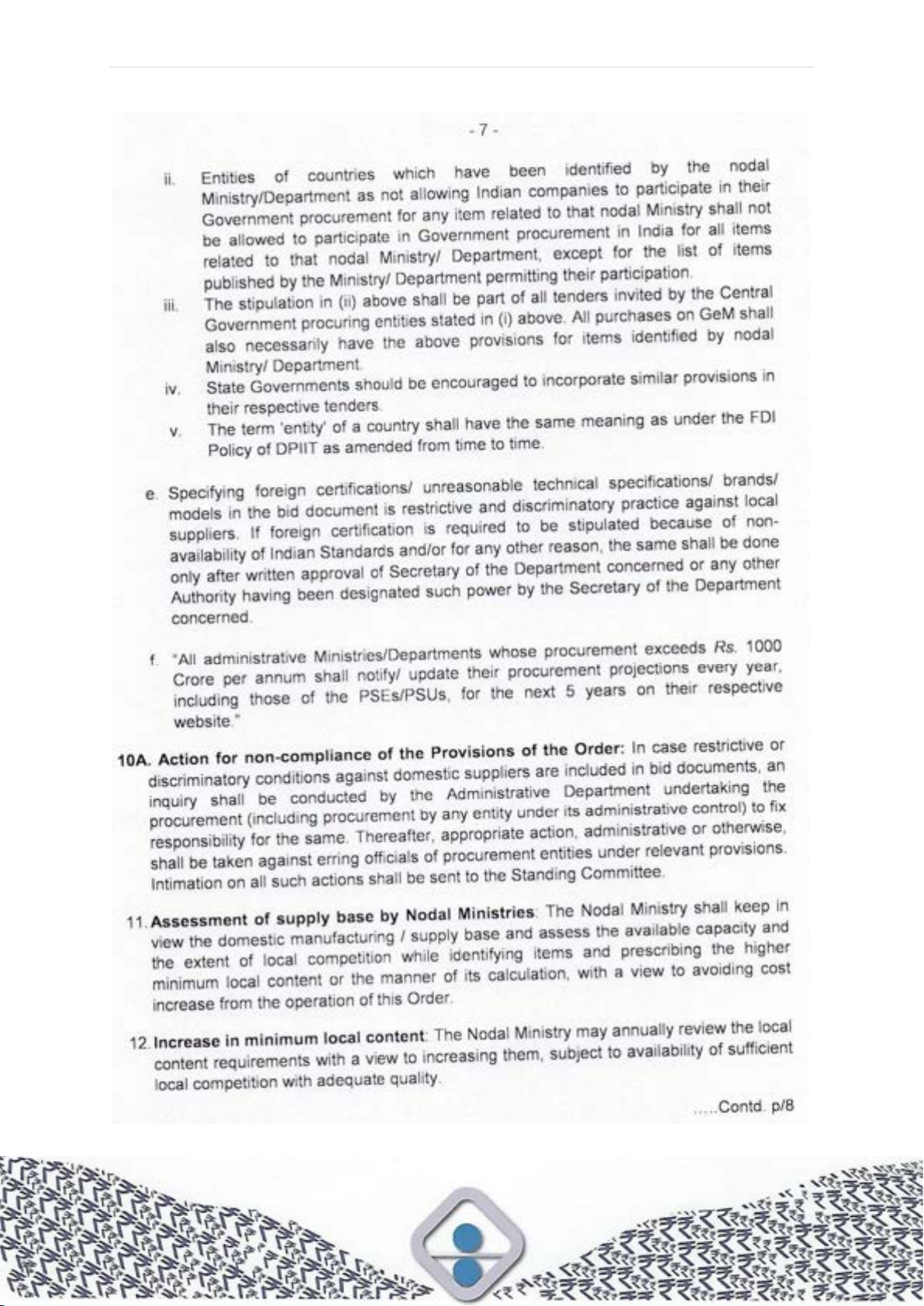
P a g e | 432
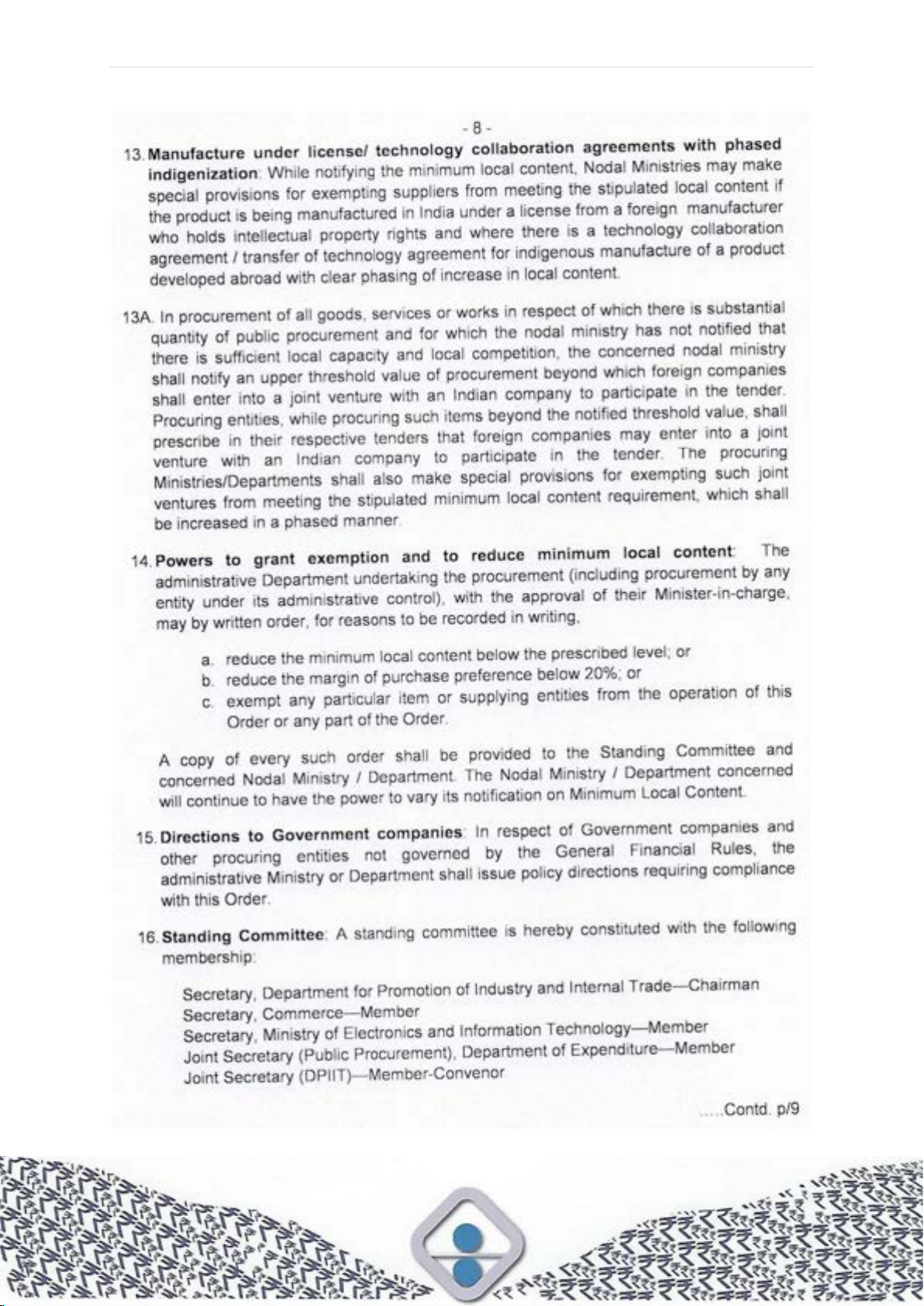
P a g e | 433
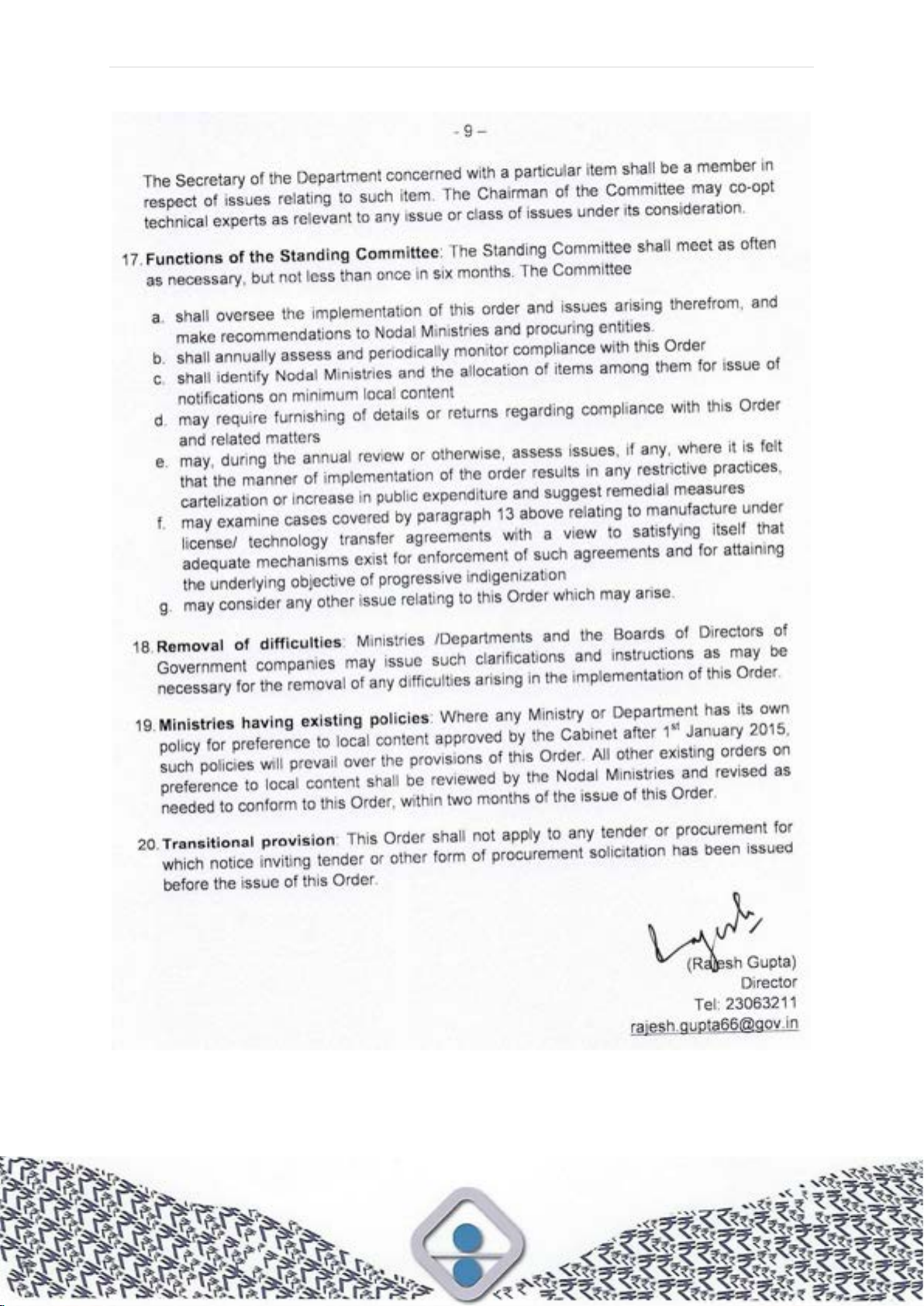
P a g e | 434

P a g e | 435
Annexure 35: Explanatory Note on Make in India Order 2017; MSEs
Order 2012 and Start-ups
(Refer Para 2.7.1 and 2.7.2)
Public Procurement (Preference to Make in India) Order, 2017
• The Govt. of India has decided to incentivise the growth of local content in goods
and services through the Make in India Policy by providing purchase preference to
the manufacturers/service providers having capability to meet/exceed the local
content targets. Incentivising enhanced local content in the procurement of goods
and/or services would lead to increased local industry content.
• The ultimate aim of the policy is to support and boost the growth of domestic
manufacturing sector with a view to enhancing income and employment and
contribute added value to economy, absorb manpower as well as have national,
regional and international competitiveness.
• Local content can be increased through partnerships, cooperation with local
companies, establishing production units in India or joint ventures (JV) with Indian
suppliers, increasing the participation of local employees in services and training
them etc.
• The provisions of this policy shall apply to all procurements of goods, services,
including System Integrator (SI) contracts, and works, including Engineering,
Procurement and Construction (EPC) contracts. However, the provisions of this
policy shall not apply to small procurements where estimated value to be procured
is less than ₹5 lakh.
Definitions
• Domestic Products shall be goods and/or services (including design and
engineering), produced by companies, investing and producing in India.
• Domestic Manufacturer shall be business entity or individual having business
activity established under Indian law and producing products domestically.
• Local Content (LC) means the amount of value added in India which shall, unless
otherwise prescribed by the Nodal ministry, be the total value of the item procured
(excluding net domestic indirect taxes) minus the value of imported content in the
item (including all customs duties) as a proportion of the total value, in percent.
• Local Content (LC) in Goods shall be the use of raw materials, design and
engineering towards manufacturing, fabrication, assembly and finishing of work
carried out within the country.

P a g e | 436
• Local Content (LC) in Services shall be the use of services up to the final delivery
by utilizing manpower (including specialists), working appliance (including software)
and supporting facilities carried out within the country.
• ‘Margin of purchase preference’ means the maximum extent to which the price
quoted by a “Class-I local supplier” may be above the L1 (lowest bid) for the purpose
of purchase preference.
• Supplier of Goods and/or provider of Services shall be a business entity having
capability of providing Goods and/or Services in accordance with the business line
and qualification thereof and classified as under: -
- ‘Class-I local supplier’ means a supplier or service provider, whose goods,
services or works offered for procurement, has local content equal to or more
than 50% as defined under Make in India policy.
- ‘Class-II local supplier’ means a supplier or service provider, whose goods,
services or works offered for procurement, has local content more than 20% but
less than 50%, as defined under Make in India policy.
- ‘Non-local supplier’ means a supplier or service provider, whose goods, services
or works offered for procurement, has local content less than or equal to 20%,
as defined under Make in India policy.
Eligibility to bid
• Only Class-I local suppliers and Class-II local suppliers shall be eligible to bid in all
procurements except when Global Tender Enquiry, allowed if purchase value is
more than ₹200 crore*, is issued.
• In local procurement of all goods, services and works in respect of which the Nodal
ministry / Department has communicated that there is sufficient local capacity and
local competition, only Class-I local supplier shall be eligible to bid irrespective of
purchase value.
• For all other local procurements, both Class-I local supplier and Class-II local
supplier shall be eligible to bid irrespective of purchase value but purchase
preference shall be given to Class-I local supplier only.
• In global tender enquiries, Non-local suppliers shall also be eligible to bid along with
Class-I local suppliers and Class-II local suppliers. Class-I local supplier shall be
given purchase preference.
• Class-I local suppliers and Class-II local suppliers shall be eligible to get relaxations
in eligibility criteria like turnover, production capability and financial strength.
Eligibility criteria on previous experience shall not require proof of supply to other
countries or proof of exports for any class of suppliers. However, Purchase
preference shall be given to Class-I local suppliers only. Class-II local suppliers or
Non-local suppliers shall not get purchase preference in any procurement.
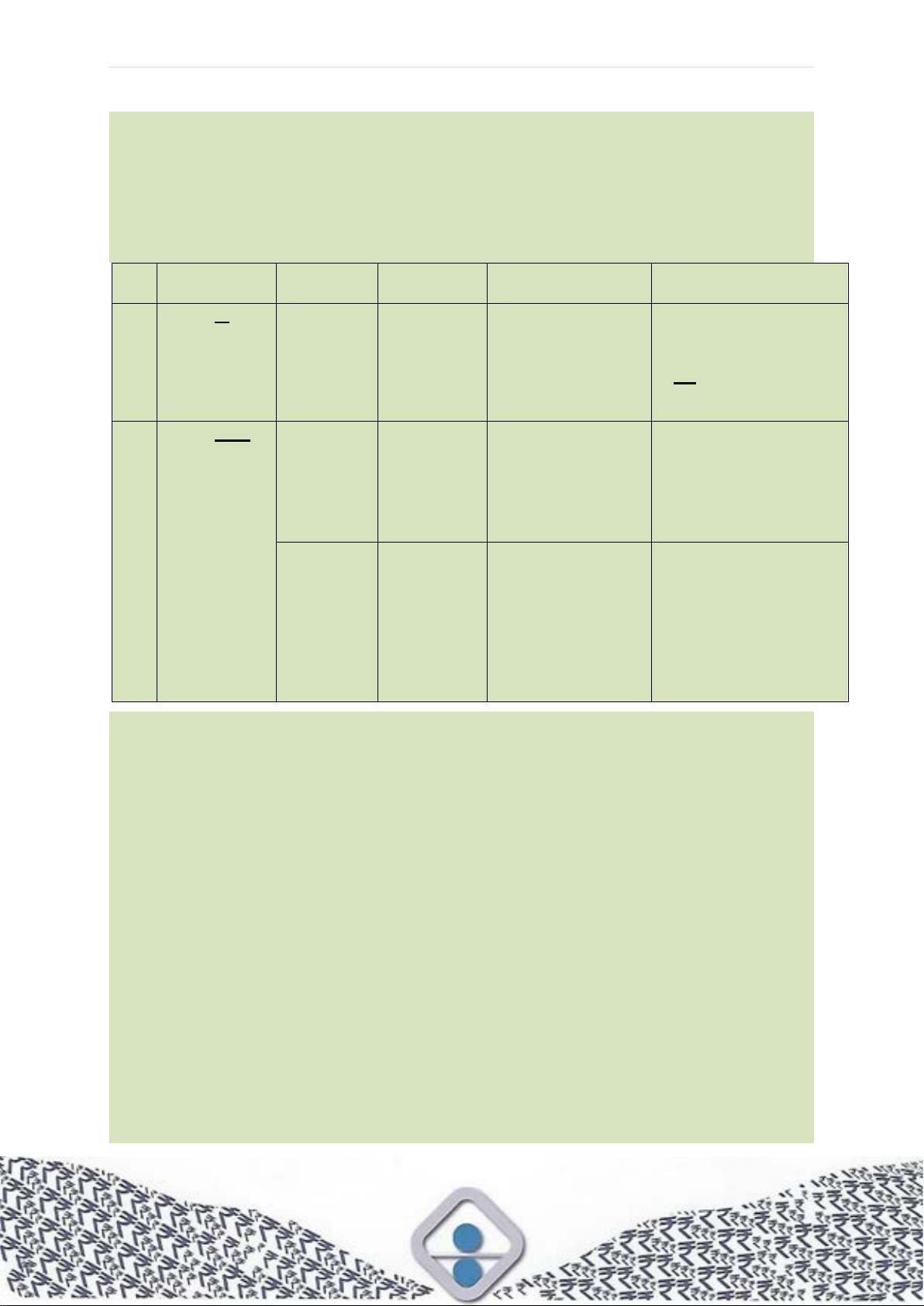
P a g e | 437
• Bidders offering imported products/content cannot, repeat cannot, claim
themselves as Class-I local suppliers/Class-II local suppliers by claiming the
services such as transportation, insurance, installation, commissioning, training,
after sales service support like AMC/CMC etc. as local value addition. Such bidders
will fall under the category of Non-local suppliers.
S/N
Scenario
Tender
Type
Tender
value
Eligible bidder
Relaxation /
Purchase preference
1
There is
sufficient
local
capacity
and
competition
OTE/NCB
Any value
‘Class-I local
supplier’
• Relaxation (as per
para 10 (a) and (b) of
order)
• No purchase
preference
2
There isn’t
sufficient
local
capacity
and
competition
OTE/NCB
Any value
‘Class-I local
supplier’
‘Class-II local
supplier’
• Relaxation (as per
para 10 (a) and (b) of
order)
• Purchase preference
to ‘Class-I local
supplier’
GTE/ICB
Any value*
‘Class-I local
supplier’
‘Class-II local
supplier’
‘Non-local supplier’
• Relaxation (as per
para 10 (a) and (b) of
order) to Class-I and
Class-II local
suppliers only
• Purchase preference
to ‘Class-I local
supplier’
* For tender value < ₹200 crore, GTE/ICB shall not be issued except with the approval
of Competent Authority as per amended Rule 161 (iv) of GFR 2017
Procedure for purchase preference
The manufacturers/service providers having the capability of meeting/exceeding the
local content targets shall be eligible for purchase preference under the Policy as
described below: -
• Where the quoted price is within the margin of purchase preference of the lowest
price, other things being equal, purchase preference shall be granted to the bidder
concerned (eligible techno-commercially qualified Class-I local supplier) at the
lowest valid price bid. The margin of purchase preference shall be 20%.
• The successful bidder shall be obliged to fulfil the requirements of quality and
delivery time in accordance with provisions of the purchase order/contract.
• BRBNMPL shall have the right to satisfy itself of the production capability and
product quality of the manufacturer.

P a g e | 438
• Procedure for granting purchase preference to Class-I local suppliers under various
scenarios is given in Annex-I.
Verification of local content
• Class-I local suppliers and Class-II local suppliers shall furnish the following
undertaking from the authorized signatory of the bidder along with their techno-
commercial bid. The undertaking shall become a part of the contract.
Class-I local supplier
“We ____________ (name of the bidder) undertake that we meet the mandatory
minimum local content requirement i.e. equal to or more than 50% for qualifying as
Class-I local supplier as per the Make in India Policy for claiming purchase
preference against tender No. ________. The percentage of local content in the bid
is ________%.”
Class-II local supplier
“We ____________ (name of the bidder) undertake that we meet the mandatory
minimum local content requirement i.e. more than 20% but less than 50% for
qualifying as Class-II local supplier as per the Make in India Policy for participating
against tender No. ________. The percentage of local content in the bid is
________%.”
Location(s) at which local value addition is made:
_________________________________________________________________
_________________________________________________________________
• In case of procurement for a value in excess of ₹10 crores, above undertaking shall
be supported by the following certificate from Statutory Auditor engaged by the
bidder or cost auditor of the company (in case of companies) or from a practicing
cost accountant or practicing chartered accountant (in respect of suppliers other
than companies), on the letterhead of such Statutory Auditor etc.
Class-I local supplier
“We the Statutory Auditor (or as the case may be) of M/s. ____________ (name of
the bidder) hereby certify that M/s. ____________ (name of the bidder) meet the
mandatory local content requirement of the Goods and/or Services i.e. equal to or
more than 50% for qualifying as Class-I local supplier as per the Make in India
Policy for claiming purchase preference against tender No. _____. The percentage
of local content in the bid is _____%.”
Class-II local supplier
“We the Statutory Auditor (or as the case may be) of M/s. ____________ (name of
the bidder) hereby certify that M/s. ____________ (name of the bidder) meet the
mandatory local content requirement of the Goods and/or Services i.e. more than

P a g e | 439
20% but less than 50% for qualifying as Class-II local supplier as per the Make in
India Policy for participating against tender No. ____. The percentage of local
content in the bid is ____%.”
Note:
• In case of a foreign bidder, certificate (with regard to fulfilment of minimum
mandatory local content requirement) from Statutory Auditor or cost auditor of their
own office or subsidiary in India giving percentage of local content is also
acceptable. In case office or subsidiary in India does not exist or Indian
office/subsidiary is not required to appoint Statutory Auditor or cost auditor,
certificate from a practicing chartered accountant in India or practicing cost
accountant in India shall also be acceptable.
• In case manufacturer/service provider himself is bidding then the certificate shall be
submitted by the Statutory Auditors etc. of the manufacturer/service provider.
• In case the bidder is a supplier quoting on behalf of manufacturer/service provider
then the certificate shall be submitted by the Statutory Auditors etc. of the supplier.
The responsibility for the certificate provided by the Statutory Auditor etc. of the
supplier shall be that of the supplier.
• Each supplier shall provide the necessary local content documentation to the
Statutory Auditor (or as the case may be), which shall review and determine that
local content requirements have been met and issue a local content certificate to
that effect, stating the % of local content in the goods or services measured. The
Auditor shall keep all necessary information obtained from the supplier for
measurement of local content confidential.
• During the execution of the contract, local content certificate shall have to be
submitted along with each invoice raised. However, the % of local content may vary
with each invoice while maintaining the overall % of local content for the total
purchase of the pro-rata local content requirement. In case it is not satisfied
cumulatively in the invoices raised up to that stage, the supplier shall indicate how
the local content requirement would me met in the subsequent stages.
• Non-local suppliers shall also indicate percentage of local content component in
their bid as under: -
“Percentage of local content as per the make in India Policy in the bid of M/s.
_______________ (name of the bidder) is ______%.”
• The prescribed local content in the Make in India Policy shall be applicable on the
date of Notice Inviting Tender (NIT).
• Where currency quoted by the bidder is other than INR, then the bidder claiming
benefits under Make in India Policy shall consider exchange rate prevailing on the
date of Notice Inviting tender (NIT) for the calculation of local content.

P a g e | 440
• Since Class-I / Class-II local suppliers are eligible to bid only if they meet the local
content norms, therefore, irrespective of whether they are willing to seek benefits
under the Make in India Policy or not, it is mandatory for them to submit adequate
documentation as follows to establish their status as Class-I / Class-II local supplier.
In fact, all bidders (i.e. Class-I local suppliers, Class-II local suppliers, Non-local
suppliers) are required to mention local content in their bid and to submit the
requisite documents as per the requirement of the Policy.
• BRBNMPL shall have the authority to audit as well as witness production processes
to certify the achievement of the requisite local content.
Determination of local content
Local content of Goods
• Local Content (LC) in Goods shall be the use of raw materials, design and
engineering towards manufacturing, fabrication, assembly and finishing of work
carried out within the country.
• Local content shall be computed on the basis of the cost of domestic components
in goods, compared to the whole cost of the product.
• The criteria for the determination of the local content cost shall be as follows: -
a. In the case of direct component (material), based on country of origin;
b. In the case of manpower based on INR component;
• The calculation of local content of the combination of several kinds of goods shall
be based on the ratio of the sum of the multiplication of local content (%) of each of
the goods with the acquisition price of each of the goods to the acquisition price of
the combination of the goods.
Local content of Services
• Local Content (LC) in Services shall be the use of services up to the final delivery
by utilizing manpower (including specialists), working appliance (including software)
and supporting facilities carried out within the country.
• Local content of services shall be calculated on the basis of the ratio of service cost
of domestic component in service to the total cost of service.
• The total cost of service shall be constituted of the cost spent for rendering of
service, covering:
a. Cost component (material) which is used;
b. Manpower and consultant cost; cost of working equipment/facility; and
c. General service cost.

P a g e | 441
• The criteria for determination of cost of local content in the services shall be as
follows:
a. In the case of material being used to help the provision of service, based on
country of origin;
b. In the case of manpower and consultant based in INR component of the services
contract;
c. In the case of working equipment/facility, based on country of origin; and
d. In the case of general service cost, based on the criteria as mentioned in clauses
a, b and c above
Local content of EPC contracts
• Local content in Engineering, Procurement and Construction (EPC) contracts
where supply of both goods and services are involved shall be the ratio of the whole
cost of domestic components in the combination of goods and services to the whole
combined cost of goods and services.
• The whole combined cost of goods and services shall be the cost spent to produce
the combination of goods and services, which is incurred in the work site.
• Local content of the combination of goods and services shall be counted in every
activity of the combination work of goods and services.
• The spent cost shall include production cost in the calculation of local content of
goods and service cost in the calculation of local content of services.
• Local content shall be calculated on the basis of verifiable data. In case data used
in calculation of local content not being verifiable, the value of local content of the
said component shall be treated as ‘Nil’.
False declarations and Sanctions
• BRBNMPL shall have the right to impose sanctions on the bidder/manufacturer/
service provider for not fulfilling the local content of goods/services in accordance
with the value mentioned in the certificate of local content. The sanctions may be in
the form of written warning, financial penalty and debarring.
• If the bidder does not fulfil his obligations after the expiration of the period specified
in such warning, BRBNMPL shall have the right to initiate action for debarring such
bidder or impose financial penalty on the bidder or both.
• A bidder, who has been awarded the contract after availing purchase preference,
is found to have violated the local content provision in the execution of the
procurement contract of goods and/or services, shall be subject to financial penalty
up to a maximum of 10% of the contract value. In such a case, BRBNMPL reserves
the right to invoke the performance bank guarantee submitted by the bidder.

P a g e | 442
• Class-I local suppliers and Class-II local suppliers shall furnish the following
undertaking from the authorized signatory of the bidder along with their techno-
commercial bid. The undertaking shall become a part of the contract.
“We understand that false declarations will be in breach of the Code of Integrity
under Rule 175(1)(i)(h) of the GFR for which a bidder or its successor may be
debarred for up to two years as per Rule 151(iii) of GFR along with such other
actions by BRBNMPL as may be permissible under law including financial penalty
up to a maximum of 10% of the contract value. In such a case, BRBNMPL reserves
the right to invoke the performance bank guarantee submitted by the bidder.”
Reciprocity clause
• Entities of countries which have been identified by the nodal Ministry/Department
as not allowing Indian companies to participate in their Government procurement
for any item related to that nodal Ministry, shall not be allowed to participate in
Government procurement in India for all items related to that nodal
Ministry/Department, except for the list of items published by the Ministry/
Department permitting their participation. The term ‘entity’ of a country shall have
the same meaning as under the FDI Policy of DPIIT as amended from time to time.
• Hence, prospective foreign bidders intending to participate in tenders floated by
BRBNMPL, shall furnish the following declaration,
“We do not belong to any country whose bidders are notified as ineligible on
reciprocal basis under the Make in India order of Government of India”
Manufacture under license / technology collaboration agreements with phased
indigenization under ‘Make in India’
(i) Suppliers may be exempted from meeting the stipulated local content if the
product is being manufactured in India under a license from a foreign
manufacturer who hold intellectual property rights and where there is a
technology collaboration agreement / transfer of technology agreement for
indigenous manufacture of a product developed abroad with clear phasing of
increase in local content within the validity of the contract.
(ii) In procurement of all goods, services or works in respect of which the Nodal
ministry has not notified that there is sufficient local capacity and local
competition, procuring entities may prescribe in their respective tenders that
foreign companies may participate in the tender through a subsidiary or a joint
venture with an Indian company. Such subsidiaries/joint ventures may be
exempted from meeting the stipulated minimum local content requirement,
provided there is clear phasing of increase in local content within the validity of
the contract. Such subsidiaries/joint ventures must obtain an exemption letter
and submit the same along with their bid to avail the exemption.

P a g e | 443
Procedure for Purchase Preference under Make in India Order, 2017
i. Procurement of Goods and Works which are divisible in nature (but without split
order clause):-
• If L1 is ‘Class-I local supplier’ – 100% awarded to L1
• If L1 is not ‘Class-I local supplier’ – 50% awarded to L1
- Remaining 50% awarded to lowest bidder among ‘Class-I local supplier’ falling
within L1+20% subject to matching L1 price
- If lowest bidder among ‘Class-I local supplier’ is unable to match L1 price or
accepts less than offered quantity, next lowest ‘Class-I local supplier’ bidder
within L1+20% is invited to match L1 price for remaining quantity and so on
and contract will be awarded accordingly
- If some quantity is still left uncovered on ‘Class-I local supplier’, then such
balance quantity can be ordered on the original L1 bidder
- If none of the ‘Class-I local supplier’ bidder within L1+20% is able to match L1
price or no ‘Class-I local supplier’ falls within L1+20%, contract awarded to
original L1 bidder
• When the tendered goods/services cannot be divided in the exact ratio of 50:50
then BRBNMPL reserves the right to award on lowest eligible Class-I local
supplier for quantity not less than 50%, as may be dividable.
E.g.: In case tendered quantity is 3 (not divisible in the ratio of 50:50), Class-I
local supplier shall get order for 2 nos. and the rest will go to L1 (who is not a
Class-I local supplier).
ii. Procurement of Goods and Works which are not divisible in nature and procurement
of Services where bid is evaluated on price alone: -
• If L1 is ‘Class-I local supplier’ – 100% awarded to L1
• If L1 is not ‘Class-I local supplier’
- Lowest bidder among ‘Class-I local supplier’ falling within L1+20% is invited
to match L1 price – contract awarded subject to matching L1 price
- If lowest bidder among ‘Class-I local supplier’ is unable to match L1 price, next
lowest ‘Class-I local supplier’ bidder within L1+20% is invited to match L1 price
and so on and contract will be awarded accordingly
- If none of the ‘Class-I local supplier’ bidder within L1+20% is able to match L1
price or no ‘Class-I local supplier’ falls within L1+20%, contract awarded to
original L1 bidder
iii. Procedure to be adopted in case of tenders with split order/parallel contracts clause:
• If in normal course of splitting of orders between L1 and L2 bidders (70:30) or
L1, L2 and L3 bidders (50:30:20), ‘Class-I local suppliers’ qualify for award of
contract for at least 50% of the tendered quantity without resorting to purchase
preference, then parallel contracts may be awarded to original L1 and L2 bidders

P a g e | 444
or L1, L2 and L3 bidders, as the case may be, as per the split order/parallel
contracts clause stipulated in the tender
• If, however, ‘Class-I local suppliers’ do not qualify for award of contract for at
least 50% of the tendered quantity, purchase preference shall be given to ‘Class-
I local suppliers’ provided their quoted rate falls within 20% of the highest
quoted bidder considered for award of contract so as to ensure that ‘Class-I
local suppliers’ taken in totality are considered for award of contract for at least
50% of the tendered quantity
- In case of 2-way splitting between L1 and L2 bidders in the ratio of 70:30, the
L2 bidder shall be treated as the highest quoted bidder considered for
award of contract
- In case of 3-way splitting between L1, L2 and L3 bidders in the ratio of
50:30:20, the L3 bidder shall be treated as the highest quoted bidder
considered for award of contract
Examples of splitting of orders
➢ In case of two-way splitting between L1 and L2 bidders in the ratio of 70:30
• If L1 is ‘Class-I local supplier’ – 70% awarded to L1
- If L2 is ‘Class-I local supplier’ – remaining 30% awarded to L2 subject to
matching L1 price
- If L2 is not ‘Class-I local supplier’ – Remaining 30% awarded to lowest
bidder among ‘Class-I local suppliers’ falling within L2+20% subject to
matching L1 price
- If lowest bidder among ‘Class-I local suppliers’ is unable to match L1 price
or accepts less than offered quantity, next lowest ‘Class-I local supplier’
falling within L2+20% is invited to match L1 price for remaining quantity and
so on and contract will be awarded accordingly
- If some quantity is still left uncovered on ‘Class-I local supplier’, then such
balance quantity can be ordered on the original L1 bidder
- If none of the ‘Class-I local suppliers’ falling within L2+20% is able to match
L1 price or there are no ‘Class-I local suppliers’ falling within L2+20%, then
contract shall be awarded to original L1 and L2 (L3, L4…and so on) bidders
in the ratio 70:30 subject to matching L1 price
• If L1 is not ‘Class-I local supplier’ – 50% awarded to L1
- If L2 is ‘Class-I local supplier’ – remaining 50% awarded to L2 subject to
matching L1 price
- If L2 is not ‘Class-I local supplier’ – Remaining 50% awarded to lowest
bidder among ‘Class-I local suppliers’ falling within L2+20% subject to
matching L1 price
- If lowest bidder among ‘Class-I local suppliers’ is unable to match L1 price
or accepts less than offered quantity, next lowest ‘Class-I local supplier’
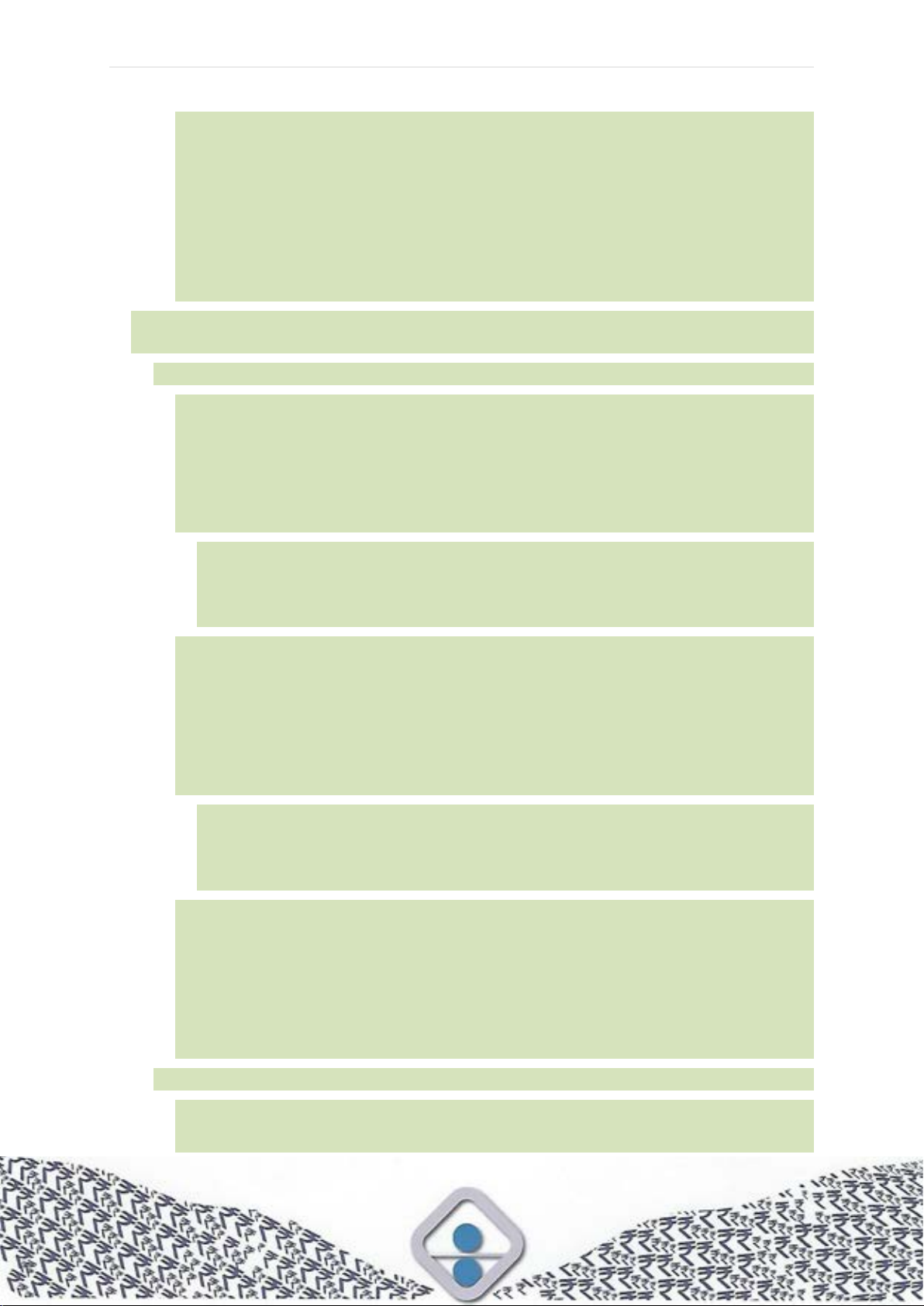
P a g e | 445
falling within L2+20% is invited to match L1 price for remaining quantity and
so on and contract will be awarded accordingly
- If some quantity is still left uncovered on ‘Class-I local supplier’, then such
balance quantity can be ordered on the original L1 bidder
- If none of the ‘Class-I local suppliers’ falling within L2+20% is able to match
L1 price or there are no ‘Class-I local suppliers’ falling within L2+20%, then
contract shall be awarded to original L1 and L2 (L3, L4…and so on) bidders
in the ratio 70:30 subject to matching L1 price
➢ In case of three-way splitting between L1, L2 and L3 bidders in the ratio of
50:30:20
• If L1 is ‘Class-I local supplier’ – 50% awarded to L1
- If L2 and L3 are ‘Class-I local suppliers’ – 30% and 20% awarded to L2 and
L3 bidders respectively subject to matching L1 price
- If either L2 or L3 is a ‘Class-I local supplier’ – 30% awarded to L2 or L3,
whoever is a ‘Class-I local supplier’, subject to matching L1 price –
remaining 20% awarded to lowest among other ‘Class-I local suppliers’
falling within L3+20% subject to matching L1 price
» If there are no other ‘Class-I local suppliers’ falling within L3+20%, then
the contract will be split into two in the ratio of 50:50 and the remaining
50% shall be awarded to either L2 or L3, whoever is a ‘Class-I local
supplier’, subject to matching L1 price
- If L2 and L3 are not ‘Class-I local suppliers’ – remaining 30% and 20%
awarded to lowest two bidders amongst ‘Class-I local suppliers’ falling
within L3+20% subject to matching L1 price
- If any of the two lowest bidders among ‘Class-I local suppliers’ is unable to
match L1 price or accepts less than offered quantity, next lowest ‘Class-I
local supplier’ within L3+20% is invited to match L1 price for remaining
quantity and so on and contract will be awarded accordingly
» If there is only one eligible ‘Class-I local supplier’ falling within L3+20%
then the contract will be split into two in the ratio of 50:50 and the
remaining 50% shall be awarded to the single eligible ‘Class-I local
supplier’ subject to matching L1 price
- If some quantity is still left uncovered on ‘Class-I local supplier’, then such
balance quantity can be ordered on the original L1 bidder
- If none of the ‘Class-I local suppliers’ within L3+20% is able to match L1
price or there are no ‘Class-I local suppliers’ falling within L3+20%, then
contract shall be awarded to original L1, L2 (L3, L4… and so on) and L3
(L4, L5… and so on) bidders in the ratio 50:30:20 subject to matching L1
price
• If L1 is not ‘Class-I local supplier’ – 50% awarded to L1
- If L2 and L3 are ‘Class-I local suppliers’ – 30% and 20% awarded to L2 and
L3 bidders respectively subject to matching L1 price

P a g e | 446
- If either L2 or L3 is a ‘Class-I local supplier’ – 30% awarded to L2 or L3,
whoever is a ‘Class-I local supplier’, subject to matching L1 price –
remaining 20% awarded to lowest among other ‘Class-I local suppliers’
falling within L3+20% subject to matching L1 price
» If there are no other ‘Class-I local suppliers’ falling within L3+20%, then
the contract will be split into two in the ratio of 50:50 and the remaining
50% shall be awarded to either L2 or L3, whoever is a ‘Class-I local
supplier’, subject to matching L1 price
- If L2 and L3 are not ‘Class-I local suppliers’ – remaining 30% and 20%
awarded to lowest two bidders amongst ‘Class-I local suppliers’ falling
within L3+20% subject to matching L1 price
- If any of the two lowest bidders among ‘Class-I local suppliers’ is unable to
match L1 price or accepts less than offered quantity, next lowest ‘Class-I
local supplier’ within L3+20% is invited to match L1 price for remaining
quantity and so on and contract will be awarded accordingly
» If there is only one eligible ‘Class-I local supplier’ falling within L3+20%
then the contract will be split into two in the ratio of 50:50 and the
remaining 50% shall be awarded to the single eligible ‘Class-I local
supplier’ subject to matching L1 price
- If some quantity is still left uncovered on ‘Class-I local supplier’, then such
balance quantity can be ordered on the original L1 bidder
- If none of the ‘Class-I local suppliers’ within L3+20% is able to match L1
price or there are no ‘Class-I local suppliers’ falling within L3+20%, then
contract shall be awarded to original L1, L2 (L3, L4… and so on) and L3
(L4, L5… and so on) bidders in the ratio 50:30:20 subject to matching L1
price

P a g e | 447
Public Procurement Policy for Micro and Small Enterprises (MSEs) Order, 2012
CONDITIONS FOR MICRO AND SMALL ENTERPRISES (MSEs)
1. The definition for Micro & Small Enterprise shall be as per the guidelines issued
by Ministry of MSME vide Gazette Notification No. 1702(E) dated 01.06.2020 and
2119(E) dated 26.06.2020 which came into effect from 01.07.2020.
2. MSEs must be registered with any of the following in order to avail the benefits /
preference available under MSEs Order, 2012: -
• District Industries Centers (DIC)
• Khadi and Village Industries Commission (KVIC)
• Khadi and Village Industries Board
• Coir Board
• National Small Industries Corporation (NSIC)
• Directorate of Handicraft and Handloom
• Any other body specified by Ministry of MSME (MoMSME)
• Udyog Aadhaar Acknowledgment / Udyog Aadhaar Memorandum issued by
MoMSME
• Udyam Registration Portal
3. MSEs participating in the tender must submit valid & authorised copy of certificate
of registration with any one of the above agencies. In case of bidders submitting
DIC registration certificate, they shall attach original notarised copy of the DIC
certificate.
4. The registration certificate issued from any one of the above agencies must be
valid as on Bid closing date of the tender. Bidder shall ensure validity of registration
certificate in case bid closing date is extended.
5. The MSEs who have applied for registration or renewal of registration with any of
the above agencies/bodies, but have not obtained the valid certificate as on
closing date of the tender, are not eligible for exemption/preference. Where validity
of such certificates such as NSIC certificate has lapsed, it shall be the
responsibility of the bidder to seek renewal from the concerned Govt. agency
before such expiry. However, documentary evidence seeking extension before the
lapse of validity of such certificate and an authorization letter from the Govt.
agency having received application for renewal submitted before the bid closing
date shall be accepted.
6. To be classified as Micro or Small Enterprises as per new definition, the
companies need to register themselves on “Udyam Registration Portal” on or after
01.07.2020. This provision is for new establishments as well as for existing MSEs
registered with NSIC, UAM etc.
7. As per the new notification by the Government of India, every business unit
registered under MSME / Udyog Aadhaar shall be treated as a valid MSME up
to 30
th
June 2022 beyond which they need to be registered on Udyam
Registration Portal to enjoy the MSME Benefits.
8. The provisions of this policy shall apply to all procurements of goods and services.
Work contracts are excluded from the purview of this policy.

P a g e | 448
9. The MSEs registered with above mentioned agencies / bodies are exempted from
payment of Earnest Money Deposit (EMD) & tender fees.
10. MSE must be a Manufacturer/Service provider: The MSE bidder must be a
Manufacturer capable of manufacturing the tendered items / Service provider
capable of rendering the tendered services by themselves to avail the benefits
under MSEs Order, 2012. Traders/dealers/resellers/distributors/authorized agents
will not be considered for availing benefits under MSEs Order, 2012 as per
guidelines issued by MoMSME.
11. Relaxation of Norms for Micro & Small Enterprises (MSEs): Pre-qualification
criteria with respect to Prior Turnover and Prior experience may be relaxed for
Micro & Small Enterprises as per GOI guidelines subject to meeting of quality and
technical specifications.
12. However, there may be circumstances like procurement of items/services related
to public safety, health, critical security operations and equipment, etc., wherein
BRBNMPL reserves the right to not consider relaxation of Prior Turnover and Prior
Experience for Micro and Small Enterprises.
13. Items which are reserved for exclusive purchase from MSEs shall be procured
from Micro and Small Enterprises as per Public Procurement Policy.
14. Subject to meeting terms and conditions stated in the tender document, at least
25% of the total quantity of the tender is earmarked for MSEs registered with
above mentioned agencies / bodies.
15. In case MSE bidder is L1, entire value of the tender is to be ordered on the L1
MSE bidder.
16. In tender, participating MSEs quoting price within price band of L1 + 15% shall
also be allowed to supply a portion of requirement by bringing down their price to
L1 price in a situation where L1 price is from someone other than a MSE and such
MSE shall be allowed to supply at least 25% of the total tendered value (where
the tender quantity can be split).
17. In case of more than one such MSEs are in the price band of L1 + 15% and
matches the L1 price, the supply may be shared proportionately if the job can be
split.
18. In case the tendered quantity cannot be split, MSE shall be allowed to supply total
tendered quantity provided their quoted price is within a price band of L1 + 15%
and they match the L1 price.
19. If the quantity cannot be split and there are more than one eligible MSE bidders
(price band within L1+15%) then the opportunity to match the L1 rate of the tender
shall be given first to MSE (who have quoted lowest rate among the MSEs within
the price band of L1+15%) and the total quantity shall be awarded to him after
matching the L1 price of the tender.
20. If the MSE who have quoted lowest rate among the MSEs in the price band of L1
+ 15% do not agree to match the rate of L1 of the tender, then the next ranked
MSE bidder who has quoted within the price band of L1 + 15% in order shall be
given chance to match the rate of L1 for award of the quantity/order.
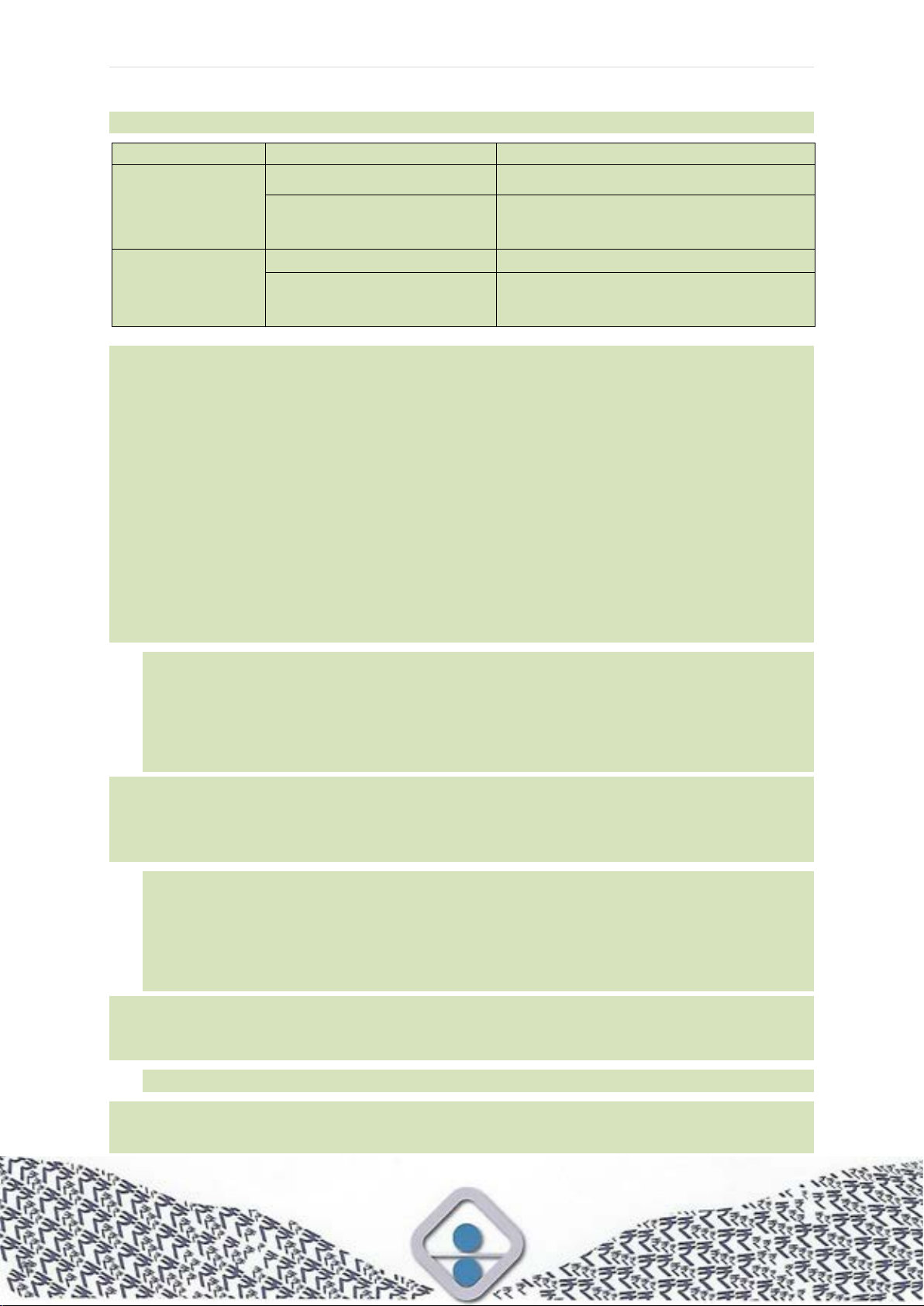
P a g e | 449
21. For more clarity in this regard, following table is furnished: -
Type of Tender
Price quoted by MSE
Finalization of tender
Can be Split
L1
Full order on MSE
Not L1 but within L1+15%
At least 25% order on MSE subject
to matching L1 price
Cannot be split
L1
Full Order on MSE
Not L1 but within L1+15%
Full Order on MSE subject to
matching L1 price
22. The purchase preference to MSEs is not applicable for works contracts where
supply of goods not produced by MSEs is also involved.
23. Special provision for MSEs owned by SC & ST entrepreneurs: Out of the 25%
target of annual procurement from MSEs, 4% shall be earmarked for procurement
from MSEs owned by SC & ST entrepreneurs. In the event of failure of such MSEs
to participate in the tender process or meet the tender requirements and L1 price,
4% sub-target so earmarked shall be met from other MSEs.
24. To qualify for entitlement as SC/ST owned MSE, the SC/ST certificate issued by
District Authority in addition to certificate of registration with any one of the
agencies mentioned in paragraph 1 above. Alternatively, the bidder shall be
responsible to furnish necessary documentary evidence for enabling BRBNMPL
to ascertain that the MSE is owned by SC/ST entrepreneurs. MSE owned by
SC/ST is defined as:
• In case of Proprietary MSE, proprietor(s) shall be SC/ST
• In case of Partnership MSE, the SC/ST partners shall be holding at least 51%
shares in the enterprise
• In case of Private Limited Companies, at least 51% share shall be held by
SC/ST promoters
25. Special provision for MSEs owned by women entrepreneurs: Out of the 25%
target of annual procurement from MSEs, 3% shall be earmarked for procurement
from MSEs owned by women entrepreneurs in addition to 4% earmarked for MSEs
owned by SC/ ST entrepreneurs. MSE owned by Women is defined as:
• In case of Proprietary MSE, proprietor(s) shall be Women
• In case of Partnership MSE, the Women partners shall be holding at least 51%
shares in the enterprise
• In case of Private Limited Companies, at least 51% share shall be held by
Women promoters
26. TReDS: TReDS is an electronic institutional mechanism for facilitating the
financing of trade receivables of MSMEs through multiple financiers. BRBNMPL
is already registered on the following TReDS platforms: -
• M/s A TREDS (Invoicemart), Mumbai
27. MSE vendors are required to register on the TReDS platform. The MSME vendors
can avail the TReDS facility, if they want to.

P a g e | 450
SUPPORT TO START-UP ENTERPRISES
1. Subject to meeting of Quality and Technical specifications, BRBNMPL may
consider allowing the participation of “Start-up’’ companies with capability to
execute the supply / services, as per technical specifications / perform the job as
per scope of work specified in the tender and subject to meeting extant & relevant
guidelines of Government of India. This should be confirmed and substantiated
in the technical bid.
2. The bidder who intends to participate as “Start-up” company should enclose the
Certificate of Recognition issued by Department for Promotion of Industry and
Internal Trade (DPIIT), Ministry of Commerce & Industry, Govt. of India or a
certificate of an eligible Start-up from the inter-Ministerial Board of Certification
during submission of Technical bid.
3. The Nature of Business mentioned in application made to get Start-up
accreditation should be related to the tendered item.
4. Start-ups registered with DPIIT are exempted from payment of Earnest Money
Deposit (EMD) & tender fees. However, they shall be required only to submit Bid
Security Declaration.
5. Prequalification Criteria with respect to Prior Turnover and Prior Experience may
be relaxed for Start-ups as per the GOI guidelines.
6. However, there may be circumstances like procurement of items/services related
to public safety, health, critical security operations and equipment, etc. wherein
BRBNMPL reserves the right to not consider relaxation of Prior Turnover and
Prior Experience for Start-up Companies as per GoI guidelines.
7. Start-up Companies who are also registered as MSEs and wish to avail the
benefits as applicable to MSE, shall submit relevant documents covered under
Conditions for Micro and Small Enterprises elsewhere in this tender.
8. Definition of Start-up Enterprises
(i) As defined by DPIIT, an entity shall be considered as a 'Start-up':
a) Upto a period of ten years from the date of incorporation/registration,
if it is incorporated as a private limited company (as defined in the
Companies Act, 2013) or registered as a partnership firm (registered
under section 59 of the Partnership Act, 1932) or a limited liability
partnership (under the Limited Liability Partnership Act, 2008) in India,
and
b) Turnover of the entity for any of the financial years since incorporation/
registration has not exceeded ₹100 (one hundred) crore, and
c) The entity works towards innovation, development or improvement of
products or processes or services or a scalable business model with
a high potential for employment generation or wealth creation.
(ii) Provided that an entity formed by splitting up or reconstructing an existing
business shall not be considered a ‘Start-up’.
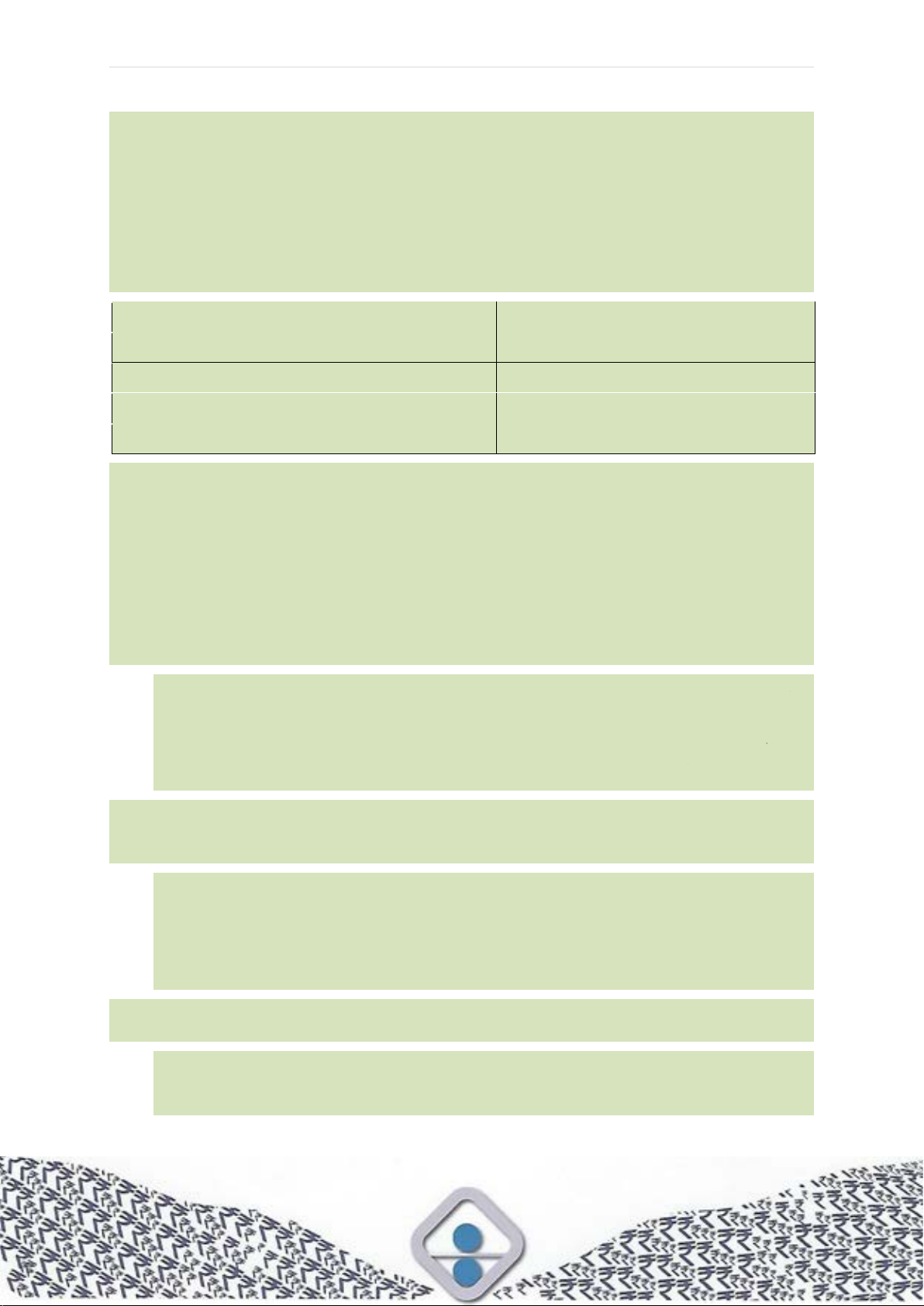
P a g e | 451
Concurrent application of Public Procurement Policy for Micro and Small
Enterprises Order, 2012 and Public Procurement (Preference to Make in India)
Order, 2017
1. The Class-I local suppliers, under PPP-Mll Order, participating in any
government tender, may or may not be MSEs, as defined under the MSME Act.
Similarly, MSEs participating in any government tender, may or may not be
Class-I local suppliers. Suppliers may be categorised in following four broad
categories for consideration or applicability of purchase preference:
Category
Terminology
Supplier is both MSE & Class-I local supplier
"MSE Class-I local supplier"
Supplier is MSE but not Class-I local supplier
"MSE but non-Class-l local supplier"
Supplier is not MSE but is Class-I local supplier
"Non-MSE but Class-I local supplier"
Supplier is neither MSE nor Class-I local
"Non-MSE non-Class-l local supplier"
2. The applicability of PPP-MSE Order and PPP-Mll Order in various scenarios,
involving simultaneous purchase preference to MSEs and Class-I local suppliers
under PPP-MSE Order and PPP-Mll Order respectively, shall be as under:
a) Items covered under Para 3(a) of PPP- Mll Order, 2017 for which Nodal Ministry
has notified sufficient local capacity and competition: For these items, only Class-
I local suppliers are eligible to bid irrespective of purchase value. Hence, Class-
Il local suppliers or Non-local suppliers, including MSEs which are Class-Il local
suppliers/ Non-local suppliers, are not eligible to bid. Possible scenarios can be
as under:
(i) L-1 is "MSE Class-I local supplier" - 100% of the tendered quantity is to be
awarded to L-1
(ii) L-1 is "Non-MSE but Class-I local supplier" - Purchase preference is given
to MSEs as per PPP-MSE Order. Balance quantity is to be awarded to the
L-1 bidder
b) Items reserved exclusively for procurement from MSEs as per PPP-MSE Order:
These items are reserved exclusively for purchase from MSEs. Hence, non-
MSEs are not eligible to bid for these items. Possible scenarios can be as under:
(i) L-1 is "MSE Class-I local supplier" - 100% of the tendered quantity is to be
awarded to L-1
(ii) L-1 is "MSE non-Class-l local supplier" - Purchase preference is to be given
to Class-I local supplier as per PPP-Mll Order. Balance quantity, is to be
awarded to L-1 bidder
c) If items are neither notified for sufficient local capacity nor reserved for MSEs,
then the process will be as follows:
c (a) Items covered under Para 3A(b) of PPP-Mll Order are divisible items and
both MSEs as well as Class-I local suppliers are eligible for purchase
preference. Possible scenarios can be as under:

P a g e | 452
(i) L-1 is "MSE Class-I local supplier" - 100% of the tendered quantity is
to be awarded to L-1
(ii) L-1 is "Non-MSE but Class-I local supplier" - Purchase preference is
to be given to MSEs, if eligible, as per PPP-MSE Order. Balance
quantity is to be awarded to L-1 bidder
(iii) L-1 is "MSE but non-Class-l local supplier" - Purchase preference is
to be given to Class-I local suppliers, if eligible, as per PPP-Mll Order.
Balance quantity is to be awarded to L-1 bidder
(iv) L-1 is "Non-MSE non-Class-l local supplier" - Purchase preference is
to be given to MSEs as per PPP-MSE Order. Thereafter, purchase
preference is to be given to Class-I local suppliers for "50% of the
tendered quantity minus quantity allotted to MSEs above" as per PPP-
Mll Order. For the balance quantity, contract is to be awarded to L-1
bidder. (Kindly refer to the illustrative example given at the end)
c (b) Items covered under Para 3A(c) of PPP-Mll Order, 2017 are non-divisible
items and both MSEs as well as Class-I local suppliers are eligible for
purchase preference. Possible scenarios can be as under:
(i) L-1 is "MSE Class-I local supplier" - Contract is awarded to L-1
(ii) L-1 is not "MSE Class-I local supplier" but the "MSE Class-I local
supplier" falls within 15% margin of purchase preference Purchase
preference is to be given to lowest quoting "MSE Class-I local
supplier". If lowest quoting "MSE Class-I local supplier" does not
accept the L-1 rates, the next higher "MSE Class-I local supplier"
falling within 15% margin of purchase preference is to be given
purchase preference and so on
(iii) If conditions mentioned in sub paras (i) and (ii) above are not met i.e.
L-1 is neither "MSE Class-I local supplier" nor "MSE Class-I local
supplier" is eligible to take benefit of purchase preference, the contract
is to be awarded/ purchase preference to be given in different possible
scenarios as under:
A) L-1 is "MSE but non-Class-l local supplier" or "Non-MSE but
Class-I local supplier" - Contract is be awarded to L-1
B) L-1 is "Non-MSE non-Class-l local supplier" - First purchase
preference to be given to MSE as per PPP-MSE Order. If MSE
not eligible/ does not accept - purchase preference to be given
to Class- I Local supplier as per PPP-Mll Order. If Class-I Local
supplier also not eligible/ does not accept - contract to be
awarded to L-1
d) Items reserved for both MSEs and Class-I local suppliers: These items are
reserved exclusively for purchase from MSEs as well as Class-I local suppliers.
Hence, only "MSE Class-I local supplier" are eligible to bid for these items. Non-
MSEs/CIass-II local suppliers / Non-local suppliers cannot bid for these items.
Hence the question of purchase preference does not arise.
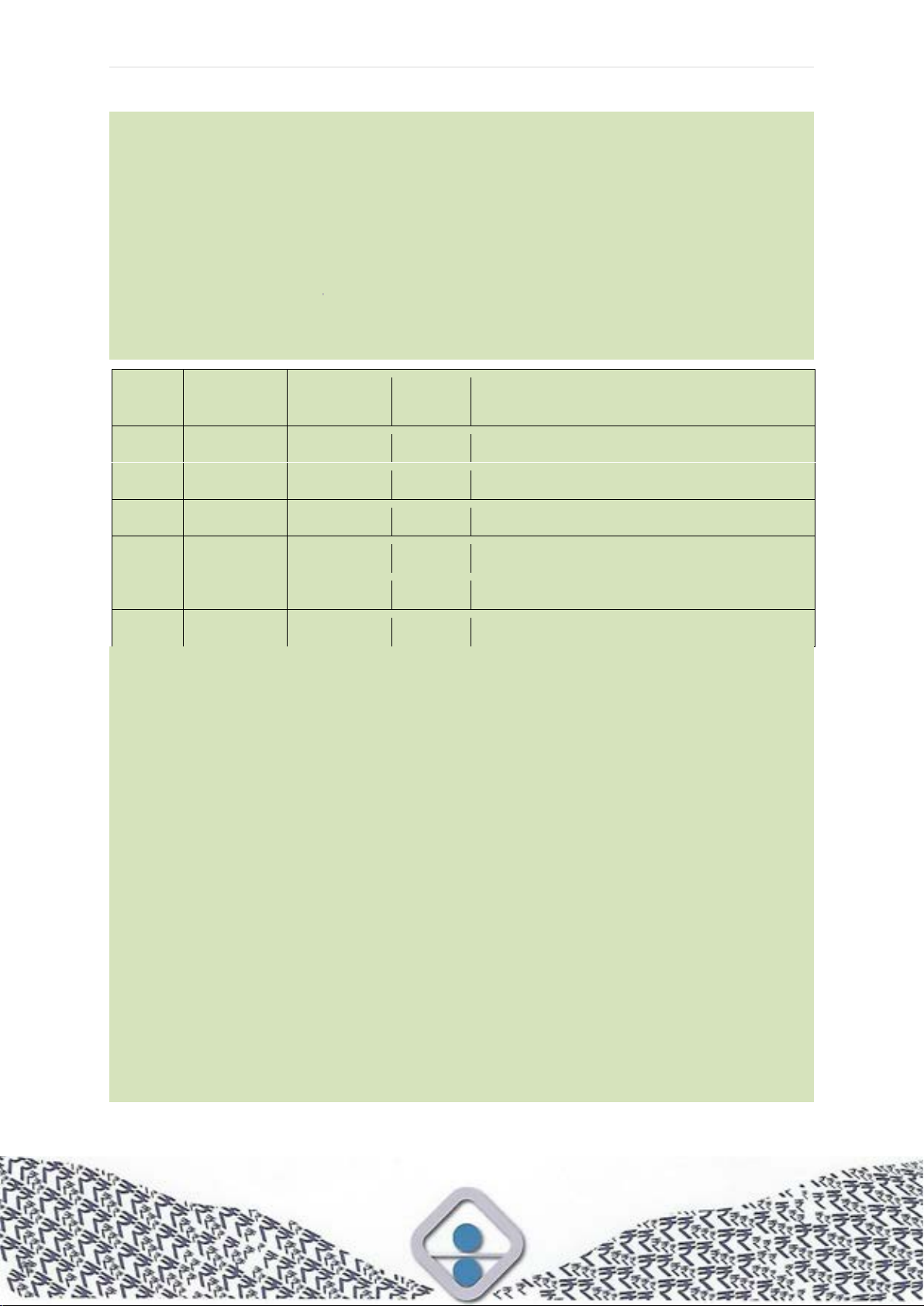
P a g e | 453
e) Non-local suppliers, including MSEs falling in the category of Non-local suppliers,
shall be eligible to bid only against Global Tender Enquiry.
Example explaining applicability in scenario explained in para 4 c (a)(iv)
(Scenario: Divisible items, both MSEs as well as Class-I local suppliers eligible for
purchase preference and L-1 is "Non-MSE non-Class-l local supplier")
Item - Desktop computer
Qty - 50 Nos.
Details of bids received
Sr. No.
Name of
bidder
Rates
quoted
Price
Ranking
Status of bidder
1.
A
100
L1
Non-MSE non- Class-I local supplier"
2.
B
110
L2
"Non-MSE but Class-I local supplier"
3.
C
112
L3
"MSE but non- Class-I local supplier"
4.
D
115
L4
"Non-MSE but Class-I local supplier"
5.
E
118
L5
"MSE but non- Class-I local supplier"
6.
F
120
L6
"MSE Class-I local supplier"
1. In this case, first purchase preference is to be given to MSEs as per PPP-MSE
Order for 25% of tendered quantity of 50 Nos. i.e. 12.5 Nos. (rounded off to the
next whole number say 13 Nos). Accordingly, invite L3 (bidder C), whose quoted
rates falls within 15% margin of purchase preference to match L-1 price i.e. ₹100
for quantity of 13 Nos. Bidder "E" and "F", although MSEs, will not get purchase
preference since their quoted rates don't fall within 15% margin of purchase
preference. Bidder C will be considered for order of 13 Nos. on confirmation of
reduction of price.
2. For 50% of balance quantity of 37 number (tendered quantity of 50 - 13 awarded
to bidder C; assuming bidder C has confirmed to accept L-1 rates), purchase
preference will be given to lowest Class-I local supplier as per PPP-Mll Order.
Accordingly, bidder B will be invited to match L-1 price for 50% of 37 Nos i.e.
18.5 (say 19 Nos of computers). If bidder "B" does not accept the L-1 price i.e.
price of ₹100 per unit, next higher Class-I local supplier falling within 20% margin
of purchase preference, i.e. bidder "D", may be invited to match L-1 price for 19
Nos. of computers and so on.
3. For remaining quantity i.e. 18 Nos (50-13-19), the contract will be awarded to
lowest quoting bidder i.e. Bidder "A" who is L-1 in the example.

P a g e | 454
Annexure 36: Restrictions on Public Procurement from countries
sharing land border with India
1. Any bidder from a country which shares a land border with India, excluding
countries as listed on the website of the Ministry of External Affairs, to which the
Government of India has extended lines of credit or in which the Government of
India is engaged in development projects (hereinafter called ‘Restricted
Countries’), will be eligible to bid in any procurement whether of Goods, Services
(including Consultancy Services and Non-Consultancy Services) or Works
(including Turnkey Projects) only if the bidder is registered with the Registration
Committee constituted by the Department for Promotion of Industry and Internal
Trade (DPIIT) Bidders shall enclose the certificate in this regard in Section XVIII
– Eligibility Declarations.
2. Further, any bidder (including bidder from India) having specified Transfer of
Technology (ToT) arrangement with an entity from a country which shares a land
border with India, shall also require to be registered with the same Competent
Authority.
3. In Bids for Turnkey contracts, including Works contracts, the successful bidder
shall not be allowed to sub-contract works to any contractor from such Restricted
Countries unless such contractor is similarly registered. In such cases, bidders
shall enclose the certificate in this regard in Section XVIII – eligibility declarations.
4. If Bidder has proposed to sub-contract Services or incidental Goods directly/
indirectly from the vendors from such countries, such vendor shall be required to
be registered with the Competent Authority. However, if Bidder procures raw
material, components, and sub-assemblies from such countries' vendors, such
vendors shall not require registration.
5. "Bidder" (including the term 'tenderer', 'consultant' or 'service provider' in certain
contexts) means any person or firm or company, including any member of a
consortium or joint venture (that is an association of several persons, or firms or
companies), every artificial juridical person not falling in any of the descriptions
of bidders stated hereinbefore, including any agency branch or office controlled
by such person, participating in a procurement process.
6. "Tender" will include other forms of procurement, except where the context
requires otherwise.
7. "Bidder from a country which shares a land border with India" means: -
a. An entity incorporated, established or registered in such a country; or
b. A subsidiary of an entity incorporated, established or registered in such a
country; or
c. An entity substantially controlled through entities incorporated, established
or registered in such a country; or
d. An entity whose beneficial owner is situated in such a country; or
e. An Indian (or other) agent of such an entity; or
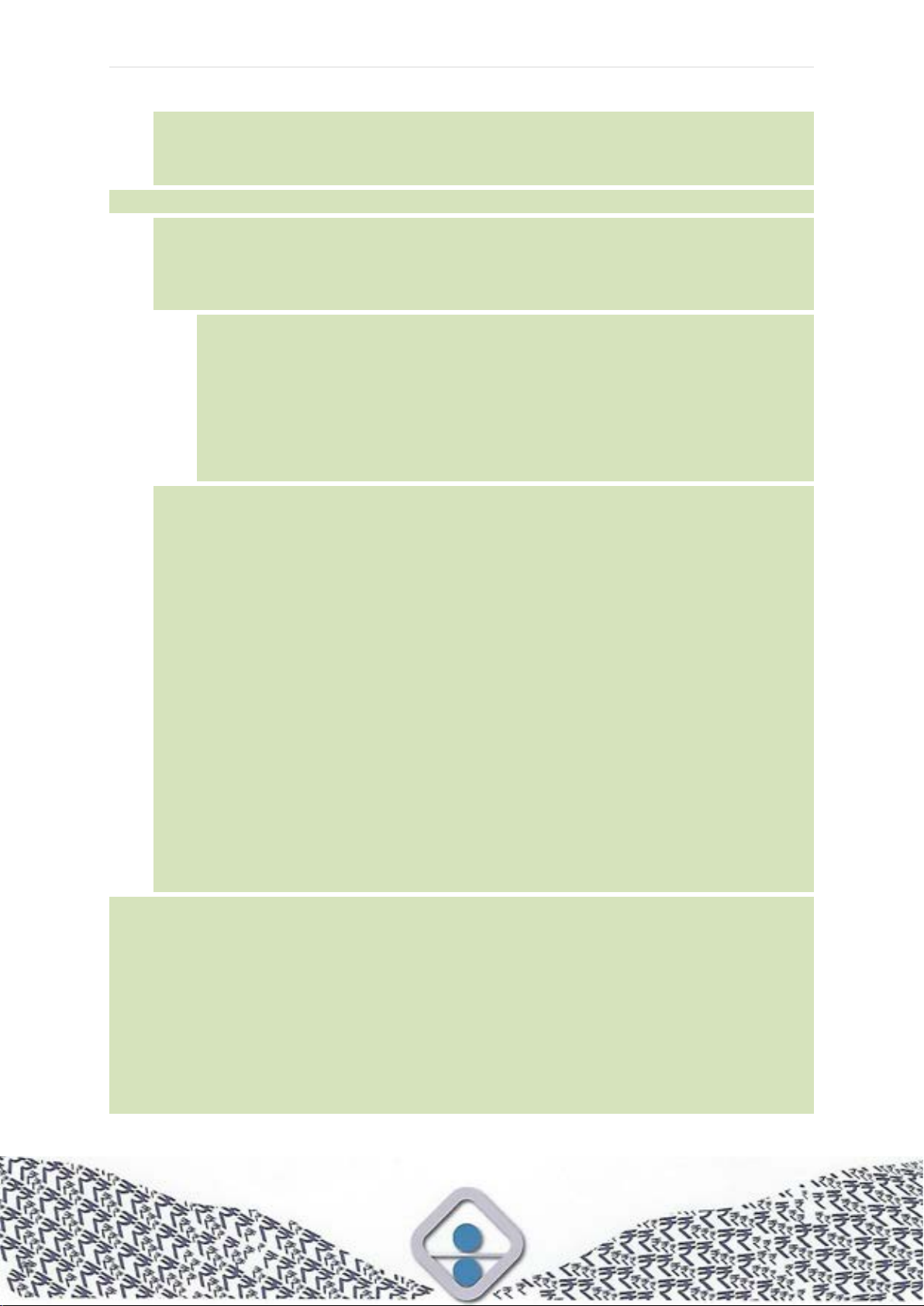
P a g e | 455
f. A natural person who is a citizen of such a country; or
g. A consortium or joint venture where any member of the consortium or joint
venture falls under any of the above
8. The beneficial owner for the purpose of 4 above will be as under:
i. In case of a company or Limited Liability Partnership, the beneficial owner
is the natural person(s), who, whether acting alone or together, or through
one or more juridical person, has a controlling ownership interest or who
exercises control through other means. Explanation—
a. "Controlling ownership interest" means ownership of or entitlement to
more than twenty-five per cent. of shares or capital or profits of the
company;
b. "Control" shall include the right to appoint majority of the directors or
to control the management or policy decisions including by virtue of
their shareholding or management rights or shareholder agreements
or voting agreements;
ii. In case of a partnership firm, the beneficial owner is the natural person(s)
who, whether acting alone or together, or through one or more juridical
person, has ownership of entitlement to more than fifteen percent of capital
or profits of the partnership;
iii. In case of an unincorporated association or body of individuals, the
beneficial owner is the natural person(s), who, whether acting alone or
together, or through one or more juridical person, has ownership of or
entitlement to more than fifteen percent of the property or capital or profits
of such association or body of individuals;
iv. Where no natural person is identified under (i) or (ii) or (iii) above, the
beneficial owner is the relevant natural person who holds the position of
senior managing official;
v. In case of a trust, the identification of beneficial owner(s) shall include
identification of the author of the trust, the trustee, the beneficiaries with
fifteen percent or more interest in the trust and any other natural person
exercising ultimate effective control over the trust through a chain of control
or ownership.
9. An “Agent” is a person employed to do any act for another, or to represent
another in dealings with third person.
10. [To be inserted in tenders for Works contracts, including Turnkey contracts] The
successful bidder shall not be allowed to sub-contract works to any contractor
from a country which shares a land border with India unless such contractor is
registered with the Competent Authority. The definition of "contractor from a
country which shares a land border with India" shall be as in paragraph 4 above.
11. The Registration shall be valid at the time of submission of bid and at the time of
acceptance of bid. If the bidder was validly registered at the time of acceptance/

P a g e | 456
placement of order, registration shall not be relevant consideration during
contract execution.
Model Certificate for Tenders
"l have read the clause regarding restrictions on procurement from a bidder of a
country which shares a land border with India; I certify that this bidder is not from such
a country or, if from such a country, has been registered with the Competent Authority.
I hereby certify that this bidder fulfils all requirements in this regard and is eligible to
be considered. [Where applicable, evidence of valid registration by the Competent
Authority shall be attached.]"
Model Certificate for Tenders for Works involving possibility of sub-contracting
"l have read the clause regarding restrictions on procurement from a bidder of a
country which shares a land border with India and on sub-contracting to contractors
from such countries; I certify that this bidder is not from such a country or, if from such
a country, has been registered with the Competent Authority and will not sub-contract
any work to a contractor from such countries unless such contractor is registered with
the Competent Authority. I hereby certify that this bidder fulfils all requirements in this
regard and is eligible to be considered. [Where applicable, evidence of valid
registration by the Competent Authority shall be attached.]"
Model Certificate in cases of specified ToT
l have read the clause regarding restrictions on procurement from a bidder having
Transfer of Technology (ToT) arrangement with an entity from a country which shares
a land border with India; I certify that this bidder does not have any ToT arrangement
requiring registration with the Competent Authority.
OR
l have read the clause regarding restrictions on procurement from a bidder having
Transfer of Technology (ToT) arrangement with an entity from a country which shares
a land border with India. I certify that this bidder have valid registration to participate
in this procurement.

P a g e | 457
Annexure 37: Format of Procurement Proposal
Procurement Proposal (Concept Paper) for Procurement of Consultancy/other
services
(Refer Para 18.14)
Category of Assignment : Consultancy Services/other services
Brief Description of Consultancy/ :
other services Proposed
Proposed Period of Engagement :
Total Estimated Cost :
Purpose/Objective Statement of Services
(i) Description of service:
(ii) Background of the Organisation and the Project:
(iii) Purpose/Objectives of the Assignment: (Highlight how the proposed
procurement of services would fit in with short-term and strategic goals of
Procuring Entity)
Service Outcome Statement
(i) Outcomes expected from the Procurement of Services:
a) Broad List of Activities/Steps involved in achieving objectives:
b) Expected Time-frame of assignment/Duration of Engagement:
c) Rough estimate of cost of Procurement of services: (including related costs
to be incurred by the organization)
Justification for the procurement of Services
(i) Capabilities required for carrying out the assignments:
a) Rough assessment of available in-house capabilities as compared to
required capabilities:
b) The eligibility and pre-qualification criteria to be met by the consultants/
service providers:
c) Precedence and similar assignments carried out earlier in our organisation/
similar organisations
d) Justification: Based on assessment of required and in-house capabilities;
In case of Consultancy Services
It is certified that, the hiring of consultants is justified for following reasons (Tick points
applicable). Please also add a narrative justification:

P a g e | 458
(i) Inadequacy of Capability or Capacity of required expertise in-house; or
(ii) There is internal capacity/capability to do the job but there are consideration of
economy, Speed and efficiency in relation to additional requirement/commitment/
usage of;
a) Staff/Management/Organization;
b) Technological and Material Resources;
c) Money and
d) Time/Speed of execution; and
(iii) Also, tick one or more of following:
a) The need to have qualified consultant for providing a specialized high
quality service; or/and
b) Need for impartial advice from a consultant (acting independently from any
affiliation, economic or otherwise) to avoid conflicts of interest;
c) The need for Transfer of Knowledge/Training/Capacity and capability
building as a by-product of such engagement
d) Need to acquire information about/Identifying and implementing new
methods and systems
e) Need for planning and implementing organizational change
In case of Other (Non-consultancy) Services
It is certified that, the procurement (outsourcing) of these services is justified for
following reasons (Tick one main point below). Please also add a narrative justification:
(i) An administrative policy decided by the Company to outsource specific (class of)
services; or
(ii) Economy, Speed and efficiency and more effective delivery of services relating
to additional requirement/commitment/usage of (tick one or more below):
a) Staff/Management/Organization;
b) Technological and Material Resources;
c) Money and
d) Time/Speed of execution.
Justification: ..................................................................................................................
In principle approval
In-principle approval may kindly be accorded, for further processing. Final
administrative and budgetary approvals would be taken after development of Terms
of Reference/Activity Schedule and detailed estimates.

P a g e | 459
Annexure 38: Template for Terms of Reference (ToR)
(Refer Para 18.15)
1. Description of Assignment
2. Procuring Entity’s Organisation Background
3. Assignment Background
4. Statement of Purpose/Objectives
5. Statement of Assignments Outcomes
6. Detailed Scope of Work and Time-lines
(i) Tasks, Activities, dependencies, bar chart and Gantt Chart, Milestones
(ii) Place of Assignment and Touring Requirements, if any
(iii) Length and Duration of assignments
7. Team Composition and Qualification Requirements for the Key Experts (and any
other requirements which will be used for evaluating the key experts under the
Bid data sheet)
8. Capacity Building, Training and Transfer of Knowledge, if any
9. Deliverables, Reporting Requirements and Time Schedule for Deliverables [If no
reports are to be submitted, state here “Not applicable.”]
(i) Format, frequency and contents of reports; dates of submission
(ii) Number of copies and requirements for electronic submission (or on
computer media)
(iii) Persons (indicate names, titles, submission address) to receive them;
10. Background material, Data, reports, records of previous surveys and so on, to be
provided to the consultant (Mention a caveat about reliability of material provided
and need for the consultant to verify and crosscheck vital aspects)
11. Facilities such as local conveyance, office space, office machines, secretarial
assistance, utilities, local services, etc., which would be provided to the
consultant by the Procuring Entity (Specifically mention, what facility/utilities
would not be provided and also, charges if any for facilities offered)
12. Institutional and organisational arrangement
(i) Counterpart Project Manager and Team
(ii) Consultancy Management Committee
(iii) Chain of Command for reporting
13. Procedure for review of the work of consultant after award of contract

P a g e | 460
Annexure 39: Template for Activity and Other Schedule for
Other (Non-consultancy) Services
(Refer Para 18.34.5)
1. Description of Assignment
2. Procuring Entity’s Organisation and Assignment Background
3. Statement of Purpose/Objectives
4. Statement of Assignments Outcomes
5. Itemized Activity Schedule and Time-lines
(i) Tasks, Activities, dependencies, categorised into classes, location and
features affecting prices.
(ii) Frequency of Activities, Quantum, Length and Duration of Activities
(iii) Performance standards for such activities
6. Labour/Personnel Deployment Schedule:
(i) Type of Personnel, Number of each type, Place, Shifts, Frequency of
deployment
(ii) Project Managers, Supervisors, Their qualifications/experience, numbers
(iii) Leave reserve and reliving staff needed are not included in the numbers of
personnel, these must be included in the rate of each personnel
7. Material Schedule, if any: Materials, Consumables, Tools of Trade, to be
consumed/deployed, tabulate, quantum, specifications, per unit of activity/
Manpower/day/location etc.
8. Essential Equipment Schedule: Deployment of essential machinery (equipment,
Trucks, Cranes, Washing Machines, vessels/crafts, plant & machinery) –
mention quantity/ activity, specifications, capacity, age. Possession/access to
such machinery may also be included in the qualification requirements.
9. Outcomes, deliverables, reports and Time Schedule for Deliverables
10. Statutory and contractual obligations to be complied with by the contractor:
Various statutory provisions relating to labour, taxation, Workmen Safety, Child
and Women Labour, Private Security Agencies, Environmental Protection,
Mining, Forest clearance, Employment reservations and Procuring Entity’s own
regulation about safety, security, confidentiality etc. must be listed, so that price
implications and compliance is taken care of by the bidder.
11. Facilities and Utilities to be provided by the Procuring Entity to service provider
at Site: It should be mentioned, if any facility/utility (Operation Manuals,
Emergency Medical, Room, Furniture, Electricity connection, Water connection)

P a g e | 461
etc. would be made available to the successful bidder to carry out the service. In
case it is proposed to charge the Electricity/Water supplied to the service
provider, the same may be mentioned, including the rate of charges. Specially
mention facilities and utilities which will not be provided, or the facilities which
would be provided on chargeable basis.
12. Institutional and organisational arrangement
(i) Counterpart Project Manager and Team
(ii) Chain of Command for reporting
13. Procedure for review of the work of consultant after award of contract
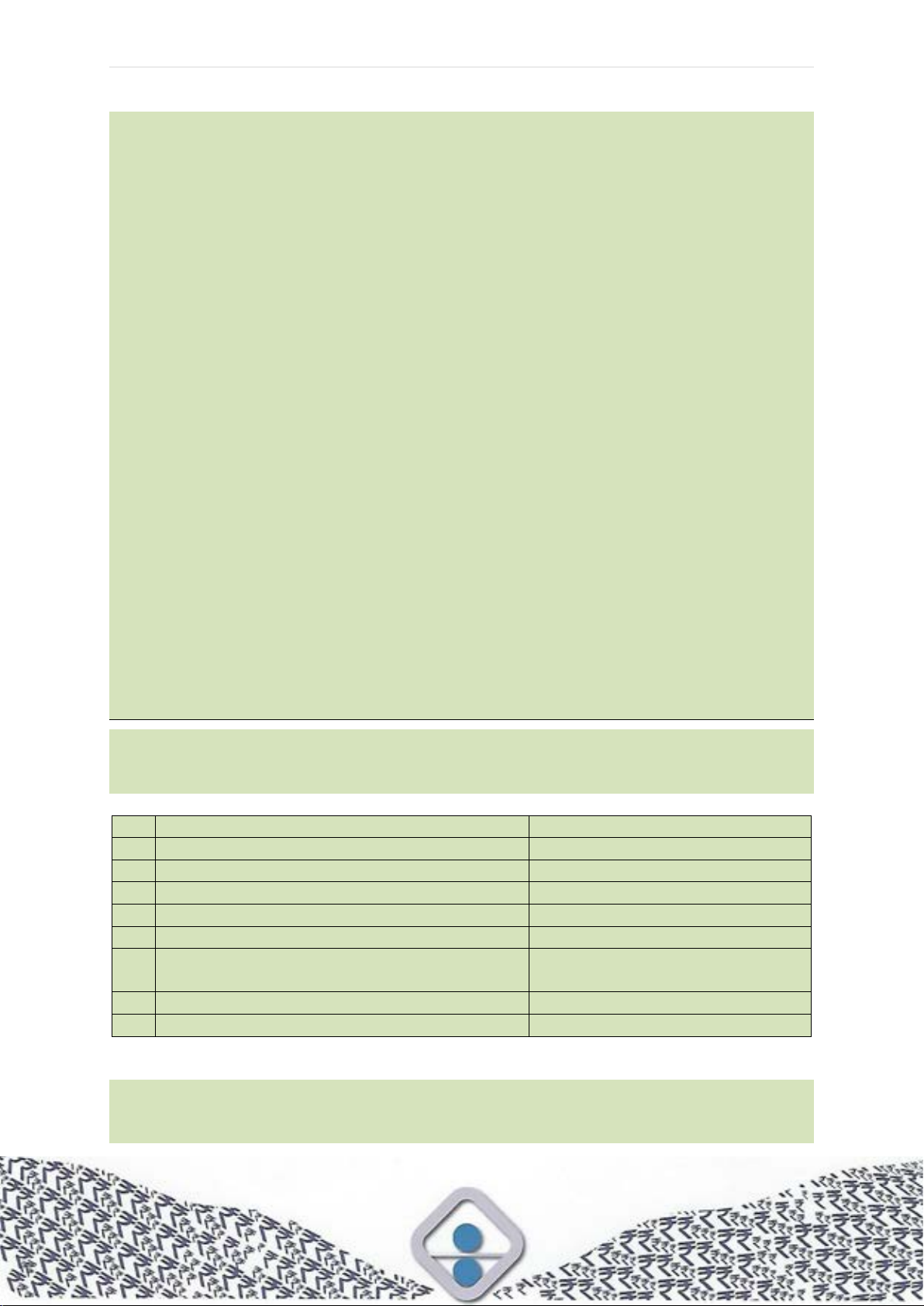
P a g e | 462
Annexure 40: Change Request (CR) in IT applications
(Refer Para 18.35)
Format-I Requirement elicitation
1. Software application in which change is required
2. Brief description of the Change Request (CR)
3. Reason for change
4. Module in which change is required
5. New module required
6. Change in existing programs/screens
7. New programs/screens required
8. Change in existing Reports and Query
9. New Reports and Query to be prepared
10. Financial transactions involved in the change requested
Request initiator (HOD of user department)
Department :
Date :
Format-II User sign off for production
Certificate for deploying the Change Request for ______________ in production
№
Description
Details
1
Date of submission and date of change
2
Change implementer
3
Change approver
4
Affected Information Systems
5
Information Security Risk approval
6
Information Security Risk Assessment and
Recommendation Note
7
Nature of change
8
Indication of success or failure
(Signature)
HOD of user department
Date :

P a g e | 463
PART C: STANDARD BIDDING
DOCUMENT (SBD)

P a g e | 464
Standard Bidding Document (SBD)
(Procurement of Goods and Services)
(Name, address, telephone no., Fax, e-mail, Website etc. of the Unit)
Not Transferable
Security Classification: _________________
TENDER DOCUMENT FOR PURCHASE OF _______________________________
Tender No. ………………………………………… dated ……………………
This tender document contains …………………. pages
The tender document is sold to:
M/s. _____________________________________________________________
Address __________________________________________________________
__________________________________________________________
__________________________________________________________
Details of Contact person in BRBNMPL regarding this tender:
Name:…………………………………………….. Designation: ……………………………
Address :
Phone, Fax :
Email :
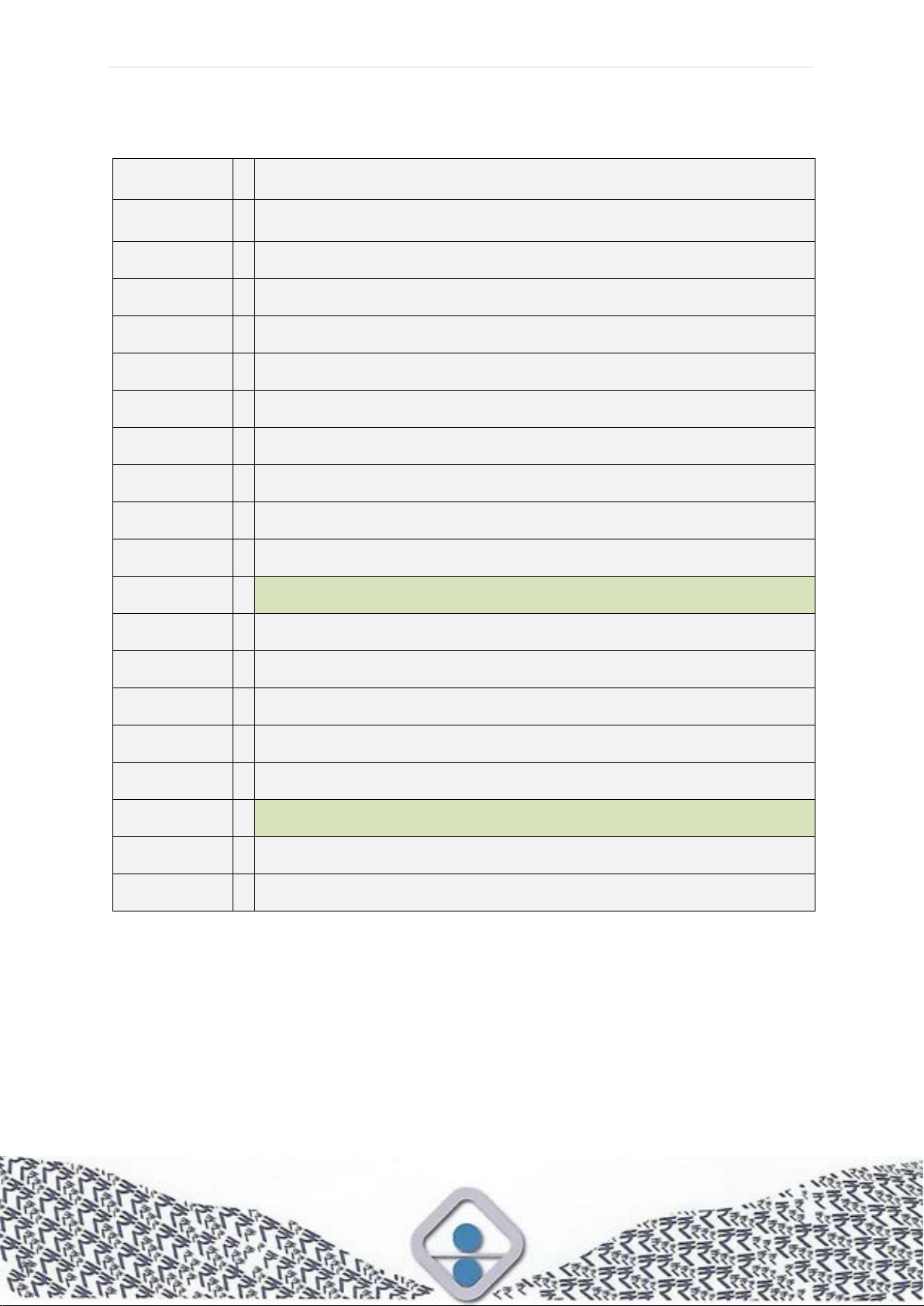
P a g e | 465
Contents
Section I
:
Notice Inviting Tender (NIT)
Section II
:
General Instructions to Tenderers (GIT)
Section III
:
Special Instructions to Tenderers (SIT)
Section IV
:
General Conditions of Contract (GCC)
Section V
:
Special Conditions of Contract (SCC)
Section VI
:
List of Requirements
Section VII
:
Technical Specifications
Section VIII
:
Quality Control Requirements
Section IX
:
Qualification Criteria
Section X
:
Tender Form
Section XI
:
Price Schedule
Section XII
:
Bidder Information
Section XIII
:
Bank Guarantee Form for EMD
Section XIV
:
Manufacturer's Authorization Form
Section XV
:
Bank Guarantee Form for Performance Security
Section XVI
:
Contract Form
Section XVII
:
Letter of Authority for attending a Bid Opening
Section XVIII
:
Eligibility Declarations
Section XIX
:
Proforma of Bills for Payments
Section XX
:
Proforma of Pre-contract Integrity Pact
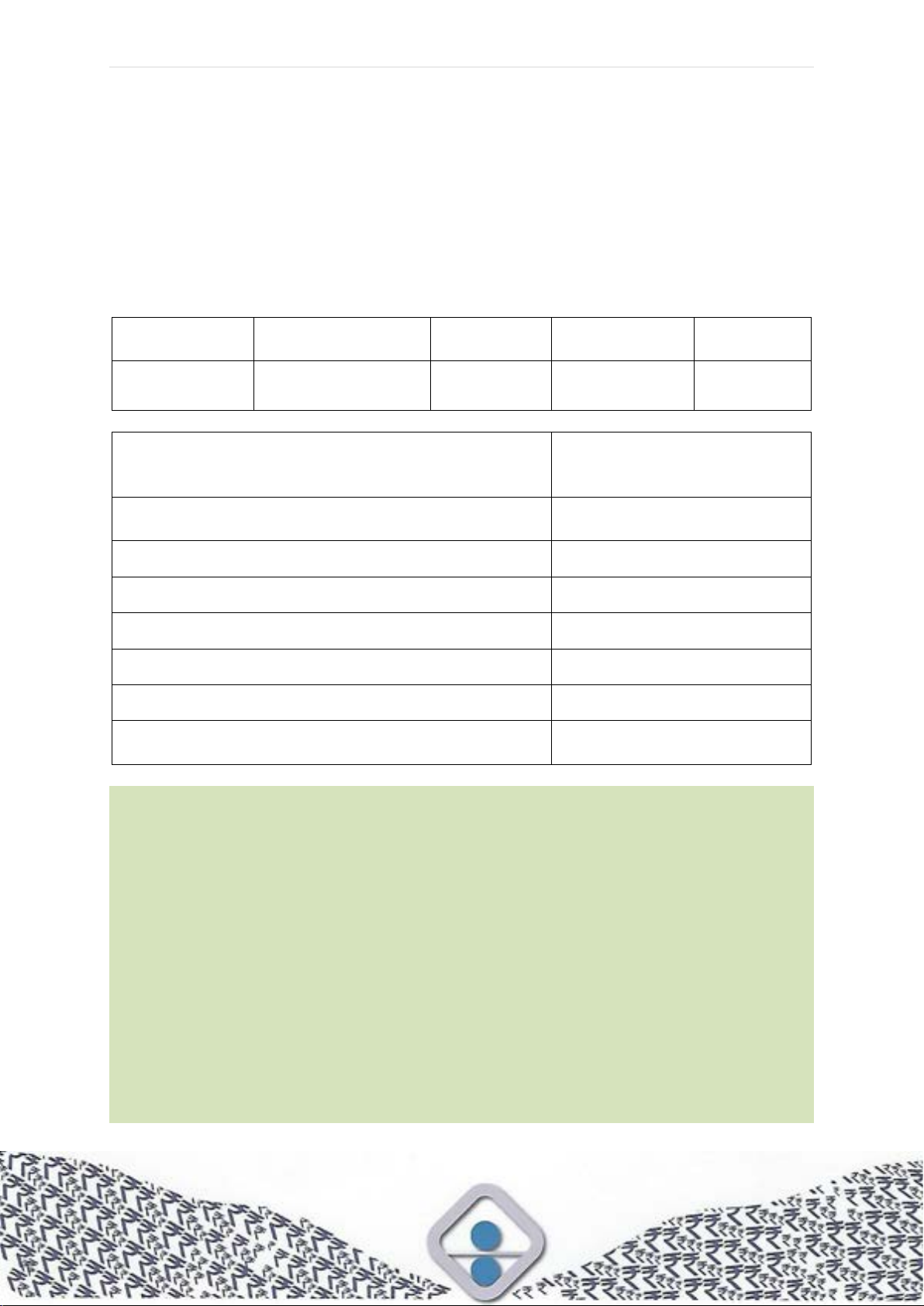
P a g e | 466
Section I: Notice Inviting Tender (NIT)
(Name, address, telephone no., Fax, e-mail, website etc. of the Unit)
………………………………. ………………….
(Tender Sl. No.) (Date)
1. Notice Inviting Tender (NIT)
Bids are invited from eligible and qualified tenderers for supply of following: -
Schedule No.
Brief Description of
Goods / Services
Quantity
(with UoM)
Earnest Money
(in ₹)
Remarks
Type of Tender (Two Bid / PQB / EOI / RC /
Development / Indigenization / Disposal of Scrap /
Security item etc.
Date of Sale of tender documents
From …… to …… during
office hours
Price of the Tender Document
Closing date and time for receipt of tenders
Place of receipt of tenders
Time and date of opening of tenders
Place of opening of tenders
Nominated Person / Designation to Receive Bulky
Tender (Clause 21.1 of GIT)
2. Bidders must read the complete ‘Tender Document’
This NIT is an integral part of the Tender Document and serves a limited purpose of
invitation, and does not purport to contain all relevant details for submission of bids.
Bidders must go through the complete Tender Document for details before submission
of their Bids.
3. Availability of the Tender Document
Interested tenderers may obtain further information about this tender from the above
office selling the documents. They may also visit our website mentioned above for
further details. In case of e-tenders, the tender document shall be published on the
nominated eProcurement portal. It shall be available for download after the date and
time of the start of availability till the deadline for availability. Unless otherwise
stipulated, the downloaded Tender Document is free of cost. If the office happens to
be closed on the deadline for submitting the bids as specified above, this deadline
shall not be extended in case of e-tenders.
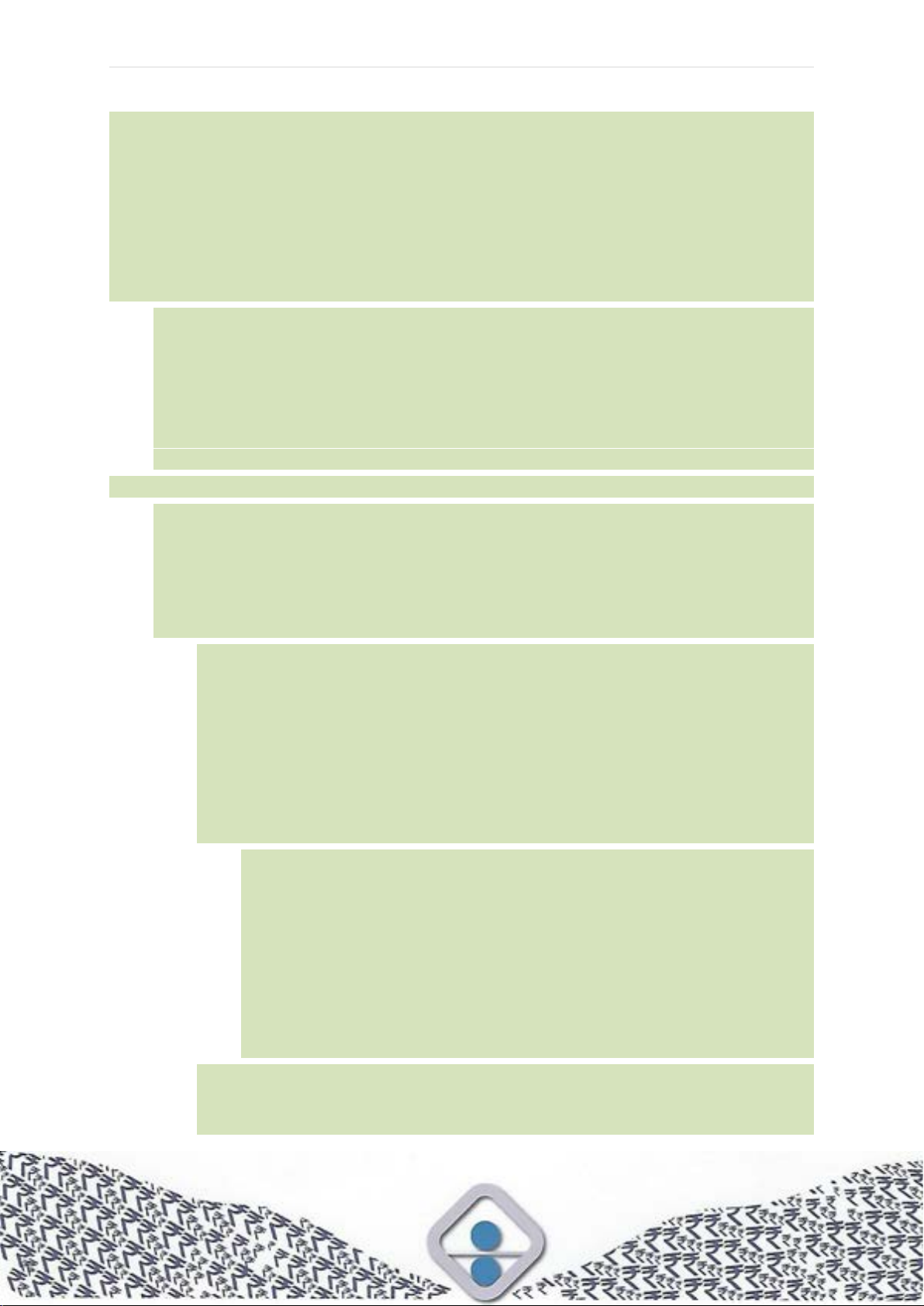
P a g e | 467
4. Eligibility Criteria for Participation in this Tender
Subject to provisions in the Tender Document, participation in this Tender Process is
open to all bidders who fulfil the ‘Eligibility’ and ‘Qualification’ criteria. Bidder should
meet the following eligibility criteria as of the date of his bid submission and should
continue to meet these till the award of the contract. Bidder shall be required to declare
fulfilment of Eligibility Criteria in Section XVIII (Eligibility Declarations). The Bidder,
unless otherwise stipulated
(i) must,
a) be a natural person, private entity, or public entity (State-owned enterprise
or institution).
b) unless explicitly permitted, not be (or proposes to be, a Joint Venture/
Consortium (an association of several persons, firms, or companies -
hereinafter referred to as JV/C).
c) be a manufacturer of the product offered or be authorized representative by
the Principal/OEM or be dealer authorised by the Principal/OEM.
(ii) must,
a) not be insolvent, in receivership, bankrupt or being wound up, not have its
affairs administered by a court or a judicial officer, not have its business
activities suspended and must not be the subject of legal proceedings for
any of these reasons.
b) (including their affiliates or subsidiaries or Contractors/subcontractors for
any part of the contract)
1) Not stand declared ineligible / blacklisted / banned / debarred by
BRBNMPL or its subsidiaries or by Ministry / Department of GoI from
participation in their Tender Processes or by any Government Agency
anywhere in the world, for participating in their tenders, under that
country’s laws or official regulations; and / or
2) Not be convicted (within three years preceding the last date of bid
submission) or stand declared ineligible / suspended / blacklisted /
banned / debarred by appropriate agencies of Government of India
from participation in Tender Processes of all of its entities, for:
• offences involving moral turpitude in business dealings under the
Prevention of Corruption Act, 1988 or any other law; and/or
• offences under the Indian Penal Code or any other law for
causing any loss of life/ limbs/ property or endangering Public
Health during the execution of a public procurement contract
and/ or
• suspected to be or of doubtful loyalty to the Country or a National
Security risk as determined by appropriate agencies of the
Government of India.
3) Not have changed its name or created a new business entity as
covered by the definition of “Allied Firm”, consequent to having been
declared ineligible/ suspended/ blacklisted/ banned/ debarred;

P a g e | 468
4) Not have an association (as a bidder/ partner/ director/ employee in
any capacity)
• of retired official of BRBNMPL if such a retired person has not
completed the cooling-off period of one year after his retirement.
However, this shall not apply if such officers have obtained a
waiver of the cooling-off period from their erstwhile organisation.
• of the near relations of executives of BRBNMPL involved in this
Tender Process
c) Not have a conflict of interest, which substantially affects fair competition.
The prices quoted should be competitive and without adopting any unfair/
unethical/ anti-competitive means. No attempt should be made to induce
any other bidder to submit or not to submit an offer for restricting
competition
(iii) must fulfil any other additional eligibility condition, if any, as may be prescribed
elsewhere in Tender Document.
(iv) must provide such evidence of their continued eligibility to the Procuring Entity if
so requested.
(v) of Class-II Local Suppliers and Non-Local Suppliers (as defined in Make-in-India
policy) shall be eligible subject to certain conditions as detailed subsequently.
(vi) from specified countries having land borders with India (but not in development
partnership with India) shall be eligible subject to certain conditions as detailed
subsequently.
(vii) If this to be a procurement process for the second stage of two-stage / Pre-
Qualification Bidding (PQB) after shortlisting qualified bidders in the EoI / PQB
stage, then only the bidders shortlisted / qualified in the first stage shall be eligible
to participate.
5. Purchase Preference Policies of the Government
As detailed in the tender document, BRBNMPL reserves its right to grant preferences
to eligible bidders under various Government Policies/directives (policies relating to
Make in India; MSME; Start-ups etc.)
6. Pre-bid Conference
If so indicated, Bidders are requested to attend a Pre-bid conference for clarification
on the Tenders' technical specifications and commercial conditions, on the time, date,
and place mentioned therein. Participation in such a Pre-bid Conference is not
mandatory. If a bidder does not participate or submit any query, then no subsequent
representations from them regarding the Technical/ commercial specifications/
conditions shall be entertained.
7. Submission of Bids in case of e-tenders
(i) Bids must be uploaded on the nominated eProcurement portal till the deadline
for submission. If the office happens to be closed on the deadline to submit the
bids as specified above, this deadline shall not be extended.

P a g e | 469
(ii) Unless otherwise specified, originals (or self-attested copies of originals – as
specified therein) of specified scanned uploaded documents must be physically
submitted sealed in double cover before the bid submission deadline at
mentioned venue. Failure to do so is likely to result in the bid being rejected. If
the office is closed on the deadline for physical submission of originals, it shall
stand extended to the next working day at the same time and venue.
(iii) In case of e-tenders, no manual Bids shall be made available or accepted for
submission (except for originals of scanned copies as per sub-clause above).
Bidder must comply with the conditions of the eProcurement portal, including
registration, compatible Digital Signature Certificate (DSC) etc. In the case of
downloaded documents, Bidder must not make any changes to the contents of
the documents while uploading, except for filling in the required information.
8. Bid Opening in case of e-tenders
Bids received shall be opened online at the specified date and time. If the office is
closed on the specified date of opening of the bids, the opening shall be done on the
next working day at the same time.
9. Important Instructions regarding Manual tenders
(i) Tender documents may be purchased on payment of non-refundable fee of ₹
............... (amount) per set through Online Bank Transfer (proof of online transfer
to be submitted) or through in any other Electronic mode of payment such as
Debit Card powered by RuPay, Unified Payments Interface (UPI) (BHIM-UPI),
Unified Payments Interface Quick Response Code (UPI QR Code) (BHIM-UPI
QR Code) or in the form of account payee demand draft/Banker’s cheque, drawn
on a scheduled commercial bank in India, in favour of Bharatiya Reserve Bank
Note Mudran Private Limited, payable at ………….. (name of the place).
(ii) If requested, the tender documents will be mailed by registered post / speed post
to the domestic tenderers and by international courier to the foreign tenderers,
for which extra expenditure per set will be ₹ ………….. for domestic post and ₹
……….. for international courier. The tenderer is to add the applicable postage
cost in the non-refundable fee mentioned above.
(iii) Tenderer may also download the tender documents from the web site and submit
its tender by utilizing the downloaded document. Tenderer must not make any
changes to the contents of the document except for filling the required
information. A certificate to this effect must be submitted by the tenderer.
(iv) Tenderers shall ensure that their tenders, duly sealed and signed, complete in
all respects as per instructions contained in the Tender Documents, are dropped
in the tender box located at the address given below on or before the closing
date and time indicated above, failing which the tenders will be treated as late
and rejected. Tenders may also be sent through post/courier at the mentioned
address. However, Purchaser will not be responsible for any postal lapses or
delays in receipt of the documents.
(v) The tender documents are not transferable.

P a g e | 470
(vi) In the event of any of the above mentioned dates being declared as a holiday /
closed day for the purchase organisation, the tenders will be sold / received /
opened on the next working day at the appointed time.
(vii) Guidelines for filling two-part tender
a) Part I: First sealed cover should contain the required EMD amount, cost of tender
form, technical offer (catalogue/brochure/specifications etc.), supportive
documents related to eligibility criteria, tax related documents etc. along with ALL
annexures of this tender except Section XI (Price Schedule). All the pages
included as Tender Document should be legible, neatly numbered and signed by
authorized person with official seal of the Firm as acceptance of the terms and
conditions. Offers with Counter Conditions is liable for Rejections. This first
sealed cover should be clearly super-scribed with “Part I - Technical Bid - For
Supply of ____________ as per Section VI: List of requirement”. Any price
indication in the Technical Bid will be summarily rejected.
b) Part II: Second sealed cover should contain only section XI (Price Schedule)
(duly sealed and signed). Format provided in the tender document for price
schedule should be followed and any other format will be liable for rejection. This
second sealed cover should be clearly super-scribed with “Part II - Price Bid -
For Supply of ________________ as per Section VI: List of requirement”.
c) The above mentioned sealed covers (Part I & II) should be put in another big
cover, sealed and super-scribed as “Offer for Supply of _______________ as
per Section VI: List of requirement” with due date of opening as ………... (date)
and should be addressed to ……………. (Name and address).
10. Tenderer shall note that the tender document is kept same for all schedules, if
more than one schedule is specified, for administrative convenience. BRBNMPL
reserves the right to conclude contract for each schedule independently as per
the response and qualification.
11. Exemption for MSEs and Startups: The tenderers who are currently registered
and shall continue to remain registered during the tender validity period with
BRBNMPL (except for NCB/ICB Tender) or as a Micro and Small Enterprise
(MSE) as defined in MSEs Order 2012 issued by Ministry of Micro, Small and
Medium Enterprises (MoMSME) or as a Startup as recognised by Department
for Promotion of Industry and Internal Trade (DPIIT), are exempted from payment
of tender fee and earnest money. In case the tenderer falls in these categories,
it should furnish certified copy of its valid registration details (registration with
BRBNMPL or as a MSE or Startup, as the case may be).
12. All Bidders shall have to sign the Integrity Pact with the purchaser as per format
given in Section XX, otherwise, their bids are liable to be summarily rejected.
Details of IEM for this tender is furnished below: - (If applicable for the tender)
Name :
Address :
Email :
13. Disclaimers and Rights of Procuring Entity

P a g e | 471
The issue of the Tender Document does not imply that BRBNMPL is bound to select
bid(s), and it reserves the right without assigning any reason to
(i) reject any or all of the Bids, or
(ii) cancel the tender process; or
(iii) abandon the procurement of the Goods/Services; or
(iv) issue another tender for identical or similar Goods/Services
Important Note: Offers submitted not in line with the above guidelines will be
liable for rejection.
[Name, designation, address, tel. no. etc.
of the officer signing the document]
For and on behalf of
……………………………………….

P a g e | 472
Section II: General Instructions to Tenderer (GIT)
Part I: General Instructions Applicable to all Types of Tenders
A PREAMBLE
1. Introduction
1.1 Interpretations, Definitions and abbreviations which have been used in
these documents, shall have the meanings as indicated in GCC.
1.2 For sake of convenience, whole of this Standard Bidding Document
(including all sections) is written in reference to Procurement of Goods
Tenders. However, this SBD would be utilized for all types of Tenders e.g.
EOI, PQB, Rate Contract, Tenders involving Samples, Sale / Disposal of
Scrap Material and Development / indigenization / Make in India etc.,
Procurement of Services etc. Therefore, the construction of all clauses is to
be interpreted in the context of particular type of tender beyond the letter of
the clause, read with the additional clauses for the specific type of tenders
in Part II GIT/ GCC.
1.3 These tender documents have been issued for the requirements mentioned
in Section - VI - "List of Requirements", which also indicates, inter-alia, the
required delivery schedule and terms & place (i.e. destination) of delivery.
1.4 This section (Section II - "General Instruction to Tenderers" - GIT) provides
the relevant information as well as instructions to assist the prospective
tenderers in preparation and submission of tenders. It also includes the
mode and procedure to be adopted for receipt and opening as well as
scrutiny and evaluation of tenders and subsequent placement of contract.
With this limited objective, GIT is not intended to be complete by itself and
the rest of this document - SIT, GCC and SCC in particular may also be
thoroughly studied before filling up the Tender Document. There would be
certain topics covered in GIT/SIT as well as in GCC/SCC from different
perspectives. In case of any conflict between these, provisions of GCC/
SCC would prevail.
1.5 The tenderers shall also read the Special Instructions to Tenderers (SIT)
related to this purchase, as contained in Section III of these documents and
follow the same accordingly. Whenever there is a conflict between the GIT
and the SIT, the provisions contained in the SIT shall prevail over those in
the GIT.
1.6 Local Conditions It is imperative that each bidder fully acquaints himself
with all the local conditions and factors, which would have any effect on the
performance / completion of the contract in all respects inter alia including
the legal, environmental, infrastructure, Logistics, communications, and
cost aspects. Bidders would themselves be responsible for compliance with
Rules, Regulations, Laws and Acts in force from time to time in India and/
or country of manufacture & supply. On such matters, the Purchaser shall
not entertain any request from the bidders.

P a g e | 473
1.7 Obtaining the Tender Documents: Interested tenderers may obtain
further information about this requirement from the office issuing the
documents, mentioned in the NIT. They may also visit website mentioned
therein for further details.
1.7.1 Tenderer may also download the tender document from the website
mentioned in NIT and submit its tender by utilizing the downloaded
document. The bidder must not make any changes to the contents
of the tender document, except for filling the required information.
A certificate to this effect must be submitted by the bidder in the
Tender Form (Section X).
1.7.2. The tender documents are not transferable.
2. Language of Tender
The tender submitted by the tenderer and all subsequent correspondence and
documents relating to the tender exchanged between the tenderer and BRBNMPL,
shall be written in English or Hindi language, unless otherwise specified in the Tender.
However, the language of any printed literature furnished by the tenderer in connection
with its tender may be written in any other language provided the same is accompanied
by Hindi or English translation. For purposes of interpretation of the tender, the English
translation shall prevail.
3. Eligible Tenderers
3.1 This invitation for tenders is open to all suppliers who fulfil the ‘eligibility’
and ‘qualification’ criteria specified in these documents. Bidder should meet
(as on the date of his bid submission and should continue to meet till the
award of the contract) the ‘Eligibility Criteria’ detailed in NIT clause 3.
Please refer to Section IX - Qualification criteria and Section XVIII -
Eligibility Declarations. In case of Second Stage (after the Pre-Qualification
stage) of two Stage Bidding or in case of Special Limited Tenders this
invitation is open only to such bidders who have been shortlisted.
3.2 The bidder, their affiliates, or subsidiaries – including subcontractors or
suppliers for any part of the contract – should not stand declared ineligible/
blacklisted/banned/debarred by BRBNMPL or its subsidiaries or by Ministry
/ Department of GoI from participation in their Tender Processes or by any
Government Agency anywhere in the world, for participating in its tenders,
under that country’s laws or official regulations. A declaration to this effect
shall be submitted by the bidder in the Eligibility Declarations (Section XVIII).
3.3 Unless otherwise stipulated in the tender, Joint Ventures/Consortiums shall
not be considered in this Tender.
3.4 Under Public Procurement (Preference to Make in India) Order 2017 (as
amended/revised from time to time), entities from such countries identified
as not allowing Indian companies to participate in their Government
procurement shall not be allowed to participate on a reciprocal basis in this
tender. For this purpose, a supplier or bidder shall be considered to be from

P a g e | 474
a country if (i) the entity is incorporated in that country, or ii) a majority of its
shareholding or effective control of the entity is exercised from that country;
or (iii) more than 50% of the value of the item being supplied has been
added in that country. Indian suppliers shall mean those entities which meet
any of these tests with respect to India. Please refer to Section XVIII -
Eligibility Declarations.
3.5 Orders issued by the Government of India regarding purchase preference
to “Local Suppliers” to encourage 'Make in India' and promote
manufacturing and production of goods and services in India shall apply to
this procurement under Government of India’s Public Procurement
(Preference to Make in India) Order, 2017 (as amended from time to time).
Please refer to Annexure 1 of this tender document.
3.5.1 Minimum local content for eligibility to participate: Only bidders
meeting the minimum prescribed local content for the product shall
be eligible to participate subject to the following conditions.
3.5.2 Based on the Make in India Policy, classes of local / non-local
Suppliers eligible to participate in the tender shall be declared in the
tender document. If not so declared, only Class-I and Class-II local
Suppliers shall be eligible to participate and not non-local Suppliers.
3.6 Government of India, Ministry of Finance, Department of Expenditure,
Public Procurement Division’s Orders (Public Procurement 1, 2 and 3) vide
F.No.6/18/2019-PPD dated 23
rd
/24
th
July 2020 (or any further amendments
thereof) regarding eligibility of bidders from neighbouring countries sharing
land border with India, shall apply to this tender. Please refer to XVIII –
Eligibility Declarations and Annexure 2 of this tender document.
3.7 In case Integrity Pact is mandated in the NIT/SIT, only those bidders who
sign the Integrity Pact, would be eligible to participate in the Tender.
3.8 Any bidder having a conflict of interest, which substantially affects fair
competition, shall not be eligible to bid in this tender. Bids found to have a
conflict of interest shall be rejected as nonresponsive. Bidder shall be
required to declare the absence of such conflict of interest in Section XVIII
Eligibility Declarations.
4. Eligible Goods Services - Country of Origin and Minimum Local Content
Unless otherwise stipulated in SCC or Contract, the country of origin of ‘Goods’ and
‘incidental Works/ Service’ to be supplied under the contract shall have their origin in
India or other countries and must conform to the declaration made by the contractor
in its bid regarding but not limited to i) restrictions on certain countries with land-
borders with India; ii) minimum local content and location of value addition (Make in
India Policy); iii) Contractor’s status as MSE or Start-up. The term “origin” used in this
clause means where the goods (including subcontracted components) are mined,
grown, produced, or manufactured or from where the incidental Works/ Services are
arranged and supplied.

P a g e | 475
5. Tendering Expense
The tenderer shall bear all costs and expenditure incurred and / or to be incurred by it
in connection with its tender including preparation, mailing and submission of its tender
and for subsequent processing the same. BRBNMPL will, in no case be responsible
or liable for any such cost, expenditure etc. regardless of the conduct or outcome of
the tendering process.
B TENDER DOCUMENTS
6. Content of Tender Documents
6.1 The tender document includes: -
1. Section I : Notice Inviting Tender (NIT)
2. Section II : General Instructions to Tenderers (GIT)
3. Section III : Special Instructions to Tenderers (SIT)
4. Section IV : General Conditions of Contract (GCC)
5. Section V : Special Conditions of Contract (SCC)
6. Section VI : List of Requirements
7. Section VII : Technical Specifications
8. Section VIII : Quality Control Requirements
9. Section IX : Qualification Criteria
10. Section X : Tender Form
11. Section XI : Price Schedule
12. Section XII : Bidder Information
13. Section XIII : Bank Guarantee Form for EMD
14. Section XIV : Manufacturer's Authorization Form
15. Section XV : Bank Guarantee Form for Performance Security
16. Section XVI : Contract Form
17. Section XVII : Letter of Authority for attending a Bid Opening
18. Section XVIII : Eligibility Declarations
19. Section XIX : Proforma of Bills for Payments
20. Section XX : Proforma for Pre-Contract Integrity Pact
6.2 The relevant details of the required goods and services, the terms,
conditions and procedure for tendering, tender evaluation, placement of
contract, the applicable contract terms and, also, the standard formats to
be used for this purpose are incorporated in the above-mentioned
documents. The interested tenderers before formulating the tender and
submitting the same to BRBNMPL, should read and examine all the terms,
conditions, instructions etc. contained in the tender documents. Failure to
provide and / or comply with the required information, instructions etc.
incorporated in these tender documents may result in rejection of its tender.
7. Amendments to Tender Documents
7.1 At any time prior to the deadline for submission of tenders, BRBNMPL

P a g e | 476
may, for any reason deemed fit by it, modify the tender documents by
issuing suitable amendments to it.
7.2 Such an amendment will be uploaded in the website and notified in writing
by registered / speed post or by fax / telex / e-mail, followed by copy of the
same by suitable recorded post to all prospective tenderers, which have
received the tender documents and will be binding on them.
7.3 In order to provide reasonable time to the prospective tenderers to take
necessary action in preparing their tenders as per the amendment,
BRBNMPL may, at its discretion extend the deadline for the submission
of tenders and other allied time frames, which are linked with that deadline.
8. Pre-Bid conference
8.1 If found necessary, a pre-bid conference may be stipulated in the SIT, for
clarification / amendment to Technical specifications / techno-commercial
conditions in two-bid tenders.
8.2 Participation is not mandatory, however, in case a bidder chooses not to
participate (or fails to do so) in the pre-bid conference, it would be assumed
that they have no issues regarding the Technical / commercial
specifications / conditions.
8.3 After the pre-bid conference a clarification letter would be issued, containing
amendments if required, of various provisions of the Bid-Document, which
shall form part of the Bid-document.
9. Clarification of Tender Documents
Prospective bidders must interpret the provisions in the Bid document in the context
in which they appear. Any interpretation of the provisions far removed from such
context or any other contrived interpretation or interpretation between the lines is not
acceptable. A Tenderer requiring any clarification or elucidation on any issue of the
tender documents may take up the same with BRBNMPL in writing or by fax / e-mail /
telex. BRBNMPL will respond in writing to such request provided the same is received
by BRBNMPL prior to the prescribed date of submission of tender. Copies of the query
and clarification shall be sent to all prospective bidders who have received the bidding
documents.
C PREPARATION OF TENDERS
10. Documents Comprising the Tender
10.1 Unless otherwise indicated in NIT/ SIT, “Technical bid” shall include inter-
alia (including any changes in the following as per NIT/ SIT):
a) Tender Form/Covering letter as per format in Section X.
b) Section VI - List of Requirements, showing the schedules and
quantities quoted.

P a g e | 477
c) Documentary evidence, as necessary in terms of GIT clauses 3 and
16 establishing that the tenderer is eligible to submit the tender and,
also, qualified to perform the contract if its tender is accepted.
d) Documents and relevant details to establish in accordance with GIT
clause 17 that the goods and the allied services to be supplied by the
tenderer conform to the requirement of the tender documents along
with list of deviations if any (ref clause 17.2 of GIT). The tenderers
may also enclose in their tenders, technical literature and other
documents as and if considered necessary by them.
e) Earnest money furnished in accordance with GIT clause 18.1
alternatively, documentary evidence as per GIT clause 18.2 for
claiming exemption from payment of earnest money. and
f) Bidder Information as per Section XII.
g) Manufacturer's Authorization Form (ref Section XIV, if applicable)
h) A list of deviations (ref Clause 19.4) from the clauses of this SBD, if
any.
i) If stipulated in NIT/SIT, duly signed Integrity Pact as per Section XX.
Note: No price details shall be disclosed or hinted upon in any manner in
the Technical bid.
10.2 Unless otherwise indicated in NIT/ SIT, “Financial Bid” shall include inter-
alia (including any changes in the following as per NIT/ SIT):
a) Price Schedule (Section XI) and all financially relevant details. Prices
shall be quoted duly taking into consideration, the Payment and
delivery terms.
Note: No additional Technical details, which have not been brought out in
the Technical Bid, may be brought out in the Financial Bid.
10.3 A tender, that does not fulfil any of the above requirements and / or gives
evasive information / reply against any such requirement, shall be liable to
be ignored and rejected.
10.3 Tender sent by fax/email/telex/cable shall be ignored.
11. Tender currencies
11.1 Unless otherwise specified, the tenderer shall quote only in Indian rupees.
11.2 Where the tender condition specifies acceptance of quotations in different
currencies, then, for domestic goods, prices shall be quoted in Indian
rupees only and for imported goods, prices shall be quoted either in Indian
rupees or in the currency stipulated in the SIT, mentioning, inter-alia, the
exchange rate adopted for converting foreign currency into Indian Rupees.
As regards price(s) for allied services, if any, required with the goods, the

P a g e | 478
same shall be quoted in Indian Rupees if such services are to be performed
/ undertaken in India.
11.3 Tenders, where prices are quoted in any other way shall be treated as
unresponsive and rejected.
12. Tender Prices
12.1 The Tenderer shall indicate on the Price Schedule provided under Section
XI all the specified components of prices shown therein including the unit
prices and total tender prices of the goods and services it proposes to
supply against the requirement. All the columns shown in the price schedule
should be filled up as required. If any column does not apply to a tenderer,
same should be clarified accordingly by the tenderer.
12.2 If there is more than one schedule in the List of Requirements, the tenderer
has the option to submit its quotation for any one or more schedules and,
also, to offer special discount for combined schedules. However, while
quoting for a schedule, the tenderer shall quote for the complete
requirement of goods and services as specified in that particular schedule.
12.3 The quoted prices for goods offered from within India (goods manufactured
in India or goods of foreign origin already located in India) and that for goods
of foreign origin offered from abroad are to be indicated separately in the
applicable Price Schedules attached under Section Xl.
12.4 While filling up the columns of the price schedule, the following aspects
should be noted for compliance:
12.5 For goods offered from within India (goods manufactured in India or goods
of foreign origin already located in India), the prices in the corresponding
price schedule shall be entered separately in the following manner:
a) The price of the goods, quoted ex-factory, ex-showroom, ex-
warehouse or off-the-shelf, as applicable, including Goods and
services Tax, Customs duty or any other similar duties and taxes
already paid or payable on the components and raw material used in
the manufacture or assembly of the goods quoted ex-factory etc. or
on the previously imported goods of foreign origin quoted ex-
showroom etc.
b) Goods and Services Tax, which will be payable on the goods in India
if the contract is awarded.
c) Charges towards inland transportation, insurance and other local
costs incidental to delivery of the goods to their final destination as
specified in the List of Requirements and
d) The price of incidental services, as and if mentioned in List of
Requirements.
12.6 For goods of foreign origin offered from abroad, the prices in the
corresponding price schedule shall be entered separately in the following
manner:

P a g e | 479
a) The price of goods quoted FAS / FOB port of shipment, CIF port of
entry in India or CIF specified place of destination in India as indicated
in the List of Requirements,
b) Wherever applicable, the amount of custom duty and import duty on
the goods to be imported.
c) The charges for inland transportation, insurance and other local costs
incidental to delivery of the goods from the port of entry in India to their
final destination, as specified in the List of Requirements. and
d) The charges for incidental services, as and if mentioned in the List of
Requirements.
12.7 Additional information and instruction on Duties and Taxes:
For goods offered from within India (goods manufactured in India or goods of
foreign origin already located in India), if the Tenderer desires to ask for Goods
and services Tax, Customs duty or any other similar duties and taxes to be paid
extra, the same must be specifically stated. In the absence of any such stipulation
the price will be taken inclusive of such duties and taxes and no claim for the
same will be entertained later.
12.8 Goods and Services Tax
a) All the bidders/tenders should ensure that they are GST compliant and
their quoted tax structure/rates are as per GST Law.
b) As per the GST Act, the bid and contract must show the GST Tax
Rates (and GST Cess, if applicable) and GST Amount explicitly and
separate from the bid/contract price (exclusive of GST). Bid-price
inclusive of taxes/GST would be a violation of the GST Act. In case
any taxes, duties are not clearly specified, or column is left blank in
price bid then it will be presumed that no such tax/levy is applicable or
payable by BRBNMPL. However, the price should be inclusive of any
other taxes or levies if any, already paid or payable.
c) If a tenderer asks for GST (and GST Cess, if applicable) to be paid
extra, the rate and nature of such taxes applicable should be shown
separately. Such taxes will be paid as per the rate at which it is liable
to be assessed or has actually been assessed provided the
transaction of sale is legally liable to such taxes and is payable as per
the terms of the contract. The payment of GST and GST Cess to
contractor/supplier would be made only on the latter submitting a
Bill/invoice in accordance with the provision of relevant GST Act and
the rules made there under and after online filing of valid return on
GST portal.
d) Bidders should quote ‘GST’ if payable extra on total basic rate of each
item. GST in ‘%’ inclusive of cess to be quoted. GST will be applicable
on ‘basic rate + Packing & forwarding charges + Freight + Insurance’.

P a g e | 480
e) GST Registration Number (15-digit GSTIN): In case bidder has
multiple business verticals in a state and having separate registration
for each business vertical, GSTIN of each vertical concerned with the
supply and service involved, as per the scope of NIT to be informed
to BRBNMPL. If supply / service provided is from multiple states, then
bidder should mention GST Registration Number for each state
separately.
f) If bidder is not liable to take GST registration, i.e., having turnover
below threshold, bidders need to submit undertaking / indemnification
against tax liability. The bidder/dealer shall not charge any GST and/or
GST Compensation Cess on the bill/invoice. In such case, applicable
GST will be deposited by BRBNMPL directly to concerned authorities.
Further, the bidder should notify and submit to BRBNMPL within 15
days from the date of becoming liable to registration under GST.
g) Those bidders who have opted for Composition scheme under GST,
they have to submit a declaration indicating their GST registration No.
h) HSN (Harmonized System of Nomenclature) code for the goods
being supplied by the vendor for each item covered under the NIT has
to be declared in the Technical bid. Services Accounting Code (SAC)
for classification of services under GST for each item covered under
the NIT has to be declared in the Technical bid.
i) All necessary adjustment vouchers such as Credit Notes / Debit Notes
for any short/excess supplies or revision in prices or for any other
reason under the Contract shall be submitted to BRBNMPL as per
GST provisions.
j) In the event of default on his part in payment of tax and submission /
uploading of monthly returns, BRBNMPL is well within its powers to
withhold payments, especially the tax portion, until Vendor/Supplier/
Contractor corrects the default and / or complies with the requirements
of GST and produces satisfactory evidence to that effect or upon GST
appearing on the Company GST portal.
k) Vendor/Supplier/Contractor should issue Receipt vouchers
immediately on receipt of advance payment and subsequently issue
supplies along tax invoice after adjusting advance payments as per
Contractual terms and GST Provisions.
l) In case the GST rating of vendor on the GST portal / Govt. official
website is negative / blacklisted, then the bids may be rejected by
BRBNMPL. Further, in case rating of bidder is negative / blacklisted
after award of work for supply of goods / services, then BRBNMPL
shall not be obligated or liable to pay or reimburse GST to such vendor
and shall also be entitled to deduct / recover such GST along with all
penalties / interest, if any, incurred by BRBNMPL.
m) Any late delivery i.e., delivery after the due date attracts payment of
damages by the vendor / contractor as agreed mutually. It is agreed
by the Contractor that such damages become recoverable by
BRBNMPL with applicable GST thereon.

P a g e | 481
n) Any reference in the NIT to CENVAT / VAT / Service Tax / Excise Duty
and the clauses relating thereto may please be ignored.
12.9 Goods and Services Tax…contd…
a) If reimbursement of Goods and Services Tax is intended as extra over
the quoted prices, the supplier must specifically say so also indicating
the rate, quantum and nature of the tax applicable. In the absence of
any such stipulation, it will be presumed that the prices quoted are firm
and final and no claim on account of Goods and Services Tax will be
entertained after the opening of tenders.
b) If a Tenderer chooses to quote a price inclusive of Goods and
Services Tax and also desires to be reimbursed for variation, if any,
in the Goods and Services Tax during the time of supply, the tenderer
must clearly mention the same and also indicate the rate and quantum
of Goods and Services Tax included in its price. Failure to indicate all
such details in clear terms may result in statutory variations being
denied to the tenderer.
c) Subject to sub clauses (a) & (b) above, any change in Goods and
Services Tax upward / downward as a result of any statutory variation
in Goods and Services Tax taking place within original Delivery Period
shall be allowed to the extent of actual quantum of Goods and
Services Tax paid by the supplier. In case of downward revision in
Goods and Services Tax, the actual quantum of reduction of Goods
and Services Tax shall be reimbursed to BRBNMPL by the supplier.
All such adjustments shall include all reliefs, exemptions, rebates,
concession etc. if any obtained by the supplier.
d) If a tenderer asks for GST to be paid extra, the rate and nature of such
taxes applicable should be shown separately. Such taxes will be paid
as per the rate at which it is liable to be assessed or has actually been
assessed provided the transaction of sale is legally liable to such
taxes and is payable as per the terms of the contract.
e) The tenderer should quote the exact percentage of GST that they will
be charging extra.
12.10 Duties, taxes and other levies of Local bodies
Unless otherwise stated in the SIT, the goods supplied against contracts placed
by BRBNMPL are not exempted from levy of duties, taxes and other Levies of
local bodies. In such cases, the supplier should make the payment to avoid delay
in supplies and forward the receipt of the same to the purchasing department for
reimbursement and, also, for further necessary action.
In cases where exemption is available, suppliers should obtain the exemption
certificate from the purchasing department to avoid payment of such levies and
taxes.

P a g e | 482
12.11 Duties / Taxes on Raw Materials
BRBNMPL is not liable for any claim from the supplier on account of fresh
imposition and / or increase (including statutory increase) of Customs duty,
Goods and Services Tax or any other similar duties and taxes on raw materials
and/or components used directly in the manufacture of the contracted goods
taking place during the pendency of the contract, unless such liability is
specifically agreed to in terms of the contract.
12.12 Imported Stores not liable to Above-mentioned Taxes and Duties:
Above mentioned Taxes and Duties are not leviable on imported goods (goods
of foreign origin offered from abroad) and hence would not be reimbursed.
12.13 Customs Duty:
In respect of imported goods of foreign origin offered from abroad, the tenderer
shall specify the rate as well as the total amount of customs duty payable. The
tenderer shall also indicate the corresponding Indian Customs Tariff Number
applicable for the goods in question.
12.13.1 For transportation of imported goods offered from abroad,
relevant instructions as incorporated under GCC Clause 11 shall
be followed.
12.13.2 For insurance of goods to be supplied, relevant instructions as
provided under GCC Clause 12 shall be followed.
12.13.3 Unless otherwise specifically indicated in this tender document,
the terms FOB, FAS, CIF etc. for imported goods of foreign origin
offered from abroad, shall be governed by the rules & regulations
prescribed in the current edition of INCOTERMS, published by the
International Chamber of Commerce, Paris
12.13.4 The need for indication of all such price components by the
tenderers, as required in this clause (viz., GIT clause 12) is for the
purpose of comparison of the tenders by BRBNMPL and will no
way restrict BRBNMPL's right to award the contract on the
selected tenderer on any of the terms offered.
13. Authorized Dealer/Distributor/Representative of Suppliers
(i) For Non-Commercially-Off-the-Shelf (Non-COTS) items, when a firm sends
quotation for an item manufactured by some different company, the firm is
also required to attach, in its quotation, the manufacturer's authorisation
certificate and also manufacturer's confirmation of extending the required
warranty for that product as per formats given in SBD. This is necessary to
ensure quotation from a responsible party offering genuine product, also
backed by a warranty obligation from the concerned manufacturer. In the
tender, either the manufacturer/OEM or its authorised dealer/distributor/
representative can be considered as valid bidders.

P a g e | 483
(ii) In case of large contracts, especially capital equipment, the manufacturer’s
authorisation must be insisted upon on a tender specific basis, not general
authorisation/dealership, by so declaring in the bid documents clearly.
(iii) In cases where the manufacturer has submitted the bid, the bids of its
authorised dealer/distributor/representative will not be considered and EMD
will be returned.
(iv) And in case of violations, both infringing bids will be rejected.
(v) For Commercially-Off-the-Shelf (COTS) items with clear and standard
specifications, where the requirement is technically and commercially
simple enough that pre-qualification of the bidder is not crucial for the
performance of the contract, a valid dealership certificate will have to be
submitted.
(vi) Bids of bidders quoting as authorised representative of a principal
manufacturer would also be considered to be qualified, provided:
a) their principal manufacturer meets all the criteria above without
exemption, and
b) the principal manufacturer furnishes a legally enforceable tender-
specific authorisation in the prescribed form assuring full guarantee
and warranty obligations as per the general and special conditions of
contract; and
c) the bidder himself should have been associated, as authorised
representative of the same or other Principal Manufacturer for same
set of services as in present bid (supply, installation, satisfactorily
commissioning, after sales service as the case may be) for same or
similar ‘Product’ for past three years ending on ‘The Relevant Date’.
13.1 Conflict of Interest among Bidders
A bidder shall not have any conflict of interest with other bidders. The bidder
found to have a conflict of interest shall be disqualified. A bidder may be
considered to have a conflict of interest with one or more parties in the
bidding process if,
(i) they have controlling partner(s) in common; or
(ii) they receive or have received any direct or indirect subsidy/financial
stake from any of them; or
(iii) they have the same legal representative for purposes of the bid; or
(iv) they have relationship with each other, directly or through common
third parties, that puts them in a position to have access to information
about or influence on the bid of another Bidder; or
(v) Bidder participates in more than one bid in the bidding process.
Participation by a Bidder in more than one Bid will result in the
disqualification of all bids in which the parties involved. However, this

P a g e | 484
does not limit the inclusion of the components/sub-assembly/
Assemblies from one bidding manufacturer in more than one bid; or
(vi) a Bidder or any of its affiliates participated as a consultant in the
preparation of the design or technical specifications of the contract
that is the subject of the Bid.
(vii) For same reasons, in case of a holding company having more than
one independently manufacturing units or more than one unit having
common business ownership / management, only one unit should
quote. Similar restrictions would apply to closely related sister
companies. Bidders must proactively declare in their bids such sister
/ common business / management units in same / similar line of
business.
14. Firm Price / Variable Price
14.1 Unless otherwise specified in the SIT, prices quoted by the tenderer shall
remain firm and fixed during the currency of the contract and not subject to
variation on any account.
14.2 In case the tender documents require offers on variable price basis, the
price quoted by the tenderers will be subject to adjustment during original
Delivery Period to take care of the changes in the cost of labour and
material components in accordance with the price variation formula to be
specified in the SIT. If a tenderer submits firm price quotation against the
requirement of variable price quotation, that tender will be prima-facie
acceptable and considered further, taking price variation asked for by the
tenderer as zero.
14.3 However, as regards taxes and duties, if any, chargeable on the goods and
payable, the conditions stipulated in GIT clause 12 will apply for both firm
price tender and variable price tender.
14.4 Subject to provisions of Clause 11 above, where prices are quoted in
foreign currencies, involving imports - Foreign Exchange Rate Variation
(ERV) would be borne by the Purchaser within the original Delivery Period.
The offer of the Tenderer should indicate import content and the currency
used for calculating import content.
14.5 Base Exchange rate of each major currency used for calculating FE content
of the contract should be indicated. The base date of ERV would be contract
date and variation on the base date can be given up to the midpoint
manufacture, unless firm has already indicated the time schedule within
which material will be imported by the firm.
14.6 In case delivery period is re-fixed / extended, ERV will not be admissible, if
this is due to default of the supplier.
14.7 Documents for claiming ERV:
i. A bill of ERV claim enclosing working sheet
ii. Banker's Certificate/debit advice detailing FE paid and exchange rate

P a g e | 485
iii. Copies of import order placed on supplier
iv. Invoice of supplier for the relevant import order
15. Alternative Tenders
Unless otherwise specified in the Schedule of Requirements, alternative tenders shall
not be considered.
16. Documents Establishing Tenderer's Eligibility and Qualifications
16.1 Pursuant to GIT clause 3 and 10, the tenderer shall furnish, as part of its
tender, relevant details and documents establishing its eligibility to quote
and its qualifications to perform the contract if its tender is accepted.
16.2 The documentary evidence needed to establish the tenderer's qualifications
shall fulfil the following requirements:
a) In case the tenderer offers to supply goods, which are manufactured
by some other firm, the tenderer has been duly authorized by the
goods manufacturer to quote for and supply the goods to BRBNMPL.
The tenderer shall submit the Manufacturer's Authorization Letter to
this effect as per the standard form provided under Section XIV in this
document.
b) The tenderer has the required financial, technical and production
capability necessary to perform the contract and, further, it meets the
qualification criteria incorporated in the Section IX in these documents.
c) In case the tenderer is not doing business in India, how will he be able
to carry out the required contractual functions and duties of the
supplier including after sale service, maintenance & repair etc. of the
goods in question, stocking of spare parts and fast moving
components and other obligations, if any, specified in the conditions
of contract and/or technical specifications.
17. Documents establishing Good's Conformity to Tender document
17.1 Country of Origin, Manufacture and Supply: Bidder must declare the
country of - origin, manufacture, value addition and supply of the goods
offered by them. He must confirm that these do not violate provisions of
Clause 3 of GIT.
17.2 The tenderer shall provide in its tender the required as well as the relevant
documents like technical data, literature, drawings etc. to establish that the
goods and services offered in the tender fully conform to the goods and
services specified by BRBNMPL in the tender documents. For this purpose,
the tenderer shall also provide a clause-by-clause commentary on the
technical specifications and other technical details incorporated by
BRBNMPL in the tender documents to establish technical responsiveness
of the goods and services offered in its tender.

P a g e | 486
17.3 In case there is any variation and/or deviation between the goods &
services prescribed by BRBNMPL and that offered by the tenderer, the
tenderer shall list out the same in a chart form without ambiguity along with
justification, and provide the same along with its tender.
17.4 If a tenderer furnishes wrong and/or misguiding data, statement(s) etc.
about technical acceptability of the goods and services offered by it, its
tender will be liable to be ignored and rejected in addition to other remedies
available to BRBNMPL in this regard.
18. Earnest Money Deposit (EMD)
18.1 Pursuant to GIT clause 10.1(e) the tenderer shall furnish along with its
tender, earnest money for amount as shown in the List of Requirements.
The earnest money is required to protect BRBNMPL against the risk of the
Tenderer’s unwarranted conduct as amplified under sub-clause 23.2 below.
18.2 The tenderers who are currently registered and, also, will continue to
remain registered during the tender validity period with BRBNMPL (except
for NCB/ICB Tender) or as a Micro and Small Enterprise (MSE) as defined
in MSEs Order 2012 issued by Ministry of Micro, Small and Medium
Enterprises (MoMSME) or as a Startup as recognised by Department for
Promotion of Industry and Internal Trade (DPIIT), are exempted from
payment of earnest money. In case the tenderer falls in these categories, it
should furnish certified copy of its valid registration details (registration with
BRBNMPL or as a MSE or as a Startup, as the case may be).
Micro & Small Enterprises must attach Registration Certificate issued by
DIC / KVIC / KVIB / Coir Board / NSIC / Directorate of Handicrafts and
Handlooms, or any other body specified by MSME for authentication such
as Udyog Aadhaar Memorandum / Acknowledgment / Udyog Aadhaar
Portal / Udyam Registration.
18.3 The earnest money shall be denominated in Indian Rupees or in equivalent
foreign exchange in case of GTE/ICB tenders.
18.4 The earnest money shall be furnished in one of the following forms:
a) Insurance Surety Bonds
b) Account Payee Demand Draft from any scheduled commercial bank
in India or
c) Banker's cheque from any scheduled commercial bank in India or
d) Online Bank Transfer (Proof of online transfer to be submitted)
e) Other Electronic Modes of Payment
• Debit Card powered by RuPay
• Unified Payments Interface (UPI) (BHIM-UPI)
• Unified Payments Interface Quick Response Code (UPI QR
Code) (BHIM-UPI QR Code)

P a g e | 487
f) Bank Guarantee (including e-Bank Guarantee) issued/confirmed by
any scheduled commercial bank in India in the proforma given in
Section XIII of SBD in case the amount is more than ₹5 lakh and in
case of foreign bidders in GTE/ICB tenders (in equivalent foreign
exchange amount)
18.5 Unless otherwise specified in SIT, the earnest money shall be valid for a
period of forty-five days beyond the validity period of the tender.
18.6 In case of two packet or two stage bidding, EMD of unsuccessful bidders
during the first stage i.e. technical evaluation etc. should be returned to
them without any interest whatsoever within 30 days of declaration of result
of the first stage i.e. technical evaluation etc.
Otherwise, EMD of the unsuccessful bidders should be returned to them at
the earliest after expiry of the final bid validity and latest on or before the
30
th
day after the award of the contract.
The successful bidder’s bid security (EMD) can be adjusted against the SD
or returned as per the terms of the tender document. The balance can be
deducted from the supplier's bill/invoice before release of payment. Unlike
Procurement of Works, in Procurement of Goods, the concept of taking part
of Performance Guarantee as money retained from first or progressive bills
of the supplier is not acceptable.
18.7 Earnest money of a tenderer will be forfeited, if the tenderer withdraws or
amends its tender or impairs or derogates from the tender in any respect
within the period of validity of its tender. The successful tenderer's earnest
money will be forfeited if it fails to furnish the required performance security
within the specified period.
19. Tender Validity
19.1 If not mentioned otherwise in the SIT, the tenders shall remain valid for
acceptance for a period of 90 days (Ninety days) in case of single bid tender
system and 120 days in case of two-bid system after the date of tender
opening prescribed in the tender document. Any tender valid for a shorter
period shall be treated as unresponsive and rejected.
19.2 In exceptional cases, the tenderers may be requested by BRBNMPL to
extend the validity of their tenders up to a specified period. Such request(s)
and responses thereto shall be conveyed by surface mail or by fax/email/
telex/cable followed by surface mail. The tenderers, who agree to extend
the tender validity, are to extend the same without any change or
modification of their original tender and they are also to extend the validity
period of the EMD accordingly.
19.3 In case the day up to which the tenders are to remain valid falls on/
subsequently declared a holiday or closed day for BRBNMPL, the tender
validity shall automatically be extended up to the next working day.
19.4 Compliance with the Clauses of this Tender Document: Tenderer must
comply with all the clauses of this Tender Document. In case there are any

P a g e | 488
deviations, these should be listed in a chart form without any ambiguity
along with justification.
20. Signing and Sealing of Tender
20.1 An authenticated copy of the document which authorizes the signatory to
commit on behalf of the firm shall accompany the offer. The individual
signing the tender or any other documents connected therewith should
clearly indicate his full name and designation and also specify whether he
is signing,
(a) As Sole Proprietor of the concern or as attorney of the Sole Proprietor;
(b) As Partner (s) of the firm;
(c) As Director, Manager or Secretary in case the of Limited Company
duly authorized by a resolution passed by the Board of Directors or in
pursuance of the Authority conferred by Memorandum of Association.
20.2 The authorized signatory of the tenderer must sign the tender at appropriate
places and initial the remaining pages of the tender.
20.3 The tenderers shall submit their tenders as per the instructions contained
in GIT Clause 10.
20.4 Unless otherwise mentioned in the SIT, a tenderer shall submit the tender
in "Original" and in "Duplicate" and mark them as such.
20.5 The original and other copies of the tender shall either be typed or written
in indelible ink and the same shall be signed by the tenderer or by a
person(s) who has been duly authorized to bind the tenderer to the contract.
The letter of authorization shall be by a written power of attorney, which
shall also be furnished along with the tender.
20.6 All the copies of the tender shall be duly signed at the appropriate places
as indicated in the tender documents and all other pages of the tender
including printed literature, if any shall be initialled by the same person(s)
signing the tender. The tender shall not contain any erasure or overwriting,
except as necessary to correct any error made by the tenderer and, if there
is any such correction; the same shall be initialled by the person(s) signing
the tender.
20.7 The tenderer is to seal the original and each copy of the tender in separate
envelopes, duly marking the same as "Original", "Duplicate" and so on and
writing the address of BRBNMPL and the tender reference number on the
envelopes. The sentence "NOT TO BE OPENED" before … (The tenderer
is to put the date & time of tender opening) are to be written on these
envelopes. The inner envelopes are then to be put in a bigger outer
envelope, which will also be duly sealed, marked etc. as above. If the outer
envelope is not sealed and marked properly as above, BRBNMPL will not
assume any responsibility for its misplacement, premature opening, late
opening etc.
20.8 Two-Bid (envelop/packet) System: If so indicated in the NIT/SIT, tender

P a g e | 489
document will seek quotation in two parts (Two Bid System) for purchasing
capital equipment, high value plant, machinery etc. of complex and
technical nature. First part would be containing the relevant technical details
of the equipment / machinery etc., and in the second part, price quotation
along with other allied issues. First part will be known as 'Technical Bid',
and the second part 'Financial bid'. Tenderer shall seal separately
'Technical Bid' and 'Financial bid' and covers will be suitably super scribed.
Both these sealed covers shall be put in a bigger cover and sealed and
evaluation would be done as described in clause 24.4 below. Further details
would be given in SIT, if considered necessary. Pricing details should not
be mentioned or hinted at in any manner in the “Technical Bid”. In Financial
bid, there should not be any extra information connected with Technical
suitability of the offer – which has not been already disclosed in the
Technical Bid.
20.9 Documents to be uploaded in case of e-tenders
20.9.1 Documents that need not be signed or uploaded by Bidders
Unless otherwise stipulated, the following sections & annexures of the
tender document need not be signed and uploaded as part of the Bid.
However, Bidders have to upload ‘Terms and Conditions – Compliance’ as
token of acceptance of all the Terms and Conditions mentioned therein.
(i) Section I : Notice Inviting Tender (NIT)
(ii) Section II : General Instructions to Tenderers (GIT)
(iii) Section III : Special Instructions to Tenderers (SIT)
(iv) Section IV : General Conditions of Contract (GCC)
(v) Section V : Special Conditions of Contract (SCC)
(vi) Section VI : List of Requirements
(vii) Section VII : Technical Specifications
(viii) Section VIII : Quality Control Requirements
(ix) Section IX : Qualification Criteria
(x) Section XIII : Bank Guarantee Form for EMD
(xi) Section XV : Bank Guarantee Form for Performance Security
(xii) Section XVI : Contract Form
(xiii) Section XIX : Proforma of Bills for Payments
(xiv) Annexure 1 : Explanatory Note on Make in India Order 2017; MSEs
Order 2012 and Start-ups
(xv) Annexure 2 : Restrictions on Public Procurement from countries
sharing land border with India
20.9.2 Documents that need to be filled, digitally signed and
uploaded by Bidders
Unless otherwise stipulated, the following sections & annexures need to be
filled, digitally signed and uploaded as part of the Bid: -

P a g e | 490
(i) List of Requirements – Compliance
(ii) Technical Specifications – Compliance
(iii) Quality Control Requirements – Compliance
(iv) Section X : Tender Form (To serve as a covering letter to both the
Techno-commercial and Financial Bids)
(v) Section XI : Price Schedule
(vi) Section XII : Bidder Information
(vii) Section XIV : Manufacturer's Authorization Form, if applicable
(viii) Section XVII : Letter of Authority for attending a Bid Opening
(ix) Section XVIII : Eligibility Declarations
(x) Section XX : Proforma for Pre-Contract Integrity Pact, if applicable
(xi) Annexure 3 : Bid Security Declaration (for exempted bidders)
(xii) Annexure 4 : Assessment of capability of Bidder, if asked
(xiii) Annexure 5 : Performance Statement
(xiv) Annexure 6 : Statement of Financial Standing, if required
(xv) Annexure 7 : NEFT Mandate Form
(xvi) Annexure 8 : Terms and Conditions – Compliance
(xvii) Annexure 9 : Checklist for Bidders
D SUBMISSION OF TENDERS
21. Submission of Tenders
21.1 Tenderers shall ensure that their tenders, duly sealed and signed, complete
in all respects as per instructions contained in the Tender Documents, are
dropped in the tender box located at the place as indicated in NIT on or
before the closing date and time indicated therein, failing which the tenders
will be treated as late and rejected. Tenders may also be sent through post
at the address as above. However, Purchaser will not be responsible for
any postal lapses or delays in receipt of the documents. In case of bulky
tender, which cannot be put into tender box, the same shall be submitted
by the tenderer by hand to the designated officers of BRBNMPL, as
indicated in NIT. The officer receiving the tender will give the tenderer an
official receipt duly signed with date and time.
21.2 The tenderers must ensure that they deposit their tenders not later than the
closing time and date specified for submission of tenders. In the event of
the specified date for submission of tender falls on / is subsequently
declared a holiday or closed day for BRBNMPL, the tenders will be received
up to the appointed time on the next working day.
22. Late Tender
A tender, which is received after the specified date and time for receipt of tenders will
be treated as "late" tender and will be ignored.

P a g e | 491
23. Alteration and Withdrawal of Tender
23.1 The tenderer, after submitting its tender, is permitted to alter / modify its
tender so long as such alterations / modifications are received duly signed,
sealed and marked like the original tender, within the deadline for
submission of tenders. Alterations / modifications to tenders received after
the prescribed deadline will not be considered.
23.2 No tender should be withdrawn after the deadline for submission of tender
and before expiry of the tender validity period. If a tenderer withdraws the
tender during this period, it will result in forfeiture of the earnest money
furnished by the tenderer in its tender besides other sanctions by
BRBNMPL.
E TENDER OPENING
24. Opening of Tenders
24.1 BRBNMPL will open the tenders at the specified date and time and at the
specified place as indicated in clause 1 of NIT. In case the specified date
of tender opening falls on / is subsequently declared a holiday or closed
day for BRBNMPL, the tenders will be opened at the appointed time and
place on the next working day.
24.2 Authorized representatives of the tenderers, who have submitted tenders
on time may attend the tender opening, provided they bring with them
letters of authority as per the format in SBD XVII from the corresponding
tenderers. The tender opening official(s) will prepare a list of the
representatives attending the tender opening. The list will contain the
representatives' names & signatures and corresponding tenderers' names
and addresses.
24.3 During the tender opening, the tender opening official(s) will read the salient
features of the tenders like description of the goods offered, price, special
discount if any, delivery period, whether earnest money furnished or not
and any other special features of the tenders, as deemed fit by the tender
opening official(s).
24.4 In the case of two bid system mentioned in clause 20.8 above, the technical
bids are to be opened in the first instance, at the prescribed time and date.
These bids shall be scrutinized and evaluated by the competent committee
/ authority with reference to parameters prescribed in the tender document.
Thereafter, in the second stage, the financial bids of only the technically
acceptable offers (as decided in the first stage) shall be opened for further
scrutiny and evaluation. Other financial bids would be returned unopened
to the respective bidders under Registered AD / Reliable Courier or any
other mode with proof of delivery.
F SCRUTINY AND EVALUATION OF TENDERS
25. Basic Principle

P a g e | 492
Tenders will be evaluated on the basis of the terms & conditions already incorporated
in the tender document, based on which tenders have been received and the terms,
conditions etc. mentioned by the tenderers in their tenders. No new condition will be
brought in while scrutinizing and evaluating the tenders.
26. Preliminary Scrutiny of Tenders
26.1 The tenders will first be scrutinized to determine whether they are complete
and meet the essential and important requirements, conditions etc. as
prescribed in the tender document, the tenders, that do not meet the basic
requirements, are liable to be treated as unresponsive and ignored.
26.2 The following are some of the important aspects, for which a tender may be
declared unresponsive and ignored;
a) Tender is not in the prescribed format or is unsigned or not signed as
per the stipulations in the bid document;
b) Tenderer is not eligible to participate in the bid as per laid down
eligibility criteria (Example: the tender enquiry condition says that the
bidder has to be a registered MSE unit, but the tenderer is a, say, a
large-scale unit);
c) Tender validity is shorter than the required period;
d) Required EMD has not been provided or EMD provided is not as per
prescribed format, amount, validity etc. or exemption from EMD is
claimed without acceptable proof of exemption;
e) Tenderer has quoted for goods manufactured by a different firm
without the required authority letter from that manufacturer;
f) Goods offered are sub-standard, not meeting the required
specification etc.;
g) Tenderer has not agreed to essential condition(s) specified in the
tender enquiry (Example: Some such important essential conditions
are – performance security, terms of payment, liquidated damage
clause, warranty clause, dispute resolution mechanism, applicable
law and any other important condition having significant bearing on
the cost/ utility/ performance of the required goods, etc.);
h) Against a schedule in the List of Requirement (incorporated in the
tender enquiry), the Tenderer has not quoted for the entire
requirement as specified in that schedule. (Example: In a schedule, it
has been stipulated that the Tenderer will supply the equipment, install
and commission it and also train BRBNMPL 's operators for operating
the equipment. The Tenderer has however, quoted only for supply of
the equipment).
27. Minor Infirmity / Irregularity / Non-Conformity
If during the preliminary examination, BRBNMPL find any minor infirmity and / or
irregularity and / or non-conformity in a tender, BRBNMPL may waive the same

P a g e | 493
provided it does not constitute any material deviation and financial impact and, also,
does not prejudice or affect the ranking order of the tenderers. Wherever necessary,
BRBNMPL will convey its observation on such 'minor' issues to the tenderer by
registered post/speed post/email etc. asking the tenderer to respond by a specified
date. If the tenderer does not reply by the specified date or gives evasive reply without
clarifying the point at issue in clear terms, that tender will be liable to be ignored.
28. Discrepancy in Prices
28.1 If, in the price structure quoted by a tenderer, there is discrepancy between
the unit price and the total price (which is obtained by multiplying the unit
price by the quantity), the unit price shall prevail and the total price
corrected accordingly, unless BRBNMPL feels that the tenderer has made
a mistake in placing the decimal point in the unit price, in which case the
total price as quoted shall prevail over the unit price and the unit price
corrected accordingly.
28.2 If there is an error in a total price, which has been worked out through
addition and / or subtraction of subtotals, the subtotals shall prevail and the
total corrected; and
28.3 If there is a discrepancy between the amount expressed in words and
figures, the amount in words shall prevail, subject to sub clause 28.1 and
28.2 above.
28.4 If, as per the judgment of BRBNMPL, there is any such arithmetical
discrepancy in a tender, the same will be suitably conveyed to the tenderer
by registered / speed post. If the tenderer does not agree to the observation
of BRBNMPL, the tender is liable to be ignored.
29. Discrepancy between original and copies of Tender
In case any discrepancy is observed between the text etc. of the original and that of
other copies of the same tender set, the text etc. of the original shall prevail. Here also,
BRBNMPL will convey its observation suitably to the tenderer by registered / Speed
post and, if the tenderer does not accept BRBNMPL’s observation, that tender will be
liable to be ignored.
30. Clarification of Bids
(i) During the evaluation of Techno commercial or Financial Bids, the Procuring
Entity may, at its discretion, but without any obligation to do so, ask Bidder to
clarify its bid by a specified date. Bidder should answer the clarification within
that specified date (or, if not specified, 7 days from the date of receipt of such
request). The request for clarification shall be submitted in writing or
electronically, and no change in prices or substance of the bid shall be sought,
offered, or permitted that may grant any undue advantage to such bidder. Any
clarification submitted by a Bidder regarding its Bid that is not in response to a
request by the Purchasing Entity shall not be considered.

P a g e | 494
(ii) In e-tendering, if discrepancies exist between the uploaded scanned copies and
the Originals submitted by the bidder, the original copy's text, etc., shall prevail.
Any substantive discrepancy shall be construed as a violation of the Code of
Ethics, and the bid shall be liable to be rejected as non-responsive in addition to
other punitive actions under the Tender Document for violation of the Code of
Ethics.
(iii) The Procuring Entity reserves its right to, but without any obligation to do so, to
seek any shortfall information / documents only in case of historical documents
which pre-existed at the time of the Bid Opening, and which have not undergone
change since then and does not grant any undue advantage to any bidder. These
should be called only on basis of the recommendations of the TEC.
31. Qualification and Eligibility Criteria
Tenders of the tenderers, who do not meet the required qualification and eligibility
criteria prescribed in Section IX and Section XVIII respectively, will be treated as
unresponsive and will not be considered further.
32. Conversion of tender currencies to Indian Rupees
In case the tender document permits the tenderers to quote their prices in different
currencies, all such quoted prices of the responsive tenderers will be converted to a
single currency viz., Indian Rupees for the purpose of equitable comparison and
evaluation, as per the Bill Currency Selling exchange rates established by the State
Bank of India for similar transactions, as on the date of tender opening.
33. Schedule-wise Evaluation
In case the List of Requirements contains more than one schedule, the responsive
tenders will be evaluated and compared separately for each schedule. The tender for
a schedule will not be considered if the complete requirements prescribed in that
schedule are not included in the tender. However, as already mentioned in GIT sub
clause 12.2, tenderers have the option to quote for any one or more schedules and
offer discounts for combined schedules. Such discounts, wherever applicable, will be
taken into account to determine the tender or combination of tenders offering the
lowest evaluated cost for BRBNMPL in deciding the successful tenderer for each
schedule, subject to that tenderer(s) being responsive.
34. Comparison on CIF/FOR Destination Basis
Unless mentioned otherwise in Section - III - Special Instructions to Tenderers and
Section - VI - List of Requirements, the comparison of the responsive tenders shall be
on CIF/FOR destination basis, duly delivered, commissioned, etc. as the case may be.
35. Additional Factors and Parameters for Evaluation and Ranking of
Responsive Tenders
35.1 Further to GIT Clause 33 above, BRBNMPL's evaluation of a tender will
include and take into account the following:

P a g e | 495
a) In the case of goods offered from within India (goods manufactured in
India or goods of foreign origin already located in India), Goods and
Services Tax or any other similar duties and taxes, which will be
contractually payable (to the tenderer), on the goods if a contract is
awarded on the tenderer; and
b) In the case of goods of foreign origin offered from abroad, customs
duty and other similar import duties/taxes, which will be contractually
payable (to the tenderer) on the goods if the contract is awarded on
the tenderer.
35.2 BRBNMPL's evaluation of tender will also take into account the additional
factors, if any, incorporated in SIT in the manner and to the extent indicated
therein.
35.3 BRBNMPL reserves its right to grant preferences to eligible bidders under
various Government Policies/directives (policies relating to Make in India;
MSME; Start-ups etc.):
(v) Class I Local Suppliers under Public Procurement (Preference to
Make in India) Order 2017 (MII) of Department for Promotion of
Industry and Internal Trade, (DPIIT - Public Procurement Section) as
revised from time to time. Please refer to Annexure 1 of this SBD.
(vi) Bidders from Micro and/or Small Enterprises (MSEs) under Public
Procurement Policy for the Micro and Small Enterprises (MSEs) Order,
2012 as amended from time to time. Please refer to Annexure 1 of this
SBD.
(vii) Start-ups Bidders under Ministry of Finance, Department of
Expenditure, Public Procurement Division OM No F.20/2/2014-PPD
dated 25.07.2016 and subsequent clarifications. Please refer to
Annexure 1 of this SBD.
(viii) Any other category of Bidders, as per any Government Policies,
announced from time to time, if so provided in this tender.
35.4 If the tenders have been invited on variable price basis, the tenders will be
evaluated, compared and ranked on the basis of the position as prevailing
on the day of tender opening and not on the basis of any future date.
36. Tenderer's capability to perform the contract
36.1 BRBNMPL, through the above process of tender scrutiny and tender
evaluation will determine to its satisfaction whether the tenderer, whose
tender has been determined as the lowest evaluated responsive tender is
eligible, qualified and capable in all respects to perform the contract
satisfactorily. If, there is more than one schedule in the List of Requirements,
then, such determination will be made separately for each schedule.
36.2 The above mentioned determination will, inter-alia, take into account the
tenderer's financial, technical and production capabilities for satisfying all
the requirements of BRBNMPL as incorporated in the tender document.
Such determination will be based upon scrutiny and examination of all

P a g e | 496
relevant data and details submitted by the tenderer in its tender as well as
such other allied information as deemed appropriate by BRBNMPL.
36.3 Consideration of Abnormally Low Bids: An Abnormally Low bid is one
in which the bid price, in combination with other elements of the bid,
appears so low that it raises substantive concerns as to the Bidder's
capability to perform the contract at the offered price. Procuring Entity shall
in such cases seek written clarifications from the Bidder, including detailed
price analyses of its bid price concerning scope, schedule, allocation of
risks and responsibilities, and any other requirements of the Tender
Document. If, after evaluating the price analyses, procuring entity
determines that Bidder has substantively failed to demonstrate its capability
to deliver the contract at the offered price, the Procuring Entity shall reject
the bid/proposal, and evaluation shall proceed with the next ranked bidder.
37. Cartel Formation / Pool Rates
Cartel formation or quotation of Pool / Co-ordinated rates, leading to “Appreciable
Adverse Effect on Competition" (AAEC) as identified in Competition Act, 2002, as
amended by Competition (Amendment) Act, 2007, would be considered as a serious
misdemeanour and would be dealt accordingly as per Clause 44 below.
38. Negotiations
Normally there would be no price negotiations. But BRBNMPL reserves its right to
negotiate with the lowest acceptable bidder (L1), who is techno-commercially cleared
/ approved for supply of bulk quantity and on whom the contract would have been
placed but for the decision to negotiate, under special circumstances in accordance
with CVC guidelines. Selection of contractors by negotiations should be a rare
exception rather than the rule and may be resorted to only in the following exceptional
circumstances: -
(i) Where the procurement is done on nomination basis (PAC and STE without
PAC);
(ii) Procurement is from a single or limited sources of supply;
(iii) Procurements where there is suspicion of cartel formation.
39. Contacting BRBNMPL
39.1. From the time of submission of tender to the time of awarding the contract,
if a tenderer needs to contact BRBNMPL for any reason relating to this
tender enquiry and / or its tender, it should do so only in writing.
39.2. It will be treated as a serious misdemeanour in case a tenderer attempts to
influence BRBNMPL's decision on scrutiny, comparison, evaluation and
award of the contracts. In such a case the tender of the tenderer shall be
liable for rejection in addition to appropriate administrative actions being
taken against that tenderer, as deemed fit by BRBNMPL, in terms of clause
44 of GIT.

P a g e | 497
G AWARD OF CONTRACT
40. BRBNMPL's Right to Accept any Tender and to Reject any or all Tenders
BRBNMPL reserves the right to accept in part or in full any tender or reject any tender
without assigning any reason or to cancel the tendering process and reject all tenders
at any time prior to award of contract, without incurring any liability, whatsoever to the
affected tenderer or tenderers.
41. Award Criteria
Subject to GIT clause 36 above, the contract will be awarded to the lowest evaluated
responsive tenderer decided by BRBNMPL in terms of GIT Clause 34.
42. Variation of Quantities at the Time of Award
Normally, there will be no variation of quantities at the time of awarding the contract.
However, at the time of awarding the contract, the quantity to be procured shall be re-
judged based on the current data, since the ground situation may have very well
changed. In that case, BRBNMPL reserves the right to increase or decrease the
tendered quantity by 25 (Twenty-Five) per cent for ordering, if so warranted. A clause
would be included in SIT giving further details.
43. Parallel Contracts
BRBNMPL reserves its right to conclude Parallel contracts, with more than one bidder
(for the same tender) under following circumstances: -
(i) After due processing, if it is discovered that the quantity to be ordered is far more
than what L-1 alone is capable of supplying and there was no prior stipulation in
the NIT/ SIT to split the quantities, then the purchaser reserves its rights to
distribute the quantity being finally ordered, among the other bidders by counter
offering the L1 rate to L2 or higher tenderers.
(ii) When it is decided in advance to have more than one source of supply due to
the critical / strategic / specific nature of the supplies / goods parallel contract
stipulation would be declared in the NIT / SIT, clearly stating the manner of
deciding relative share of lowest bidder (L1) contractor and the rest of the
tenderers should be clearly defined, along with the minimum number of suppliers
sought for the contract. Unless otherwise stipulated in the NIT / SIT, in case of
splitting in two and three, the ratio of 70:30; 50:30:20, respectively, may be used.
These ratios are approximate and BRBNMPL reserves its right to marginally vary
quantities to suit capacity of the firm / unit loads of packing or transportation. In
such cases the firms should not quote for less than 30% of the tendered quantity;
otherwise, their offer would be considered as unresponsive.
44. Serious Misdemeanours and Integrity Pact

P a g e | 498
44.1 Serious Misdemeanour: Following would be considered as serious
misdemeanours:
i. Other than in situations of force majeure, after opening of financial
bids, the supplier withdraws from the procurement process or after
being declared as successful bidder: (i) withdraws from the process;
(ii) fails to enter into a procurement contract; or (iii) fails to provide
performance security or any other document or security required in
terms of the bidding documents.
ii. If the proprietor of the firm, its employee, partner, or representative is
convicted of any offence by a court under the Prevention of Corruption
Act, 1988 or under the Indian Penal Code or any other law for the time
being in force for offences involving moral turpitude in business
dealings.
iii. If a firm directly or through an agent violates the code of ethics
mentioned in Clause 32 of the GCC or violates Integrity Pact
mentioned in clause 43.3 below, in procurement or execution of the
contract.
iv. Violate the safety or statutory norms that result in industrial accidents
leading to loss or injury to life or property or to any other legal liability
to The Procuring Entity.
v. Employs an Ex-BRBNMPL official, who has been dismissed or
removed on account of corruption or employs a non-official convicted
for an offence involving corruption or abetment of such an offence, in
a position where he could corrupt BRBNMPL officials or employs an
Ex-BRBNMPL offoicial within two years of his retirement, who has had
business dealings with him in an official capacity before retirement; or
vi. On account of doubtful loyalty to the country or national security
consideration as determined by appropriate agencies of GoI (normally
such banning/ blacklisting would be initiated by the central
government/ ministry).
44.2 Besides, suitable administrative actions, like rejecting the offers or delisting
of registered firms, BRBNMPL would take other remedies available to it
including banning / blacklisting Tenderers committing such misdemeanour,
including declaring them ineligible to be awarded BRBNMPL contracts for
indefinite or for a stated period.
44.3 Integrity Pact
(i) Signing of the Integrity Pact: If so stipulated in the NIT/ SIT,
purchaser shall be entering into an Integrity Pact with the bidders as
per format enclosed vide Section XX: Integrity Pact, of this tender
document. Each page of this Integrity pact proforma would be duly
signed by Purchaser’s competent signatory. All pages of the Integrity
Pact are to be returned by the bidder (along with the technical bid)
duly signed by the same signatory who signed the bid, i.e., who is duly
authorized to sign the bid and to make binding commitments on behalf
of his company. Any bid not accompanied by Integrity Pact duly

P a g e | 499
signed by the bidder shall be considered to be a non-responsive bid
and shall be rejected straightway. Names and contact details of the
Independent Monitor(s) for this Tender are listed in Notice Inviting
Tender (NIT).
(ii) Additional Serious Misdemeanour: As supplement to clause 44.1
above, breaches of any of the provisions of the Integrity Pact by the
Bidder or anyone employed by it or acting on its behalf (whether with
or without the knowledge of the Bidder) shall be one of the
misdemeanours attracting consequences and penalties as mentioned
in clause 44.2 above.
45. Notification of Award of Contract (Letter of Intent)
45.1 Before expiry of the tender validity period, BRBNMPL will notify the
successful tenderer(s) in writing, by registered letter / speed post / courier
or by fax / email (to be subsequently confirmed by registered letter / speed
post / courier) that its tender for goods & services, which have been
selected by BRBNMPL, has been accepted, also briefly indicating therein
the essential details like description, specification and quantity of the goods
& services and corresponding prices accepted. The successful tenderer
must furnish to BRBNMPL the required performance security within twenty
one days from the date of this notification. Relevant details about the
performance security have been provided under GCC Clause 6 under
Section IV.
45.2 The notification of award shall constitute the conclusion of the contract.
46. Issue of Contract
46.1 Within seven working days of receipt of performance security, BRBNMPL
will send the contract form (as per Section XVI), duly completed and signed
in duplicate, to the successful tenderer by registered letter / speed post /
courier.
46.2 Within seven days from the date of issue of the contract, the successful
tenderer will return the original copy of the contract, duly signed and dated,
to BRBNMPL by registered letter / speed post / courier.
47. Non-receipt of Performance Security and Contract by BRBNMPL
Failure of the successful tenderer in providing performance security within 21 days of
receipt of notification of award and / or returning contract copy duly signed within
stipulated time shall make the tenderer liable for annulment of the award and forfeiture
of its EMD (or enforcement of Bid Security Declaration), besides taking other
administrative punitive actions by BRBNMPL against it.
48. Return of EMD
The earnest money of the successful tenderer and the unsuccessful tenderers will be
returned to them without any interest, whatsoever, in terms of GIT Clause 18.6.

P a g e | 500
49. Publication of Tender Result
The name and address of the successful tenderer(s) receiving the contract(s) will be
mentioned in the notice board/bulletin/web site of BRBNMPL.
Part II: Additional General Instructions Applicable to Specific Types of
Tenders:
50. Rate Contract Tenders
50.1 If tender/contract stipulates explicitly that this is a “Rate Contract” for the
supply of the Goods during the period therein specified, then the following
additional Contract Conditions shall be applicable:
(i) Earnest Money Deposit (EMD) is to be furnished by unregistered bidders
only.
(ii) The Rate Contract is only a standing offer from the Contractor. In the
Schedule of Requirement, no commitment is given as to the number or
quantity of the Goods which shall be ordered during the period of the rate
contract; only the anticipated requirement is mentioned without any
commitment.
(iii) The Procuring Entity undertakes to place the supply (withdrawal/off-take)
orders for Goods detailed in the Contract at the terms and prices mentioned
therein.
(iv) BRBNMPL reserves the right to conclude more than one rate contract for
the same item.
(v) Unless otherwise specified in SIT, the currency of a Rate Contract would
normally be for one year.
(vi) During the currency of the Rate Contract, BRBNMPL would have the option
to short-close the rate contract by serving suitable notice. The prescribed
notice period is generally thirty days.
(vii) During the currency of the Rate Contract, BRBNMPL would have the option
to renegotiate the price with the rate contract holders.
(viii) During the currency of the Rate Contract, in case of emergency or for
values less than ₹2.5 lakh, BRBNMPL may purchase the same item
through ad hoc contract with a new supplier.
(ix) Usually, the terms of delivery in rate contracts are FOR dispatching station.
(x) Supply orders, incorporating definite quantity of goods to be supplied along
with all other required conditions following the rate contract terms, will be
issued by BRBNMPL or its nominated Direct Demanding Officers (DDO) for
obtaining supplies through the rate contract.
(xi) BRBNMPL is entitled to place supply orders up to the last day of the validity
of the rate contract and, though supplies against such supply orders will be
affected beyond the validity period of the rate contract, all such supply will
be guided by the terms & conditions of the rate contract.

P a g e | 501
(xii) The rate contract will be guided by "Fall Clause" as described below.
50.2 Fall Clause
GCC clause 30 shall be expressly applicable to Rate Contracts. Any
violation of the fall clause would be considered a serious misdemeanour
under clause 44 of the GIT and action, as appropriate, would be taken as
per provision of that clause.
50.3 Performance Security
Depending on the anticipated overall withdrawal/off-take against a rate
contract and, also, anticipated number of parallel rate contracts to be issued
for an item, the procuring entity shall consider obtaining Performance
Security @ 5% (Five percent) of the value of supply order in the supply
orders issued against rate contracts on the rate contract holder.
50.4 Renewal of Rate Contracts
In case it is not possible to conclude new rate contracts before the expiry
of existing ones, due to some special reasons, the existing rate contracts
would be extended with same terms, conditions etc. for a suitable period,
with the consent of the rate contract holders. Rate contracts of the firms,
who do not agree to such extension, will be left out. Period of such
extension would generally not be more than three months.
51. Prequalification Bidding (PQB)
51.1 Prequalification Bidding is for short listing of qualified Bidders who fulfil the
Prequalification criteria (PQC) as laid down in SIT or in Section IX of SBD -
"Qualification Criteria" for procurement of Goods or Services as listed in
Section VI of SBD - "List of Requirements". Short listed Bidders would be
informed of their qualification and short listing in accordance with the
stipulations laid down in the SIT. Unless otherwise stipulated in the SIT, the
PQB short listing would be valid only till the next procurement tender.
Further conditions will be elaborated in the SIT.
51.2 If stipulated in the SIT, only these short listed qualified bidders would be
invited to participate in the Procurement of the requirements. Otherwise SIT
may also indicate that instead of floating a separate PQB tender, it may be
combined with the Procurement Tender, as a three bid (envelope) tender.
Initially the first envelope containing PQB would be opened and evaluation
would be done. Thereafter the rest of tender would be handled as a two-bid
system for only those bidders who succeed in PQB.
51.3 Unless otherwise stipulated in NIT/ SIT, EMD would be required as per
clause 18 of GIT from unregistered bidders. No separate EMD would be
called from short-listed bidders for the subsequent procurement bidding. In
case a shortlisted bidder does not participate in subsequent procurement
bidding, the EMD shall be forfeited.

P a g e | 502
52. Tenders involving Samples
52.1 Normally no sample would be called along with the offer for evaluation.
52.2 Purchaser's Samples: If indicated in the SIT, a Purchaser's sample may
be displayed to indicate required characteristics over and above the
Specifications for perusal of the bidders. Name and Designation of the
Custodian, Place, Dates and Time of inspection of Purchaser's sample will
be indicated in the SIT. The supplies in the contract will have to meet the
indicated required characteristics for which the Purchaser's sample was
displayed, besides meeting the specification listed in Section VII -
"Technical Specifications" of the SBD. He would be issued a sealed
Purchaser's sample for the purpose at the time of award of the contract.
52.3 Pre-Production Samples: If stipulated in SIT, successful contractor would
be required to submit a Pre-Production sample(s) to the Inspecting Officer
or the nominated authority mentioned in the contract within the time
specified therein. If the Contractor is unable to do so, he must apply
immediately to the Office issuing the acceptance of tender for extension of
time stating the reasons for the delay. If the Purchaser is satisfied that a
reasonable ground for an extension of time exists, he may allow such
additional time as he considers to be justified (and his decision shall be final)
with or without alteration in the delivery period stipulated in the contract and
on such conditions as he deems fit. In the event of the failure of the
Contractor to deliver the pre-production sample by the date specified in the
acceptance of tender or any other date to which the time may be extended
as aforesaid by the Purchaser or of the rejection of the sample, the
Purchaser shall be entitled to cancel the contract and, if so desired,
purchase or authorize the purchase of the stores at the risk and cost of the
Contractor (unless specified otherwise in the SIT). In such an event, in case
of Security Items where urgency develops due to such delays, BRBNMPL
reserves its right to procure not more than one year's requirement against
this "Risk & Cost" tender from existing pre-qualified and security cleared
firms. Bulk production and supply will only be allowed if this sample(s) pass
the Tests laid down in the Section VIII "Quality Control Requirements" in
the SBD.
52.4 Testing of Samples: Tests, procedures and testing laboratories for testing
samples would be detailed in the Section VIII - "Quality Control
Requirements" in the SBD.
52.5 Validation / Prolonged Trials: If specified in SIT or in the Section VIII -
"Quality Control Requirements" in the SBD, pre-production samples may
have to undergo validation or extended trial before their performance can
be declared satisfactory.
52.6 Parameters Settings and duration of Validation Tests would be indicated in
the Section VIII - "Quality Control Requirements" in the SBD. It would also
stipulate the period or event marking end of validation trials. It would also
be indicated therein whether the Permission to start bulk production will
have to wait full validation or it can go on in parallel.

P a g e | 503
53. Expression of Interest (EOI) Tenders:
53.1 EOI tenders are floated for short fisting firms who are willing and qualified
for: -
i. Registration of Vendors for Supply of particular Stores or certain
categories of Stores.
ii. Development of new items or Indigenization of Imported stores
53.2 The qualification / eligibility criteria required and the format of submission
of such Data would be indicated in the Section IX - "Qualification Criteria"
in the SBD.
53.3 Objectives and scope of requirement would be indicated in the Section VI -
"List of Requirements" in the SBD. Indicative quantity required yearly and
its future requirements would also be indicated.
53.4 In case of EOI for Development of new Items or for Indigenization,
prospective firms would be given opportunity to inspect the Machine / Item
at the place of installation at the place, dates and Time mentioned in SIT.
53.5 In case EOI is for registration of vendors, Registration Fees and validity
period of registration would be detailed in the SIT.
53.6 Short List of Suppliers: The suppliers shall be evaluated for short listing,
inter-alia, based on their past experience of supplying goods in similar
context, financial strength, technical capabilities etc. Each supplier will be
assigned scores based on weightages assigned to each of the criteria
mentioned in the Section IX - "Qualification Criteria" in the SBD.
53.7 If stipulated in the SIT, the Firm's capacity and Capability may be assessed
by a nominated Committee or by a third party nominated by BRBNMPL.
53.8 All suppliers who secure the minimum required marks (normally 50% unless
otherwise specified in the Section IX) would be short listed. Section IX may
alternatively specify minimum qualifying requirement for each of the criteria
i.e. minimum years of experience, minimum number of assignments
executed, minimum turnover etc. Under such circumstances, all suppliers
who meet the minimum requirement, as specified, will be short listed_
53.9 In case of EOI for registration of vendors, registration letters would be
issued to the short listed tenderers.
53.10In case of EOI for development / indigenization, these shortlisted tenderers
would only be allowed to participate in the subsequent development/
indigenization tenders.
54. Tenders for Disposal of Scrap
54.1 Introduction: The tender is for Sale of Scrap material lying at various
locations. Details of scrap for sale including Description, Present Condition,
Lot Size and its Location would be given in the Section VI - "List of
Requirements".

P a g e | 504
54.2 "As Is; Where Is; Whatever Is" Basis of This Sale:
54.2.1 This sale of Scrap is strictly on "As is; Where is; Whatever is" basis.
Tenderer must satisfy himself on all matters with regard to quality,
quantity, nature of stores etc., before tendering as no complaint or
representation of any kind shall be entertained after the safe contract
is concluded.
54.2.2 The description of lot in the particulars of sale has been given for the
purpose of identification thereof only and the use of such description
shall not constitute the sale thereof to be sale by description and no
sale shall be invalid by reason of any defect or deviation or variation
in any lot or on account of any lot not being exactly described and
the purchaser shall not be entitled to claim any damage or
compensation whatsoever on account of such fault, error in
description, weight or the like.
54.2.3 All quantities of scrap whether by weight or measurement mentioned
in the Tender notice are only approximate and should the quantity,
on actual weight or measurement basis as the case may be and
whenever delivered on such basis, works out less than the
advertised and for projected quantity, the BRBNMPL shall not under
any circumstances be liable to make good any such deficiency
54.2.4 BRBNMPL reserves right to increase or decrease the quantity of any
item or items or terminate the contract at any stage by giving one
week's notice. No claim whatsoever shall lie against the BRBNMPL
on account of such termination of the contract or variation in the
quantity.
54.2.5 BRBNMPL shall have the right to remove certain items which it feels
were not intended for sale but were inadvertently made a part of the
scrap material or of the lot offered for sale lying at the premises or
were joined or attached to the material offered for sale.
54.2.6 Tenderers desirous of purchasing and participating in the tender
must visit the site before submitting the offer, after taking due
permission from the concerned Stock Holders. The Tenderers
submitting the offers shall be deemed to have visited the site and
acquainted themselves thoroughly with materials intended for sale in
all respect.
54.2.7 Any person giving offer shall be deemed to have made himself fully
conversant with the Terms and Conditions of the Tender Sale, as
well as the location and condition of the materials being sold and
shall be deemed to have agreed to all the stated terms and
conditions herein under.
54.3 Submission of Offer
54.3.1 Unless specified otherwise in the SIT, tenders shall hold good for
acceptance for a minimum period of 90 days (ninety days) from the

P a g e | 505
date of opening of the tenders. The offers of the tenderers shall be
irrevocable.
54.3.2 Right to Reject all Bids: The seller reserves the right to
accept/reject and cancel any bid, amend the quantity under any lot
or withdraw any lot at any stage after acceptance of bid/issue of
acceptance letter/sale order/delivery order/deposit of the full sale
value by the bidder, without assigning any reason thereof and the
value of such material, if paid for, shall be refundable. The seller shall
not be responsible for damage/loss to bidders on account of such
withdrawal at any stage from the sale.
54.3.3 Unless otherwise stated in the SIT, the amount of EMD in such
tenders would be 5% of the value of the tender. The Earnest Money
shall be forfeited if the tenderer unilaterally withdraws amends,
impairs or derogates from his offer in any respect within the period
of validity of his offer.
54.3.4 If the offer of the tenderer is not accepted by the BRBNMPL, the
Earnest Money deposit made by the tenderer shall be refunded to
him. No interest shall be payable on such refunds. The EMD
deposited by the successful tenderer shall remain with the
BRBNMPL till payment of the security deposit (SD) money, as
stipulated in relevant Clause, has been made. It may be adjusted as
part of the total SD money at the discretion of the BRBNMPL.
54.3.5 Duties, taxes and other levies of local bodies, whatever in force, shall
be payable extra by the purchaser as per rules applicable to
BRBNMPL. Current and valid PAN and Goods and Services Tax
Identification Number (GSTIN), wherever applicable, must be
provided in the Bid of the Tenderer. Any statutory variations in the
rate of taxes/duties are to be borne by the purchaser. GST rates
indicated in the e-auction catalogue are only indicative and the actual
GST rates as applicable on the date shall be payable by the
successful bidders directly to the seller at the time of taking delivery
of materials. Tax Collected at Source (TCS) at the prevailing rate
may be deducted from all payments made to the buyer. In order to
avoid the imposition of penalty, the amount deposited by the
successful bidder towards taxes, duties and TCS will be immediately
deposited with the concerned tax authorities without waiting for the
actual delivery.
54.3.6 All arrangement for lifting and transportation of scrap material,
including manpower, crane, transport vehicle and trolley etc., if
required shall be made by the purchaser concerned only and the
BRBNMPL shall not provide or help in providing any such
arrangements and the rate quoted by the purchaser must include
such and all incidental charges.
54.3.7 Registered dealers who are exempted from payment of Goods and
Services Tax must give reference to Goods and Services Tax laws
which provides such exemption or submit any certificate as issued

P a g e | 506
by the Goods and Services tax authorities and shall be required to
submit necessary form duly completed in all respect to BRBNMPL or
its representatives before obtaining delivery order, duly signed by the
partner of the firm or the person authorized to do so.
54.3.8 Evaluation of tenders for Disposal of scrap will be done on similar
basis as Tenders for Procurement of Goods, except that the
selection of the bidders shall be on the basis of the highest
responsive Bidder (H1). In case full quantity is not offered to be taken
by the Highest Bidder, parallel contracts would be placed.
54.3.9 Sale of Items/Lots Comprising Hazardous Waste: Sale of
hazardous waste items will be governed by the following procedures
in addition to guidelines/notifications issued by the Central/State
Pollution Control Board (PCB)/Ministry of Environment and Forests
(MoEF) from time to time:
(i) Sale of old batteries/lead acid batteries will be governed by the
Batteries (Management & Handling) Rules, 2001 and its
subsequent amendments.
(ii) Sale of other categories of hazardous waste items will be
governed by the Hazardous Waste (Management, Handling and
Transboundary Movement) Rules, 2008 and its subsequent
amendments and/or their relevant statutory act/rules.
(iii) Sale of e-waste shall be governed by e-Waste (Management
and Handling) Rules, 2011.
(iv) Bidders must submit a notarized copy of the valid registration
certificates issued by the State (or Union Territory) Pollution
Control Board (PCB) and produce it at the time of taking delivery
of the materials, failing which their bid will be liable for rejection.
In case of lead acid batteries, used/waste oils, and non-ferrous
metal wastes, in addition to submitting necessary valid
registration from the SPCB, the bidder must also submit a
notarized copy of the valid registration certificate from CPCB (or
MoEF); and
(v) In case of a sale involving inter-state movement of goods, the
buyer shall also submit an NOC from the concerned SPCB, with
whom the buyer is registered, to the seller before taking delivery,
failing which the buyer will be responsible for the consequences
and the seller shall take further decision as may be deemed fit.
54.4 Notification of Acceptance and Award of Contract:
54.4.1 The successful tenderer, herein after referred to as purchasers, shall
have to submit security deposit (SD) @ 10% of the total sale value
of the contract within 5 working days of issue of the sale contract
(excluding the date of issue of sale contract). The SD shall be
deposited in the form of account payee demand draft drawn on any
scheduled commercial bank in India in favour of Bharatiya Reserve
Bank Note Mudran Private Limited or through online transfer or

P a g e | 507
through other electronic mode of payment as mentioned at relevant
clause of NIT in connection with EMD.
54.4.2 The purchaser has to pay balance payment within 20 days from the
date of notification of acceptance, which is to be issued by
BRBNMPL or his authorized representative, in the form of account
payee demand draft drawn on any scheduled commercial bank in
India in favour of Bharatiya Reserve Bank Note Mudran Private
Limited or through online transfer or through other electronic mode
of payment. In case of any default to deposit balance payment,
BRBNMPL reserves right to terminate the contract and forfeit the
security deposit.
54.5 Disposal Tenders for Security and Sensitive Machinery and Items:
54.5.1 Non-Misuse Declaration: The bidder is required to give an
undertaking that he or his employees or legal heirs will ensure that
such items purchased from BRBNMPL, will be utilized only for scrap
recovery and will not be misused for any other purpose. He will also
ensure that this undertaking is honoured and it got underwritten from
further down the line scrap processors / re-purchasers, if any. In case
his firm changes hands, it will be his responsibility to ensure that the
new owners honour and underwrite this undertaking.
54.5.2 If stipulated in SIT delivery would be given only in dismantled / cut-
up condition.
55. Development and Indigenization Tenders:
55.1 Already developed firms or firms who have already received development
orders for the item (with whatever results) would not be considered in such
tenders.
55.2 If specified in SIT the contract documents may be issued free of cost, and
submission of earnest money deposit and security deposit may be relaxed.
55.3 If specified in SIT, The Tenderers may quote separately for
i. Price / rate for bulk supply of item in development / indigenization
supplies and
ii. Separately, cost of development including cost of pre-production
samples. Firms would be paid only for the number of samples
specified in the Tender. If he has to manufacture more samples due
to failure of earlier one, he would not be paid for it.
55.4 L1 would be determined on the basis of rate of item quoted including
reference to total cost of the development cost (including the cost of
prototype) plus the notional total cost of quantities that will be required over
next three years, wherever applicable.
55.5 Development contracts may, as far as feasible, be concluded with two or
more contractors in parallel.

P a g e | 508
55.6 The ratio of splitting of the supply order between various development
agencies / firms in cases of parallel development, including criteria thereof,
would be specified in the SIT.
55.7 However, in case the requirement is meagre and complex technology is
involved, or quantity of the equipment / spares is limited/small/uneconomic
if distributed between two vendors, the entire order could be placed upon
the L1 vendor only.
55.8 If specified in SIT, Advance and Intermediate Payment to Suppliers may be
allowed.
55.9 Quantity for Development Commitment
In Next three years, after the newly developed firm is able to successfully
complete Development orders with +5% tolerances, 20% of annual quantity
requirement may be reserved for Newly Developed firms.
55.10 Period of Development Commitment
A newly developed firm would be granted this facility till only three years
after completing the initial Development order. However this facility is not a
bar to the firm from competing with already established firms for quantities
larger than 20% provided their prices and performance so warrant.
Thereafter they would have to compete on equal terms with other already
developed firms.
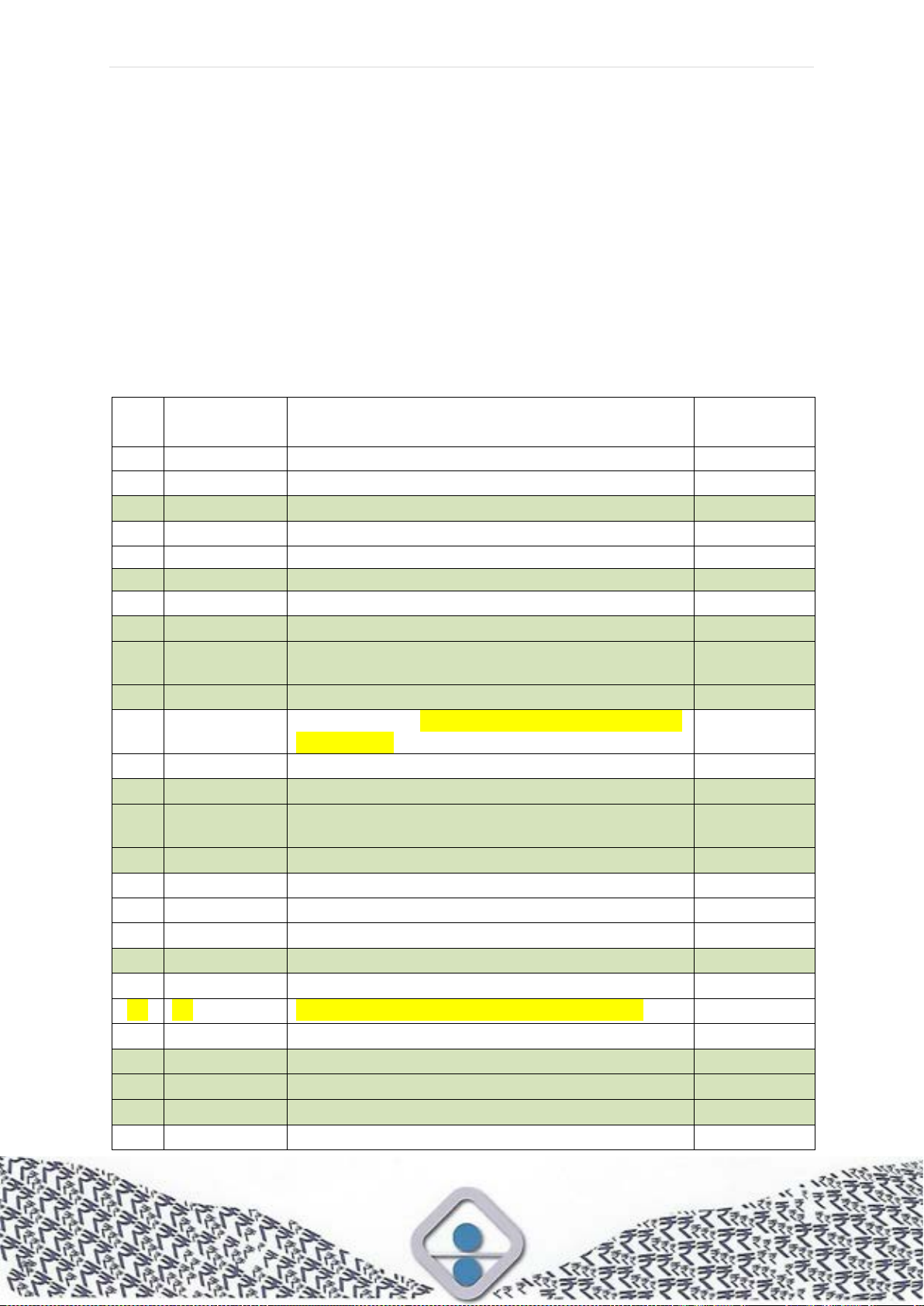
P a g e | 509
Section III: Special Instructions to Tenderers (SIT)
The following Special Instructions to Tenderers will apply for this purchase. These
special instructions will modify / substitute / supplement the corresponding General
Instructions to Tenderers (GIT) incorporated in Section II. The corresponding GIT
clause numbers have also been indicated in the text below:
In case of any conflict between the provision in the GIT and that in the SIT, the
provision contained in the SIT shall prevail.
(Clauses of GIT listed below include a possibility for variation in their provisions
through SIT. There could be other clauses in SIT as deemed fit.)
SI.
No.
GIT Clause
No.
Topic
SIT
Provision
1
3
Eligible Tenderers
2
4
Eligible Goods and Services (Origin of Goods)
3
6
Content of tender Document
4
8
Pre-bid Conference
5
9
Clarification of Tender Documents
6
10
Documents Comprising the Tender
7
11.2
Tender Currency
8
12.1
Tender Prices
9
12.2, 33,
36.1
Schedule wise evaluation
10
12.8, 12.9
GST details
11
12.10
Applicability of duties, taxes and other levies of
local bodies
12
14
PVC Clause & Formula
13
14.4 to 14.7
Exchange Rate Variation (ERV)
14
16.2 a) to c)
Documents Establishing Tenderer’s Eligibility
and Qualifications
15
18
Earnest Money Deposit (EMD)
16
19
Tender Validity
17
20.4
Number of Copies of Tenders to be submitted
18
20.9
E-Procurement
19
34
Comparison on CIF/FOR Destination Basis
20
35.2, 35.3
Additional Factors for Evaluation of Offers
21
42
Variation of quantities at the time of award
22
43
Parallel Contracts
23
44.1
Serious Misdemeanours
24
44.3
Integrity Pact
25
45.1
Notification of Award of Contract (LoI)
26
50.1, 50.3
Tender For rate Contracts

P a g e | 510
SI.
No.
GIT Clause
No.
Topic
SIT
Provision
27
51.1, 51.2
PQB Tenders
28
52.1, 52.3,
52.5
Tenders involving Purchaser's and Pre-
Production Samples
29
53.4, 53.5,
53.7
EOI Tenders
30
54.3.1,
54.5.2
Tenders for Disposal of Scrap
31
55.2, 55.3,
55.7, 55.8
Development / Indigenization Tenders

P a g e | 511
Section IV: General Conditions of Contract (GCC)
Part I: General Conditions of Contract applicable to all types of Tenders
1. Interpretation; Definitions and Abbreviations: In the contract, unless the
context otherwise requires:
1.1 Interpretation and Definitions:
1) The heading of these conditions shall not affect the interpretation or
construction thereof.
2) "Writing" or "Written" includes matter either in whole or in part, in
manuscript, typewritten, lithographed, cyclostyled, photographed or
printed under or over signature or seal, as the case may be.
3) Words in the singular include the plural and vice-versa.
4) Words importing the masculine gender shall be taken to include the
feminine gender and words importing persons shall include any
company or association or body of individuals, whether incorporated
or not.
5) Terms and expression not herein defined shall have the meanings
assigned to them in the Indian Sale of Goods Act, 1930 (as amended)
or the Indian Contract Act, 1872 (as amended) or the General Clauses
Act, 1897 (as amended) as the case may be.
6) Any reference to ‘Goods’ shall be deemed to include the incidental
Works/Services also while any reference to ‘Services’ shall be
deemed to include the incidental Works/Goods also.
7) Any generic reference to GCC shall also imply a reference to SCC as
well.
8) In case of conflict, provisions of SCC shall prevail over those in GCC.
9) Any reference to ‘Contract’ shall be deemed to include all other
documents (inter-alia GCC, SCC) as described in GCC-clause 2.5.
10) Any reference to any legal Act, Government Policies or orders shall
be deemed to include all amendments to such instruments, from time
to time, till date.
11) “Allied Firms” are all business entities that are within the ‘controlling
ownership interest’ (ownership of or entitlement to more than twenty-
five percent of the company's shares or capital or profits) or ‘control’(
including the right to appoint a majority of the directors or to control
the management or policy decisions including by virtue of their
shareholding or management rights or shareholder agreements or
voting agreements) of the principal firm acting alone or together or
through one or more juridical persons. All successor firms or assigns
of the principal firm shall be considered allied firms.
12) "Bid" (including the term ‘tender’, ‘offer’, ‘quotation’ or ‘proposal’ in
specific contexts) means an offer to supply goods, services or

P a g e | 512
execution of works made as per the terms and conditions set out in a
document inviting such offers.
13) "Bidder" (including the term 'Bidder', 'consultant' or 'service provider'
in specific contexts) means any person or firm or company, including
any member of a consortium or joint venture (that is an association of
several persons, or firms or companies), every artificial juridical
person not falling in any of the descriptions of bidders stated
hereinbefore, including any agency branch or office controlled by such
person, participating in a Tender Process.
14) “Bill of Quantities” (including the term Price Schedule or BOQ) means
the priced and completed Bill of Quantities forming part of the bid.
15) "Consignee" means the person to whom the goods are required to be
delivered as specified in the Contract. If the goods are required to be
delivered to a person as an interim consignee for the purpose of
dispatch to another person as provided in the Contract then that
"another" person is the consignee, also known as ultimate consignee.
16) “Contract” (including the terms ‘Purchase Order’ or ‘Supply Order’ or
‘Withdrawal Order’ or ‘Work Order’ or ‘Consultancy Contract’ or
‘Contract for Services’, ‘Rate Contract’ or ‘Framework Contract’ or
‘Letter of Intent – LoI’ (letter or memorandum communicating to the
contractor the acceptance of his bid) or ‘Agreement’ or a ‘Repeat
Order’ accepted/acted upon by the contractor or a ‘formal Agreement’,
under specific contexts), means a formal legal agreement in writing
relating to the subject matter of procurement, entered into between
the Procuring Entity and the contractor on mutually acceptable terms
and conditions and which are in compliance with all the relevant
provisions of the laws of the country;
17) “Contractor” (including the terms ‘Supplier’ or ‘Service Provider’ or
‘Consultant’ or ‘Firm’ or ‘Vendor’ or ‘Manufacturer’ or ‘Successful
Bidder’ under specific contexts) means the person, firm, company, or
a Joint Venture with whom the contract is entered into and shall be
deemed to include the contractor's successors (approved by the
Procuring Entity), agents, subcontractor, representatives, heirs,
executors, and administrators as the case may be unless excluded by
the terms of the contract.;
18) “Day”, “Month”, “Year” shall mean calendar day/ month or year (unless
reference to financial year is clear from the context).
19) "Drawing" means the drawing or drawings specified in or annexed to
the Specifications or the Tender Document/Contract;
20) "Earnest Money Deposit" (EMD) means monetary guarantee to be
furnished by a Tenderer along with its tender.
21) "Goods" (including the terms ‘Stores’, ‘Material(s)’ in specific contexts)
includes all articles, material, commodity, livestock, medicines,
furniture, fixtures, raw material, consumables, spare parts,
instruments, machinery, equipment, industrial plant, vehicles, aircrafts,

P a g e | 513
ships, railway rolling stock assemblies, subassemblies, accessories,
a group of machines comprising an integrated production process or
such other categories of goods or intangible products like technology
transfer, licenses, patents or other intellectual properties (but excludes
books, publications, periodicals, etc., for a library) under specific
context), procured or otherwise acquired by a Procuring Entity. Any
reference to Goods shall be deemed to include certain small work or
some services, which are incidental or consequential to the supply of
such goods, such as transportation, insurance, installation,
commissioning, training and maintenance.
22) "Government" means the Central Government or a State Government
as the case may be and includes agencies and Public Sector
Enterprises under it, in specific contexts;
23) "Inspection" means activities such as measuring, examining, testing,
analysing, gauging one or more characteristics of the goods or
services or works, and comparing the same with the specified
requirement to determine conformity.
24) "Inspecting Officer" means the person, or organisation specified in the
contract for the purpose of inspection under the contract and includes
his / their authorised representative;
25) “Intellectual Property Rights” (IPR) means the rights of the intellectual
property owner concerning a tangible or intangible possession/
exploitation of such property by others. It includes rights to Patents,
Copyrights, Trademarks, Industrial Designs, Geographical indications
(GI).
26) “Joint Venture” means a Joint Venture or a Consortium (that is an
association of several persons, or firms or companies - also referred
to as JV/C)
27) "Purchaser" means BRBNMPL - the organization purchasing goods
and services as incorporated in the documents;
28) "Purchase Officer" means the officer signing the acceptance of tender
and includes any officer who has authority to execute the relevant
contract on behalf of the Purchaser;
29) “Parties”: The parties to the contract are the "Contractor" and the
"Purchaser", as defined above;
30) "Performance Security" (includes the terms ‘Security Deposit’ or
‘Performance Bond’ or ‘Performance Bank Guarantee’ or other
specified financial instruments in specific contexts) means monetary
guarantee to be furnished by the successful Tenderer for due
performance of the contract placed on it.
31) “Place of Delivery”: The delivery of the stores shall be deemed to take
place on delivery of the stores in accordance with the terms of the
contract, after approval by the Inspecting Officer, if so provided in the
contract:

P a g e | 514
a) The consignee at his premises; or
b) Where so provided, the interim consignee at his premises; or
c) A carrier or other person named in the contract for the purpose
of transmission to the consignee; or
d) The consignee at the destination station in case of contract
stipulating for delivery of stores at destination station.
32) “Procurement” or “public procurement” (or ‘Purchase’, or ‘Government
Procurement/Purchase’ including an award of Public-Private
Partnership projects, in specific contexts) means the acquisition of
Goods/Services/works by way of purchase, lease, license or
otherwise, either using public funds or any other source of funds (e.g.
grant, loans, gifts, private investment etc.) of goods, works or services
or any combination thereof, by a Procuring Entity, whether directly or
through an agency with which a contract for procurement services is
entered into, but does not include any acquisition without
consideration. The term “procure” / “procured” or “purchase” /
“purchased” shall be construed accordingly;
33) “Scheduled Commercial Bank” means a bank, defined as a scheduled
bank under section 2(e) of the Reserve Bank of India Act, 1934.
34) “Services” is defined by exception as any subject matter of
procurement other than goods or works, except those incidental or
consequential to the service, and includes physical, maintenance,
professional, intellectual, training, consultancy and advisory services
or any other service classified or declared as such by a Procuring
Entity but does not include appointment of an individual made under
any law, rules, regulations or order issued in this behalf. It includes
‘Consultancy Services’ and ‘Other (Non-consultancy) Services’.
35) "Specification" or "Technical Specification" means the drawing/
document/standard or any other details governing the construction,
manufacture or supply of goods or performance of services that
prescribes the requirement to which goods or services have to
conform as per the contract.
36) “Signed” means ink signed or digitally signed with a valid Digital
Signature as per IT Act 2000 (as amended from time to time). It also
includes stamped, except in the case of Letter of Award or
amendment thereof.
37) “Tender”; “Tender Document”; “Tender Enquiry” or “Tender Process”:
‘Tender Process’ is the whole process from the publishing of the
Tender Document till the resultant award of the contract. ‘Tender
Document’ means the document (including all its sections,
appendices, forms, formats, etc.) published by the Procuring Entity to
invite bids in a Tender Process. The Tender Document and Tender
Process may be generically referred to as “Tender" or "Tender
Enquiry", which would be clear from context without ambiguity.
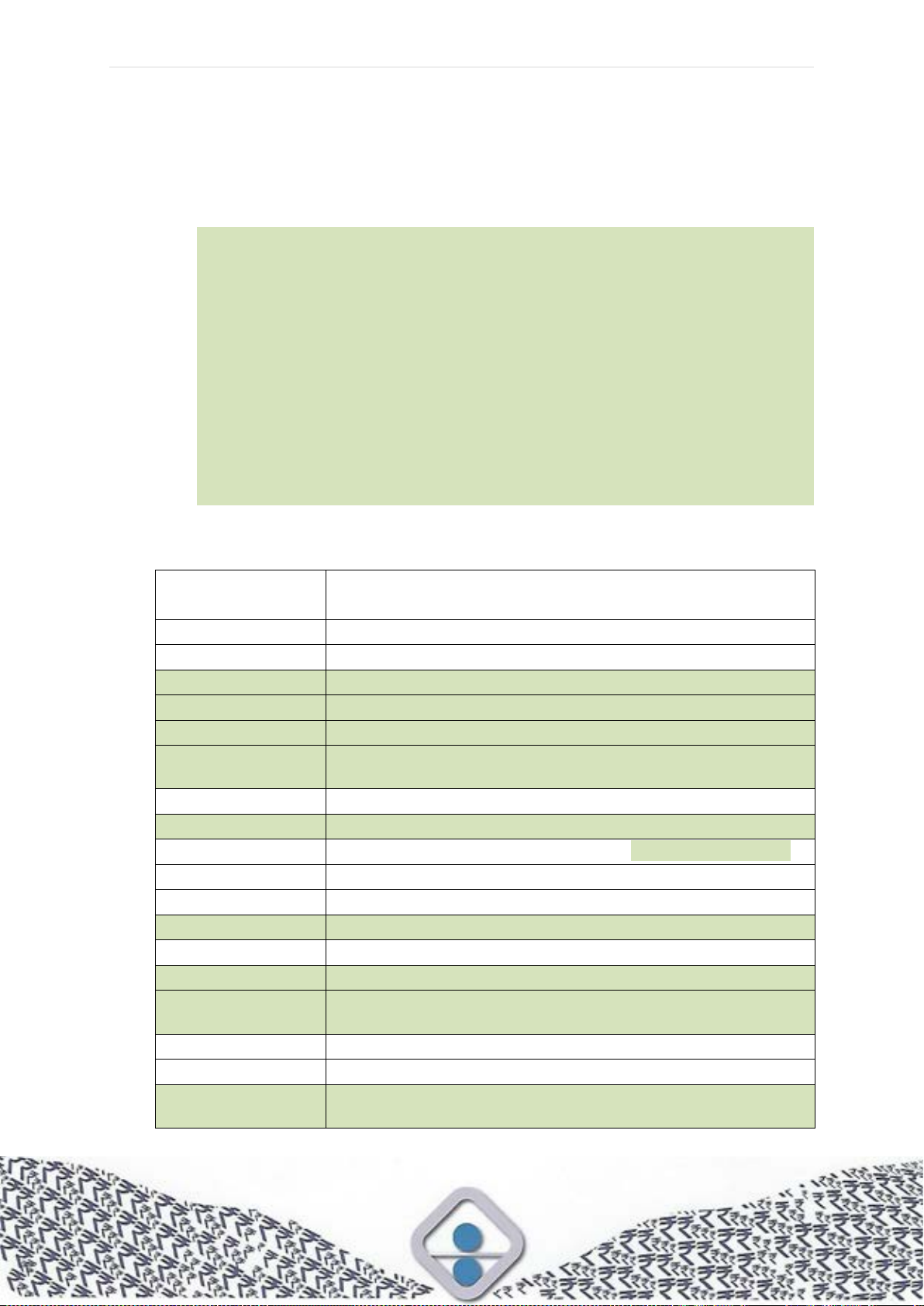
P a g e | 515
38) “Test” means such test as is prescribed by the particulars governing
the construction, manufacture or supply of Goods as may be
prescribed by the contract or considered necessary by the Inspecting
Officer whether performed or made by the Inspecting Officer or any
agency acting under the direction of the Inspecting Officer;
39) “Works” refer to any activity, sufficient in itself to fulfil an economic or
technical function, involving construction, fabrication, repair, overhaul,
renovation, decoration, installation, erection, excavation, dredging,
and so on, which make use of a combination of one or more of
engineering design, architectural design, material and technology,
labour, machinery and equipment. Supply of some materials or certain
services may be incidental or consequential to and part of such works.
The term “Works” includes (i) civil works for the purposes of roads,
railway, bridges, buildings, irrigation systems, water supply, sewerage
facilities, dams, tunnels and earthworks; and so on, and (ii)
mechanical and electrical works involving fabrication, installation,
erection, repair and maintenance of a mechanical or electrical nature
relating to machinery and plants.
1.2 Abbreviations:
"AAEC"
means "Appreciable Adverse Effect on Competition" as
per Competition Act
"BG"
means Bank Guarantee
"BL or B/L"
means Bill of Lading
“BOQ”
means Bill of Quantities
“BSD”
means Bid Securing Declaration
“BNPMIPL”
means Bank Note Paper Mill India Private Limited
“BRBNMPL”
means Bhartiya Reserve Bank Note Mudran Private
Limited
"CD”
means Custom Duty
“CFR”
means Cost and Freight (port of destination)
"CIF"
means Cost, Insurance and Freight (port of destination)
"CMD"
means Chairman and Managing Director
"CPSU"
means Central Public Sector Undertaking
“DAP”
means Delivered at Place (Destination)
"DDO"
means Direct Demanding Officer in Rate Contracts
“DEA”
means Department of Economic Affairs
“DoCC”
means Currency and Coins Division in Department of
Economic Affairs
"DGS&D"
means Directorate General of Supplies and Disposals
"DP”
means Delivery Period
“DPIIT”
means Department for Promotion of Industry and
Internal Trade
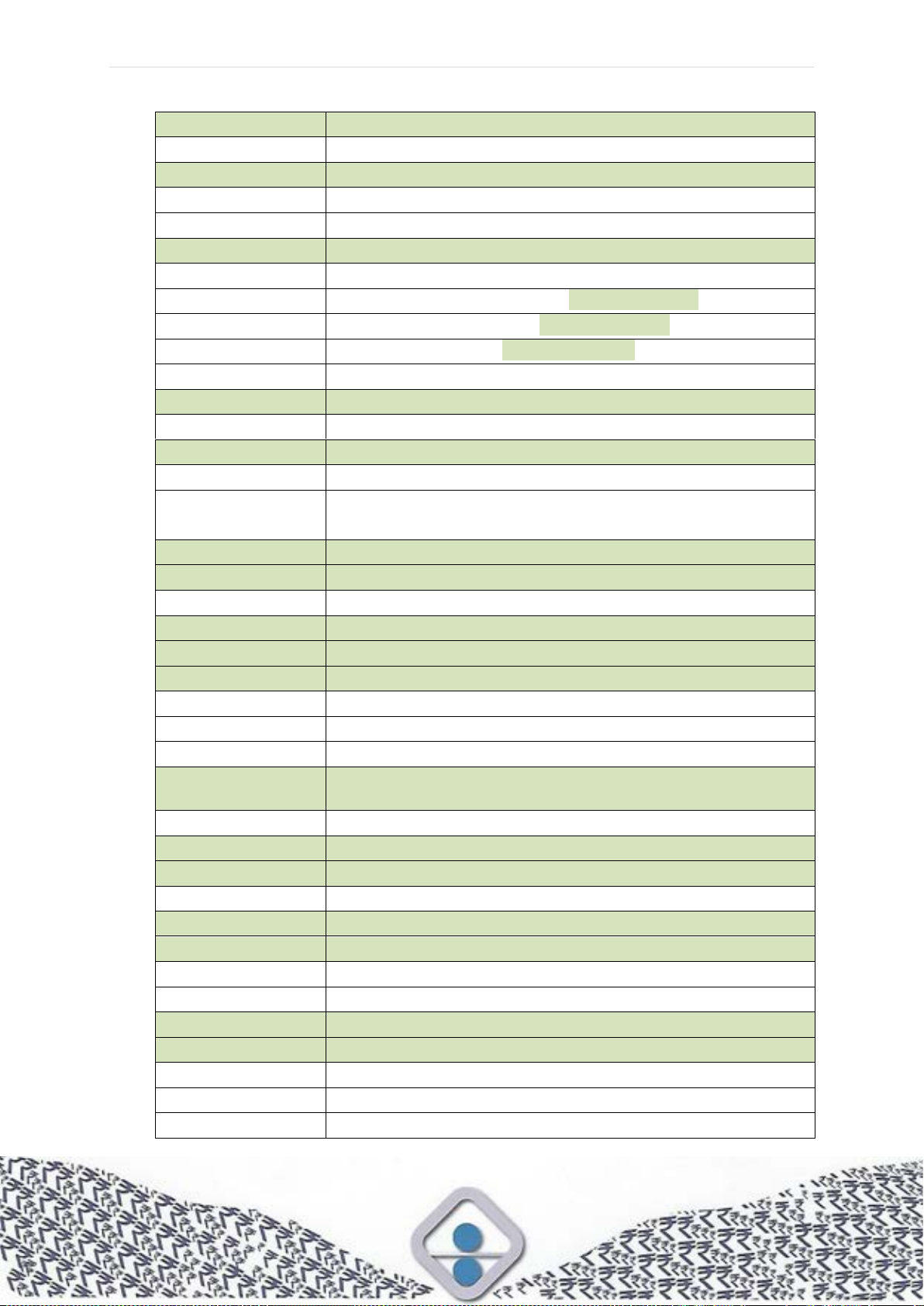
P a g e | 516
“DSC”
means Digital Signature Certificate
"ECS"
means Electronic clearing system
“EFT/NEFT”
means (National) Electronic Funds Transfer
“EMD”
means Earnest money deposit
"EOI"
means Expression of Interest (Tendering System)
“e-RA”
means Electronic Reverse Auction
"ERV"
means Exchange rate variations
"FAS"
means Free Alongside Ship (port of loading)
"FOB"
means Freight on Board (port of loading)
"FOR"
means Free on Rail (named Station)
"GCC"
means General Conditions of Contract
“GeM”
means Government e-Marketplace
“GIT”
means General Instructions to Tenderers
“GoI”
means Government of India
“GST”
means Goods and Services Tax
"H1, H2 etc."
means First Highest, Second Highest Offers etc. in
Disposal Tenders
“HSN”
means Harmonized System of Nomenclature
“IEM”
means Independent External Monitor
Incoterms
means International Commercial Terms, 2000 (of ICC)
“INR”
means Indian Rupee
“IPR”
means Intellectual Property Rights
“ITC (HS)”
means Indian Tariff Classification (Harmonised System)
"L1, L2 etc."
means First or second Lowest Offer etc.
"LC"
means Letter of Credit
"LD or L/D"
means Liquidated Damages
“LoI”
means Letter of Intent [analogous to LoA – Letter of
Award (Acceptance) or Notification of Award of Contract]
"LSI"
means Large Scale Industry
“MII”
means Make in India
“MoF”
means Ministry of Finance
“MSE”
means Micro and Small Scale Enterprise
“MSME”
means Micro, Small and Medium Enterprises
“MSMED”
means MSME Development (Act)
"NIT"
means Notice Inviting Tenders
"NSIC"
means National small industries corporation
“OEM”
means Original Equipment Manufacturer
“PAN”
means Permanent Account Number
"PQB"
means Pre-qualification bidding
"PSU"
means Public Sector Undertaking
"PVC"
means Price variation clause
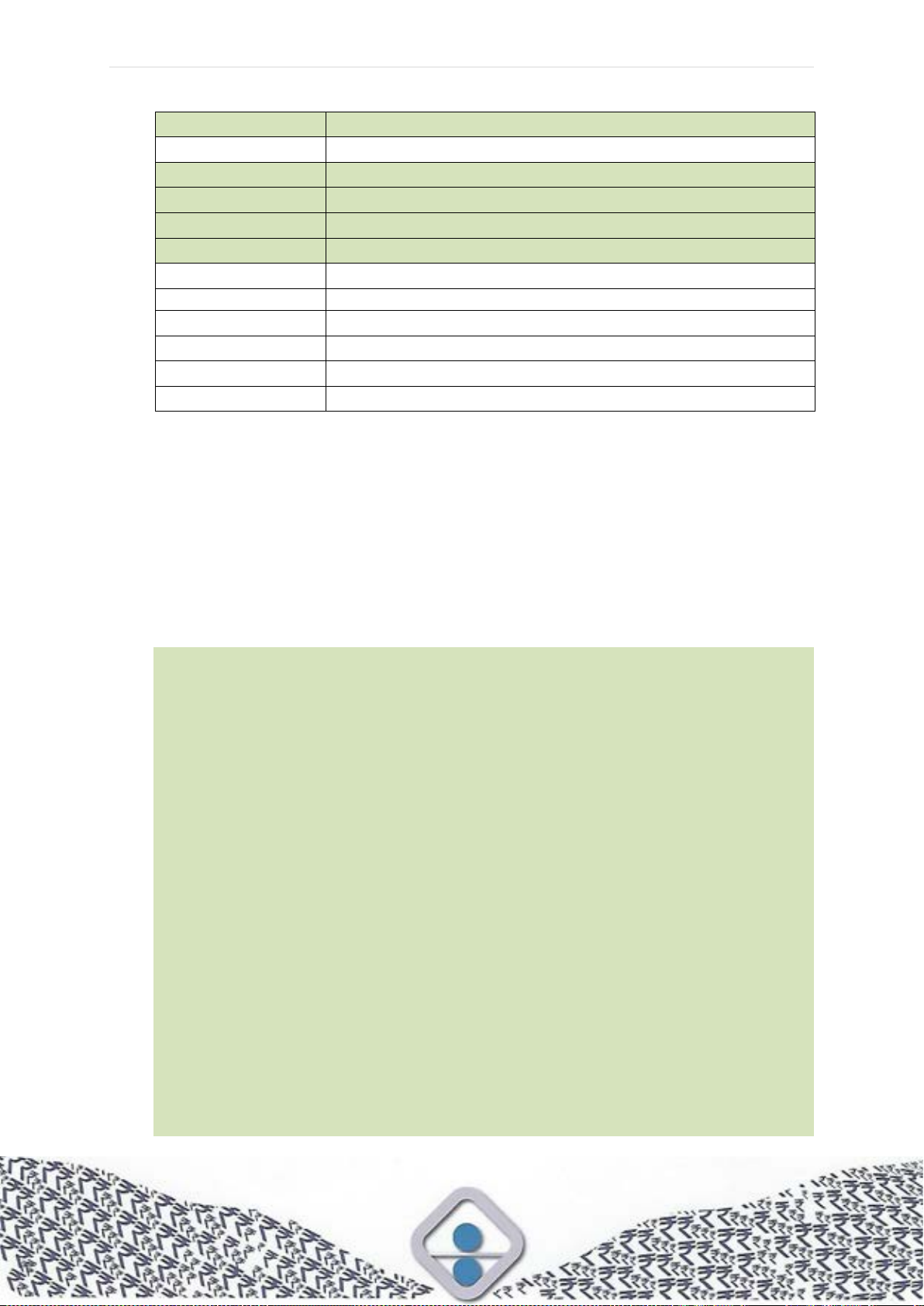
P a g e | 517
“RBI”
means Reserve Bank of India
"RC"
means Rate contract
“RCM”
means Reverse Charge Mechanism
“RFI”
means Request for Information
“RFP”
means Request for Proposal
“RFQ”
means Request for Qualification
"RR or R/R"
means Railway Receipt
"SBD" or "TD"
means Standard Bid Document / Tender Document
"SCC"
means Special Conditions of Contract
"SIT"
means Special Instructions to Tenderers
"SPMCIL"
means Security Printing and Minting Corporation Limited
"SSI"
means Small Scale Industry
2. A. Application
2.1 The General Conditions of Contract incorporated in this section shall be
applicable for this purchase to the extent the same are not superseded by
the Special Conditions of Contract (SCC) prescribed under Section V of this
document.
2.2 General Conditions of the contract shall not be changed from one tender to
other.
B. The Contract
2.3 Language of Contract
Unless otherwise stipulated in SCC, the contract shall be written in the
Official Language or English. All correspondence and other contract
documents, which the parties exchange, shall also be written/translated
accordingly in that language. For purposes of interpretation of the contract,
the English documents/translation shall prevail.
2.4 Severability
If any provision or condition of this Contract is prohibited or rendered invalid
or unenforceable, such prohibition, invalidity or unenforceability shall not
affect the validity or enforceability of any other provisions and conditions of
this Contract.
2.5 Contract Documents and their Precedence
The following conditions and documents in indicated order of precedence
(higher to lower) shall be considered an integral part of the contract,
irrespective of whether these are not appended/referred to in it. Any generic
reference to ‘Contract’ shall imply reference to all these documents as well:

P a g e | 518
(i) Valid and authorized Amendments issued to the contract.
(ii) the Agreement consisting of the initial paragraphs, recitals and other
clauses set forth immediately before the GCC and including the
formats annexed to it and signatures of Procuring Entity;
(iii) the Letter of Intent (LoI)
(iv) Final written submissions made by the contractor during negotiations,
if any;
(v) the SCC
(vi) the GCC
(vii) the contractor’s bid;
(viii) any other document listed in the SCC as forming part of this Contract.
(ix) Integrity Pact, if any
C. Governing Laws and Jurisdiction
2.6 The Contract, its meaning and interpretation, and the relation between the
Parties shall be governed by the Laws of India for the time being in force.
2.7 Irrespective of the place of delivery, or the place of performance or the place
of payments under the contract, the contract shall be deemed to have been
made at the place from which the Letter of Intent (LoI, or the contract
Agreement, in the absence of LoI) has been issued. The courts at Kolkata
or Bengaluru shall alone have jurisdiction to decide any dispute arising out
or in respect of the contract.
2.8 Besides GCC and SCC, the following Laws shall be applicable:
(i) Indian Contracts Act, 1872
(ii) Sale of Goods Act, 1930
(iii) Arbitration and Conciliation Act, 1996 and Arbitration and
Reconciliation Amendment Act, 2015
(iv) Competition Act, 2002 as amended by Competition (Amendment Act),
2007
D. Contractor’s Obligations and restrictions on its Rights
2.9 Changes in Constitution / financial stakes / responsibilities of a
Contract’s Business: The Contractor must proactively keep the Procuring
Entity informed of any changes in its constitution / financial stakes /
responsibilities during the execution of the contract.
2.10 Obligation to Maintain Eligibility and Qualifications: The contract has
been awarded to the contractor based on specific eligibility and qualification
criteria. The Contractor is contractually bound to maintain such eligibility
and qualifications during the execution of the contract. Any change which
would vitiate the basis on which the contract was awarded to the contractor
should be pro-actively brought to the notice of the Procuring Entity within

P a g e | 519
seven (07) days of it coming to the Contractor’s knowledge. These changes
include but are not restricted to change regarding declarations made by it
in its bid in Section XVIII: Eligibility Declarations.
2.11 Consequences of a breach of Obligations: Should the Contractor or any
of its Partners or its Subcontractors or the Personnel commit a default or
breach of its obligations, the Contractor shall remedy such breaches within
21 days, keeping the Procuring Entity informed. However, at its discretion,
the Procuring Entity shall be entitled, and it shall be lawful on his part, to
treat it as a breach of contract and avail any or all remedies thereunder.
The decision of the Procuring Entity as to any matter or thing concerning or
arising out of GCC clause or on any question whether the contractor or any
partner of the contractor firm has committed a default or breach of any of
the conditions shall be final and binding on the contractor.
E. Permits, Approvals and Licenses
2.12 Whenever the supply of Goods and incidental Works/Services requires that
the contractor obtain permits, approvals, and licenses from local public
authorities, it shall be the contractor's sole responsibility to obtain these and
keep these current and valid. Such requirements may include but not be
restricted to export licence or environmental clearance, if required. If
requested by the contractor, the Procuring Entity shall make its best effort
to assist the contractor in complying with such requirements in a timely and
expeditious manner, without any dilution of the Contractor’s responsibility
in this regard.
3. Use of contract documents and information
3.1 The supplier shall not, without BRBNMPL's prior written consent, disclose
the contract or any provision thereof including any specification, drawing,
sample or any information furnished by or on behalf of BRBNMPL in
connection therewith, to any person other than the person(s) employed by
the supplier in the performance of the contract emanating from this tender
document. Further, any such disclosure to any such employed person shall
be made in confidence and only so far as necessary for the purposes of
such performance for this contract.
3.2 During the process of procurement of Security or Sensitive Machinery and
Items, Tender Documents and the specifications / drawings of such items
would be issued only to Vendors having security clearance within the
validity of such clearance and he shall maintain absolute secrecy and
strictly control the number of copies and access to the documents and
copies thereof, in addition to safeguards mentioned in sub-para above.
3.3 Further, the supplier shall not, without BRBNMPL's prior written consent,
make use of any document or information mentioned in GCC sub-clause
3.1 above except for the sole purpose of performing this contract.
3.4 Except the contract issued to the supplier, each and every other document
mentioned in GCC sub-clause 3.1 above shall remain the property of

P a g e | 520
BRBNMPL and, if advised by BRBNMPL, all copies of all such documents
shall be returned to BRBNMPL on completion of the supplier’s performance
and obligations under this contract.
3.5 All deliverables, outputs, plans, drawings, specifications, designs, reports,
and other documents and software submitted by the contractor under this
Contract shall become and remain the property of BRBNMPL and subject
to laws of copyright and must not be shared with third parties or reproduced,
whether in whole or part, without BRBNMPL’s prior written consent. The
contractor may retain a copy of such documents and software but shall not
use it for any commercial purpose.
4. Indemnities for breach of IPR Rights
4.1 The contractor shall indemnify and hold harmless, free of costs, the
Procuring Entity and its employees and officers from and against all suits,
actions or administrative proceedings, claims, demands, losses, damages,
costs, and expenses of any nature, including attorney’s fees and expenses,
which may arise in respect of the Goods or Services provided by the
contractor under this Contract, as a result of any infringement or alleged
infringement of any patent, utility model, registered design, copyright, or
other Intellectual Proprietary Rights (IPR) or trademarks, registered or
otherwise existing on the date of the contract arising out of or in connection
with:
(i) Any design, data, drawing, specification, or other documents or Goods
or Services provided or designed by the contractor for or on behalf of
the Procuring Entity.
(ii) The sale by the Procuring Entity in any country of the Services/
products produced by the Goods supplied by the contractor, and
(iii) The installation of the Goods by the contractor/Delivery of the services
or the use of the Goods or Services at the Procuring Entity’s Site.
4.2 Such indemnity shall not cover any use of the Goods or Services or any
part thereof or any products produced thereby:
(i) other than for the purpose indicated by or to be reasonably inferred
from the contract
(ii) neither any infringement resulting from the use of the Services or any
part thereof,
(iii) or any service/products produced thereby in association or
combination with any other service, equipment, plant, or materials not
supplied by the contractor.
4.3 If any proceedings are brought, or any claim is made against the Procuring
Entity arising out of the matters referred above, the Procuring Entity shall
promptly give the contractor a notice thereof. At its own expense and in the
Procuring Entity’s name, the contractor may conduct such proceedings and
negotiations to settle any such proceedings or claim, keeping the Procuring
Entity informed.

P a g e | 521
4.4 If the contractor fails to notify the Procuring Entity within twenty-eight (28)
days after receiving such notice that it intends to conduct any such
proceedings or claim, then the Procuring Entity shall be free to conduct the
same on its behalf at the risk and cost to the contractor.
4.5 At the contractor’s request, the Procuring Entity shall afford all available
assistance to the contractor in conducting such proceedings or claim and
shall be reimbursed by the contractor for all reasonable expenses incurred
in so doing.
5. Eligible Goods/Services - Country of Origin and Minimum Local Content
5.1 Unless otherwise stipulated in SCC or Contract, the country of origin of
‘Goods’ and ‘incidental Works/ Service’ to be supplied under the contract
shall have their origin in India or other countries and must conform to the
declaration made by the contractor in its bid regarding but not limited to i)
restrictions on certain countries with land-borders with India; ii) minimum
local content and location of value addition (Make in India Policy); iii)
Contractor’s status as MSE or Start-up.
5.2 The term “origin” used in this clause means where the goods (including
subcontracted components) are mined, grown, produced, or manufactured
or from where the incidental Works/ Services are arranged and supplied.
6. Performance Security
6.1 Within twenty-one (21) days (or any other period mentioned in Tender
Document or Contract) after the issue of notification of award (LoI or the
contract, if LoI is skipped) by BRBNMPL, the supplier shall furnish to
BRBNMPL performance security for an amount of three to ten percent (3-
10%) of the total value of the contract, valid up to sixty (60) days (or any
other period mentioned in Tender Document or Contract) after the date of
completion of all contractual obligations by the supplier, including the
warranty obligations.
6.2 For multi-year Service contracts which may be of 5-7 years or more,
procuring entities may consider to proportionately keep reducing
performance security in proportion to the balance service period, wherever
feasible. Wherever it is decided to take lower or proportionately reducing
performance security, tender conditions may be suitably modified.
6.3 The Performance security shall be denominated in Indian Rupees or in the
currency of the contract and shall be in one of the following forms:
a. Insurance Surety Bond
b. Account Payee Demand Draft drawn on any scheduled commercial
bank in India, in favour of Bharatiya Reserve Bank Note Mudran
Private Limited as indicated in the relevant clause of NIT in reference
to EMD.
c. Bank Guarantee (including e-Bank Guarantee) issued/confirmed by
any scheduled commercial bank in India, in the prescribed form as
provided in section XV of this document.

P a g e | 522
6.4 In the event of any loss due to supplier's failure to fulfil its obligations in
terms of the contract, the amount of the performance security shall be
payable to BRBNMPL to compensate BRBNMPL for the same.
6.5 In the event of any amendment issued to the contract, the supplier shall,
within twenty-one days of issue of the amendment, furnish the
corresponding amendment to the Performance Security (as necessary),
rendering the same valid in all respects in terms of the contract, as
amended.
6.6 If the contractor during the currency of the Contract fails to maintain the
requisite Performance Security, it shall be lawful for the Procuring Entity at
its discretion:
(i) to terminate the Contract for Default besides availing any or all
contractual remedies provided for breaches/default, or
(ii) without terminating the Contract:
a) recover from the contractor the amount of such security deposit
by deducting the amount from the pending bills of the contractor
under the contract or any other contract with the Procuring Entity,
or
b) treat it as a breach of contract and avail any or all availing any
or all contractual remedies provided for breaches/default.
6.7 Subject to GCC sub-clause 6.3 above, BRBNMPL will release the
performance security without any interest to the supplier on completion of
the supplier's all contractual obligations including the warranty obligations.
6.8 Non-receipt of Performance Security and Contract by BRBNMPL
Failure of the successful tenderer in providing performance security within
21 days of receipt of notification of award and / or returning contract copy
duly signed within stipulated time shall make the tenderer liable for
annulment of the award and forfeiture of its EMD (or enforcement of Bid
Security Declaration), besides taking other administrative punitive actions
by BRBNMPL against it.
6.9 No Claim Certificate and Release of Contract Securities
After mutual reconciliations of outstanding payments and assets on either
side, the contractor shall submit a ‘No-claim certificate’ to the Procuring
Entity requesting the release of its contractual securities, if any. The
Procuring Entity shall release the contractual securities without any interest
if no outstanding obligation, asset, or payments are due from the contractor.
The contractor shall not be entitled to make any claim whatsoever against
the Procuring Entity under or arising out of this Contract, nor shall the
Procuring Entity entertain or consider any such claim, if made by the
contractor, after he shall have signed a "No Claim" Certificate in favour of
the Procuring Entity.
7. Technical Specifications and Standards

P a g e | 523
7.1 Scope of Supply/Services: The Goods & Services to be provided by the
supplier under this contract shall conform to the technical specifications and
quality control parameters mentioned in 'Technical Specification' and
'Quality Control Requirements' under Sections VII and VIII of this document.
7.2 Incidental Works/Services: If so stipulated, the contractor shall be
required to perform specified incidental Works/Services (e.g., Installation,
Commissioning, Operator’s Training etc. in case of Supply of Capital
Goods/Machinery & Plant) as an integral part of the Goods in the contract
or perform/deliver specified incidental Works/Goods as an integral part of
the Services in the contract.
8. Packing and Marking
8.1 The packing for the goods to be provided by the supplier should be strong
and durable enough to withstand, without limitation, the entire journey
during transit including transhipment (if any), rough handling, open storage
etc. without any damage, deterioration etc. As and if necessary, the size,
weights and volumes of the packing cases shall also take into consideration,
the remoteness of the final destination of the goods and availability or
otherwise of transport and handling facilities at all points during transit up
to final destination as per the contract.
8.2 The quality of packing, the manner of marking within & outside the
packages and provision of accompanying documentation shall strictly
comply with the requirements as provided in Technical Specifications and
Quality Control Requirements under Sections VII and VIII and in SCC under
Section V. in case the packing requirements are amended due to issue of
any amendment to the contract, the same shall also be taken care of by the
supplier accordingly.
8.3 Packing instructions:
Unless otherwise mentioned in the Technical Specification and Quality
Control Requirements under Sections VII and VIII and in SCC under
Section V, the supplier shall make separate packages for each consignee
(in case there is more than one consignee mentioned in the contract) and
mark each package on three sides with the following with indelible paint of
proper quality:
a) contract number and date
b) brief description of goods including quantity
c) the gross weight of the package
d) packing list reference number
e) country of origin of goods
f) consignee's name and full address and
g) supplier's name and address
9. Inspection and Quality Control

P a g e | 524
9.1 BRBNMPL and / or its nominated representative(s) will, without any extra
cost to BRBNMPL, inspect and/or test the ordered goods and the related
services to confirm their conformity to the contract specifications and other
quality control details incorporated in the contract. BRBNMPL shall inform
the supplier in advance, in writing, BRBNMPL's programme for such
inspection and, also the identity of the officials to be deputed for this
purpose.
9.2 The Technical Specification and Quality Control Requirements
incorporated in the contract shall specify what inspections and tests are to
be carried out and, also, where and how they are to be conducted. If such
inspections and tests are conducted in the premises of the supplier or its
subcontractor(s), all reasonable facilities and assistance, including access
to relevant drawings, design details and production data, shall be furnished
by the supplier to BRBNMPL's inspector at no charge to BRBNMPL.
9.3 If during such inspections and tests the contracted goods fail to conform to
the required specifications and standards, BRBNMPL's inspector may
reject them and the supplier shall either replace the rejected goods or make
all alterations necessary to meet the specifications and standards, as
required, free of cost to BRBNMPL and resubmit the same to BRBNMPL's
inspector for conducting the inspections and tests again.
9.4 In case the contract stipulates pre-despatch inspection of the ordered
goods at suppliers’ premises, the supplier shall put up the goods for such
inspection to BRBNMPL's inspector well ahead of the contractual delivery
period, so that BRBNMPL's inspector is able to complete the inspection
within the contractual delivery period.
9.5 If the supplier tenders the goods to BRBNMPL's inspector for inspection at
the last moment without providing reasonable time to the inspector for
completing the inspection within the contractual delivery period, the
inspector may carry out the inspection and complete the formality beyond
the contractual delivery period at the risk and expense of the supplier. The
fact that the goods have been inspected after the contractual delivery period
will not have the effect of keeping the contract alive and this will be without
any prejudice to the legal rights and remedies available to BRBNMPL under
the terms & conditions of the contract.
9.6 BRBNMPL's contractual right to inspect, test and, if necessary, reject the
goods after the goods' arrival at the final destination shall have no bearing
of the fact that the goods have previously been inspected and cleared by
BRBNMPL's inspector during pre-despatch inspection mentioned above.
9.7 Goods accepted by BRBNMPL and/or its inspector at initial inspection and
in final inspection in terms of the contract shall in no way dilute BRBNMPL's
right to reject the same later, if found deficient concerning ‘Technical
Specifications and Quality Assurance’.
10. Terms of Delivery
10.1 Goods shall be delivered by the supplier in accordance with the terms of
delivery specified in the contract.

P a g e | 525
10.2 Time is the Essence of the contract: The time for and the date for
delivering the Goods stipulated in the contract or as extended shall be
deemed to be of the essence of the contract. Delivery must be completed
not later than the date(s) so specified or extended.
10.3 Terms of delivery (e.g., F.O.R. destination/CIF/DAP etc.) shall determine
the point at which the responsibilities and property in goods passes over
from the contractor to the Procuring Entity. These terms also determine the
time of delivery.
10.4 Transfer of Title of Goods: Unless otherwise stated in the contract,
notwithstanding any inspection and approval by the Inspecting Officer on
the contractor's premises, or any payments made to the contractor, property
in the Goods (and resultant rights and liabilities) shall not pass on to the
Procuring Entity until the Goods have been received, inspected, and
accepted by the consignee. The Contractor shall be responsible for all loss,
destruction, damage, or deterioration of or to the Goods from any cause
whatsoever while the Goods after approval by the Inspecting Officer are
awaiting despatch or delivery or are in the course of transit from the
contractor to the consignee or, as the case may be, interim consignee. The
Contractor shall alone be entitled and responsible for making claims against
any carrier in respect of non-delivery, short delivery, mis-delivery, loss,
destruction, damage, or deterioration of the Goods entrusted to such carrier
by the contractor for transmission to the consignee or the interim consignee
as the case may be.
10.5 Quantity Tolerance: Unless otherwise stipulated in the contract, the
obligation for completing supplies shall be considered complete if the
Goods have been supplied to the tolerance of ± 5% of the quantity or of the
total value of goods ordered in the contract. Only the supplied quantity shall
be paid for as per the terms of the contract.
11. Transportation of Goods
11.1 Part Supplies: The supplier shall not arrange part-shipments and / or
transhipments without the express / prior written consent of BRBNMPL.
11.2 Instructions for transportation of domestic goods including goods
already imported by the supplier under its own arrangement: In case
no instruction is provided in this regard in the SCC, the supplier will arrange
transportation of the ordered goods as per its own procedure.
11.3 Shipping Arrangement for Foreign Contracts: In the case of FOB/FAS
contracts, shipping arrangements shall be made by BRBNMPL. The
Contractor shall give adequate notice to the Forwarding Agents/Nominees
about the readiness of the cargo from time to time and at least six weeks'
notice in advance of the required position for finalising the shipping
arrangements. In the case of CFR contracts, the Contractor shall arrange
shipment in accordance with the instructions from BRBNMPL.
11.4 Airlifting: Should the Purchaser intend to airlift all or some of the stores the
Contractor shall pack the stores accordingly on receipt of intimation to that

P a g e | 526
effect from the Purchaser. Such deliveries will be agreed upon well in
advance and paid for as may be mutually agreed.
12. Insurance:
Unless otherwise instructed in the SCC, the supplier shall make arrangements
for insuring the goods against loss or damage incidental to manufacture or
acquisition, transportation, storage and delivery in the following manner:
(i) In case of supply of domestic goods on CIF/FOR destination basis, the
supplier shall be responsible till the entire stores contracted for arrive in
good condition at destination. The transit risk in this respect shall be
covered by the Supplier by getting the stores duly insured. The insurance
cover shall be obtained by the Supplier in its own name and not in the name
of BRBNMPL or its Consignee.
(ii) In the case of FOB and CFR offers for import of Goods, insurance shall be
arranged by the Purchaser. However, the supplier must give sufficient
notice to the Purchaser prior to the date of shipment, so that the Insurance
Cover for the shipment can be activated. The Supplier must co-ordinate so
as to ensure that the Shipment sails only with Insurance cover in place.
(iii) In case of Import of Goods, even in case where the insurance is paid by the
Purchaser, and loss or damage shall be made good by the Contractor free
of cost, without waiting for the settlement of insurance claim. The payment
after settlement of insurance claim shall be reimbursed by the Purchaser to
the Contractor. It will be entirely the responsibility of the Contractor to make
good loss/damage without waiting for settlement of insurance claim so that
machine is commissioned within the time specified in the contract.
13. Spare parts
13.1 If specified in the List of Requirements and in the resultant contract, the
supplier shall supply / provide any or all of the following materials,
information etc. pertaining to spare parts manufactured and / or supplied by
the supplier:
a) The spare parts as selected by BRBNMPL to be purchased from the
supplier, subject to the condition that such purchase of the spare parts
shall not relieve the supplier of any contractual obligation including
warranty obligations; and
b) In case the production of the spare parts is discontinued:
i. sufficient advance notice to BRBNMPL before such
discontinuation to provide adequate time to BRBNMPL to
purchase the required spare parts etc., and
ii. immediately following such discontinuation, providing
BRBNMPL, free of cost, the designs, drawings, layouts and
specifications of the spare parts, as and if requested by
BRBNMPL.

P a g e | 527
13.2 Supplier shall carry sufficient inventories to assure ex-stock supply of
consumable spares for the goods so that the same are supplied to
BRBNMPL promptly on receipt of order from BRBNMPL.
14. Incidental services
14.1 Subject to the stipulation, if any, in the SCC (Section V) and the Technical
Specification (Section VII), the supplier shall be required to perform any or
all of the following services:
a) Providing required jigs and tools for assembly, start-up and
maintenance of the goods
b) Supplying required number of operation & maintenance manual for
the goods
c) Installation and commissioning of the goods
d) Training of BRBNMPL's operators for operating and maintaining the
goods
e) Providing after sales service during the tenure of the contract
f) Providing maintenance service after expiry of the warranty period of
the goods if so incorporated in the contract
14.2 Prices to be paid to the supplier by BRBNMPL for any of the required
incidental services, if not already included in the contract price during the
placement of the contract, shall be settled and decided in advance by
BRBNMPL and the supplier. However, such prices shall not exceed the
contemporary rates charged by the supplier to other customers for similar
services.
15. Distribution of Despatch Documents for Clearance / Receipt of Goods
15.1 The supplier shall send all the relevant despatch documents well in time to
BRBNMPL to enable BRBNMPL to clear or receive (as the case may be)
the goods in terms of the contract. Unless otherwise specified in the SCC,
the usual documents involved and the drill to be followed in general for this
purpose are as follows:
15.2 For Domestic Goods, including goods already imported by the supplier
under its own arrangement, within 24 hours of despatch, the supplier shall
notify BRBNMPL, consignee, and others concerned if mentioned in the
contract, the complete details of despatch and also supply the following
documents to them by registered post / speed post (or as instructed in the
contract):
(a) Supplier's Invoice indicating, inter alia description and specification of
the goods, quantity, unit price, total value;
(b) Packing list;
(c) Insurance certificate;
(d) Railway receipt / Road Consignment note;
(e) Manufacturer's guarantee certificate and in-house inspection
certificate;

P a g e | 528
(f) Inspection certificate issued by BRBNMPL's inspector
(g) Expected date of arrival of goods at destination and
(h) Any other document(s), as and if specifically mentioned in the contract.
15.3 For Imported Goods, within 3 days of dispatch, the supplier will Notify
BRBNMPL, consignee and other concerned if mentioned in the contract,
the complete details of dispatch and also supply the following documents
to them by Courier (or as instructed in the Contract), besides advance
intimation by Fax / email:
(a) Clean on Board Airway Bill/Bill of Lading (B/L)
(b) Original Invoice
(c) Packing List (with item-wise gross and net weight)
(d) Certificate of Origin from Seller's Chamber of Commerce
(e) Certificate of pre-despatch inspection by BRBNMPL’s representative/
nominee
(f) Certificate of Quality and current manufacture from OEM
(g) Dangerous Cargo Certificate, if any.
(h) Insurance Policy of 110% if CIP/CIF contract.
(i) Performance Bond / Warranty Certificate
15.4 Receipt of Consignment - Preliminary Acknowledgement: At the time
of the delivery at the destination, the consignee shall receive the Goods on
a "subject to inspection and acceptance in terms of contract" basis and shall
issue the preliminary receipt to acknowledge having received the claimed
quantity (not the quality) of consignment.
16. Warranty
16.1 In general, the supplier should warrant that the goods supplied under the
contract is new, unused and incorporate all recent improvements in design
and materials unless prescribed otherwise by BRBNMPL in the contract.
The supplier should further warrant that the goods supplied under the
contract shall have no defect arising from design, materials (except when
the design adopted and/ or the material used are as per BRBNMPL's
specifications) or workmanship or from any act or omission of the supplier,
that may develop under normal use of the supplied goods under the
conditions prevailing in India.
16.2 Unless otherwise specified in the SCC, this warranty shall remain valid for
twelve months after the goods or any portion thereof as the case may be,
have been delivered to the final destination and installed and commissioned
at the final destination and accepted by BRBNMPL in terms of the contract
or for fifteen months from the date of despatch from the supplier's premises
for domestic goods (including goods already imported by the supplier under
its own arrangement) or for eighteen months after the date of shipment from
the port of loading in the source country for imported goods offered from
abroad, whichever is earlier.

P a g e | 529
16.3 Obligations of the contractor under the warranty clause shall survive even
though:
a) The Goods may have been inspected, accepted, installed/
commissioned and paid for by BRBNMPL.
b) The contract is terminated for any reason whatsoever.
16.4 BRBNMPL shall promptly notify in writing to the contractor, if during the
period above, the said goods/stores/articles are discovered not to conform
to the description and quality or have deteriorated, otherwise than by fair
wear and tear (the decision of BRBNMPL in that behalf being final and
conclusive).
16.5 Upon receipt of such notice, the supplier shall, with all reasonable speed
(or within the period, if specified in the SCC or contract), repair or replace
the defective goods or parts thereof, free of cost, at the ultimate destination.
The supplier shall take over the replaced parts / goods after providing their
replacements and no claim, whatsoever shall lie on BRBNMPL for such
replaced parts/goods thereafter.
16.6 A penalty of 0.5% (half per cent) of the contract value for the delay in
response time beyond specified time as detailed above shall be recoverable
from the Performance/Warrantee Guarantee. The maximum penalty for
warranty failure will be 5% (Five percent) of the contract value during the
whole warranty period. If there is further such delay after reaching this limit,
BRBNMPL shall be entitled to encashment of whole of Performance/
Warrantee Guarantee Bonds.
16.7 In the event of any rectification of a defect or replacement of any defective
goods during the warranty period, the warranty for the rectified / replaced
goods shall remain till the original warranty period.
16.8 If the supplier, having been notified, fails to rectify / replace the defect(s)
within a reasonable period (or within the period, if specified in the SCC or
contract), it shall amount to breach of Contract for default and BRBNMPL
shall avail any or all remedial action(s) thereunder.
17. Assignment
17.1 The Supplier shall not sublet, transfer, or assign, either in whole or in part,
its contractual duties, responsibilities and obligations to perform the
contract, except with BRBNMPL's prior written permission.
18. Sub Contracts
18.1 The Supplier shall notify BRBNMPL in writing of all sub contracts awarded
under the contract if not already specified in its tender. Such notification, in
its original tender or later, shall not relieve the Supplier from any of its
liability or obligation under the terms and conditions of the contract.
18.2 Sub contract shall be only for bought out items and incidental Works/
Services.

P a g e | 530
18.3 Sub contracts shall also comply with the provisions of GCC Clause 5
(“Country of Origin").
18.4 If the Contractor sublets or assigns this contract or any part thereof without
such permission, the Procuring Entity shall be entitled, and it shall be lawful
on his part, to treat it as a breach of contract and avail any or all remedies
thereunder.
19. Modification of contract
19.1 Once a contract has been concluded, the terms and conditions thereof will
generally not be varied. However, if necessary, BRBNMPL may suo-moto
or, on request from the supplier, by a written order given to the supplier at
any time during the currency of the contract, amend the contract by making
alterations and modifications within the general scope of contract in any one
or more of the following:
(a) Specifications, drawings, designs etc. where goods to be supplied
under the contract are to be specially manufactured for BRBNMPL,
(b) mode of packing,
(c) incidental services to be provided by the supplier
(d) mode of despatch,
(e) place of delivery, and
(f) any other area(s) of the contract, as felt necessary by BRBNMPL
depending on the merits of the case.
19.2 In the event of any such modification / alteration causing increase or
decrease in the cost of goods and services to be supplied and provided, or
in the time required by the supplier to perform any obligation under the
contract, an equitable adjustment shall be made in the contract price and/
or contract delivery schedule, as the case may be, and the contract
amended accordingly. If the supplier doesn't agree to the adjustment made
by BRBNMPL, the supplier shall convey its views to BRBNMPL within
twenty-one days from the date of the supplier's receipt of BRBNMPL's
amendment / modification of the contract.
19.3 Option Clause: By a suitable provision in the SCC, the Purchaser may
reserve the right to increase the ordered quantity by 25% at any time, till
final delivery date of the contract, by giving reasonable notice even though
the quantity ordered initially has been supplied in full before the last date of
Delivery Period.
19.4 Repeat Order: By a suitable provision in the SCC, the Purchaser may
reserve the right to procure additional 50% of the ordered quantity within 6
months from the date of last supply by placing repeat order against the
previous order with same rate and terms and conditions. However, both
optional quantity and repeat order quantity together shall not exceed 50%
of the initial ordered quantity.
20. Prices

P a g e | 531
20.1 Prices to be charged by the supplier for supply of goods and provision of
services in terms of the contract shall not vary from the corresponding
prices quoted by the supplier in its tender or during negotiations, if any, and
incorporated in the contract except for any price adjustment authorized in
the SCC.
20.2 Price Variation: If the Price Variation clause is applicable as per the
contract, the price shall be subject to adjustment to take care of the changes
in the cost of labour, material, and fuel/power components as per the price
variation formula specified therein.
20.3 Exchange Rate Variation: The offer of the tenderer should indicate import
content and the currency used for calculating import content. The Base
Exchange rate of each significant currency used for calculating the Foreign
Exchange content of the contract shall be as prevailing on the last deadline
for submission of Techno-commercial Bids, and variation beyond the base
Exchange Rate shall be calculated up to the midpoint of the delivery period,
unless firm has already indicated the time schedule within which material
will be imported by the firm. In case delivery period is refixed / extended,
ERV will not be admissible, if this is due to default of the supplier.
Documents for claiming ERV:
(i) A bill of ERV claim enclosing working sheet
(ii) Banker's Certificate/debit advice detailing F.E. paid and exchange
rate prevailing on the date as applicable.
(iii) Copies of import order/agreement placed on supplier
(iv) Invoice of supplier for the relevant import order
21. Taxes and Duties
21.1 Supplier shall be entirely responsible for all taxes, duties, fees, levies etc.
incurred until delivery of the contracted goods to BRBNMPL. Further
instruction, if any, shall be as provided in the SCC.
21.2 If applicable under relevant tax laws and rules, BRBNMPL shall deduct from
all payments and deposit required taxes to respective authorities on
account of GST Reverse Charge Mechanism; Tax Deducted at Source
(TDS), and Tax Collected at Source (TCS) relating to Income Tax, labour
cess, royalty etc.
21.3 The payment of GST and GST Cess to the contractor shall be made only
on the latter submitting a GST compliant Bill / invoice indicating the
appropriate HSN code and applicable GST rate thereon duly supported with
documentary evidence as per the provision of relevant GST Act and the
Rules made there under. The delivery shall be shown being made in the
name, location/ state, and GSTIN of the consignee only; the location of the
procurement office of the procuring entity has no bearing on the invoicing.
21.4 The supply of Goods or services or both, if imported into India, shall be
considered as supply under inter-state commerce / trade and shall attract

P a g e | 532
integrated tax (IGST). The IGST rate and GST cess shall be applicable on
the ‘Custom Assessable Value’ plus the ‘Basic Customs duty applicable
thereon’.
21.5 While claiming reimbursement of duties, taxes etc. (like GST) from the
Procuring Entity, as and if permitted under the contract, the contractor shall
also certify that in case it gets any refund out of such taxes and duties from
the concerned authorities at a later date, it (the contractor) shall refund to
the Procuring Entity, the Procuring Entity’s share out of such refund
received by the contractor. The Contractor shall also refund the appropriate
amount to the Procuring Entity immediately on receiving the same from the
concerned authorities.
21.6 All necessary adjustment vouchers such as Credit Notes/ Debit Notes for
any short/ excess supplies or revision in prices or any other reason under
the contract shall be submitted to the Procuring Entity in compliance with
GST provisions.
21.7 Liquidated damages or any other recoveries should be shown as
deductions on the invoice, and GST shall be applicable only on the nett
balance payment due.
21.8 In case of Price Variation or Exchange Rate variation, or any other variation
is applicable, GST shall be applicable on the nett invoice value after the
variation is taken into account.
21.9 GST shall be paid as per the rate at which it is liable to be assessed or has
been assessed provided the transaction of the sale is legally liable to such
taxes and is payable as per the terms of the contract subject to the following
conditions:
(i) The Procuring Entity shall not pay a higher GST rate if leviable due to
any misclassification of HSN number or incorrect GST rate
incorporated in the contract due to contractor’s fault. Wherever the
contractor invoices the Goods at GST rate or HSN number, which is
different from that incorporated in the contract, payment shall be made
as per GST rate, which is lower of the GST rates incorporated in the
contract or billed.
(ii) However, the Procuring Entity shall not be responsible for the
contractor's tax payment or duty under a misapprehension of the law.
(iii) Bidder is informed that he shall be required to adjust his basic price to
the extent required by a higher tax rate billed as per invoice to match
the all-inclusive price mentioned in the contract.
(iv) In case of profiteering by the contractor relating to GST tax, the
Procuring Entity shall treat it as a violation of the Code of Integrity in
the contract and avail any or all punitive actions thereunder, in addition
to recovery and action by the GST authorities under the Act.
(v) The contractor should issue Receipt vouchers immediately on receipt
of all types of payments along with tax invoices after adjusting
advance payments, if any, as per Contractual terms and GST
Provisions.

P a g e | 533
(vi) Liquidated damages or any other recoveries should be shown as
deductions on the invoice, and GST shall be applicable only on the
nett balance payment due.
21.10Statutory Variation Clause: Unless otherwise stated in the contract,
statutory increase in applicable GST rate only during the original delivery
period shall be to Procuring Entity’s account. Any increase in the rates of
GST beyond the original completion date during the extended delivery
period shall be borne by the contractor. The benefit of any reduction in GST
rate must be passed on to the Procuring Entity during the original and
extended delivery period. However, GST rate amendments shall be
considered for quoted HSN code only, against documentary evidence,
provided such an increase of GST rates after the last date of bid submission.
21.11Duties/Taxes on Raw Materials: The Procuring Entity is not liable for any
claim from the contractor on account of fresh imposition and/ or increase
(including statutory increase) of GST, customs duty, or other duties on raw
materials and/ or components used directly in the manufacture of the
contracted Goods taking place during the pendency of the contract unless
such liability is expressly agreed to in terms of the contract.
22. Terms and Mode of Payment: Unless specified otherwise in SCC, the terms of
payments would be as follows:
22.1 Unless otherwise specified in SCC, usual payment term is 100% on receipt
and acceptance of goods by the consignee (Stores section) and on
production of all required documents by the supplier.
22.2 For Domestic Goods: Unless otherwise specified in the SCC, payments to
suppliers are usually made by account payee cheque or through ECS only.
In case of non-payment through EFT, or where EFT facility is not available,
payment may be released through cheque.
22.2.1 Where the terms of delivery is FOR dispatching Station, the payment
terms, depending on the value and nature of the goods, mode of
transportation etc. maybe 60% to 90% (as specified in SIT) on proof
of dispatch and other related documents and balance on receipt at
site and acceptance by the consignee (Stores section).
22.2.2 Where the terms of delivery is delivery at site / CIF Destination / FOR
destination, usual payment term is 100% on receipt and acceptance
of goods by the consignee (Stores section) and on production of all
required documents by the supplier.
22.2.3Where goods to be supplied also need installation and
commissioning by the supplier, the payment terms are generally as
under:
(a) For a contract with terms of delivery as FOR dispatching station
i. 60% on proof of dispatch along with other specified
documents
ii. 30% on receipt of the goods at site by the consignee
(Stores section) and balance

P a g e | 534
iii. 10% on successful installation and commissioning and final
acceptance by the consignee (User department)
(b) For a contract with terms of delivery as Delivery at site/CIF
Destination/FOR destination
i. 90% on receipt and acceptance of goods by the consignee
(Stores section) at destination and on production of all
required documents by the supplier
ii. 10% on successful installation and commissioning and final
acceptance by the consignee (User department)
22.3 For Imported Goods: Unless otherwise specified in SCC, payments are
made through an irrevocable Letter of Credit (LC).
(a) Cases where Installation, Erection and Commissioning (if applicable)
are not the responsibility of the Supplier - 90% net FOB/FAS/
CFR/CIF/CIP price is to be paid against invoice, shipping documents,
inspection certificate (wherever applicable), manufacturers' test
certificate, etc. and balance 10% on receipt of goods and after
ascertaining its suitability by the consignee (User department).
(b) Cases where Installation, Erection and Commissioning are the
responsibility of the Supplier - 80% to 90% net FOB/FAS/CFR/CIF/
CIP price (as specified in the SCC) will be paid against invoice,
inspection certificate (where applicable), shipping documents etc. and
balance 10% - 20% within 21-30 days of successful installation and
commissioning at the consignee's premises and final acceptance by
the consignee (User department).
22.4 Unless specified otherwise in the SCC, the following general conditions will
apply for payment to the supplier.
22.5 In Domestic Contracts, payments shall only be made in Indian Rupees. In
Global Tenders, payment to foreign bidders shall be made in the currency/
currencies authorized in the contract.
22.6 The supplier shall send its claim for payment in writing as per Section XIX -
"Proforma for Bill for Payments", when contractually due, along with
relevant documents etc., duly signed with date, as specified in SCC and in
a manner as also specified therein.
22.7 While claiming payment, the supplier is also to certify in the bill that the
payment being claimed is strictly in terms of the contract and all the
obligations on the part of the supplier for claiming that payment has been
fulfilled as required under the contract.
22.8 The important documents which the supplier is to furnish while claiming
payment are:
a) Original Invoice (GST compliant)
b) Packing List (with item-wise gross and net weight)
c) Certificate of country of origin of the goods from seller's Chamber of
Commerce in case of imported goods

P a g e | 535
d) Certificate of pre-dispatch inspection by BRBNMPL's representative /
nominee
e) Manufacturer's test certificate
f) Performance / Warrantee Bond
g) Certificate of insurance
h) Clean on Bill of lading / Airway bill / Rail receipt or any other dispatch
document, issued by a government agency (like postal department)
or an agency duly authorized by the concerned ministry / department
i) Consignee's Certificate confirming receipt and acceptance of goods
in case of payment after receipt and acceptance
j) Dangerous Cargo Certificate, if any, in case of imported goods.
k) Any other document specified.
22.9 While claiming reimbursement of duties, taxes (like GST, Customs duty and
any other similar duties and taxes) from BRBNMPL, as and if permitted
under the contract, the supplier shall also certify that, in case it gets any
refund out of such taxes and duties from the concerned authorities at a later
date, it (the supplier) shall refund to BRBNMPL. The supplier shall also
refund the applicable amount to BRBNMPL immediately on receiving the
same from the concerned authorities.
22.10In case where the supplier is not in a position to submit its bill for the
balance payment for want of receipt copies of Inspection Note from the
consignee and the consignee has not complained about the non-receipt,
shortage, or defects in the supplies made, balance amount will be paid by
the paying authority without consignee's receipt certificate after three
months from the date of the preceding part payment for the goods in
question, subject to the following conditions:
(a) The supplier will make good any defect or deficiency that the
consignee (s) may report within six months from the date of despatch
of goods.
(b) Delay in supplies, if any, has been regularized.
(c) The contract price where it is subject to variation has been finalized.
(d) The supplier furnishes the following undertakings:
“I/We, __________________ certify that I/We have not received back
the Inspection Note duly receipted by the consignee or any
communication from BRBNMPL or the consignee about non-receipt,
shortage or defects in the goods supplied. I / We agree to make good
any defect or deficiency that the consignee may report within three
months from the date of receipt of this balance payment or six months
from the date of dispatch whichever is later.”
22.11 Withholding and lien in respect of sums claimed: Whenever any claim
or claims for payment of a sum of money arises against the contractor, out
of or under the contract, BRBNMPL shall be entitled, and it shall be lawful
on his part, to withhold and also have a lien to retain such sum or sums, in
whole or in part pending finalisation or adjudication of any such claim from:

P a g e | 536
(i) any security or retention money, if any, deposited by the contractor.
(ii) any sum(s) payable till now or hereafter to the contractor under the
same Contract or any other contract with BRBNMPL if the security is
insufficient or if no security has been taken from the contractor.
22.12 Payment Against Time-Barred Claims: All claims against BRBNMPL
shall be legally time-barred after three years calculated from the date when
the payment falls due unless the payment claim has been under
correspondence. BRBNMPL is entitled to, and it shall be lawful for it to
reject such claims.
23. Delay in the supplier's performance
23.1 The time for and the date specified in the contract or as extended for the
delivery of the stores shall be deemed to be the essence of the contract
and the supplier shall deliver the goods and perform the services under the
contract within the time schedule specified by BRBNMPL in the List of
Requirements and as incorporated in the contract.
23.2 Subject to the provision under GCC clause 28, any unexcused delay by the
supplier in maintaining its contractual obligations towards delivery of goods
and performance of services shall render the supplier liable to any or all of
the following sanctions besides any administrative action:
a) Imposition of liquidated damages,
b) Forfeiture of its performance security and
c) Termination of the contract for default.
23.3 If at any time during the currency of the contract, the supplier encounters
conditions hindering timely delivery of the goods and performance of
services, the supplier shall promptly inform BRBNMPL in writing about the
same and its likely duration and make a request to BRBNMPL for extension
of the delivery schedule accordingly. On receiving the supplier's
communication, BRBNMPL shall examine the situation as soon as possible
and, at its discretion, may agree to extend the delivery schedule, with or
without liquidated damages for completion of supplier's contractual
obligations by issuing an amendment to the contract.
23.4 When the period of delivery is extended due to unexcused delay by the
supplier, the amendment letter extending the delivery period shall, inter alia
contain the following conditions:
(i) Liquidated Damages: BRBNMPL shall recover from the supplier,
under the provisions of the clause 24 of the General Conditions of
Contract, liquidated damages on the goods and services, which the
Supplier has failed to deliver within the delivery period stipulated in
the contract.
(ii) Denial Clause:
a) That no increase in price on account of any ground, whatsoever,
including any stipulation in the contract for increase in price on

P a g e | 537
any other ground and, also including statutory increase in or
fresh imposition of customs duty, Goods and Services Tax or on
account of any other duties and taxes which may be levied in
respect of the goods and services specified in the contract, which
takes place after the date of delivery stipulated in the contract
shall be admissible on such of the said goods and services as
are delivered and performed after the date of the delivery
stipulated in the contract.
b) Notwithstanding any stipulation in the contract for an increase in
price on any other ground, including price variation clause or
foreign exchange rate variation, or any other variation clause, no
such increase after the original delivery date shall be admissible
on such goods delivered after the said date.
c) But nevertheless, BRBNMPL shall be entitled to the benefit of
any decrease in price on account of reduction in or remission of
customs duty, Goods and Services Tax or any other duty or tax
or levy or on account of any other ground as stipulated in the
price variation clause or foreign exchange rate variation or any
other variation clause, which takes place after the expiry of the
date of delivery stipulated in the contract.
23.5 The supplier shall not despatch the goods after expiry of the delivery period.
The supplier is required to apply to BRBNMPL for extension of delivery
period and obtain the same before despatch. In case the supplier
despatches the goods without obtaining an extension, it would be doing so
at its own risk and no claim for payment for such supply and / or any other
expense related to such supply shall lie against BRBNMPL.
24. Liquidated damages
24.1 Subject to GCC clause 28, if the supplier fails to deliver any or all of the
Goods or fails to perform the services within the time frame(s) incorporated
in the contract, BRBNMPL shall, without prejudice to other rights and
remedies available to BRBNMPL under the contract, deduct from the
contract price, as liquidated damages, a sum equivalent to the 0.5% percent
(or any other percentage if prescribed in the SCC) of the delivered price of
the delayed goods and / or services for each week of delay or part thereof
until actual delivery or performance, subject to a maximum deduction of the
10% (or any other percentage if prescribed in the SCC) of the delayed
‘goods' or ‘services' contract price(s). During the above-mentioned delayed
period of supply and / or performance, the denial clause incorporated under
GCC sub-clause 23.4 above shall also apply.
25. Custody and Return of BRBNMPL’s Materials / Equipment / Documents
loaned to Contractor
25.1 Whenever stores are required to be issued to the firm/contractor for
fabrication or prototypes or sub-assemblies are issued for guidance in

P a g e | 538
fabrication, these would be issued against appropriate Bank Guarantee as
specified in SCC. In addition to the Bank Guarantee, appropriate insurance
may be asked if specified in the SCC.
25.2 All drawings and samples issued to the contractor in connection with the
contract must be returned by him. Final payment will be withheld if this is
not done, besides any other sanction deemed fit by BRBNMPL.
26. Breach of Contract - Termination for default
26.1 BRBNMPL, without prejudice to any other contractual rights and remedies
available to it for breach of contract, such as removal from the list of
registered supplier, may, by written notice of default sent to the supplier,
terminate the contract in whole or in part:
(i) If the supplier fails to deliver any or all of the stores or services within
the time period(s) specified in the contract, or any extension thereof
granted.
(ii) If the supplier fails to perform any other obligation (including Code of
Ethics or obligation to maintain eligibility and Qualifications based on
which contract was awarded) within the period specified in the
contract or any extension thereof granted.
(iii) If the supplier is found to have made any false or fraudulent
declaration or statement to get the contract or he is found to be
indulging in unethical or unfair trade practices.
(iv) When the item offered by the supplier repeatedly fails in the inspection
and/or the supplier is not in a position to either rectify the defects or
offer items conforming to the contracted quality standards.
(v) When both parties mutually agree to terminate the contract.
(vi) Any special circumstances, which must be recorded to justify the
termination of a contract.
(vii) In pursuance of an award given by a Court of Law.
26.2 In the event BRBNMPL terminates the contract in whole or in part, pursuant
to GCC sub-clause 26.1 above, BRBNMPL may take recourse to any one
or more of the following actions:
(i) Invoke the performance security;
(ii) Invoke the risk purchase clause - BRBNMPL may procure goods and/
or services similar to those undelivered, with such terms and
conditions and in such manner as it deems fit at the "Risk and Cost"
of the supplier and the supplier shall be liable to BRBNMPL for the
extra expenditure, if any, incurred by BRBNMPL for arranging such
procurement;
(iii) Any other action as deemed appropriate.
26.3 Unless otherwise instructed by BRBNMPL, the supplier shall continue to
perform the contract to the extent not terminated.

P a g e | 539
26.4 All warranty obligations, if any, shall continue to survive despite the
termination.
26.5 Limitation of Liability: Except in cases of criminal negligence or wilful
misconduct, the aggregate liability of the contractor to the Procuring Entity,
whether under the contract, in tort or otherwise, shall not exceed the total
Contract Price, provided that this limitation shall not apply to the cost of
repairing or replacing defective equipment, or to any obligation of the
contractor to indemnify the Procuring Entity concerning IPR infringement.
27. Breach of Contract - Termination for insolvency
27.1 In the event the supplier becomes bankrupt or otherwise insolvent or loses
substantially the technical or financial capability (based on which he was
selected for award of contract) or liquidation proceedings are commenced
against it by a third party or by own volition, BRBNMPL reserves the right
to terminate the contract, at any time, by serving written notice to the
supplier, without any adverse consequence to BRBNMPL and without
being liable to pay any compensation, whatsoever, to the supplier, subject
to further condition that such termination will not prejudice or affect any
rights of action or remedies which have accrued or will accrue prior to
termination or thereafter to BRBNMPL.
27.2 Upon such termination, BRBNMPL shall be deemed to be the owner of the
stores/materials manufactured by the supplier and retain first right and lien
over the stores/materials including the raw material purchased by the
supplier for performance of the contract and require the stores/materials to
be delivered under the contract, which is terminated on account of
bankruptcy or insolvency or likely bankruptcy or insolvency of the supplier
and such stores in possession of the supplier shall be earmarked and be
delivered to BRBNMPL before the start of the bankruptcy or insolvency
process.
27.3 In the event the supplier is aware or apprehends that it is likely to go into
liquidation whether on account of liquidation proceedings commenced by a
third party or by way of voluntary liquidation, then the supplier shall forthwith
inform BRBNMPL as soon as it is aware that a third party has issued notice
that it intends to commence liquidation proceedings or well before it files for
liquidation.
27.4 Escrow Arrangement
(i) The Supplier shall deposit with a third party escrow agent mutually
agreed to by the parties, a copy of Software and its source code and
object code for safe keeping with instructions for it to be released
forthwith to BRBNMPL, in the event the Supplier fails to make the
source code/object code accessible to BRBNMPL whenever required
and/or in the event the Supplier is likely to go into liquidation or goes
into liquidation.
(ii) In the event, the Supplier apprehends that it is likely to go into

P a g e | 540
liquidation whether on account of liquidation proceedings commenced
by a third party or in the event it anticipates filing for bankruptcy, then
the Supplier shall inform BRBNMPL in advance and engage with it to
determine the sale and possession of BRBNMPL’s software and its
source code. In the event Supplier fails to do so, the third party escrow
agent shall be instructed under the Escrow Agreement to release the
Software and its source code to BRBNMPL as noted above.
(iii) For the purpose of this Clause, the term ‘Software’ shall collectively
mean, the full and final version of the Software to be delivered to
BRBNMPL in source code and object code forms, together with any
and all improvements, corrections, modifications, updates,
enhancements or other changes, whether or not included in the full
and final version including all System Documentation and User
Documentation.
(iv) The term ‘System Documentation’ shall mean any and all
documentation used in the development and updating of the Software,
including but not limited to, customer requirements and specifications
design or development specifications, test and error reports, and
related correspondence and memoranda. And the term ‘User
Documentation’ shall mean the end-user instruction manual that
usually accompanies the Software instructing end users in the use of
the Software in both printed and electronic form.
28. Force Majeure
28.1 In the event of any unforeseen event directly interfering with the supply of
stores arising during the currency of the contract, such as war, hostilities,
acts of the public enemy, civil commotion, sabotage, fires, floods,
explosions, epidemics, quarantine restrictions, strikes, lockouts, or acts of
God, the Contractor shall, within a week from the commencement thereof,
notify the same in writing to the Purchaser with reasonable evidence thereof.
Unless otherwise directed by BRBNMPL in writing, the supplier shall
continue to perform its obligations under the contract as far as reasonably
practical, and shall seek all reasonable alternative means for performance
not prevented by the Force Majeure event. If the force majeure condition(s)
mentioned above be in force for a period of 90 days or more at any time,
either party shall have the option to terminate the contract on expiry of 90
days of commencement of such force majeure by giving 14 days' notice to
the other party in writing. In case of such termination, no damages shall be
claimed by either party against the other, save and except those which had
occurred under any other clause of this contract prior to such termination.
28.2 Notwithstanding the provisions contained in GCC clauses 23, 24 and 26,
the supplier shall not be liable for imposition of any such sanction so long
the delay and / or failure of the supplier in fulfilling its obligations under the
contract is the result of an event of Force Majeure.
28.3 In case due to a Force Majeure event BRBNMPL is unable to fulfil its
contractual commitment and responsibility, BRBNMPL will notify the

P a g e | 541
supplier accordingly and subsequent actions taken on similar lines
described in above sub-paragraphs.
29. Termination for convenience
29.1 BRBNMPL reserves the right to terminate the contract, in whole or in part
for its (BRBNMPL's) convenience, by serving written notice on the supplier
at any time during the currency of the contract. The notice shall specify that
the termination is for the convenience of BRBNMPL. The notice shall also
indicate inter-alia, the extent to which the supplier's performance under the
contract is terminated, and the date with effect from which such termination
will become effective.
29.2 The goods and services which are complete and ready in terms of the
contract for delivery and performance within thirty days after the supplier's
receipt of the notice of termination shall be accepted by BRBNMPL
following the contract terms, conditions and prices. For the remaining goods
and services, BRBNMPL may decide:
a. to get any portion of the balance completed and delivered at the
contract terms, conditions and prices; and / or
b. to cancel the remaining portion of the goods and/or services and
compensate the supplier by paying an agreed amount for the cost
incurred by the supplier towards the remaining portion of the goods
and/or services.
30. Fall Clause
This clause shall be applicable only if explicitly invoked in SCC. Nevertheless,
Fall Clause shall be expressly applicable in case of Rate Contract.
30.1 The price charged for the Goods supplied under the contract by the
contractor shall in no event exceed the lowest price at which the contractor
sells the Goods or offers to sell Goods of identical description, to any
persons/organisations including the Procuring Entity or any Department or
Undertaking of the Central Government, as the case may be during the
currency of the contract. Contractor shall forthwith notify such reduction or
sale or offer of sale to the Procuring Entity and the price payable under the
contract for the Goods supplied after the date of coming into force of such
reduction or sale or offer of sale shall stand correspondingly reduced.
30.2 The above stipulation shall, however, not apply to:
(i) Exports by the contractor
(ii) Sale of Goods as original equipment at prices lower than the prices
charged for normal replacement
(iii) Sale of perishable Goods having a limited shelf life, such as drugs that
have expiry dates
30.3 The contractor shall furnish the following certificate with each bill for
payment of supplies made against the contract.

P a g e | 542
“We certify that there has been no reduction in the sale price of the Goods
of description identical to the Goods supplied to BRBNMPL under the
contract herein, and such Goods have not been offered/sold by me/us to
any person / organisation including any Ministry/Department/Attached and
Subordinate Office/Public Sector Undertaking of Central or State
Government(s) as the case may be upto the date of bill / the date of
completion of Contract at a price lower than the price charged under this
contract except for the quantity of Goods categories under (i), (ii) and (iii) of
sub-clause (30.2) above, details of which are as follows:-”
31. Notices
31.1 Notice, if any, relating to the contract given by one party to the other, shall
be sent in writing or by cable or telex or facsimile and confirmed in writing,
the procedure will also provide the sender of the notice, the proof of receipt
of the notice by the receiver. The addresses of the parties for exchanging
such notices will be the addresses as incorporated in the contract.
31.2 The effective date of a notice shall be either the date when delivered to the
recipient or the effective date specifically mentioned in the notice,
whichever is later.
32. Code of Ethics, Obligations, Penalties and Punishments
32.1 Code of Ethics: Officers and staff of BRBNMPL as well as Bidders,
Suppliers, Contractors, and Consultants under BRBNMPL contracts shall
observe the highest standard of ethics and should not indulge in following
prohibited practices, either directly or indirectly, at any stage during the
procurement process or during execution of resultant contracts:
(i) “Corrupt practice” making offer, solicitation or acceptance of bribe,
reward or gift or any material benefit, in exchange for an unfair
advantage in the procurement process or to otherwise influence the
procurement process;
(ii) “Fraudulent practice” any omission, or misrepresentation that may
mislead or attempt to mislead so that financial or other benefit may be
obtained, or an obligation avoided. This includes making false
declaration or providing false information for participation in a tender
process or to secure a contract or in execution of the contract;
(iii) “Anti-competitive practice” - any collusion, bid rigging or anti-
competitive arrangement, or any other practice coming under the
purview of The Competition Act, 2002, between two or more bidders,
with or without the knowledge of the procuring entity, that may impair
the transparency, fairness, and the progress of the procurement
process or to establish bid prices at artificial, non-competitive levels;
(iv) “Coercive practice” harming or threatening to harm, persons, or their
property to influence their participation in the procurement process or
affect the execution of a contract;

P a g e | 543
(v) “Conflict of interest” – participation by a bidding firm or any of its
affiliates who are either involved in the Consultancy Contract from
which particular procurement is linked; or if they are part of more than
one bid in the procurement; or if their personnel have relationship or
financial or business transactions with any officer in Procuring entity,
who are directly or indirectly related to tender or execution process of
contract; or improper use of information obtained by the (prospective)
bidder from the procuring entity with an intent to gain unfair advantage
in the procurement process or for personal gain; and
(vi) “Obstructive practice” - materially impede procuring entity’s
investigation into allegations of one or more of the above mentioned
prohibited practices either by deliberately destroying, falsifying,
altering; or by concealing of evidence material to the investigation; or
by making false statements to investigators and/or by threatening,
harassing or intimidating any party to prevent it from disclosing its
knowledge of matters relevant to the investigation or from pursuing
the investigation; or by impeding the procuring entity’s rights of audit
or access to information;
32.2 Obligations for proactive disclosures:
(i) Procuring authorities as well as bidders, suppliers, contractors, and
consultants, are obliged under this Code of Ethics to suo-moto
proactively declare any conflict of interest (coming under the definition
mentioned above – pre-existing or as and when these arise at any
stage) in any procurement process or execution of contract. Failure to
do so would amount to violation of this code of ethics.
(ii) Any bidder must declare, whether asked or not in a bid document, any
previous transgressions of such code of ethics with any entity in any
country during the last three years or of being debarred by any other
procuring entity. Failure to do so would amount to violation of this code
of ethics.
32.3 Penalties and Punishments
A particular violation of ethics may span more than one of above-mentioned
unethical practices. Without prejudice to and in addition to the rights of the
procuring entity to other penal provision as per the bid-documents or
Contract, If the Procuring Entity comes to a conclusion that a (prospective)
bidder or contractor directly or through an agent has violated this Code of
Ethics in competing for the contract or in executing a contract, the Procuring
Entity may take appropriate measures including:
32.3.1 if his bids are under consideration in any procurement
(i) Rejection and exclusion of the bidder from the procurement process;
(ii) Calling off of any pre-contract negotiations and forfeiture or
encashment of bid security;

P a g e | 544
(iii) Forfeiture or encashment of any other security or bond relating to the
procurement;
(iv) Cancellation of the relevant contract and recovery of compensation
for loss incurred by the procuring entity;
(v) Recovery of payments made by the procuring entity along with interest
thereon at prevailing rate;
(vi) Holiday Listing, Removal from the list of approved vendors and
banning/debarment of the bidder from participation in future
procurements of the procuring entity for a period not less than one
year;
(vii) In case of Anti-competitive practices, information for further
processing may be filed with the Competition Commission of India.
(viii) Initiation of suitable disciplinary or criminal proceedings against any
individual staff found responsible.
33. Resolution of disputes
In case of any dispute or difference or question arising out of or in connection
with or in relation to the contract or related documents, including, without
limitation, their existence, interpretation, performance, or termination (whether
during the course of supply or after its completion and whether before or after
the determination, abandonment or breach of contract), the Parties (the
PURCHASER and the SELLER) shall endeavor to settle such disputes or
differences amicably in the following manner:
33.1 Adjudication
After exhausting efforts to resolve the Dispute with the Purchasing Officer
executing the contract on behalf of the Procuring Entity, the contractor shall
give a ‘Notice of Adjudication’ specifying the matters which are in question,
or subject of the dispute or difference indicating the relevant contractual
clause, as also the amount of claim item-wise to Head of Procurement or
any other authority mentioned in the contract (hereinafter called the
“Adjudicator”) for invoking resolution of the dispute through Adjudication.
During his adjudication, the Adjudicator shall give adequate opportunity to
the contractor to present his case. Within 60 days after receiving the
representation, the Adjudicator shall make and notify decisions in writing on
all matters referred to him. The parties shall not initiate, during the
adjudication proceedings, any conciliation or arbitral or judicial proceedings
in respect of a dispute that is the subject matter of the adjudication
proceedings. If not satisfied by the decision in adjudication, or if the
adjudicator fails to notify his decision within the abovementioned time-frame,
the contractor may proceed to invoke the process of Conciliation.
33.2 Conciliation through Expert Settlement Committee (ESC)
If the Parties fail to resolve their dispute or difference by Adjudication then
either Party can send a notice invoking Conciliation through an Expert

P a g e | 545
Settlement Committee (ESC) to the other Party within 15 days from the date
of failure to resolve the dispute. The date of the last meeting held in the
process of Adjudication shall be taken as date of failure to resolve the
dispute through mutual consultation. The other Party shall have to respond
within 15 days from the date of receipt of notice invoking Conciliation.
33.3 Arbitration
(i) If the Parties fail to reach an amicable settlement through the
processes of Mutual Consultation and Conciliation through ESC, then
either Party (the PURCHASER or the SELLER) may within thirty (30)
days of such failure give a written notice to the other Party requiring
that all matters in dispute or difference or in question be arbitrated
upon in accordance with The Arbitration and Conciliation Act 1996.
(ii) Only the matters specified in such written notice which are in question
or subject of dispute or difference, as also the amount of claim /
counter-claims, shall be referred to the arbitration and no other matter
which has not been specified shall be referred to the arbitration.
(iii) The claims and counter claims raised by the Parties at the time of
invocation of the arbitration shall be final and binding on the Parties
and no change shall be allowed in the same at any stage during
arbitration under any circumstances. Withdrawal of claims/counter
claims may however be done by the Parties at any stage.
(iv) The matters in dispute or difference or in question may be referred by
either Party to a sole Arbitrator if the total value of the claim/counter-
claim is up to ₹50 lakh and to a panel of three Arbitrators if the total
value of claim/counter-claim is more than ₹50 lakh. For this purpose,
BRBNMPL shall maintain a panel of qualified and experienced
persons who will function as Arbitrators.
(v) Appointment of Sole Arbitrator: MD, BRBNMPL shall appoint the
Sole Arbitrator from its panel of Arbitrators with the written consent of
the other Party. The complexities of the dispute, the qualification and
the experience of the person shall be kept in view while making such
appointment. The award of the sole Arbitrator shall be final and
binding on all parties.
(vi) Appointment of three Arbitrators: MD, BRBNMPL shall appoint an
Arbitrator from its panel of Arbitrators. The complexities of the dispute,
the qualification and the experience of the person shall be kept in view
while making such appointment. Likewise, the other Party shall
appoint its Arbitrator. The two Arbitrators so appointed shall appoint
the third Arbitrator, who will be the Presiding Arbitrator. The decision
of the majority of the Arbitrators shall be the Award of the Arbitral
Tribunal and shall be final and binding on all parties.
(vii) The Arbitrator or Arbitrators appointed under this clause shall have
the power to extend the time to make the award with the consent of
the Parties as per the Arbitration and Conciliation Act, 1996 as
amended till date. The fees of Arbitrator(s) and all other incidental cost

P a g e | 546
incurred during the arbitration proceedings shall be borne equally by
the parties.
(viii) The arbitration proceeding shall be held in Bengaluru or any other
place in India as decided by the PURCHASER and shall be conducted
in English language. All documentation to be reviewed by the
Arbitrators and / or submitted by the Parties shall be written or
translated into English.
(ix) The Arbitration Proceedings shall be governed by The Arbitration and
Conciliation Act 1996, as amended from time to time including
provisions in force at the time the reference is made.
(x) Pending reference to arbitration, the Parties shall continue to perform
their contractual obligations under the Agreement and disputes or
differences or questions, if any, will finally be settled in the arbitration.
34. Jurisdiction
Notwithstanding any other Court or Courts having jurisdiction to decide the
question(s) forming the subject matter of the reference, if the same had been the
subject matter of a suit, any and all actions and proceedings arising out of or
relating to the contract or any Award arising therefrom, shall lie only in the Court
of competent civil jurisdiction in this behalf at Bengaluru/Kolkata and only the
said Court(s) at Bengaluru/Kolkata shall have jurisdiction to entertain and take
any such actions and/or proceedings to the exclusion of all other Courts.
35. Governing Law
The Contract shall be governed in all respects by the by the laws of the Republic
of India for the time being in force without application of the doctrine of Renvoi.
35. Secrecy
35.1 If the Contract declares the subject matter of this Contract as coming under
the Official Secrets Act, 1923 or if the contract is marked as “Secret”, the
Contractor shall take all reasonable steps necessary to ensure that all
persons employed in any work in connection with the contract, have full
knowledge of the Official Secrets Act and any regulations framed
thereunder.
35.2. Any information obtained in the course of the execution of the contract by
the Contractor, his servants or agents or any person so employed, as to
any matter whatsoever, which would or might be directly or indirectly, of use
to any enemy of India, must be treated secret and shall not at any time be
communicated to any person.
35.3. Any breach of the aforesaid conditions shall entitle the Purchaser to cancel
the contract and to purchase or authorise the purchase of the stores at the
risk and cost of the Contractor, In the event of such cancellation, the stores
or parts manufactured in the execution of the contract shall be taken by the
Purchaser at such price as he considers fair and reasonable and the
decision of the Purchaser as to such price shall be final and binding on the
Contractor.

P a g e | 547
Part II: Additional General Conditions of Contract for specific Types of
Tenders in addition / modification to clauses mentioned above:
36. Disposal / Sale of Scrap by Tender
36.1 During the currency of contract, no variation in price or rate shall be
admissible.
36.2 Payment and Default
36.2.1 Payment may be made in the form of Account Payee Demand Draft
drawn on any scheduled commercial bank in India in favour of
Bharatiya Reserve Bank Note Mudran Private Limited or through
Online Transfer or through other Electronic Mode of Payment as
mentioned in the NIT.
36.2.2 No interest will be paid to the purchaser for the amounts paid or
deposited with the BRBNMPL and subsequently found refundable
to the purchaser under any of the conditions of the contract.
36.2.3 If the purchaser fails to deposit sale value for a sold lot within the
allowed period as per relevant clause BRBNMPL may forfeit the
security deposit. Requests for an extension of this period, made by
the purchaser may be considered by the BRBNMPL and may at its
discretion, on the merits of the case, allow further time not
excluding 50 days from the date of the contract. Interest shall be
leviable on such amount at a rate 2% per annum higher than the
PLR of State Bank of India, from the date of expiry of the payment
date to actual date of payment (actual date of payment inclusive).
36.2.4 The lot or lots in respect of which forfeiture has been made, shall
be deemed to have been abandoned by the purchaser to all intents
and purposes and may be re-sold or otherwise disposed of at the
discretion of the BRBNMPL without reference to the purchaser
concerned and without incurring any liability on part of BRBNMPL
whatsoever in respect there under.
36.2.5 In case extension is granted by BRBNMPL and due to late payment
of sale amount the delivery cannot be completed by the purchaser,
in accordance with the relevant clause of Special Conditions of
Tender sale, then ground rent shall also be leviable as per relevant
clause of Special Conditions of Tender sale.
36.2.6 On production of proof of having made payment, nominated
authority shall issue a delivery order authorizing the purchaser to
take delivery of the Scrap Materials.
36.3 Deliveries, Delays and Breach of Contact
36.3.1 The Title of goods or material sold shall not be deemed to have
been passed to the Purchaser / Bidder until and unless the full and
final payment has been made by the purchaser, in accordance with
the contract to the BRBNMPL and the authorized Officer has issued
the Delivery Order in favour of the purchaser.

P a g e | 548
The materials sold may be removed from the premises only on
production of the cash receipt for the payment and a delivery order
from the Officer authorized by the BRBNMPL.
36.3.2 Unless specified otherwise in SIT, delivery period for lifting of
material shall be within 60 days from the date of finalization of
contract agreement.
36.3.3 The work of delivery will be supervised by Stock Holder or his
authorized representative, representative of accounts Department
and Security Staff duly authorized by BRBNMPL for the propose of
delivery. Delivery will be allowed during working hours.
36.3.4 No delivery of materials sold shall be given on Sundays, Gazetted
holidays and other shall holidays observed by BRBNMPL. The
delivery of the goods or material shall be effected from the premises
concerned only during its normal working hours. In order to
complete the delivery within the working hours all loading must
cease half an hour before the normal closing time of the concerned
premises. The decision of the BRBNMPL with regard to the working
hour shall be final and binding on the purchaser. Purchaser will not
be allowed to lift the Scrap Material from more than one location at
a time.
36.3.5 The purchased stores will be carried away by the purchaser at his
risk and no claims against the BRBNMPL will be entertained for
shortage in weight which may be discovered after the materials
have left the premises wherefrom delivery is taken. If required the
purchaser shall provide his own bags, cases or other receptacles
for the removal of the scrap.
36.3.6 The BRBNMPL shall not be responsible for any accident that may
occur to purchaser's labours/servants for any reasons whatsoever.
The purchaser will himself have to ensure the safety of his workers
and shall be liable to pay claims, whatsoever if any. BRBNMPL will
not carry any responsibility of such payments. The purchaser will
be responsible to supply personal protection equipment to his
labour/servant and staff and no additional charges are admissible
for the same.
36.3.7 The materials sold, shall be removed by the purchaser within the
period specified in relevant clause of Special Condition of Sale.
36.3.8 If due to any default on the part of the BRBNMPL, the purchaser is
unable to remove the materials sold within the specified period, the
BRBNMPL may extend the period therefore and in such an event
purchaser will be entitled to take delivery of the goods or the
materials sold within such extended Delivery period.
36.3.9 If contractor fails to lift sold scrap within the specified period,
penalty shall be levied at the rate of 0.5% per day of the value of
un-removed Scrap. Moreover the material shall remain at the
purchaser's risk until removal thereof. Further BRBNMPL will be

P a g e | 549
entitled to charge the ground rent as stated in relevant Para of SCC,
for the area in which the materials sold are kept or stored - which
would be recovered by the BRBNMPL from the Purchaser before
removal of the material and in the event of default in payment
thereof, the BRBNMPL at may its discretion shall be entitled to
order the re-sale of such materials and forfeit the Security deposit
or sale amount or both, paid by the purchaser.
36.3.10 If the purchaser makes slow progress with his contract and the
BRBNMPL is of opinion that he may fail to fulfil the contract within
the time specified in the conditions of sale, it will be lawful for the
BRBNMPL to cancel the whole contract or such portion thereof as
may not have been completed and the BRBNMPL shall be at liberty
to dispose of the goods in any manner at the risk and expense of
the purchaser.
36.3.11 The purchaser will have to comply with the provisions of the
Contract Labour (Regulations and Abolition Act 1970 and Central
Rules 1971 and obtain license from the Assistant Labour
Commissioner or the competent authorities empowered to issue
such license. Any failure on the part of the purchaser in this regard
will be at his risk and consequences. He shall comply with
Workman's Compensation Act 1923, Payment of Wages Act 1936,
and Minimum Wages Act, 1948 and all the other related statutory
and legal provisions and obligations, the purchaser shall also
indemnity the BRBNMPL against any claim / liabilities that may
occur to the contractor's labours and servants due to any reasons
whatsoever.
36.3.12 If the purchaser makes default in complying with any of the
condition of the contract, the sale of lot or lots in respect of which
such default is made may be cancelled and such lot or lots may be
put up again for sale and in such an event if a lower price is offered
and accepted for such lot or lots then the purchaser shall be liable
to pay the difference in price thereof together with all expenses
occasioned by such resale in default to the BRBNMPL provided
further that the purchaser in default shall not be entitled to claim
any profit which may arise from such resale.
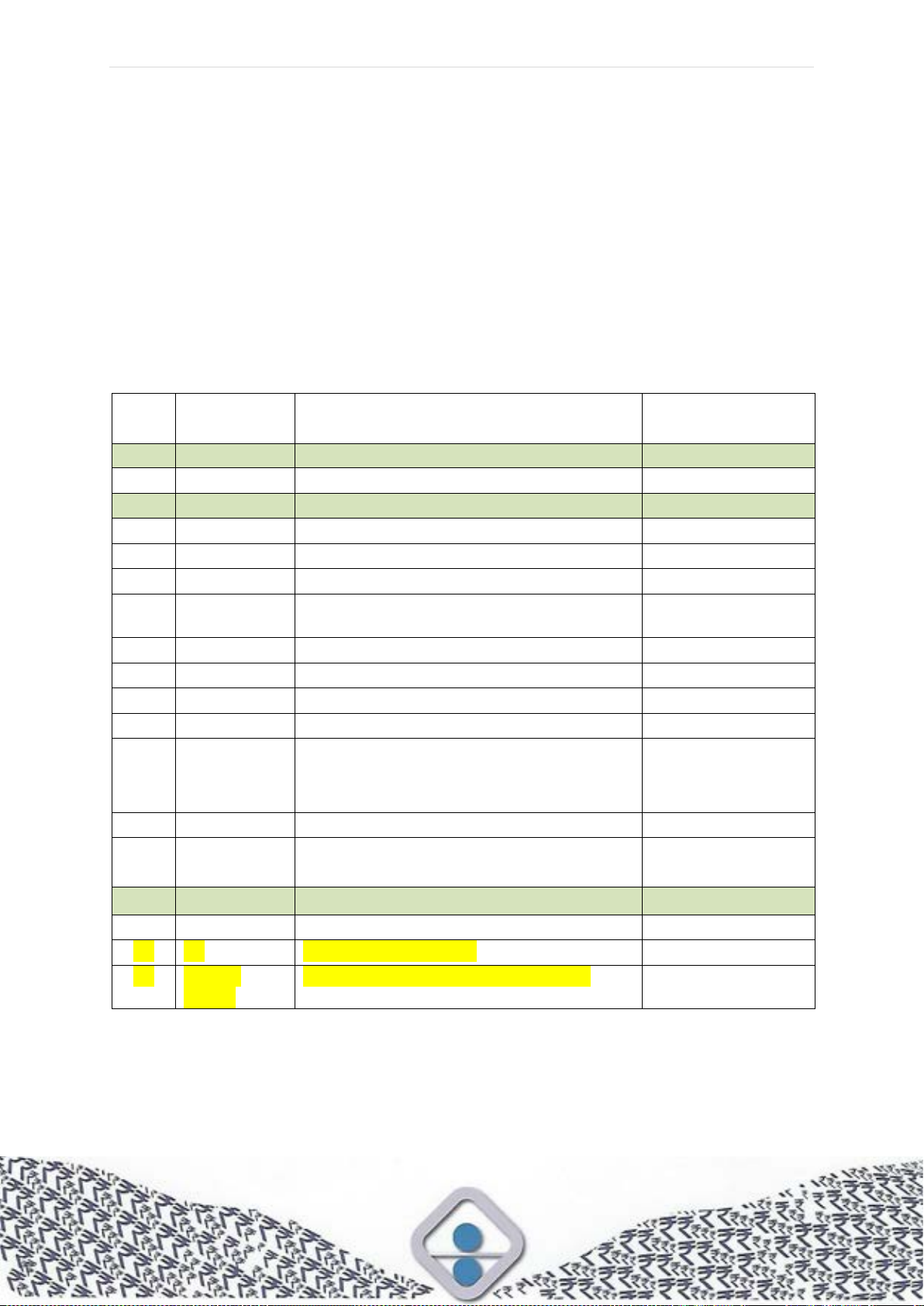
P a g e | 550
Section V: Special Conditions of Contract (SCC)
The following Special Conditions of Contract (SCC) will apply for this purchase. The
corresponding clauses of General Conditions of Contract (GCC) relating to the SCC
stipulations have also been incorporated below. These Special Conditions will modify
/ substitute / supplement the corresponding (GCC) clauses.
Whenever there is any conflict between the provision in the GCC and that in the SCC,
the provision contained in the SCC shall prevail.
(Clauses of GCC listed below include a possibility for variation in their provisions
through SCC. There could be other clauses in SCC as deemed fit)
Sl.
No.
GCC
Clause No.
Topic
SCC Provision
1
6.1, 6.3, 6.5
Performance Security
2
8.2
Packing and Marking
3
9
Inspection and Quality Control
4
11.2
Transportation of Domestic Goods
5
12.2
Insurance
6
14.1
Incidental Services
7
15
Distribution of Dispatch Documents for
clearance / Receipt of Goods
8
16.2, 16.4
Warrantee Clause
9
19.3
Option Clause
10
20.1
Price Adjustment Clause
11
21.2
Taxes and Duties
12
22, 22.1,
22.2, 22.3,
22.4, 22.6
Terms and Mode of Payments
13
24.1
Quantum of LD
14
25.1
Bank Guarantee and Insurance for
Material loaned to Contractor
15
30
Fall Clause
16
33.1
Resolution of Disputes
17
36
Escrow Arrangement
18
37.3.2,
37.3.9
Disposal / Sale of Scrap by Tender
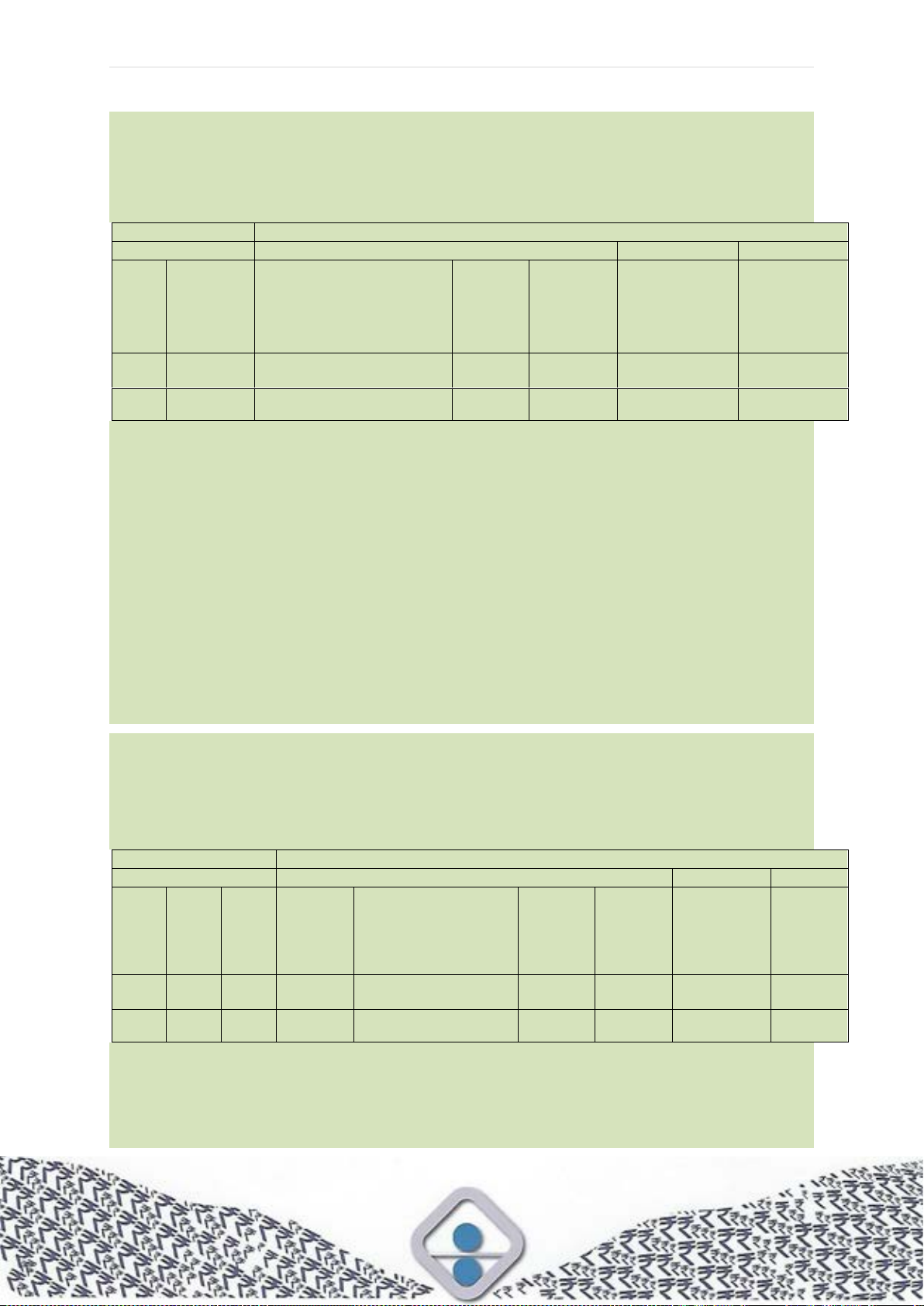
P a g e | 551
Section VI: List of Requirements
{Note for Procuring Entity: Add additional details notes regarding requirements, if not
covered elsewhere in Tender Documents}
Tender Title
Tender No.
Date
Schedule
No.
Minimum
Local
Content
(%)
Brief description of goods
and services (Related
specifications etc. are in
Section-VII)
Quantity
with
UoM
Amount of
Earnest
Money (₹)
Delivery
Requirements
Destination
State for
GST purpose
1. General Background of requirements: [inter-alia - Where would the Goods are
going to be used]
2. Preferred Transportation: [inter-alia - Transportation by Road, Rail, Sea or Air]
3. Required Delivery Schedule
4. Required Terms of Delivery: [inter-alia - Free at Destination/Delivered at Place
DAP, Destination, Ultimate Consignee]
5. Scope of Supply: [inter-alia - any Accessories, Mandatory Spares, optional
spares etc.]
6. Incidental Works/Services: [Inter-alia - Installation, Commissioning, Training, or
any other incidental requirements]
___________________________________________________________________
List of Requirements - Compliance
Note to Bidders: Fill up this Form regarding Section VI: List of Requirements
maintaining the same numbering and structure. Add additional details not covered
elsewhere in your bid in this regard.
Tender Title
Tender No.
Date
Schedule
No.
HSN/
SAC
Code
GST*
%
Local
Content
(%)
Description of Goods
and Services
Quantity
with
UoM
Delivery
offered
Destination
State for
GST
purpose
Bidder’s
GSTIN
* Mention total % and breakup into CGST, SGST, IGST, Cess etc.
We shall comply with, abide by, and accept without variation, deviation, or reservation
all requirements detailed in Section VI: List of Requirements in the Tender Document.
Signature of Authorized Signatory with Date and Seal

P a g e | 552
Section VII: Technical Specifications
Schedule-I:
…………………………..
…………………………..
Schedule-II:
…………………………..
…………………………..
Note to Bidders:
(i) Bidder’s attention is drawn to GIT clause 17 and GIT sub-clause 10.1.
(ii) The bidders shall provide the required details, information, confirmations, etc.
accordingly, failing which their tender is liable to be ignored.
(iii) Bidders shall submit copies of original test certificates for standards/specification
tests on the Goods and other relevant documents like technical data, literature,
drawings, etc. Bidders may add additional details not covered elsewhere in their
bid in this regard.
(iv) Bidders shall comply with the feature specifications (including Warranty
Obligations) and shall submit “Technical Specifications – Compliance” with their
Technical Bid as per the format prescribed in the tender.

P a g e | 553
Section VIII: Quality Control Requirements
--------
(to be inserted by the office inviting tender as applicable to specific tender)
___________________________________________________________________
Quality Control Requirements - Compliance
We shall comply with, abide by, and accept without variation, deviation, or reservation
all requirements detailed in Section VIII: Quality Control Requirements in the Tender
Document.
Signature of Authorized Signatory with Date and Seal

P a g e | 554
Section IX: Qualification Criteria
(to be inserted by the office inviting tender as applicable to specific tender)
Bidder to furnish stipulated documents is support of fulfilment of qualifying criteria.
Non-submission or incomplete submission of documents may lead to rejection of offer.

P a g e | 555
Section X: Tender Form (Covering Letter)
(To be submitted as part of Technical bid, along with supporting documents, if any)
(On Bidder’s Letter-head)
Date ………………………
To
……………………
……………………
……………………
(Complete address of BRBNMPL)
Ref: Your Tender document No. …………………. dated ...............
Sir/Madam,
Having examined the abovementioned Tender Document, we, the undersigned,
hereby submit/upload our Techno-commercial and Financial bid (Price Schedule) for
the supply of Goods and incidental Works/Services in conformity with the said Tender
Documents.
(Please tick appropriate boxes or strike out sentences/phrases not applicable to you)
1. Our Credentials
We are submitting this bid: -
on our behalf, and there are no authorized representatives involved in this
tender
Or
as authorized representative offering goods manufactured by our Principal
/ OEM (Manufacturer’s Authorization Form enclosed)
Or
as authorized dealer/distributor/stockist offering goods manufactured by
our Principal / OEM (Dealership certificate enclosed)
2. Our Eligibility and Qualifications to participate
We comply with all the eligibility criteria stipulated in this Tender Document, and the
relevant declarations are made along with documents in Section-XVIII of this bid-form.
We fully meet the qualification criteria stipulated in this Tender Document, and the
relevant details are submitted along with documents.
3. Our Bid to supply Goods/Services
We offer to supply the subject Goods/Services of requisite quality and within Delivery
Schedules in conformity with the Tender Document.

P a g e | 556
4. Prices
We hereby offer to supply the Goods/perform the Services at our lowest prices and
rates mentioned in the separately uploaded Price-Schedule. It is hereby confirmed that
the prices quoted therein by us are:
(i) based on terms of delivery and delivery schedule confirmed by us; and
(ii) Cost break-up of the quoted cost, showing inter-alia costs (including taxes and
duties thereon) of all the included incidental Works/Services considered
necessary to make the proposal self-contained and complete, has been indicated
therein, and
(iii) based on the terms and mode of payment as stipulated in the Tender Document.
We have understood that if we quote any deviation to terms and mode of
payment, our bid is liable to be rejected as non-responsive, and
(iv) have been arrived at independently, without restricting competition, any
consultation, communication, or agreement with any other bidder or competitor
relating to:
a) those prices; or
b) the intention to submit an offer; or
c) the methods or factors used to calculate the prices offered.
(v) have neither been nor shall be knowingly disclosed by us, directly or indirectly,
to any other bidder or competitor before bid opening or contract award unless
otherwise required by law.
5. Affirmation to terms and conditions of the Tender Document:
We have understood the complete terms and conditions of the Tender Document. We
accept and comply with these terms and conditions without reservations.
6. Abiding by the Bid Validity
We agree to keep our bid valid for acceptance for a period up to ……………, as
required in the Tender Document or for a subsequently extended period, if any, agreed
to by us and are aware of penalties in this regard stipulated in the Tender Document
in case we fail to do so.
7. Non-tempering of Downloaded Tender Document and Uploaded Scanned
Copies (in case of eProcurement)
We confirm that in case of downloaded Tender Document, we have not changed/
edited its contents. We realise that in case any such change is noticed at any stage
including after the award of contract, we would be liable to action under clause 44 of
the GIT.
8. A Binding Contract

P a g e | 557
We further confirm that, if our bid is accepted, all such terms and conditions shall
continue to be acceptable and applicable to the resultant contract, even though some
of these documents may not be included in the contract Documents submitted by us.
We do hereby undertake that, until a formal contract is signed or issued, this bid,
together with your written Letter of Intent (LoI), shall constitute a binding contract
between us.
9. Performance Guarantee and Signing the contract
We further confirm that, if our bid is accepted, we shall provide you with performance
security of the required amount stipulated in the Tender Document for the due
performance of the contract. We are fully aware that in the event of our failure to
deposit the required security amount and/or failure to execute the agreement, the
Procuring Entity has the right to avail any or all punitive actions laid down in this regard,
stipulated in the Tender Document.
10. Signatories
We confirm that we are duly authorized to submit this bid and make commitments on
behalf of the Bidder. Supporting documents are submitted herewith. We acknowledge
that our digital/digitized signature is valid and legally binding (in case of eProcurement).
11. Rights of the Procuring Entity to Reject bid(s)
We further understand that you are not bound to accept the lowest or any bid you may
receive against your above-referred Tender Document.
………………………..
(Signature with date)
………………………..
(Name and designation)
Duly authorized to sign bid for and on behalf of
M/s ………………………………………
[name & address of Bidder and seal of company]

P a g e | 558
Section XI: Price Schedule
A price schedule appropriate to the nature of goods / services to be attached here

P a g e | 559
Section XII: Bidder Information
Bidder shall fill in this Form following the instructions indicated below. In case a
statement does not apply to a bidder, the same should be answered with the remark
“Not Applicable".
Wherever necessary and applicable, the bidder shall enclose certified copy as
documentary proof / evidence to substantiate the corresponding statement.
In case a bidder furnishes a wrong or evasive answer against any of the under
mentioned question / issues, its bid will be liable to be ignored.
1. Bidder particulars
a) Name of the Company: ………………………………………………………………...
b) Nature of the Company (Proprietorship/Partnership/Ltd. Company/Co-op.
Society etc.): ……………………………………………………………………...........
c) Corporate Identity No. (CIN), if available: ……………………………………………
d) Registration with BRBNMPL, if applicable: …………………………………............
e) GeM Supplier ID (if registered with GeM, it is mandatory at the time of placement
of Contract) ………………………………………………………………………..........
f) Place of Registration/Principal place of business/manufacture ……………..........
g) Complete Postal Address: ……………………………………………………….........
h) Pin code/ZIP code: ……………………………………………………………….........
i) Telephone Nos. (with country/area codes): …………………………………...........
j) Fax No. (with country/area codes): ……………………………………………..........
k) Cell phone Nos. (with country/area codes): …………………………………...........
l) Contact persons/Designation: …………………………………………………..........
m) Email IDs: ………………………………………………………………………….........
If asked, submit documents to demonstrate eligibility – A self-certified copy of
registration certificate – in case of a partnership firm – Deed of Partnership; in case of
Company – Notarized and certified copy of its Registration; and in case of Society –
its Byelaws and registration certificate of the firm.
2. Taxation Details:
a) PAN number: ……………………………………………………………………………
b) Type of GST Registration as per the Act (Normal Taxpayer, Composition, Casual
Taxable Person, SEZ, etc.): …………………………………………………………...
c) GSTIN (in Consignor and Consignee States): ……………………………………….
d) Registered / Certified Works / Factory where the Goods would be mainly
manufactured and Place of Consignor for GST Purpose: …………………………..
e) Contact Names, Nos. & email IDs for GST matters (Please mention primary and
secondary contacts): …………………………………….……………………………..
We solemnly declare that our GST rating on the GST portal / Govt. official
website is NOT negative / blacklisted.
Documents to be submitted: Self-attested Copies of PAN card and GSTIN Registration.

P a g e | 560
3. Authorization of Person(s) signing the bid on behalf of the Bidder
a) Full Name: ………………………………………………..
b) Designation: ……………………………………………...
c) Signing as:
A sole proprietorship firm. The person signing the bid is the sole proprietor/
constituted attorney of the sole proprietor,
A partnership firm. The person signing the bid is duly authorised being a
partner to do so, under the partnership agreement or the general power of
attorney,
A company. The person signing the bid is the constituted attorney by a
resolution passed by the Board of Directors or in pursuance of the Authority
conferred by Memorandum of Association.
If asked, documents to be submitted: Registration Certificate / Memorandum of
Association / Partnership Agreement / Power of Attorney / Board Resolution
4. Bidder’s Authorized Representative Information
a) Name: ……………………………………………………………………….
b) Address: …………………………………………………………………….
c) Telephone/Mobile numbers: ……………………………………………...
d) Email Address: ……………………………………………………………..
……………………………
(Signature with date)
(Full name, designation & address of the person duly authorized sign on behalf of the
tenderer)
For and on behalf of ……………………………
(Name, address and stamp of the tendering firm)

P a g e | 561
Section XIII: Model Form of Bank Guarantee Bond for Bid Security
(EMD)
1. In consideration of BHARATIYA RESERVE BANK NOTE MUDRAN PRIVATE LIMITED
(hereinafter called 'BRBNMPL') having agreed to exempt ______________________
[hereinafter called 'the said Tenderer'] from the demand, under the terms and
conditions of Tender No. _______ dated _________ for _______________________
(hereinafter called 'the said Tender'), of bid security (EMD) for the due fulfilment by the
said Tenderer of the terms and conditions contained in the said Tender, on production
of a bank Guarantee for ₹ ________ (Rupees ______________________ Only), we,
_____________________________, (indicate the name of the bank) (hereinafter
referred to as 'the Bank') at the request of __________________________ [Tenderer]
do hereby undertake to pay to BRBNMPL an amount not exceeding ₹ ______ against
any claim by BRBNMPL by reason of any breach by the said Tenderer of any of the
terms or conditions contained in the said Tender.
2. We, ____________________, (indicate the name of the bank) do hereby undertake
to pay the amounts due and payable under this guarantee without any demur, merely
on a demand from BRBNMPL stating that the amount claimed is due because of
withdrawal of the tender by the said Tenderer or any material alteration to the tender
carried out by the said Tenderer after its opening or because of failure to accept the
Letter of Intent or Agreement by the said Tenderer or by reason of any other breach
by the said Tenderer of the terms and conditions contained in the said Tender. Any
such demand made on the bank shall be conclusive as regards the amount due and
payable by the Bank under this guarantee. However, our liability under this guarantee
shall be restricted to an amount not exceeding ₹ ________.
3. We undertake to pay to BRBNMPL any money so demanded notwithstanding any
dispute or disputes raised by the said Tenderer in any suit or proceeding pending
before any Court or Tribunal relating thereto our liability under this present being
absolute and unequivocal.
The payment so made by us under this bond shall be a valid discharge of our liability
for payment thereunder and the said Tenderer shall have no claim against us for
making such payment.
4 We, _____________________, (indicate the name of bank) further agree that the
guarantee herein contained shall remain in full force and effect during the period that
would be taken for the finalization of the said Tender and that it shall continue to be
enforceable till the said Tender is finally decided and orders placed on the successful
Tenderer and/or till all the dues of BRBNMPL under or by virtue of the said Tender
have been fully paid and its claims satisfied or discharged or till BRBNMPL certifies
that the terms and conditions of the said Tender have been fully and properly carried
out by the said Tenderer and accordingly, discharges this guarantee. Unless a
demand or claim under this guarantee is made on us in writing on or before the
___________ we shall be discharged from all liability under this guarantee thereafter.
5. We, ___________________, (indicate the name of bank) further agree with
BRBNMPL that BRBNMPL shall have the fullest liberty without our consent and
without affecting in any manner our obligations hereunder to vary any of the terms and
conditions of the said Tender or to extend the time of submission of the said Tender

P a g e | 562
from time to time or to postpone for any time or from time to time any of the powers
exercisable by BRBNMPL against the said Tenderer and to forbear or enforce any of
the terms and conditions relating to the said Tender and we shall not be relieved from
our liability by reason of any such variation, or extension being granted to the said
Tenderer or for any forbearance, act or omission on the part of BRBNMPL or any
indulgence by BRBNMPL to the said Tenderer or by any such matter or thing
whatsoever which under the law relating to sureties would, but for this provision, have
effect of so relieving us.
6. This guarantee will not be discharged due to the change in the constitution of the
Bank or the Tenderer/Bidder.
7. We, ____________________, (indicate the name of bank) lastly undertake not to
revoke this guarantee during its currency except with the previous consent of
BRBNMPL in writing.
Banks may insert the following “Notwithstanding” Clause as per the standard
format given below:
8. Notwithstanding anything contained herein:
a) Our liability under this bank guarantee shall not exceed ₹ __________ (Rupees
__________________ Only);
b) This bank guarantee shall be valid up to __________ ; (being the date of expiry of
the guarantee)
c) The Beneficiary’s right as well as the Bank’s liability under this guarantee shall stand
extinguished unless a written claim or demand is made under this guarantee on or
before _______________ (being the date of expiry of claim period which in no case
should be less than 1 year from the date of expiry of validity period of BG as per clause
(b) above);
d) This Bank Guarantee must be returned to the bank upon expiry of claim
period. If the Bank Guarantee in original is not received by the bank after expiry
of claim period, subject to the terms and conditions contained herein, it shall be
deemed to be automatically cancelled.
9. Dated the ____________ day of _______________ (month) _____________ (year)
For _____________________________ (indicate the name of the Bank)
Bank Guarantees issued through SFMS platform:
BG can also be issued through IFN 760 COV Bank Guarantee Advice Message /
IFN 767 COV Bank Guarantee Amendment Message to Advising Bank Branch
(Beneficiary’s Bank Branch) through SFMS platform
1. In that case, the BG issued by the issuing bank on behalf of Bidder / Supplier /
Contractor in favour of “Bharatiya Reserve Bank Note Mudran Private Limited” shall
be in paper form and also shall be made available under the “Structured Financial

P a g e | 563
Messaging System” (SFMS). (Ref: GoI, MoF letter F.No.7/112/2011-BOA dated
07.07.2012)
2. The Bidder / Supplier / Contractor shall ensure issuance of IFN 760 COV BG
Advising Message by the issuing bank through SFMS platform in order to make the
paper Bank Guarantee operative.
3. The issuing bank shall directly send the reference number of SFMS transmission
message to BRBNMPL through Speed Post / Courier.
4. The details of beneficiary for issue of BG under SFMS platform is furnished below:
Name and address
of Beneficiary
:
Bharatiya Reserve Bank Note Mudran Private Limited
[Address to be filled by BRBNMPL]
Beneficiary Bank,
Branch and Address
:
[To be filled by BRBNMPL]
IFSC Code
:
[To be filled by BRBNMPL]
SWIFT Code
:
[To be filled by BRBNMPL]
MICR Code
:
[To be filled by BRBNMPL]
5. The Bank Guarantee submitted shall also be subject to verification from the
issuing bank, hence the email ID of bank must be incorporated in the BG.

P a g e | 564
Section XIV: Manufacturer's Authorization Form
(PM/SBD/004)
To
(Name and address of BRBNMPL)
Dear Sirs,
Ref. Your Tender document No….................... dated …………
We, …………………………………………………………, who are proven and reputable
manufacturers of the tendered Goods, having factories at ……………………………..,
hereby authorise Messrs. …………………………………… (name and address of the
authorized dealer/distributor/representative) to submit a bid, process the same further
and enter into a contract with you against your requirement as contained in the above
referred tender enquiry documents for the above goods manufactured by us.
We further confirm that no supplier or firm or individual other than Messrs.
…………………………………………….… (name and address of the above authorized
dealer/distributor/representative) is authorized to submit a tender, process the same
further and enter into a contract with you against your requirement as contained in the
above referred tender enquiry documents for the above goods manufactured by us.
As principals, we also hereby extend our full warranty, as applicable as per clause 16
of the General Conditions of Contract read with modification, if any, in the Special
Conditions of Contract for the goods and services offered for supply by the above firm
against this tender document and also undertake to abide by other tender terms and
conditions.
If stipulated in the tender document, the following documents may be enclosed,
We enclose herewith, as appropriate, our ________________________ (Bye-Laws /
Registration Certificate / Memorandum of Association / Partnership Agreement /
Power of Attorney / Board Resolution)
Yours faithfully,
………………………
[signature with date, name and designation]
for and on behalf of Messrs………………………
[name & address of the manufacturers]
Note: This letter of authorisation should be on the letter head of the manufacturing firm
and should be signed by a person competent and having the power of attorney to
legally bind the manufacturer

P a g e | 565
SECTION XV: Model Form of Bank Guarantee Bond for
Performance Security
1. In consideration of BHARATIYA RESERVE BANK NOTE MUDRAN PRIVATE LIMITED
(hereinafter called 'BRBNMPL') having agreed to exempt ______________________
[hereinafter called 'the said Contractor(s)'] from the demand, under the terms and
conditions of an Agreement dated __________ made between __________________
and ____________________ for _______________________ (hereinafter called 'the
said Agreement'), of security deposit for the due fulfilment by the said Contractor(s) of
the terms and conditions contained in the said Agreement, on production of a bank
Guarantee for ₹ ______ (Rupees _________________ Only), we, _______________,
(indicate the name of the bank) (hereinafter referred to as 'the Bank') at the request of
__________________ [contractor(s)] do hereby undertake to pay to BRBNMPL an
amount not exceeding ₹ ______ against any loss or damage caused to or suffered or
would be caused to or suffered by BRBNMPL by reason of any breach by the said
Contractor(s) of any of the terms or conditions contained in the said Agreement.
2. We, ________________________, (indicate the name of the bank) do hereby
undertake to pay the amounts due and payable under this guarantee without any
demur, merely on a demand from BRBNMPL stating that the amount claimed is due
by way of loss or damage caused to or would be caused to or suffered by BRBNMPL
by reason of breach by the said contractor(s) of any of the terms or conditions
contained in the said Agreement or by reason of the contractor(s)' failure to perform
the said Agreement. Any such demand made on the bank shall be conclusive as
regards the amount due and payable by the Bank under this guarantee. However, our
liability under this guarantee shall be restricted to an amount not exceeding ₹ ______.
3. We undertake to pay to BRBNMPL any money so demanded notwithstanding any
dispute or disputes raised by the contractor(s)/supplier(s) in any suit or proceeding
pending before any Court or Tribunal relating thereto our liability under this present
being absolute and unequivocal.
The payment so made by us under this bond shall be a valid discharge of our liability
for payment thereunder and the contractor(s)/supplier(s) shall have no claim against
us for making such payment.
4. We, ______________________, (indicate the name of bank) further agree that the
guarantee herein contained shall remain in full force and effect during the period that
would be taken for the performance of the said Agreement and that it shall continue to
be enforceable till all the dues of BRBNMPL under or by virtue of the said Agreement
have been fully paid and its claims satisfied or discharged or till BRBNMPL certifies
that the terms and conditions of the said Agreement have been fully and properly
carried out by the said contractor(s) and accordingly discharges this guarantee. Unless
a demand or claim under this guarantee is made on us in writing on or before the
___________ we shall be discharged from all liability under this guarantee thereafter.
5. We, ______________________, (indicate the name of bank) further agree with
BRBNMPL that BRBNMPL shall have the fullest liberty without our consent and
without affecting in any manner our obligations hereunder to vary any of the terms and
conditions of the said Agreement or to extend time of performance by the said
contractor(s) from time to time or to postpone for any time or from time to time any of

P a g e | 566
the powers exercisable by BRBNMPL against the said Contractor(s) and to forbear or
enforce any of the terms and conditions relating to the said agreement and we shall
not be relieved from our liability by reason of any such variation, or extension being
granted to the said Contractor(s) or for any forbearance, act or omission on the part of
BRBNMPL or any indulgence by BRBNMPL to the said Contractor(s) or by any such
matter or thing whatsoever which under the law relating to sureties would, but for this
provision, have effect of so relieving us.
6. This guarantee will not be discharged due to the change in the constitution of the
Bank or the Contractor(s)/Supplier(s).
7. We, _____________________, (indicate the name of bank) lastly undertake not to
revoke this guarantee during its currency except with the previous consent of
BRBNMPL in writing.
Banks may insert the following “Notwithstanding” Clause as per the standard
format given below:
8. Notwithstanding anything contained herein:
a) Our liability under this bank guarantee shall not exceed ₹ __________ (Rupees
__________________ Only);
b) This bank guarantee shall be valid up to __________ ; (being the date of expiry of
the guarantee)
c) The Beneficiary’s right as well as the Bank’s liability under this guarantee shall stand
extinguished unless a written claim or demand is made under this guarantee on or
before _______________ (being the date of expiry of claim period which in no case
should be less than 1 year from the date of expiry of validity period of BG as per clause
(b) above);
d) This Bank Guarantee must be returned to the bank upon expiry of claim
period. If the Bank Guarantee in original is not received by the bank after expiry
of claim period, subject to the terms and conditions contained herein, it shall be
deemed to be automatically cancelled.
9. Dated the ____________ day of _______________ (month) _____________ (year)
For _____________________________ (indicate the name of the Bank)
Bank Guarantees issued through SFMS platform:
BG can also be issued through IFN 760 COV Bank Guarantee Advice Message / IFN 767
COV Bank Guarantee Amendment Message to Advising Bank Branch (Beneficiary’s Bank
Branch) through SFMS platform
1. In that case, the BG issued by the issuing bank on behalf of Bidder / Supplier / Contractor
in favour of “Bharatiya Reserve Bank Note Mudran Private Limited” shall be in paper form
and also shall be made available under the “Structured Financial Messaging System”
(SFMS). (Ref: GoI, MoF letter F.No.7/112/2011-BOA dated 07.07.2012)

P a g e | 567
2. The Bidder / Supplier / Contractor shall ensure issuance of IFN 760 COV BG Advising
Message by the issuing bank through SFMS platform in order to make the paper Bank
Guarantee operative.
3. The issuing bank shall directly send the reference number of SFMS transmission
message to BRBNMPL through Speed Post / Courier.
4. The details of beneficiary for issue of BG under SFMS platform is furnished below:
Name and address of
Beneficiary
:
Bharatiya Reserve Bank Note Mudran Private Limited
[Address to be filled by BRBNMPL]
Beneficiary Bank,
Branch and Address
:
[To be filled by BRBNMPL]
IFSC Code
:
[To be filled by BRBNMPL]
SWIFT Code
:
[To be filled by BRBNMPL]
MICR Code
:
[To be filled by BRBNMPL]
5. The Bank Guarantee submitted shall also be subject to verification from the issuing bank,
hence the email ID of bank must be incorporated in the BG.

P a g e | 568
Section XVI: Contract Form
(PM/SBD/006)
………………………………………
(Address of BRBNMPL's office issuing the contract)
Contract No. ..................... dated …………………….
This is in continuation to this office' Notification of Award No. ……….. dated ………….
1. Name & address of the Supplier: ……………………………………………….........
2. BRBNMPL's Tender document No. ………….. dated ………….. and subsequent
Amendment No. …………….. dated …………. (if any), issued by BRBNMPL.
3. Supplier's Tender No. ………….. dated ………… and subsequent
communication(s) No…………………… dated ………….... (If any), exchanged
between the supplier and BRBNMPL in connection with this tender
4. In addition to this Contract Form, the following documents etc., which are
included in the documents mentioned under paragraphs 2 and 3 above, shall
also be deemed to form and be read and construed as part of this contract:
i. General Conditions of Contract;
ii. Special Conditions of Contract;
iii. List of Requirements;
iv. Technical Specifications;
v. Quality Control Requirements;
vi. Tender Form furnished by the supplier;
vii. Price Schedule(s) furnished by the supplier in its tender;
viii. Manufacturers' Authorisation Form (if applicable for this tender);
ix. BRBNMPL's Notification of Award
Note: The words and expressions used in this contract shall have the same
meanings as are respectively assigned to them in the conditions of contract
referred to above. Further, the definitions and abbreviations incorporated under
Section-V - 'General Conditions of Contract' of BRBNMPL's Tender document
shall also apply to this contract.
5. Some terms, conditions, stipulations etc. out of the above-referred documents
are reproduced below for ready reference:
(i) Brief particulars of the goods and services which shall be supplied /
provided by the supplier are as under:
Schedule
No.
Brief description of goods
/ services with HSN /
SAC Code
Accounting
unit
Quantity
to be
supplied
Unit
Price
(In ₹)
GST
@ _%
Total
price
Any other additional services (if applicable) and cost thereof:
Total value (in figure) …………. (In words) …………………………………………..

P a g e | 569
(ii) Delivery schedule
(iii) Details of Performance Security
(iv) Quality Control
(a) Mode(s), stage(s) and place(s) of conducting inspections and tests.
(b) Designation and address of BRBNMPL's inspecting officer
(v) Destination and despatch instructions
(vi) Consignee, including port consignee, if any
(vii) Warranty clause
(viii) Payment terms
(ix) Paying authority
…………………………………………
(Signature, name and address of BRBNMPL's authorized official)
For and on behalf of ………………...
Received and accepted this contract
…………………………………………
(Signature, name and address of the supplier's executive duly authorized to sign on
behalf of the supplier)
For and on behalf of ………………..
(Name and address of the supplier)
…………………………………………
(Seal of the supplier)
Date :
Place :
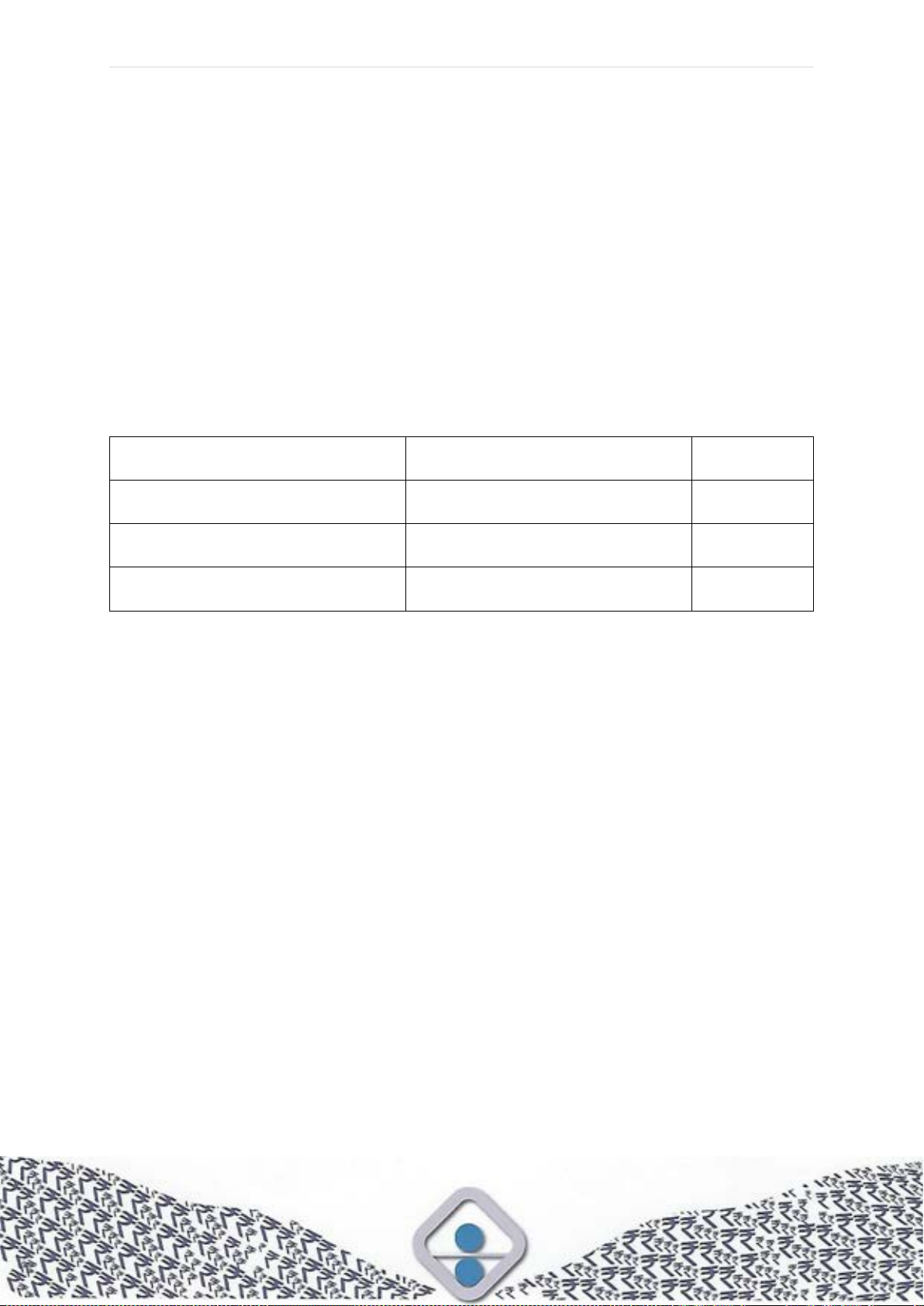
P a g e | 570
Section XVII: Letter of Authority for attending a Bid Opening
(Refer to clause 24.2 of GIT)
(PM/SBD/007)
The General Manager
………………………..
[Unit Address]
Subject: Authorization for attending bid opening on _______________ (date) in the
tender of _______________ against tender enquiry _______________.
Following persons are hereby authorized to attend the bid opening for the tender
mentioned above on behalf of __________________________________ (Bidder) in
order of preference given below:
Order of Preference
Name
Specimen
Signatures
I.
II.
Alternate Representative
Note:
1. Maximum of two representatives will be permitted to attend bid opening. In cases
where it is restricted to one, first preference will be allowed. Alternate
representative will be permitted when regular representatives are not able to
attend.
2. Permission for entry to the hall where bids are opened may be refused in case
authorization as prescribed above is not produced.
Signatures of bidder
with date and seal
or
Officer authorized to
sign the bid documents
on behalf of the bidder

P a g e | 571
Section XVIII: Eligibility Declarations
(To be submitted as part of Technical bid along with supporting documents, if any)
Tender Enquiry No. _____________________________ Date _______________
Bidder’s Name_________________________
[Address and Contact Details]
Bidder’s Reference No.___________________________ Date _______________
Note: The list below is indicative only. You may attach more documents as required to
confirm your eligibility criteria.
(Please tick appropriate boxes or cross out any declaration not applicable to the Bidder)
We hereby confirm that we comply with the stipulated eligibility criteria and declare as
under and shall provide evidence of our continued eligibility to BRBNMPL as may be
requested:
1. Legal Entity of Bidder: ……………………………………………………………….
2. OEM/Authorized representative/Dealership Status: ……………………………
3. We are,
a Joint Venture
not a Joint Venture
4. We solemnly declare that we (including our affiliates or subsidiaries or
constituents):
are not insolvent, in receivership, bankrupt or being wound up, not have our
affairs administered by a court or a judicial officer, not have our business
activities suspended and are not the subject of legal proceedings for any of
these reasons;
(including our Contractors/subcontractors for any part of the contract):
Do not stand declared ineligible/blacklisted/banned/debarred by BRBNMPL
or its subsidiaries or by any Ministry/Department of GoI from participating
in its Tender Processes or by any Government Agency anywhere in the
world, for participating in their tenders, under that country’s laws or official
regulations; and/or
Are not convicted (within three years preceding the last date of bid
submission) or stand declared ineligible / suspended / blacklisted / banned
/ debarred by appropriate agencies of Government of India from
participation in Tender Processes of all of its entities, for offences
mentioned in Tender Document in this regard. We have neither changed
our name nor created a new “Allied Firm”, consequent to the above
disqualifications.

P a g e | 572
Do not have any association (as bidder / partner / Director / employee in
any capacity) with such retired officials or near relations of such officials of
BRBNMPL.
We have no conflict of interest, which substantially affects fair competition.
The prices quoted are competitive and without adopting any unfair/
unethical/anti-competitive means. No attempt has been made or shall be
made by us to induce any other bidder to submit or not to submit an offer
to restrict competition.
5. Restrictions on procurement from bidders from a country sharing land
border with India Order (Public Procurement No. 1) issued vide F.No.6/18/2019
-PPD dated 23
rd
July 2020 (and its amendments if any) by Department of
Expenditure, Ministry of Finance
We certify as under:
“We have read the clause regarding restrictions on procurement from a bidder of
a country which shares a land border with India and on sub-contracting to
contractors from such countries, and solemnly certify that we fulfil all
requirements in this regard and are eligible to be considered. We certify that:
we are not from such a country or, if from such a country, we are registered
with the Competent Authority (copy enclosed); and
we shall not subcontract any work to a contractor from such countries
unless such contractor is registered with the Competent Authority.
6. MSMEs Status
Having read and understood the Public Procurement Policy for Micro and Small
Enterprises (MSEs) Order, 2012 (as amended and revised till date), and
solemnly declare the following:
a) We are a,
Micro Enterprise
Small Enterprise
Medium Enterprise
Others
b) We are a MSE and we are classified as,
Manufacturer
Service Provider
Trader / dealer / reseller / distributor / authorized agent
Not applicable
c) We are a MSE and submit herewith Udhyam Registration Certificate as
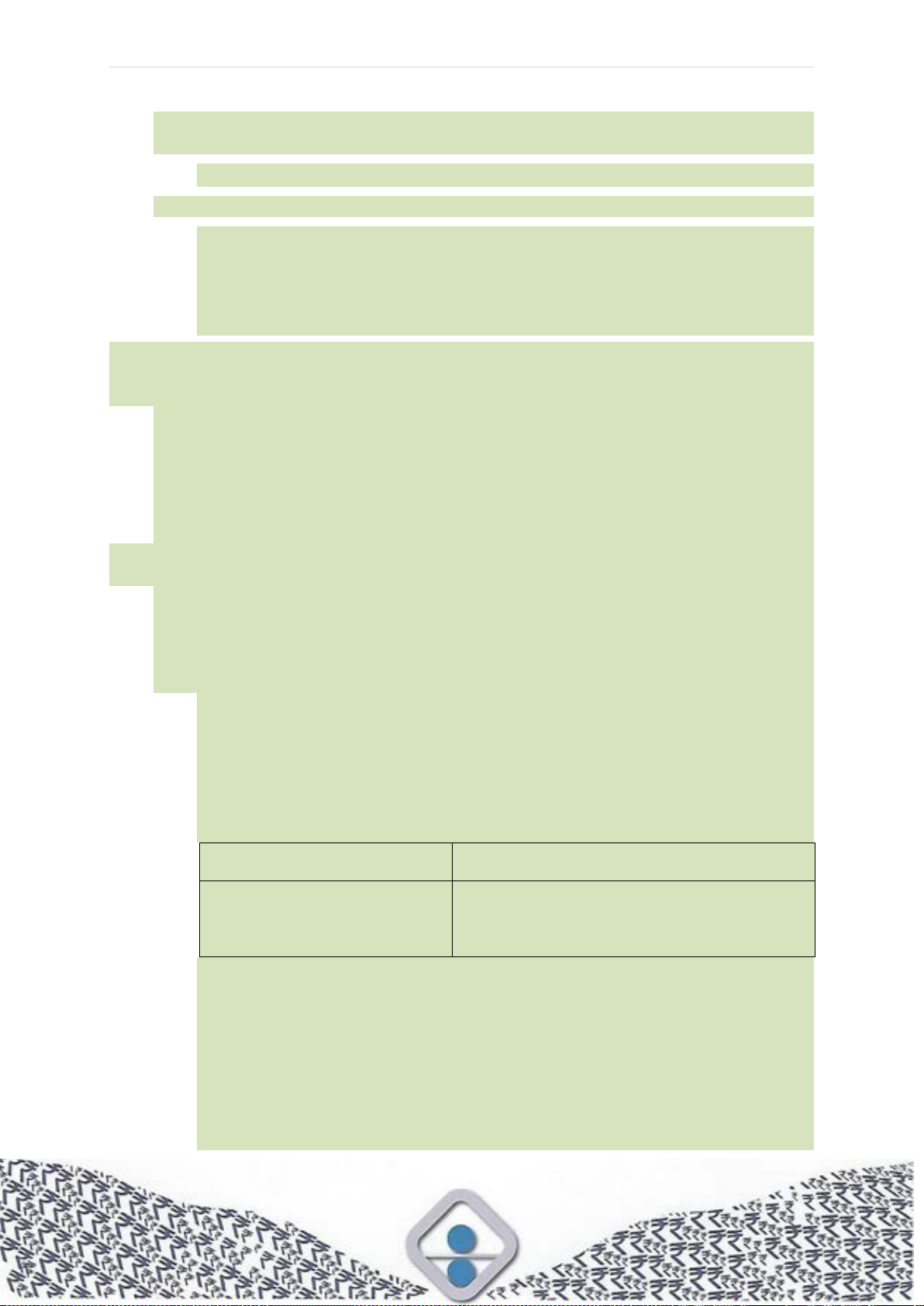
P a g e | 573
proof of our being MSE registered on the Udhyam Registration Portal. The
certificate is the latest up to the deadline for submission of the bid.
Udhyam Registration No. ………………………………………………….
d) We are a MSE and our Proprietor / Partner belongs to,
SC (if applicable, specify _____% of shares)
ST (if applicable, specify _____% of shares)
Women
Not applicable
7. Start-up Status
We confirm that as per the definition of the Department of Promotion of Industrial
and Internal Trade – DPIIT, we are
a Start-up
not a Start-up
8. Make in India Status
Having read and understood the Public Procurement (Preference to Make in
India) Order, 2017 (as amended and revised till date) and related notifications
from the relevant Nodal Ministry/Department, and solemnly declare the following:
a) Self-Certification for category of supplier:
(Provide a certificate from statutory auditors / cost accountant in case of
Tenders above ₹10 Crore for Class-I or Class-II Local Suppliers).
Details of local content and location(s) at which value addition is made are
as follows:
Local content %age
Location(s) of value addition
Therefore, we certify that we qualify for the following category of the
supplier:
Class-I Local Supplier
Class-II Local Supplier
Non-Local Supplier

P a g e | 574
b) We also declare that
There is no country whose bidders have been notified as ineligible on
reciprocal basis under this order for the offered Goods, or
We do not belong to any Country whose bidders are notified as
ineligible on a reciprocal basis under this order for the offered Goods.
9. Penalties for false or misleading declarations: We hereby confirm that the
particulars given above are factually correct and nothing is concealed and also
undertake to advise any future changes to the above details. We understand that
any wrong or misleading self-declaration by us would be violation of Code of
Ethics and would attract penalties as mentioned in this tender document,
including debarment.
……………………..
(Signature with date)
………………………..
(Name and designation)
Duly authorized to sign bid for and on behalf of
……………………………………….
……………………………………….
[name & address of Bidder and seal of company]
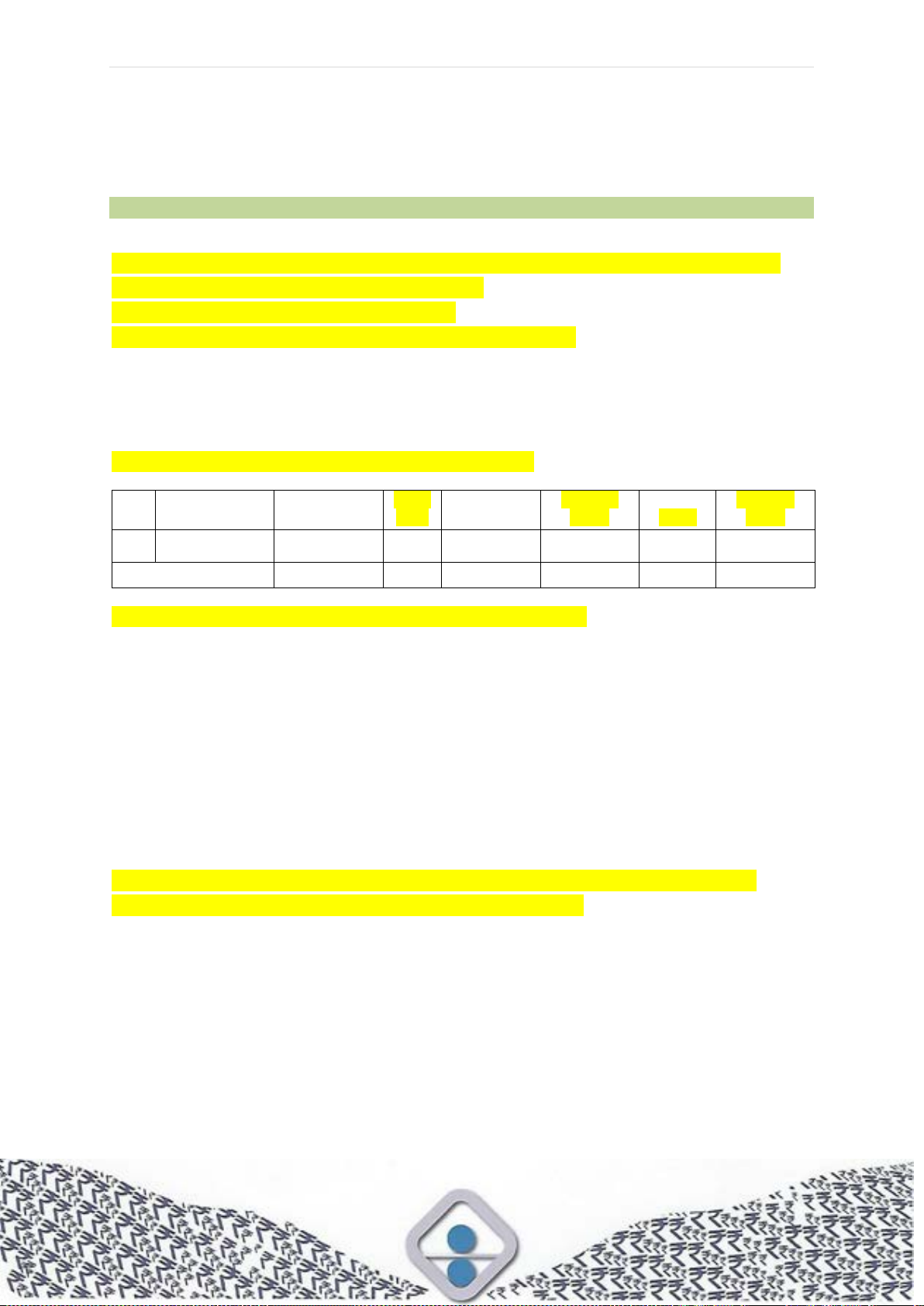
P a g e | 575
Section XIX: Proforma of Bills for Payment
(PM/SBD/009)
(Refer Clause 22.6 of GCC)
(Procuring units may denote mandatory fields as per their requirement)
[Name and Address of the Firm]
PAN :…………………………... CIN : XXXXXXXXXXX (as per Company law)
[Regd. Office address] (as per Company law)
[Address of place of business under GST]
GSTIN of the respective place of business:………………
Bill No………………………………………. Dated………………
Purchase order No…………………….….. Dated………………
[Name and address of the consignee]
Place of supply: name of the city, name of the state
Sl.
No.
Authority for
purchase
Description
of Stores
HSN/
SAC
Number or
quantity
Taxable
value
Rate/
Price
Taxable
value
Total
1. Applicable CGST, SGST, IGST and UTGST Amount
2. Freight (if applicable)
3. Packing and Forwarding charges (if applicable)
4. Others (Please specify)
5. PVC Amount (with Calculation sheet enclosed)
6. (-) deduction/Discount
7. Net amount payable (in words)
Dispatch detail RR No./other proof of dispatch……… Dated………. (enclosed)
Inspection Certificate No……………………………… Dated………. (enclosed)
Income Tax Clearance Certificate No………….......... Dated………. (enclosed)
GST Registration certificate…………………………………………….. (enclosed)
(If it is already being collected, the same may be ignored)
Place and Date…………………………………………………..
Received ₹……….. (Rupees)………………………………………….
I hereby certify that the payment being claimed is strictly in terms of the contract and
all the obligations on the part of the supplier for claiming that payment has been fulfilled
as required under the contract.
Signature and Stamp of Supplier

P a g e | 576
Section XX: Pre-Contract Integrity Pact
(To be executed on plain paper and applicable for all tenders of value above ₹1
crore)
(Shall be as per the format uploaded in Company’s website)

P a g e | 577
Other Annexures to be attached:
Annexure 1:
Shall be as per ‘Annexure 35: Explanatory Note on Make in India Order 2017; MSEs
Order 2012 and Start-ups’ of this manual (For information of Bidder)
Annexure 2:
Shall be as per ‘Annexure 36: Restrictions on Public Procurement from countries
sharing land border with India’ of this manual (For information of Bidder)
Annexure 3:
Shall be as per ‘Annexure 4: Bid Security Declaration’ of this manual (To be filled and
submitted as part of Technical bid)
Annexure 4:
Shall be as per ‘Annexure 14: Template for assessment of capability of Bidder’ of this
manual (To be filled and submitted as part of Technical bid, if asked)
Annexure 5:
Shall be as per ‘Annexure 15: Performance Statement’ of this manual (To be filled and
submitted as part of Technical bid)
Annexure 6:
Shall be as per ‘Annexure 10: Statement of Financial Standing’ of this manual (To be
filled and submitted as part of Technical bid)
Annexure 7:
Shall be as per ‘Annexure 16: NEFT Mandate Form’ of this manual (To be filled and
submitted as part of Technical bid)
Annexure 8:
Shall be as per ‘Annexure 5: Terms and Conditions - Compliance’ of this manual (To
be filled and submitted as part of Technical bid in e-Procurements)
Annexure 9:
Shall be as per ‘Annexure 20: Check-List for Bidders’ of this manual (To be filled and
submitted as part of Technical bid)
Any other Annexures as per requirement